We next traveled overland, crossing the border into Tanzania. All our visas were complete and we had a smooth border crossing. Lunch in Ashura at a beautiful coffee plantation, then we continued our travels to Burunge Tented Camp near Tarangire National Park. The camp has an elevated dining deck and infinity pool overlooking a small waterhole. Tarangire National Park is considered to have the largest concentration of breeding birds in the world! This location provided great bird photography right off the dining deck.
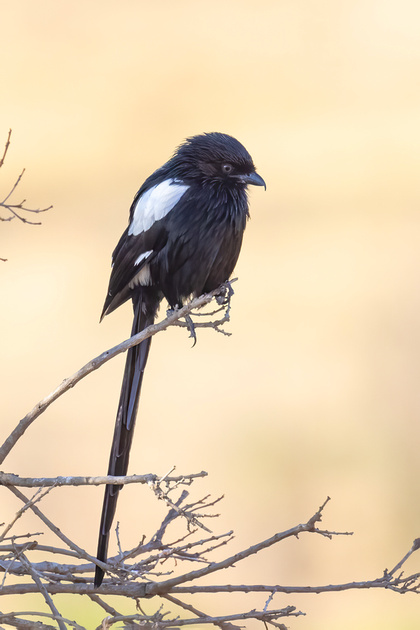
Magpie Shrike
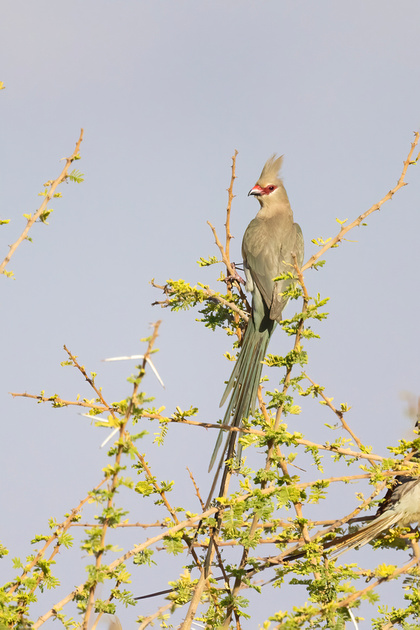
Red-Faced Mousebird

Tawny Eagle
I do not normally have allergies, but I had trouble breathing and slept poorly our first night at this camp. Becky also slept poorly. Through the tent screen she watched an elephant browse a tree within feet of our bed. I slept through it. The night guards confirmed it was an elephant who visited us and mentioned that the tent next to our also had nocturnal prowlers, six lions. After that we slept with out tent securely buttoned up.
African Savanna Elephant
The next morning we embarked on an all day game drive within Tarangire National Park. It was a long, dusty, rough drive to a swampy area with abundant wildlife. We observed vast numbers of African buffalo, and six lions, including one well up in a tree.
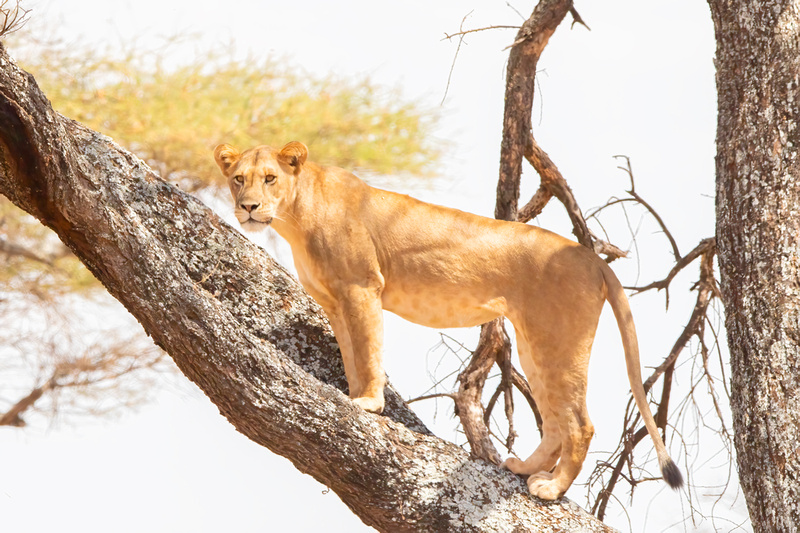
Arboreal Lioness
Elephants were numerous and close, including one whom had been lost from the herd and walked the shoreline trumpeting loudly. We observed a few new species here including, Klipspringer, martial eagle, long-crested eagle, black-faced sandgrouse, Verreaux's eagle-owl, wattled lapwing, red-billed quella, cut-throat, purple grenadier, ashy starling, D'Arnaud's barbet, speckled mousebird, and Von der Decken's hornbill. My allergies got worse and I resorted to wearing a buff to reduce dust inhalation. The group took a short drive to Lake Burungee to view vast concentrations of flamingo. I stayed at the elevated deck and photographed the numerous birds hanging out near the waterhole. I got some nice shots of the very unattractive marabou stork and had six tawny eagles in sight at one time.
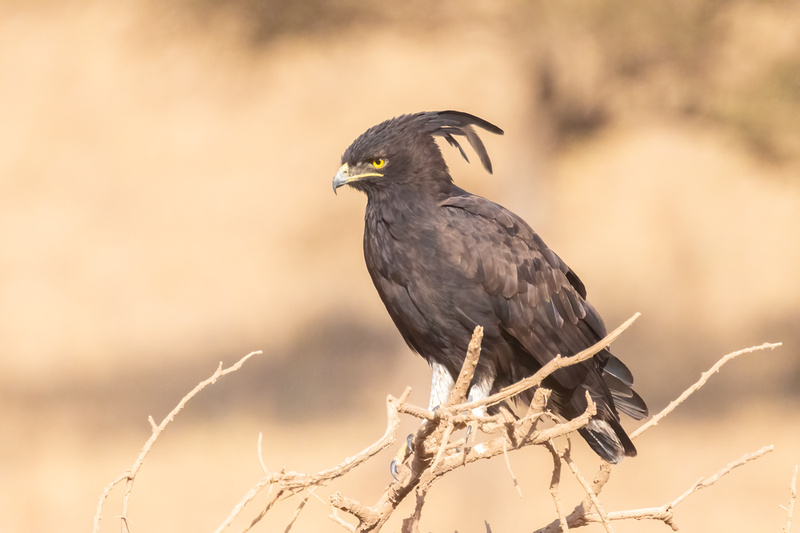
Long-Crested Eagle
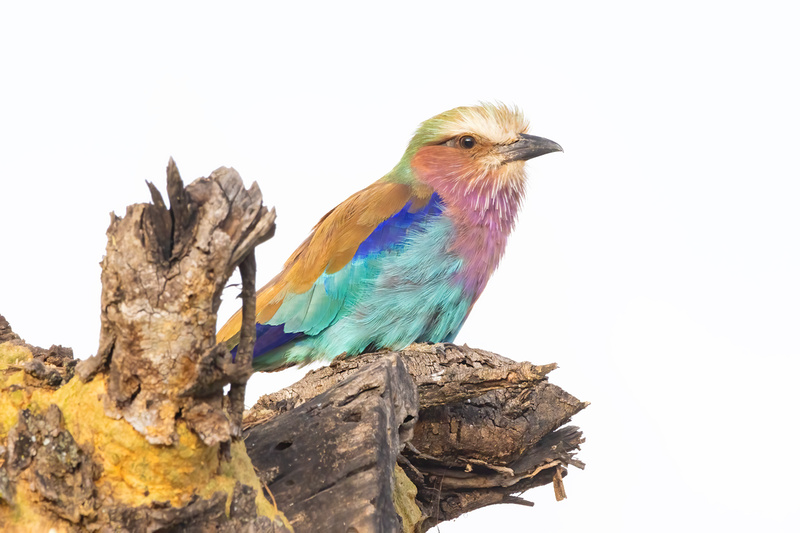
Lilac-Breasted Roller
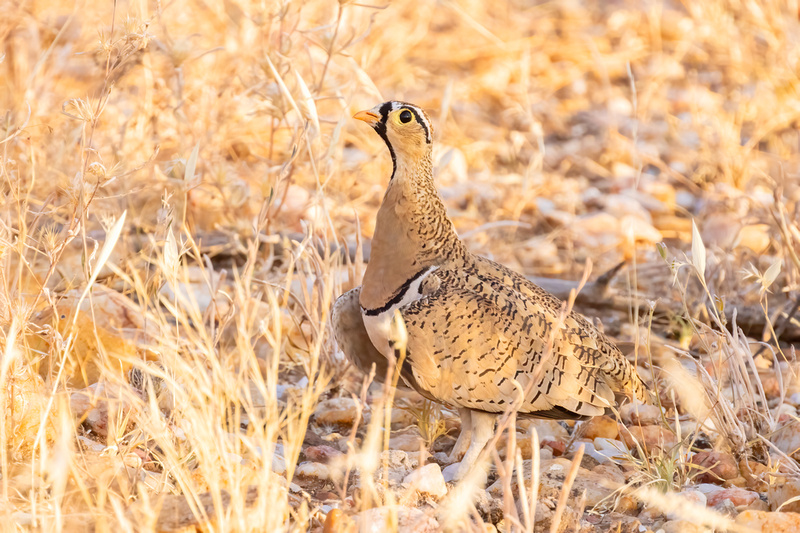
Black-Faced Sandgrouse
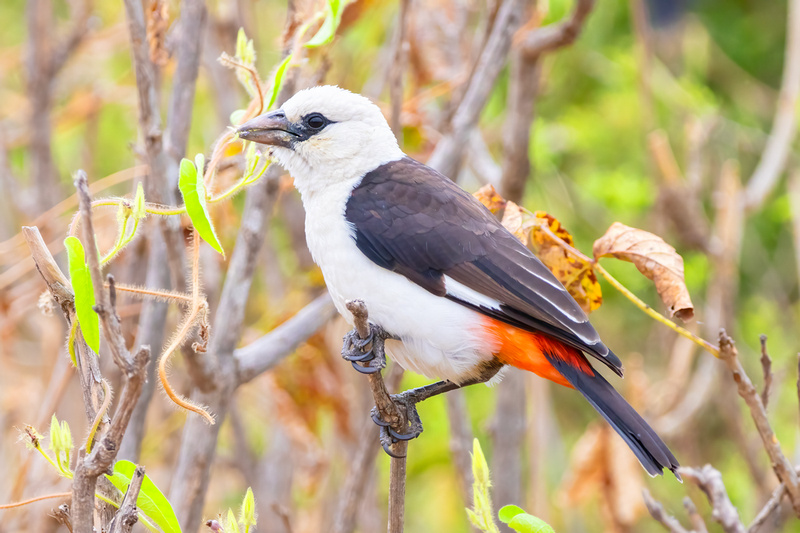
White-Headed Buffalo Weaver
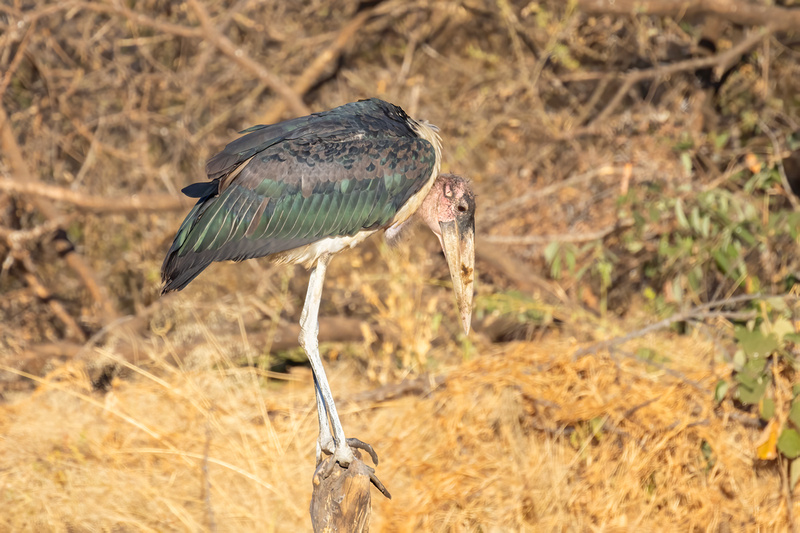
Marabou Stork -Primarily a Scavenger and Labeled as One of the African Ugly Five
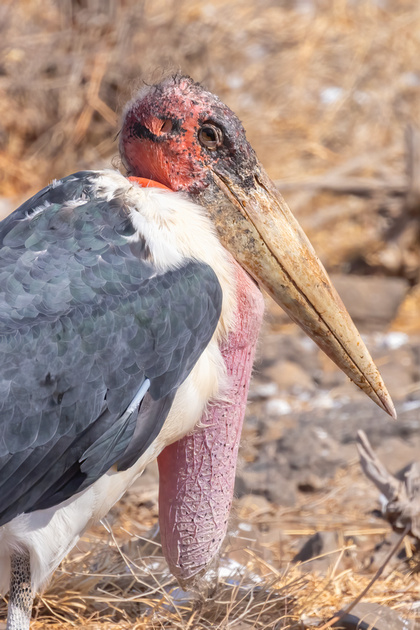
Marabou Stork - Note the Enlarged Gular Sac
The next morning as we enjoyed a sunrise breakfast we were visited by eight elephants as they made use of the waterhole.
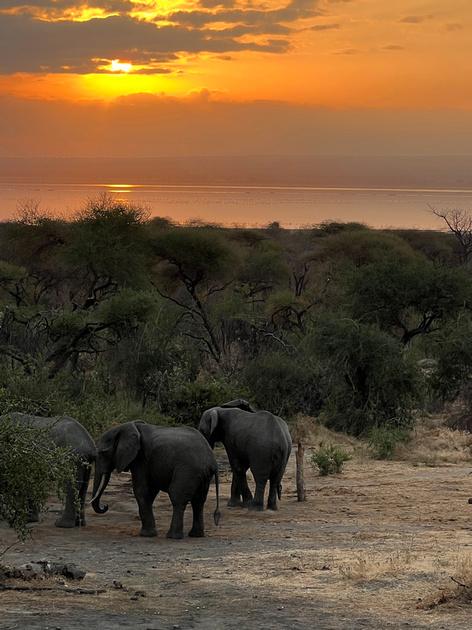
Breakfast Elephants
After breakfast we were on the move again and headed to Tloma Lodge near Karatu. This lodge was beautiful with large, individual bungalows within a shaded coffee plantation. This camp was at the highest elevation of any we visited. Each bungalow was equipped with a gas fireplace. We had some much needed downtime during the afternoon which allowed me to catch up on my photo downloads and backups.
The next morning we headed for Ngorongoro Crater. As we gained elevation we entered a dense, lush rainforest type vegetation where we encountered African savanna elephant and African buffalo at very close range.
We came upon two male giraffe posturing and shuffling. They suddenly began to beat each other by swinging their necks and smashing their heads into their opponent. Then they would take another break to posture and juke before repeating their attacks. Remarkable behavior that I never expected to observe. Very cool. They were still at it with no clear winner when we departed. However, using your head as weapon has some cosmetic consequences.

Masai Giraffe Dominance fight
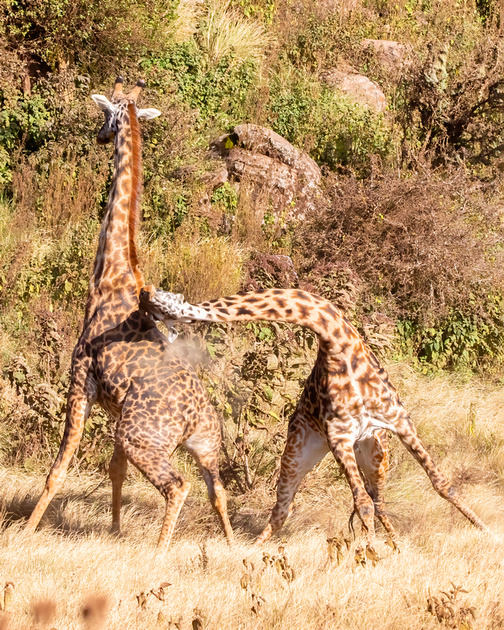
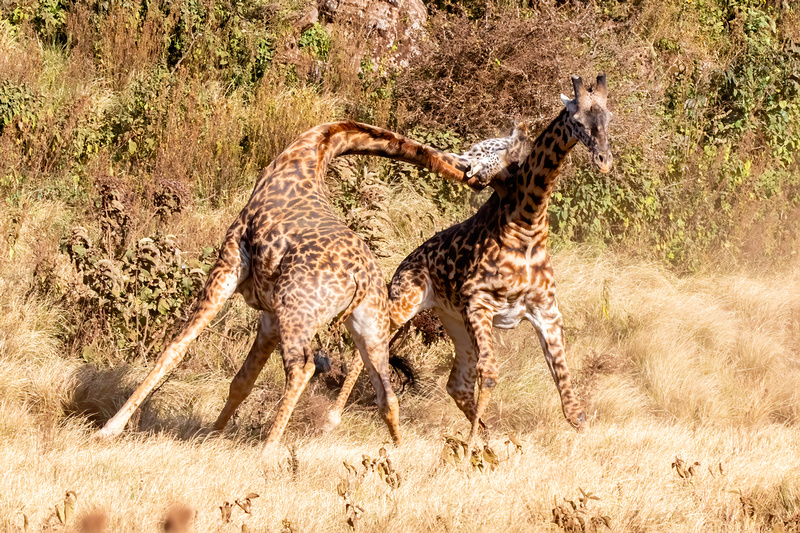
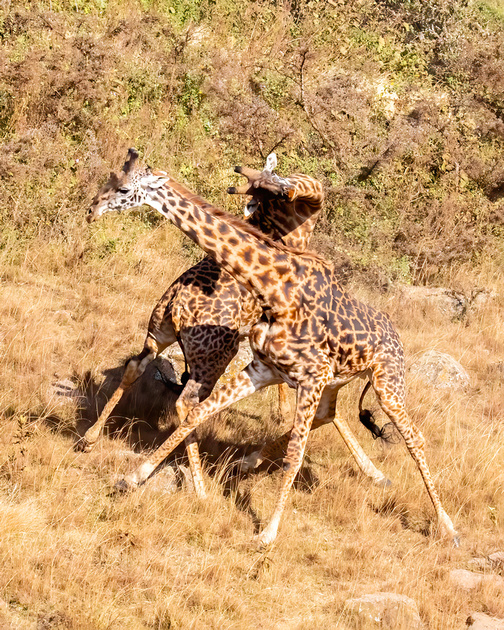
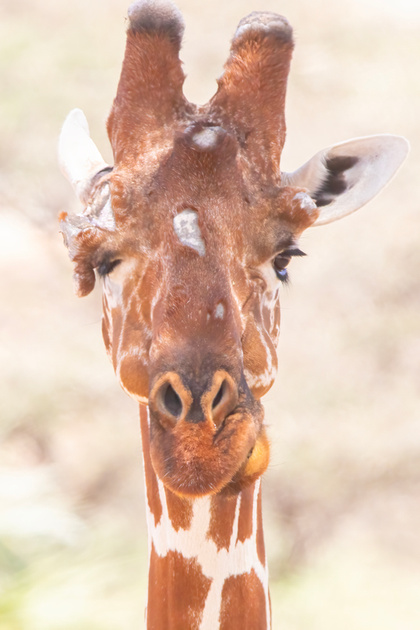
There are Cosmetic Consequences to Using Your Head as Your Principal Weapon
We made a brief stop at the crater overlook. The crater was formed when a volcano collapsed resulting in a 100-square mile relatively flat plain about 2,000 feet below the crater rim. An estimated 25,000 large animals live within the crater and this abundance supports five lion prides.

Ngorongoro Crater
After descending into the crater on a very steep brick road, we entered the crater floor. The diversity and abundance of animals was amazing, quite unlike anything we had seen previously. The crater floor is flat and generally lacks tall vegetation, so visibility is excellent. We came upon a pride of lions snoozing next to the remains of a recent buffalo kill. One woke up and cruised on over to inspect the safari trucks. Nice close looks.
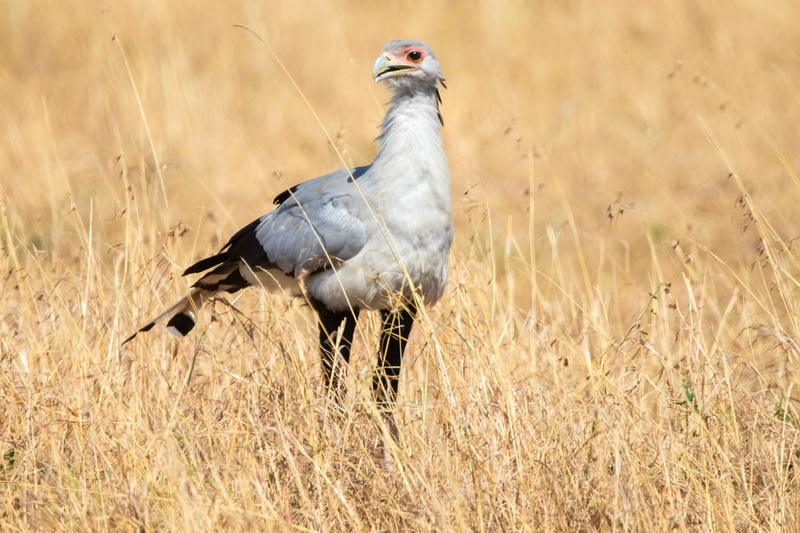
Secretarybird
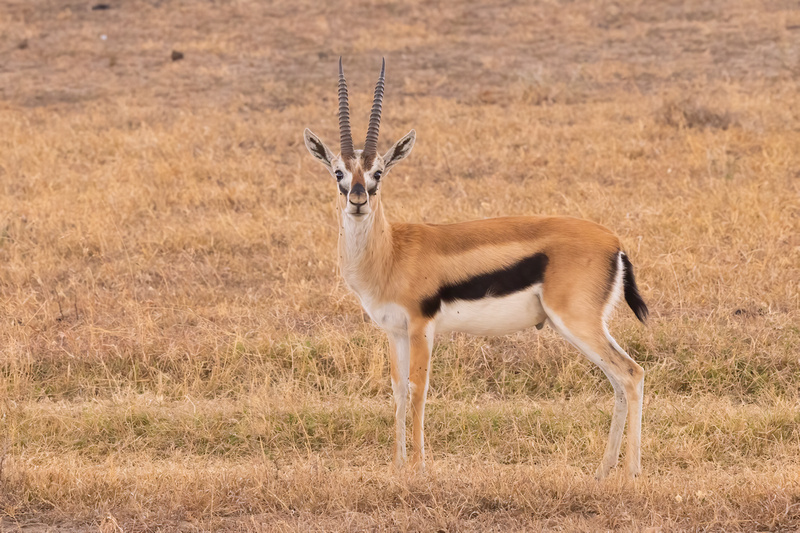
Thompson's Gazelle
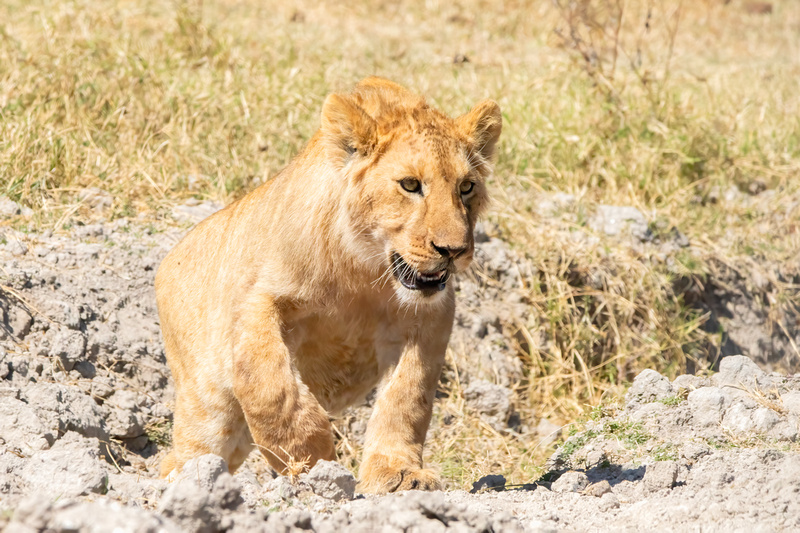
Young Lion Checking out the Safari Truck
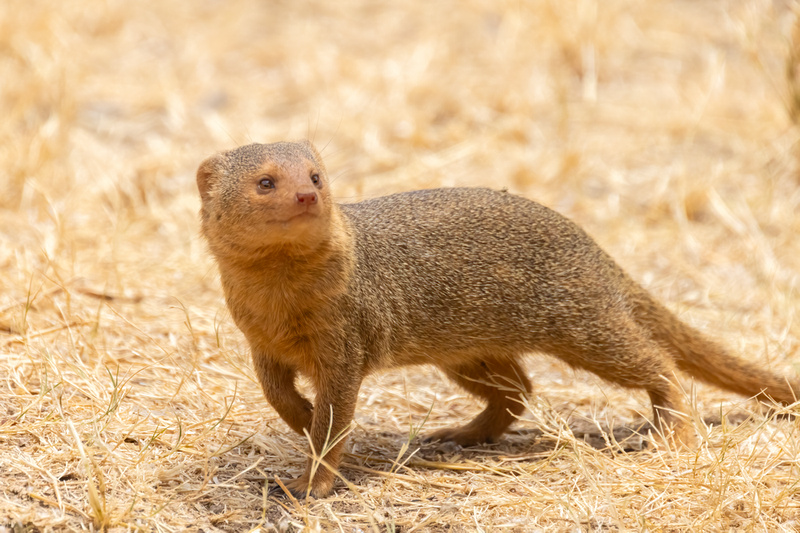
Dwarf Mongoose
Around the next bend we found another lion pride feeding on a very recent zebra kill. Once the large males were done feeding the females moved in and fed. Hyenas and jackals circled at a distance waiting for their opportunity. Off in the distance we saw great clouds of dust as another hunting pride of lions produced a mass stampede of wildebeest and zebra. It was unclear if their hunt was successful. About thirty minutes later we encountered yet another pride of lions on a kill. Thirty-two lions in a morning. When we stopped for lunch at a swampy area we saw fifty of the striking gray-crowned crane in a single group.
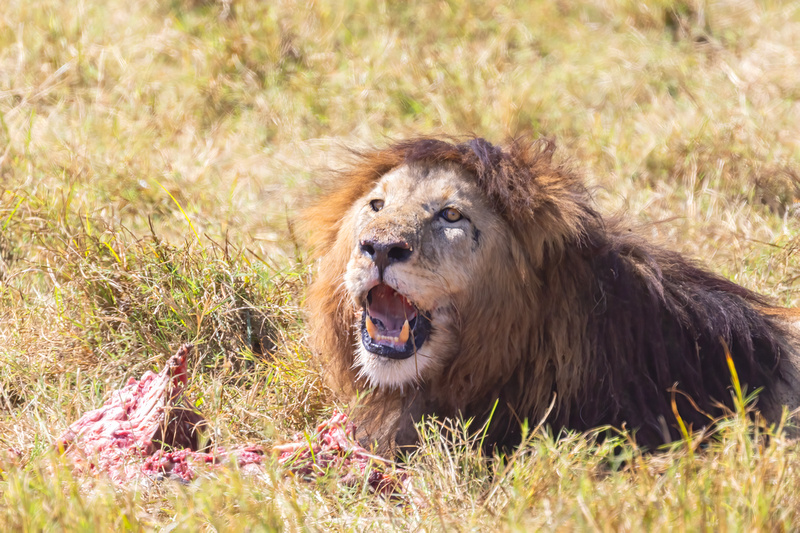
Male lion on a Recent Zebra Kill.
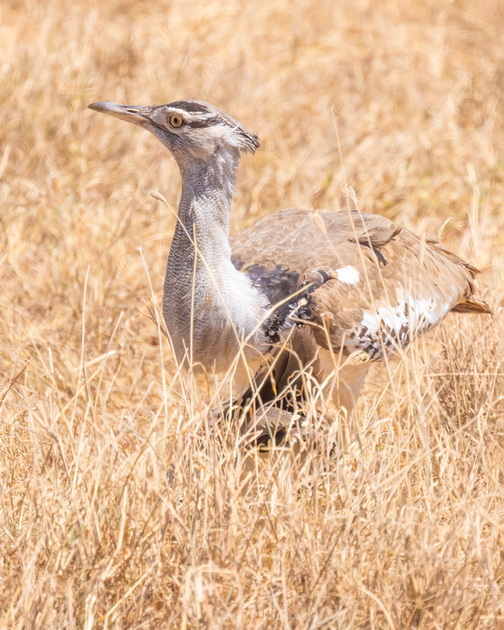
Kori Bustard - Largest African Bird Capable of Flight with Reported Weights up to 40 Pounds
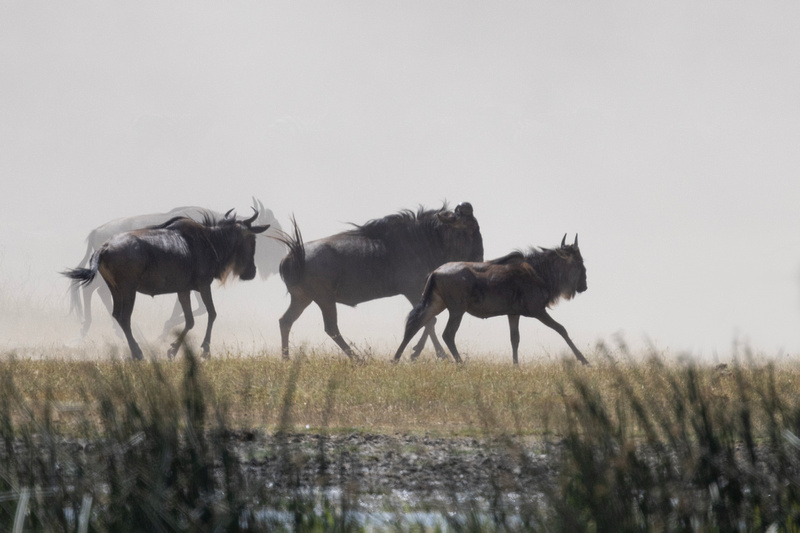
Wildebeest Stampede
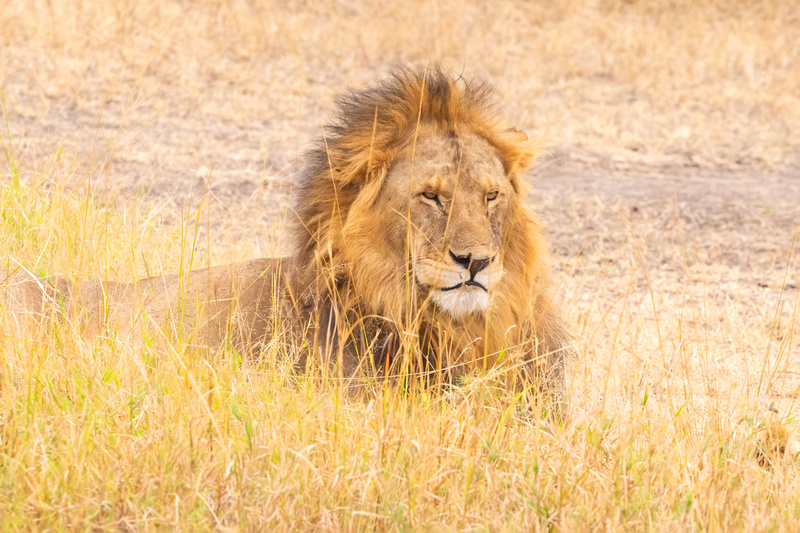
Large Male Lion at our Third Pride of the Day.
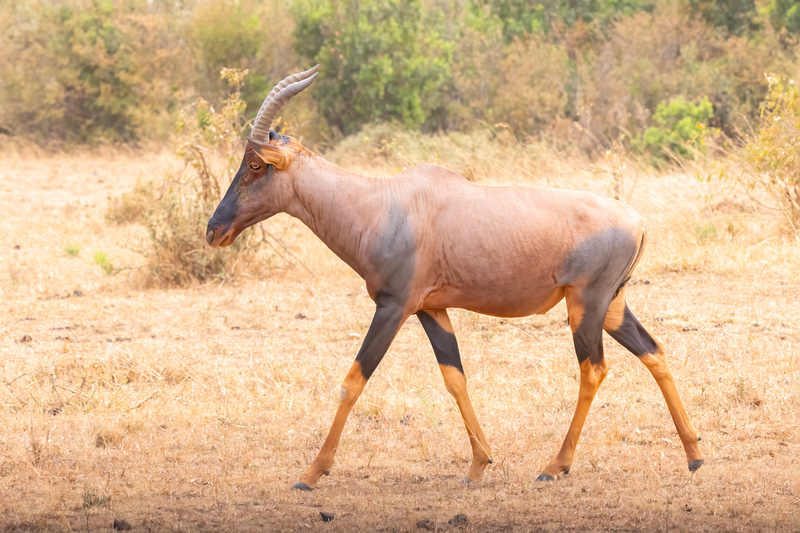
Topi - Blue Jean Antelope
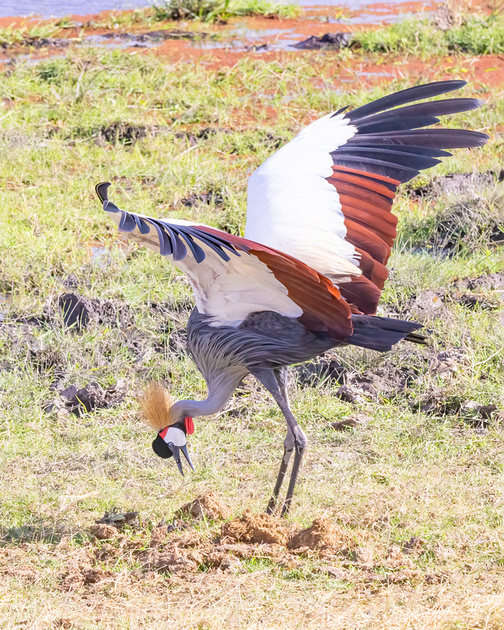
Displaying Gray-Crowned Crane
The next morning we headed to Lake Eyasi, home of the Hadzabe (Bushman). The visit was probably worth a blog on its own. Very interesting and friendly people. They live a very primitive, hunter/gatherer existence and communicate in an odd clicking language which our Datoga guide was able to translate. The bushman trade with the nearby Datoga tribe who are skilled blacksmiths and provide the Bushman with arrowheads fashioned from large nails. We followed our Datoga guide to the Bushman's current camp and in exchange for a handful of finely crafted arrowheads we were welcomed to the camp. The entire tribe sheltered inside a single hollow baobab tree. The wore a mixture of animal hides and modern clothing.
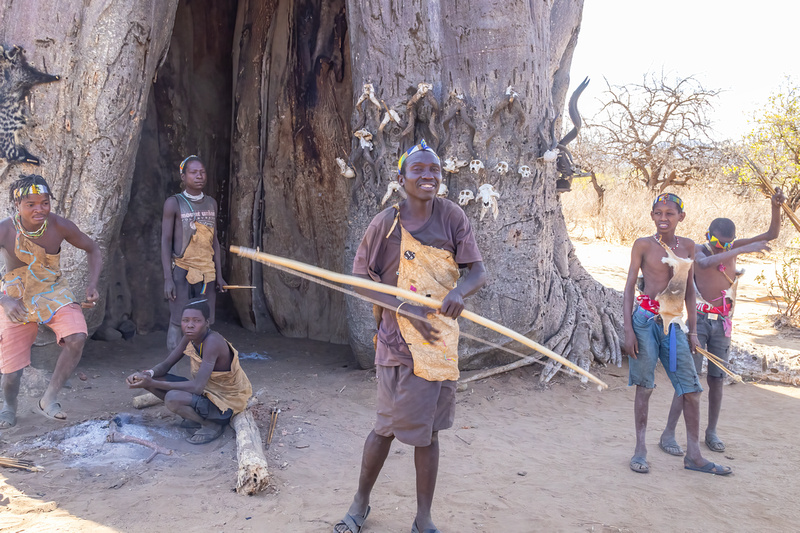
Hadzabe Encampment

Hadzabe Hunter
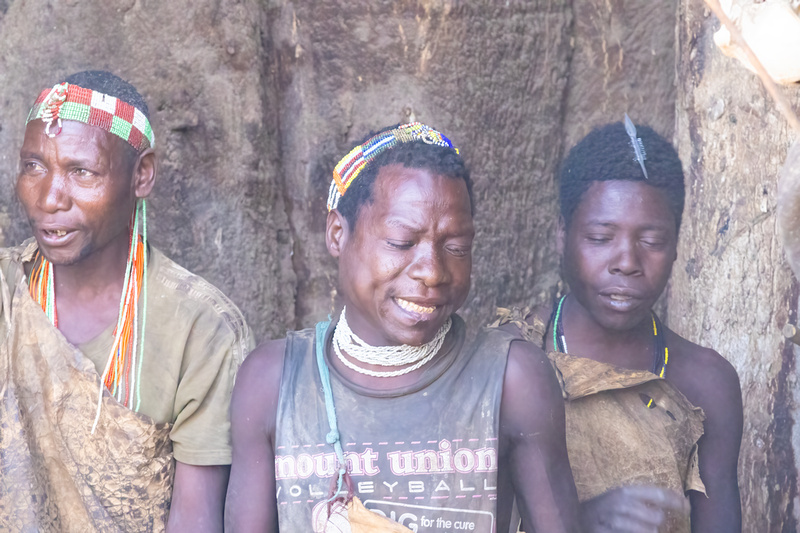
Hadzabe Singers - Note the Baboon Arrowhead in the Hair of the Singer on the Right of the Frame
Each morning the men depart with their bow and arrows and hunt the country for up to 10 miles around. The women, armed with pointed digging sticks collect edible plants and the odd rodent or snake. Every day is a new search for protein. We followed as a woman dug up a small mouse and the men killed a small sunbird with their bows. They quickly started a fire using two pieces of wood and cooked both prey items whole. The offered us the choicer morsels. Becky, oddly was not hungry. They gave the snacks to the children who happily consumed them.
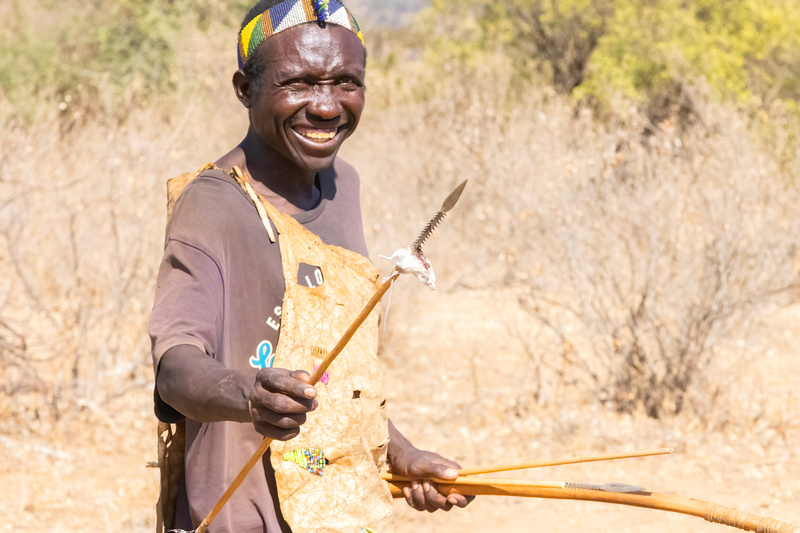
Mouse Snack

Becky in the Bushman Trophy Room
They kept trophies tacked to the side of the baobab tree including several baboon skulls. Baboon brains are considered a delicacy and they use a special back-barbed arrowhead to hunt them. The barbs prevent the punctured baboons from pulling the arrow out. They use a variety of arrows, including poisoned ones for larger game. They urged me to try one of their bows and I was unable to pull it to full draw. They claim kills out to 200 yards using these bows.
We briefly visited a Datoga homestead where several skilled blacksmiths were using rather primitive tools in their work. We watched at they took a large nail and fashioned it into a baboon arrowhead. They added intricate designs to copper and brass jewelry which was smelted on a home-made forge. We met the headman of the village and his five wives.

Datoga Blacksmiths at Work - Note the Homemade Bellows.
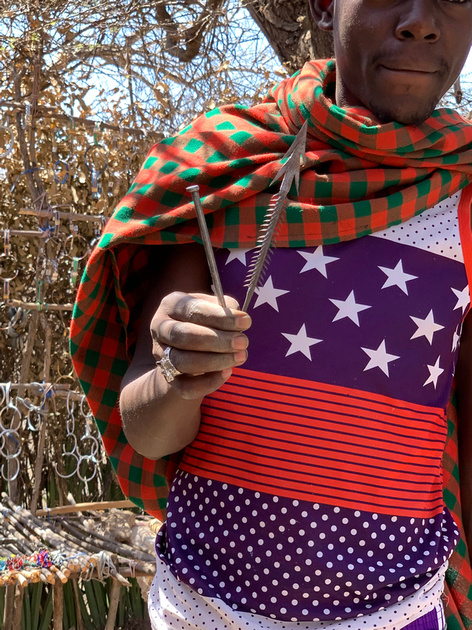
Datoga Crafted Baboon Arrowhead Made from a Large Nail
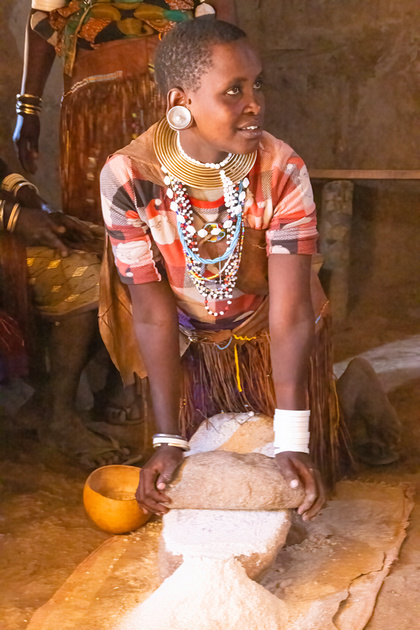
Datoga Woman Grinding Millet
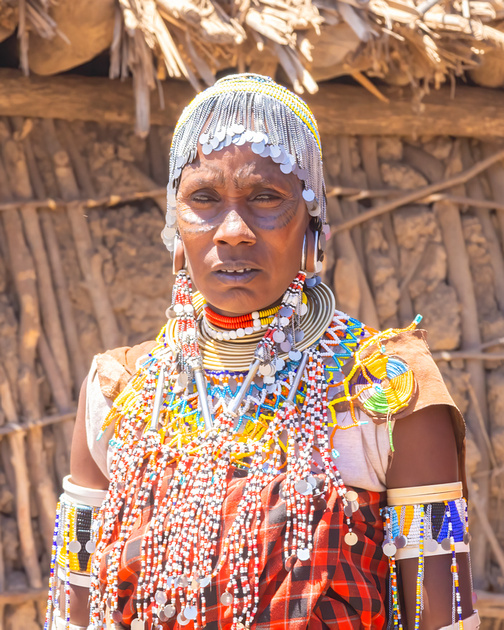
One of the Datoga Headman's Five Wives
Early the next morning we departed Tloma Lodge and crossed through the Ngorongoro Conservation Area and descended into Serengeti Nation Park. As we descended from the crater highlands the landscape began to change. It was an extremely desolate, windy, and dusty passage. We made a quick stop at the head of Olduvai Gorge. This is the location where anthropologists Mary and Louis Leaky unearthed one of our earliest ancestors. Shortly before entering Serengeti National Park, I photographed what I believe is an African wolf. They are very rare and difficult species to observe.

African Wolf
Serengeti means endless plain in Swahili. It fits. The Serengeti is about 5,700 square miles of savanna grassland with lesser amounts of acacia woodland and riverine brush habitats. It quickly became our favorite location of the trip. We spotted a pair of cheetah resting on a termite mound near a recent kill. They moved off as a young male lion checked out the remains of their kill. We followed the young male lion as he moved toward a stream occupied by a large lion pride. The lioness were on high alert and watched his every move until he disappeared. On the way to camp we spotted a large leopard lounging in a tree. Lots of cats.

Young Male Lion
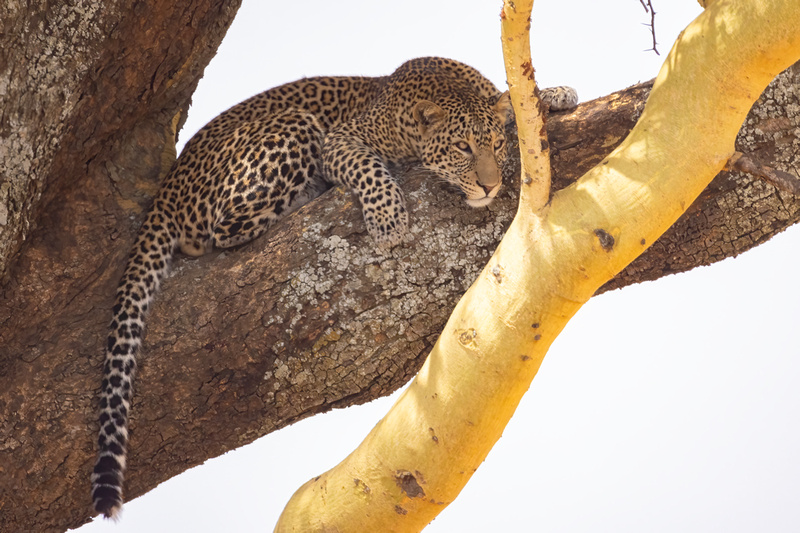
Leopard Lounging the Afternoon Away
Our Serengeti camp was a temporary tent camp that OAT moves to follow the game. The tents were new and the staff and service were excellent. The camp differed from others in that hot water for showers was delivered by hand to a bucket behind each tent. The bucket was raised via a pulley to produce a gravity feed shower. The attendant waited patiently to determine if more than one bucket was needed.
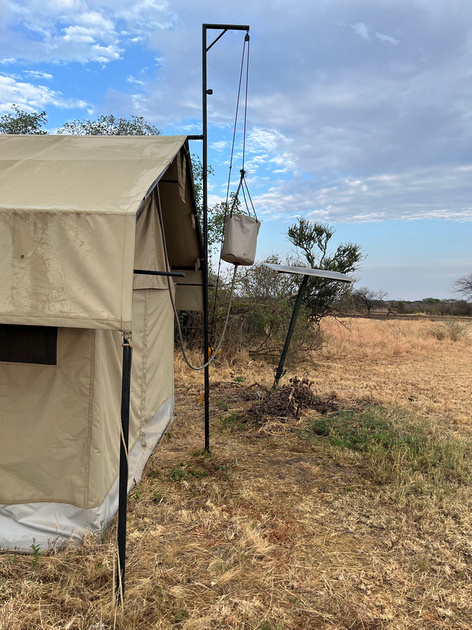
Serengeti Camp Shower Arrangement
We spent four nights in this camp and enjoyed so many lion sightings on our game drives. I ended up with 108 lions for the trip, most in Tanzania. We watched two successful lion hunts and several unsuccessful ones. One lioness managed to snag a Thompson's gazelle out of midair as it tried unsuccessfully to avoid her.
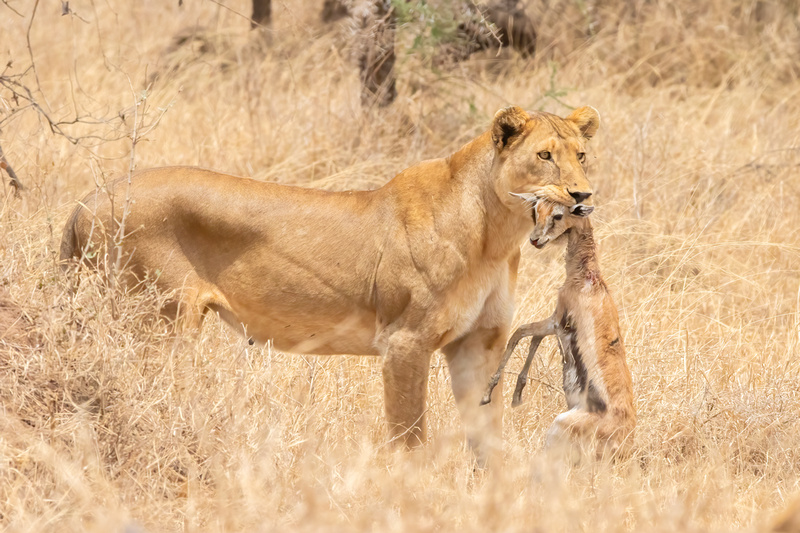
Lioness with a Thompson's Gazelle Kill
She quickly took her prey down near the stream to keep it out of sight. She was unsuccessful as a large male lion charged in and took her kill. He only enjoyed his stolen meal for a minute when two additional male lions rushed in and created a dusty scrum as they fought for a piece of the small antelope.
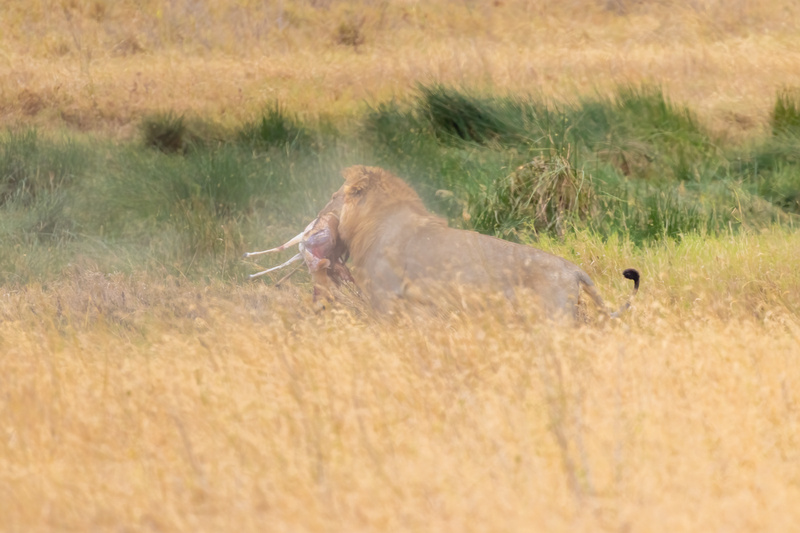
Once the Dust Settled This Large Male Ended Up With the Biggest Piece
Other interesting wildlife behavior involved hyena and lion interactions at a recent lion killed buffalo carcass. We found the carcass after observing a lioness with a very distended belly. As she moved away from the carcass the hyenas began to move in. When another single lioness returned to feed the hyenas brazenly dashed in and made off with a foreleg. When a second lioness joined the first, the hyenas became more circumspect and retreated to a safe distance. Such cool interspecific interactions.
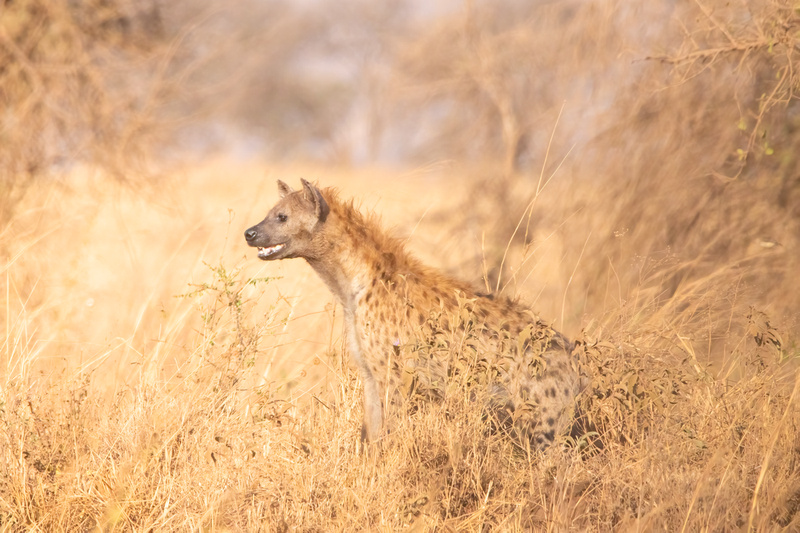
Spotted Hyena Circling a Recent Lion Kill
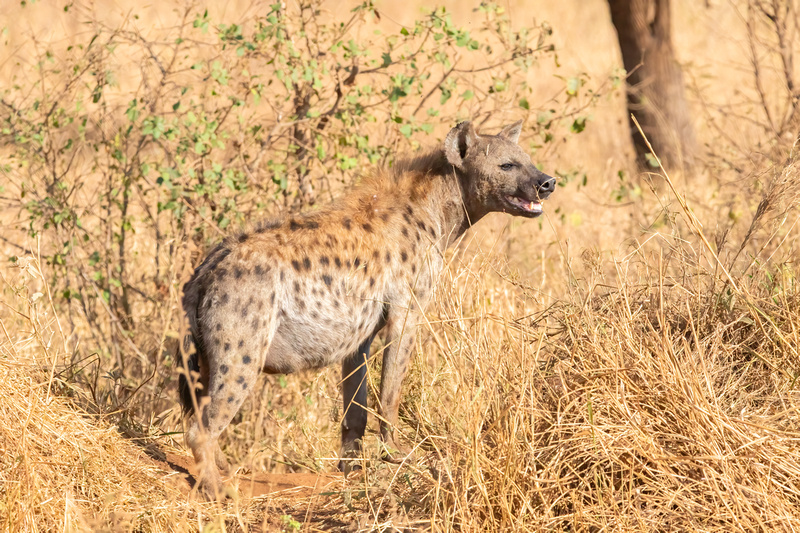
Spotted Hyena - Note the Distended Belly
On one of our all-day game drives we chanced upon a serval in tall grass. We had a few quick looks and then he disappeared. We were lucky to spot one as the guides indicated it was the first one that they had seen in three months. That same afternoon we had a mock elephant charge and had some nice looks at a distant leopard on one of the rock outcrops (locally called kopjes).
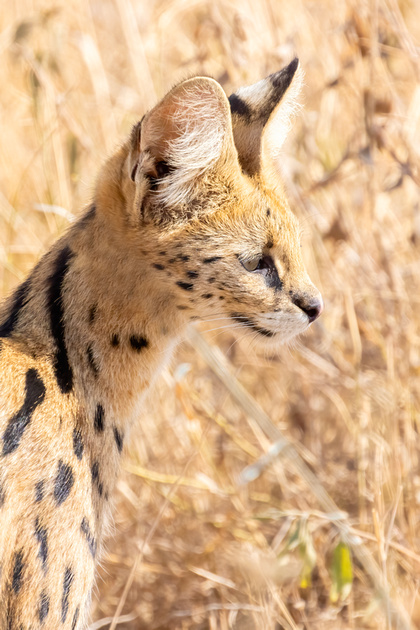
Serval
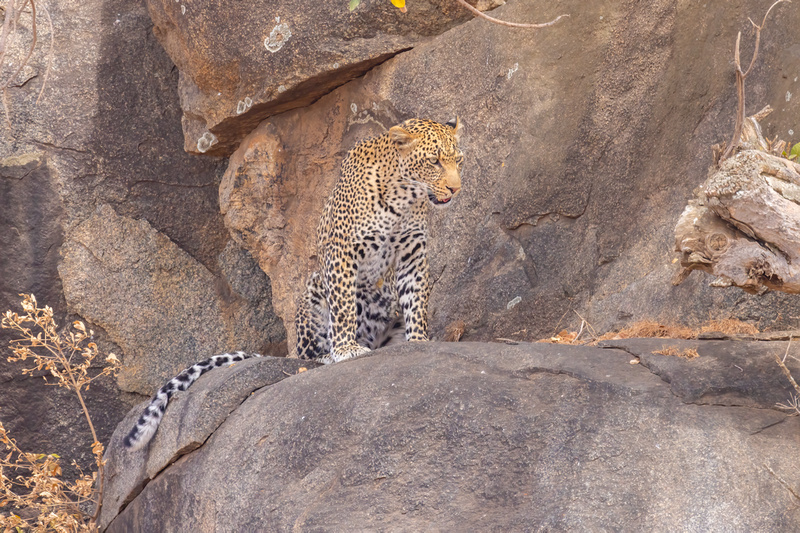
Leopard on a Kopjes
The next morning we dashed to a reported cheetah sighting. It turned out to be an adult female and five half-grown young. The female watched for predators as the young finished off a recently killed gazelle. Beautiful cats. Pretty amazing that she had been able to feed and protect the cubs in such a predator rich environment.
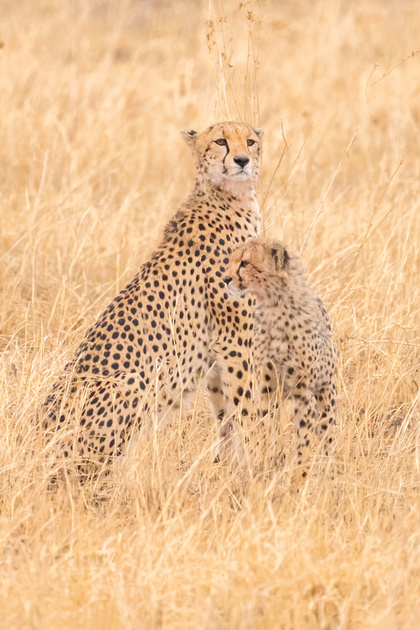
Female Cheetah with One of Five Cubs
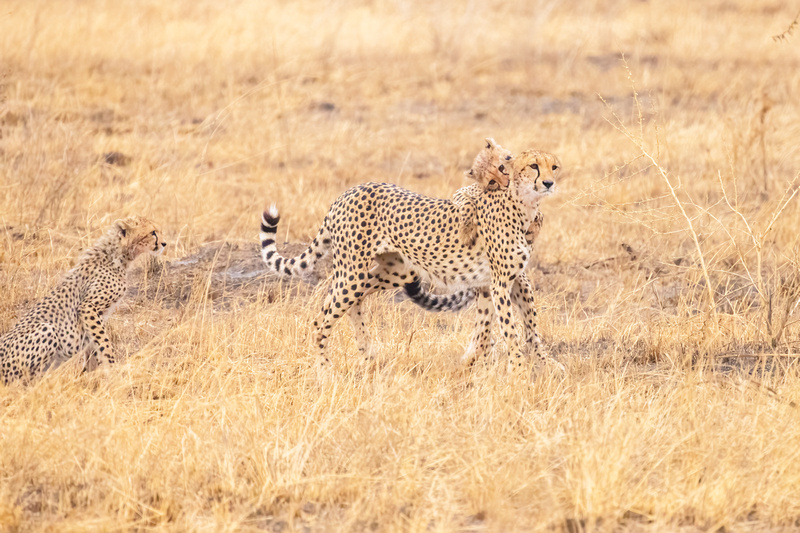
Young Cheetah Practicing his Takedown Moves on Mom
Shortly after leaving the cheetahs we spotted a leopard asleep in a tree. Before his nap he had packed a lunch. A Thompson's gazelle was placed on a fork in the tree next to the sleeping cat.
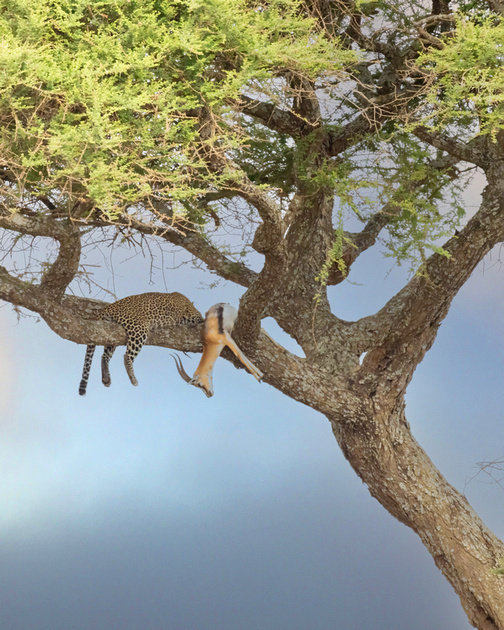
Leopard with Gazelle.
We continued to find lions every day whenever we were near water. The lions knew that the prey had to have water and staked out prime drinking spots. We found a collared lion with very young cubs. The guides indicated that the cubs were probably less than two weeks old. At one point we had a pride of 14 lions surrounding the trucks. Quite an adventure.
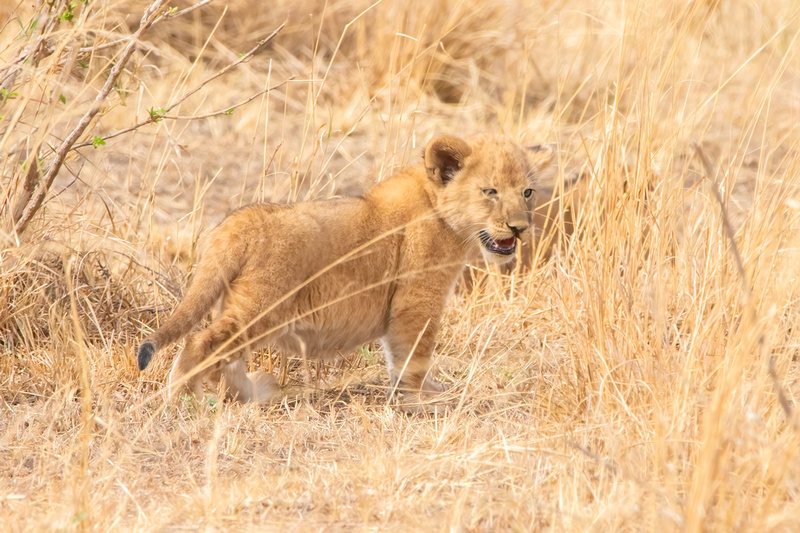
Very Young Lion Cub
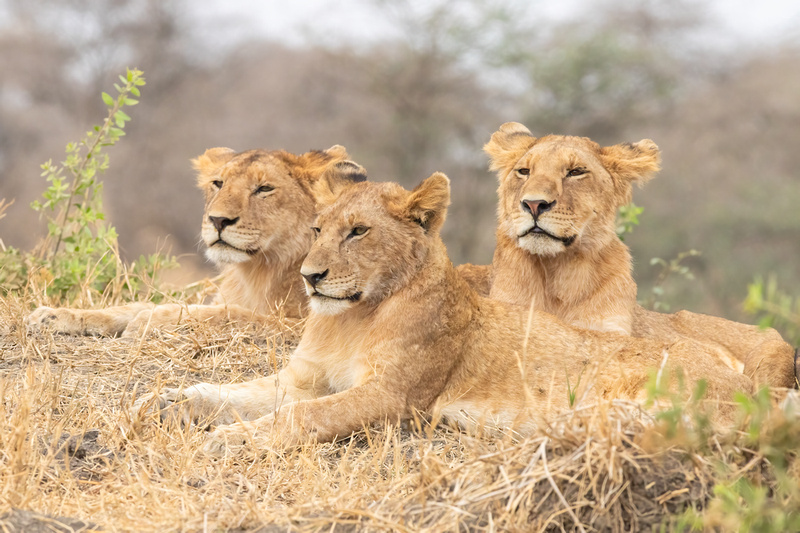
Surrounded by Lions
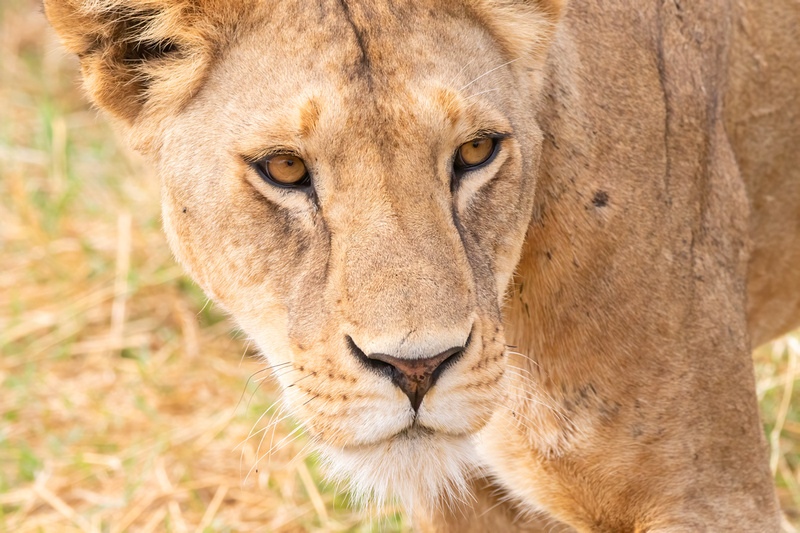
Hunting Lioness
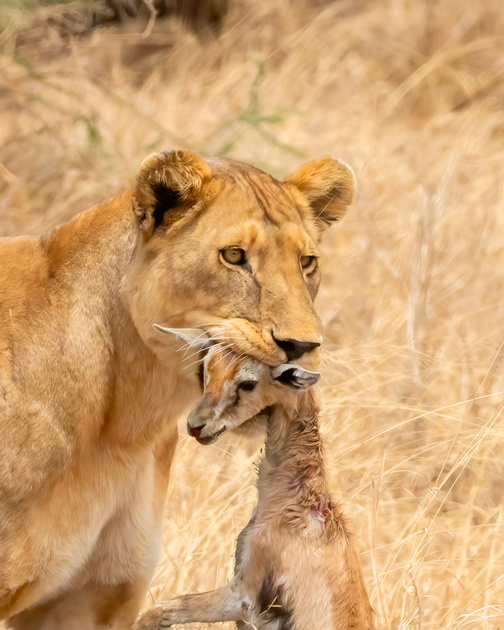
Successful Lion Hunt

Lioness on the Move
We had been advised by OAT that we were limited to a total 33 pounds each. Becky and I packed and repacked attempting to get all of our luggage under 33 pounds. My downsized photo gear weighed 18 pounds, so I wore the same cloths a lot. We were fortunate that most camps provided laundry service. We were later told that limit was only for the flight from the Serengeti back to Ashura and did not include backpack weight. However, no bags were weighed for that flight including some very large suitcases. Frustrating!
After our flight back to Ashura we checked into an upscale hotel (Kimbo Palace) and were provided with a hotel room for the day. That afternoon we were transported to the airport to begin our journey home. Becky and I had elected a three-day stopover in Amsterdam on our way home.
This was an exceptional tour which greatly surpassed my expectations. All of the OAT staff were excellent and really seemed to enjoy their work. OAT travelers are almost exclusively American. OAT specializes in small group travel, advertising maximum group size of sixteen or less. OAT also does not charge a single supplement. We had a total of ten in our group ranging in age from 60 to 80 years of age. A good group.
I used two cameras, a Canon 7D2 and a Canon R5 mirrorless for almost all the photos in this blog and in the East Africa folder on this website. I used two lenses, a Sigma 150-600mm zoom and an 800mm F11 fixed. This proved to be an effective combination. We were frequently so close that the ability to zoom was needed and the 800 gave me the reach to capture small or distant subjects. I ended up with just under 15,000 images.
I used the Merlin app exclusively for bird identification and Stuart's African Mammals app for mammal identification. I was fortunate that two of our fellow travelers were avid birders, so between Ken and Clara and the guides, I believe that most of my bird identifications are accurate.
I highly recommend this OAT Adventure.
Becky and I visited Kenya and Tanazania during August 2023. We had visited some of the southern African countries including South Africa, Botswana, Zambia, and Zimbabwe in September 2018 (see trip blog on this site). The southern Africa trip was a great adventure and we knew we wanted to return to Africa. We chose "The Best of Kenya and Tanzania" offered by Overseas Adventure Travel (OAT) for this current 2023 safari. We added a five day Kenya pretrip to the main tour. Our goal was to experience the landscapes, peoples, and wildlife of East Africa.
I was particularly keen to experience the "great migration" and photograph wildlife species and behaviors we had not previously seen. The great migration involves an estimated 1.75 million wildebeests moving from the vast Serengeti to the Masai Mara National Reserve.
OAT arranged our air travel from San Francisco to Nairobi. Flight cancellations the morning of our flight resulted in a deviation from the OAT itinerary. We flew from SFO to Detroit, Detroit to Paris, and Paris to Nairobi. After a day and a half of air travel, we and our luggage arrived at the Nairobi Airport where we were met by our OAT trip leader, Fred. We were transported to the downtown Nairobi Eka Hotel where we made it to bed by 2 AM. We had planned to get up at 10 AM and catch breakfast, but we ended up sleeping 14 hours and waking in time for happy hour. So much for getting in sync with the local time zone. The next morning we met five of our fellow travelers and departed on a smallish Kenya Air prop plane for the Samburu Game Reserve in north-central Kenya.
The visits to Samburu and Ol Pejeta Conservancy were a short OAT pretrip we had added to the regular tour. Both locations offered opportunities to observe wildlife species difficult to observe at other tour locations. The Samburu portion of the trip offered the chance to see the "Samburu Five" which included the reticulated giraffe, Somali ostrich, Greavey's zebra, beisa oryx, and gerenuk. The Ol Pejeta Conservancy provided the best opportunities on the trip to see both black and white rhino, including the last two northern white rhinos. Both of these rhinos are female, so they truly are the last.
Samburu Game Reserve
After a two hour game drive from the dirt Samburu airstrip we arrived at Savora Shaba Lodge, our home for the next two nights. This part of Kenya is hot and very dry. The lodge is on the banks of the Ewaso Nyiro River within a 10 acre cedar forest. This location proved excellent for birding, especially water dependent birds like herons, egrets, kingfishers, storks, ibis, hammerkops, and plovers.
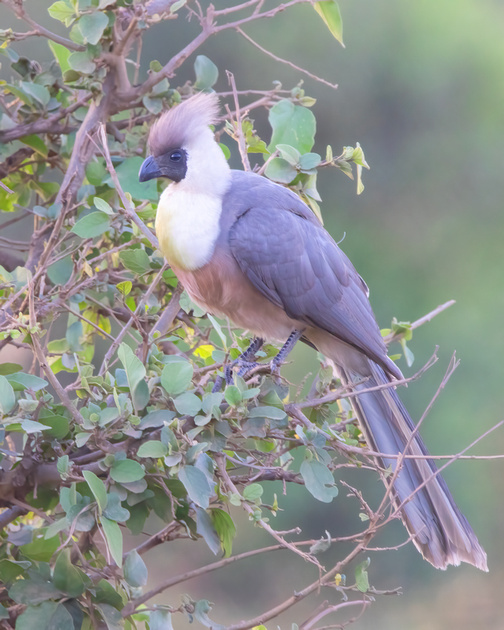
Bare-Faced Go-Away Bird
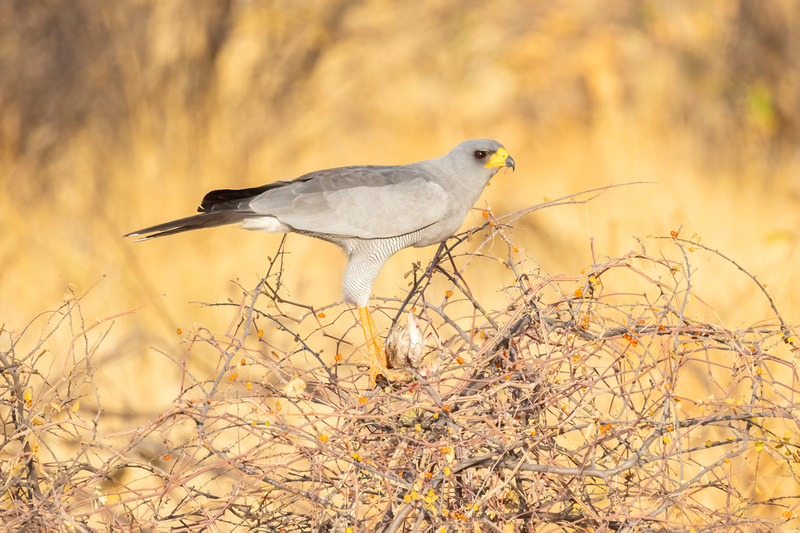
Eastern (Pale) Chanting Goshawk

Golden-Breasted Starling
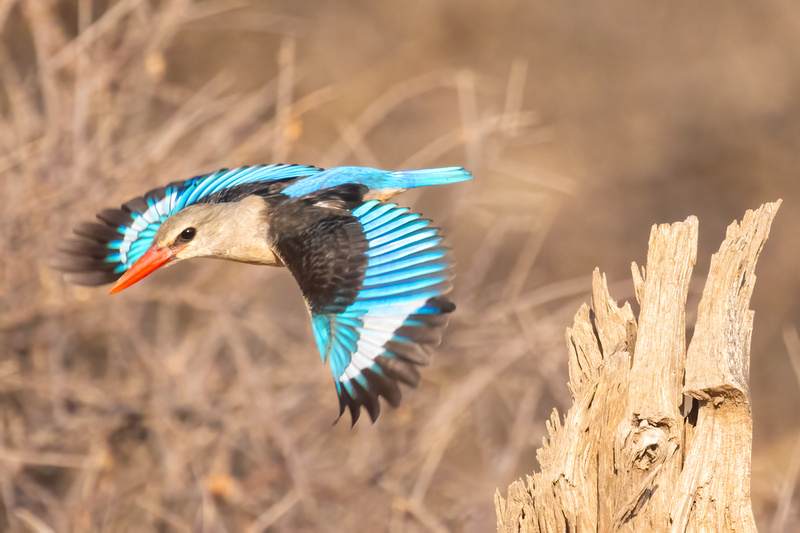
Gray-Headed Kingfisher
The lodge grounds are enclosed by an electric fence to exclude large animals. The fence proved ineffective at excluding baboons and vervet monkeys which were present everywhere on the grounds. We had 114 baboons pass behind our lodge unit one morning before daylight. The lodge employs several local Samburu tribesmen armed with slingshot to keep the baboons at bay.
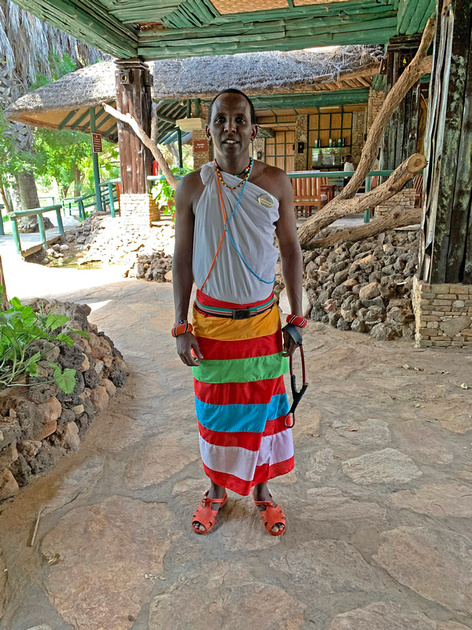
Samburu Tribesmen - Note The slingshot used as baboon/monkey deterrent
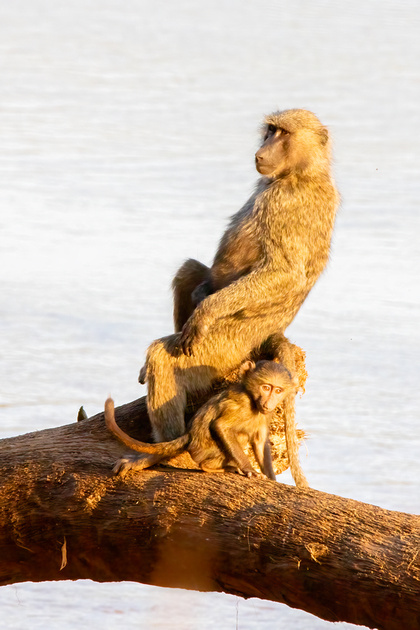
Olive Baboon

Vervet Monkey
One of the unique features of this lodge is a treetop restaurant. I returned to the breakfast table one morning with coffee for my wife and found a vervet monkey perched on the back of my chair. I will never know if my wife in her uncaffinated state recognized that the cute, hairy primate sitting across from her was not her husband.
We were able to photograph the Samburu five. The Greavey's zebra is the largest of the zebras and the most threatened. They differ from the more common plains zebra in that they are taller, have larger ears, and tighter stripes. Between 2,000 and 3,000 of this species are believed to remain in the wild.
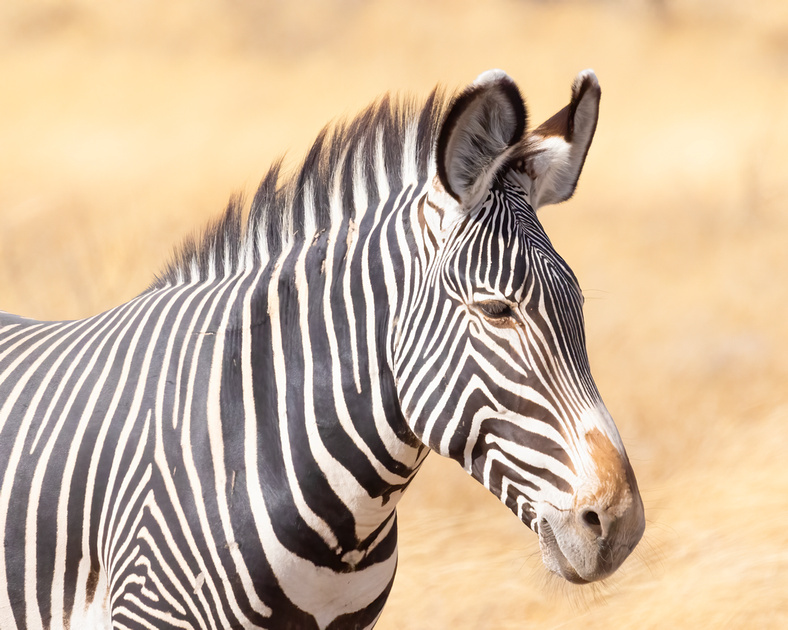
Greavey's Zebra
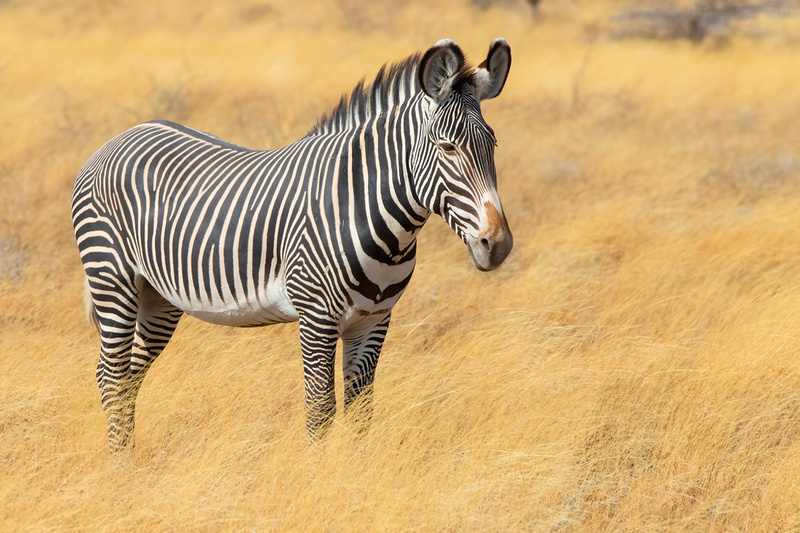
Greavey's Zebra
The gerenuk is a long-necked, long limbed, antelope. We frequently encountered them standing on their hind legs feeding on vegetation well above the level of other antelope. An interesting behavior that has lead to the unofficial name of giraffe gazelle.
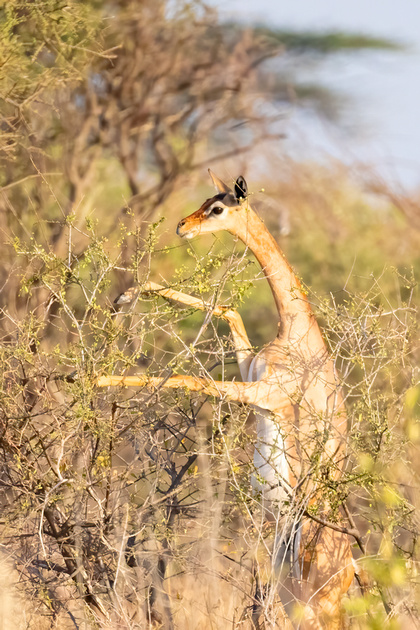
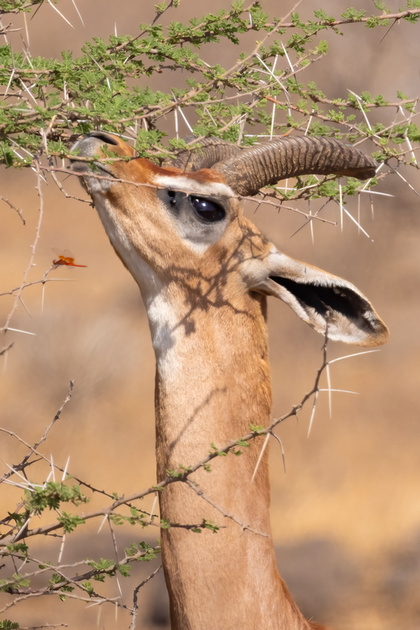
Gerenuk Female and Male
Reticulated giraffe were very common in the Samburu Game Reserve. We saw dozens on every game drive. The bright white outline on their dark spots is quite striking. About 8,500 are believed to remain in Somali, Ethiopia, and northern Kenya.
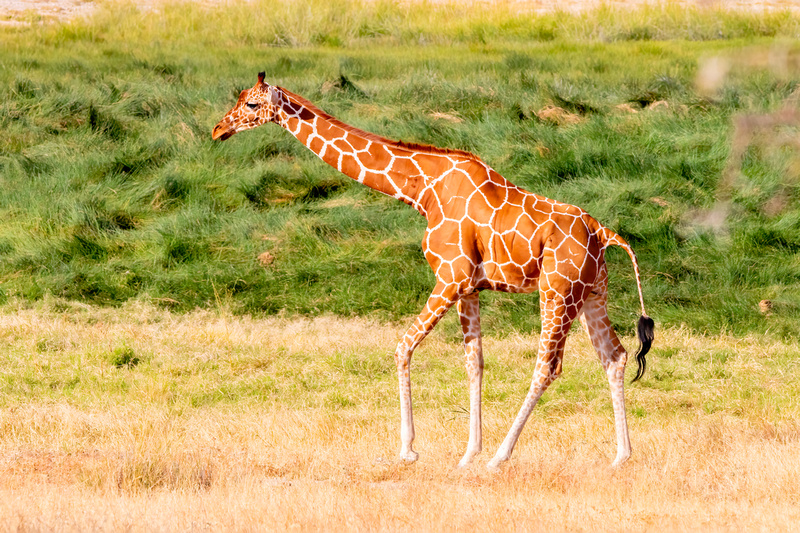
Reticulated Giraffe

Reticulated Giraffe
We were able to observe and photograph a single male Somali ostrich. They differ from the common ostrich in that the males have bright blue necks and legs rather than the dull pink of the common ostrich. They are currently recognized as a full species and can be found in Ethiopia, Somalia, and Kenya.
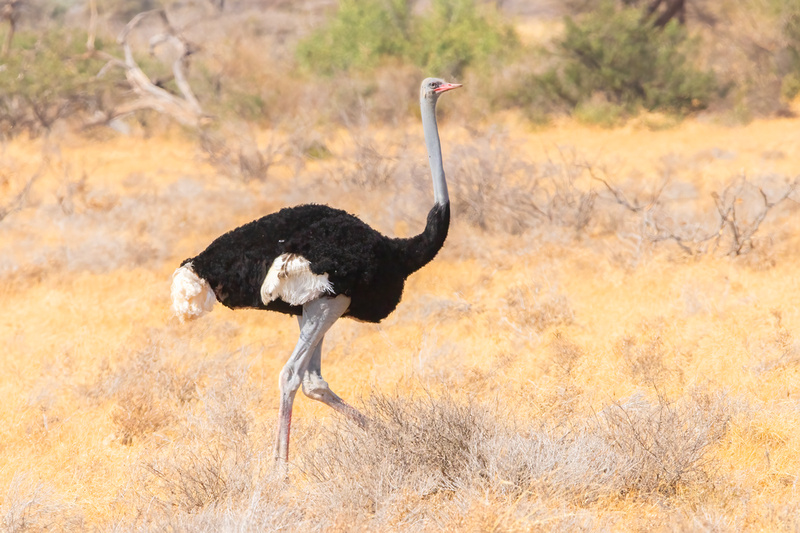
Somali Ostrich
The beisa oryx is a large, beautiful antelope. Both sexes carry impressive straight horns. We normally found them singularly but on one occasion we encountered a herd of around 60. Our guides indicated that many in a single group was quite unusual.

Beisa Oryx
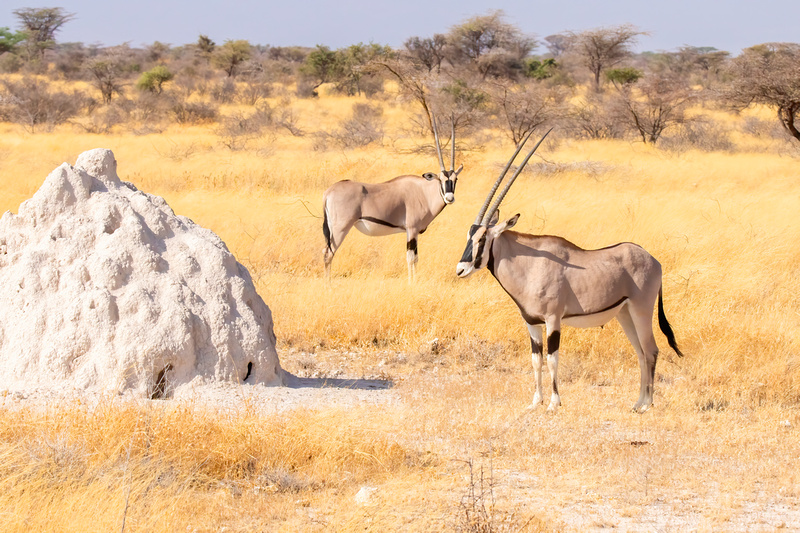
Beisa Oryx
In addition to the Samburu five, we had excellent opportunities to observe African savanna elephant, impala, Thompson's gazelle, dik-dik, African buffalo, defassa waterbuck, warthog, common waterbuck, baboon, vervet monkey, and Grant's gazelle.

Young African Savanna Elephant
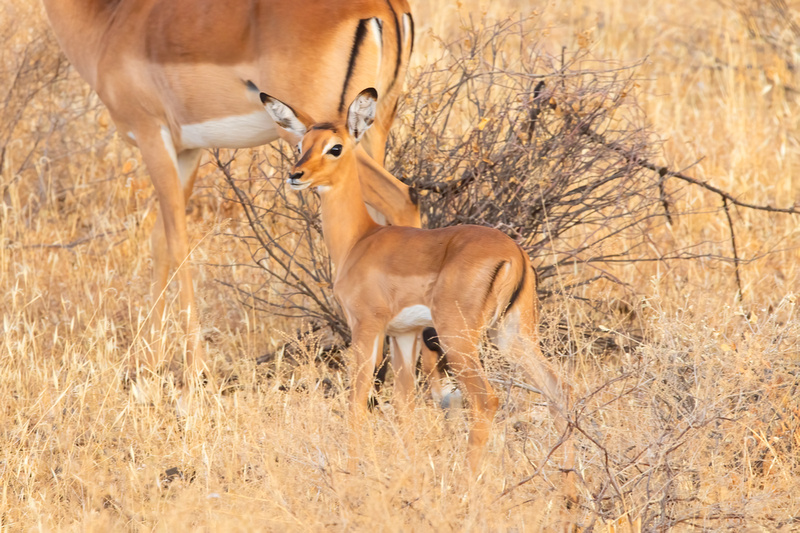
Young Impala
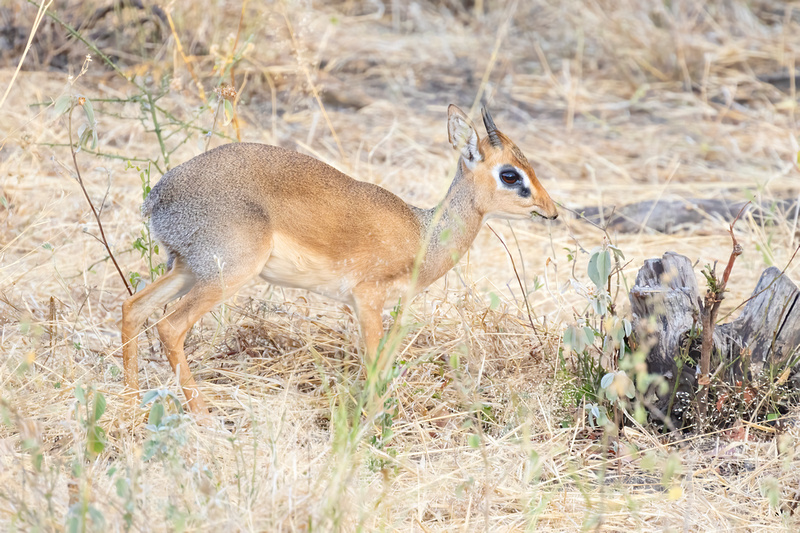
Dik-Dik

African Buffalo (What you see when you realize you have chosen the wrong bush as your bathroom)
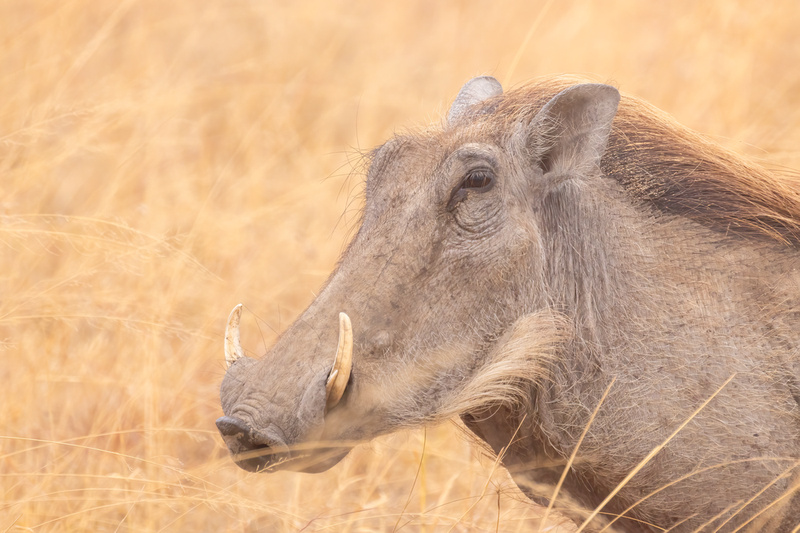
Warthog
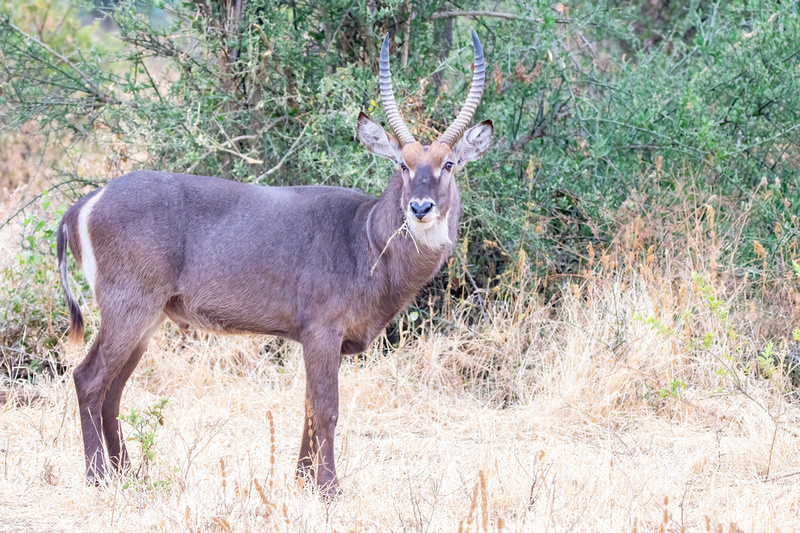
Common Waterbuck
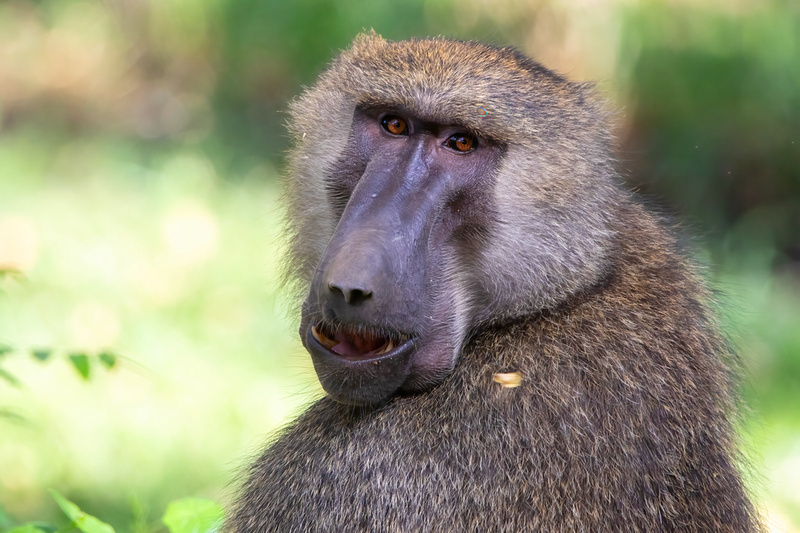
Olive Baboon
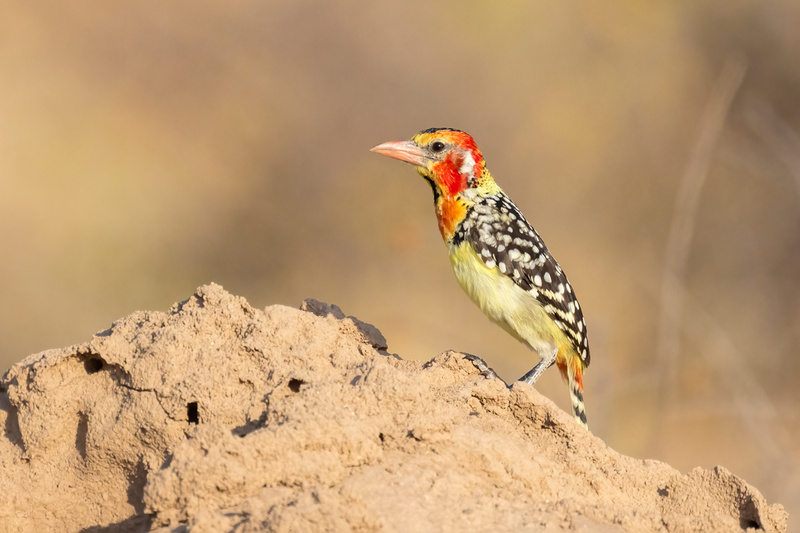
Red and Yellow Barbet
Sweetwater Game Reserve
This location was one of my favorite locations of the trip. The food was very good and the tents the nicest of any on the trip.This tented camp is within the Ol Pejeta Conservancy. Very nice tents are arrayed in a half circle around a large waterhole. We could sit on our front porch and the wildlife came close as they visited the waterhole throughout the day and night. The camp had some weak lights on the waterhole at night. Not enough light for photography, but enough for species identification. About 165 critically endangered black rhino are present within the Ol Pejeta Conservancy. Southern white rhino were introduced in this area and currently the Conservancy supports 44 white rhinos. This location also offered some of the best birding of the trip. The Conservancy has invested heavily in wildlife protection employing tracking dogs, drones, and wardens on foot, motorbike, and truck patrols.
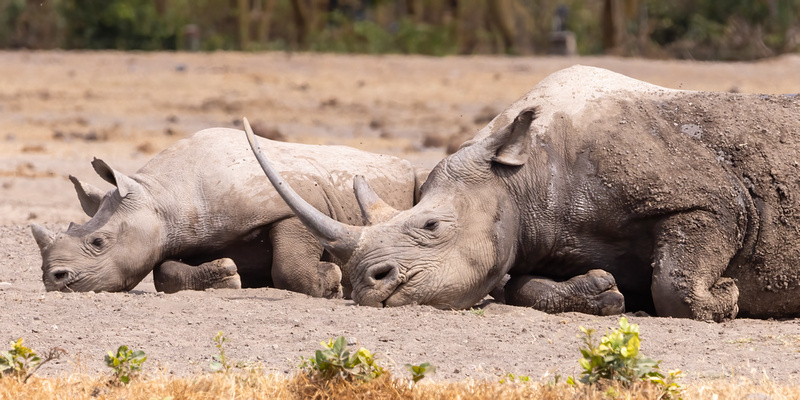
Black Rhino
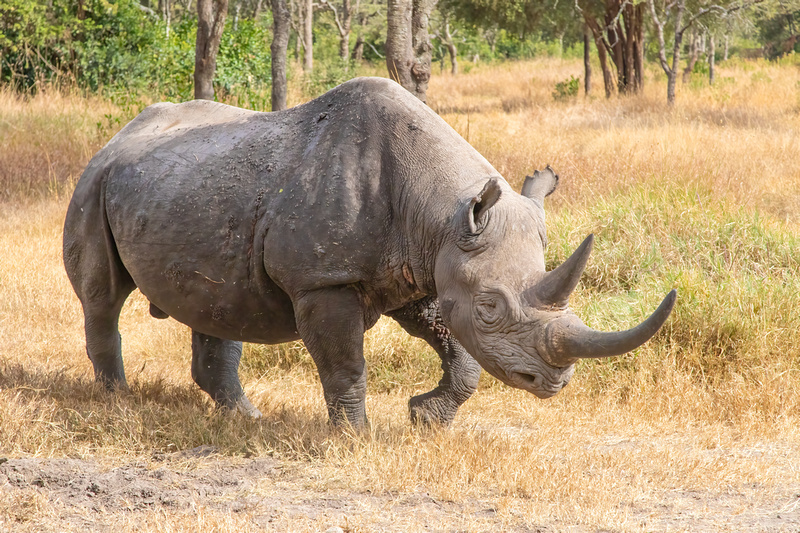
Black Rhino
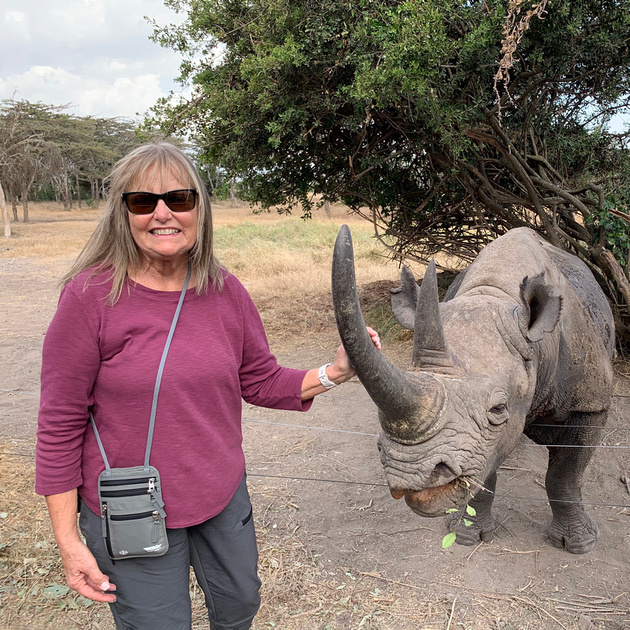
Becky Pets the Rhino
While at Sweetwater Camp we visited the nearby Jane Goodall Chimpanzee Sanctuary. Jane Goodall had visited the sanctuary the week before we arrived. Chimpanzees are not native to Kenya. The chimps housed at the Sanctuary are all rescues. I believe they have around 35 total chimps separated in two populations. Very difficult photography as these animals were surrounded by a dense electric fence and visitors are kept well away from the fence and chimps. The chimps are quite intelligent. One became an escape artist after he learned to short out the fence using sticks. He is now doing hard time in solitary so that he does not teach others his trick. Chimpanzees and humans are closely related and share approximately 98.8 percent of their DNA with humans. Perhaps more with some humans.

Robust Chimpanzee
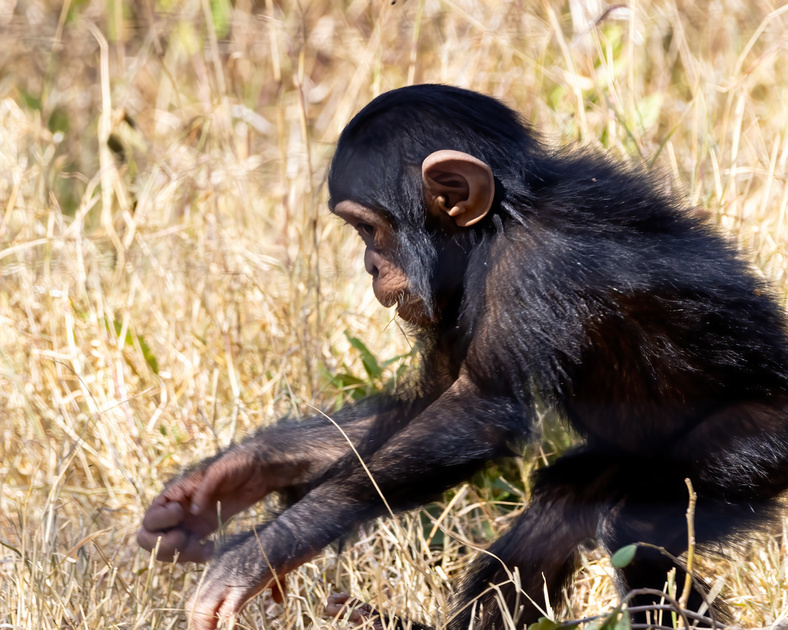
Robust Chimpanzee (Young)

Bushbuck
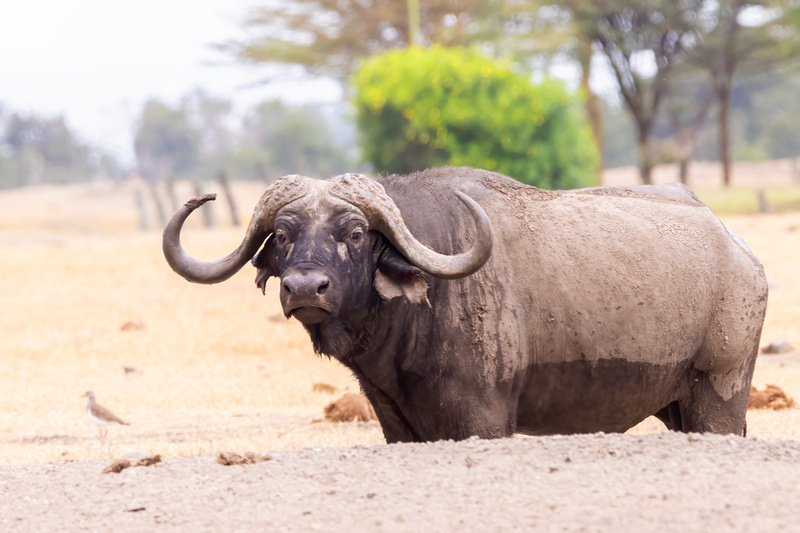
African Buffalo
We observed our first lions at Ol PeJeta. Other new mammal species included common eland, plains zebra, bushbuck, chimpanzee, hartebeest, spotted hyena, African hare, and black-backed jackal. We encountered a jackal den with 4 pups. Mom went off to hunt and they frolicked, just like puppies. Lots of fun to watch.

Common Eland - Note the Hitch-Hiking Yellow-Billed Oxpeckers
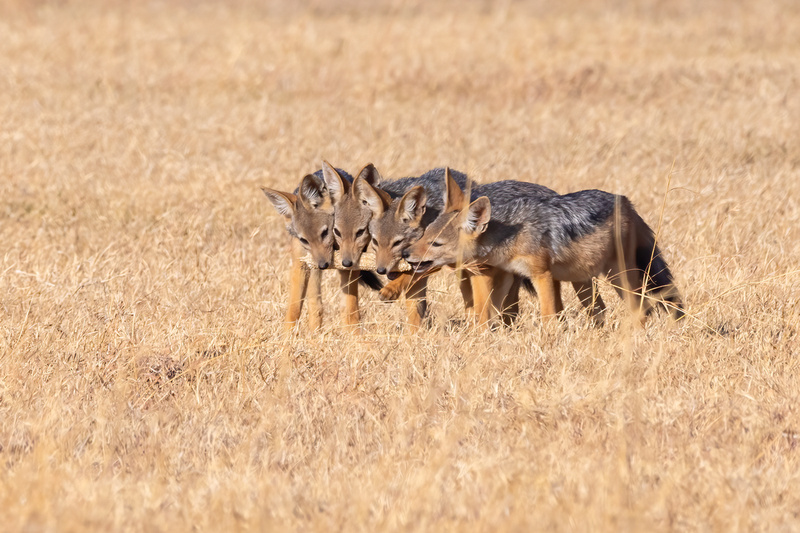
Black-Backed Jackal (Pups) at Play
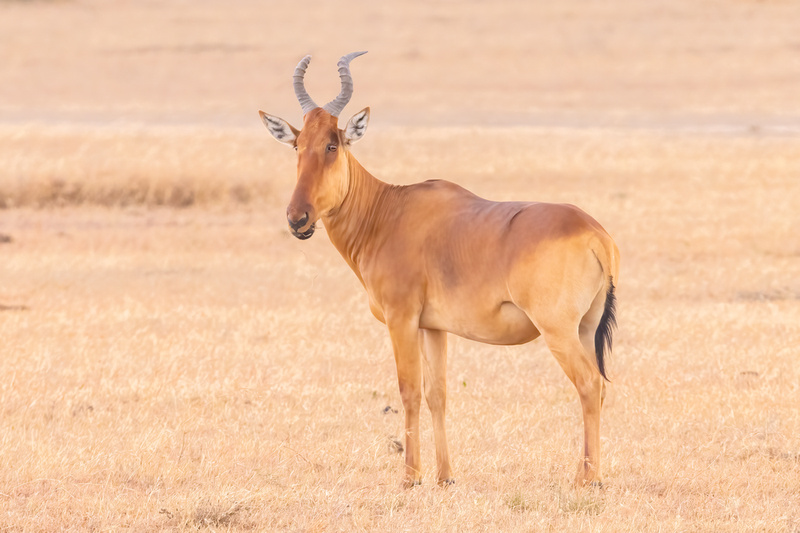
Hartebeest
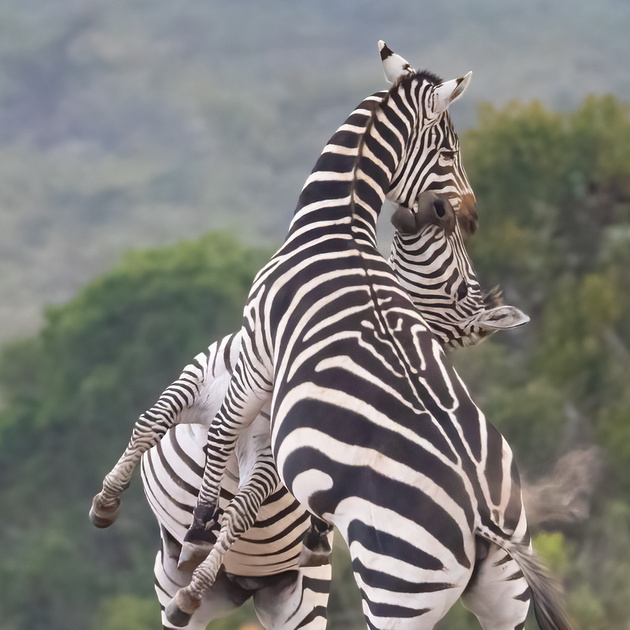
Plains Zebra - Stallions in Combat

Plains Zebra - Mare and Foal
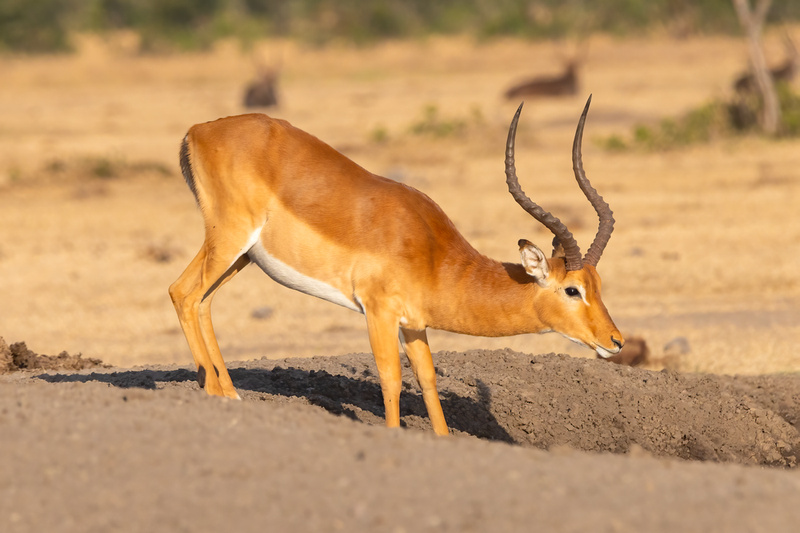 \
\
Impala
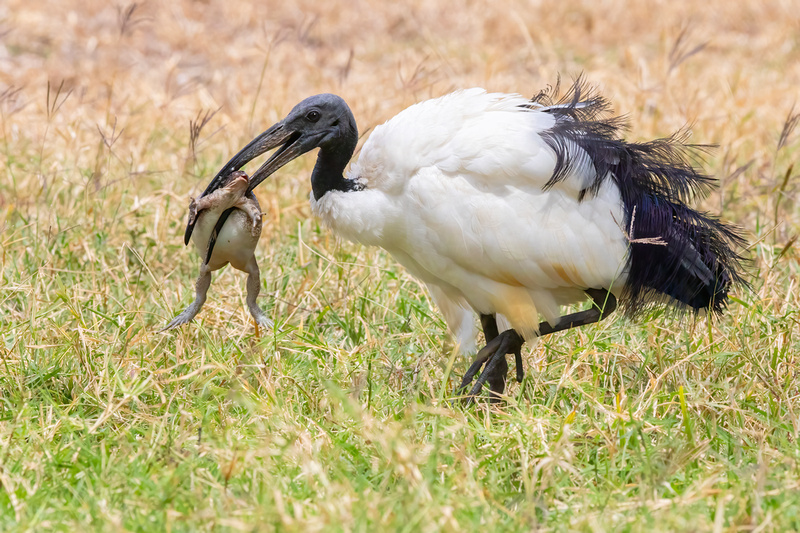
Sacred Ibis with Snack
We experienced a night game drive while at Sweetwater Camp. This was our only night game drive as they are not allowed in the National Parks. We ended up spotlighting several spotted hyena and black-backed jackals.

Spotted Hyena
The tent attendants placed a hot water bottle in our bed each night when they turned the mosquito netting down. A nice touch, but a bit of a surprise if you are not expecting it. I should note that we got the CDC recommended yellow fever vaccination and took malaria pills, but never saw a single mosquito.
The last morning before we left Sweetwater Camp, I skipped breakfast to work on my life bird list. It was time well spent. In 90 minutes I picked up an olive woodpecker, speckle-fronted weaver, Ruppell's starling, black kite, black-headed heron, Pemba green pigeon, red-fronted barbet, and yellow-breasted spurfowl. Quite a morning!
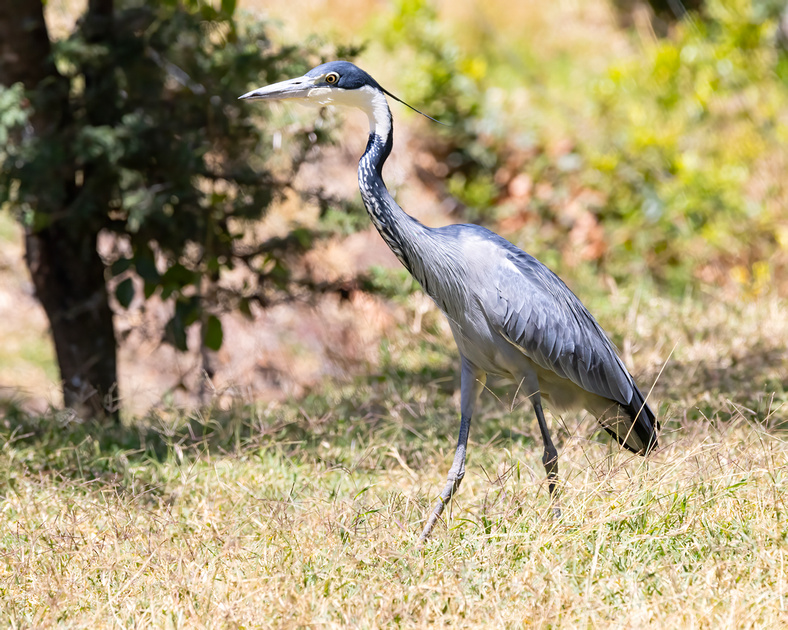
Black-Headed Heron


Lilac-Breasted Roller
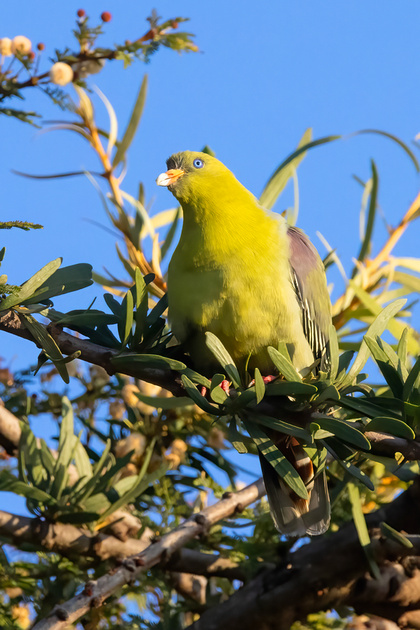
Pemba Green Pigeon
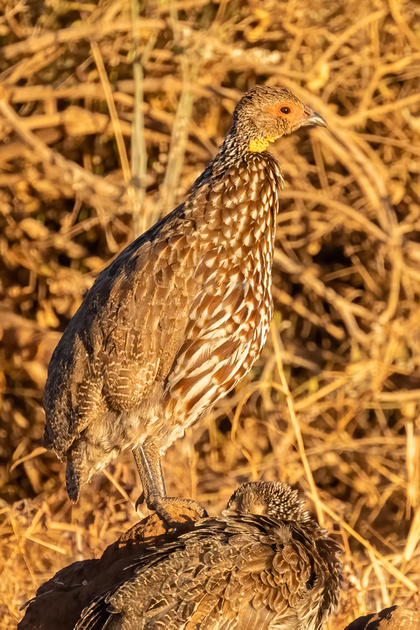
Yellow-Necked Spurfowl
Nairobi
We traveled in our safari trucks from Sweetwater Camp back to the Eka Hotel in Nairobi. Nairobi is a city of about 4 million and downtown was similar to any major metropolitan area with malls and high rise buildings. It also contains Kibera Slum. This slum is immediately adjacent to the downtown and is inhabited by around one-million people all living within a square mile. We had a walking tour of the slum, learned its history and met many of the inhabitants. It was very interesting and also pretty uncomfortable.
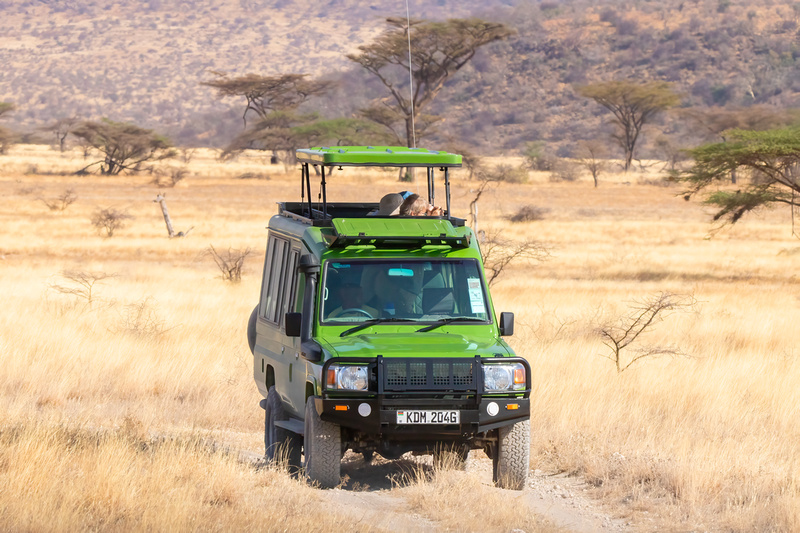
Safari Trucks - Custom Toyota Trucks with a fully enclosed cabin and a pop-top roof.
We were joined in Nairobi by three additional travelers and experienced the open-air Carnivore Restaurant as our OAT welcome dinner. They serve Kenya style BBQ including, camel, ostrich, whale, and crocodile in addition to pork, beef, and chicken. Not really a favorite of the vegetarians in our group.
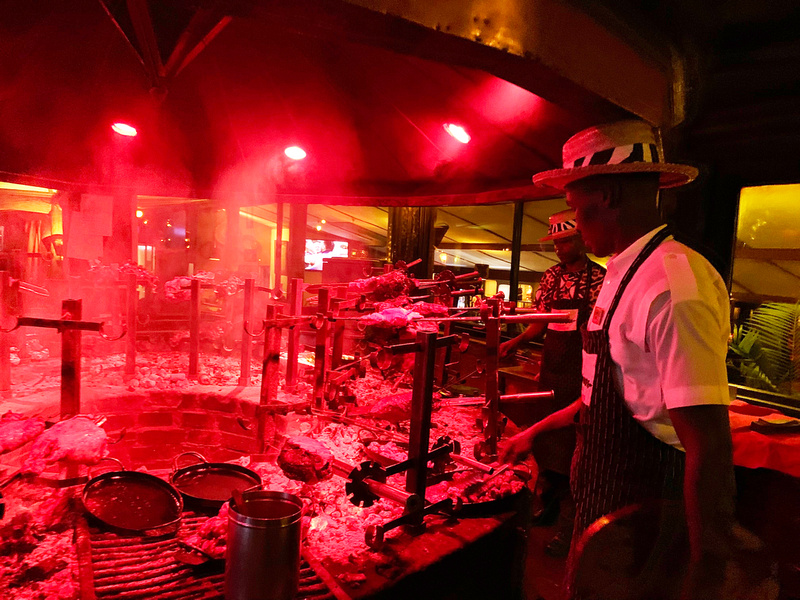
The Grilling Pit at The Carnivore Restaurant
We also visited the Sheldrick Elephant Orphanage on the outskirts of the Nairobi National Park. They have about 35 young, rescued elephants and two young rhinos. These young elephants are gradually reintroduced to the wild and will successfully join wild herds. The elephants came out in two groups with the youngest group first. They each ran to a keeper and quickly guzzled a gallon or two of milk. The orphanage was the first to develop a formula suitable for elephants. After their bottles, they engaged in play in the mud hole. Lots of roughhousing and mudslinging. This is a very popular attraction in Nairobi and it was difficult to get photographs without people in the background. We adopted an elephant in our three-year old granddaughter Piper Magnolia's name. She was a little disappointed when we returned home without her elephant in our hand luggage.

African Savanna Elephant At the Sheldrick Elephant Orphanage
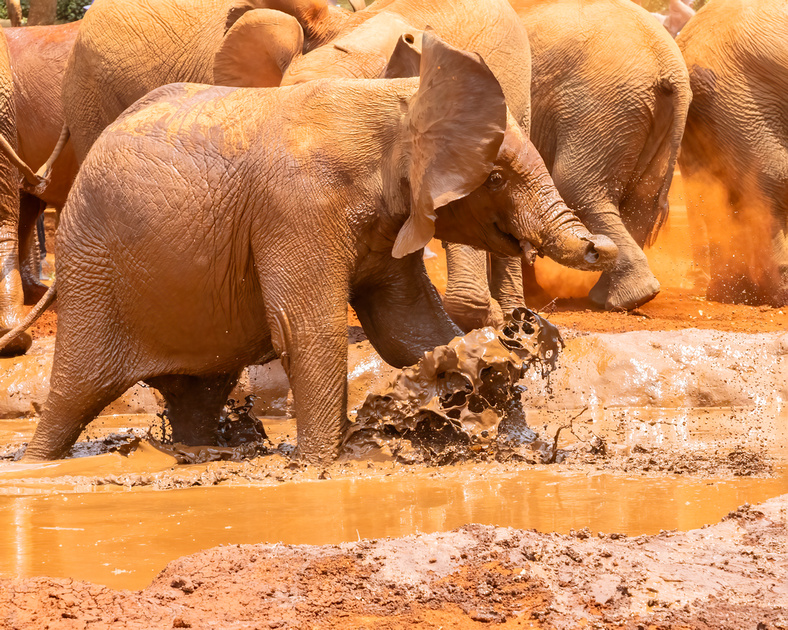

African Savanna Elephant at the Sheldrick Elephant Orphanage

Bottle Feeding an Orphaned Elephant
The next day we visited the Giraffe Center near Nairobi. This is a captive breeding facility for the endangered Rothschild's giraffe. About 2,000 Rothschild's giraffe exist in the wild. This species is one of the tallest species of giraffe (up to 19 feet) and is best differentiated from other species of giraffe by their creamy white, unspotted legs. The Center has an elevated boardwalk to allow hand feeding by visitors. Very popular activity with the selfie crowd.
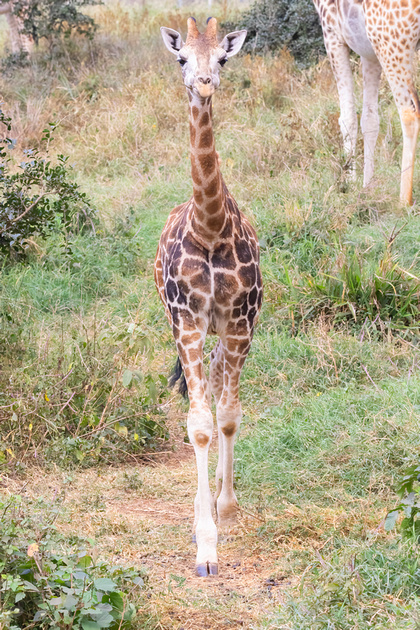
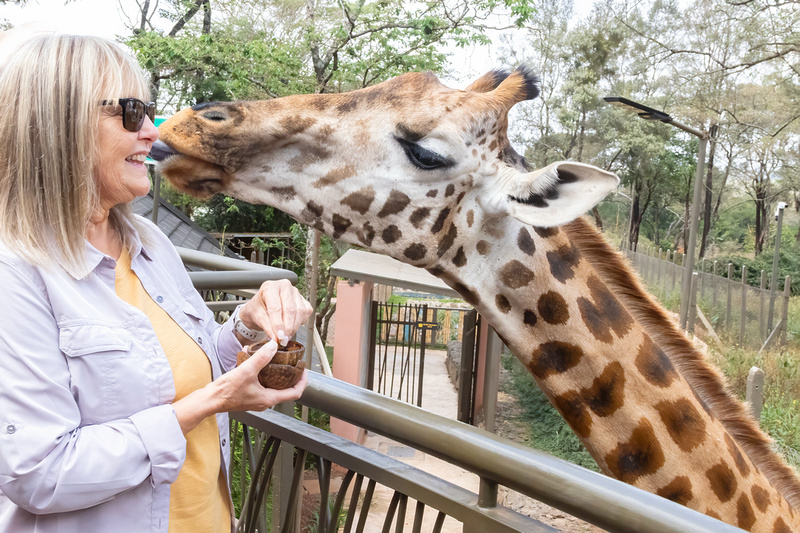
Becky Receiving a Kiss from a Rothschild Giraffe
On our last morning in Nairobi, we caught a Kenya Air flight to Masai Mara National Reserve on the border of Kenya and Tanzania. I was very much looking forward to visiting this location as I believed it would offer the best photo opportunities of the trip.
Almost immediately we came across a pair of lions mating. With all the snarling and biting it did not appear that they were enjoying their interlude. The guides indicated that was normal lion mating behavior. This behavior includes up to 50 copulations per day for the three to four days that the lioness is in season.
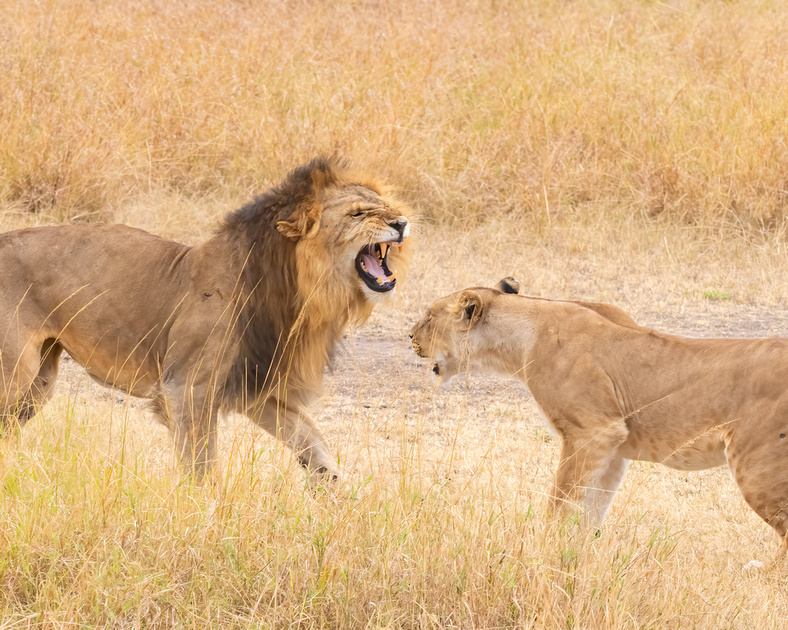
Mating Lions
A few miles down the road while crossing a previously burned area we spotted an adult cheetah. We got some nice close looks at our first cheetah.
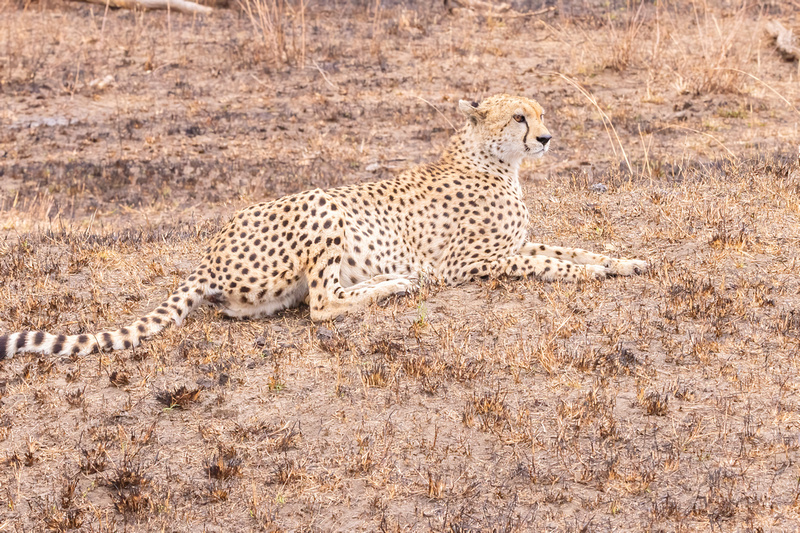
Cheetah

Cheetah
We stopped for a coffee and pastry break and had to rapidly dump everything when a male lion was spotted heading directly through the tall grass towards our gathering. He veered off and I was able to get some nice images of him as he cruised along the skyline. We also found a large pack of banded mongoose. A very good start for Masai Mara.
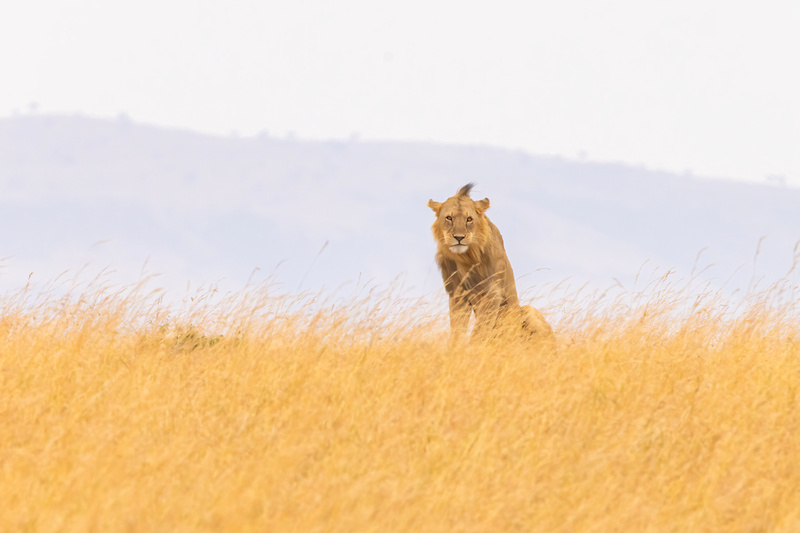
Young Male Lion (Going for the Mohawk)

Banded Mongoose
We headed for our lunch at our lodging (Mara Sentrim). This camp was our least favorite as everything was a little worn and the food choices were poor. However, the wildlife viewing on the game drives continued to be productive.
Over the local guides objections, our trip leader headed us toward the Mara Triangle. The Mara Triangle is separated from the Masai Mara National Reserve by the famous Mara River and was a rough three-hour drive from our camp.
Upon entry we immediately came across a wounded lioness on a wildebeest kill. A short distance later we crossed a ridgeline and found the great migration. Approximately 175,000 wildebeest and zebras had crossed into the triangle the night before. Truly an inspiring multitude. As we slowly parted the herd, the male wildebeest low moaning call was heard all around us.
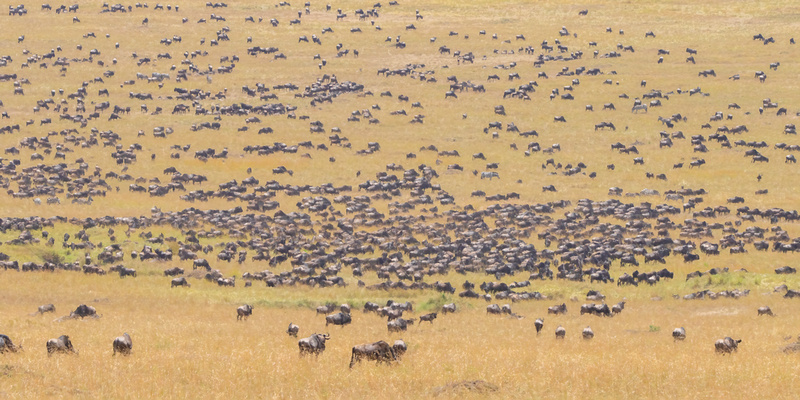
The Great Migration
In the midst of the herd we found yet another pair of mating lions. The prey species must have known that the lions were otherwise occupied as they came dangerously close to the amorous felines.
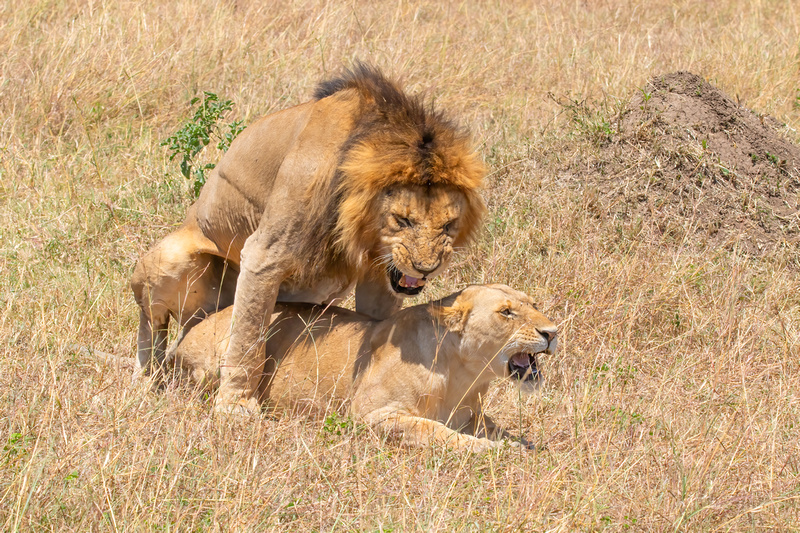
Mating Lions
We spent a couple of hours with the herd and then headed for one of the Mara River crossing points in hopes of seeing a mass crossing. No luck on the crossing, but we were able to photograph a large pod of hippo in the river directly below us.
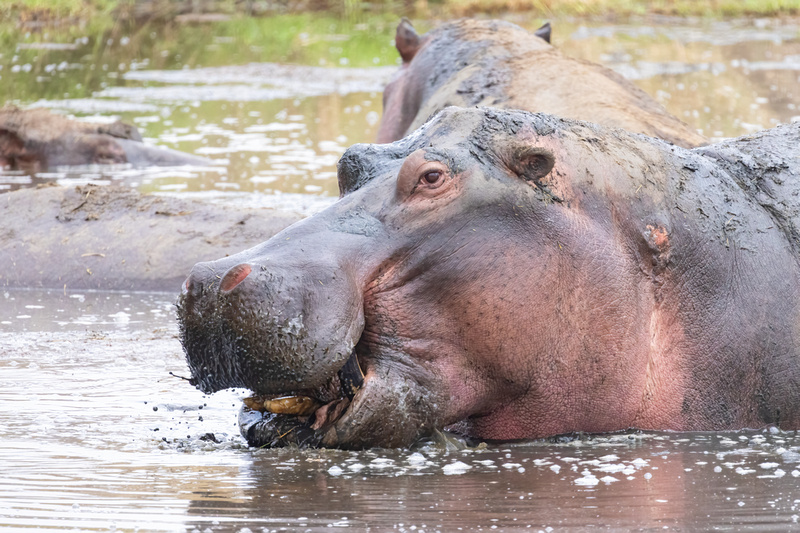
Common Hippopotamuses
This was the third attempt by two of our fellow travelers to see the migration. They were delighted. It turned out that our trip leader's brother works for one of the wildlife agencies and had provided the intelligence on the herd crossing into the triangle.
On our last full day in the Masai Mara we encountered a couple of spotted hyena and several other scavengers (lappet-faced vulture, tawny eagle, jackals, and bateluer) in a small area. The hyenas had killed and mostly consumed one of the Masai cattle the previous night. We followed the spotted hyena for some distance as he easily carried the cows head. He eventually found a shallow pool and submerged the head. Marinade? The guides indicated that this was standard hyena tactic. By submerging the head for later consumption he was reducing the smell for other predators or scavengers to track in on. So much interesting wildlife behavior.
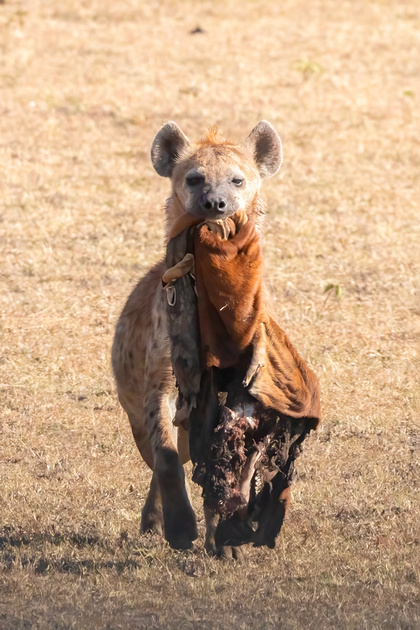
Spotted Hyena with a Masai Cow's Head

Bateleur
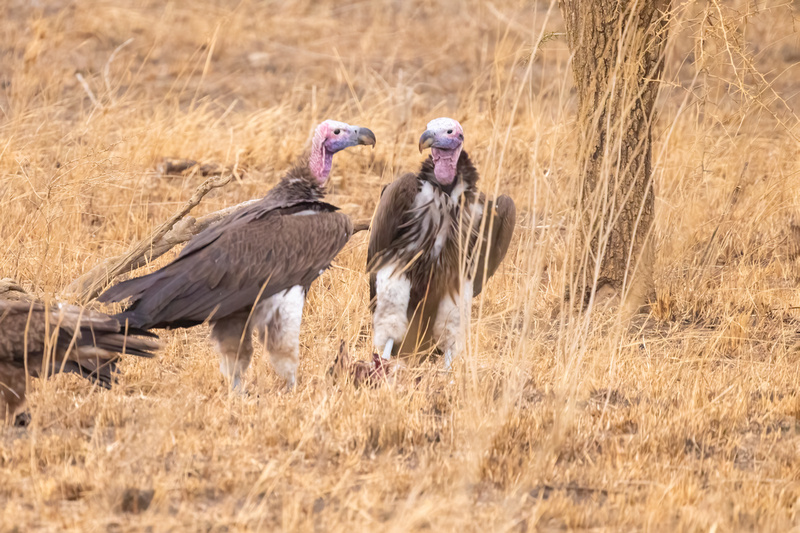
Lappet-Faced Vulture
We also had our first leopard sighting. We were able to get quite close but photo options were limited as he was in a densely vegetated tree and distinctly backlit.
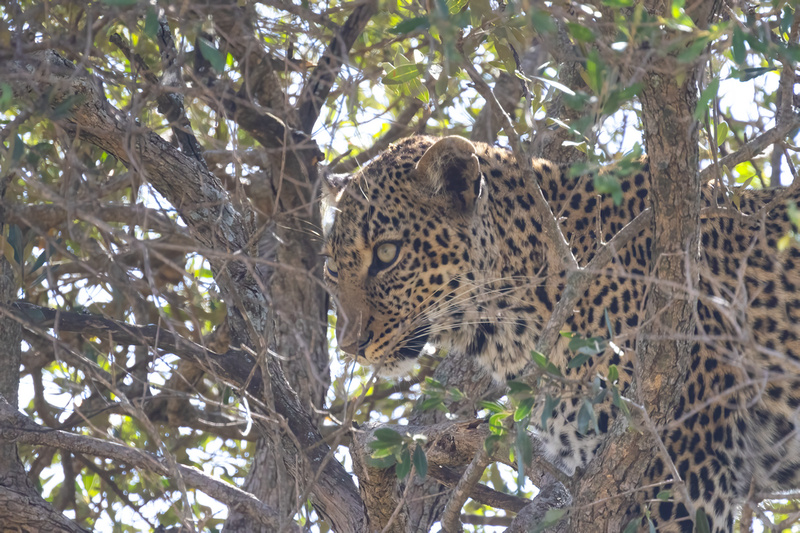
Leopard
Shortly afterwards we came across a pride of lions sleeping the day away. Apparently, there were 18 present, although I only saw six. No decent photo opportunities.
The next morning after a very rapid game drive to the airstrip we departed and flew back to Nairobi where we were met by two safari trucks. We left Nairobi and drove five hours to Amboseli National Park at the base of Mount Kilimanjaro. The country surrounding the park was desert. The park itself is fed by springs from Mount Kilimanjaro and contained some vast, lush, wetland.
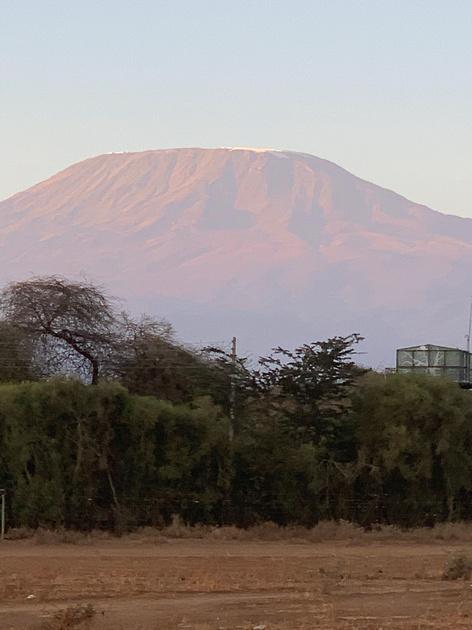
Mount Kilimanjaro - 19,341 feet above sea level
Ambosoli National Park is known for its high elephant population and is home to a few of the remaining super tuskers.
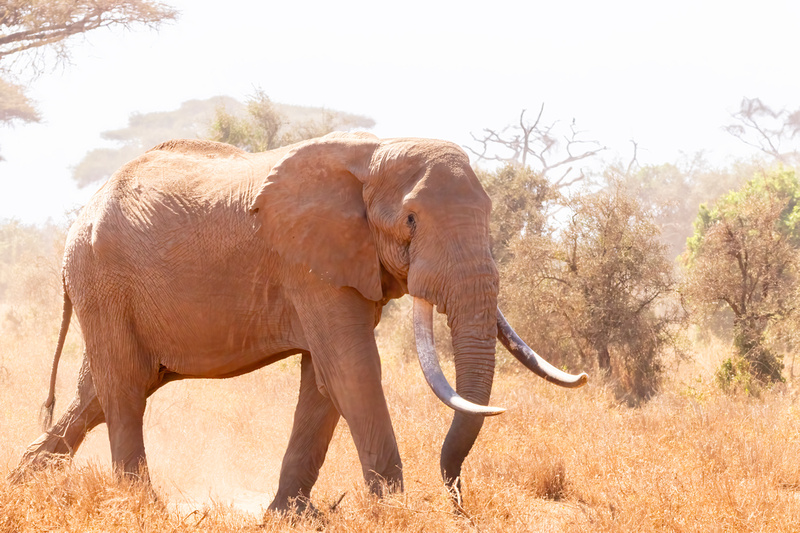
African Savanna Elephant
After an afternoon game drive that added a few life birds to my list we checked into our next camp, Sentrim Ambosoli. This camp was an upgrade from Sentrim Mara and had beautiful grounds and abundant wildlife.
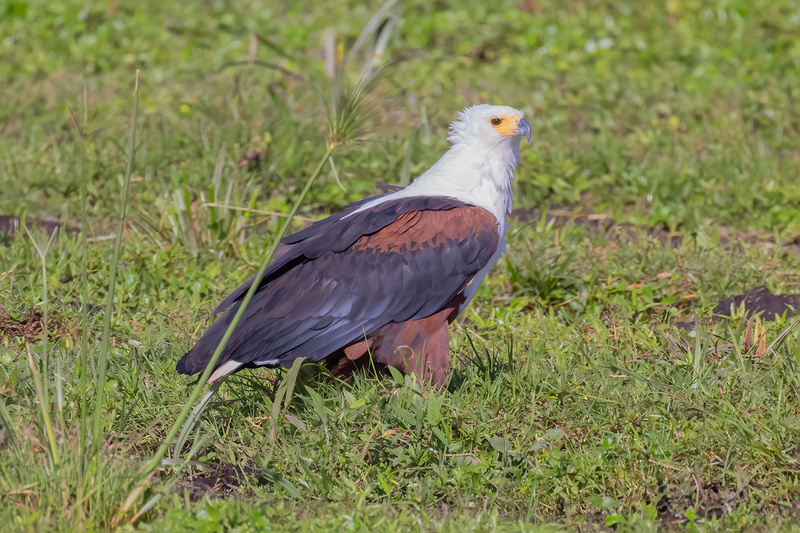
African Fish Eagle

African Jacana
The next morning we visited a local Masai village. The Masai have traditionally been nomadic cattle and goat grazers, constantly following the grass. However, the chief in the village we visited had realized the value of education and these Masai had become resident rather than nomadic, so that children could go to school. Other progressive departures from historic practices included discontinuation of female genital mutilation. While it is illegal, it still occurs. At a minimum FGM involves surgical removal of the clitoris. FGM has been practiced to insure virginity at marriage and fidelity afterwards. This village does not practice polygamy, which is still a common practice in other Masai villages.
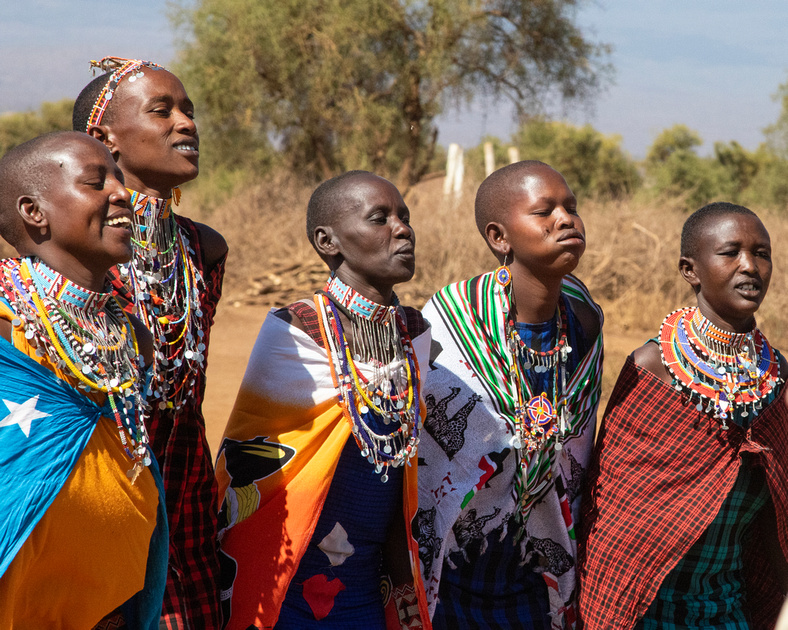
Masai Singers
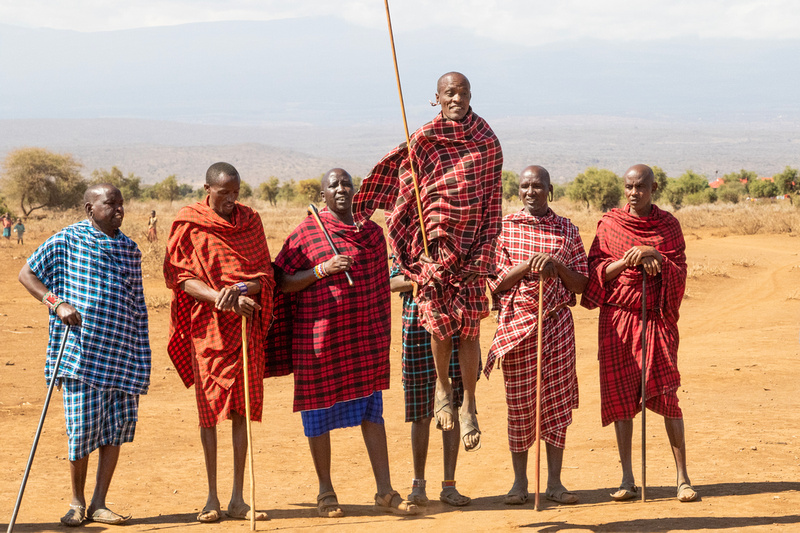
Masai Dancers
Masai wealth is determined by the number of cattle they own. A wife costs 20 cows. They proudly showed us their livestock. They had developed a contraceptive device fitted to the billy goat. Effective, but no doubt quite frustrating for the goat. All-in-all the visit to the Masai was very interesting. At this village at least, they have embarked on some major shifts in traditional practices in a single generation.
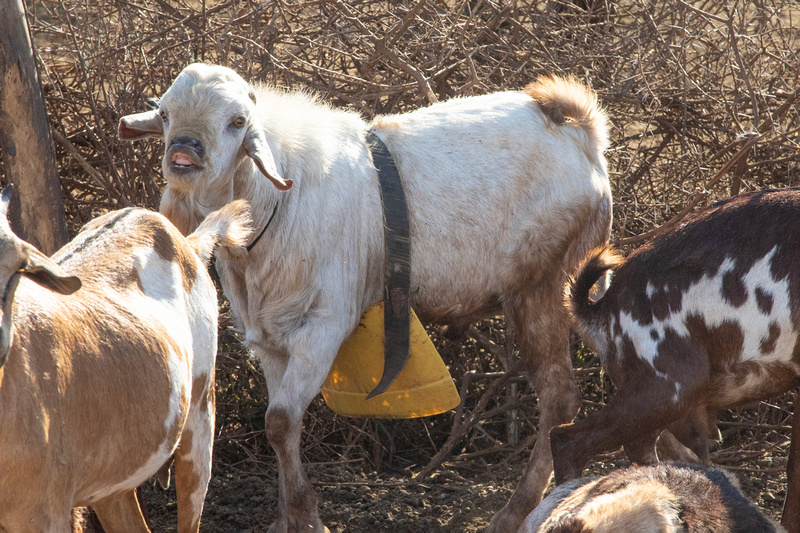
Masai Male Goat Contraceptive
That afternoon we had another game drive to another portion of the park. This area included extensive wetlands. Vast numbers of lesser and greater flamingo were present feeding in the shallow waters. African fish eagle, gray-crowned crane, great white pelican, pied avocet, African jacana, malachite kingfisher, blue-billed teal, red-billed duck, black-winged stilt, squacco heron, African spoonbill, and sacred ibis were all observed.
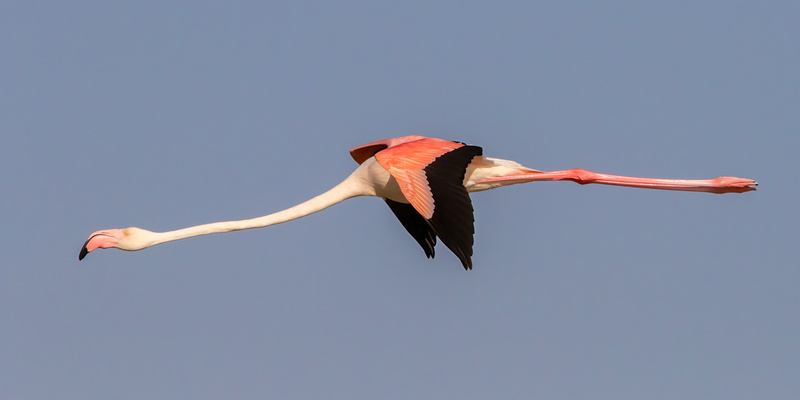
Greater Flamingo
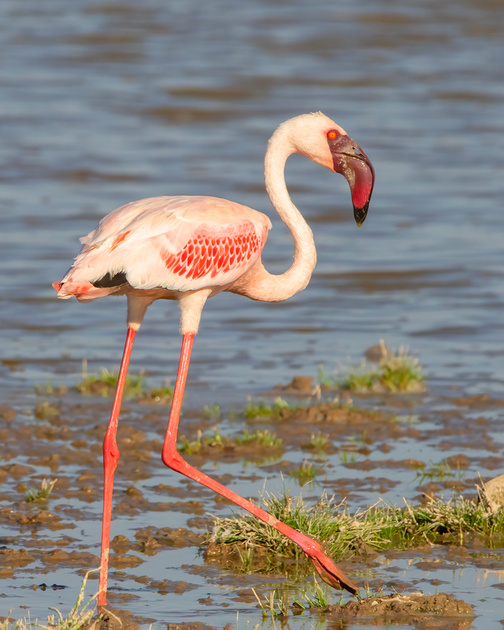
Lesser Flamingo
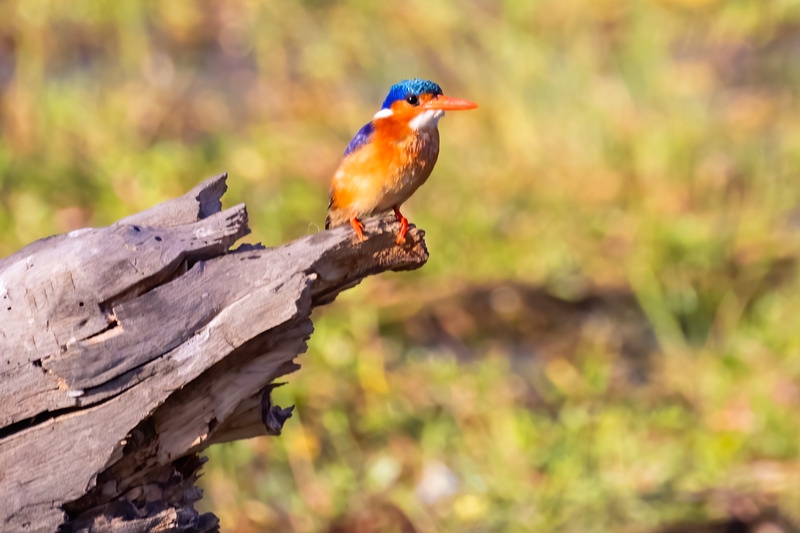
Malachite Kingfisher
We saw our first reedbuck and discovered a spotted hyena den with numerous pups not far off the roadway. The dull black pups were very active and playful. Hippo and elephant were both commonly observed.
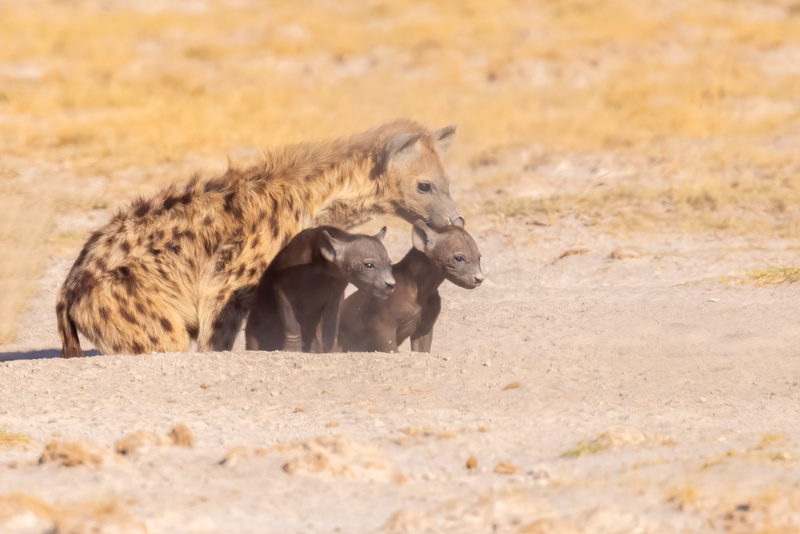
Spotted Hyena
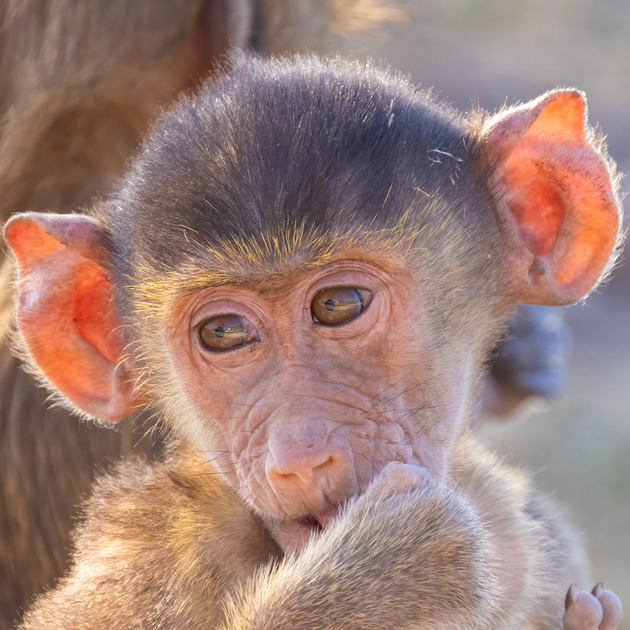
Young Baboon
Due to the limits on blog size in Zenfolio, the Tanzania portion of the trip will be presented as a separate blog.
We have been fortunate to travel to Costa Rica, Guatamala, and Panama on previous Central America trips. These were excellent tours and we both really enjoyed the beautiful countries and the friendly residents. Each tour offered at least some opportunities for wildlife photography. However, I wanted to plan a trip that was dedicated to wildlife photography. Two weeks of dawn to dark wildlife photography was not super high on Becky's bucket list, but she was up for an adventure. I found what I was looking for with Aratinga Tours. They offer a 2 week all-inclusive tour that features some of the best photo lodges, locations, and guides. I wanted to try and squeeze the trip in during April, before the start of the rainy season in May. I contacted Pieter Westra, the owner of Aratinga Tours www.aratinga-tours.com and attempted to book his featured wildlife photography tour on short notice. Pieter was unable to book us in all the locations, but countered with an amended schedule, which included at least some time at each advertised location and some nicely upgraded lodges. We accepted the amended itinerary and booked flights out of San Francisco.
We arrived in Costa Rica on the evening of April 6th and were met at the airport by an english speaking representative of Aratinga Tours. He transported us through downtown San Jose to a small boutique hotel, Hotel Buena Vista. The hotel is located in a small coffee plantation in the hills north of San Jose. Our room offered excellent views of the city.
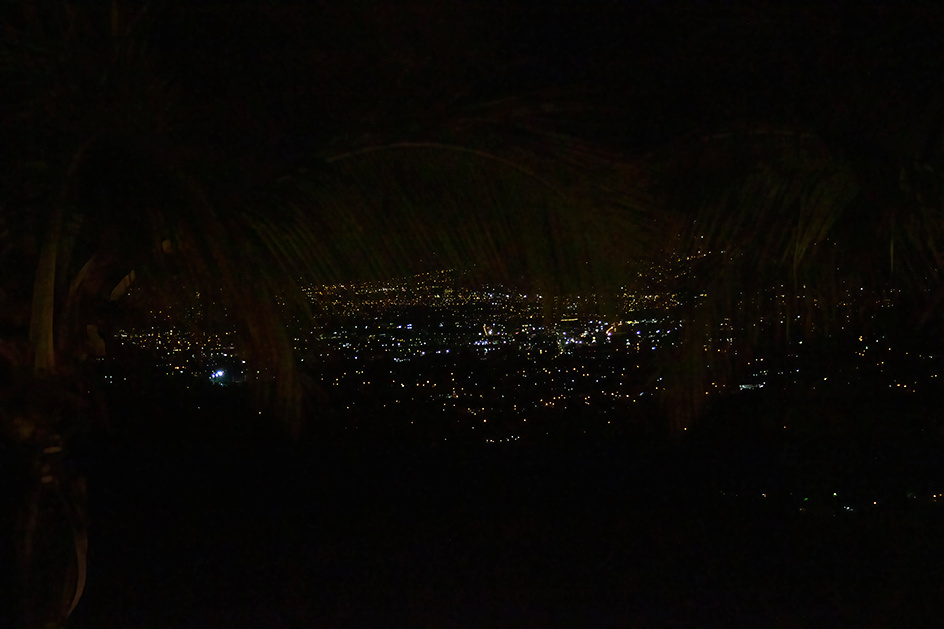
The view from our balcony at Hotel Buena Vista
I was up with the sun the next morning and explored the hotel garden and coffee plantation. Difficult photography, but I did start adding to my species list. Most were common species like clay-colored thrush, rufous-tailed hummingbird, great kiskadee, red-billed pigeon, white-winged dove, brown jay, scarlet-rumped tanager and a few others. After a leisurely breakfast, we met with a representative of Alamo car rentals in our hotel lobby. We had selected a self driving tour, although Aratinga Tours also offers tours with dedicated drivers. The cost of the rental car and full insurance on it was included in the cost of the tour. Also included was a phone containing a wifi hotspot and a navigation program. Highway signage and street addresses are generally lacking in Costa Rica, so the nav program gave us confidence we could find our way around without getting lost. We also received very detailed turn by turn written directions, which included travel times, and distances. These written directions were generally excellent and we really only used the navigation system to traverse the major cities. The wifi hotspot allowed us to keep in touch with family at home through Facebook Messenger.
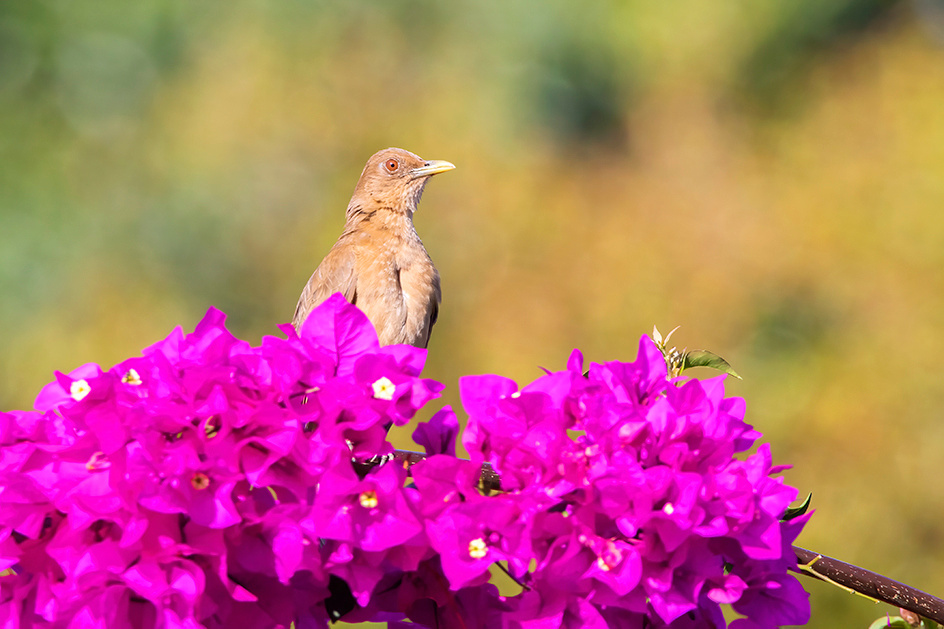
Clay-Colored Thrush. The national bird of the country of Costa Rica
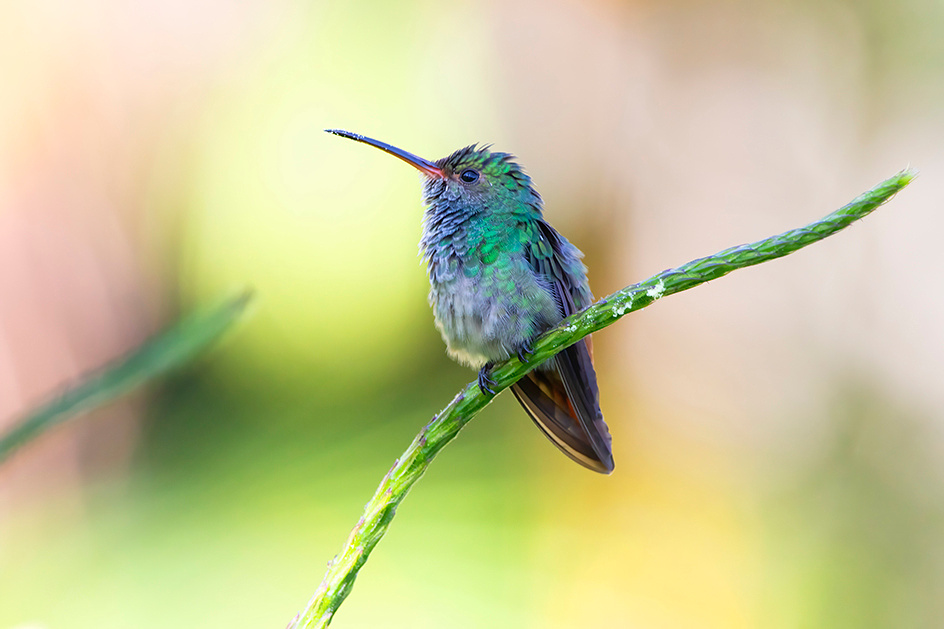
Rufous-Tailed Hummingbird - Probably the most widespread and common hummingbird in Costa Rica.
The next stop on our itinerary was La Paz Waterfall Gardens (Alajuela Province, Sarapiqui) on the eastern slope of Poas Volcano. These gardens/zoo are a major Costa Rican tourist attraction which includes four waterfalls, over 100 species of animals, and 3.5 kms of cloudforest hiking trails. The park grounds/garden are beautifully maintained. Photo opportunities included hummingbird gardens, a sepenterium, a frog exhibit, a butterfly exhibit, an a large walk through aviary which contained birds from all over Costa Rica including some we were unable to see elsewhere. Exhibits containing sloths and monkeys were popular. My favorite exhibit was the big cat exhibits which included jaguars, mountain lions, margay, and ocelots in very lifelike setting. This stop was an excellent introduction to the biodiversity of Costa Rica. Photography was difficult, but I was able to get a few keepers. I kept several photos of hummingbirds on feeders. I normally try to capture wildlife in natural setting, but many of the hummingbirds were only observed on the feeders at this one location. We ended up spending about 2.5 hours at the garden (including time shopping for souvenirs for our granddaughter (Piper Magnolia).
 Gray-Headed Chachalaca
Gray-Headed Chachalaca
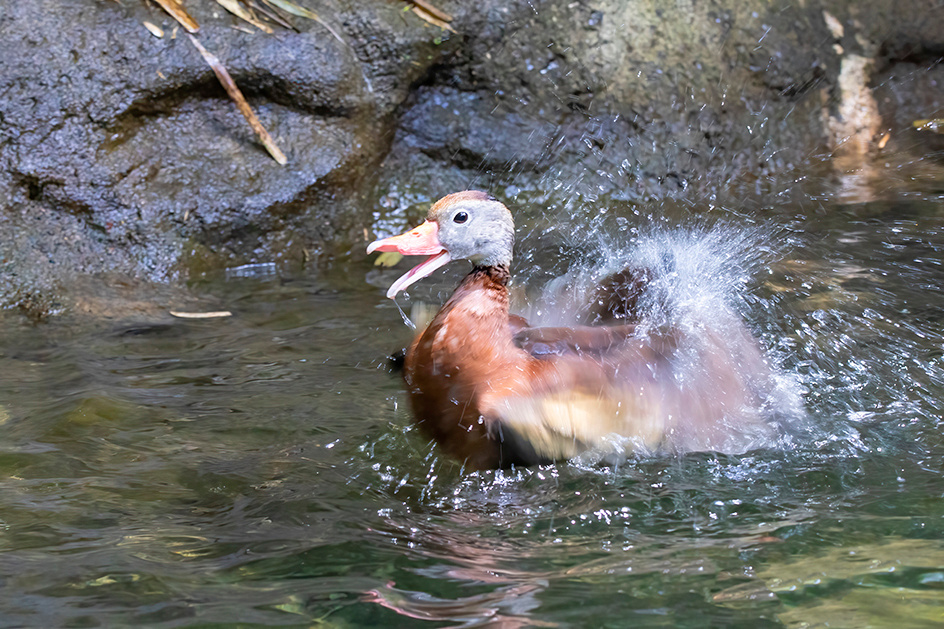 Black-Bellied Whistling Duck bathing.
Black-Bellied Whistling Duck bathing.
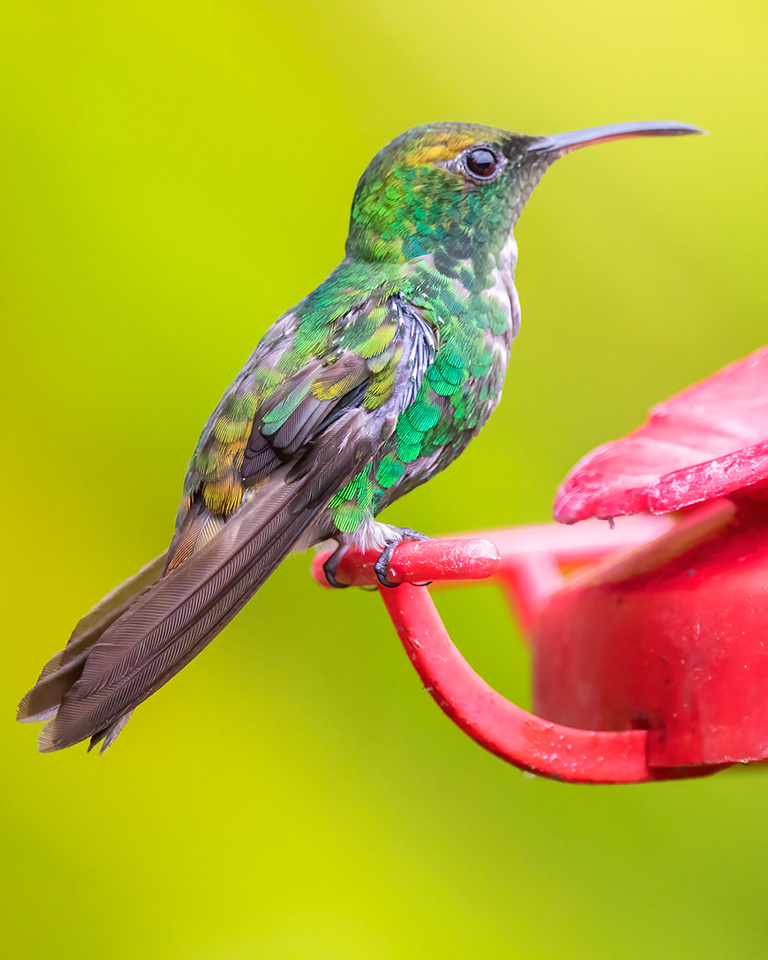
Coppery-Headed Emerald
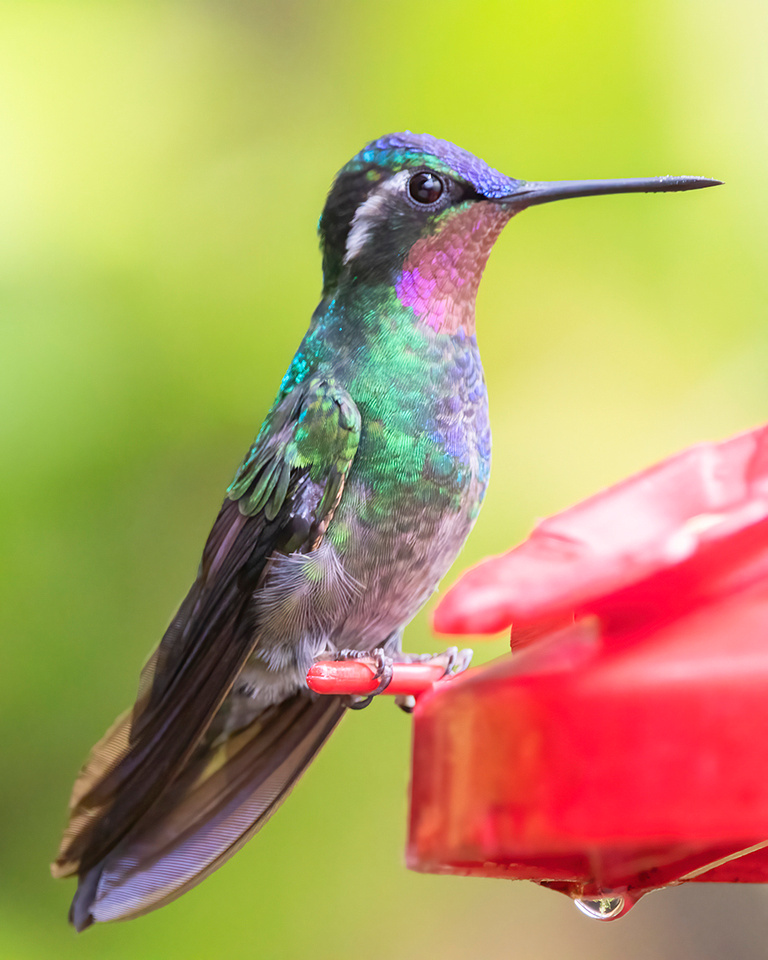
Purple-Throated Mountain Gem
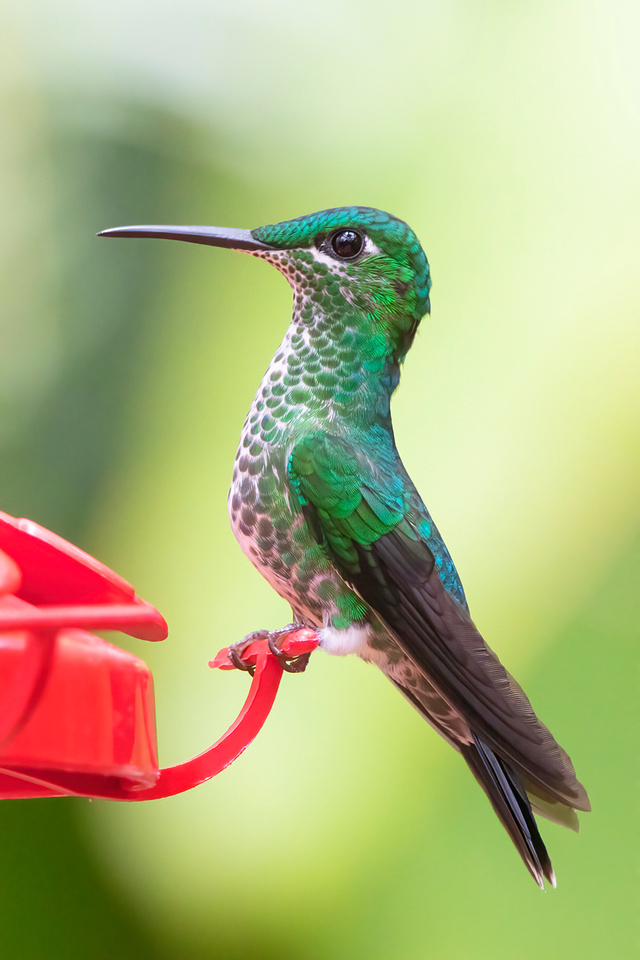
Green-Crowned Brilliant
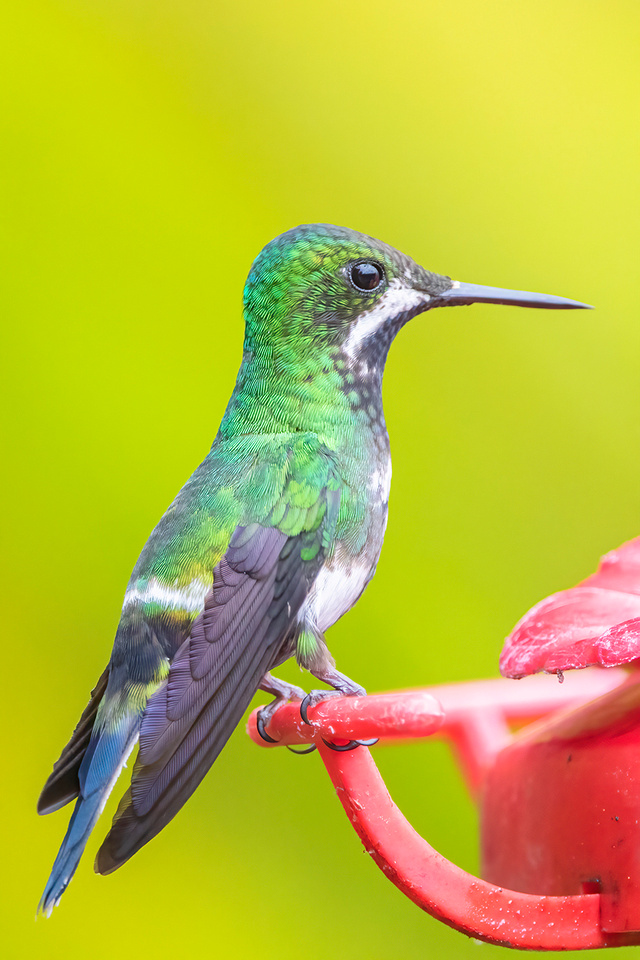
Green Thorntail
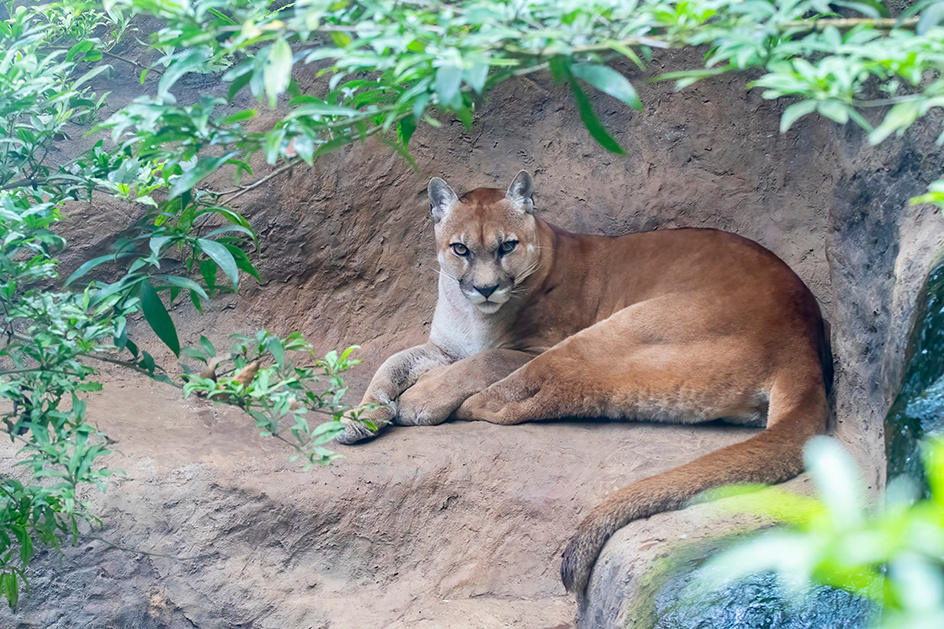 Mountain Lion - Love the eye contact.
Mountain Lion - Love the eye contact.
 Spider Monkey
Spider Monkey
Our next venue on the itinerary was Laguna de Lagarto Lodge near Boca Tapada. This lodge is in the Caribbean lowlands near the Nicaraguan border. The last 22kms were on a potholed gravel road which did not allow for rapid travel. I did manage an image of a russet-naped wood rail and a social flycatcher as we were driving in.

Russet-Naped Woodrail - Cruising along the roadside ditch
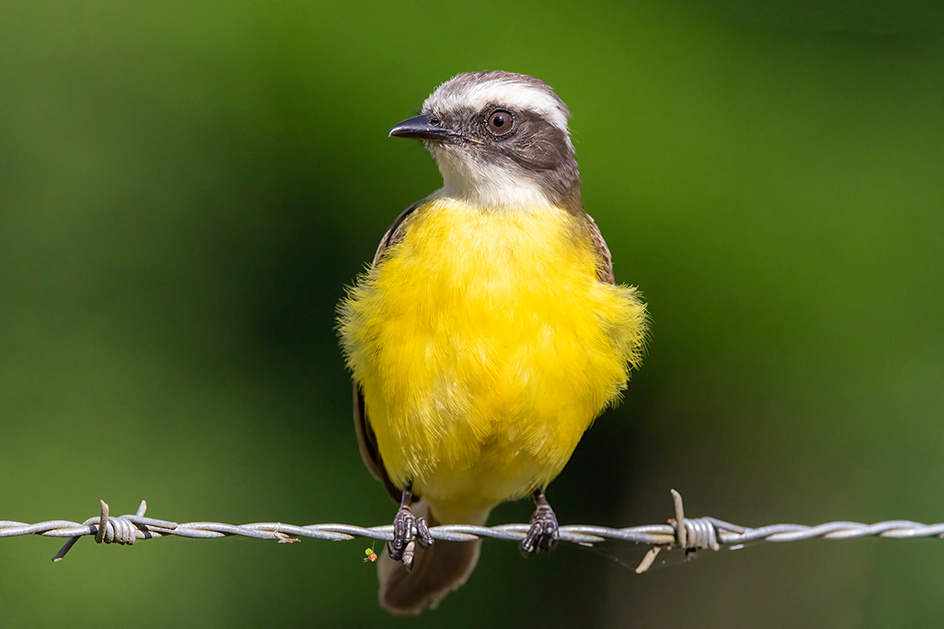 Social Flycatcher - A very tame bird. I was probably less than 3 feet away when I took this image.
Social Flycatcher - A very tame bird. I was probably less than 3 feet away when I took this image.
It was warm and humid at this location with at least one rain shower each day. It is a pretty basic lodge, lacking air conditioning and some other luxury amenities. There were very attractive setups placed at various distances from the covered shooting area. I was able to capture excellent images of many avian species at the feeders and spent most of each day at the feeders. One of the birding highlights at this location was a pair of great green macaws which did a flyby as I was unloading the car. Unfortunately they never came in to the feeders.
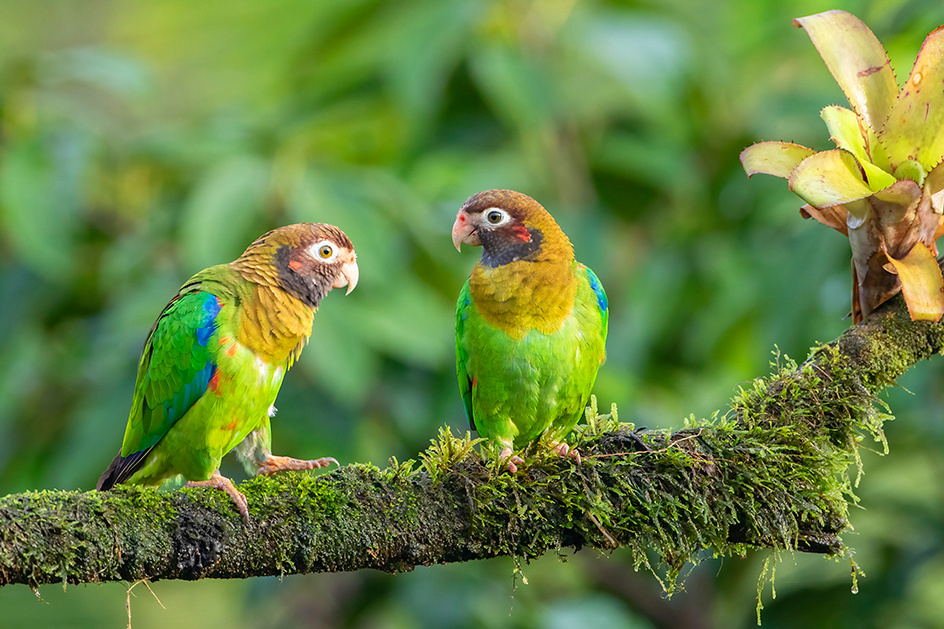 Brown-Hooded Parrot
Brown-Hooded Parrot
 Brown-Hooded Parrot - These parrots flocked to the feeders in noisy groups of two to eight birds at a time.
Brown-Hooded Parrot - These parrots flocked to the feeders in noisy groups of two to eight birds at a time.
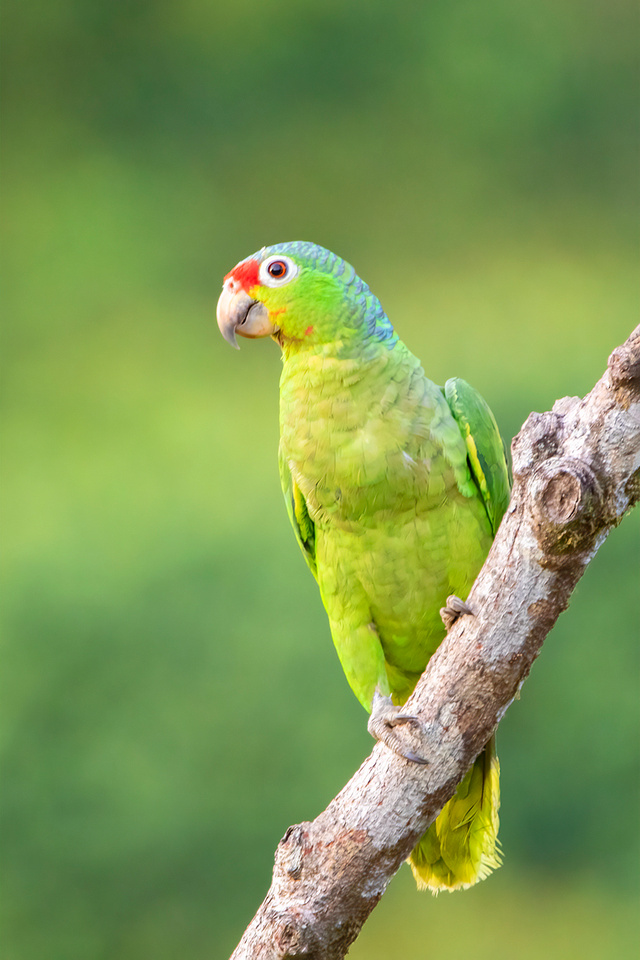
Red-Lored Parrot A pair of these large parrots came in several times a day checking out potential nest cavities.
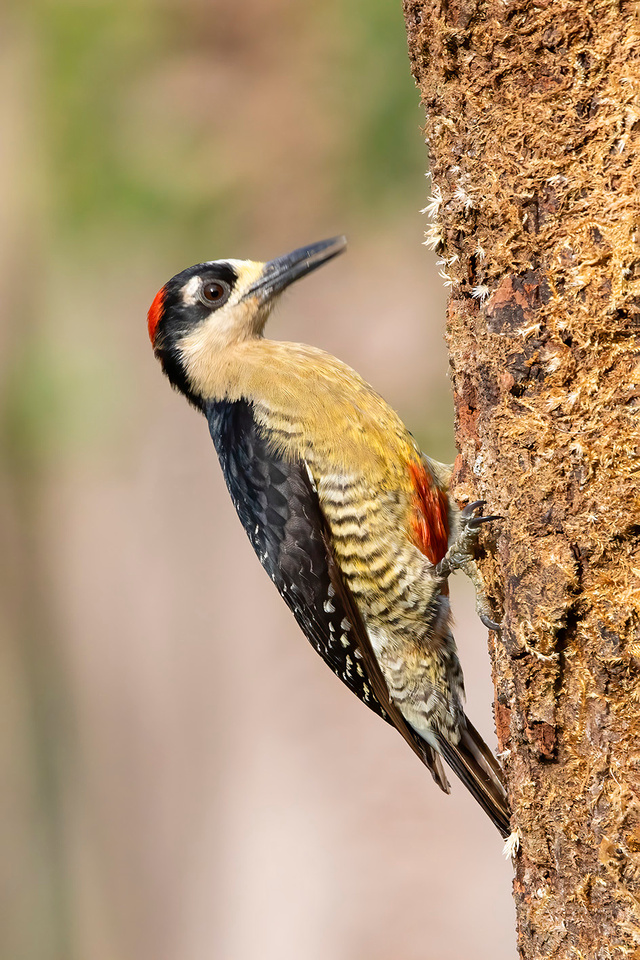
Black-Cheeked Woodpecker
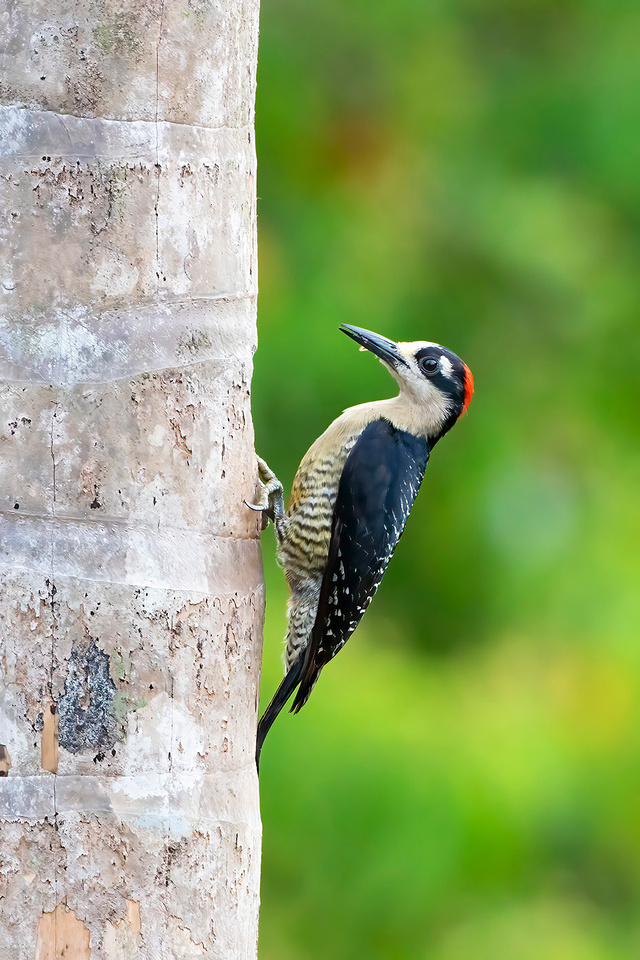
Black-Cheeked Woodpecker - A pair of these woodpeckers were nesting in a cavity next to the photography platform.
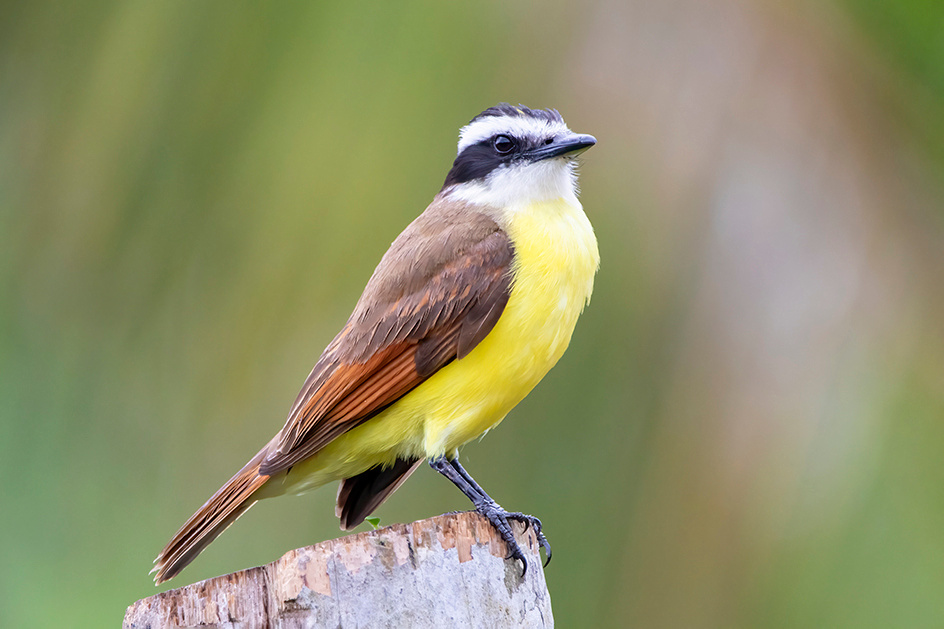 White-Ringed Flycatcher
White-Ringed Flycatcher
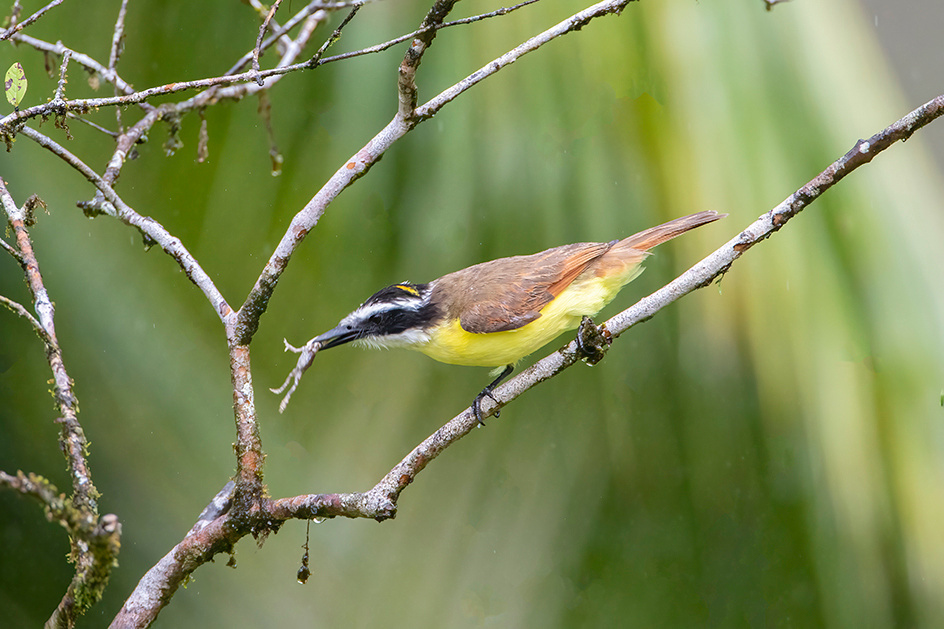
White-Ringed Flycatcher - Apparently their diet is not restricted to flies. This one caught and ate a small tree frog.
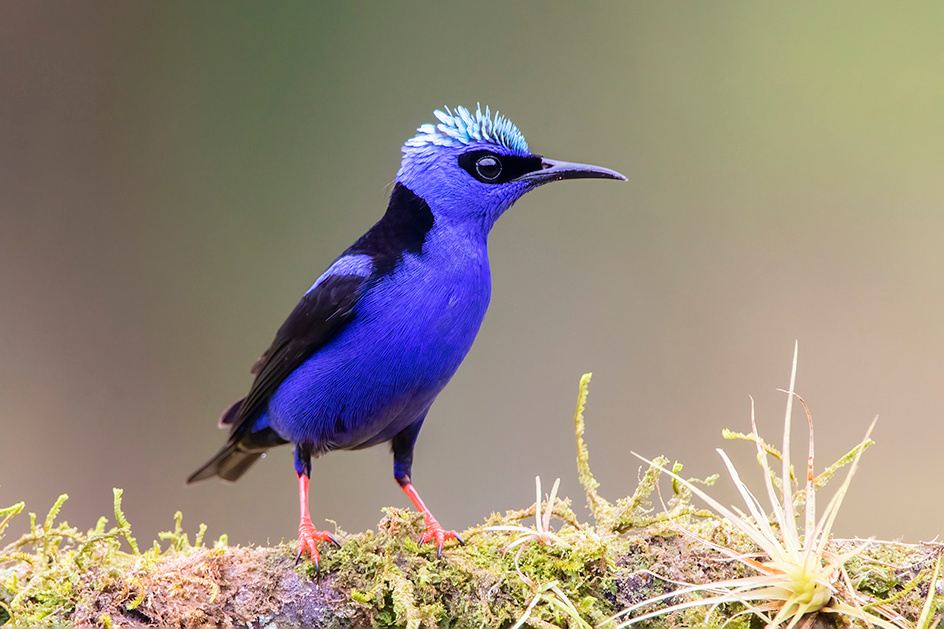 Red-Legged Honeycreeper - I had previously observed this spectacular species in Panama, but had failed to get any satisfactory photos. I had many opportunities to capture this species on the trip. This is the male.
Red-Legged Honeycreeper - I had previously observed this spectacular species in Panama, but had failed to get any satisfactory photos. I had many opportunities to capture this species on the trip. This is the male.

Red-Legged Honeycreeper - Generally it is considered poor form to photograph a bird if the bait is visible. However, this was my only image where the golden wing feathers were visible.
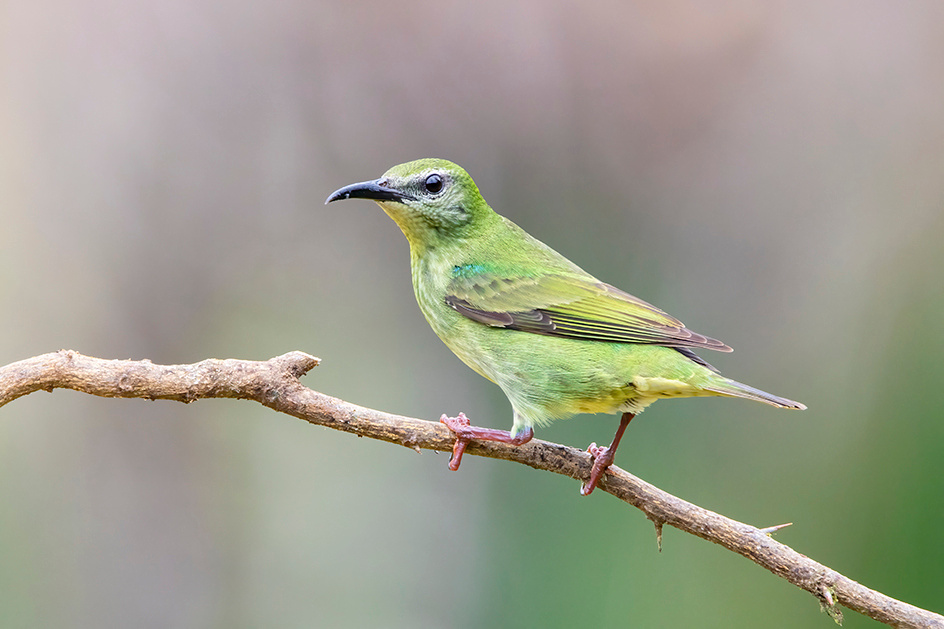 Red-Legged Honeycreeper (Female)
Red-Legged Honeycreeper (Female)
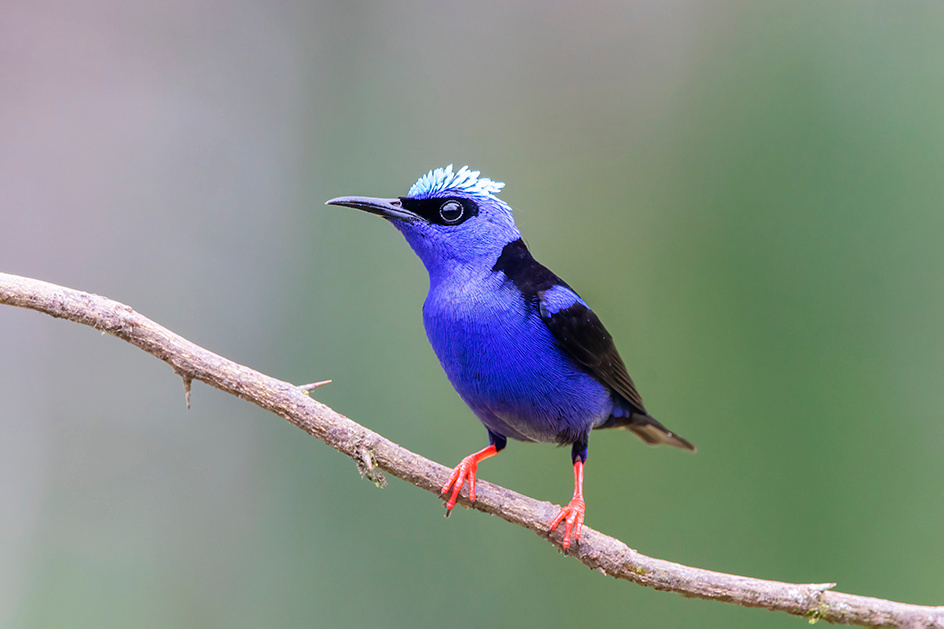 Red-Legged Honeycreeper - One of three honeycreeper species we were able to photograph at this location. Note the raised turquoise crest.
Red-Legged Honeycreeper - One of three honeycreeper species we were able to photograph at this location. Note the raised turquoise crest.
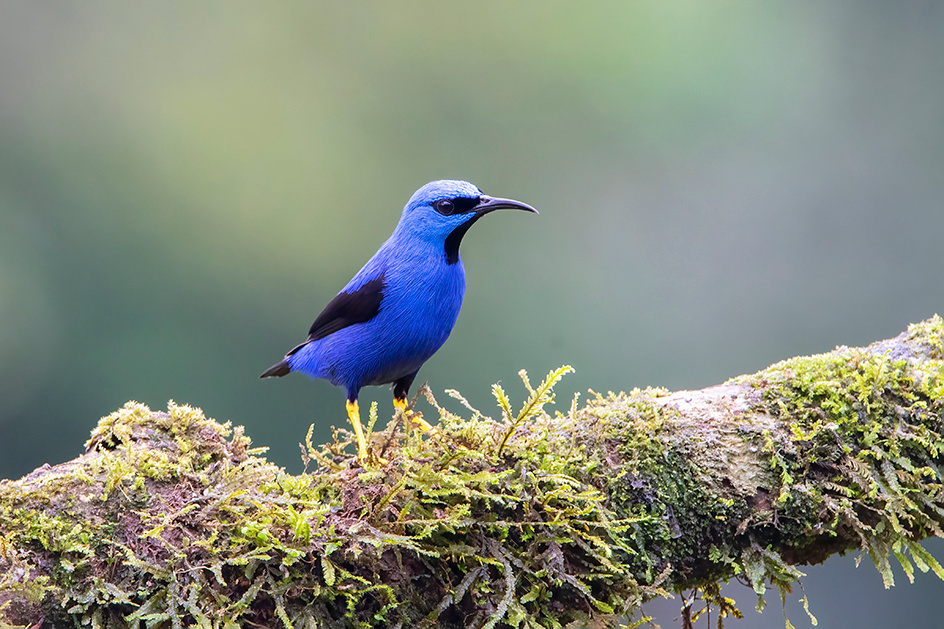 Shining Honeycreeper - Note the yellow legs.
Shining Honeycreeper - Note the yellow legs.
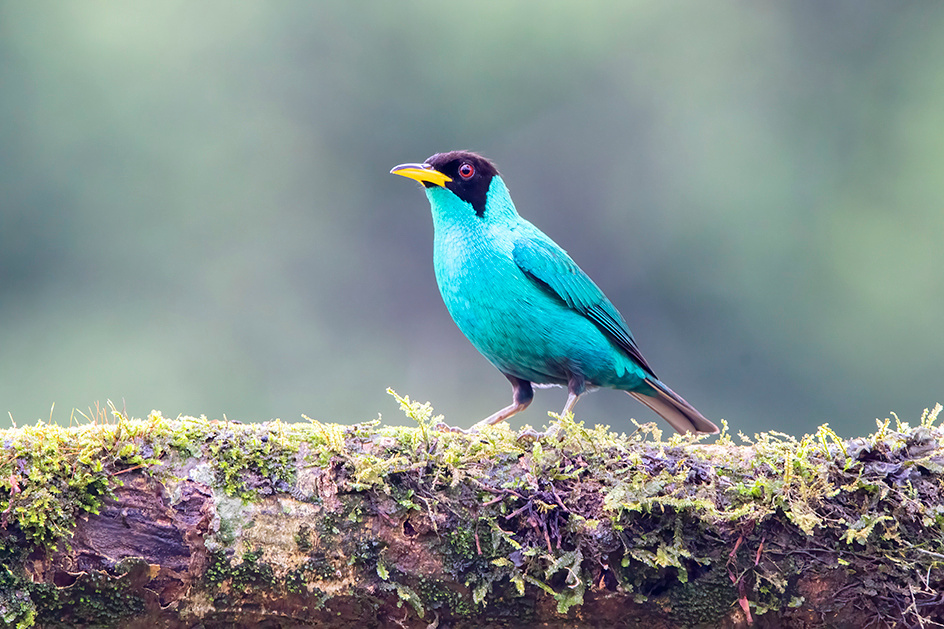 Green Honeycreeper (Male)
Green Honeycreeper (Male)
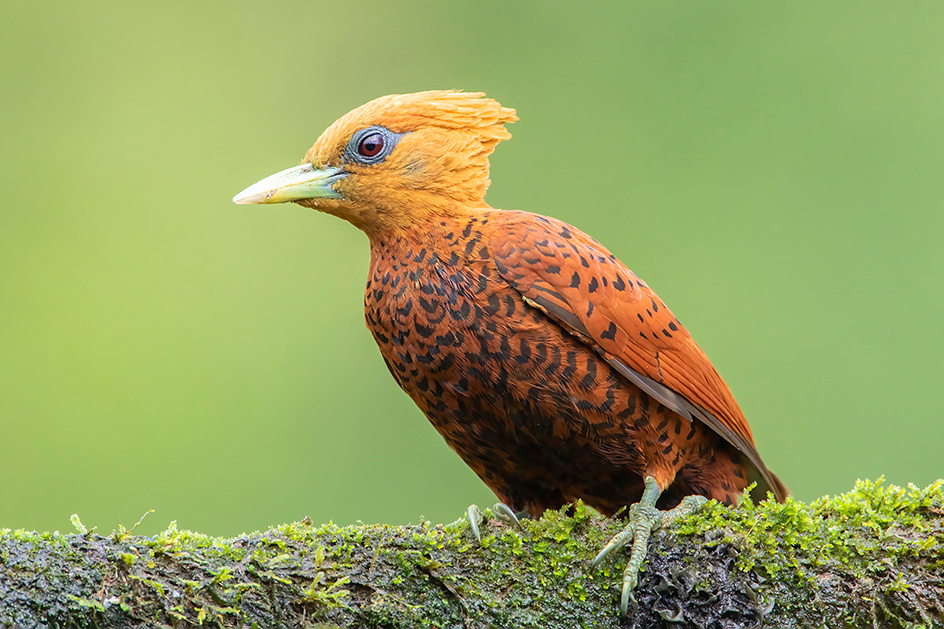 Chestnut-Colored Woodpecker (Female)
Chestnut-Colored Woodpecker (Female)
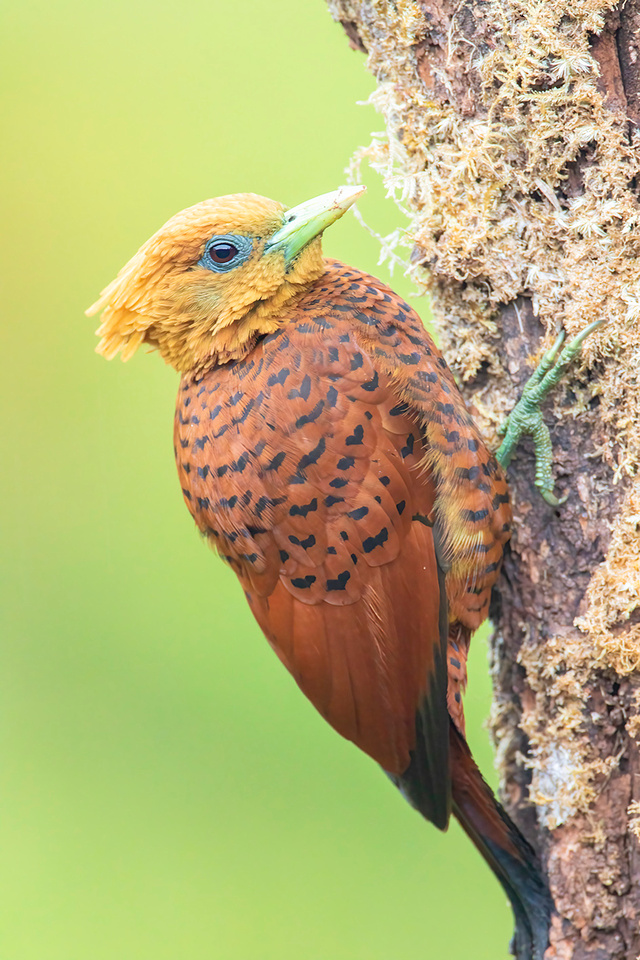
Chestnut-Colored Woodpecker - Beautiful active birds which frequently came into the fruit feeders,

Chestnut-Colored Woodpecker (Male)
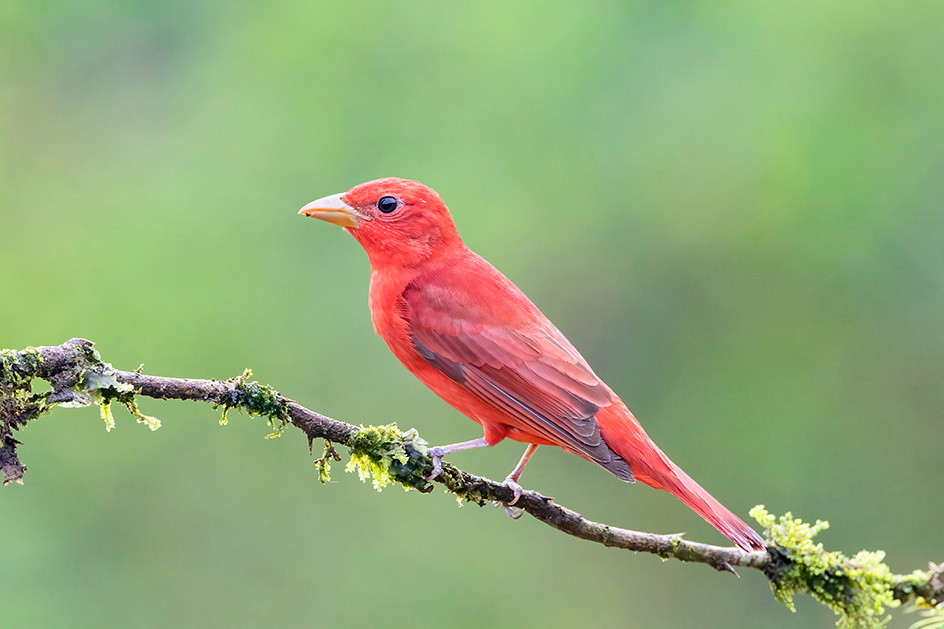 Summer Tanager (Male)
Summer Tanager (Male)
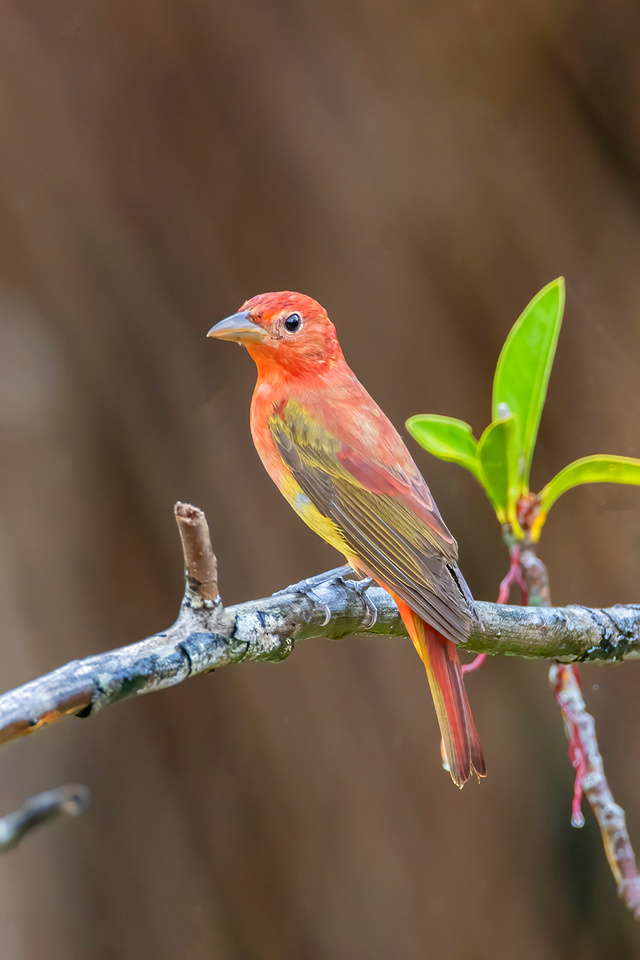
Summer Tanager (Immature Male) I originally misidentified this tanager as a flame- colored tanager.
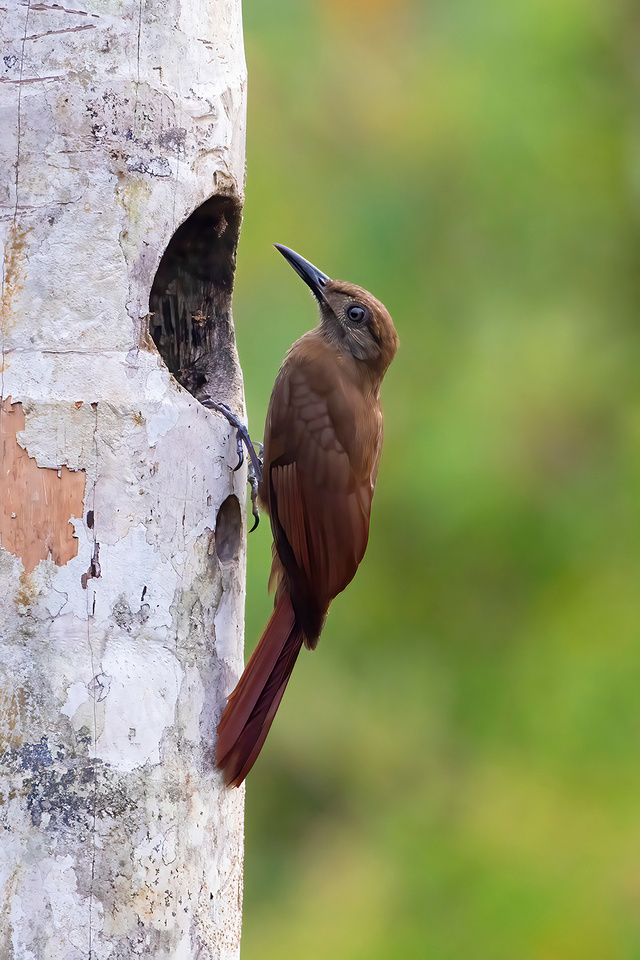
Plain-Brown Woodcreeper - Appropriately named.
 Scarlet-Rumped Tanager - One of the many beautiful tanager species we encountered.
Scarlet-Rumped Tanager - One of the many beautiful tanager species we encountered.
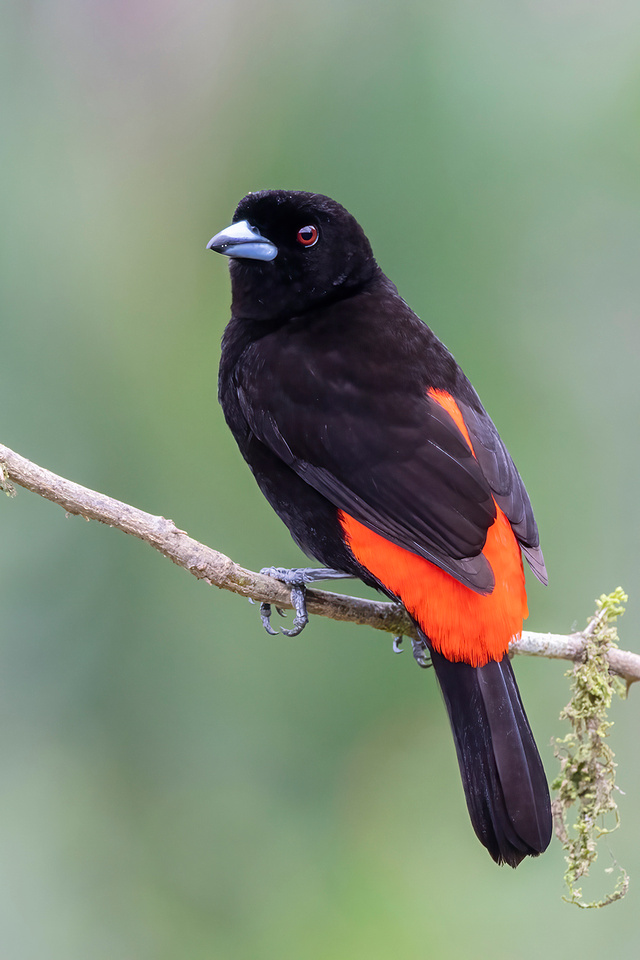
Scarlet-Rumped Tanager (Male)
 Scarlet-Rumped Tanager (Female) - Not quite as striking as the male.
Scarlet-Rumped Tanager (Female) - Not quite as striking as the male.

Olive-Backed Euphonia - Subtle coloration.
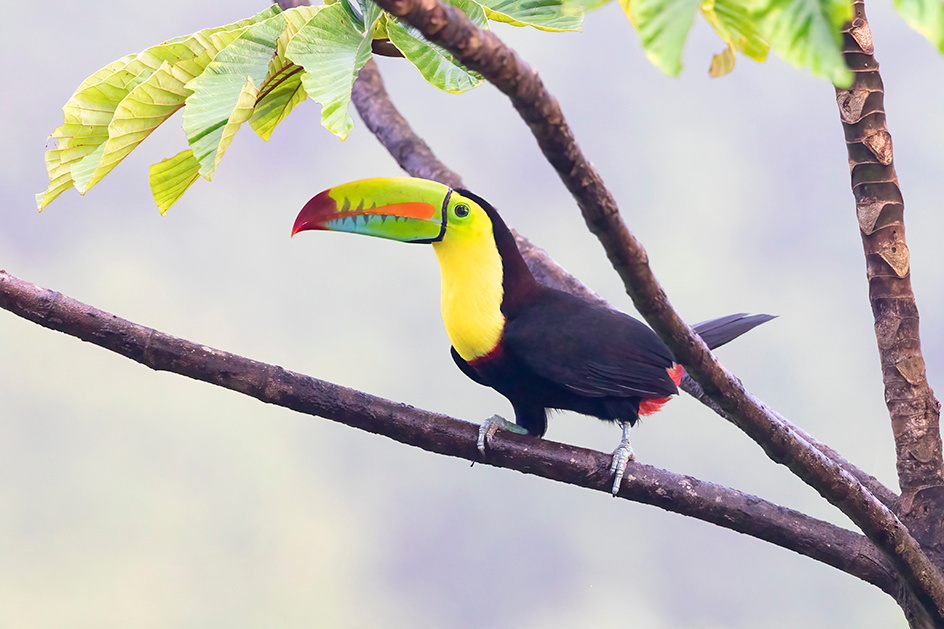 Keel-Billed Toucan
Keel-Billed Toucan
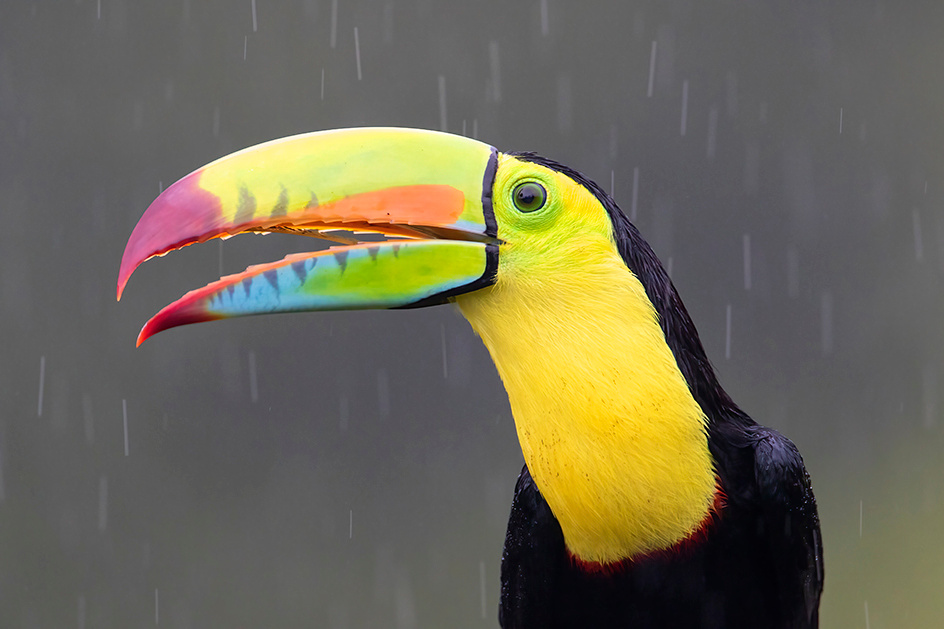 Keel-Billed Toucan in the rain
Keel-Billed Toucan in the rain
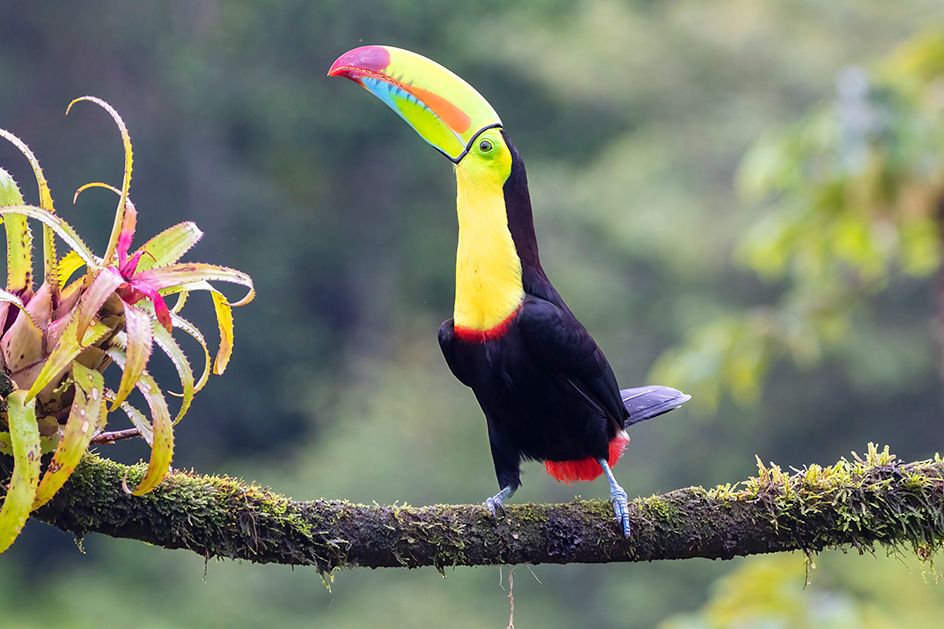 Keel-Billed Toucan
Keel-Billed Toucan
 Collared Aracari - Frequently encountered in groups of five or six.
Collared Aracari - Frequently encountered in groups of five or six.
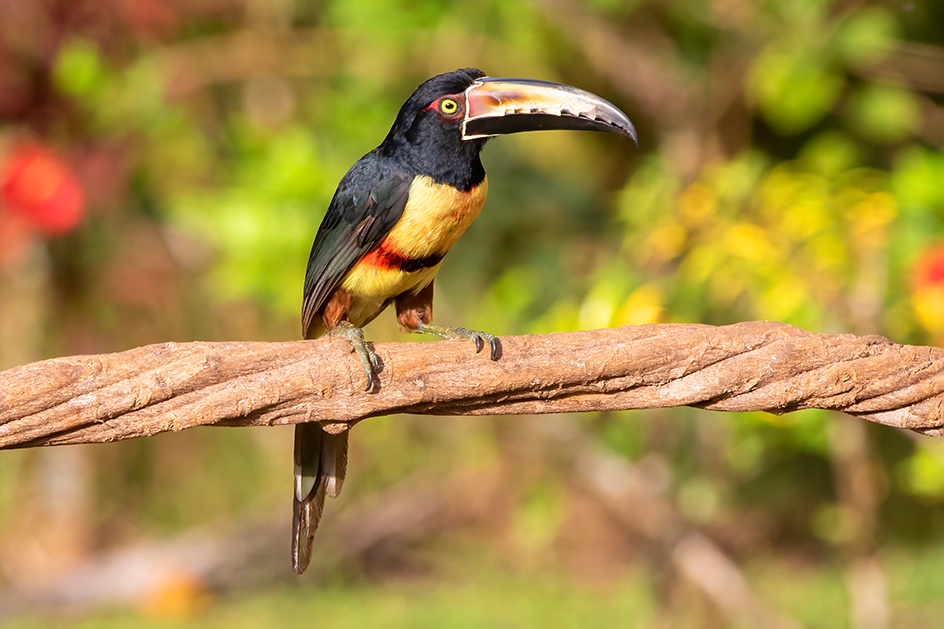 Collared Aracari
Collared Aracari
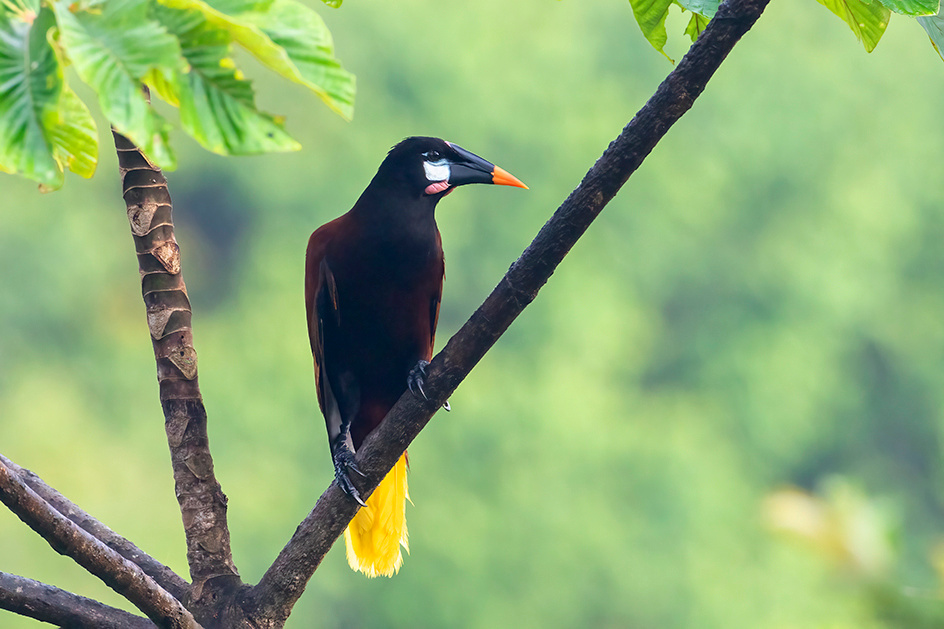 Montezuma Oropendola - Crow sized bird eating fruit, nectar, invertebrates and vertebrates.
Montezuma Oropendola - Crow sized bird eating fruit, nectar, invertebrates and vertebrates.
 Montezuma Oropendola Nest Colony - Dense colony of hanging nests
Montezuma Oropendola Nest Colony - Dense colony of hanging nests
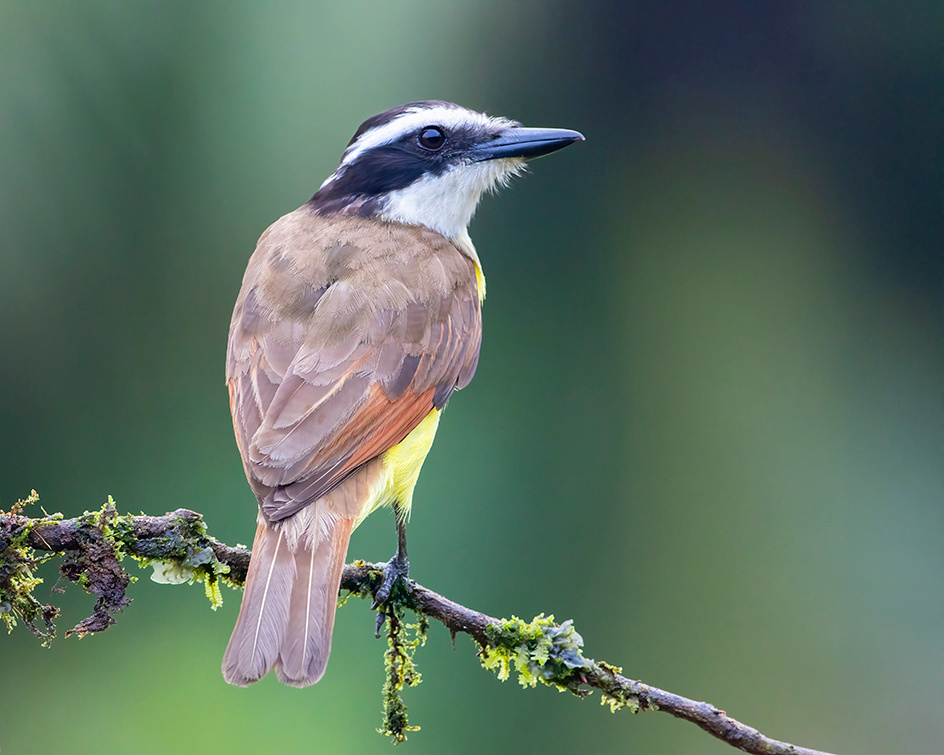 Great Kiskadee - A large, colorful, noisy flycatcher
Great Kiskadee - A large, colorful, noisy flycatcher
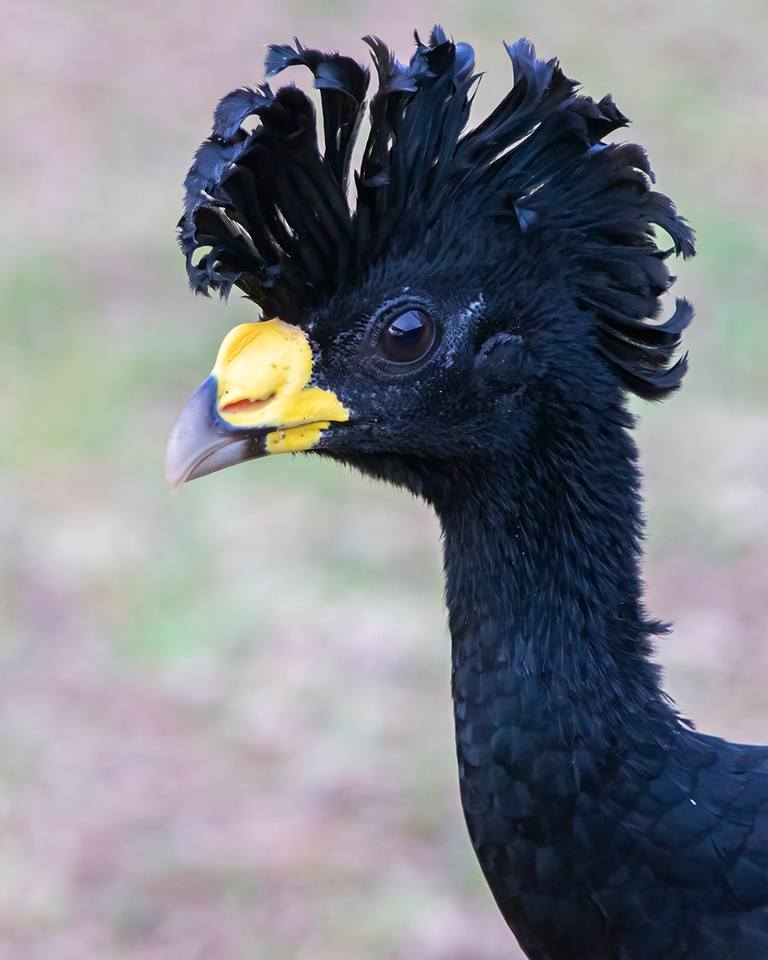
Great Curassow (Male) - While capable of flight, these large birds were generally observed on the forest floor.
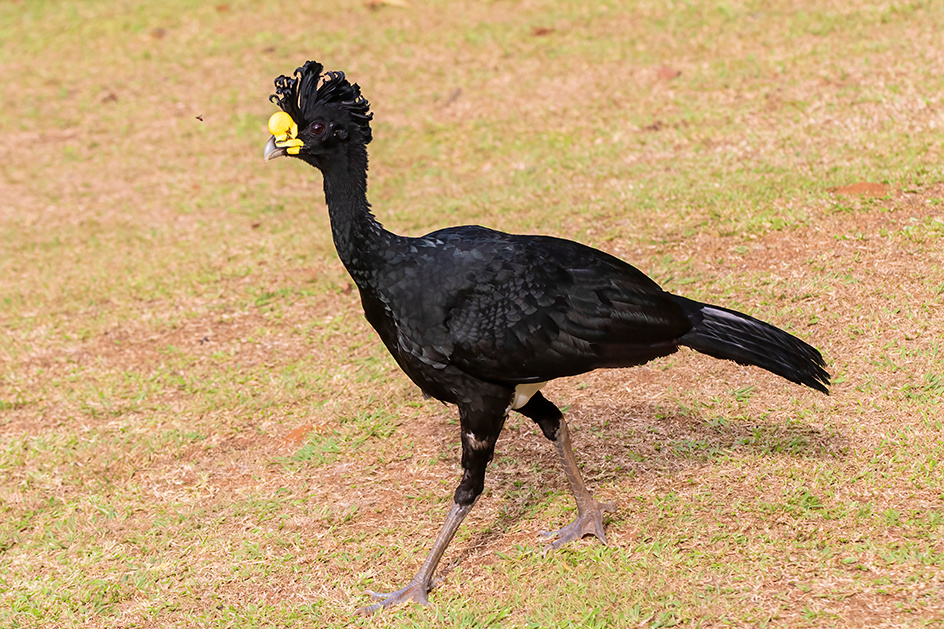 Great Curassow (Male) - Similar in size to a small turkey.
Great Curassow (Male) - Similar in size to a small turkey.
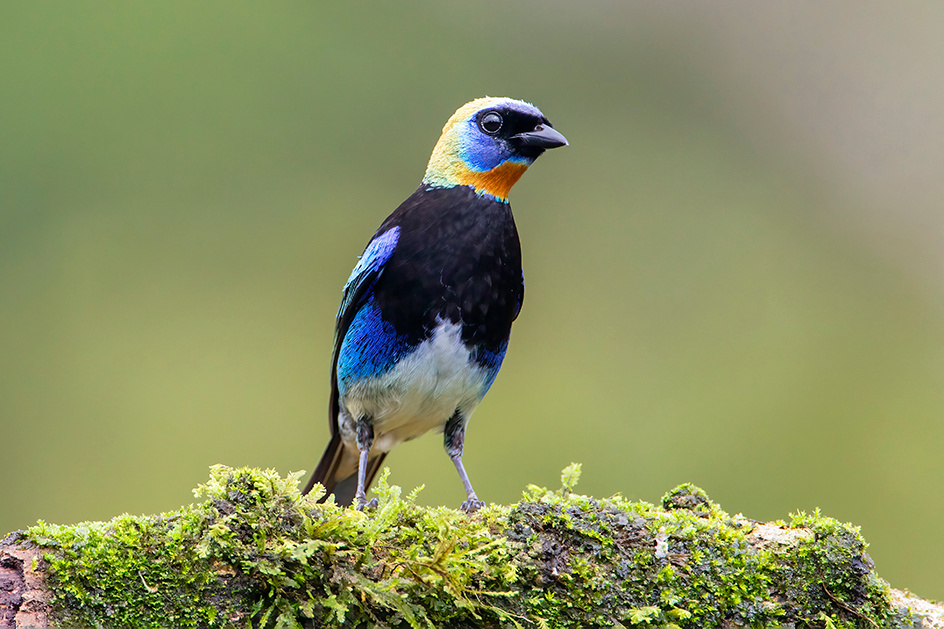 Golden-Hooded Tanager - Small but colorful tanager species we observed in several locations and habitats.
Golden-Hooded Tanager - Small but colorful tanager species we observed in several locations and habitats.
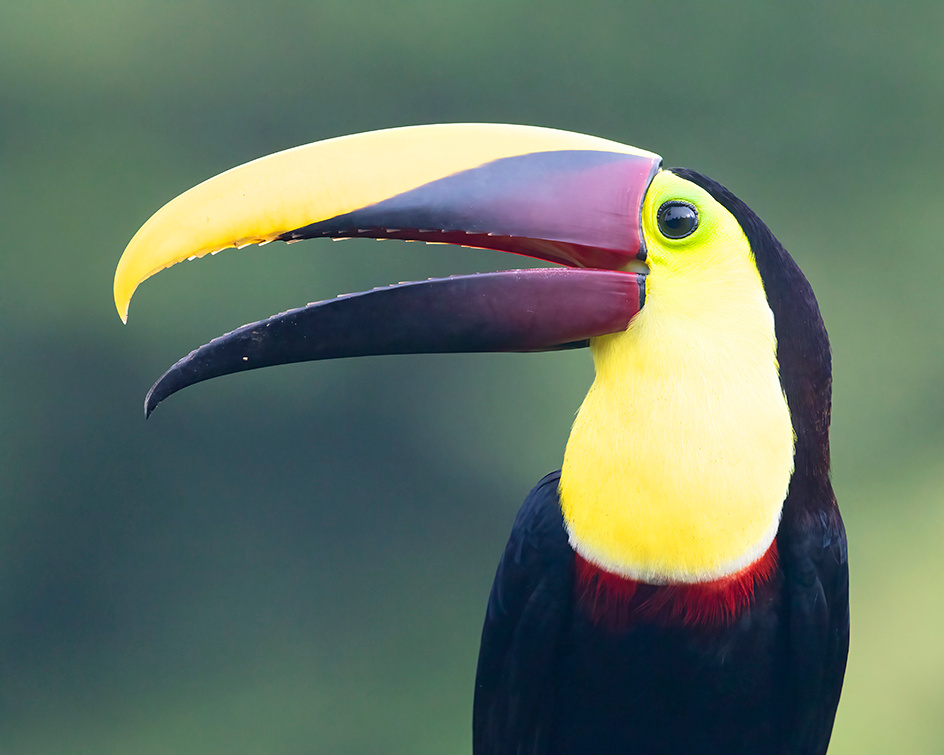 Chestnut-Mandibled Toucan - These large cavity nesters dominated the fruit feeders.
Chestnut-Mandibled Toucan - These large cavity nesters dominated the fruit feeders.
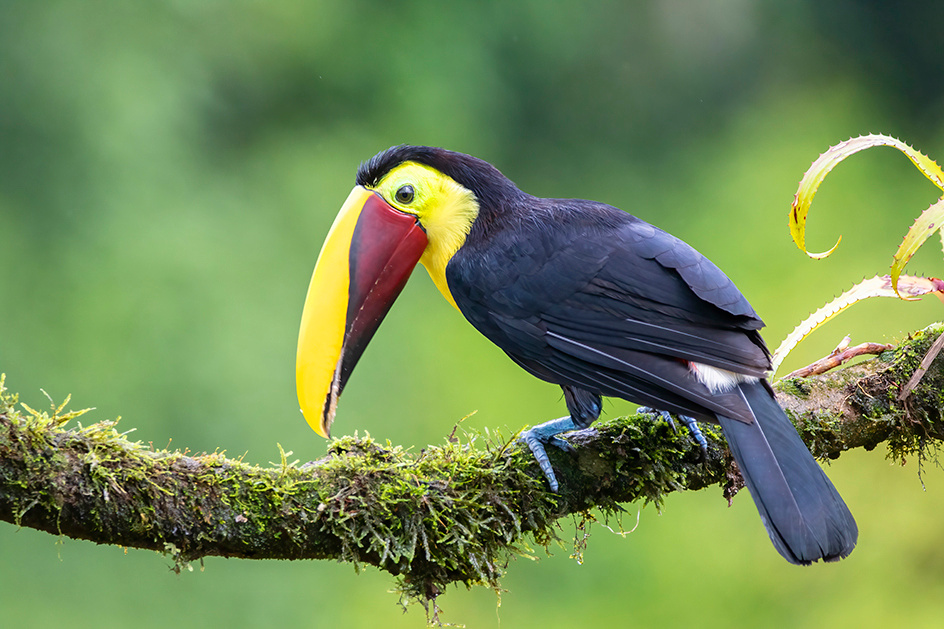 Chestnut-Mandibled Toucan - Note the bright blue legs.
Chestnut-Mandibled Toucan - Note the bright blue legs.
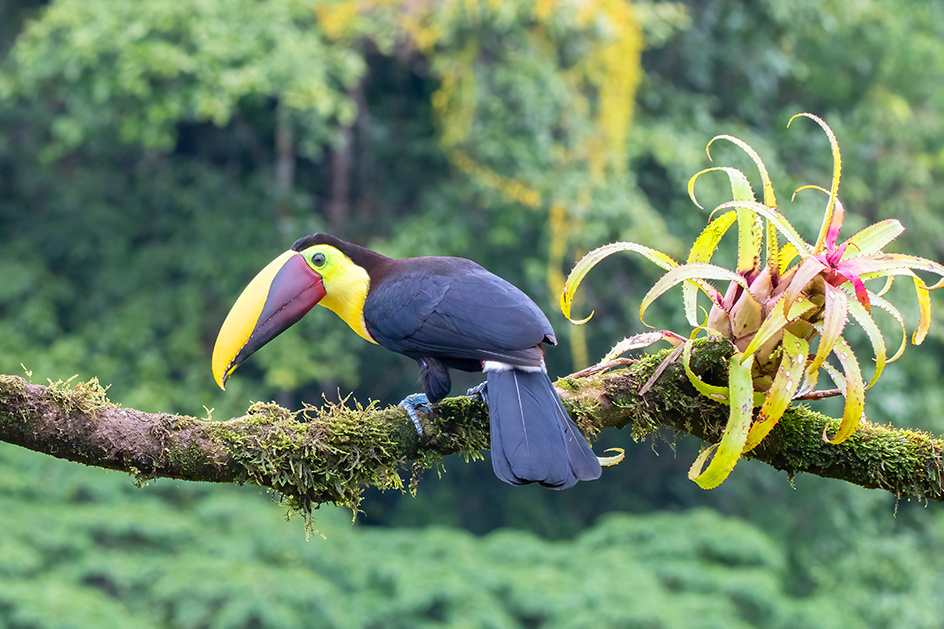 Chestnut-Mandibled Toucan - Feeds on fruits, lizards, snakes and nestling birds.
Chestnut-Mandibled Toucan - Feeds on fruits, lizards, snakes and nestling birds.
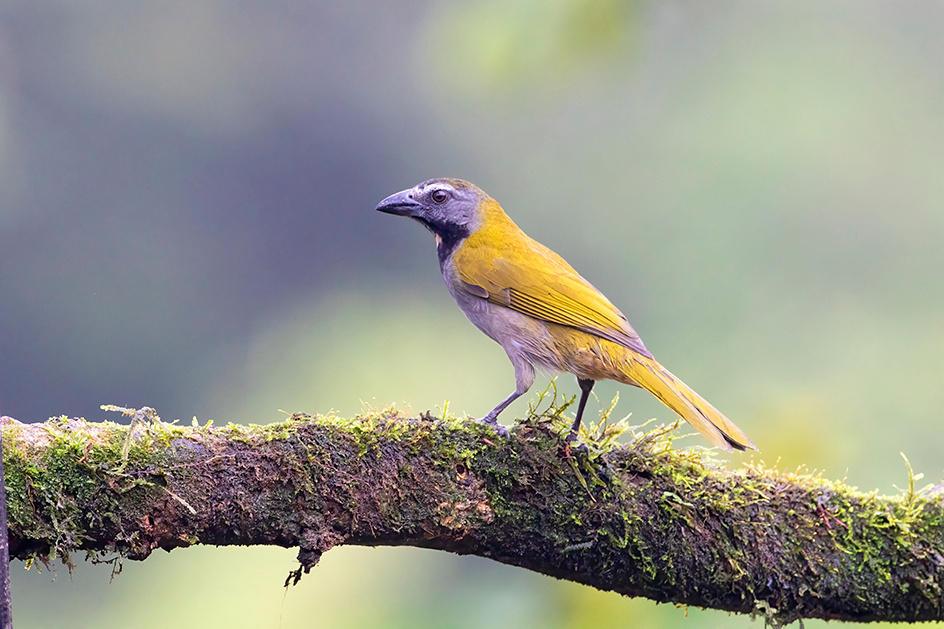 Buff-Throated Saltator - Literature suggests that this species has a wide range within Costa Rica. However, this was the only locations where we observed them.
Buff-Throated Saltator - Literature suggests that this species has a wide range within Costa Rica. However, this was the only locations where we observed them.
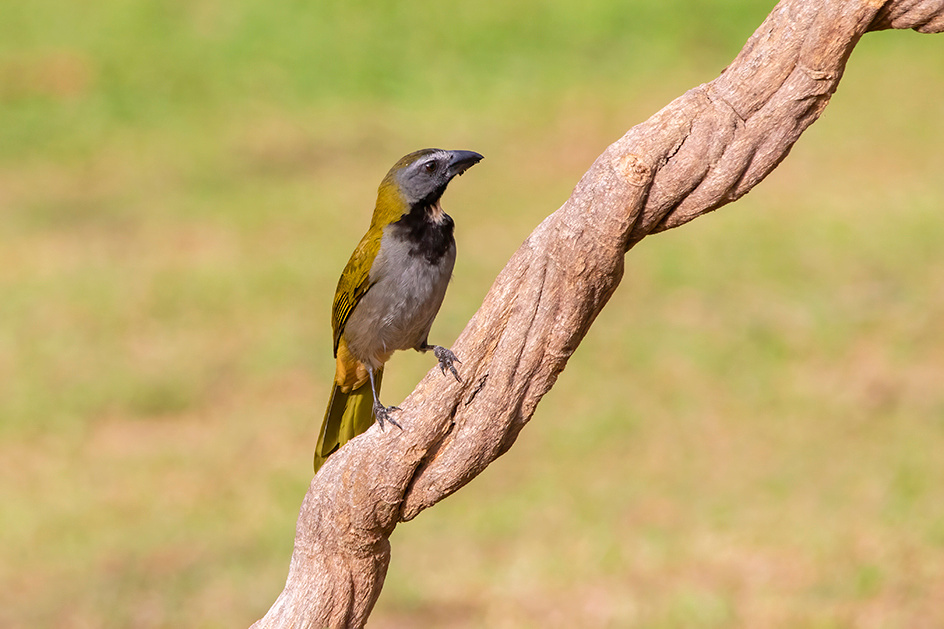 Buff-Throated Saltator
Buff-Throated Saltator
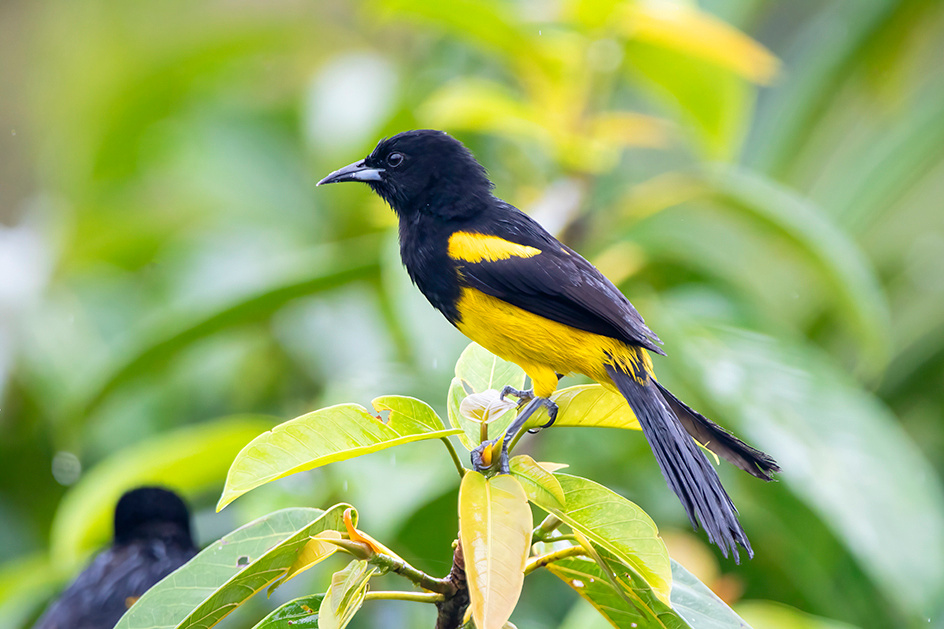 Black-Cowled Oriole - I had previously seen this oriole only in Western Mexico
Black-Cowled Oriole - I had previously seen this oriole only in Western Mexico
The lodge is know as one of the best locations in the world to view and photograph king vulture. We spent several hours in the ground level vulture hide. The vultures are baited using byproducts from the local slaughterhouse. The bait is placed in pits and is not visible, but the vultures can be observed at very close distance which allow full frame head shots. We had 3 adults and 2 juveniles come in while we were at the blind. I took hundreds of images. Unfortunately, we were sharing the blind with a Japanese foursome. One of their members had great difficulty keeping quiet. Constant movement and chattering was not condusive to closeup photo opportunities. Black vultures were abundant, but gave their larger cousins some personal space.
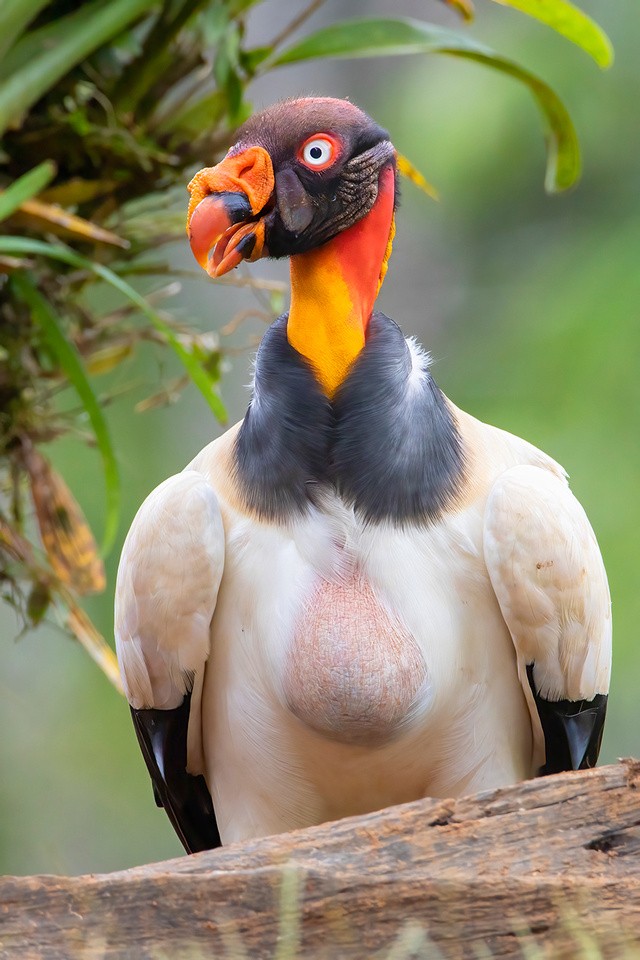
King Vulture - Note the full crop.
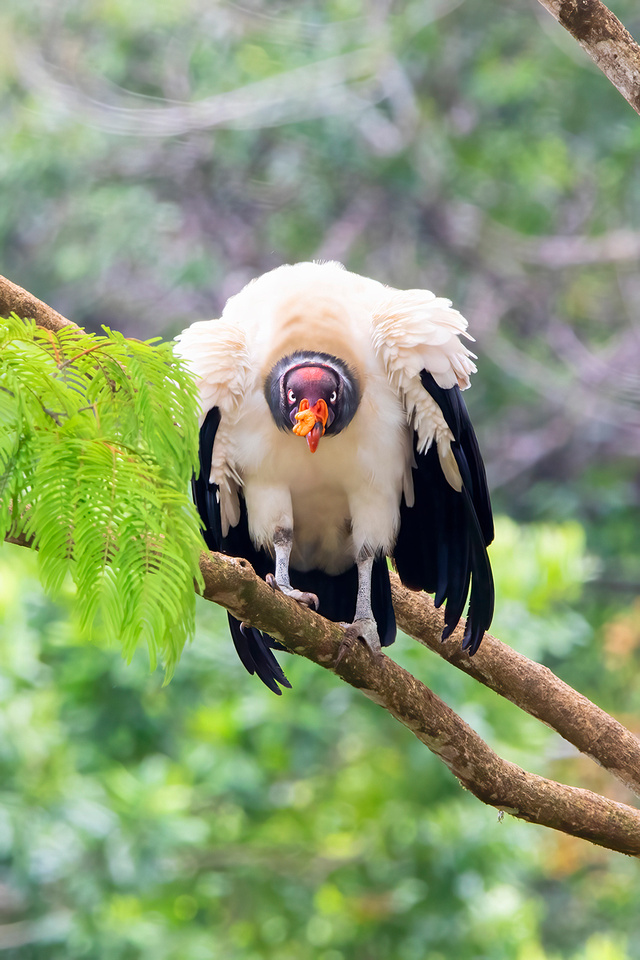
King Vulture - Lots of eye contact
 King Vulture - A regal pose
King Vulture - A regal pose
 King Vulture (Immature) - A face only a mother could love.
King Vulture (Immature) - A face only a mother could love.
 King Vulture - Bullies at the carcasses.
King Vulture - Bullies at the carcasses.
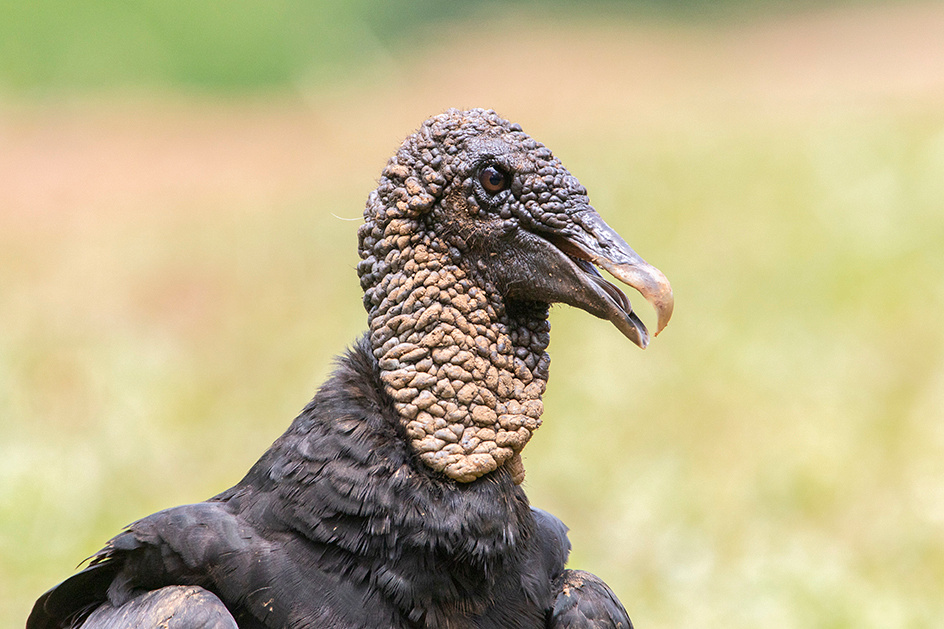 Black Vulture - A more common vulture species
Black Vulture - A more common vulture species
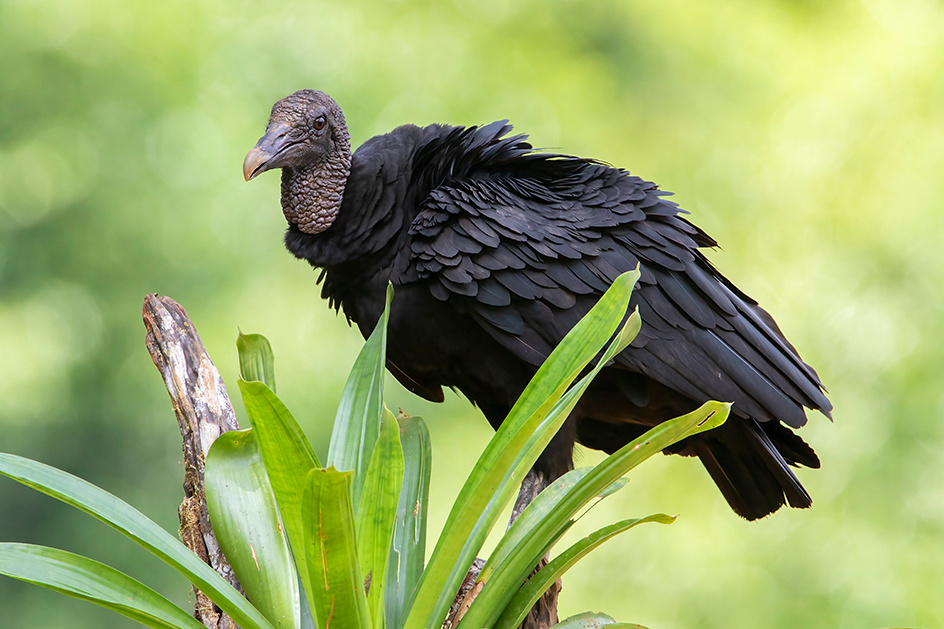 Black Vulture - Posing for me on this vegetated stump
Black Vulture - Posing for me on this vegetated stump
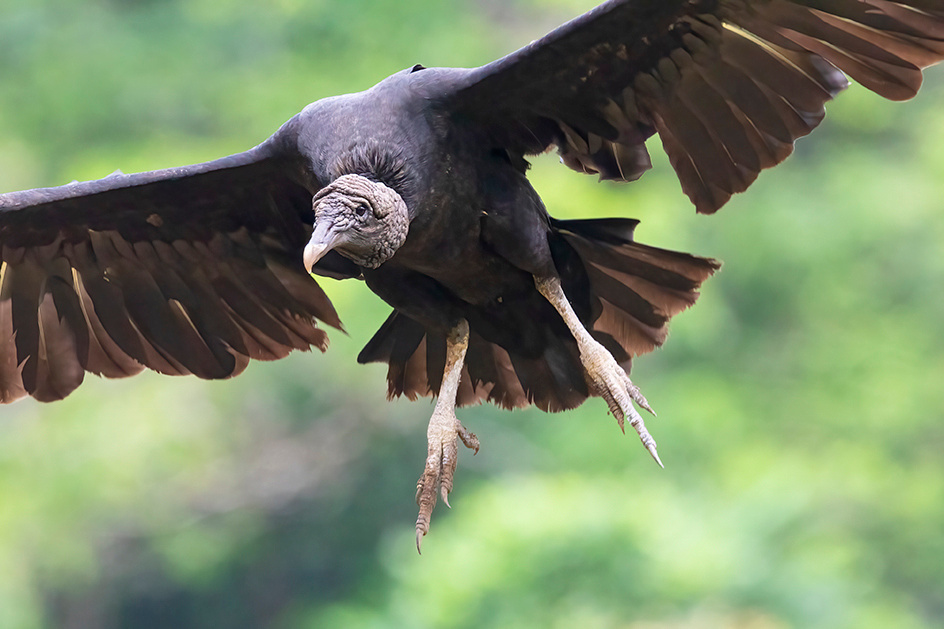 Black Vulture - Incoming
Black Vulture - Incoming
Another option included in our tour was night-time bat photography. I had never attempted this sort of photography and the guide was skeptical that my equipment was suitable. It took quite some time to set up. I used my 24 to 105mm landscape lens at 55mms and a single flash from a distance of about 2 feet from the banana flower we used as bait. The flower was sprayed with sugar water and almost immediately we had bats. These were orange-bellied nectar bats. They were very quick and my keeper rate was very poor. Lots of empty frames. I did manage to get about 6 useable frames. A new and interesting photo experience. Becky was a trooper as she was sitting behind me in total darkness as the many bats flew by, occasionally brushing her hair with their wings.
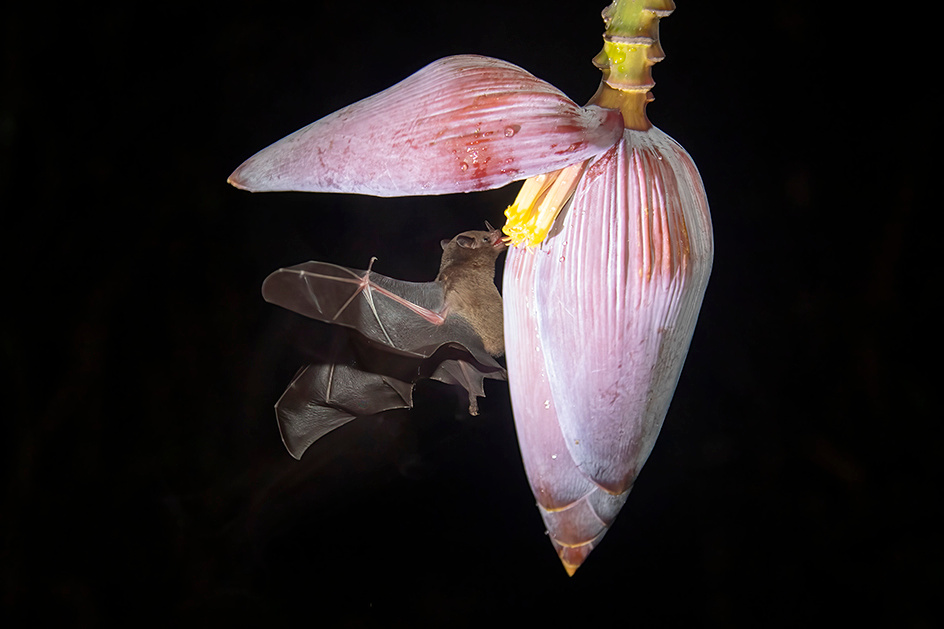 Orange-Bellied Nectar Bat - Very quick nocturnal pollinator.
Orange-Bellied Nectar Bat - Very quick nocturnal pollinator.
The lodge also offers guided bird walks and a nighttime camian walk where a couple of largish caimans emerge from the lagoon and respond to commands in German.
Our next location was Hotel Lomas del Volcan at the base of Arenal Volcano. This lodge was a significant upgrade from the Arenal Observatory Lodge where this Aratinga tour normally stay. Excellent food, comfortable individual bungalows and beautifully landscaped grounds. We woke to the sounds of howler monkeys every morning and spent a few hours each day photographing wildlife on the grounds.
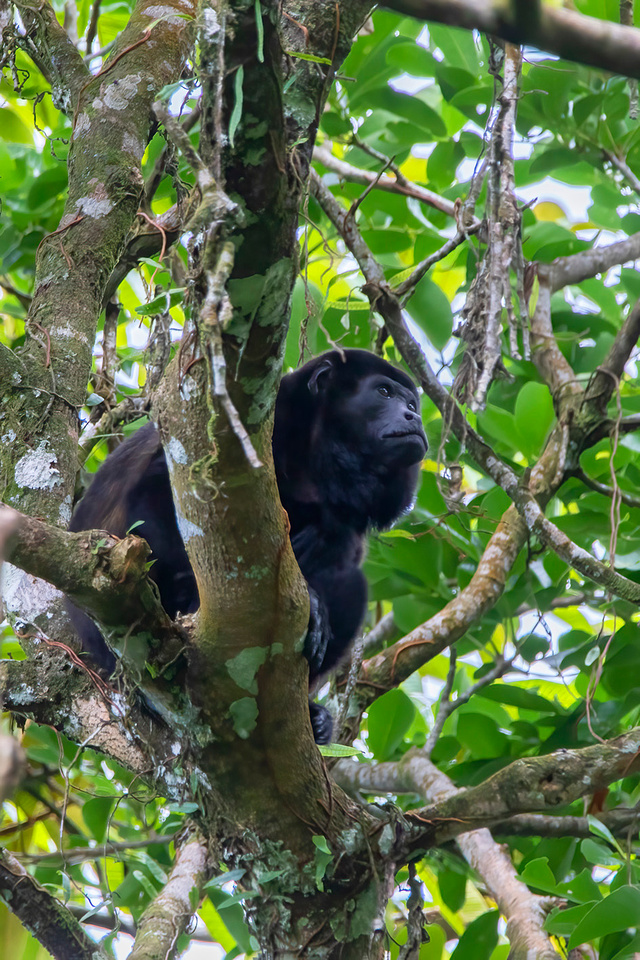
Mantled Howler Monkey - Dominant male surveys his family group
We visited Danaus Ecocenter, a small patch of intact forest. The primary attraction here was a small pond containing a boat-billed heron colony, These herons are nocturnal and difficult to photograph in the open elsewhere. While I was shooting the herons, Becky pointed out a tiny bird perched almost directly over us. It was an American pygmy kingfisher. A "life bird" for me. Other species included basilisk lizard, spectacled camian, and a white-collared manakin. The basilisk lizards are also called "Jesus Christ lizard" as they appear to be able to run on water.
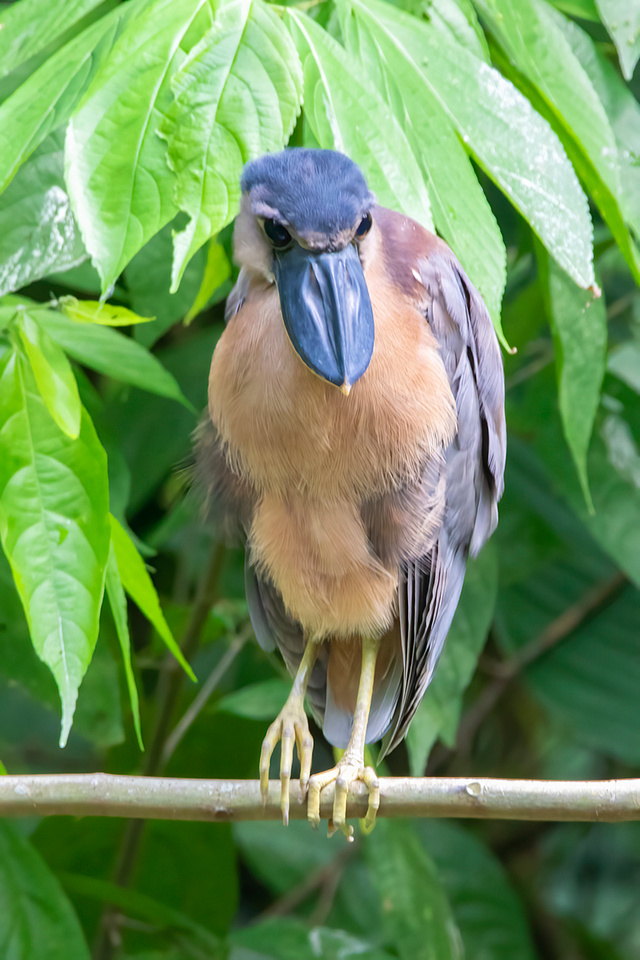
Boat-Billed Heron - Gotta love that bill.
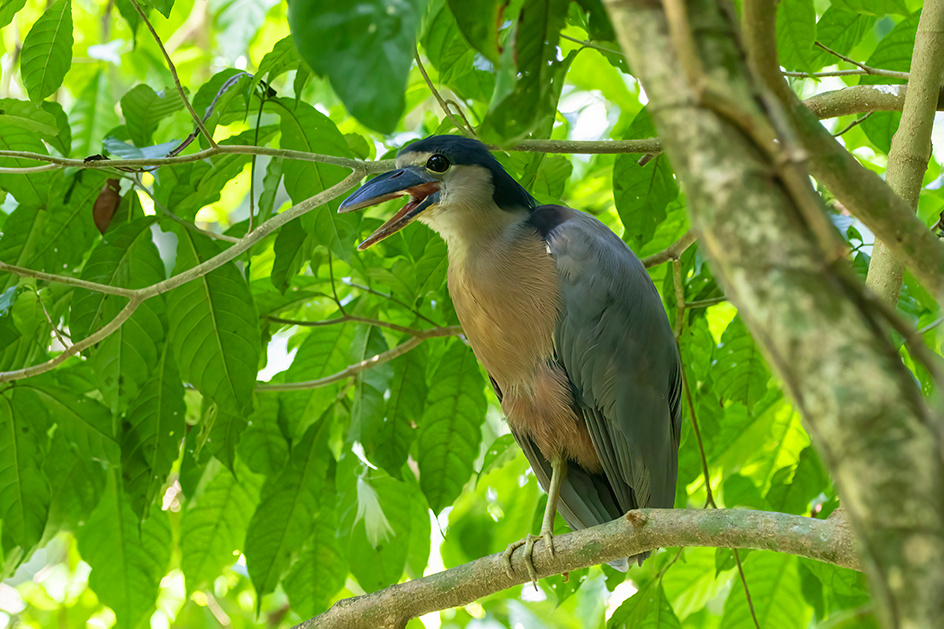 Boat-Billed Heron calling
Boat-Billed Heron calling
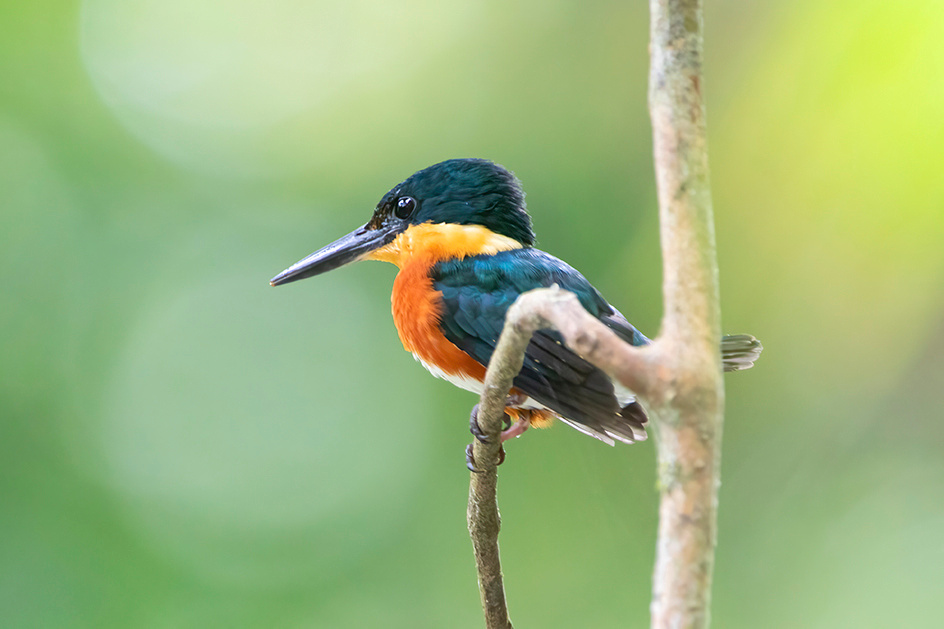 American Pygmy Kingfisher - Becky spotted this tiny kingfisher perched directly over us. About 5 inches in length.
American Pygmy Kingfisher - Becky spotted this tiny kingfisher perched directly over us. About 5 inches in length.
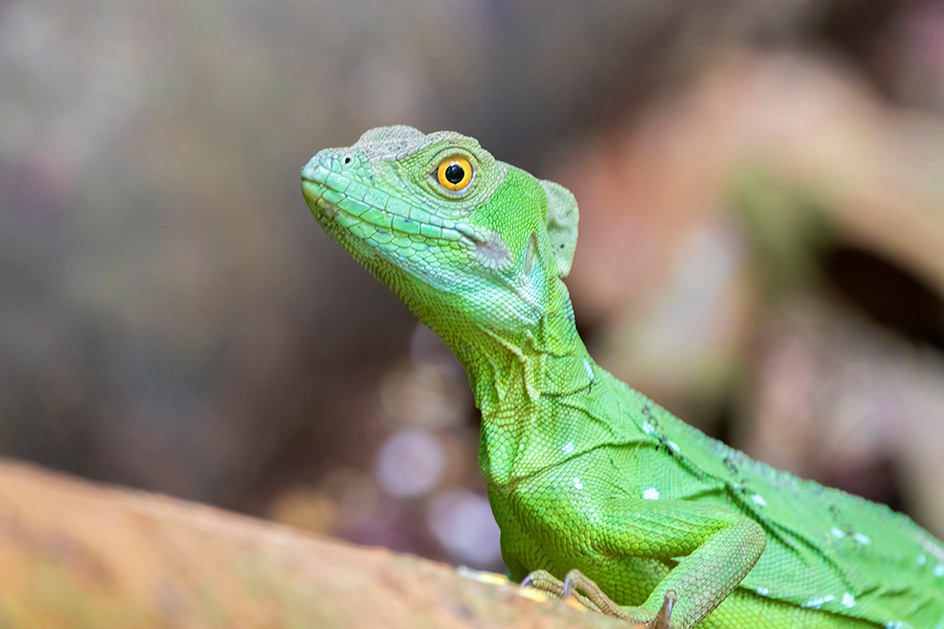 Green Baselisk (also called plumed baselisk)
Green Baselisk (also called plumed baselisk)
The next day we were to meet our guide at Arenal Observatory Lodge for some trail hiking. White-nosed coatis were everywhere on the grounds of the lodge.
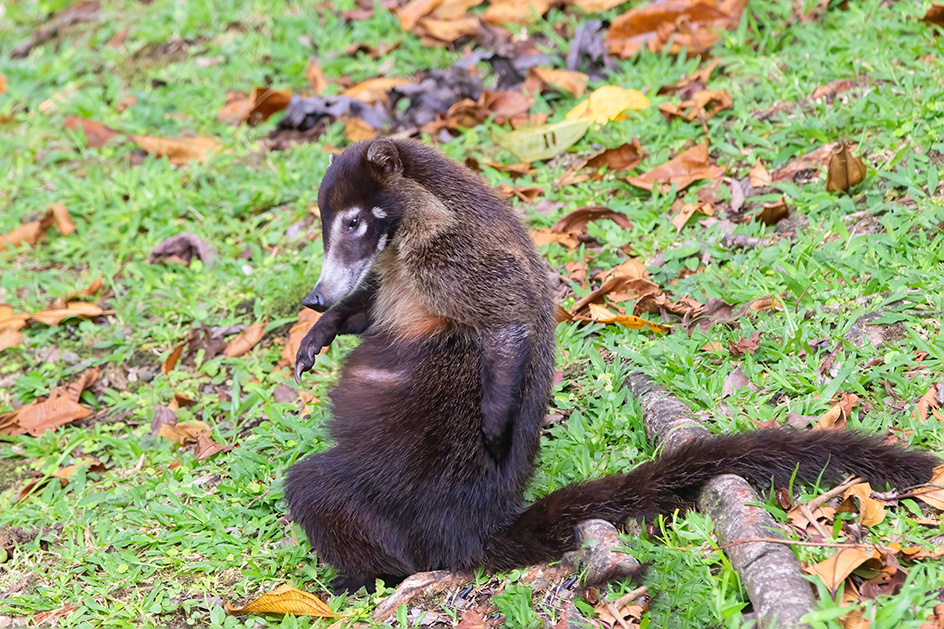 White-Nosed Coati - That itch!
White-Nosed Coati - That itch!
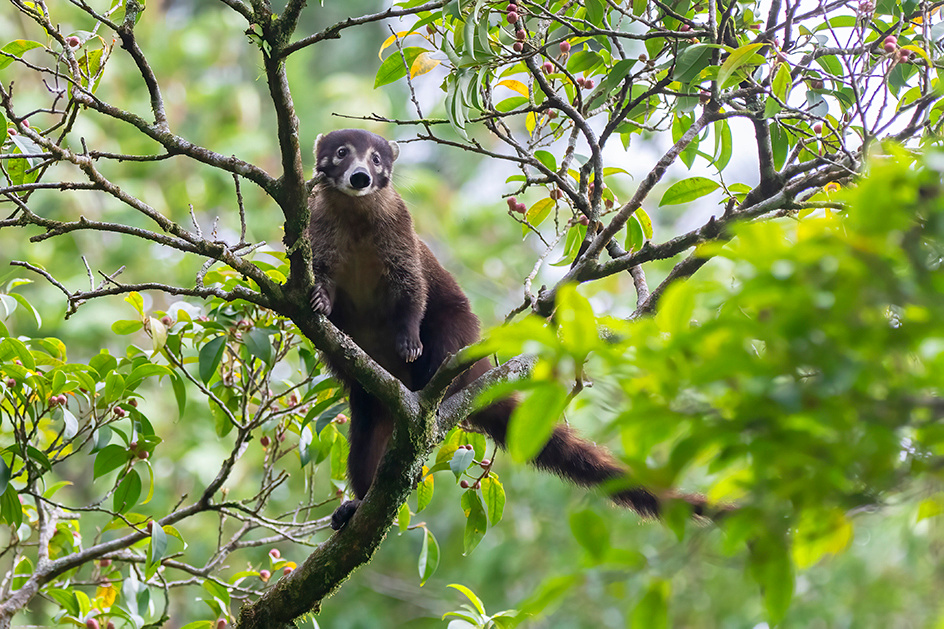 White-Nosed Coati - Very arboreal
White-Nosed Coati - Very arboreal
We were extremely fortunate to find and photograph a lattice-tailed trogon. This species is quite rare at this location. Photo opportunities in the densely vegetated trails were difficult. I did better in the more open gardens of the lodge where I took many shots of a gartered trogon. I photographed a number of life birds at the feeders at the lodge including bananaquit, Tennessee warbler, and red-footed plumeleteer.
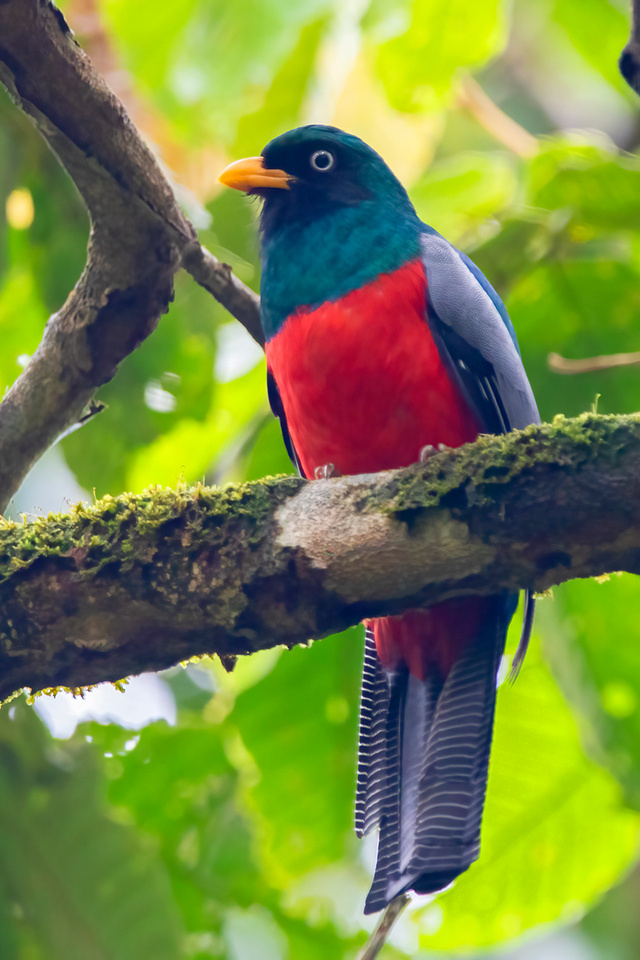
Lattice-Tailed Trogon
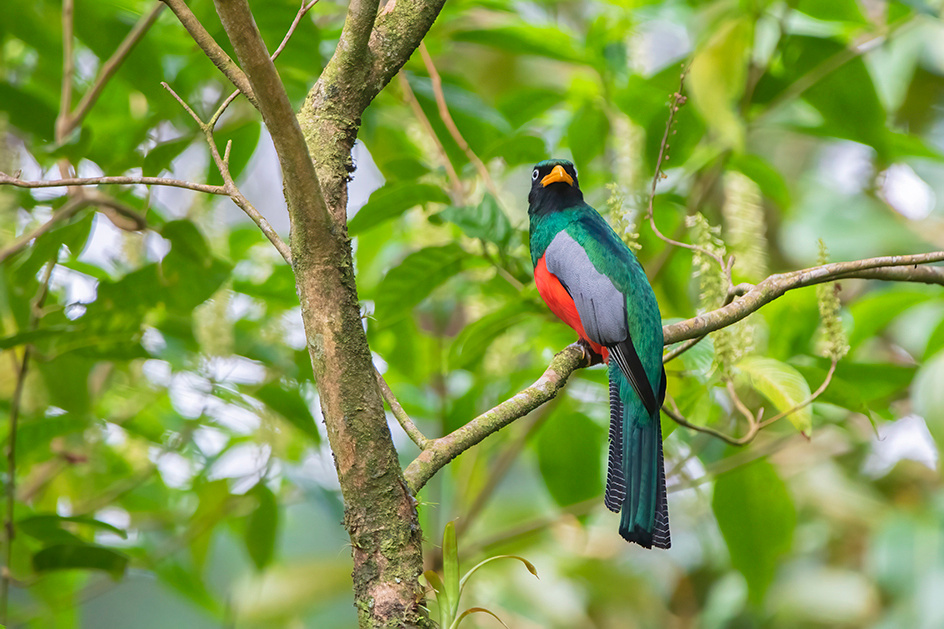 Lattice-Tailed Trogon - This species has a limited range, from Costa Rica to western Panama
Lattice-Tailed Trogon - This species has a limited range, from Costa Rica to western Panama
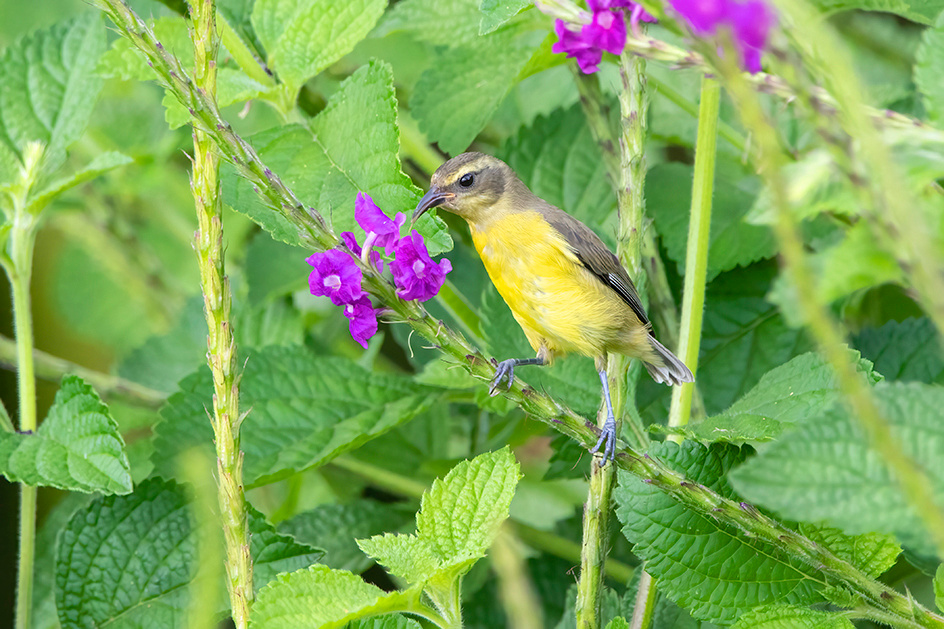 Bananaquit - A small, active warbler feeding primarily on fruit and nectar.
Bananaquit - A small, active warbler feeding primarily on fruit and nectar.
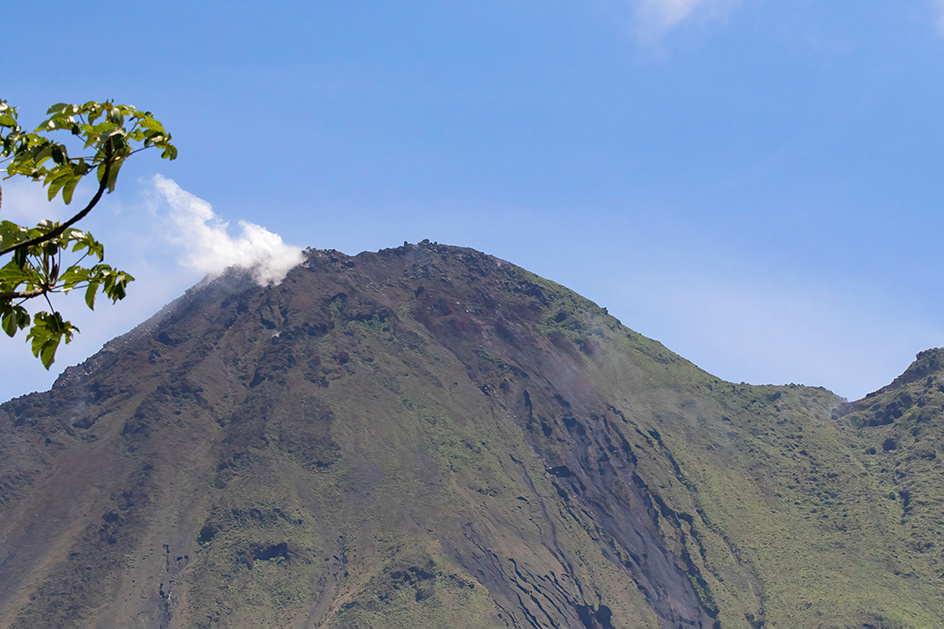 Arenal Volcano - A rare day when the cone is not covered with clouds. Note the steam emerging from this active volcano.
Arenal Volcano - A rare day when the cone is not covered with clouds. Note the steam emerging from this active volcano.

Crested Guan - Large and very loud.
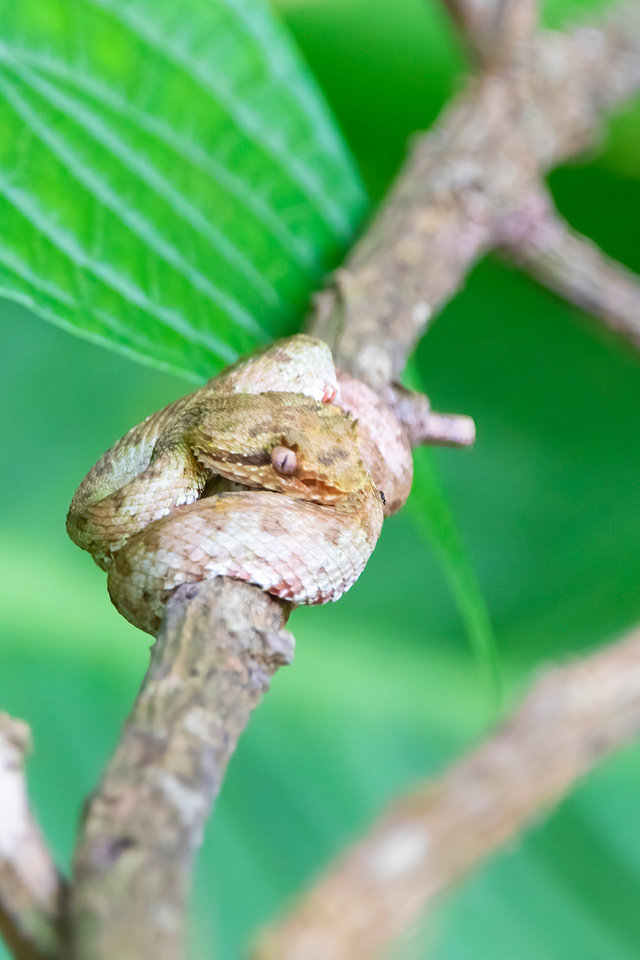
Eyelash Pit Viper - This specimen was very small. They can be difficult spot even at close range. This species is arboreal and comes in a wide variety of colors including brilliant yellow/gold.
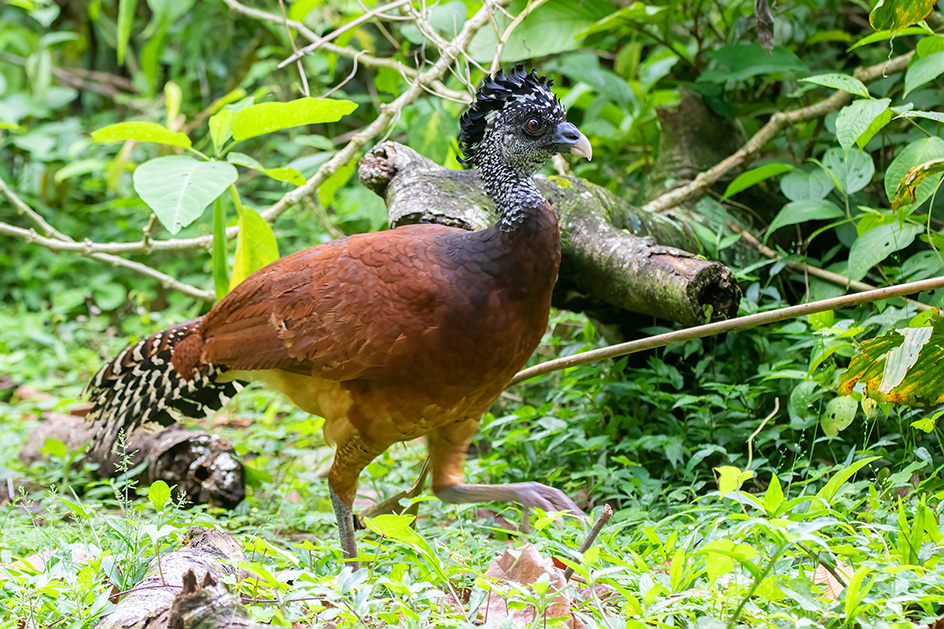 Great Curassow (Female) The colors and patterns on there female make them much more attractive than the uniform black plumage of the male.
Great Curassow (Female) The colors and patterns on there female make them much more attractive than the uniform black plumage of the male.
 Yellow Warbler - A common nesting species in northern California that I rarely seem to get this clean a shot at. Note the red streaking on the breast of this male in full breeding plumage.
Yellow Warbler - A common nesting species in northern California that I rarely seem to get this clean a shot at. Note the red streaking on the breast of this male in full breeding plumage.
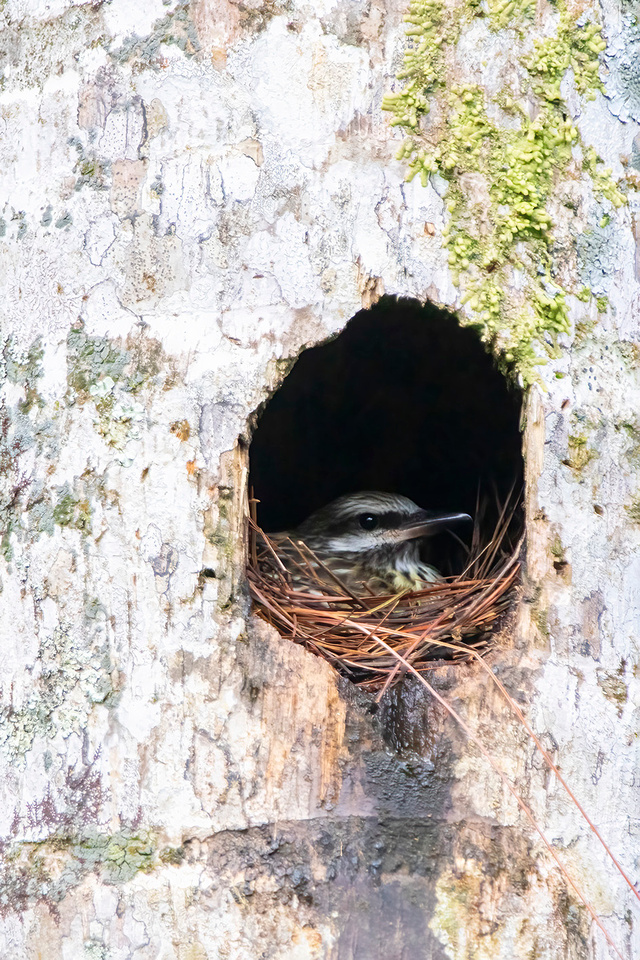
Nesting Sulphur-Bellied Flycatcher
 Blue-Black Grosbeak (Female)
Blue-Black Grosbeak (Female)
We left the Arenal area and headed toward the Pacific coast. On the way we stopped for a last minute addition to our tour. Pieter had suggested that we stop in San Luis and spend the day with a non-english speaking guide named Rodreigo. Pieter indicated Rodreigo was an excellent guide he could really find the birds, including a difficult to find and photograph bird, the three-wattled bellbird. Our initial photo stop yielded a number of excellent birds in a pretty decent location for photography including speckled tanager, emerald tanager, blue-gray tanager, green honeycreeper, bay-head tanager, wood thrush, sulphur-bellied flycatcher, common chlorospringus, crowned woodnymph, and green-crowned brilliant.
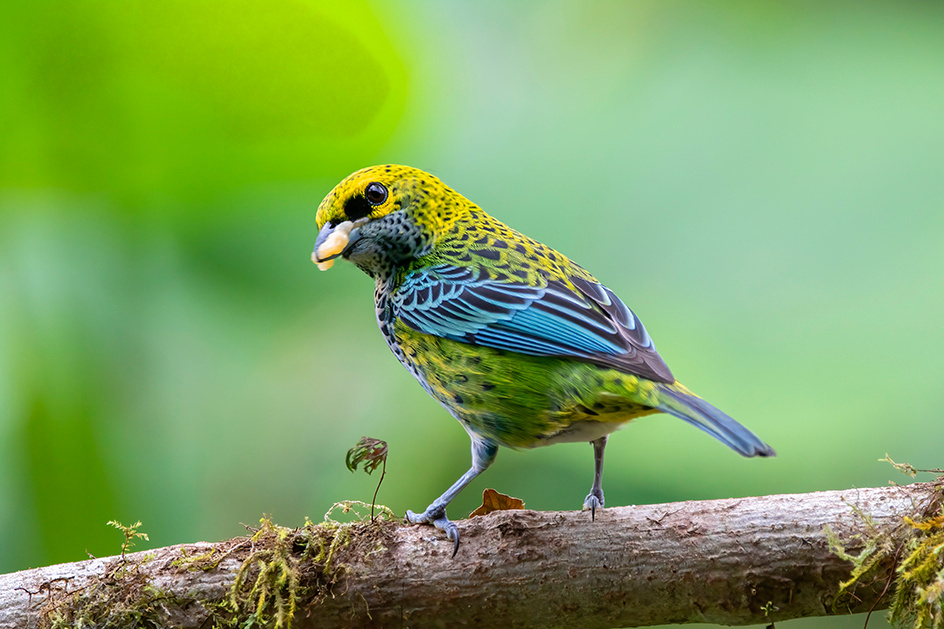 Speckled Tanager
Speckled Tanager
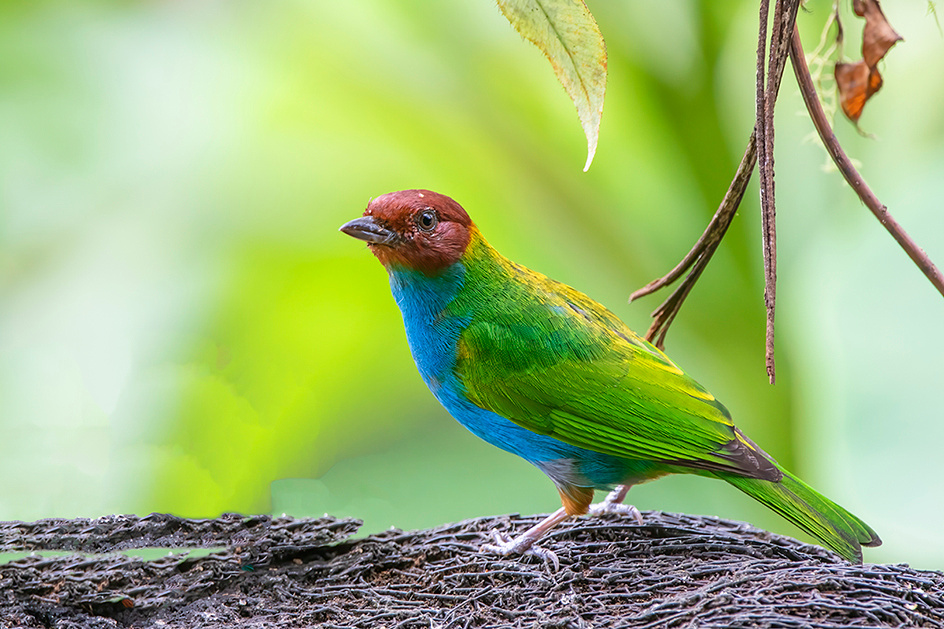
Bay-Headed Tanager
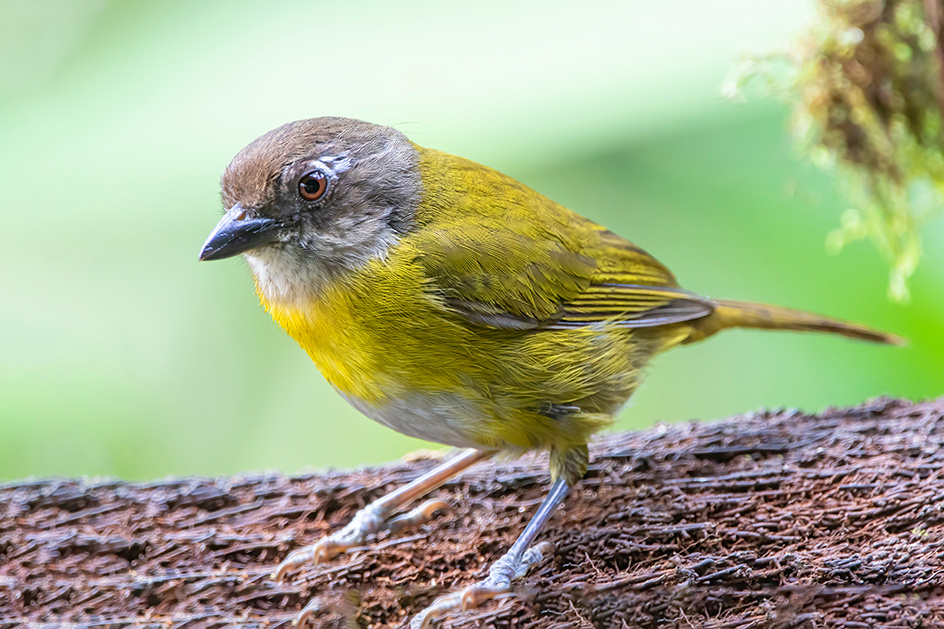 Common Chlorospingus
Common Chlorospingus
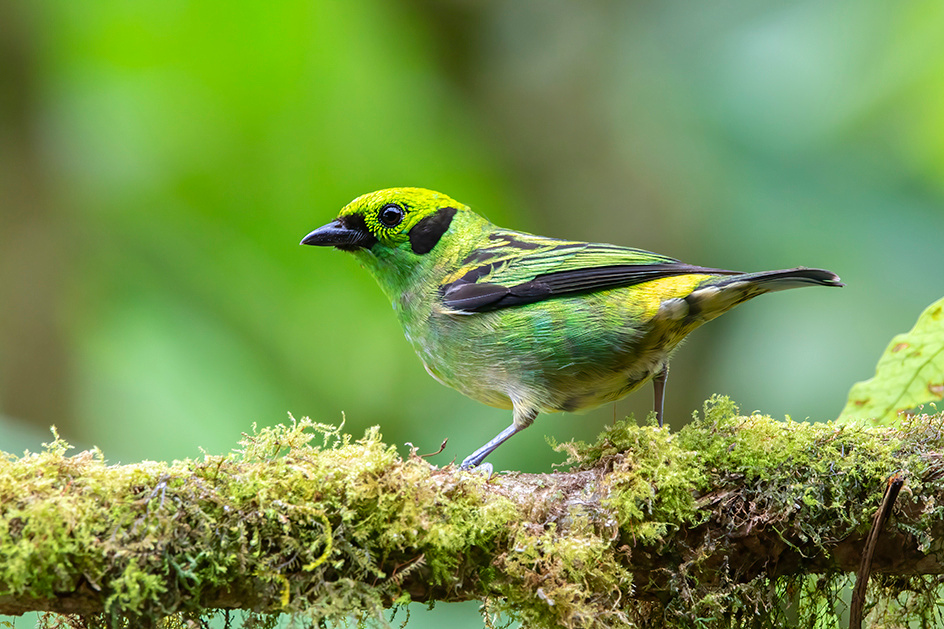 Emerald Tanager
Emerald Tanager
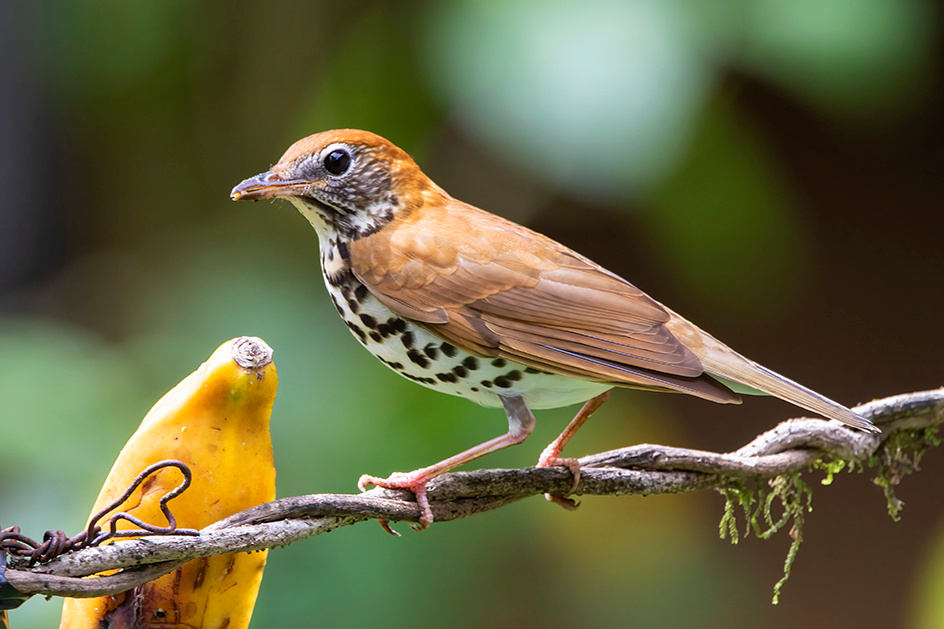 Wood Thrush - Another life bird for me.
Wood Thrush - Another life bird for me.
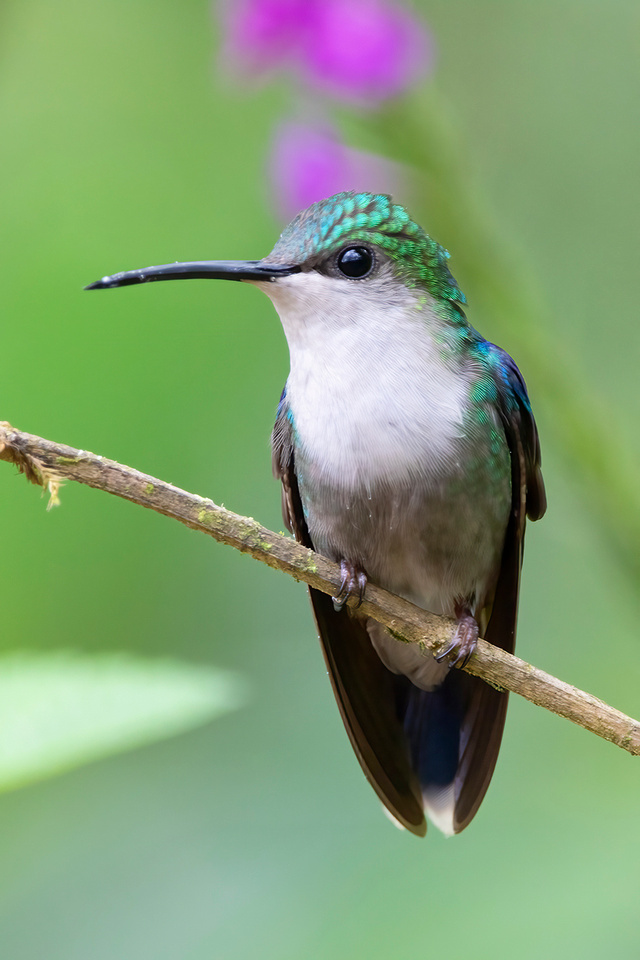
Crowned Woodnymph
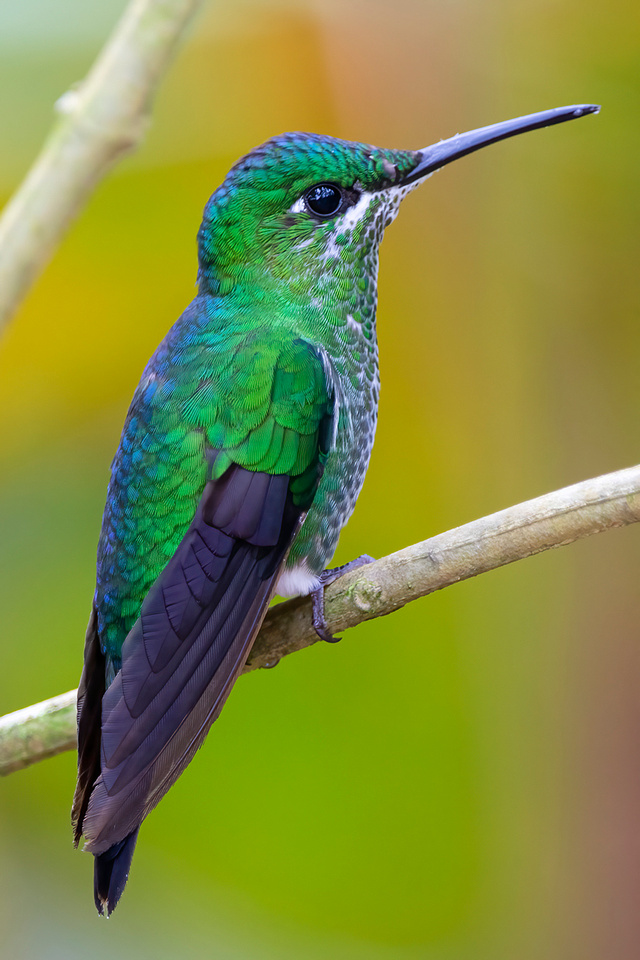
Green-Crowned Brilliant
Next we took to the hills and quickly hiked to a singing and displaying three-wattled bellbird.
 Three-Wattled Bellbird - I was pretty keen to photograph this uncommon bird and was able to capture a displaying male against the sky. We kept following him and eventually he dropped down lower in the canopy and allow a few longish shots with better light and background. Call is like a tiny ringing bell. He tosses the wattles as he sings as part of his display.
Three-Wattled Bellbird - I was pretty keen to photograph this uncommon bird and was able to capture a displaying male against the sky. We kept following him and eventually he dropped down lower in the canopy and allow a few longish shots with better light and background. Call is like a tiny ringing bell. He tosses the wattles as he sings as part of his display.
After another hike down a long ridge we encountered our first southern emerald toucanet and a collared trogon. The ridge was much steeper on the climb back out.

Collared Trogon - We worked hard to finally get this trogon to perch in the open.
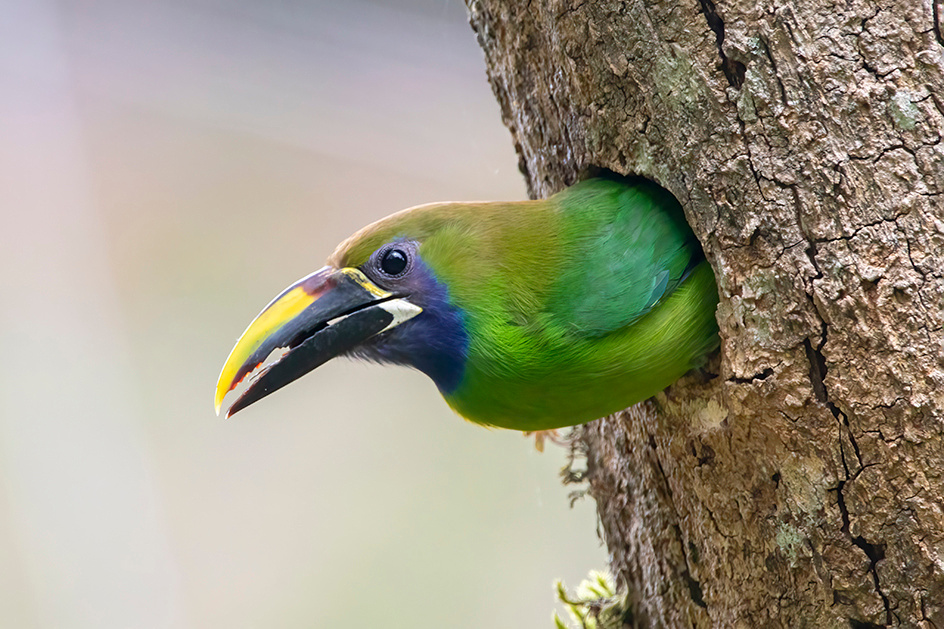 Southern Emerald Toucanet - I ended up with hundreds of images of this species at different locations.
Southern Emerald Toucanet - I ended up with hundreds of images of this species at different locations.
We had a quick local lunch at a local roadside cafe and then went in search of a nesting sunbittern. Along the way we also were able to photograph torrent tyrannulet, a golden-olive woodpecker, and a common tody flycatcher. A very productive day.
 Nesting Sunbittern - Habitat included forested, steep rocky streams
Nesting Sunbittern - Habitat included forested, steep rocky streams
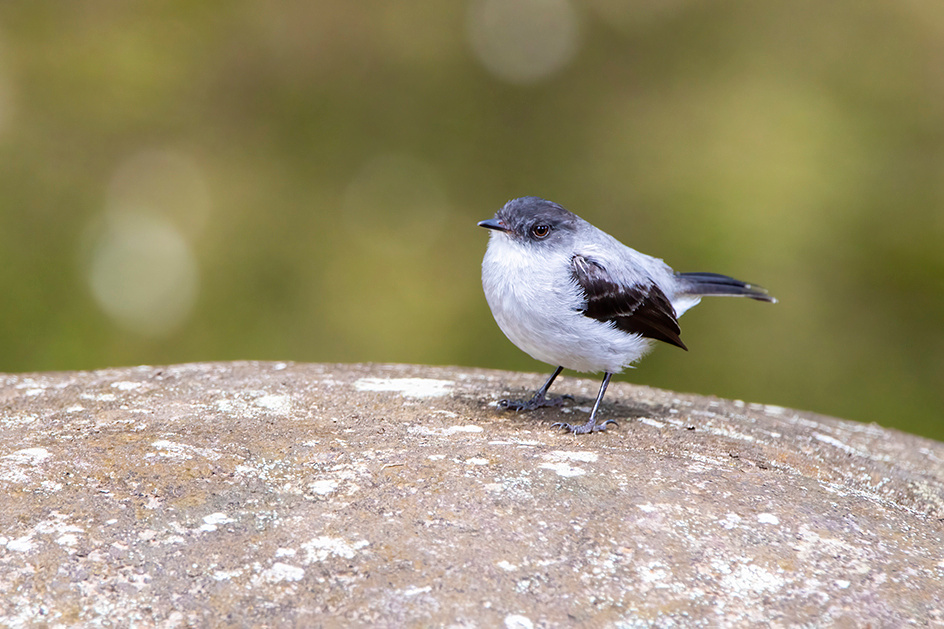 Torrent Tyrannulet - A small flycatcher inhabiting high gradient streams
Torrent Tyrannulet - A small flycatcher inhabiting high gradient streams
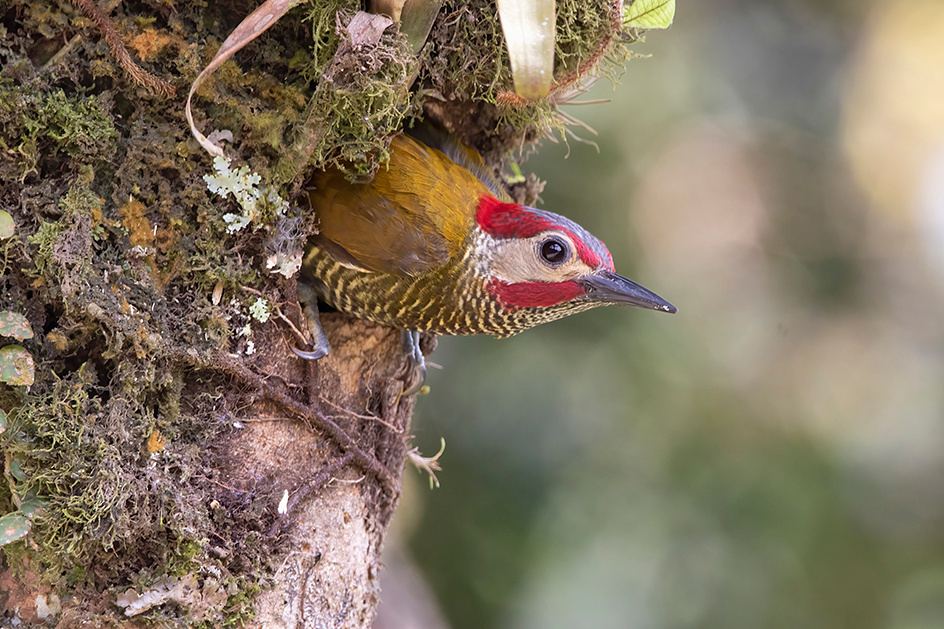 Golden-Olive Woodpecker - A beautiful woodpecker species
Golden-Olive Woodpecker - A beautiful woodpecker species
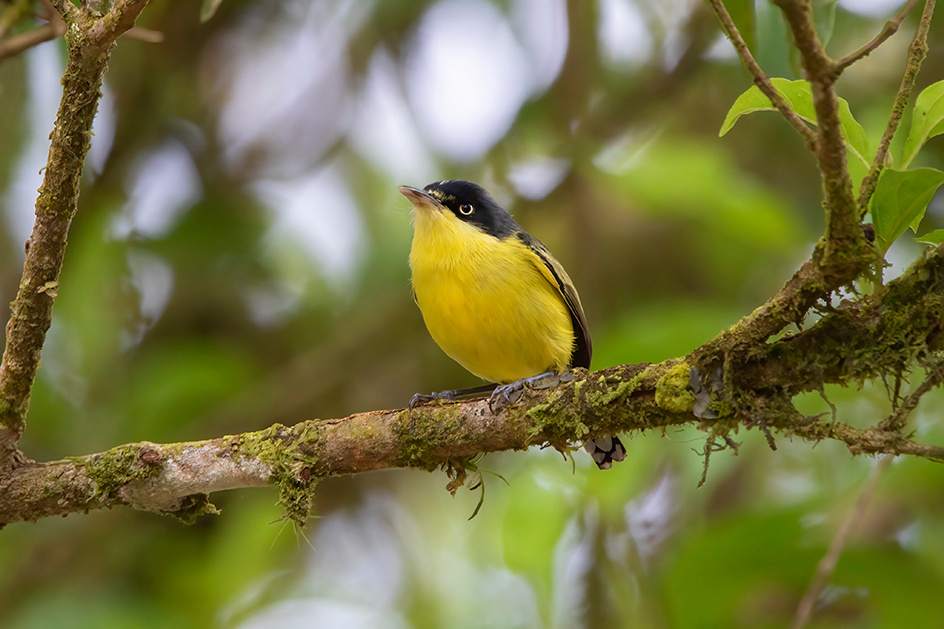 Common Tody Flycatcher - Common and widespread compact flycatcher
Common Tody Flycatcher - Common and widespread compact flycatcher
I should mention driving in Costa Rica is quite adventurous. Becky did all the driving as she is not enthusiastic about my driving while birding. Our rental car was a very underpowered Toyota Rush. We did not attempt passing on mountain roads. The locals were more spirited in their driving and passing on double yellow lines, hills and blind corners were commonplace. While driving to photograph the bellbird with the guide in the backseat we came around a corner and met a truck coming at us in our lane. I may have verbalized some concern. Becky says a squealed like a little girl. Somehow we avoided death and dismemberment and she and the guide had a good laugh at my expense. Defensive driving is a must. The ability read safety signage in Spanish is also useful.
After trying to load and save a more extended version of this blog three times I was finally able to determine that Zenfolio limits the size of individual blogs, so this is Part One and hopefully the remainder of the tour will be Part Two. Pura Vida!
After leaving San Luis we traveled on the Interamerican Highway towards the Pacific coast. Our next lodge was Villa Lapas near the small community of Tarcoles. The lodge was less basic than Laguna de Lagarto, but not as upscale as Lomas del Volcan. It did have air conditioning which was a definte plus as both heat and humidity were much greater than in the cloud forest near Arenal Volcano. The lodge also had a hot tub, swimming pool, large outdoor dining area and two bars.
Villa Lapas is in an area where the scarlet macaw is relatively common. We frequently heard them as they noisily flew over the lodge.
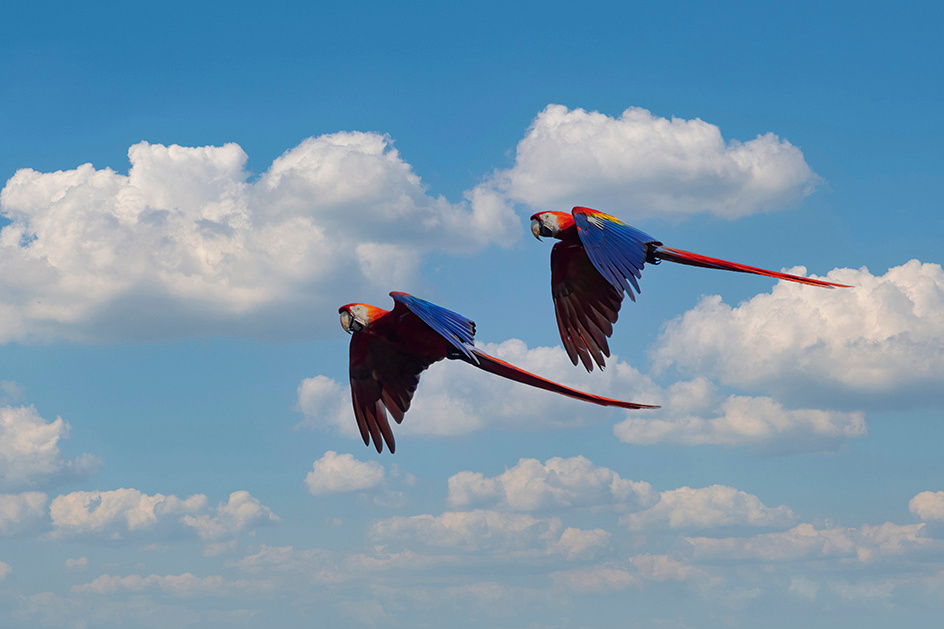 Scarlet Macaw
Scarlet Macaw
The grounds were productive for bird watching, but less so for photography. I found a fascinated tiger heron foraging in the stream adjacent to the lodge as well as a Leeson's motmot and a a linnaited woodpecker on the grounds.
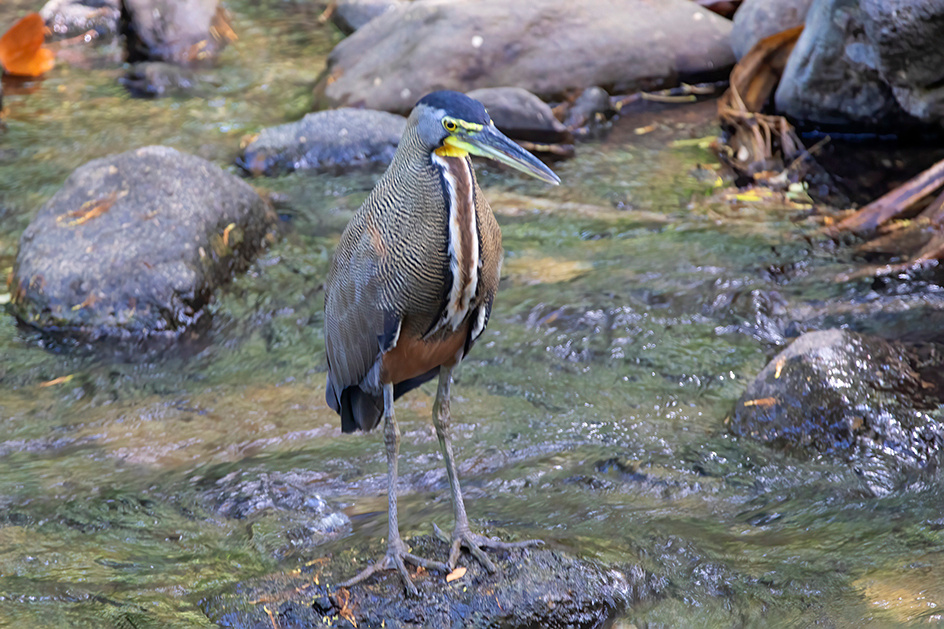 Fasciated Tiger Heron
Fasciated Tiger Heron
The next day we were scheduled to take both an early morning and evening boat tour on the Tarcoles River. The Tarcoles River is known for it large population of oversize crocodiles. We had previously experienced a Tarcoles River boat tour on another visit to Costa Rica. Based on that experience, my expectations were low. It turned out to be a very worthwhile photo experience.
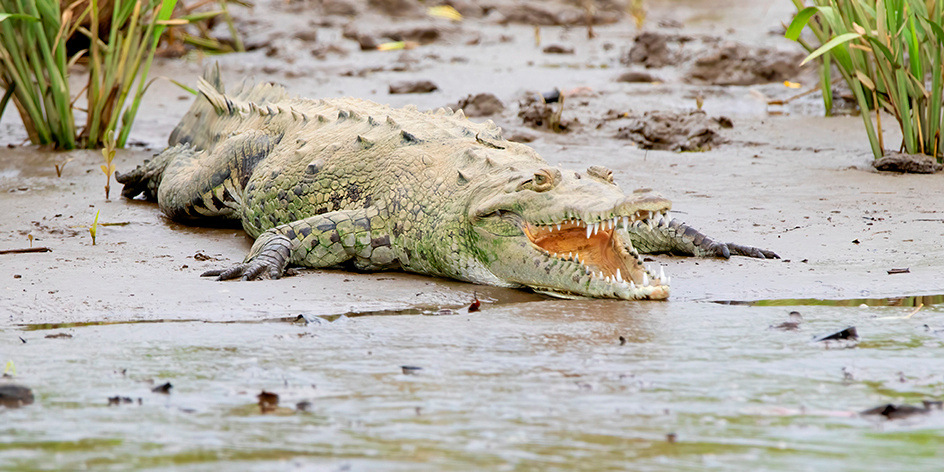 Basking Crocodile
Basking Crocodile
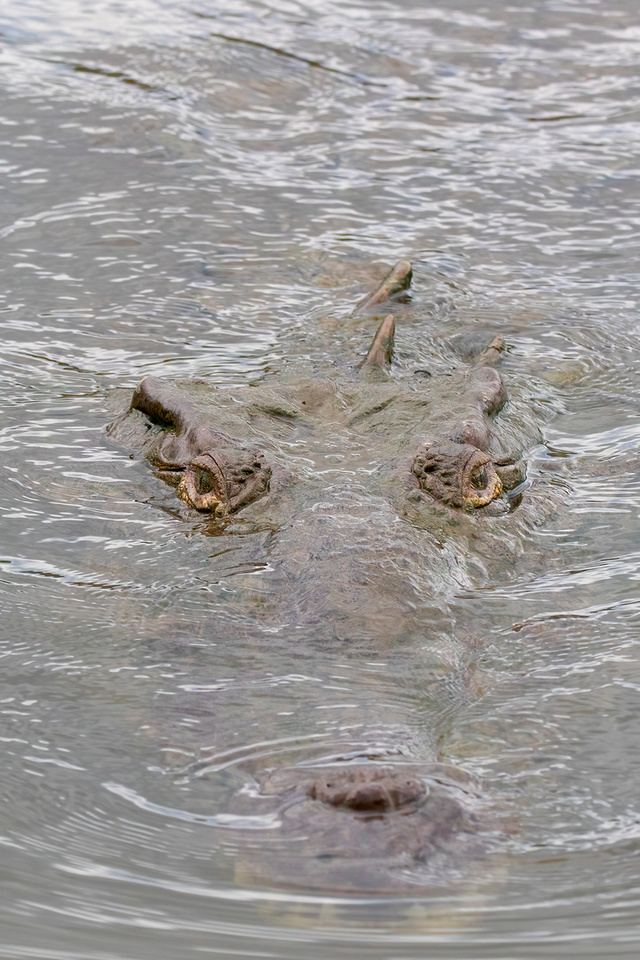
Crocodile inspecting the lunch menu
Becky and I were the only passengers on a boat which could easily accommodate 50 passengers. Our morning guide was an excellent birder and understood photographers needs. He did his best to get us close in good light with a decent background. We ended up getting all five species of kingfishers (Ringed, Green, Amazon, Belted and American Pygmy). We observed lots of species of waterbirds including several species of herons and egrets. We photographed magnificent frigate bird, southern lapwing, black-necked stilt, bare-throated tiger heron, turquoise-browed motmot, mangrove swallow, anhinga, double-striped thick-knee, yellow-headed caracara and many others.

Yellow-Crowned Night Heron
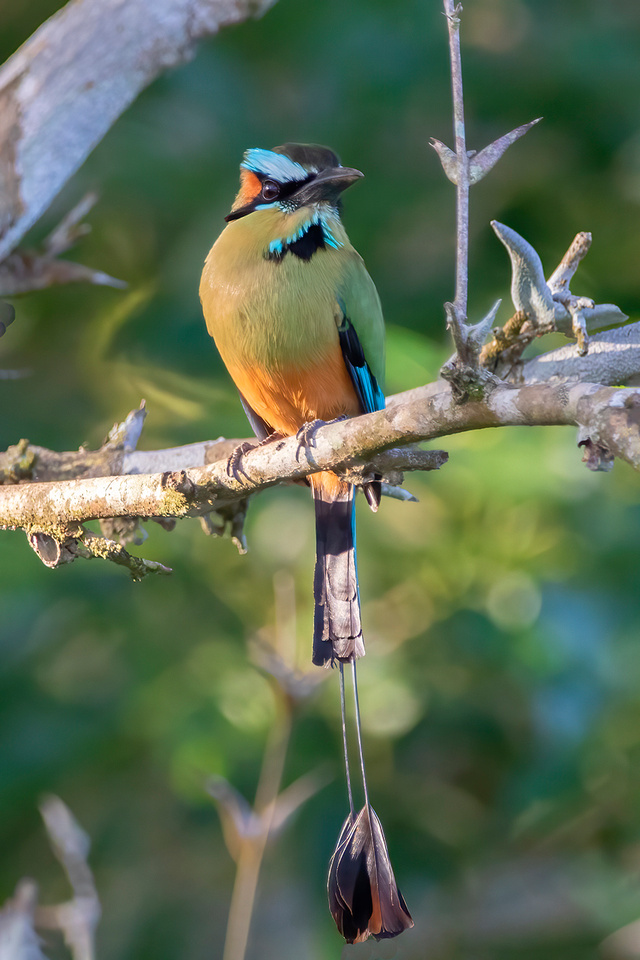
Turquoise-Browed Motmot - Ventral View
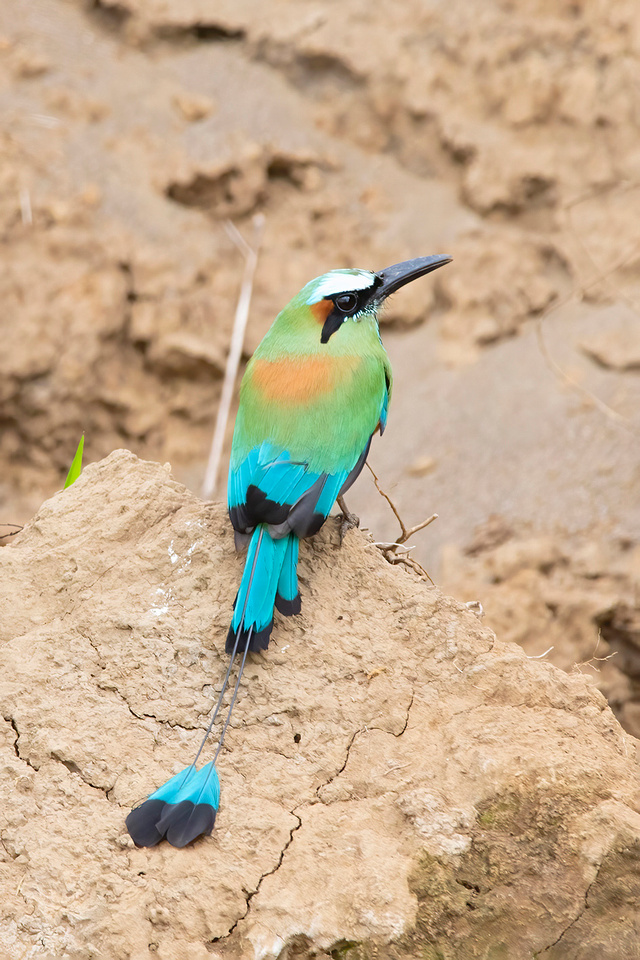
Turquoise Browed Motmot - Dorsal View
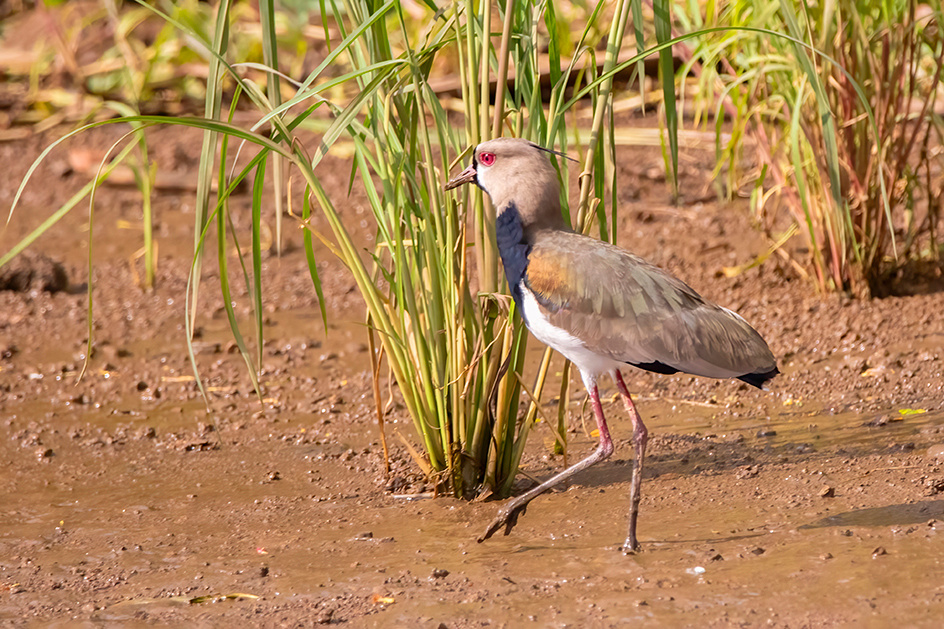 Southern Lapwing
Southern Lapwing
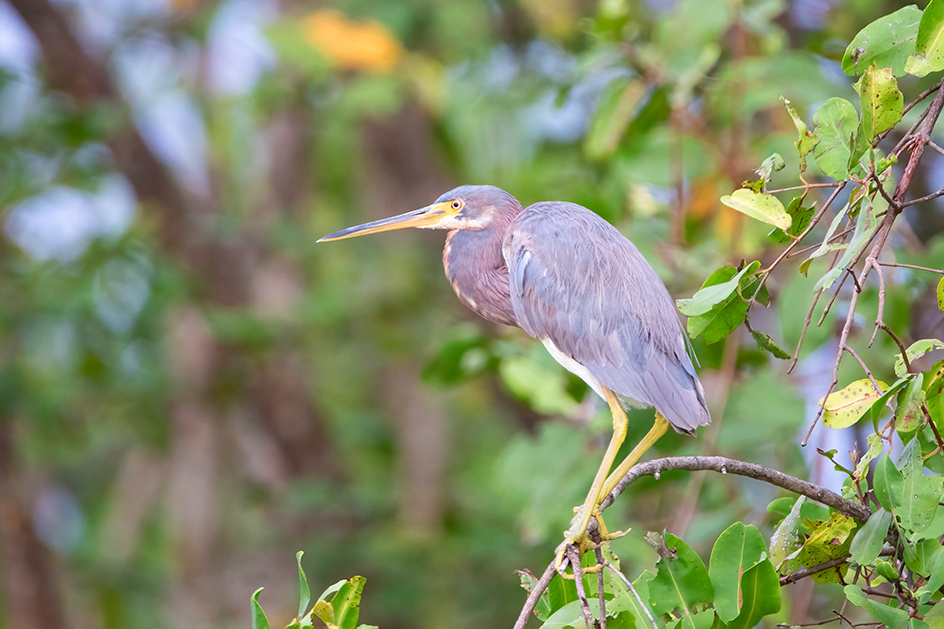 Tricolored Heron
Tricolored Heron
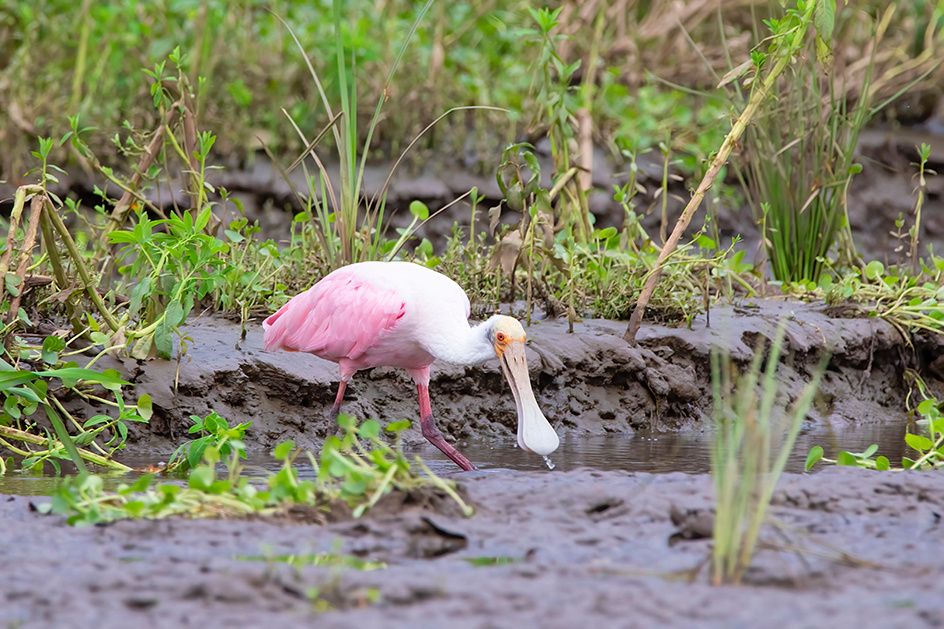 Roseate Spoonbill
Roseate Spoonbill
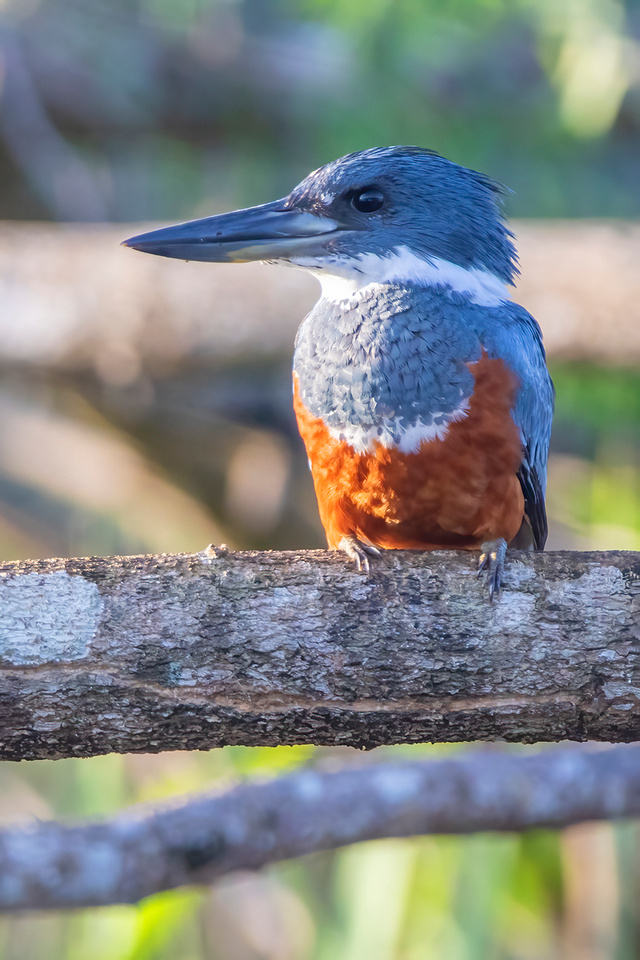
Ringed Kingfisher
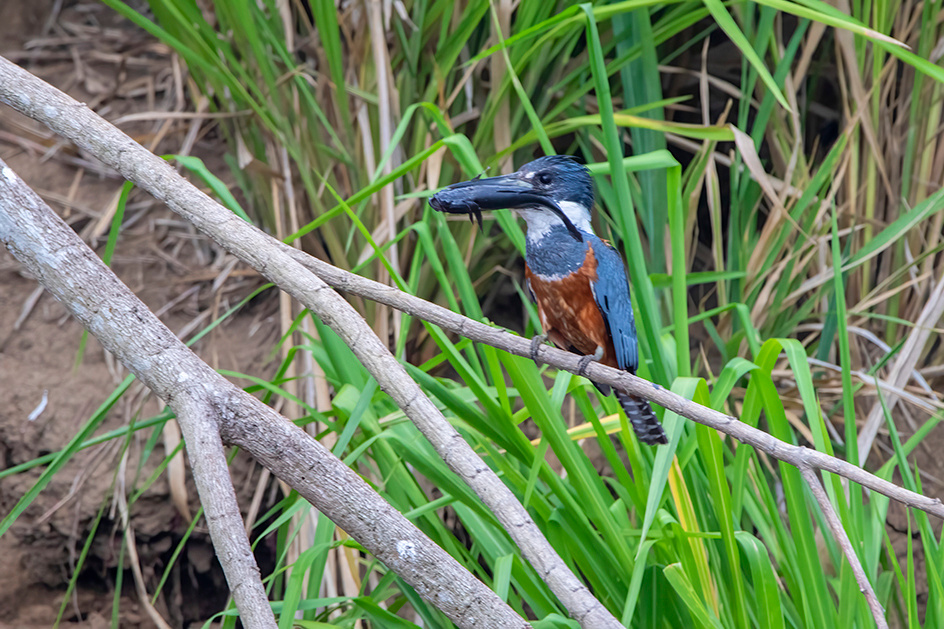 Ringed Kingfisher with Breakfast
Ringed Kingfisher with Breakfast
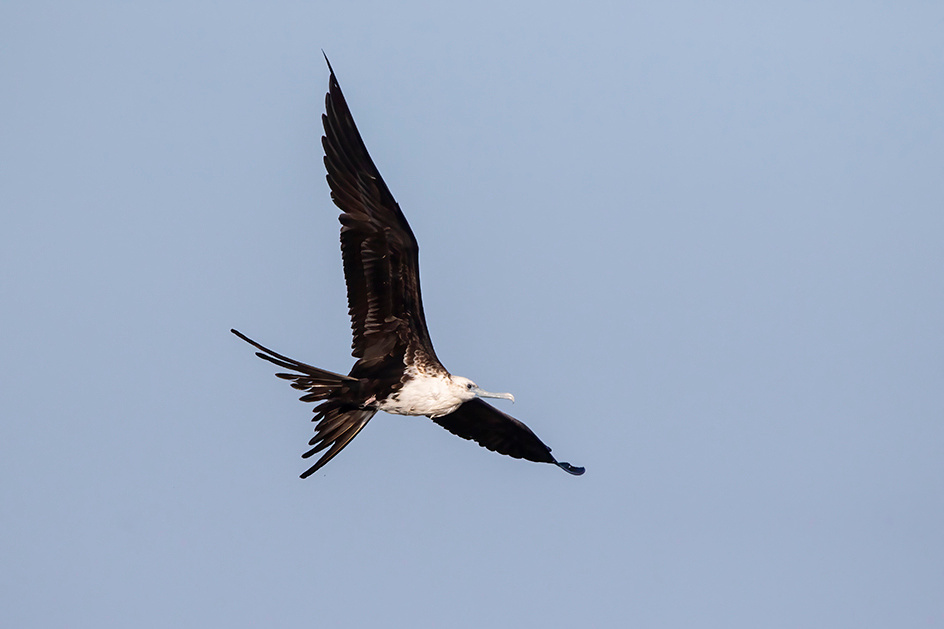 Magnificent Frigatebird
Magnificent Frigatebird
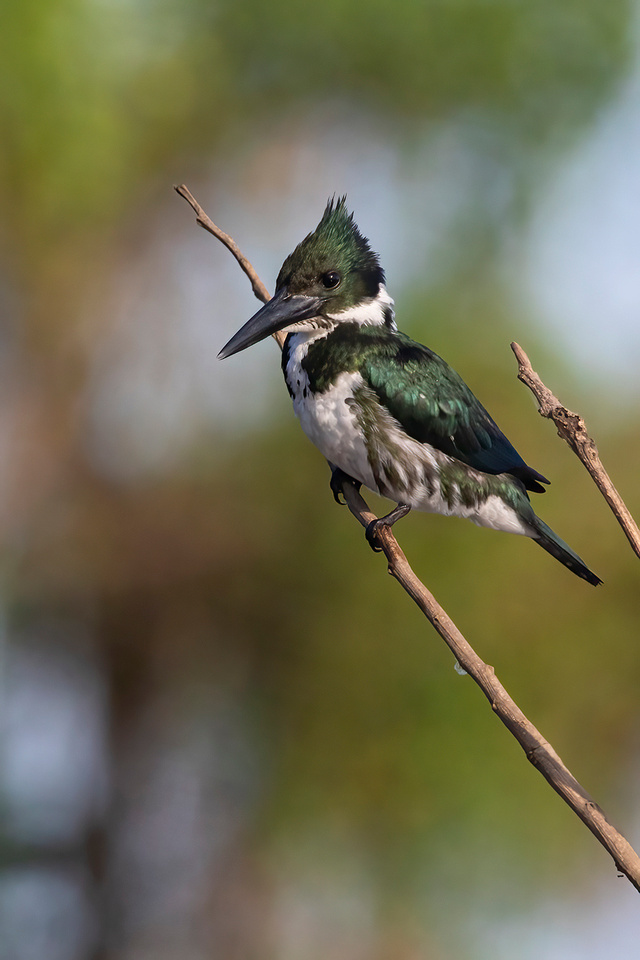
Amazon Kingfisher
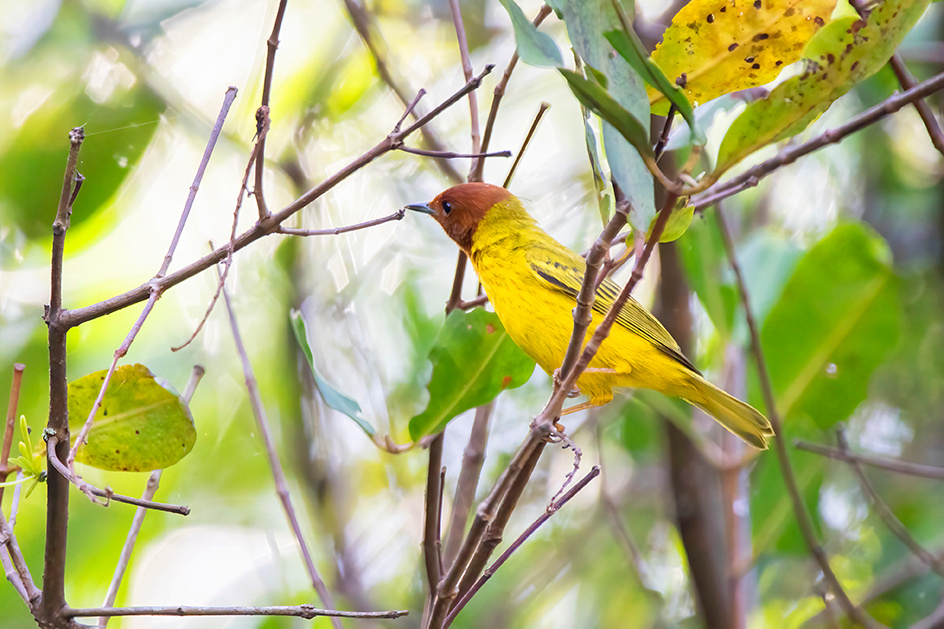 Mangrove Yellow Warbler
Mangrove Yellow Warbler
 Green Heron
Green Heron
The afternoon cruise was also productive. We got stuck on a sandbar and both guides jumped in the river to try and rock the boat free. We got free and as we were backing out a very large crocodile surfaced nearby. We saw several crab-eating raccoons emerging from the mangroves to search for food just before dark.
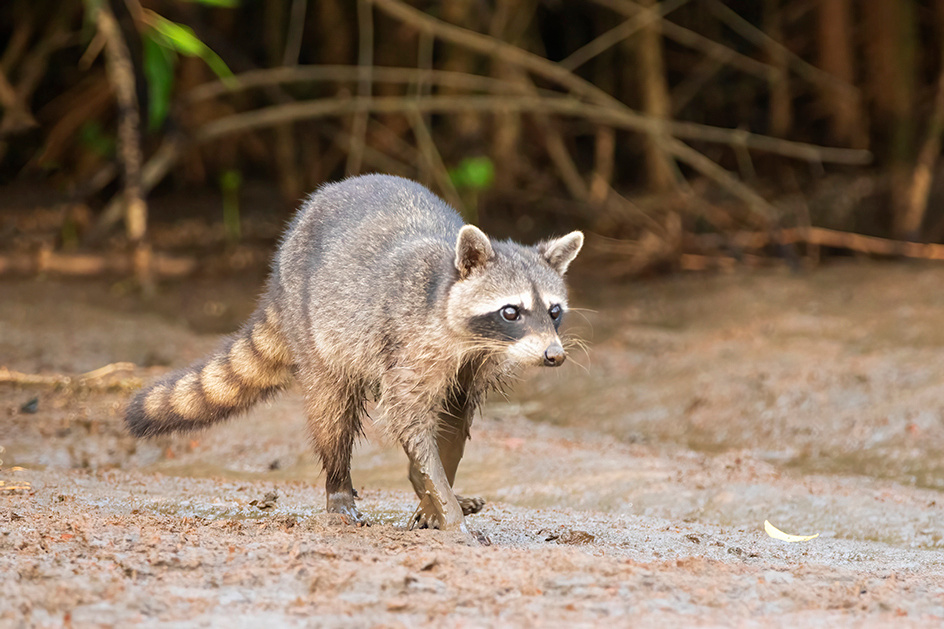 Crab-Eating Raccoon digging for crabs.
Crab-Eating Raccoon digging for crabs.
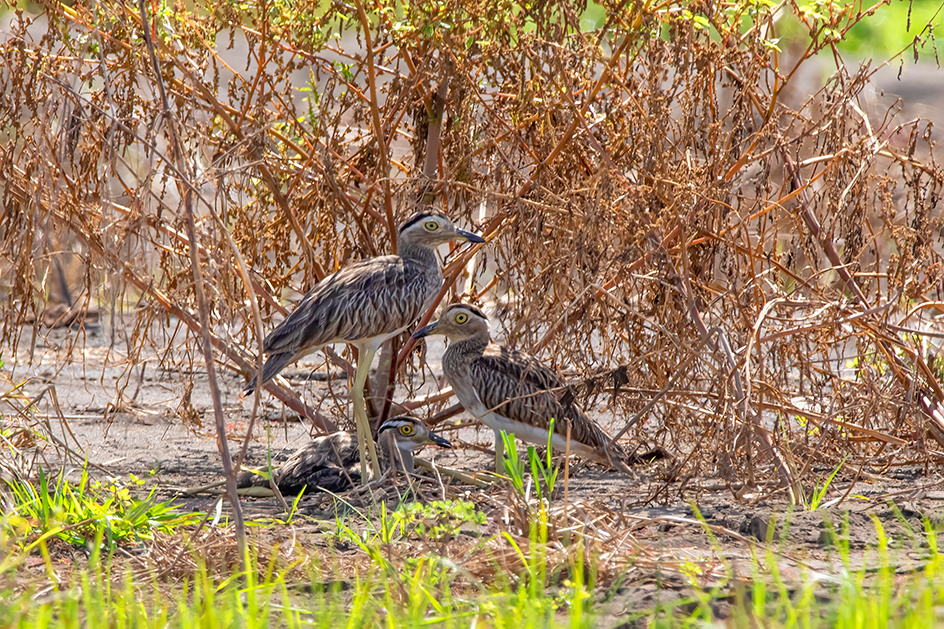 Double-Striped Thick-Knee at nest
Double-Striped Thick-Knee at nest
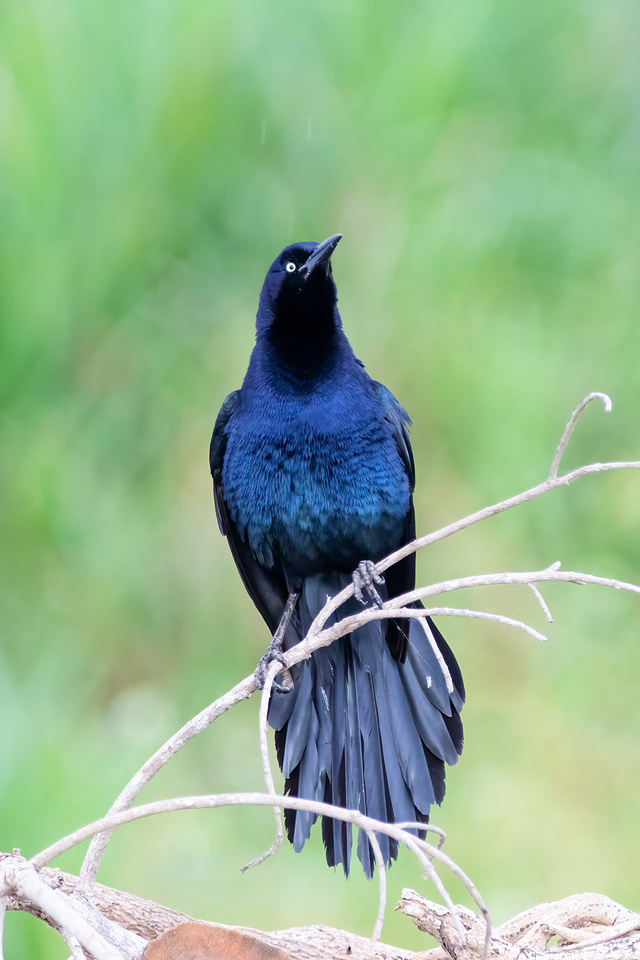
Displaying Great-Tailed Gackle
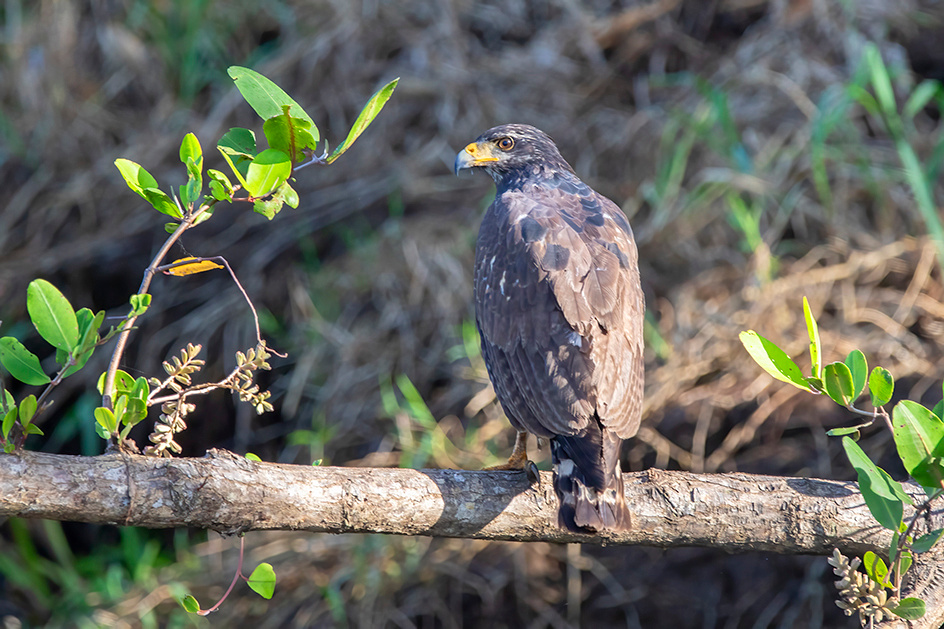 Common Blackhawk Fishing
Common Blackhawk Fishing
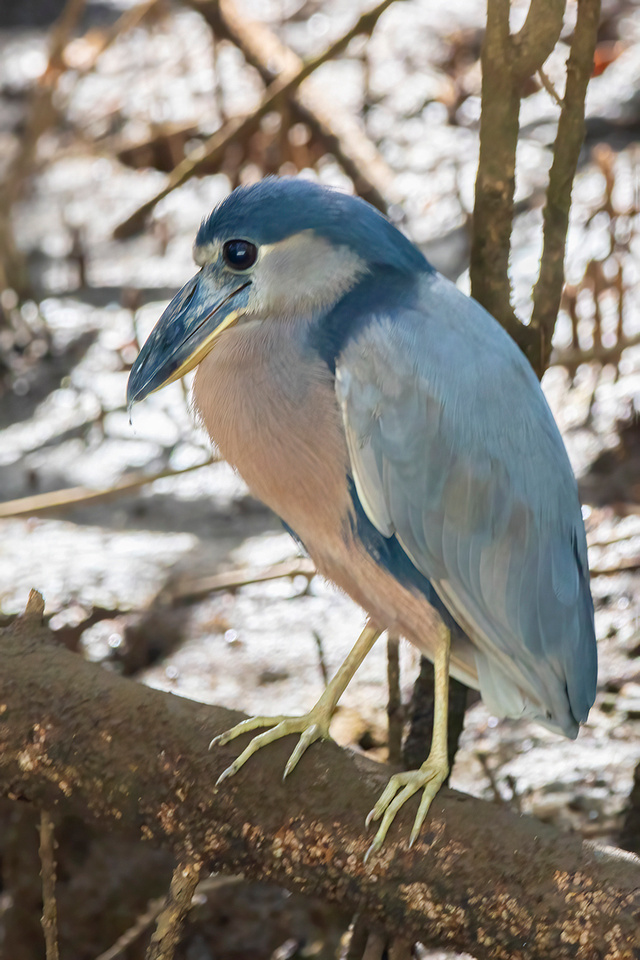
Boat-Billed Heron
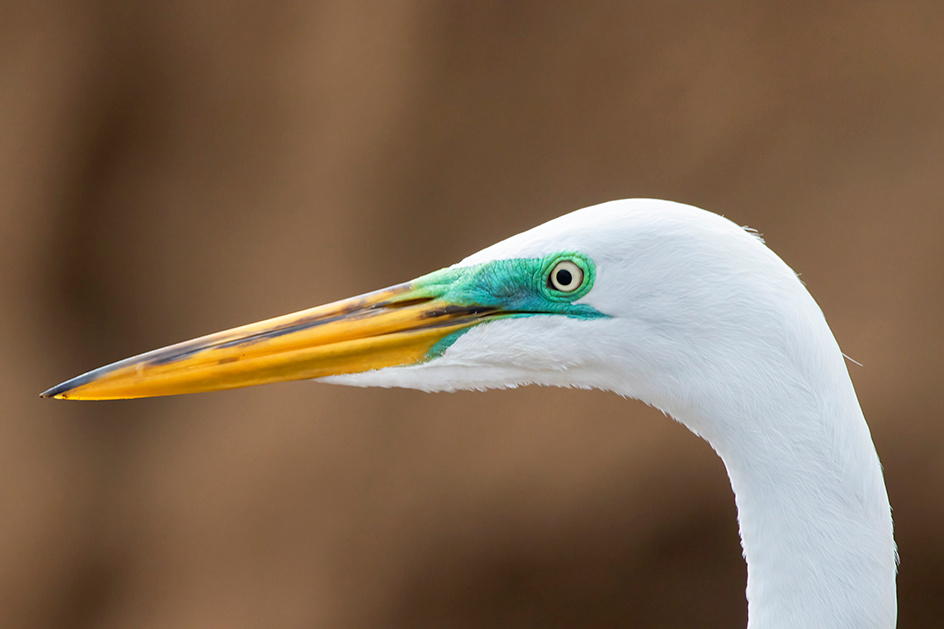 Great Egret in Breeding Plumage
Great Egret in Breeding Plumage
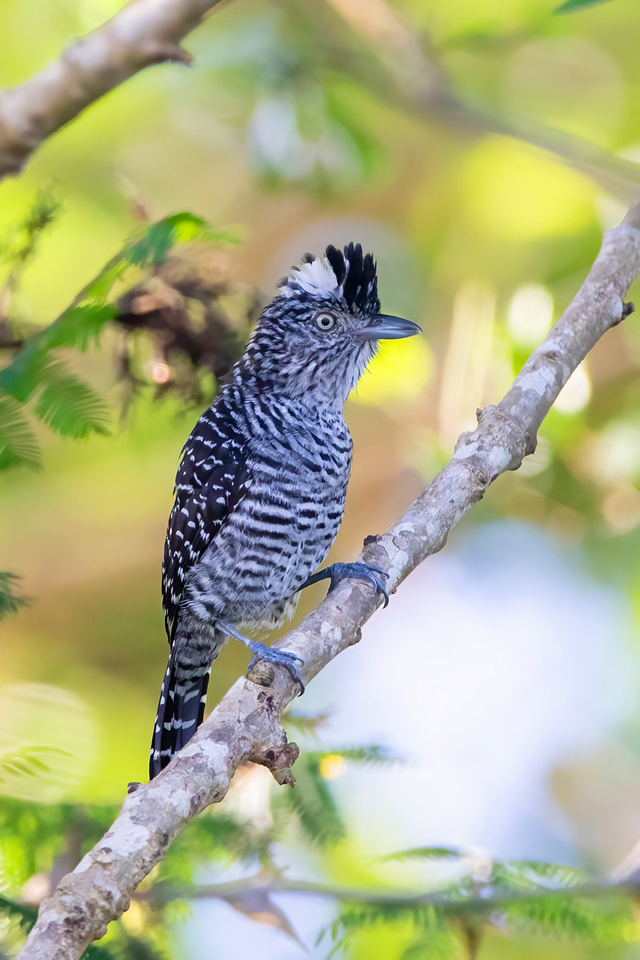
Barred Antshrike (Male)
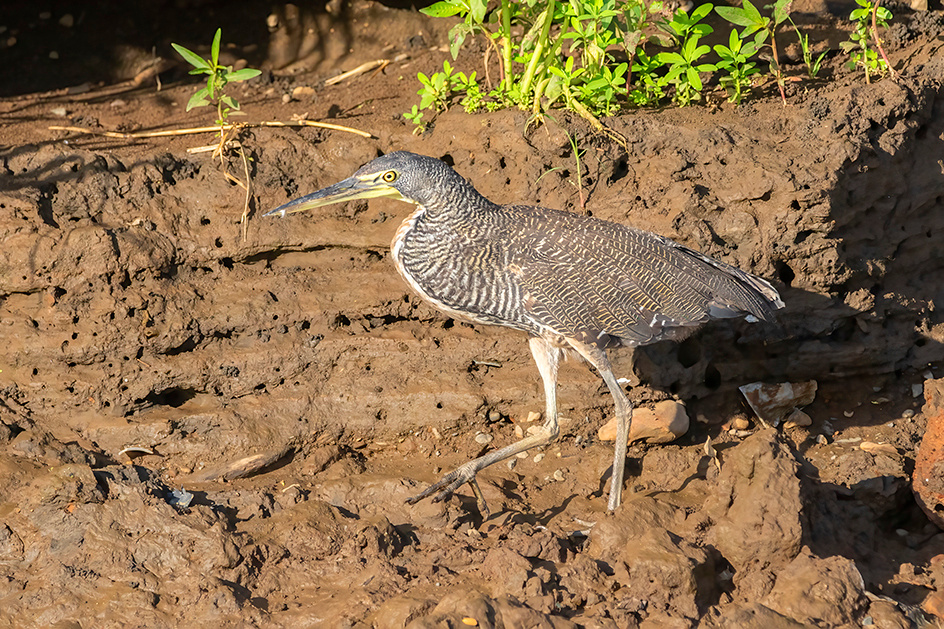 Bare-Throated Tiger Heron
Bare-Throated Tiger Heron
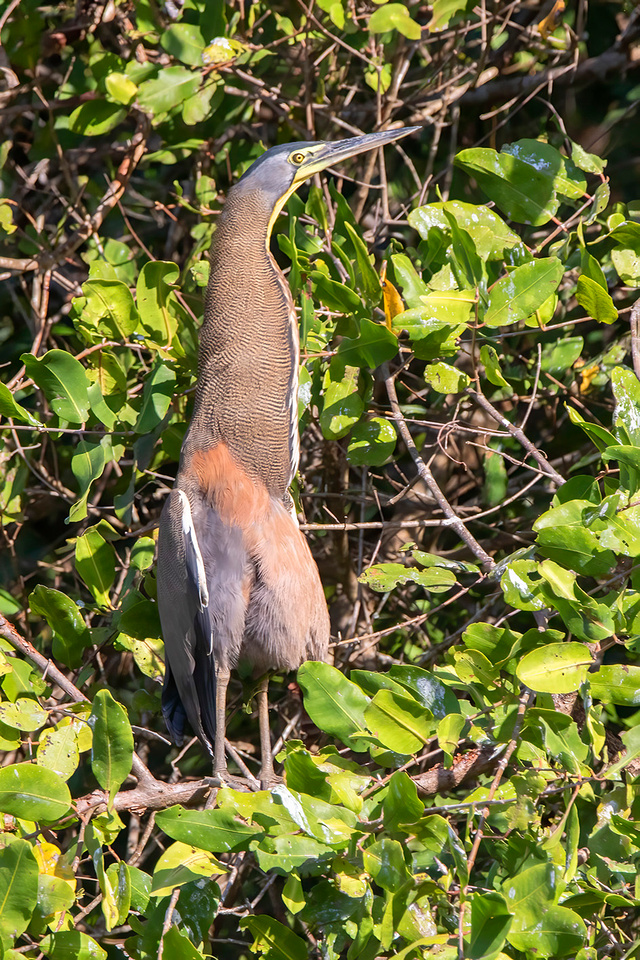
Bare-Throated Tiger Heron Sunning
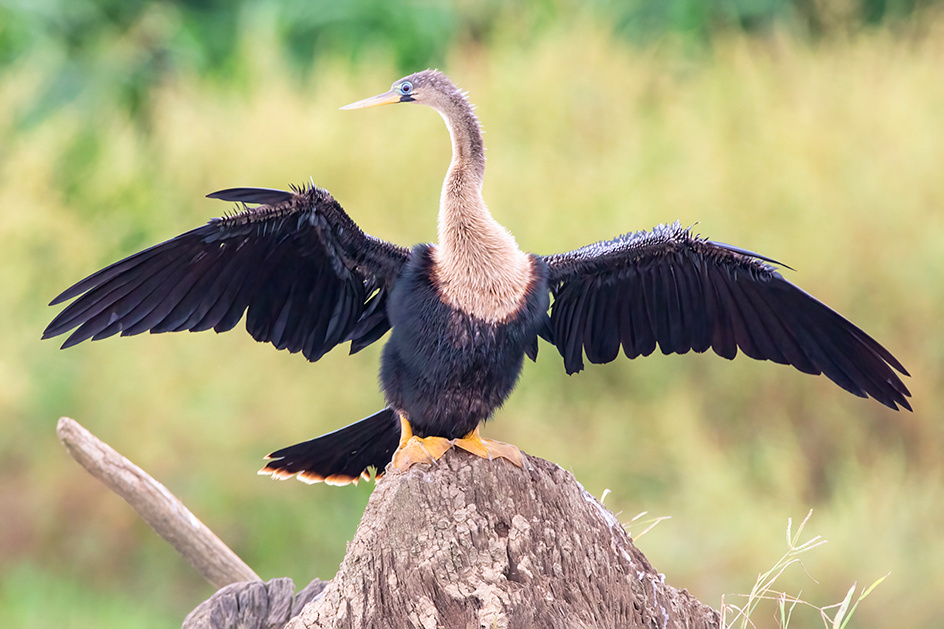 Anhinga - Drying his wings
Anhinga - Drying his wings
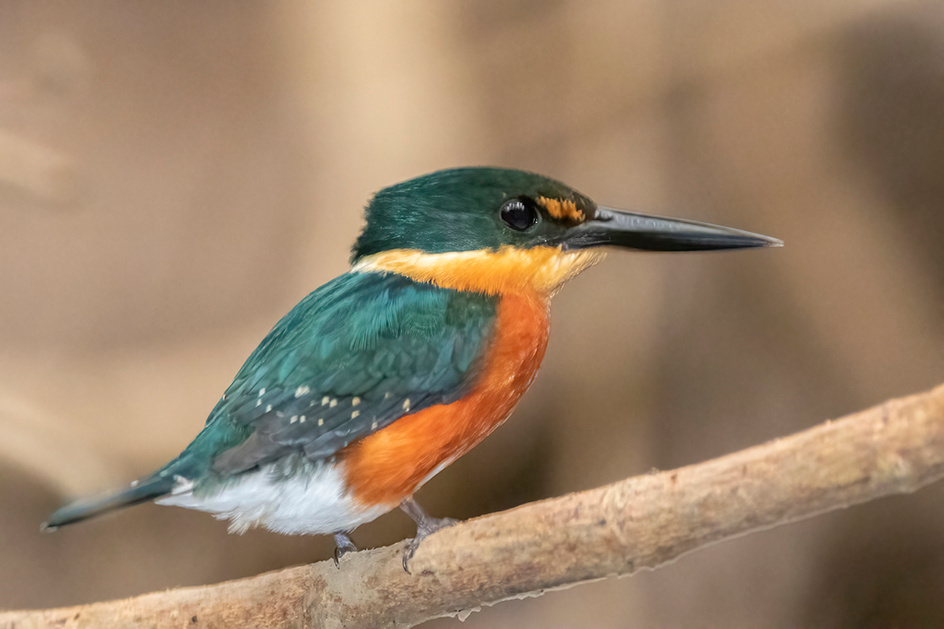 American Pygmy Kingfisher - I am really amazed at this image. It was almost dark and he was very, very close. Shutter speed was ridiculously slow. He held very still even as the guides were pulling the mangrove limbs away to allow a clean shot.
American Pygmy Kingfisher - I am really amazed at this image. It was almost dark and he was very, very close. Shutter speed was ridiculously slow. He held very still even as the guides were pulling the mangrove limbs away to allow a clean shot.
The next day we met our guide Alvaro in the community of Orotina to search for dry tropical forest birds. We saw, but were unable to photograph, the long-tailed manakin. We photographed both the Pacific screech owl and the ferruginous pygmy owl. We also photographed the gartered trogon and black-headed trogon. We found pair of bat falcons. However, I was not able to get more than a documentation photo of these small predators.
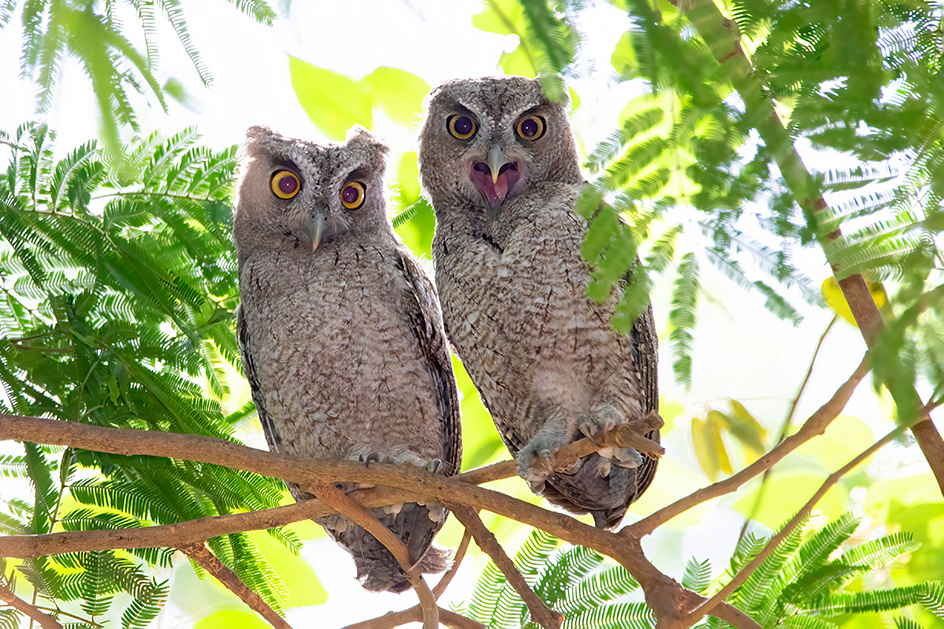 Pacific Screech Owl The one on the right was not enthusiastic about the photographer.
Pacific Screech Owl The one on the right was not enthusiastic about the photographer.
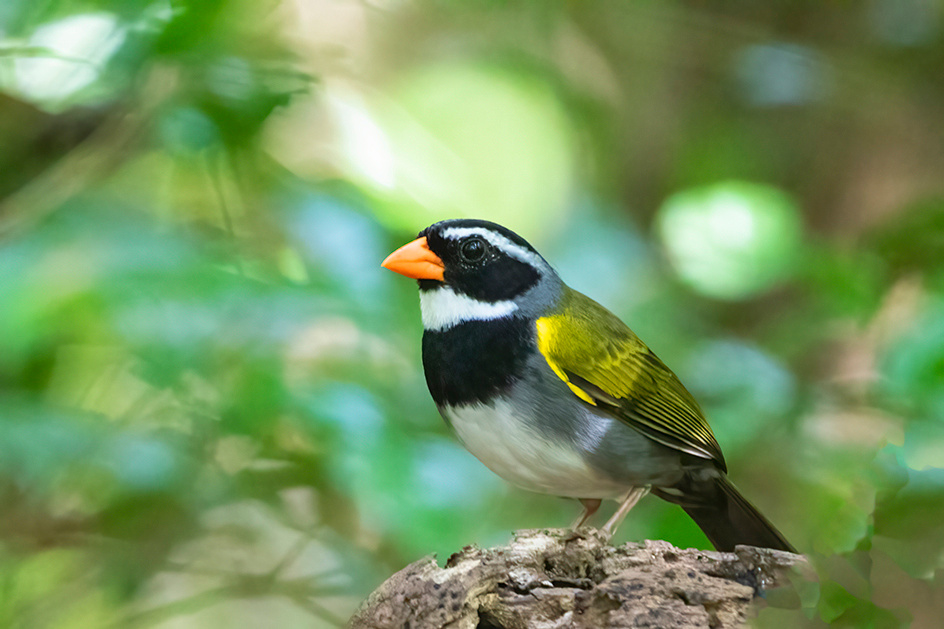 Orange-Billed Sparrow
Orange-Billed Sparrow
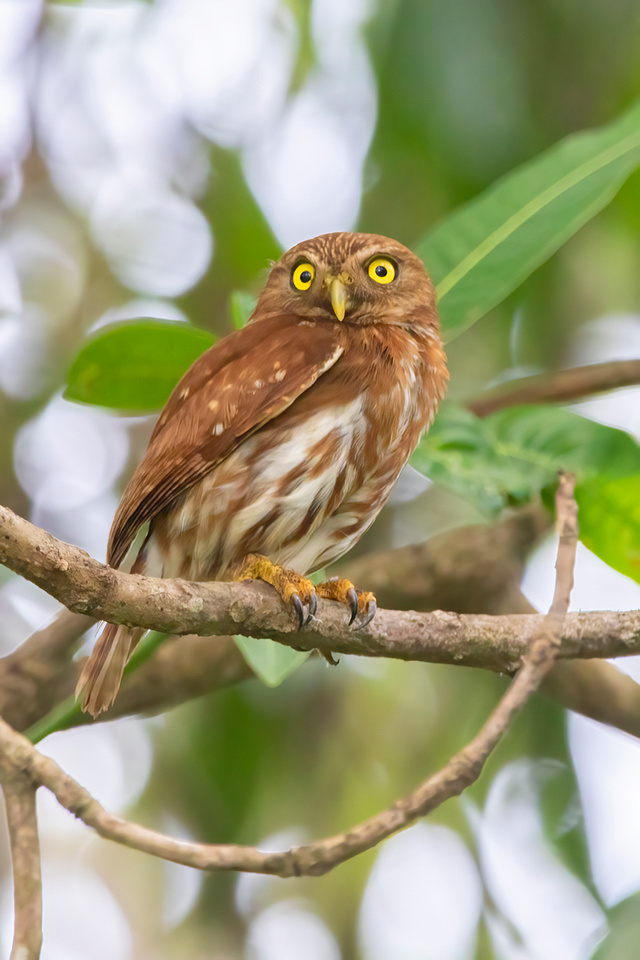
Ferruginous Pygmy Owl
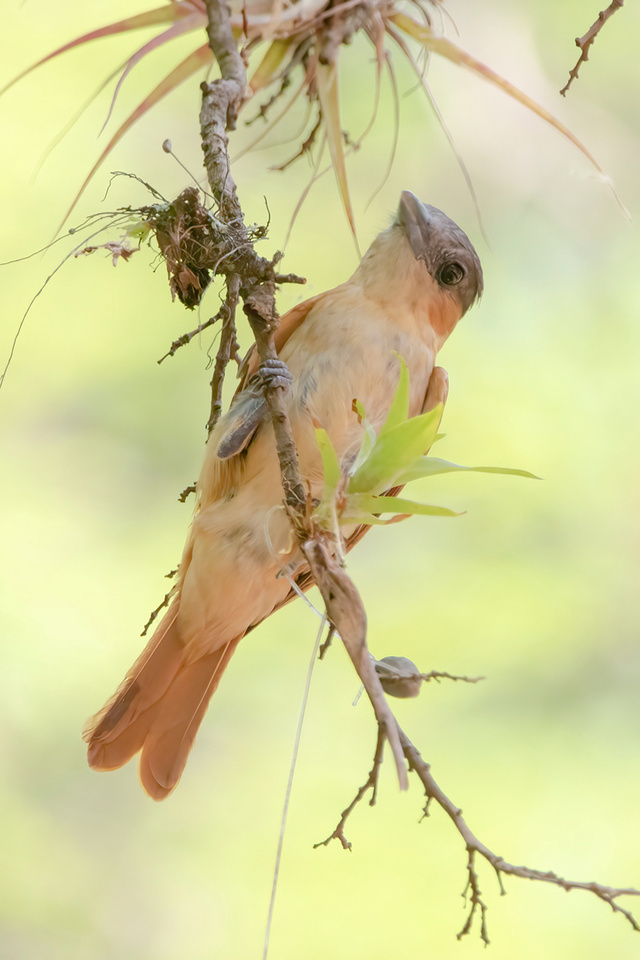
Rose-Throated Becard
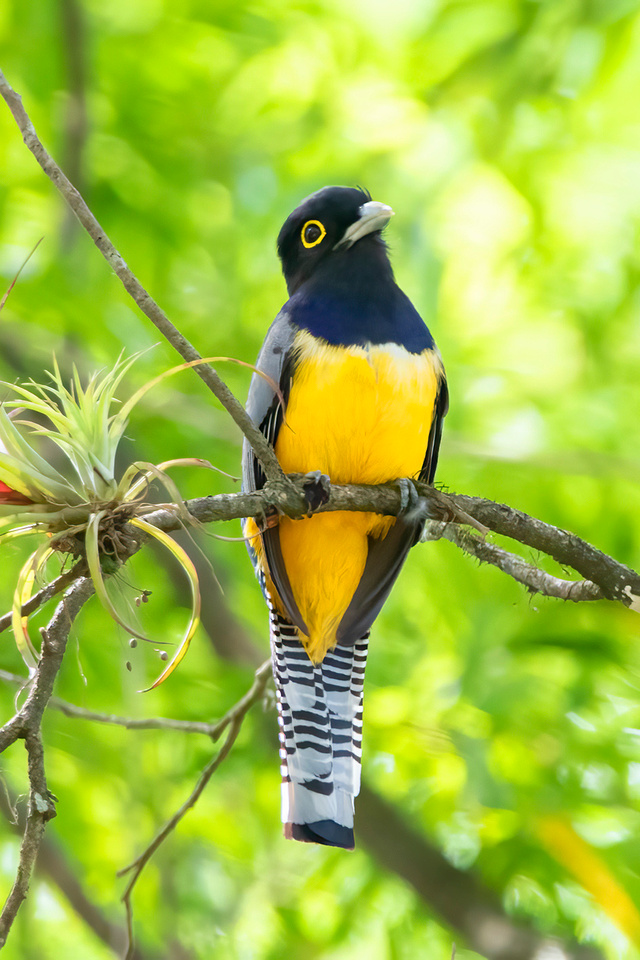
Gartered Trogon
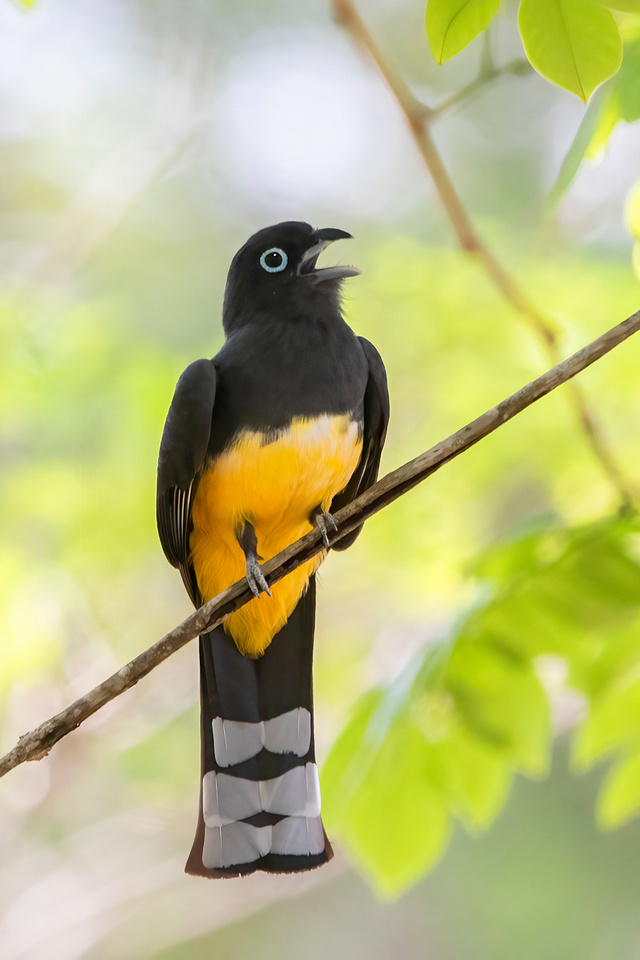
Black-Headed Trogon
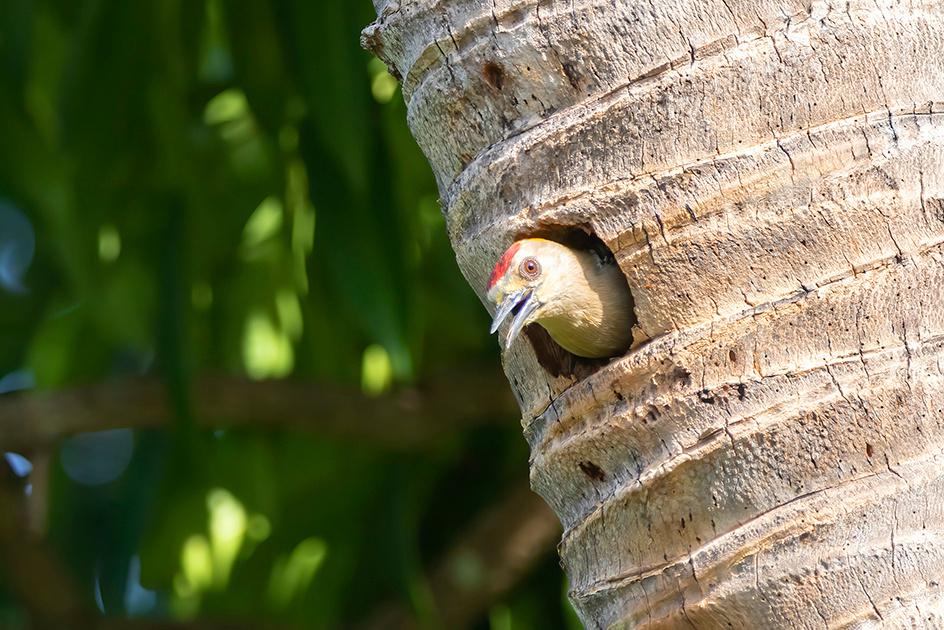 Hoffman's Woodpecker
Hoffman's Woodpecker
We left Orotino and headed back to Villa Lapas and got caught up in horrible traffic. It took us several hours to travel a few kilometers. The friday afternoon before Easter in a catholic country is not a good time to travel. The next day we headed toward Savegre Lodge in the higher mountains of Costa Rica.
It was about a four hour drive from Villa Lapas to Savegre. We followed the coastal highway to the community of Dominical and then headed up into the mountains. Stunning mountain scenery, but we were in and out of the clouds at over 6,000 feet before we turned off on the steep, windy access road to Savegre Lodge in San Gerardo de Dota. This cloud forest is the home of numerous mountain species including the stunning resplendent quetzal. Early the next morning our guide Melvin took us to an active quetzal nest tree. They are cavity nesters in the trogon family and have extremely long back streamers that are several feet long. The male is stunning. We observed at a distance the adults bringing food items to the nest. The distance was long and the light was poor. I did get a few images that I like, but a camera with better low-light capability might have been useful.
 Resplendent Quetzal (Male)
Resplendent Quetzal (Male)
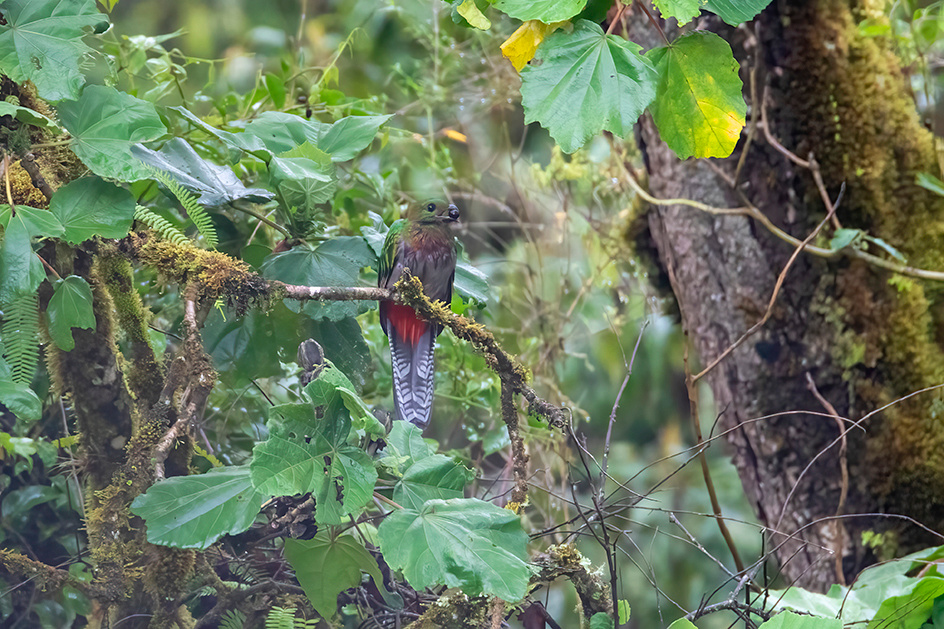 Resplendent Quetzal (Female)
Resplendent Quetzal (Female)
Melvin invited us to shoot at his garden located on the Savegre property. He had numerous fruit and hummingbird feeders. Baltimore oriole, long-tailed silky flycatcher, lesser violetear, volcano hummingbird, slaty flower piercer, and a pair of nesting southern emerald toucanet kept me busy. We took a hike with Melvin and captured a few frames of a spotted wood quail under difficult lighting. Further, up the mountain we encountered and photographed a collared redstart. One of these striking little warblers was singing and displaying all around us. I was able to finally capture him in good light with a decent background.
 Spotted Wood Quail
Spotted Wood Quail
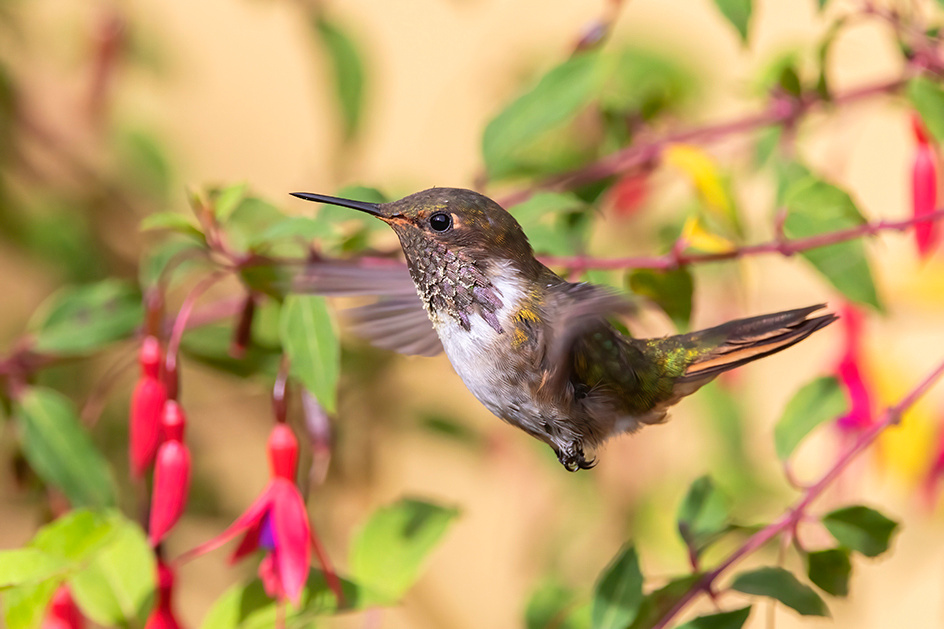 Volcano Hummingbird
Volcano Hummingbird
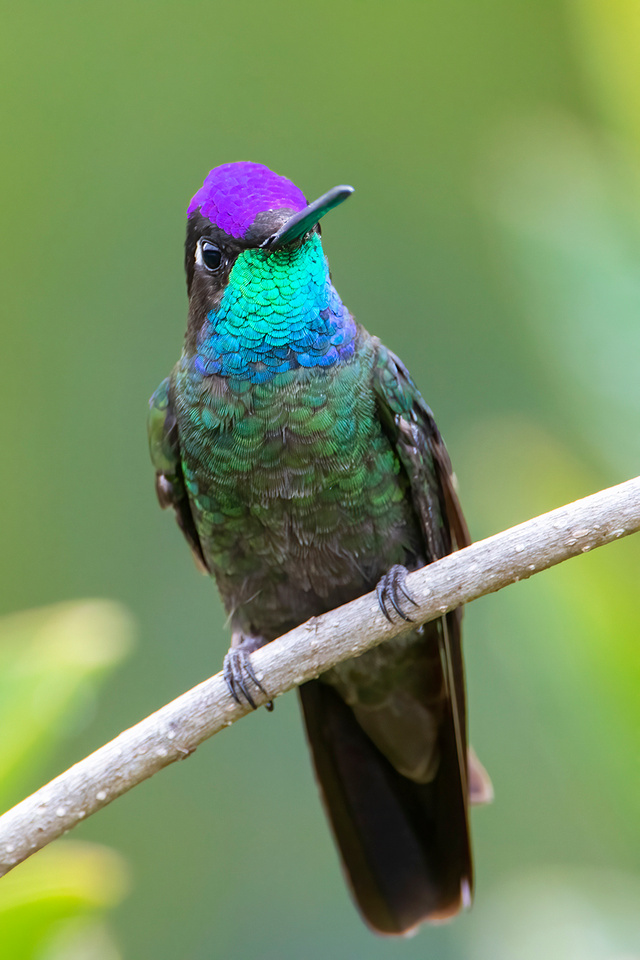
Talamanca Hummingbird (formerly Magnificent Hummingbird)
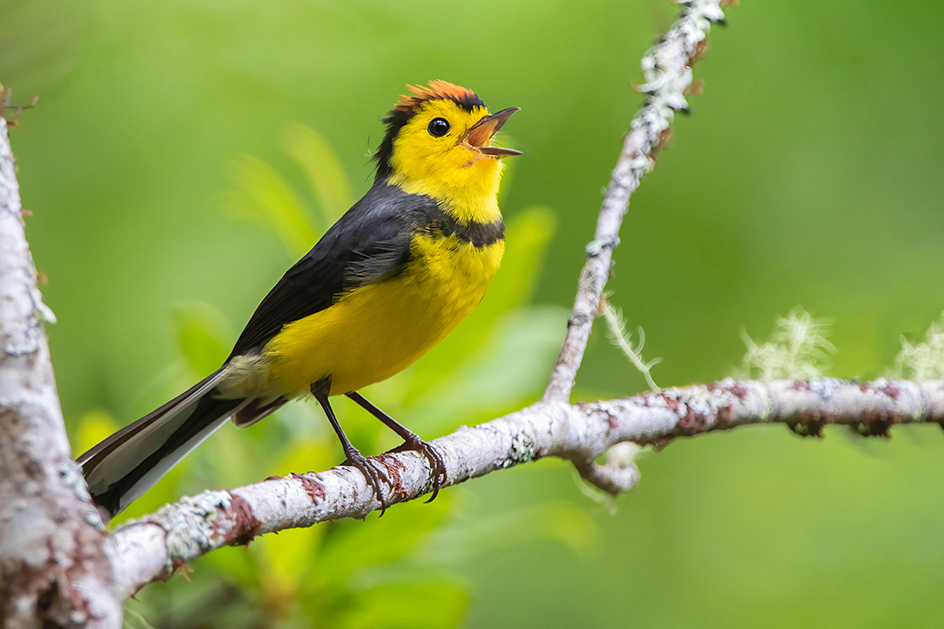 Collared Redstart
Collared Redstart
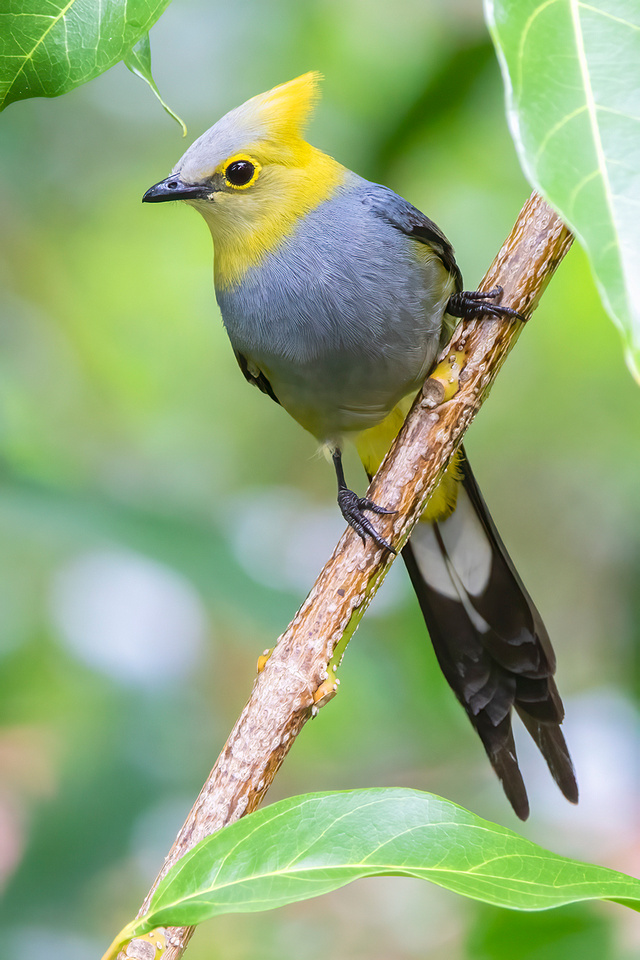
Long-Tailed Silky Flycatcher
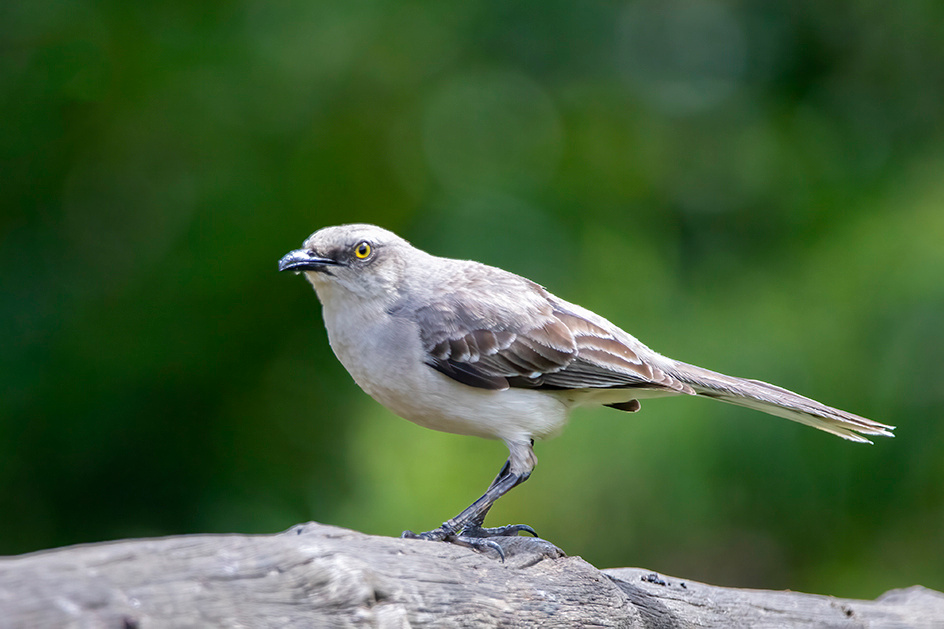 Tropical Mockingbird
Tropical Mockingbird
I visited Melvin's garden for a few hours the next day and was rewarded with numerous tanager photos including scarlet-rumped, silver-throated, palm, and blue-gray. Spectacular flame-colored tanager and acorn woodpeckers were abundant. Toucanets are also cavity nesters and I was able to photograph the adults bringing food items to the nest on several occasions. One of those items was a large lizard.
 Tennessee Warbler
Tennessee Warbler
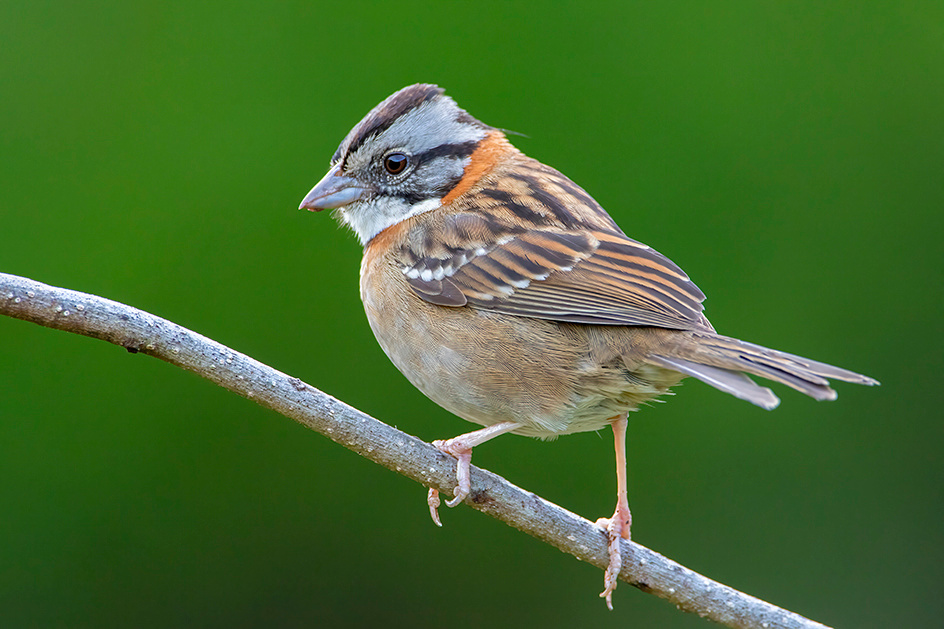 Rufous-Collared Sparrow
Rufous-Collared Sparrow
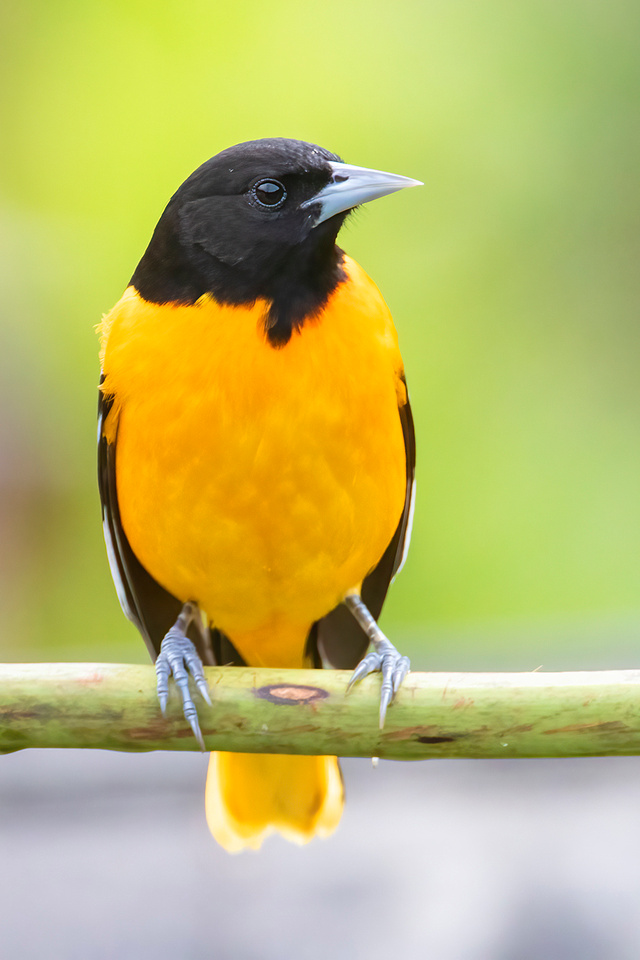
Baltimore Oriole (Ventral View)
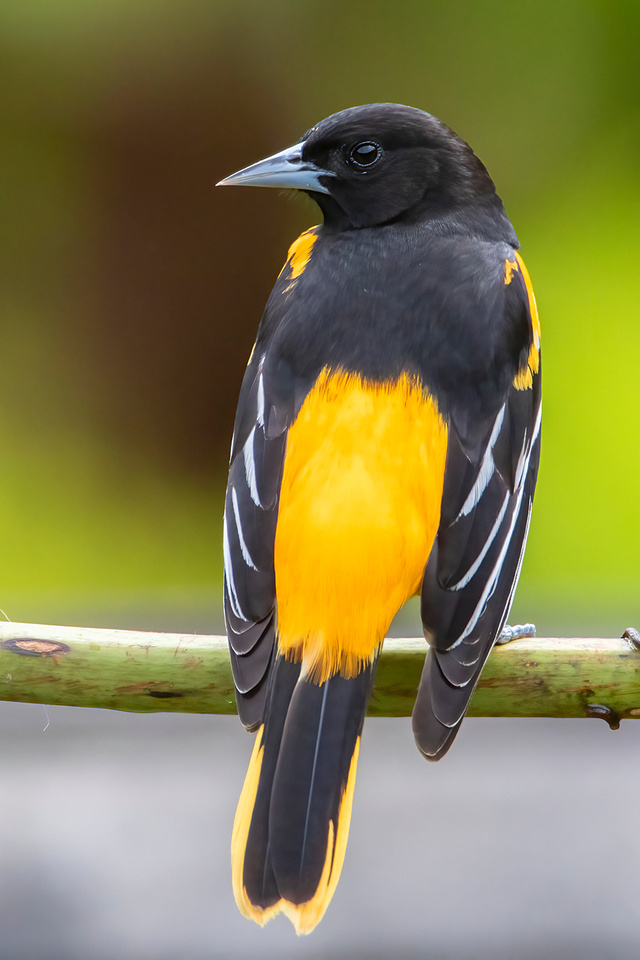
Baltimore Oriole (Dorsal View)
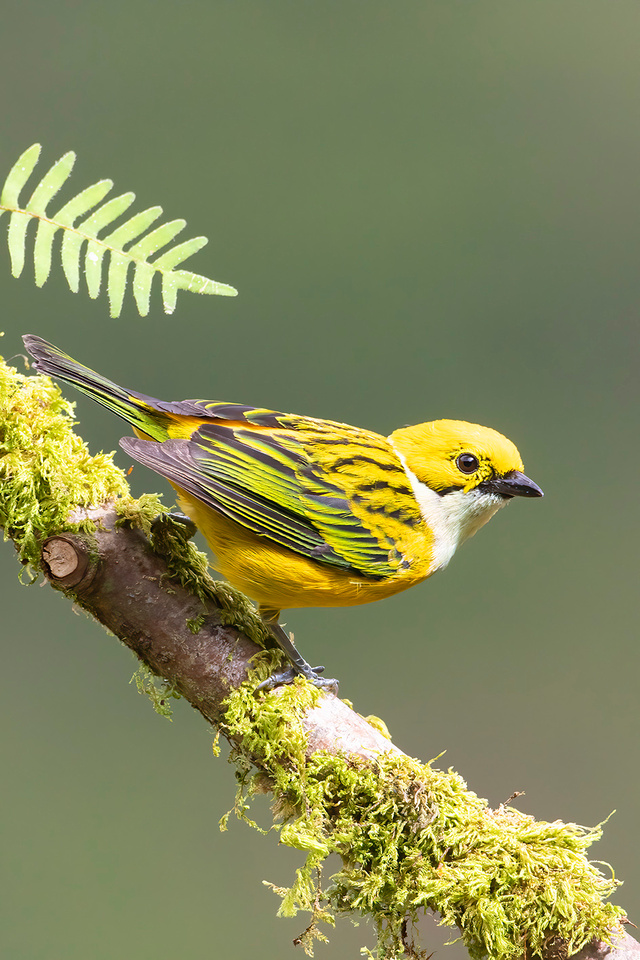
Silver-Throated Tanager
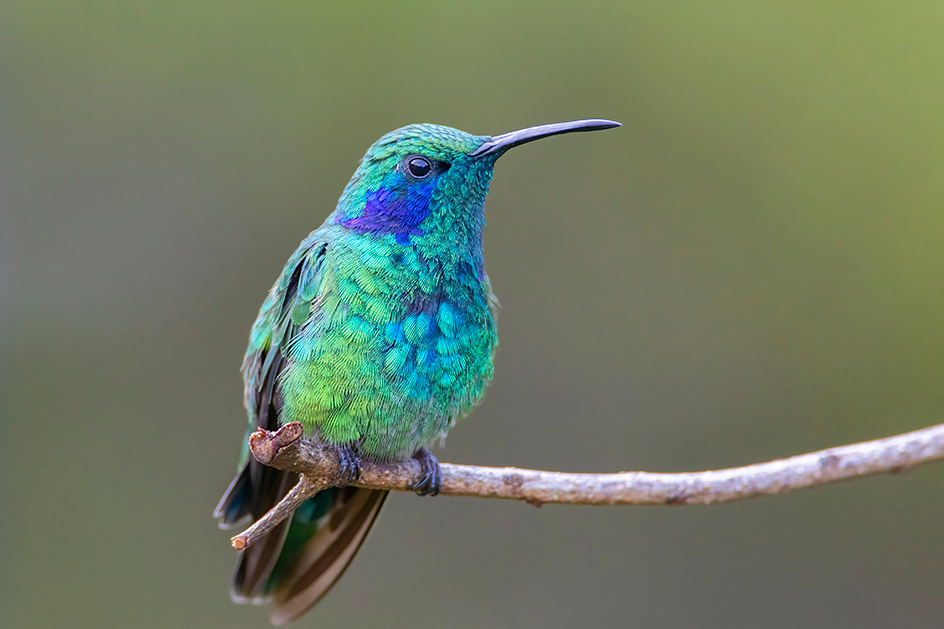 Lesser Violetear
Lesser Violetear
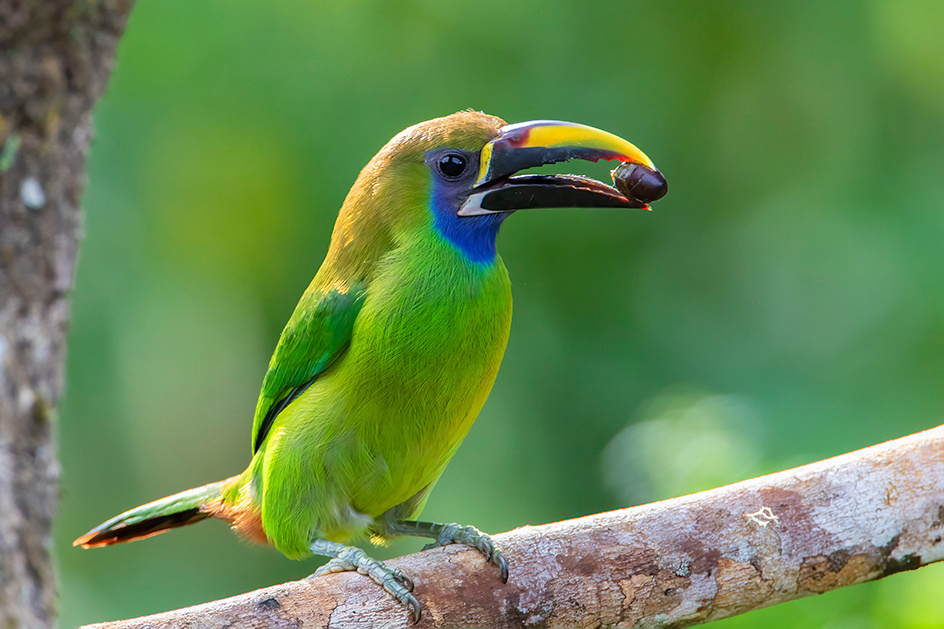 Southern Emerald Toucanet
Southern Emerald Toucanet
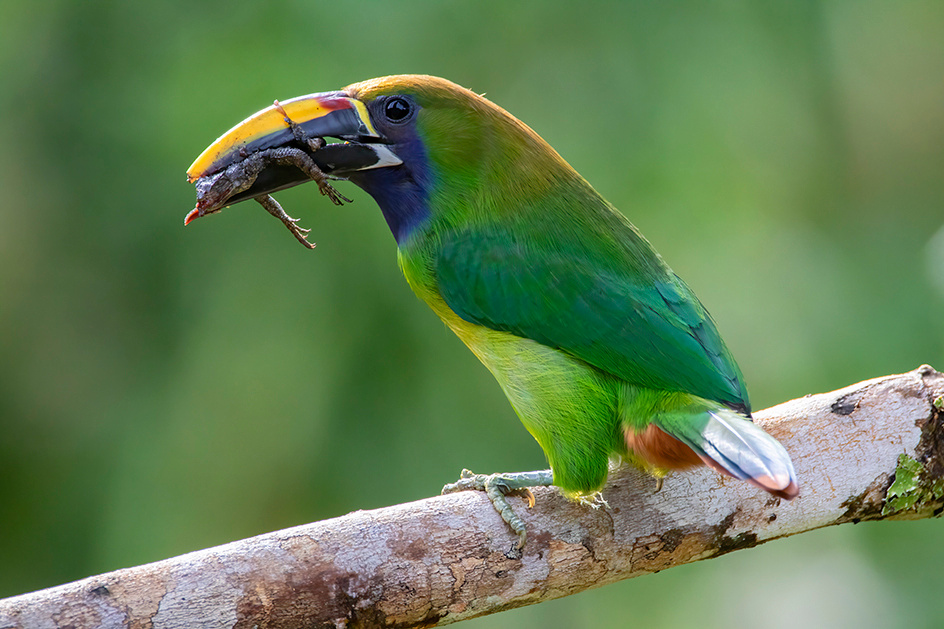 Southern Emerald Toucanet with a large lizard.
Southern Emerald Toucanet with a large lizard.
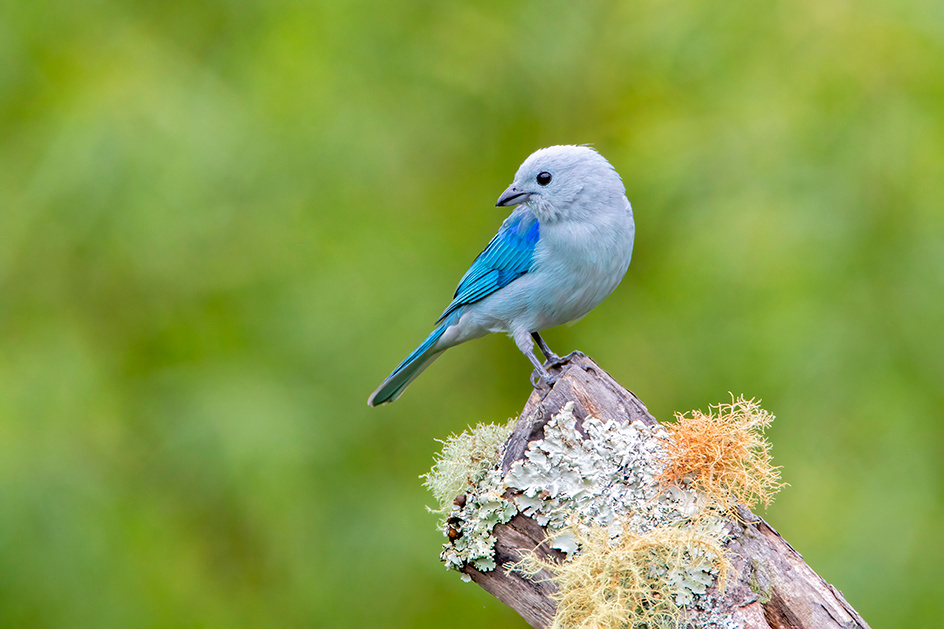 Blue-Gray Tanager
Blue-Gray Tanager
 Acorn Woodpecker
Acorn Woodpecker
Later that day we visited Batsu Feeders at an adjacent property. Excellent covered shooting areas with nicely setup fruit and hummingbird feeders. Because the background was a distant forested mountain, the backgrounds here were the best of the trip. Many of the same species were present as we had found in Melvin's garden, but we added a few new ones including yellow-throated brush finch, large-footed finch, sulphur-winged parakeet, chestnut-capped brush finch, and rose breasted grosbeak.
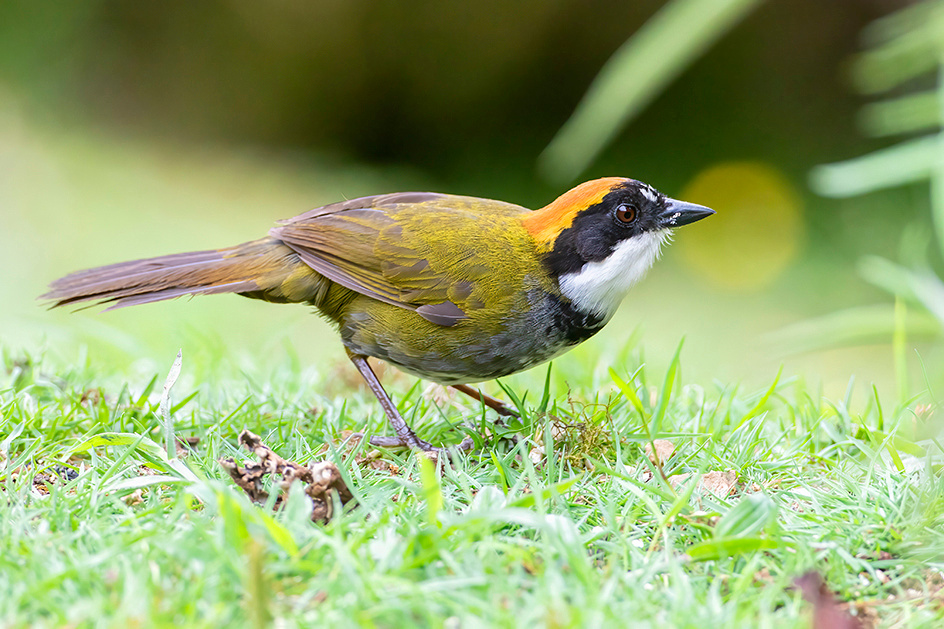 Chestnut-Capped Brush Finch
Chestnut-Capped Brush Finch
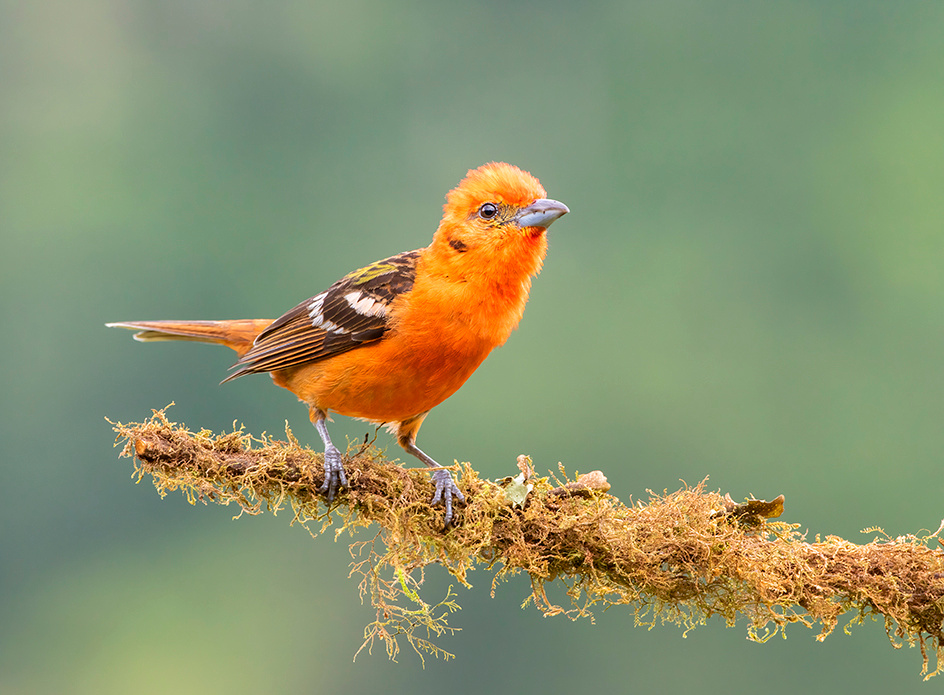 Flame-Colored Tanager
Flame-Colored Tanager
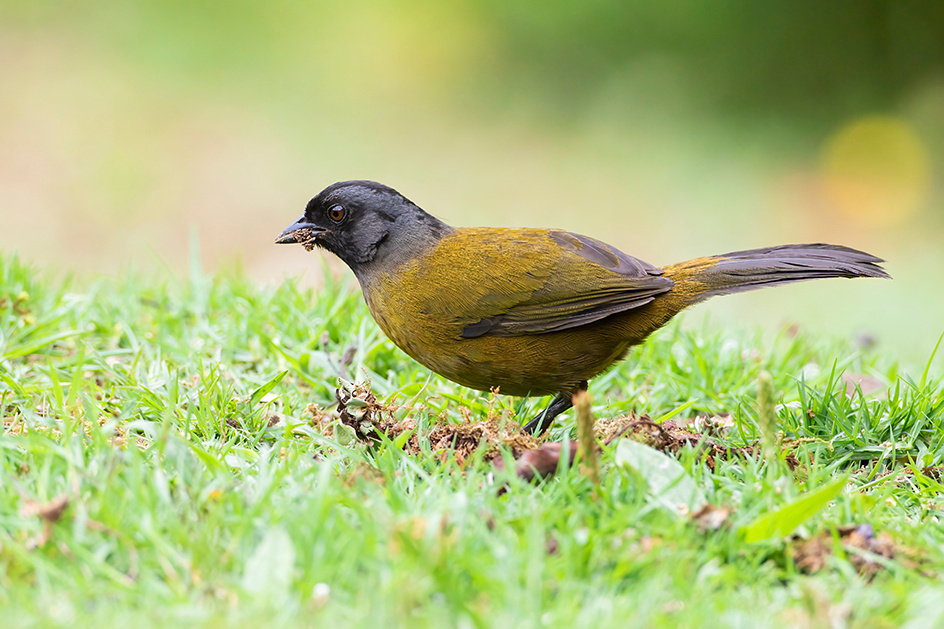 Large-Footed Finch
Large-Footed Finch
 Yellow-Throated Brush Finch
Yellow-Throated Brush Finch
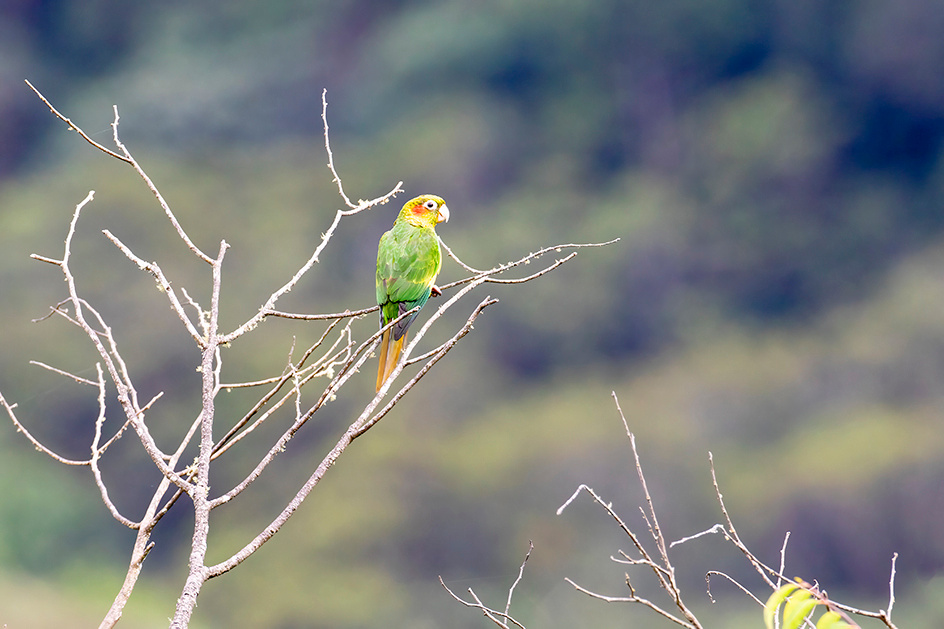 Sulphur-Winged Parakeet
Sulphur-Winged Parakeet
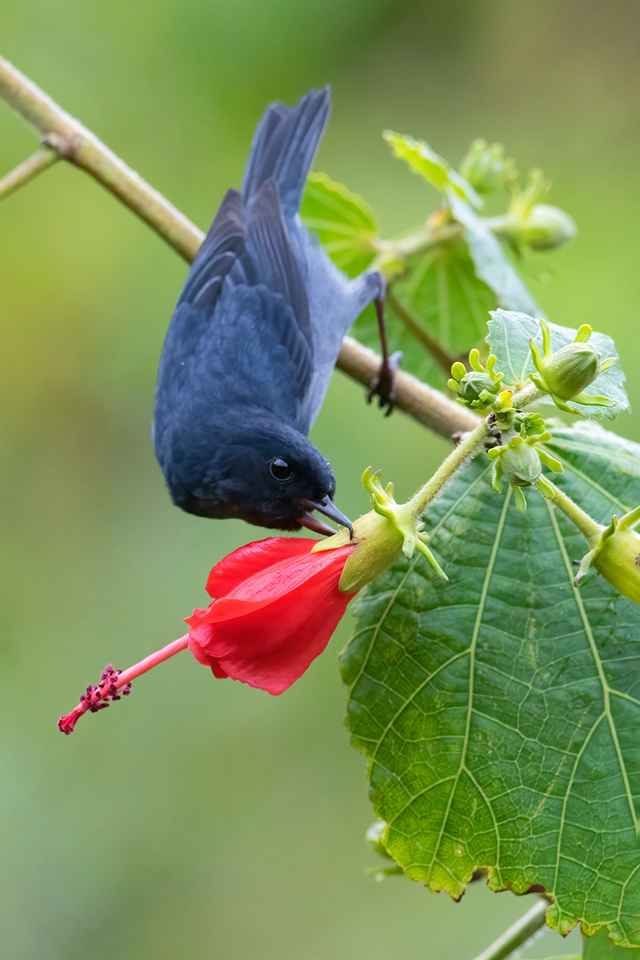
Slaty Flowerpiercer
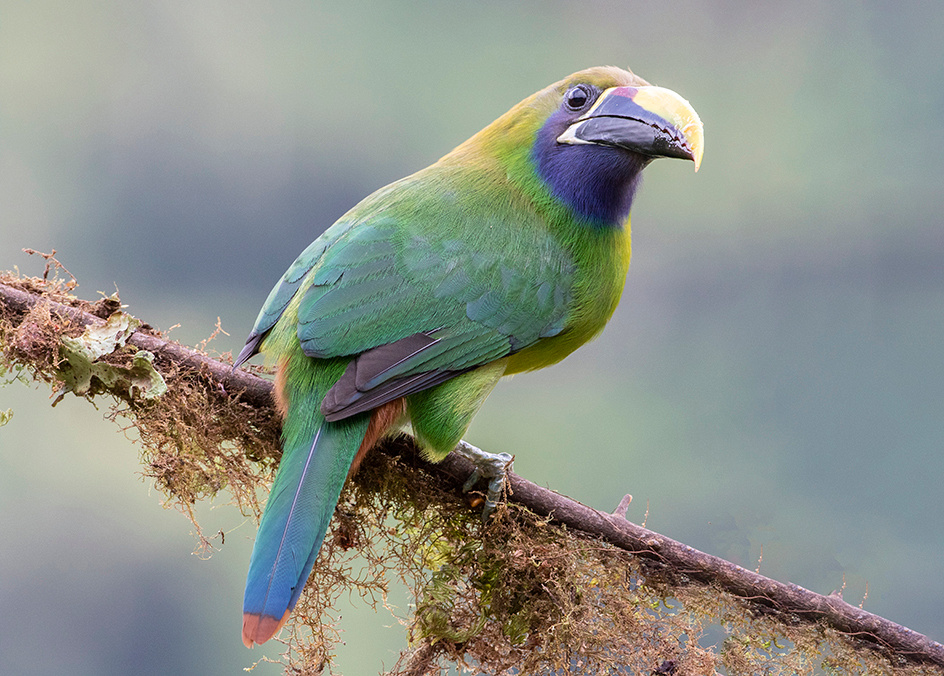 Southern Emerald Toucanet
Southern Emerald Toucanet
On our last morning at Savegre, I loaded up my largest lens with attached teleconverter and attempted to improve on my previous quetzal images. I was able to capture numerous distant shots of the male coming to the nest cavity and feeding the single young in the nest. Lots of action, but again low light and not quite enough shutter speed to freeze the action. As we were leaving Savegre I was able to photographed another life bird, the mountain thrush, as well as a tufted flycatcher.
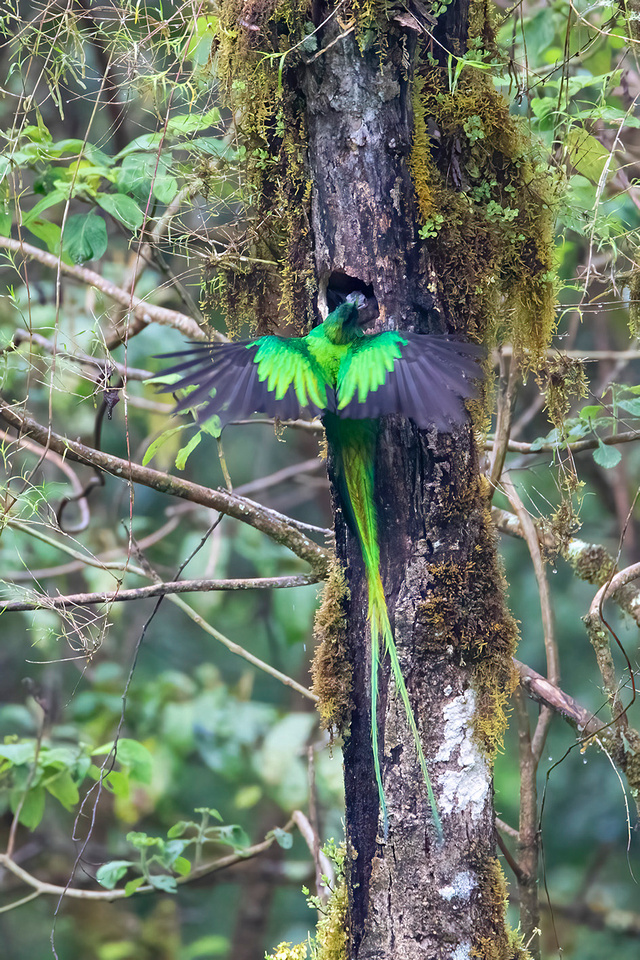
Resplendent Quetzal feeding chick
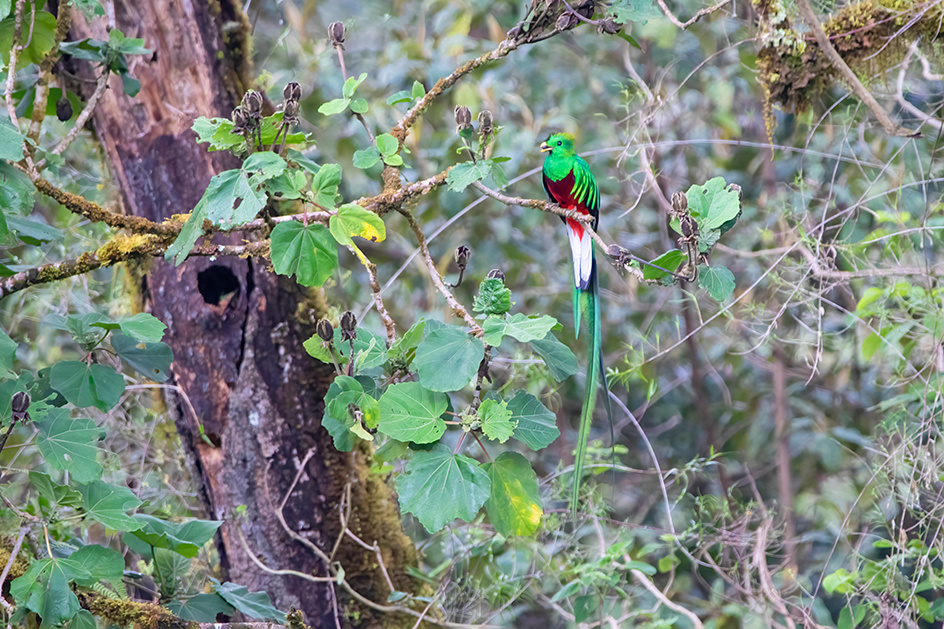 Resplendent Quetzal
Resplendent Quetzal
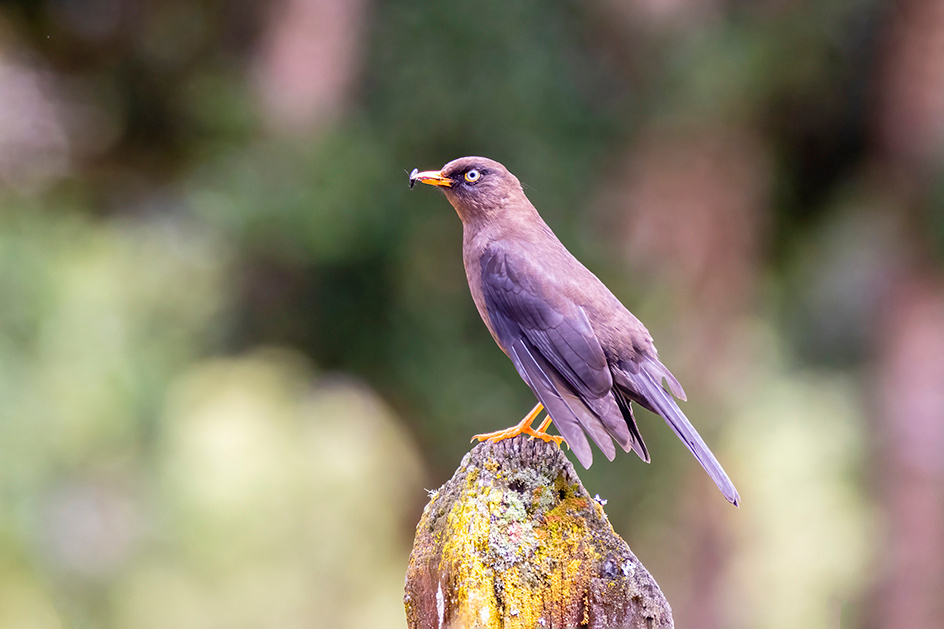 Mountain Thrush
Mountain Thrush
We left Savegre and rejoined the Interamerican highway towards San Jose and our airport hotel (Hotel Bougainvillea). The navigation app was absolutely essential in traversing San Jose suburbs to reach our destination. We made no less than 35 turns as we wound our way through city streets and neighborhoods. An Alamo car rental representative stopped by and collected the car and phone that afternoon after we visited a nearby Covid testing facility. At the time of our travel a negative Covid test was required to re-enter the U.S.
Hotel Bougainvillea turned out to be much more than an airport hotel. We enjoyed good food, a comfortable room and friendly staff. I also enjoyed the 13 acres of gardens associated with the hotel. In a couple of hours I photographed brown, jay, Hoffman's woodpecker, mottled owl, chestnut-sided warbler, red-eyed vireo, rufous-naped wren, crested caracara, and Swainson's thrush. A very pleasant way to spend our last hours in Costa Rica.
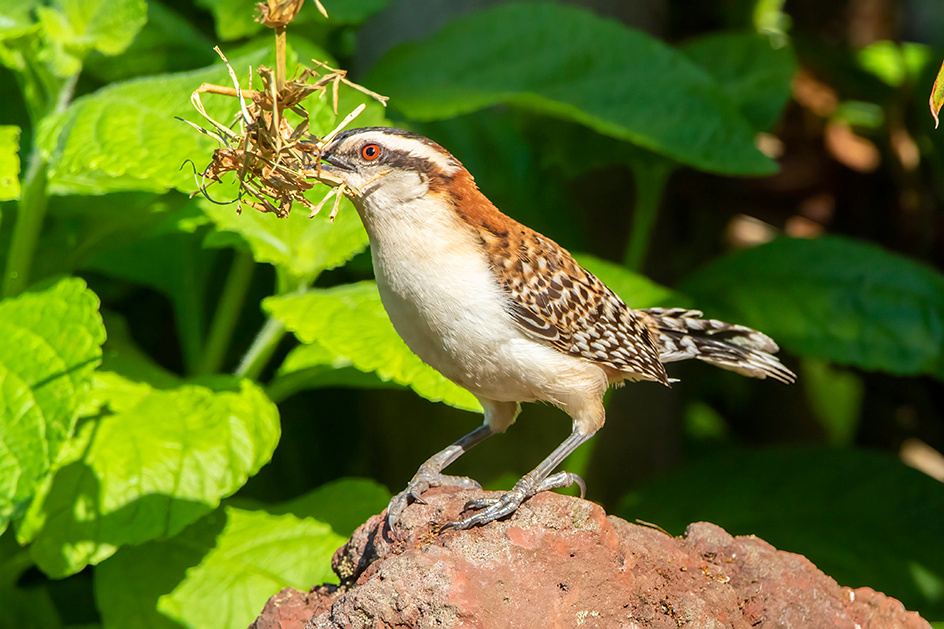 Rufous-Naped Wren
Rufous-Naped Wren
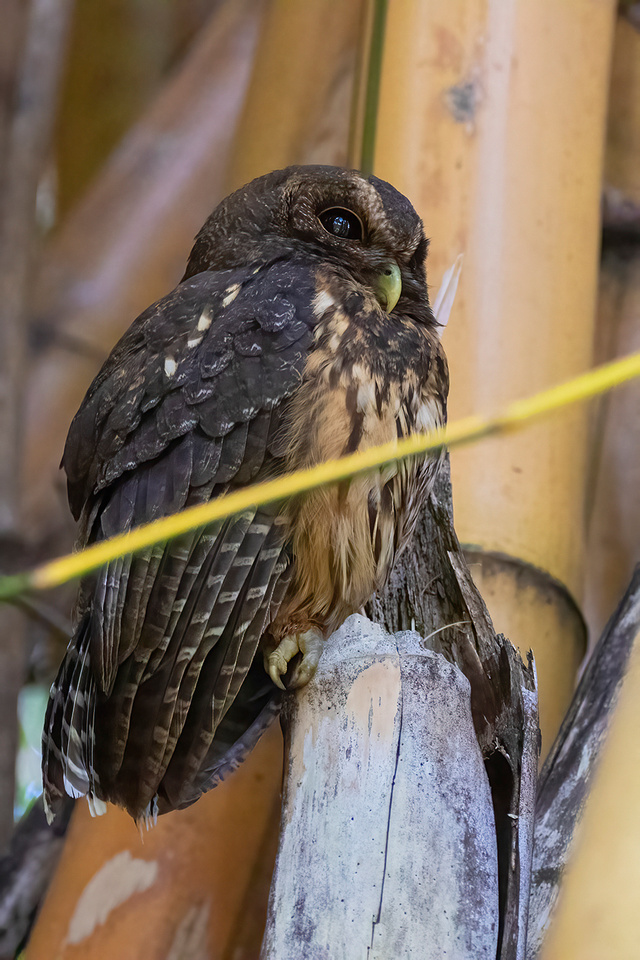
Mottled Owl - I really wish that one strip of bamboo was not crossing in front of him.
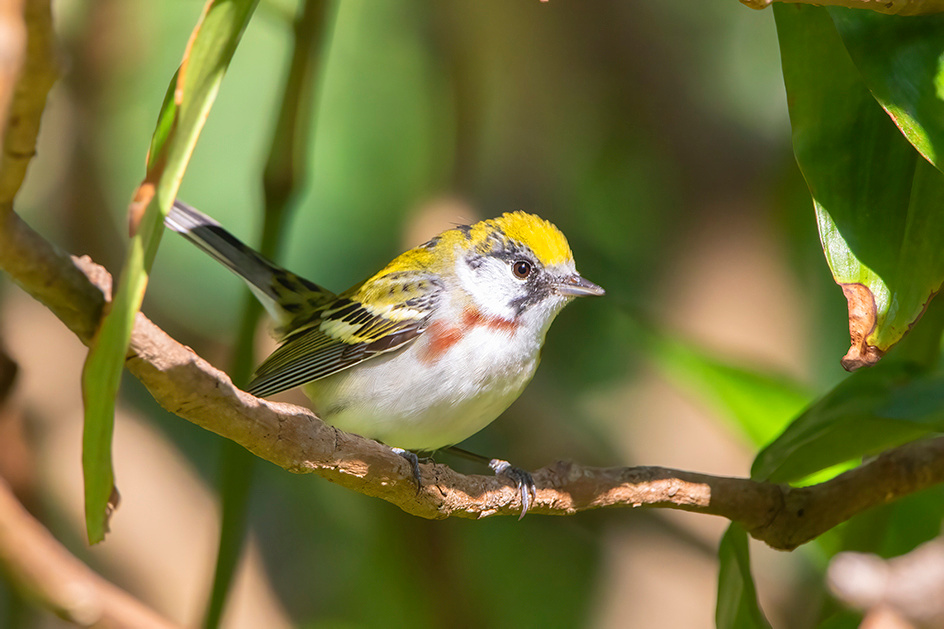 Chestnut-Sided Warbler
Chestnut-Sided Warbler
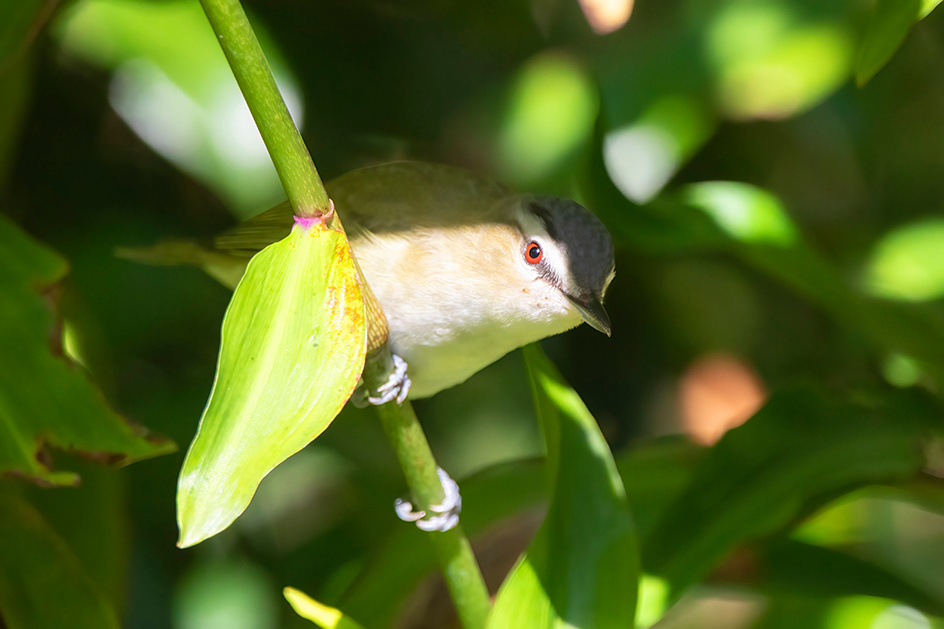 Red-Eyed Vireo
Red-Eyed Vireo
After an excellent breakfast, an english speaking representative of Aratinga Tours transported us to the airport which was about 30 minutes away. All in all a very smooth, well planned photo tour. I took over 14,000 photos during our two week trip. I ended up with 160 total bird species for the trip including 82 life birds. Consider using Aratinga Tours for your Costa Rica travel.
Cabin Lake Oregon is one of my favorite photo locations. I have photographed there for the last 15 years, usually several days per year. Cabin Lake is in Lake County and within the Deschutes National Forest about 10 miles due north of the community of Fort Rock. A good gravel road connects Fort Rock and Cabin Lake. A very primitive U.S. Forest Service campground is present just north of the Cabin Lake guard station.
Cabin Lake is an infrequently used U.S. Forest Service Guard Station. Behind the guard station buildings are two small concrete water basins. The basins are fenced to exclude cattle and each water basin has a permanent wooden photo/observation blind within 10 to 12 feet. The blinds are large enough to accommodate several users. These blinds generally face north toward the basins.
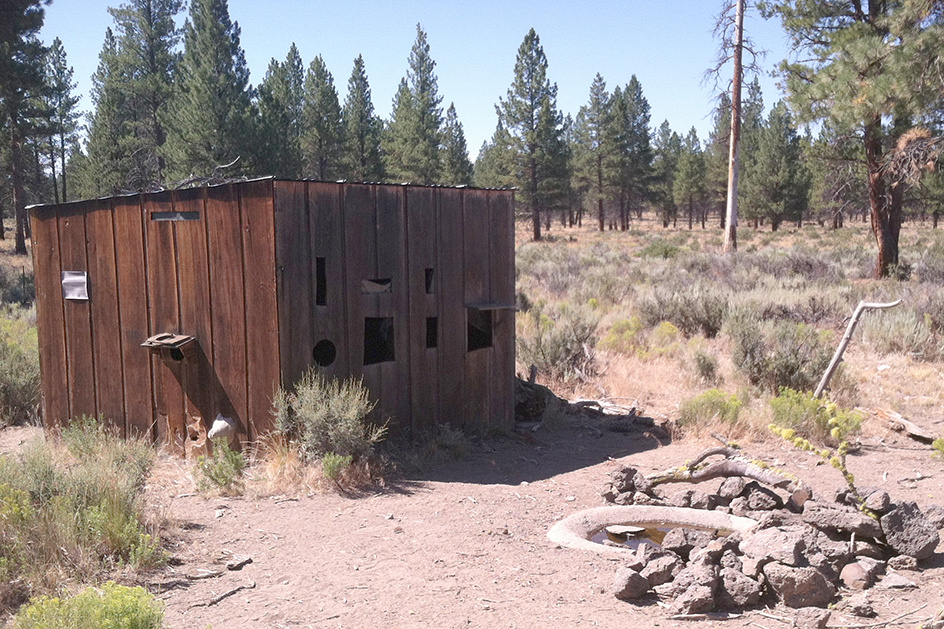
The facilities are currently maintained by Tom Lawler with support from the East Cascade Audubon Society. Tom is also the top e-birder at this location with almost 80 species. The basins are charged May through October in most years. I have visited the blinds in June, July, August, September, October, and November. The November trip was to photograph rutting mule deer and the basins were not operative. September had the highest species diversity with 33 species over 3 days. However, plumages are generally fresher in June.
The basins are located on the edge between Eastside Pine and Sagebrush Steppe communities. They are about the only available surface water for some distance and draw wildlife from both communities. E-bird lists 139 species for this site. I have photographed 45 avian species here. All of the following photographs were taken at Cabin Lake. I keep a list of observations and my occurrence and abundance information below is based on these lists.
These species include
Stellar's Jay - For me, these striking jays have been relatively uncommon. Usually one bird every 3rd or 4th visit.
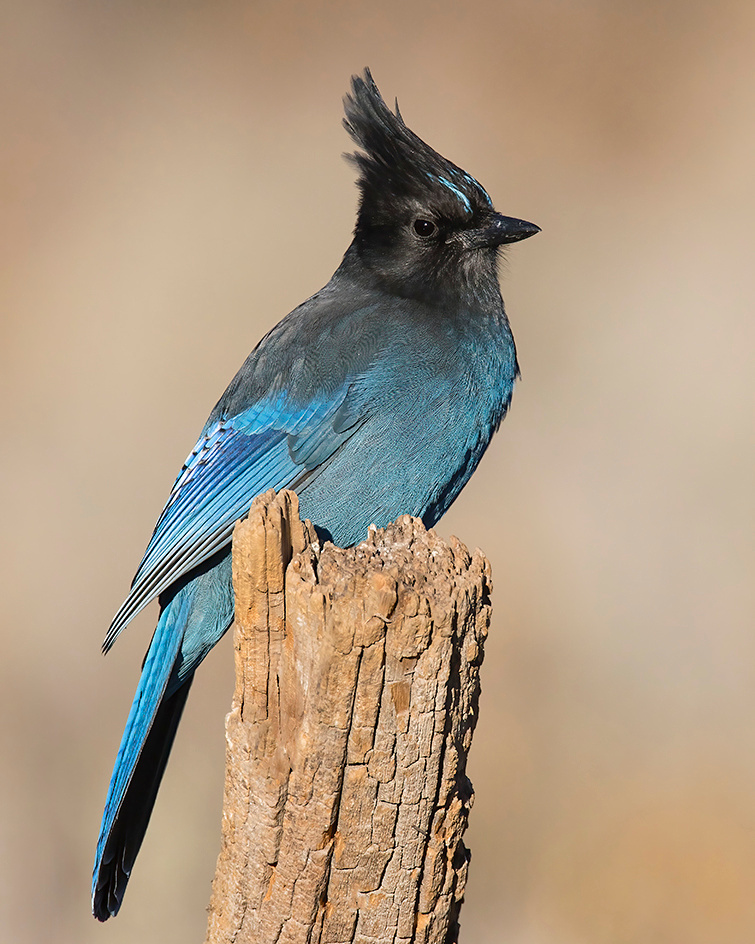
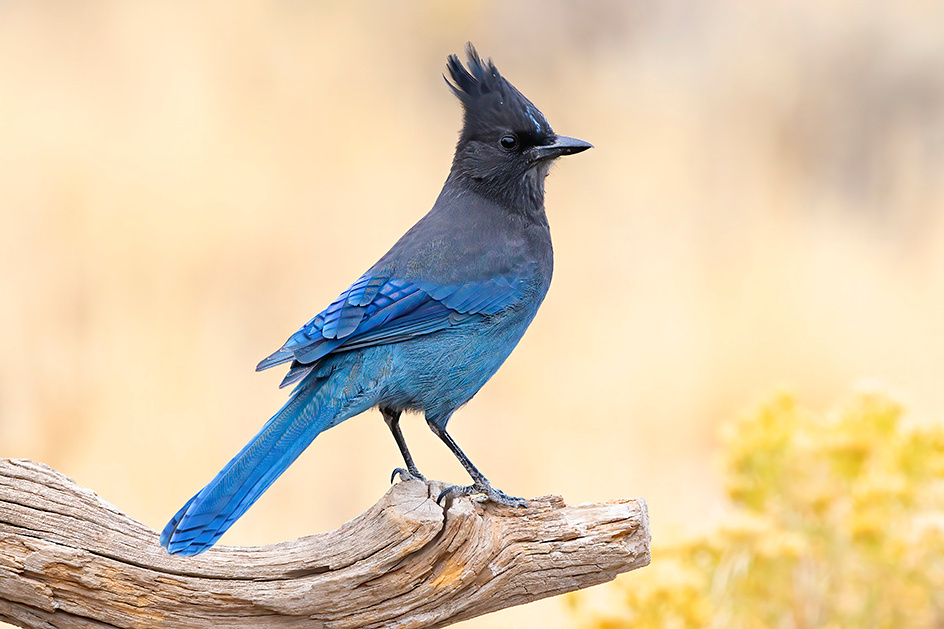
Pinyon Jay - These jays are common and can occur in noisy groups of 15 to 20. They make use of the water basins and the suet feeders.
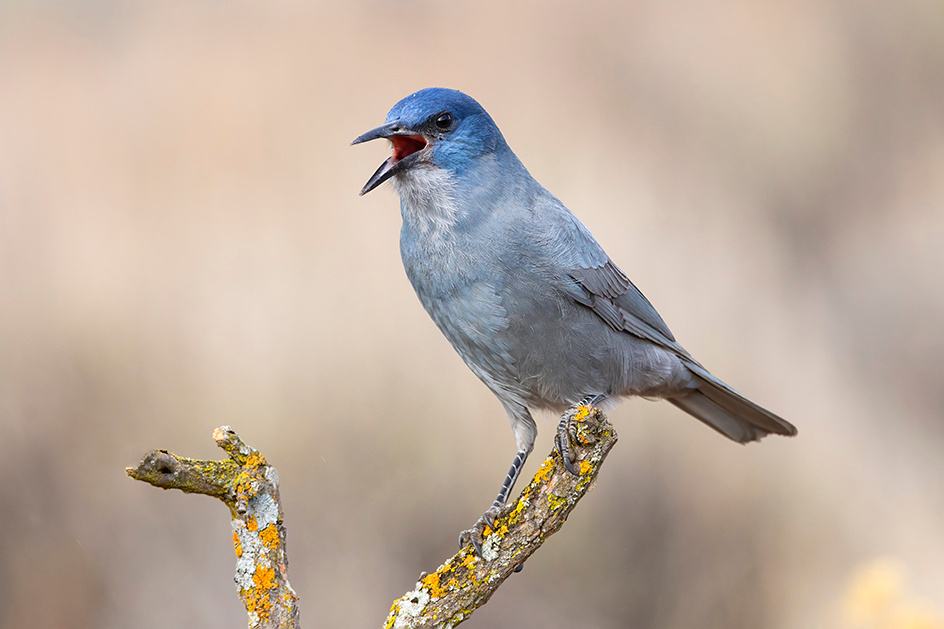
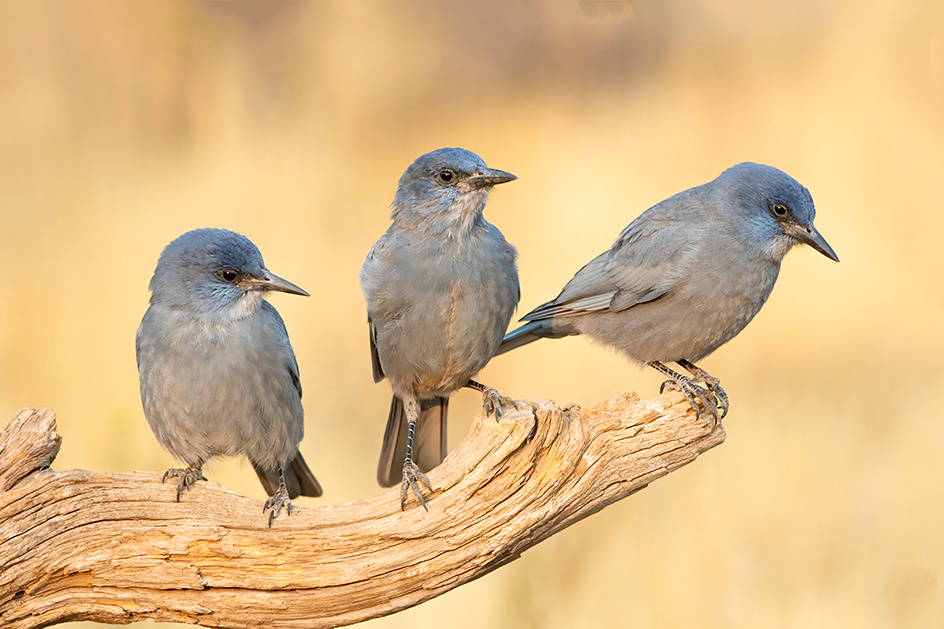
Spotted Towhee - Spotted towhee have been relatively common with individuals present on about one-half my visits. It is not always easy to get them off the ground and on a perch. The bird feed I spread keeps these towhees coming back all day to feed on the scattered seed.
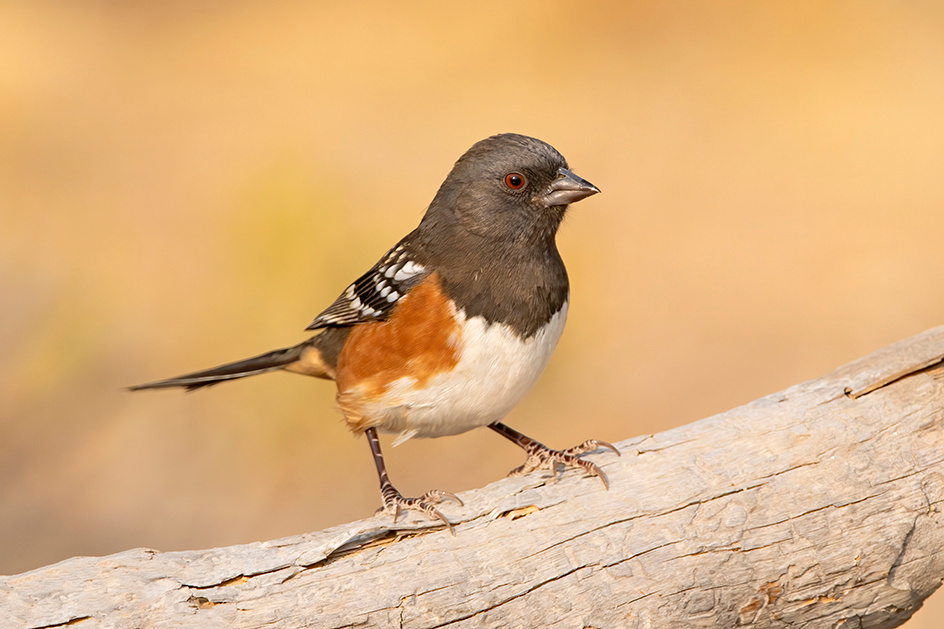
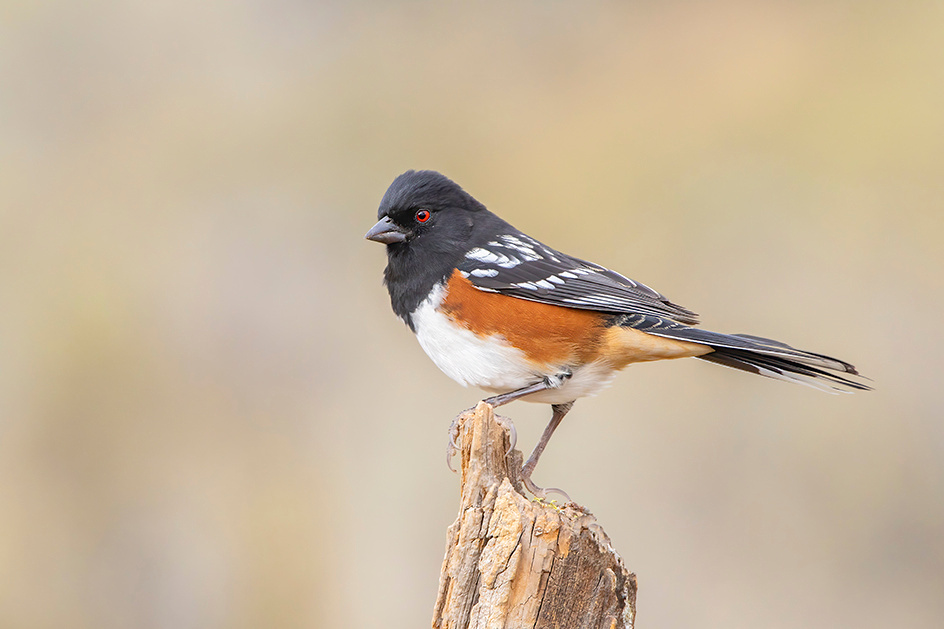 Green-Tailed Towhee - These towhees are common, but not abundant with one or two observed on most visits. Like spotted towhee, these guys are ground feeders and difficult to capture on a perch.
Green-Tailed Towhee - These towhees are common, but not abundant with one or two observed on most visits. Like spotted towhee, these guys are ground feeders and difficult to capture on a perch.
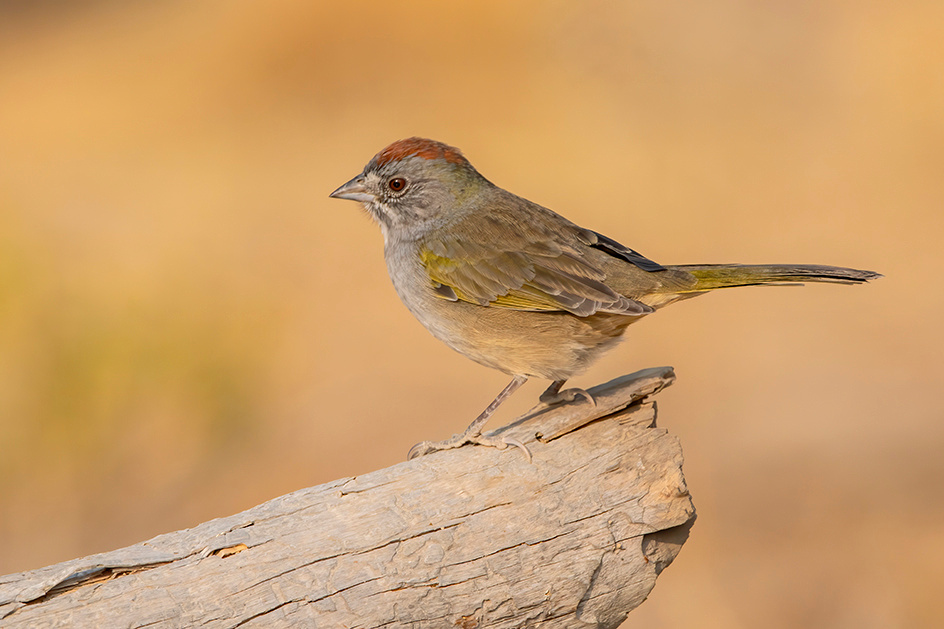
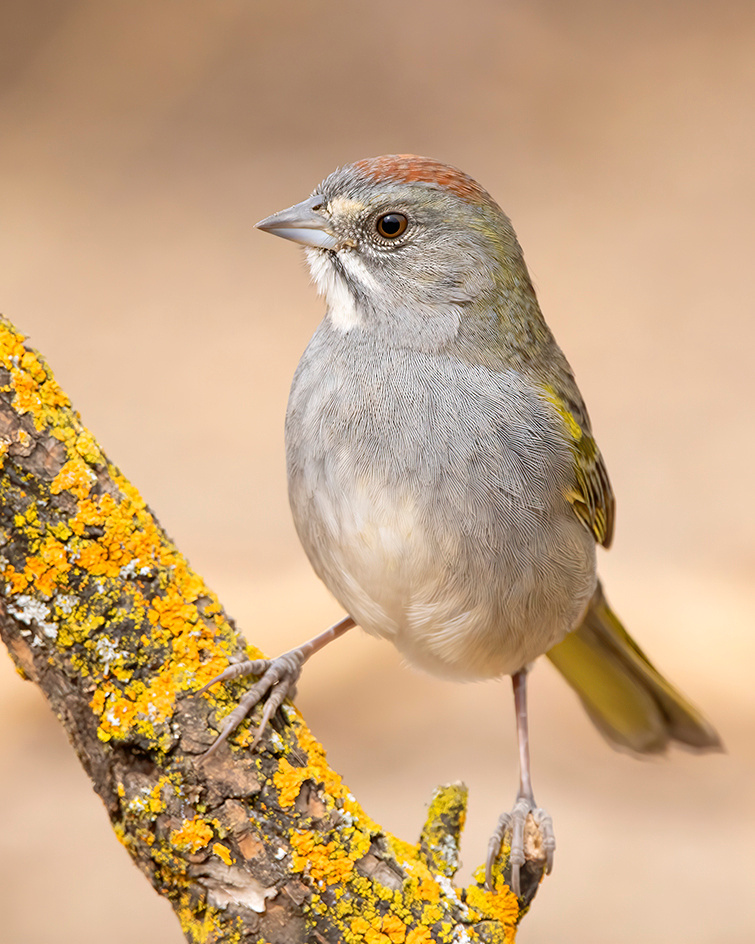
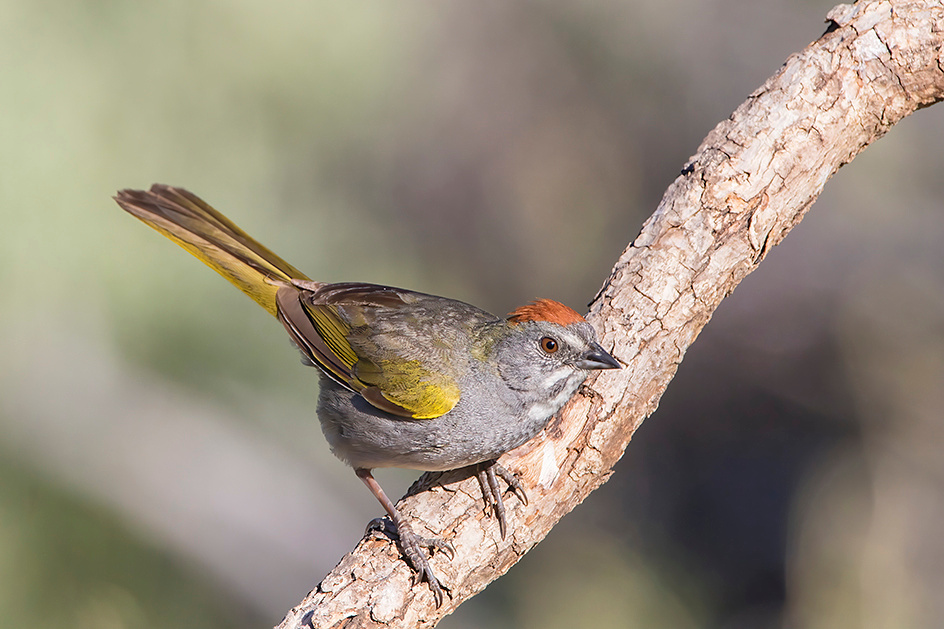 Mountain Bluebird - Bluebirds are cavity nesters. Several bird boxes as well as large snags are scattered around the area and both mountain and western bluebirds breed locally. By late July or early August good numbers of young of the year are present. These bluebirds feed on the meal worms and drink or bathe in the basins.
Mountain Bluebird - Bluebirds are cavity nesters. Several bird boxes as well as large snags are scattered around the area and both mountain and western bluebirds breed locally. By late July or early August good numbers of young of the year are present. These bluebirds feed on the meal worms and drink or bathe in the basins.
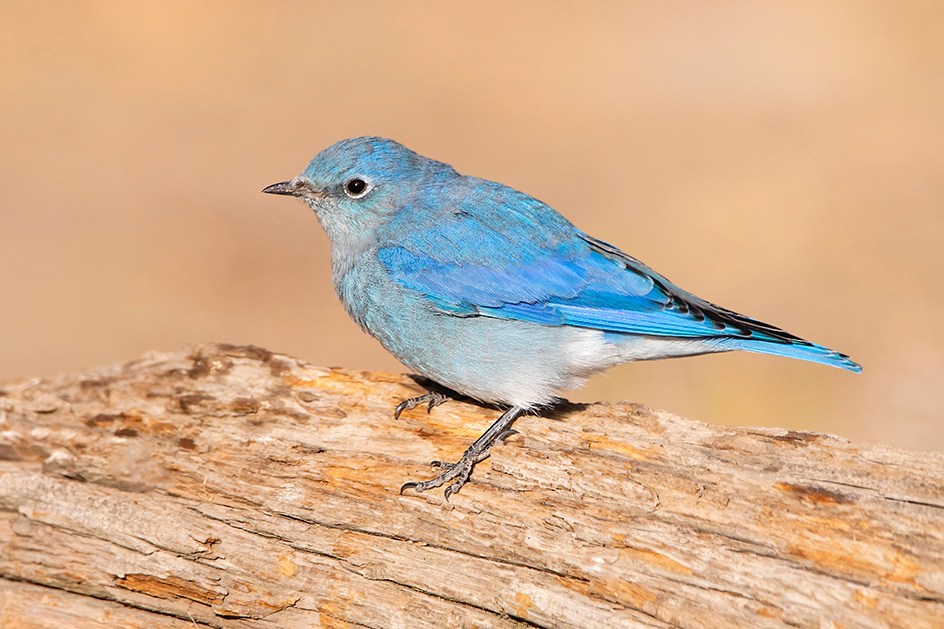
Western Bluebird - Common and they can be fairly numerous after young have fledged.
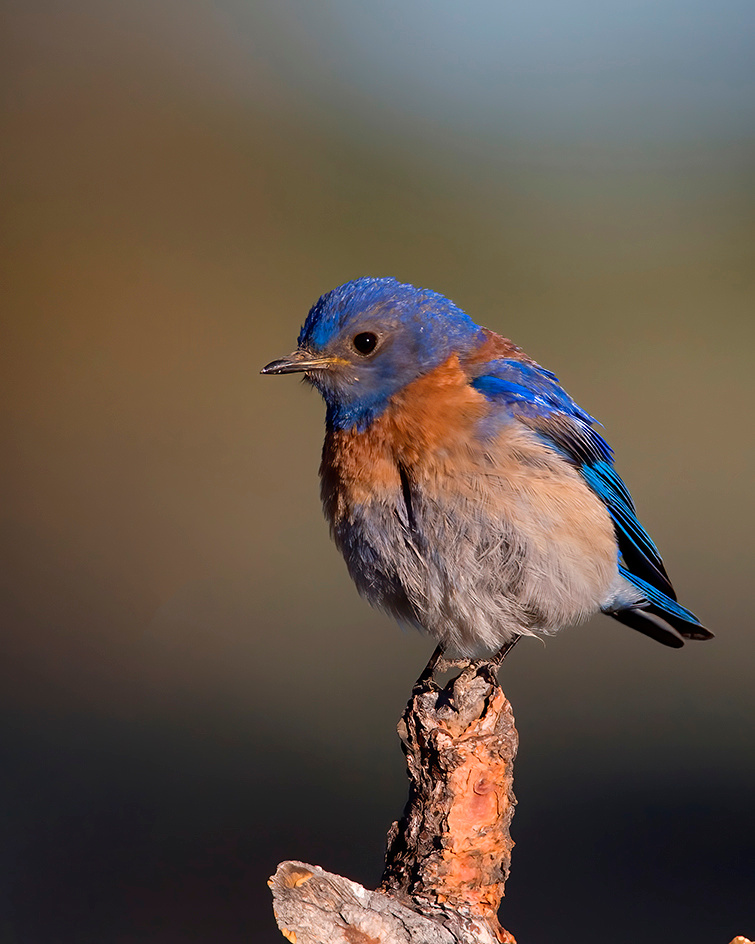
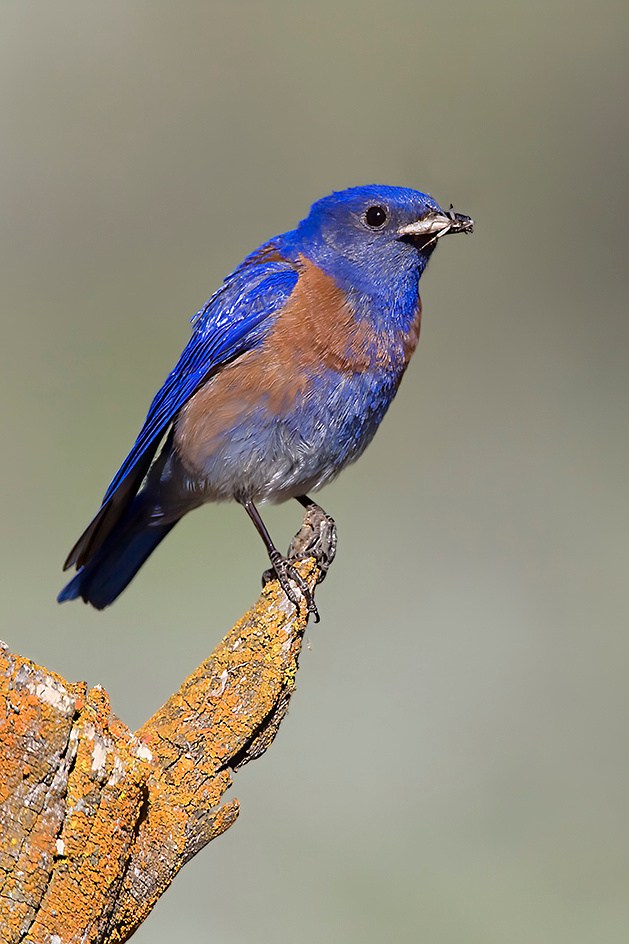
Clark's Nutcracker - Noisy and common. I frequently have groups of 4 to 6 at the basins at one time. This species also makes use of suet.
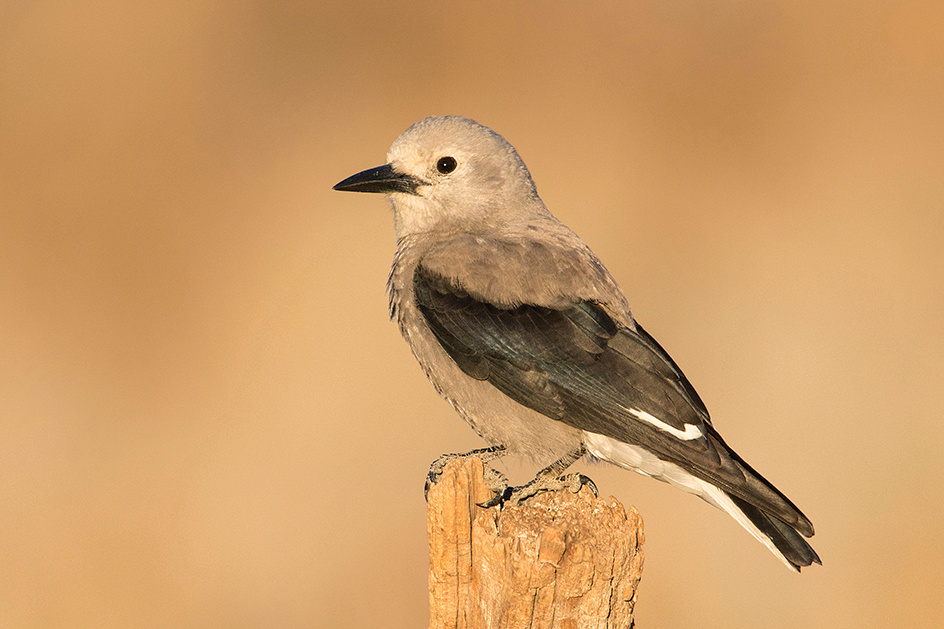
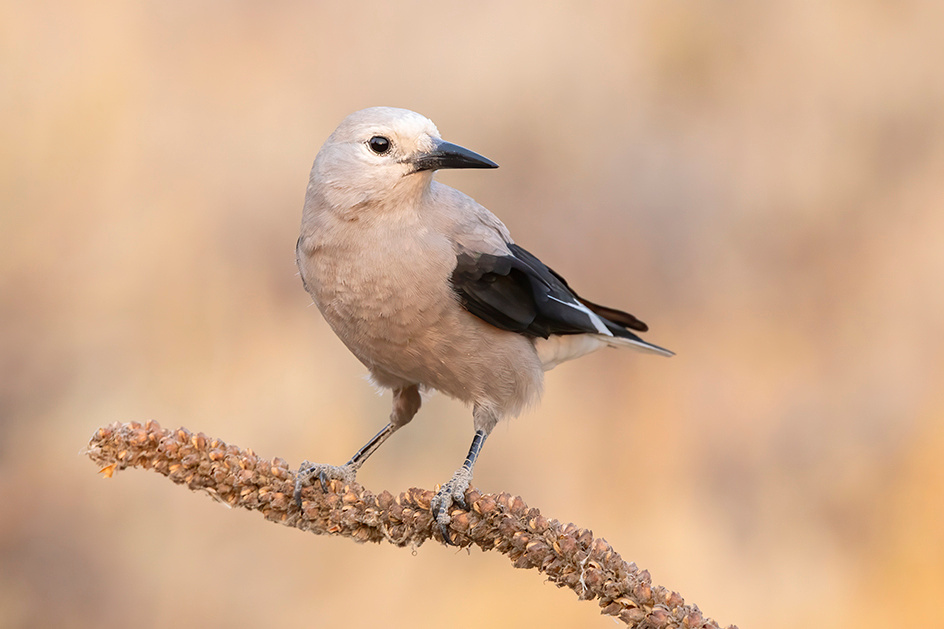
Northern Flicker - Common and observed on nearly every visit.
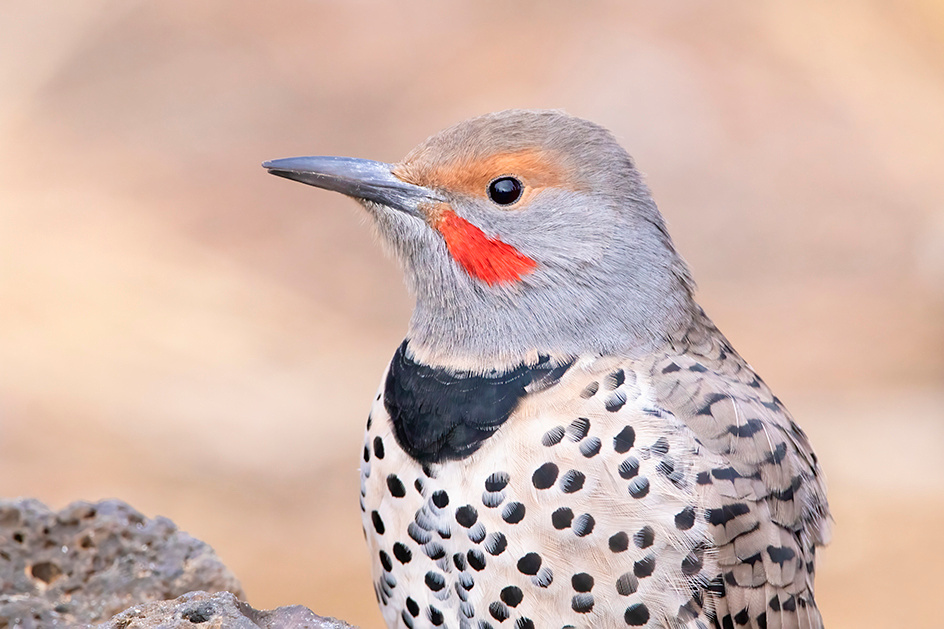
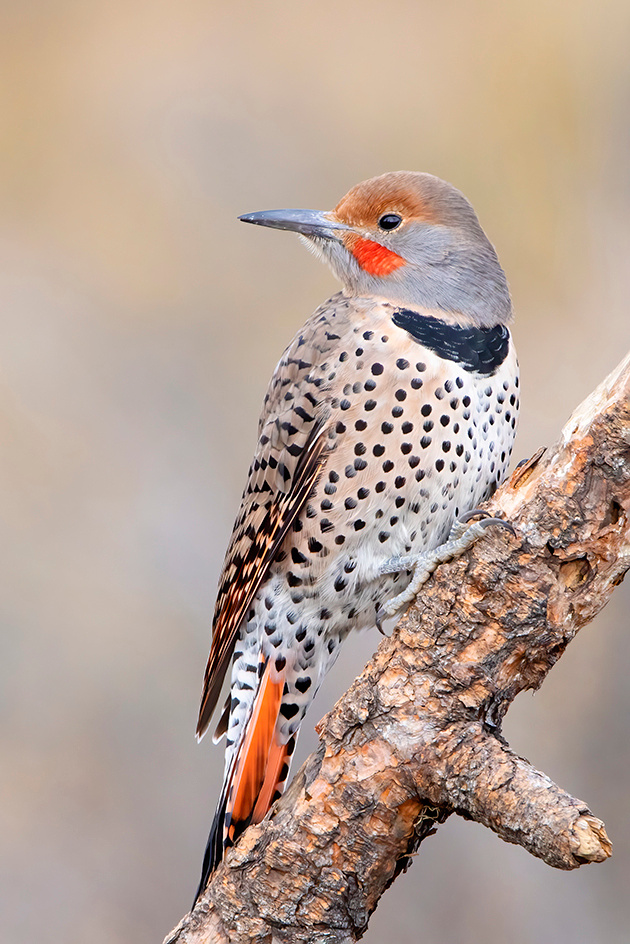
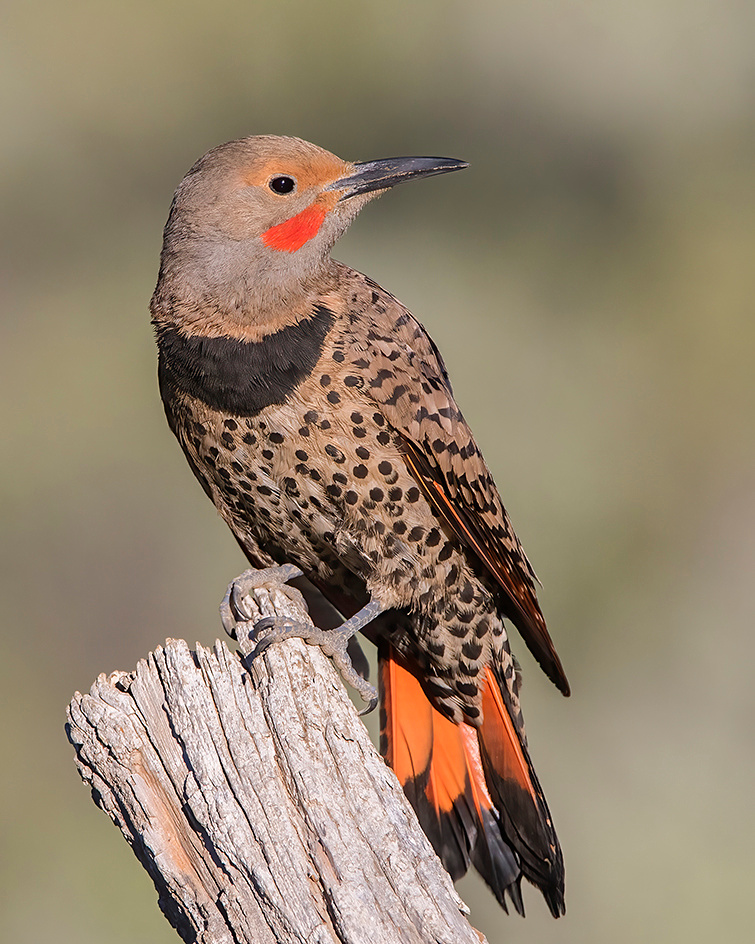
White-Headed Woodpecker - Common and observed on nearly every visit. Suet eaters.
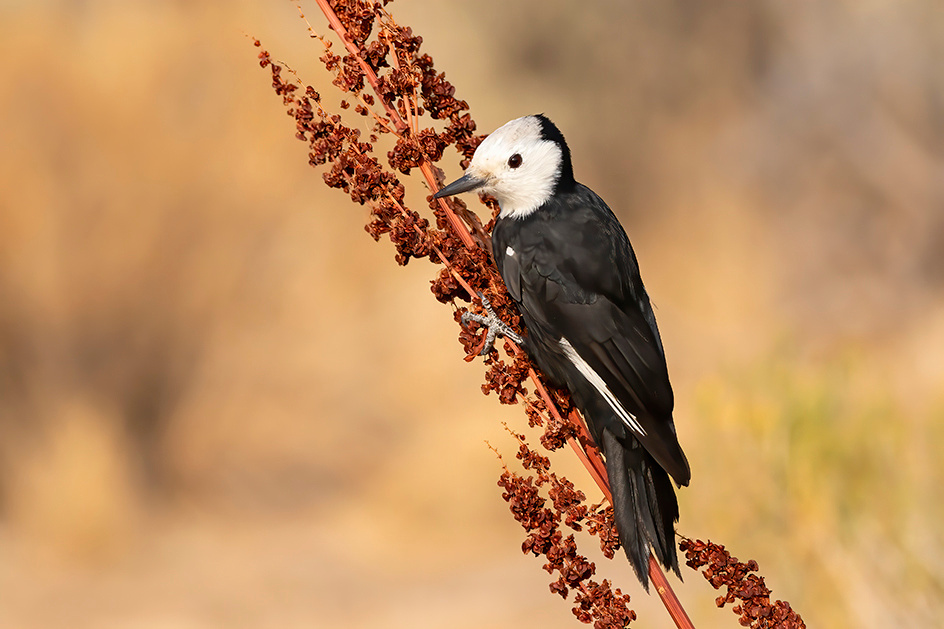
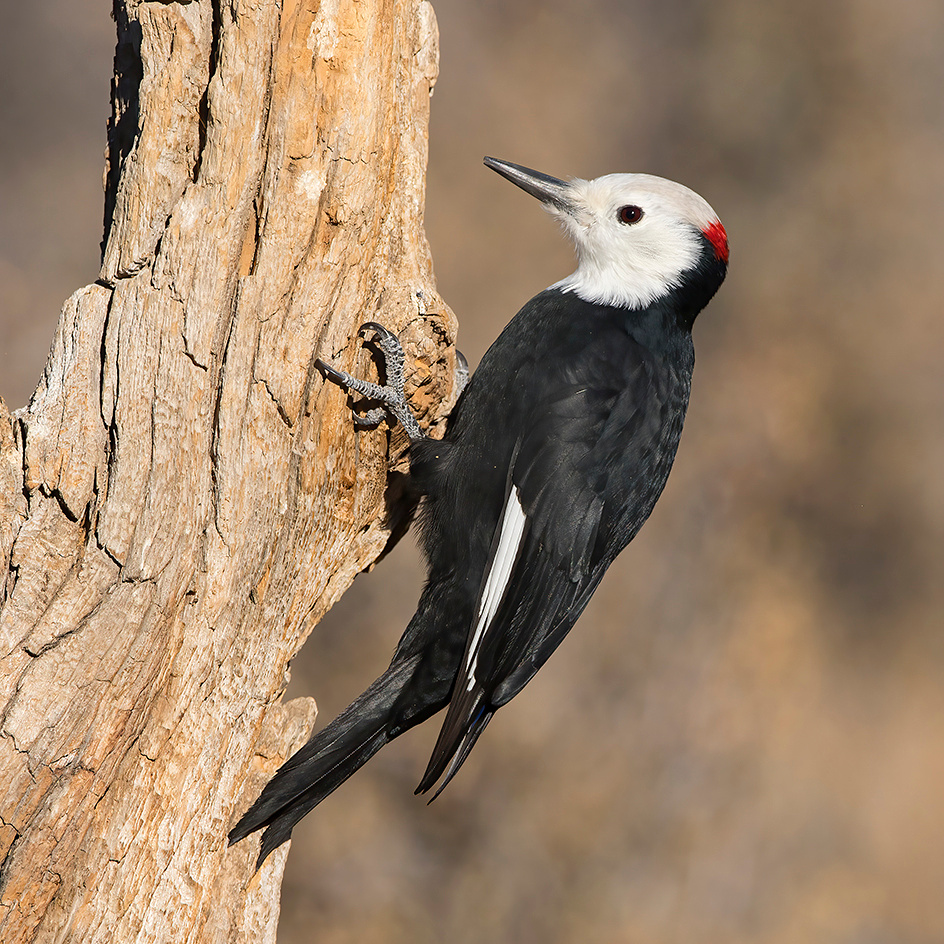
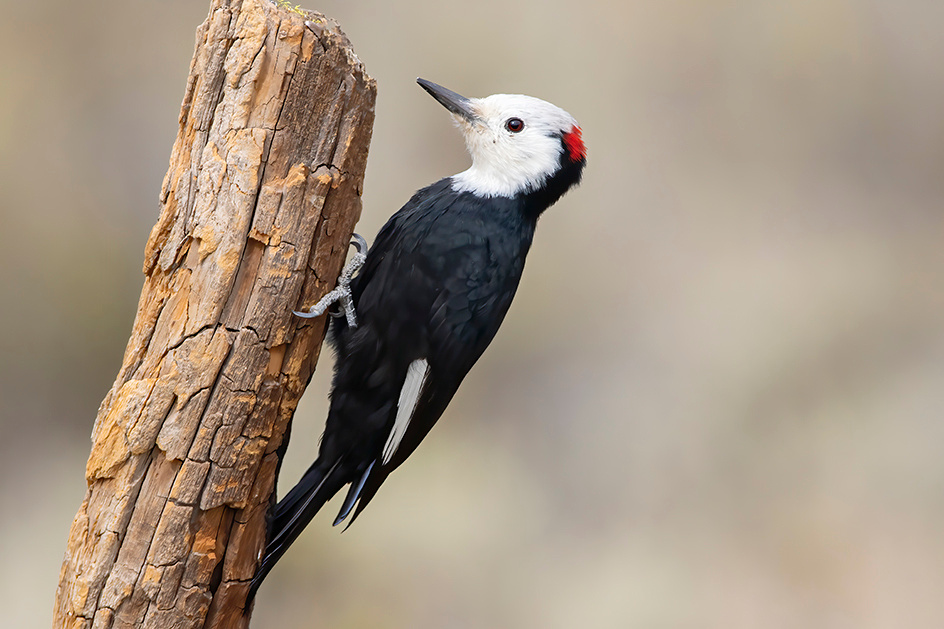
Hairy Woodpecker - Relatively uncommon with only a handful of observations over 15 years.
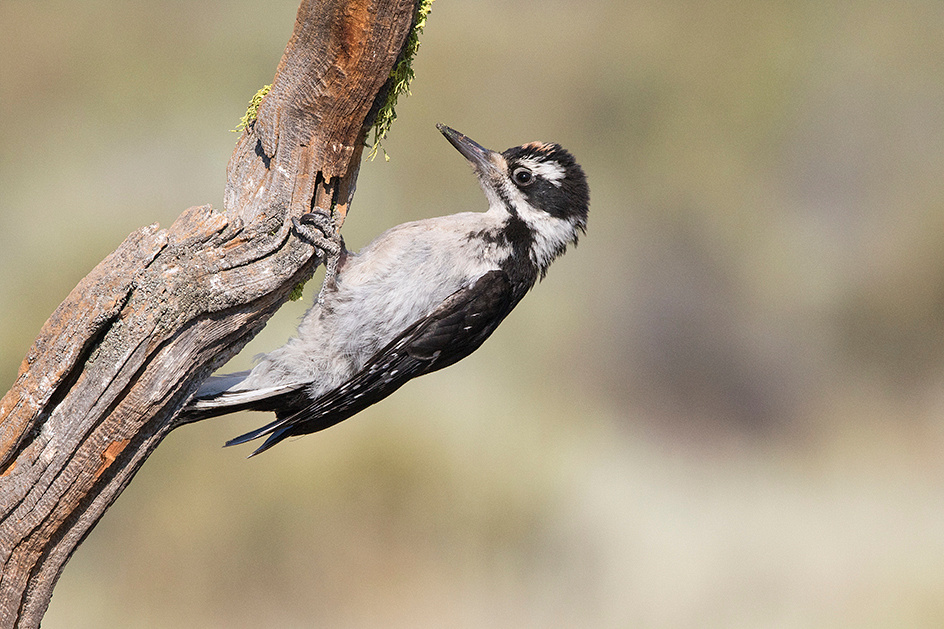
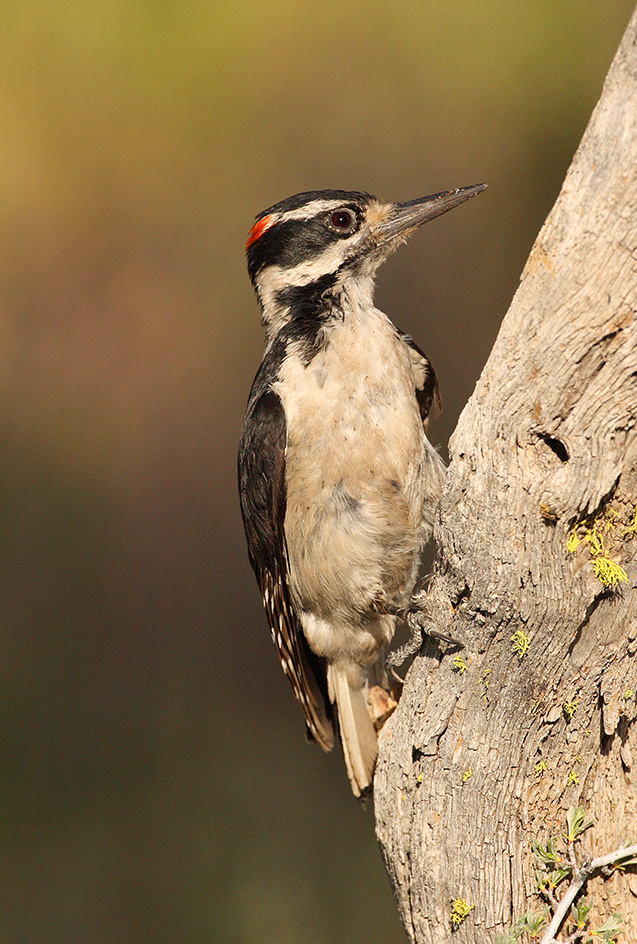
Lewis's Woodpecker - My favorite western woodpecker. Uncommon and very spooky. If you make noise or even a slight movement they are gone. I have photographed them here 3 times.

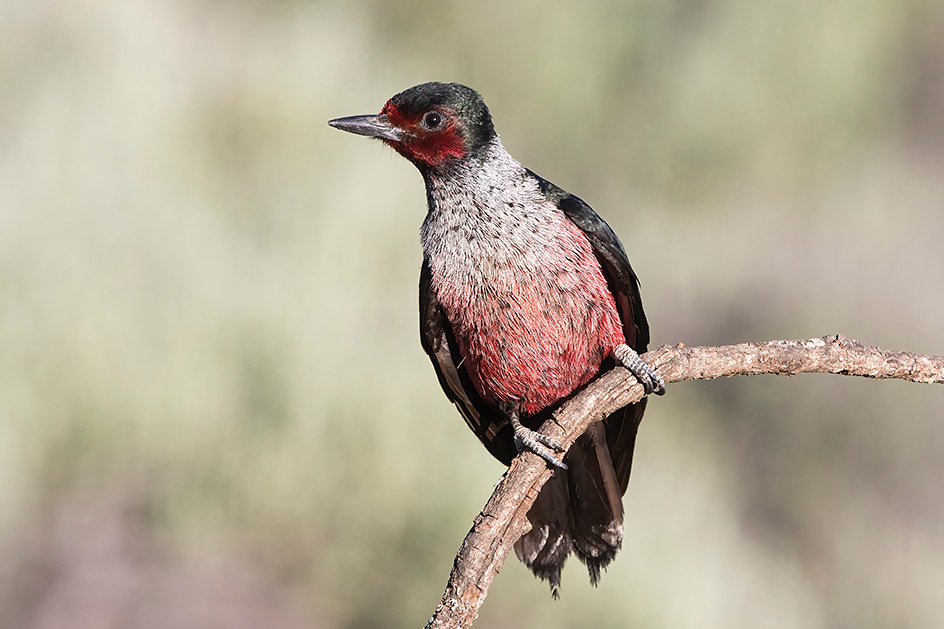
Red-Breasted Sapsucker - Very uncommon. I have only observed them at the basins on a single occasion.
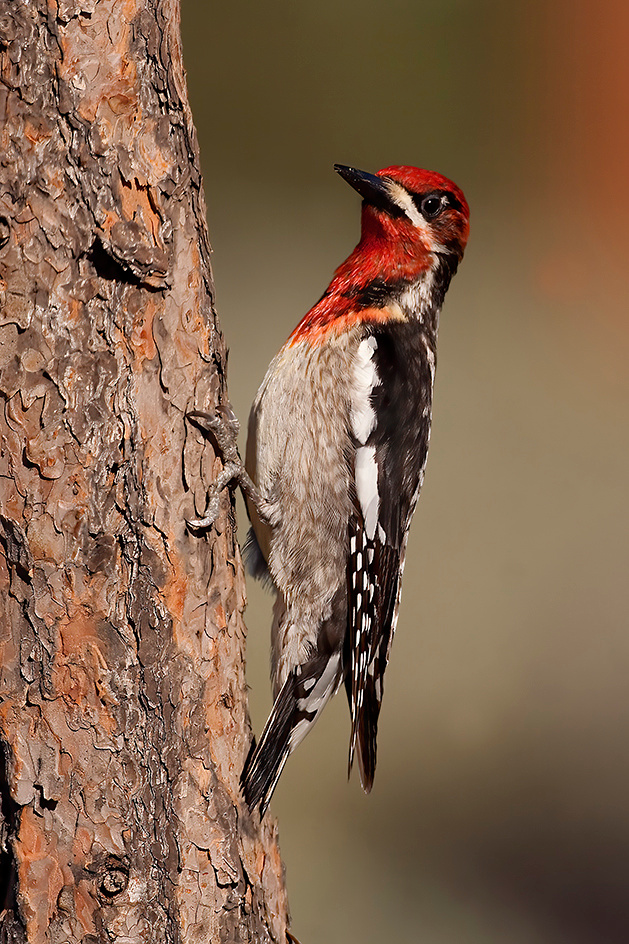
Williamson's Sapsucker - This female is my only observation of a Williamson's sapsucker at Cabin Lake. I keep hoping for a male in breeding plumage.

Pygmy Nuthatch - These little guys are relatively common with observations on about half of my visits. They can be quite numerous in September.
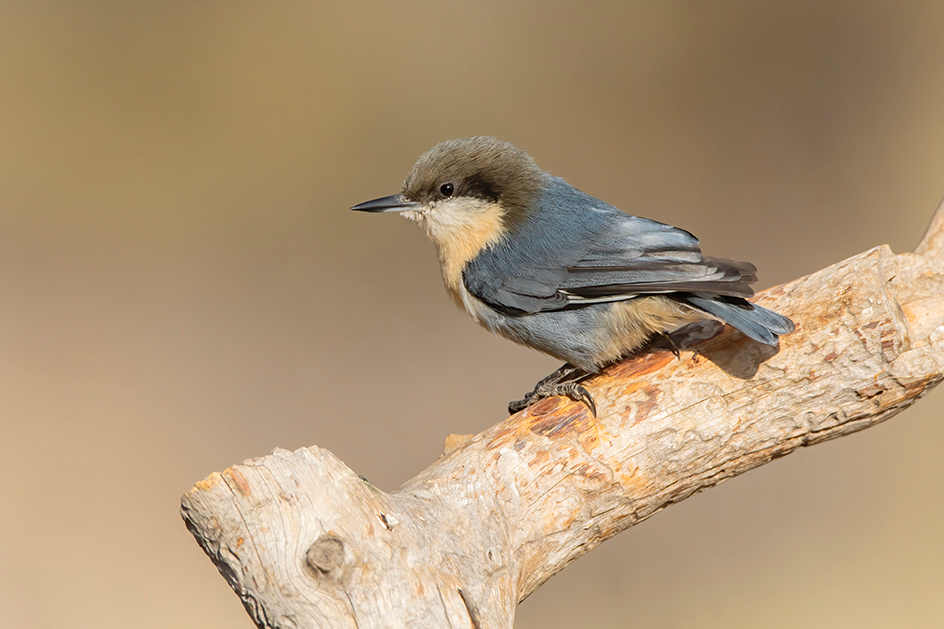 White-Breasted Nuthatch - Common with observations made on most visits. Never numerous, but fairly regular visitors to the water basins.
White-Breasted Nuthatch - Common with observations made on most visits. Never numerous, but fairly regular visitors to the water basins.
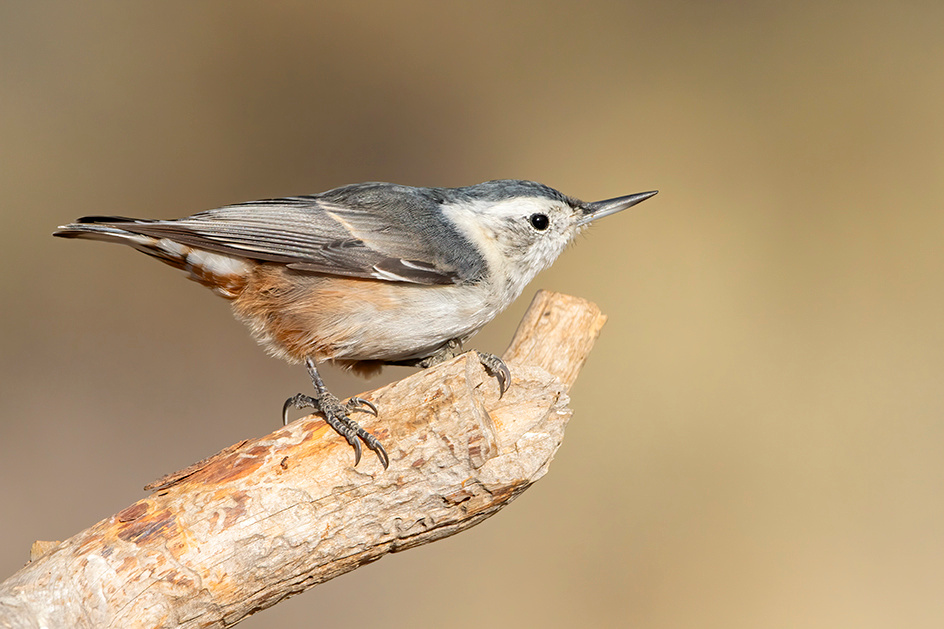

Red-Breasted Nuthatch - Uncommon or absent during June, July and August. Fairly common in September
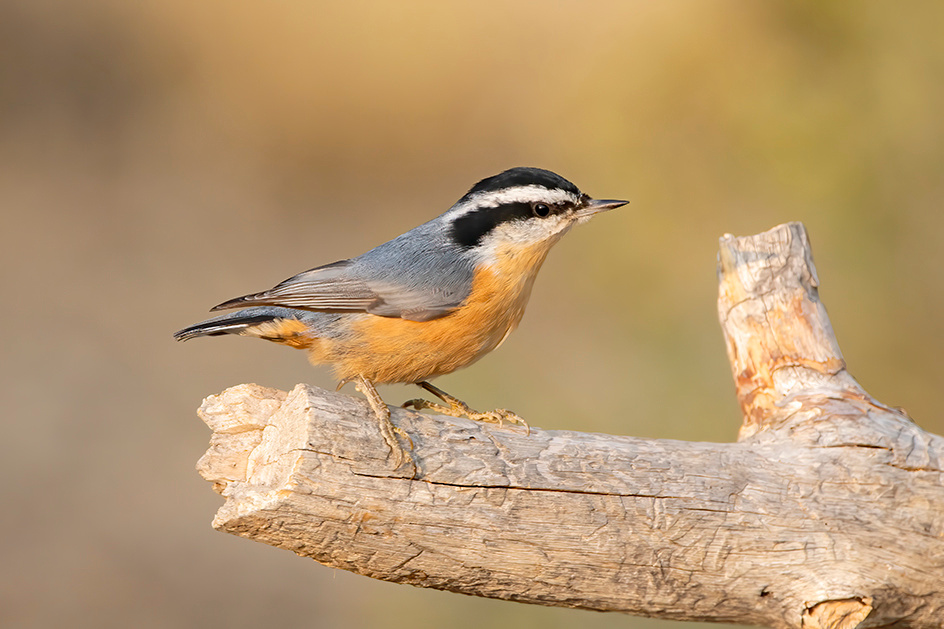
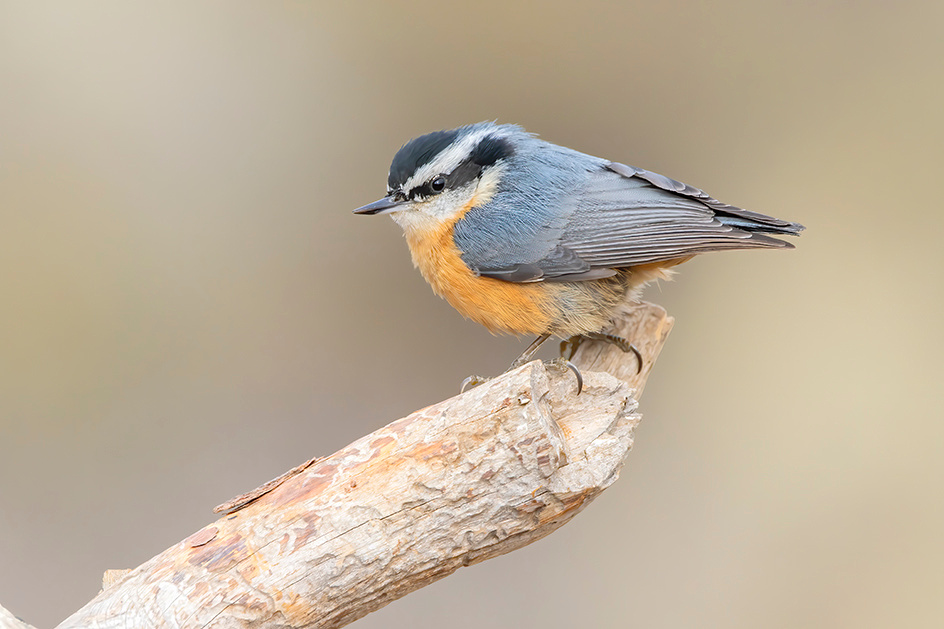
American Robin - Observed in small numbers on over one-half of all visits.
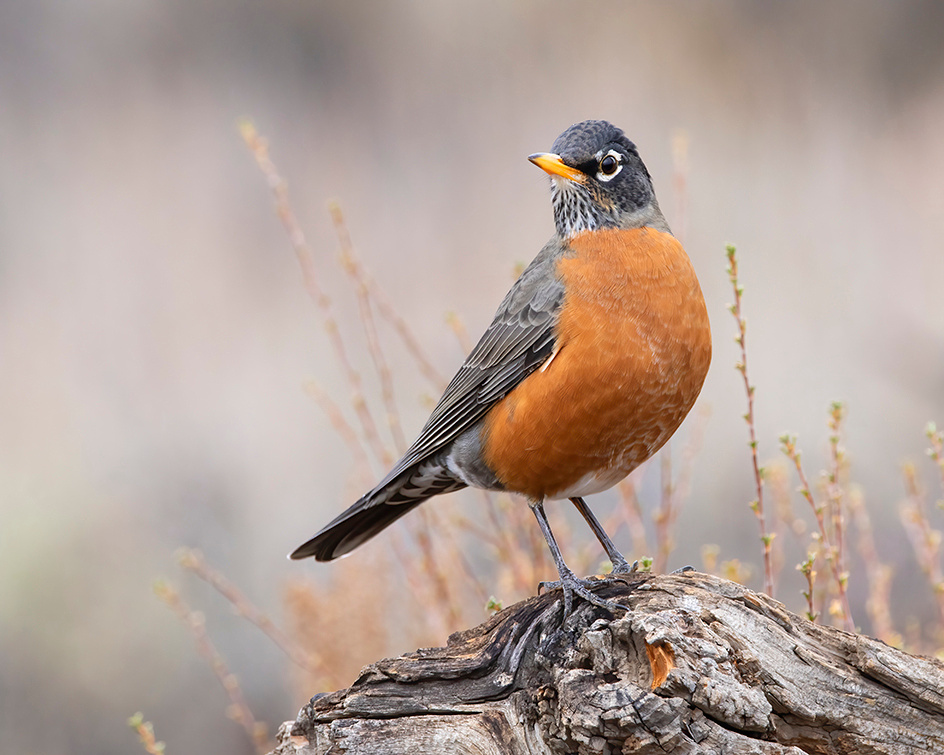
Townsend's Solitaire - Relatively uncommon with maybe 8 observations over 15 years.
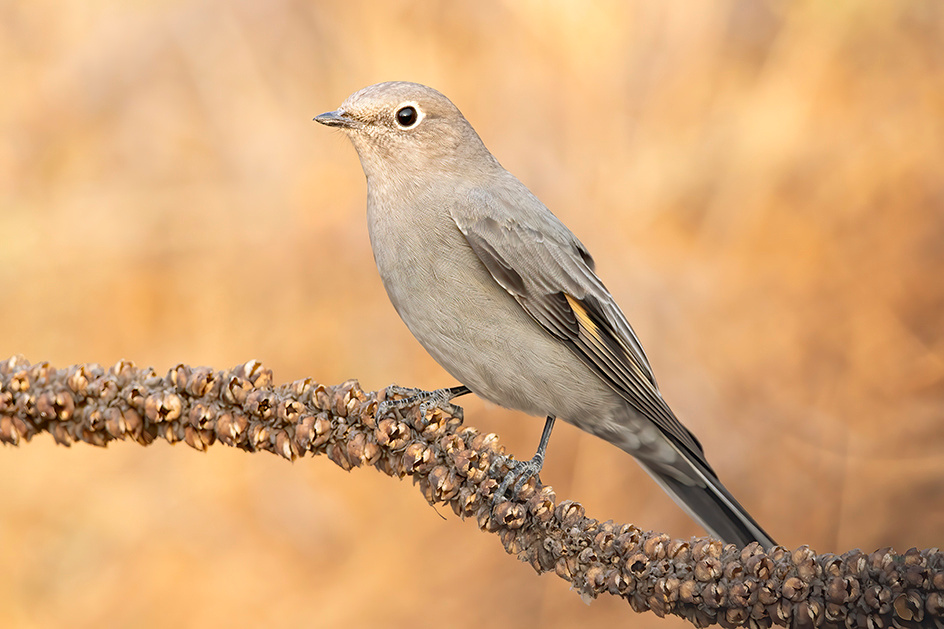 Gray Flycatcher - This species was observed on only 3 occasions, primarily in June and July.
Gray Flycatcher - This species was observed on only 3 occasions, primarily in June and July.
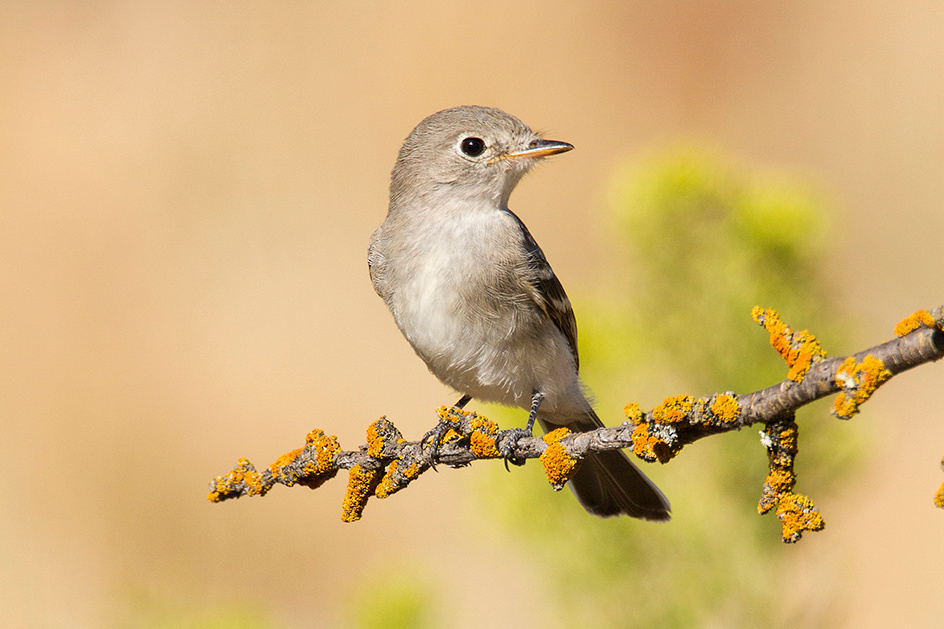
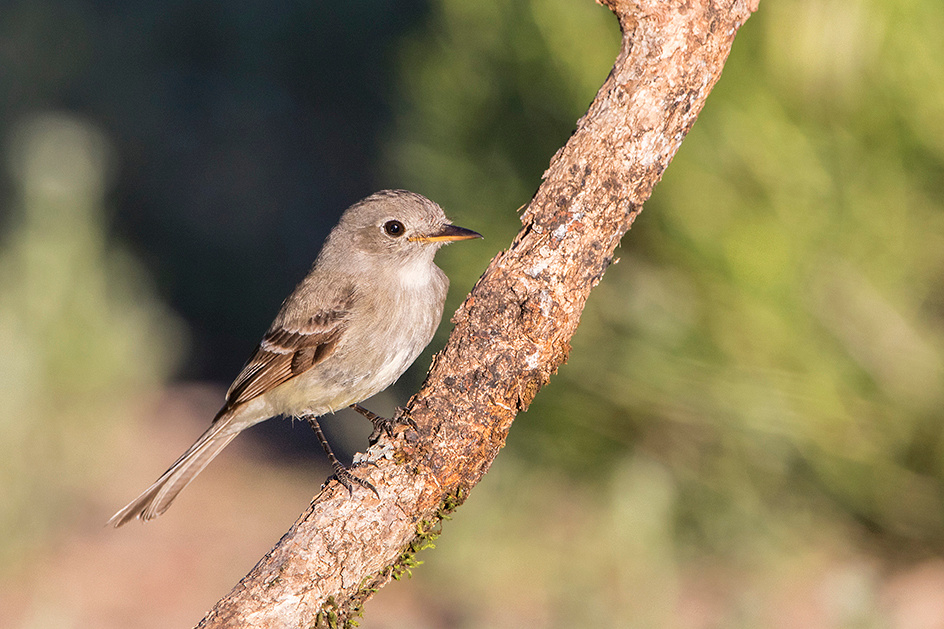
Bullock's Oriole - This female represents my only observation of this species at this location.
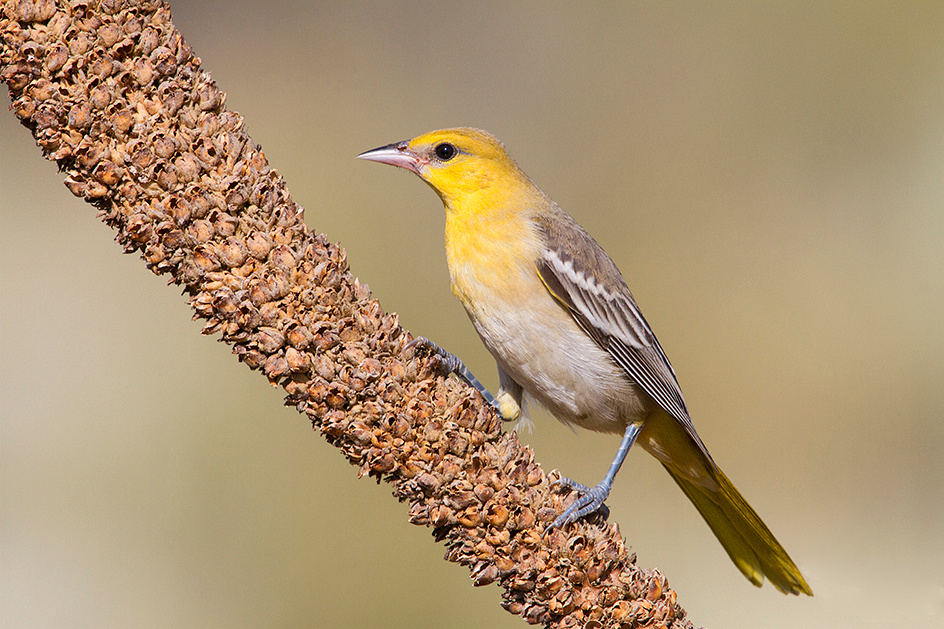
Lazuli Bunting - I have photographed this species at the basins on 3 occasions and never more than a single individual at a time.
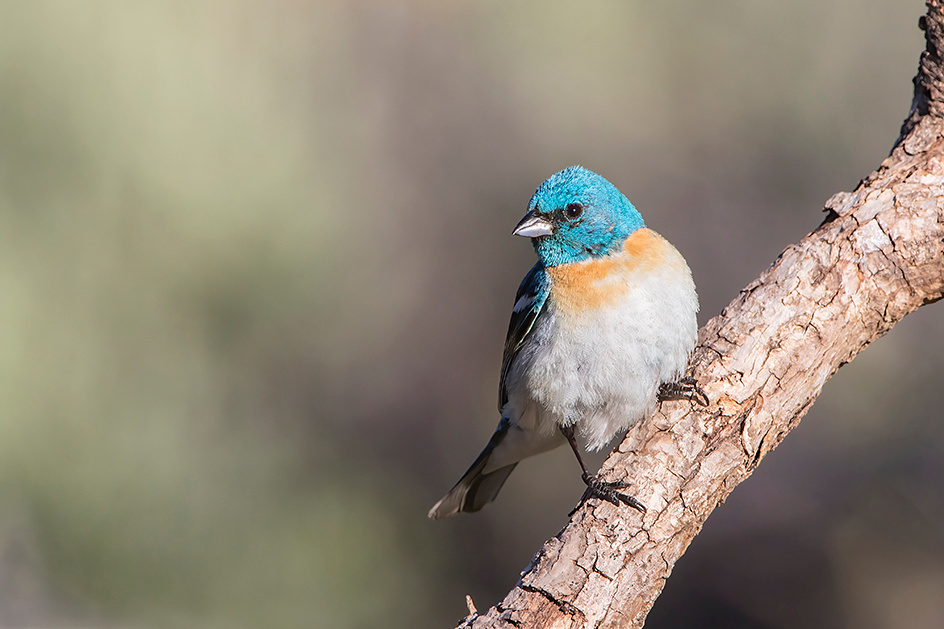
Brewer's Blackbird - These blackbirds have been relatively uncommon for me with only a few observations.

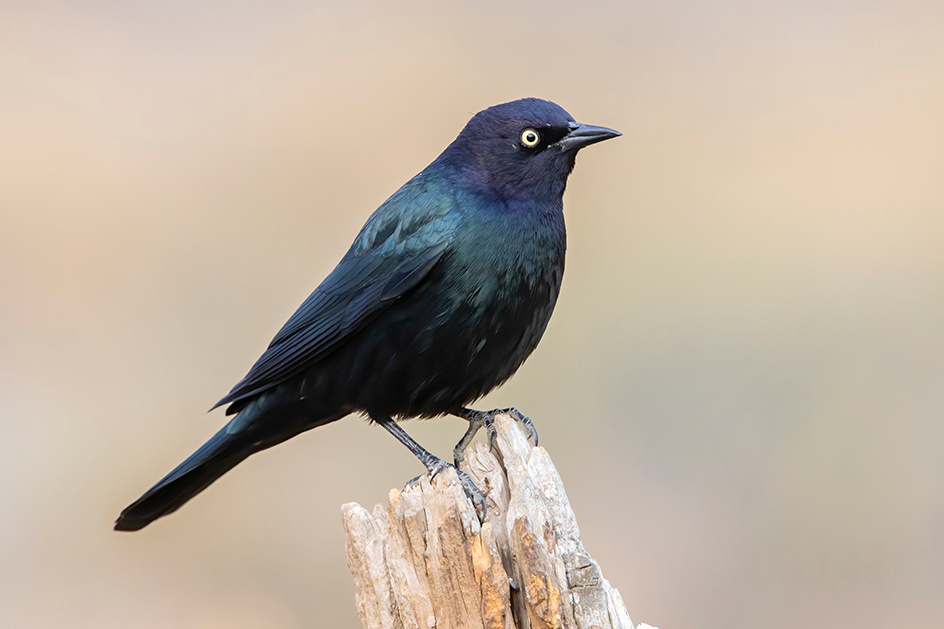
Brown-Headed Cowbird - Cowbirds have also been uncommon with only a few observations.
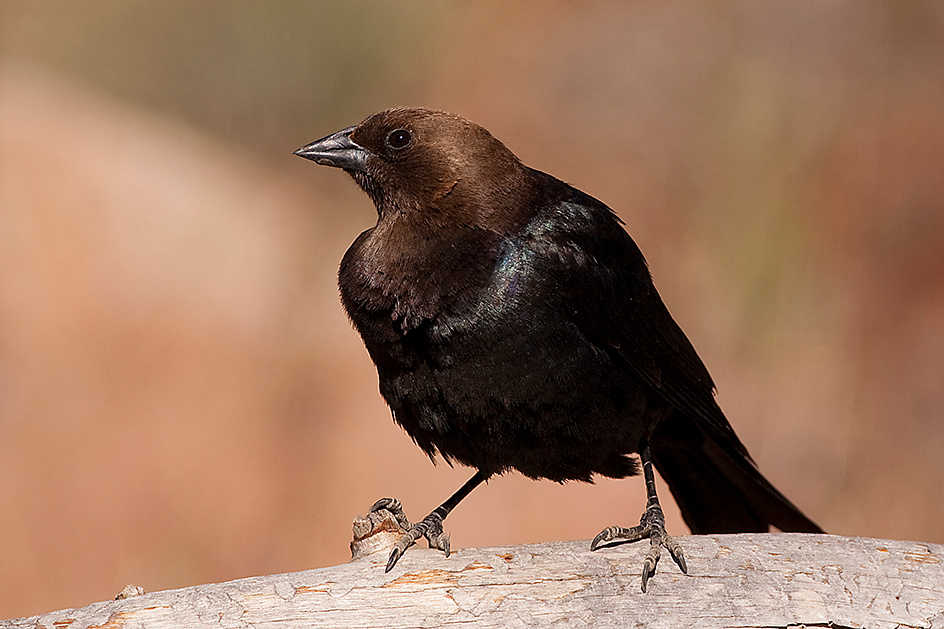

Mourning Dove - These doves are common and come into drink but frequently stay to work over the seed. Like towhees they can be difficult to photograph off the ground.
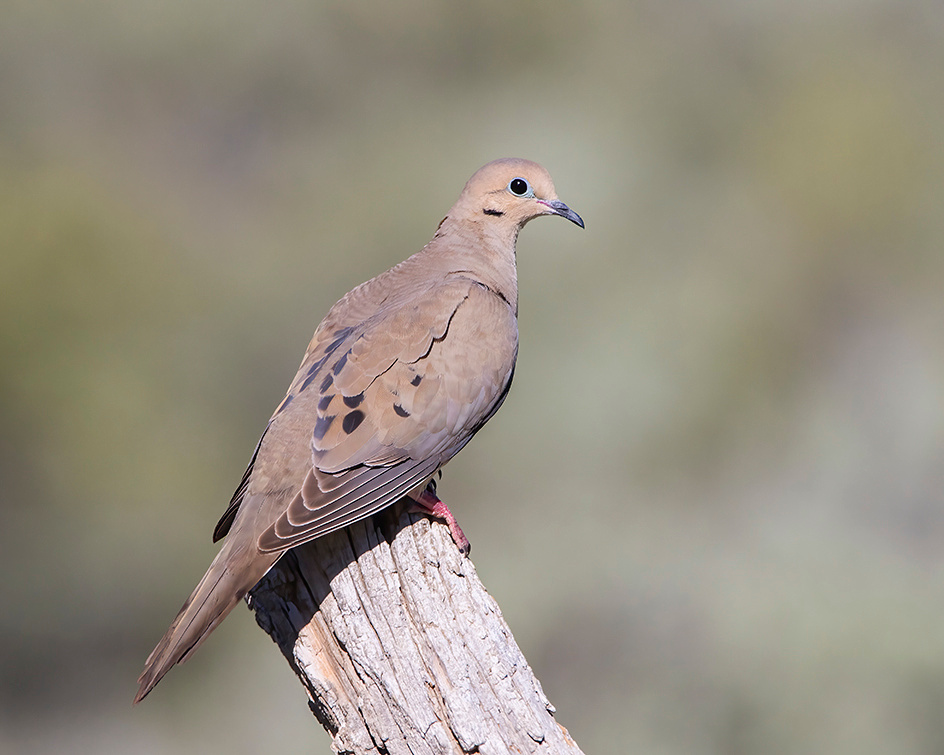
Eurasian-Collared Dove - This invasive species is fairly common.

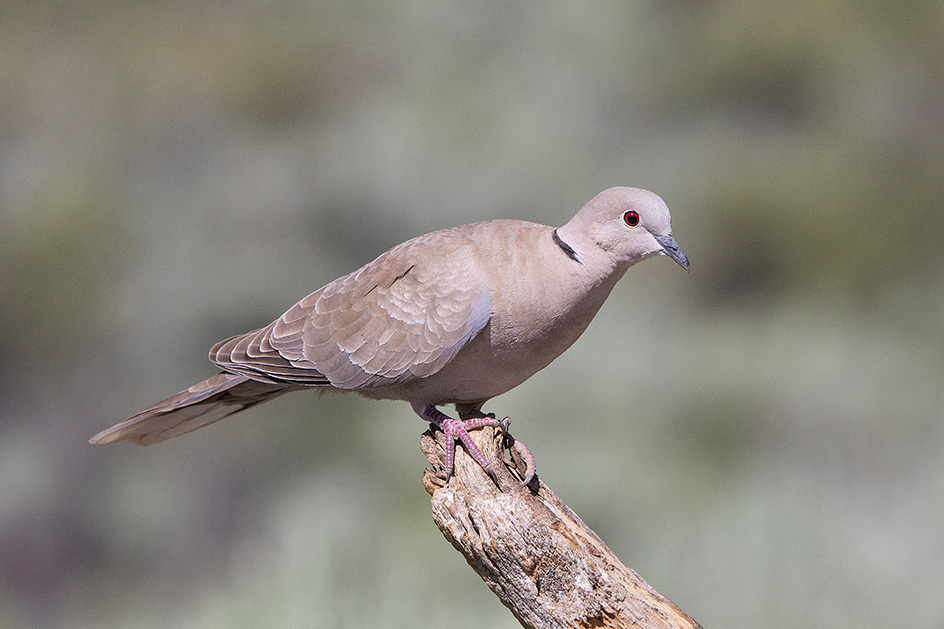
Lesser Goldfinch - Rarely observed.
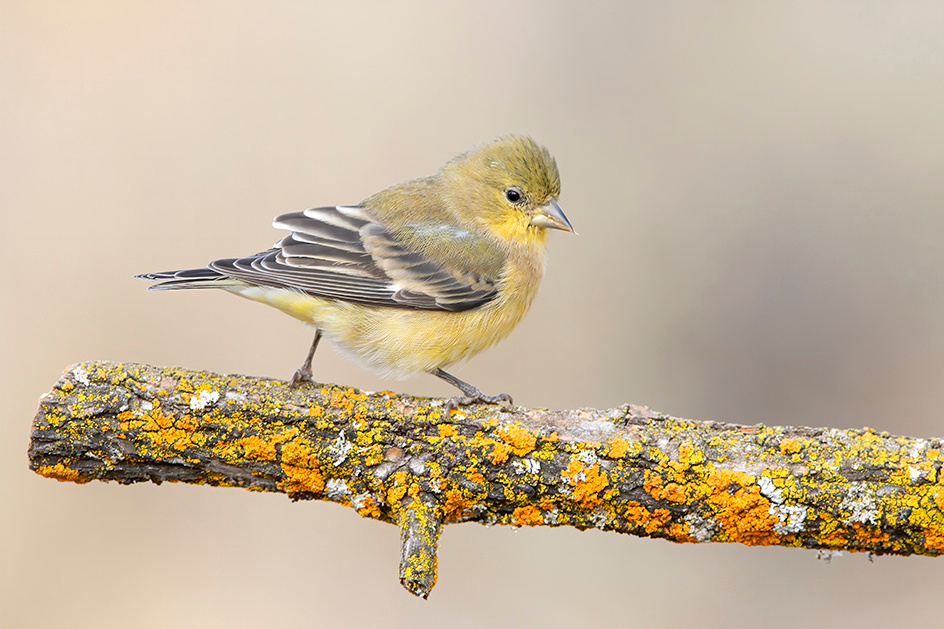
Red Crossbill - Common and in some years quite numerous with groups of 40-50 individuals mobbing the basins. Cabin Lake is really an excellent location to capture this species.


Cassin's Finch - Common and generally abundant. However, numbers fluctuate from year to year.
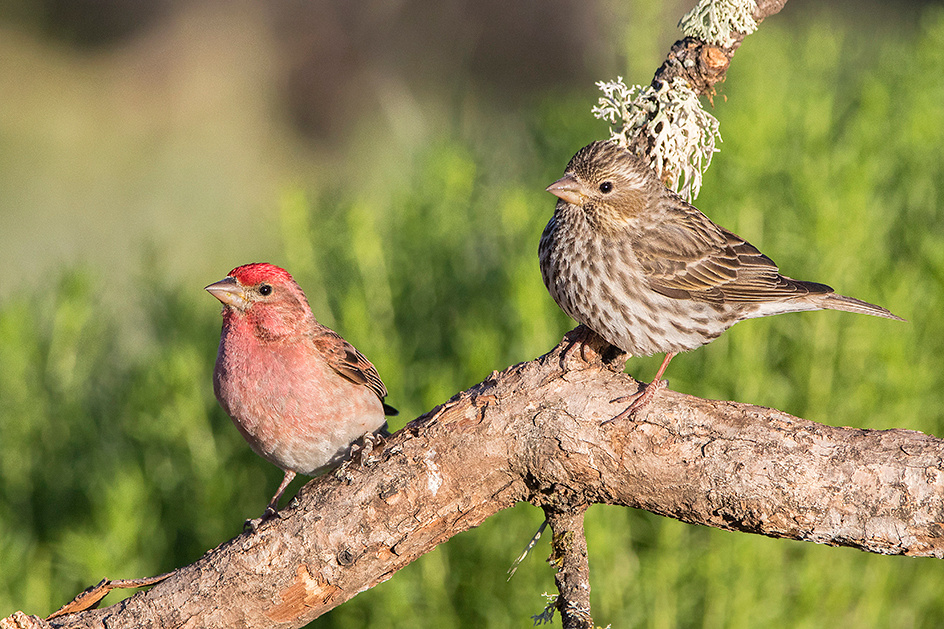
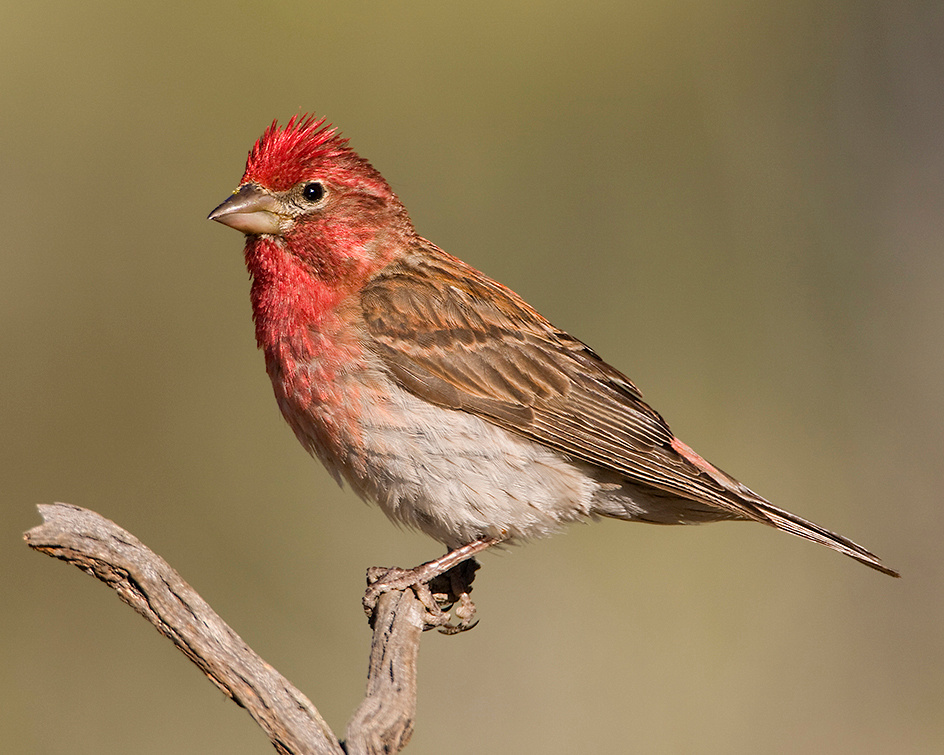
Savannah Sparrow - Relatively uncommon, with most observations during September.
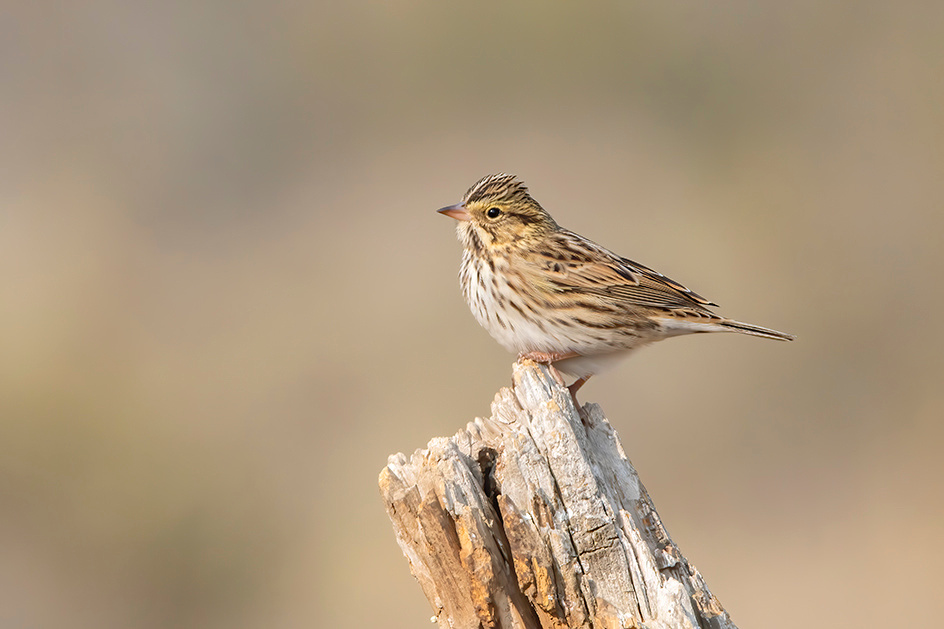
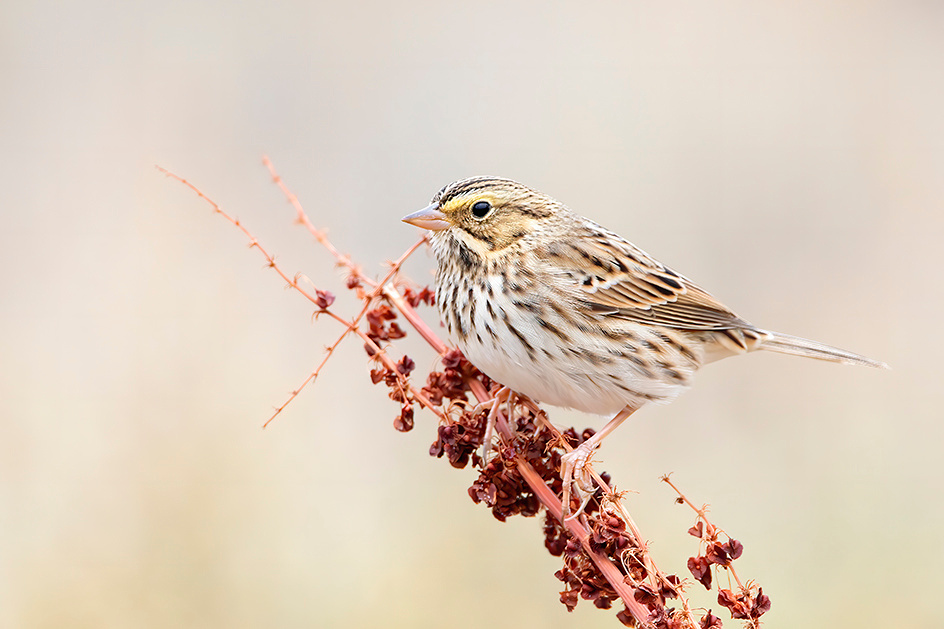
Lincoln's Sparrow - Uncommon with my only observations during September. Perhaps a migrating individual.
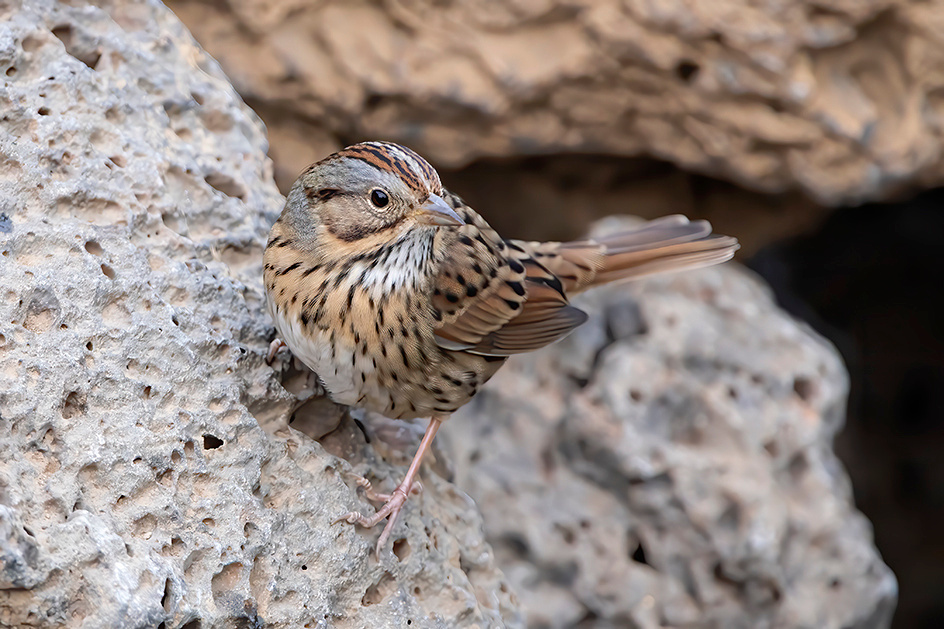
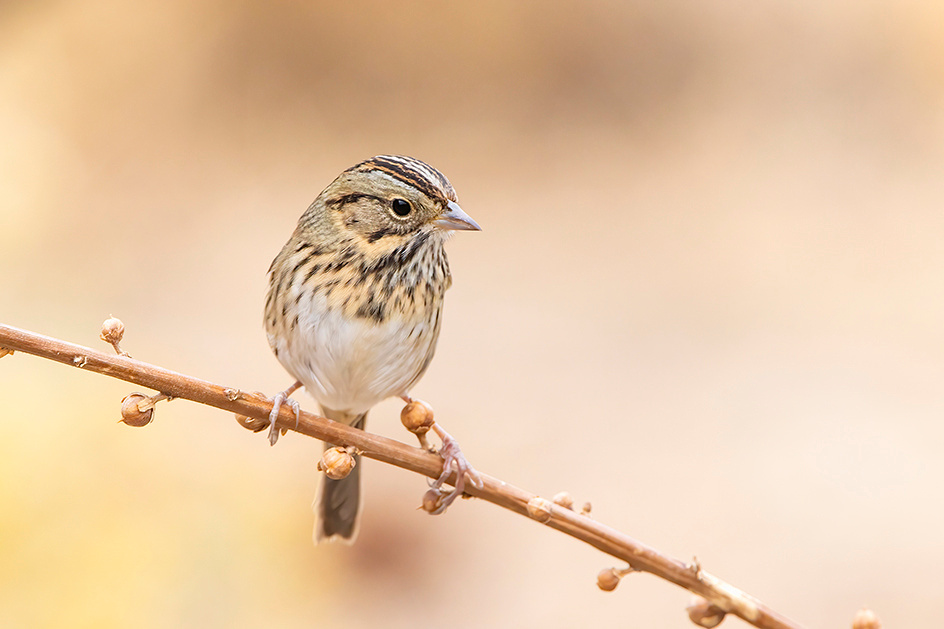
Chipping Sparrow - Common to abundant depending on the year.
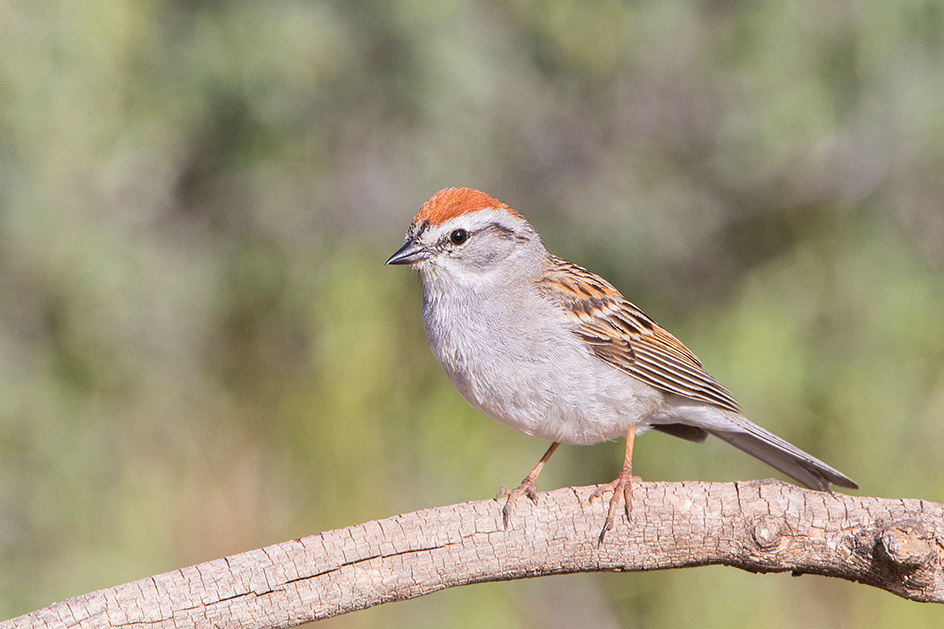
Brewer's Sparrow - Common small drab sparrow.
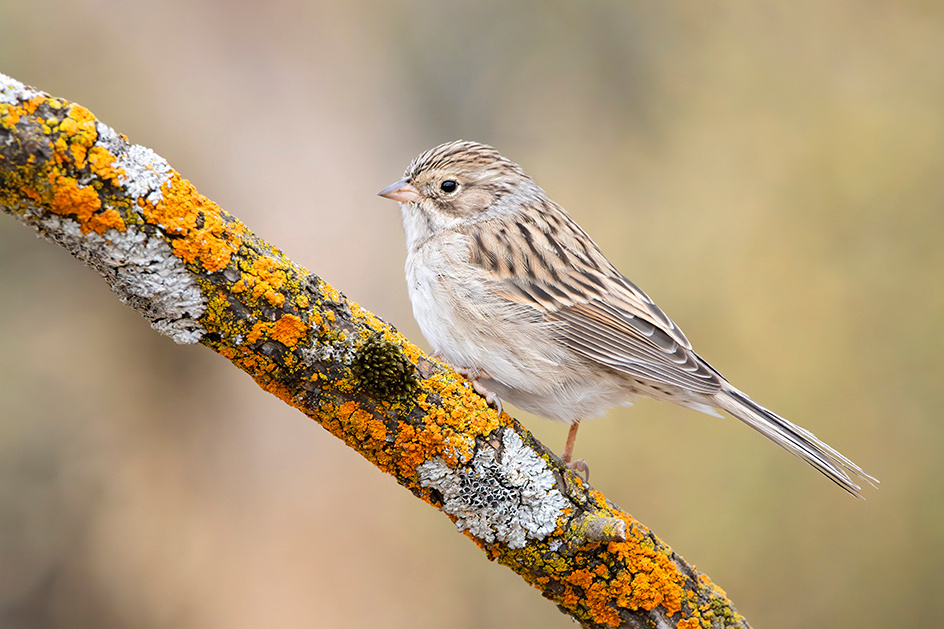
Vesper Sparrow - Relatively uncommon. Most observations in August or September.
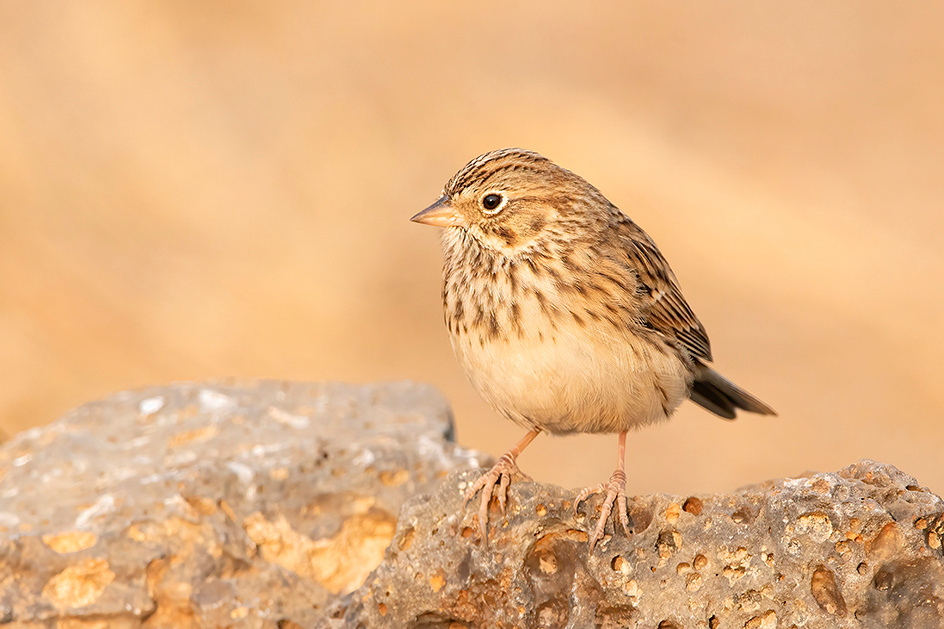

White-Crowned Sparrow - Uncommon. Only observed during September, presumably in migration.
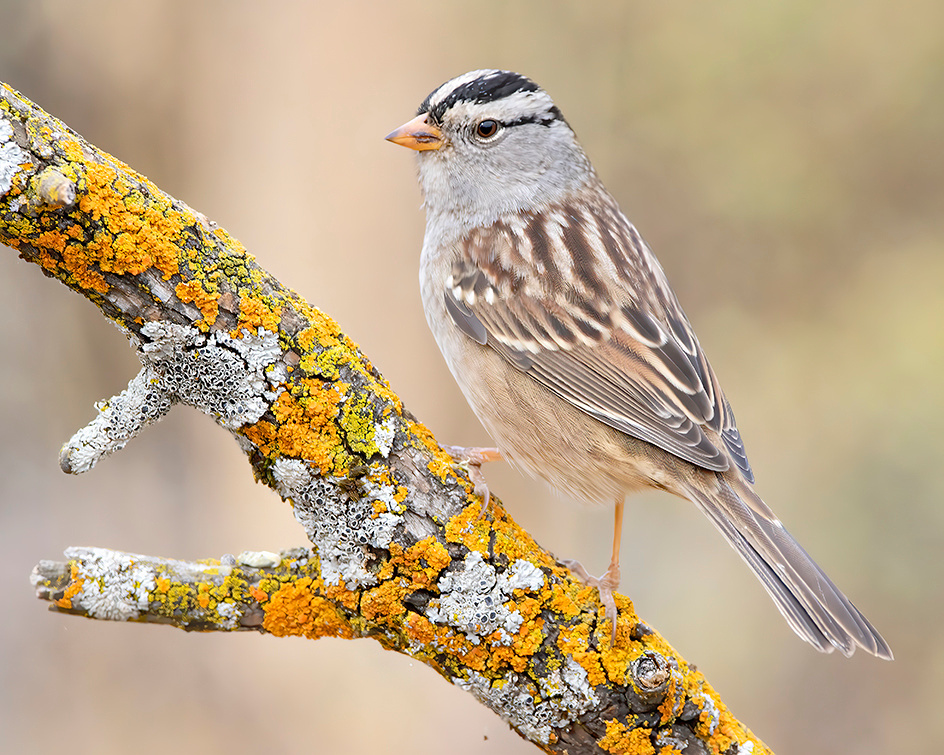
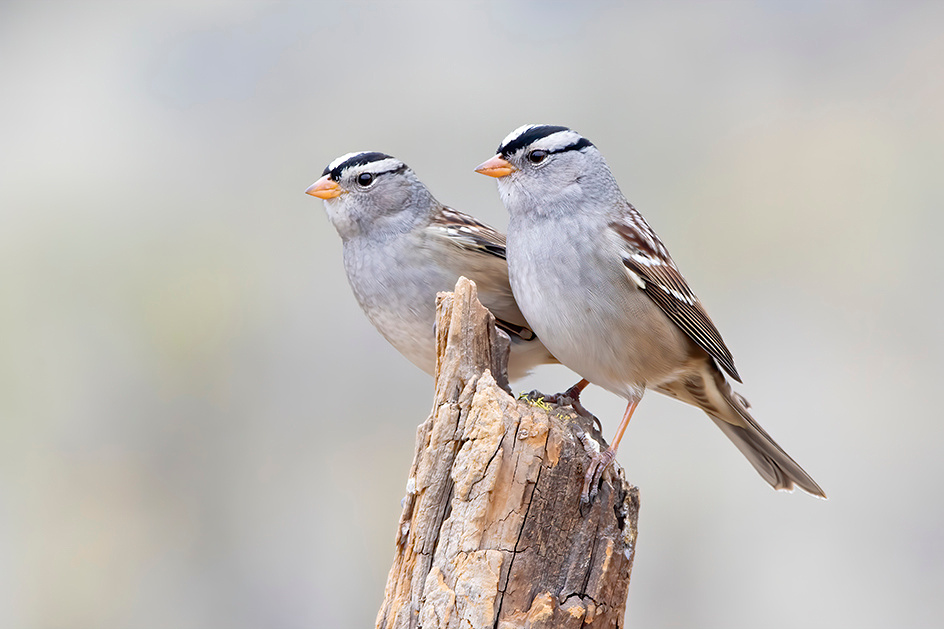
Golden-Crowned Sparrow - Uncommon. Observed only in small numbers during September.
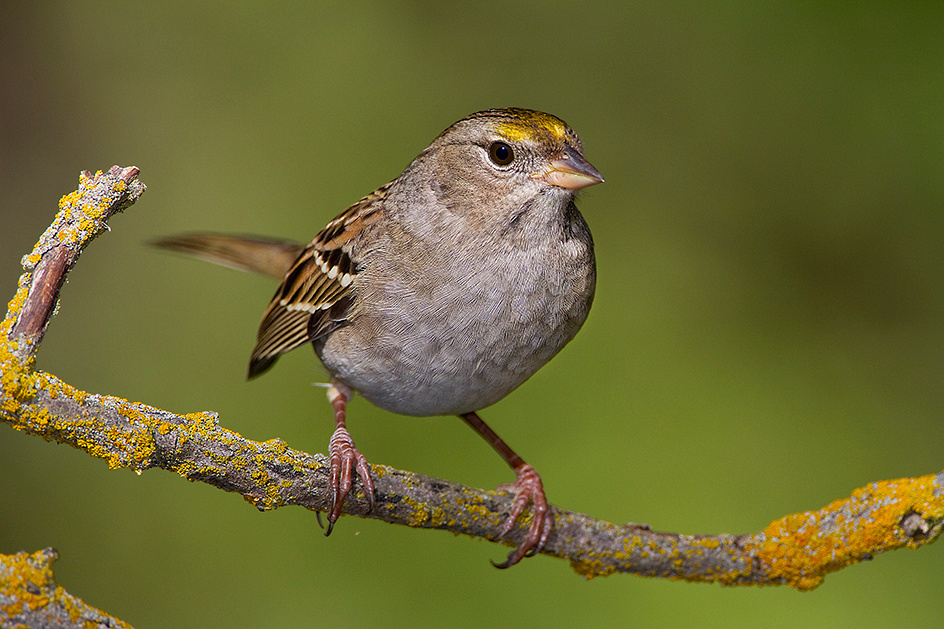
White-Throated Sparrow - Only a single individual observed in September.
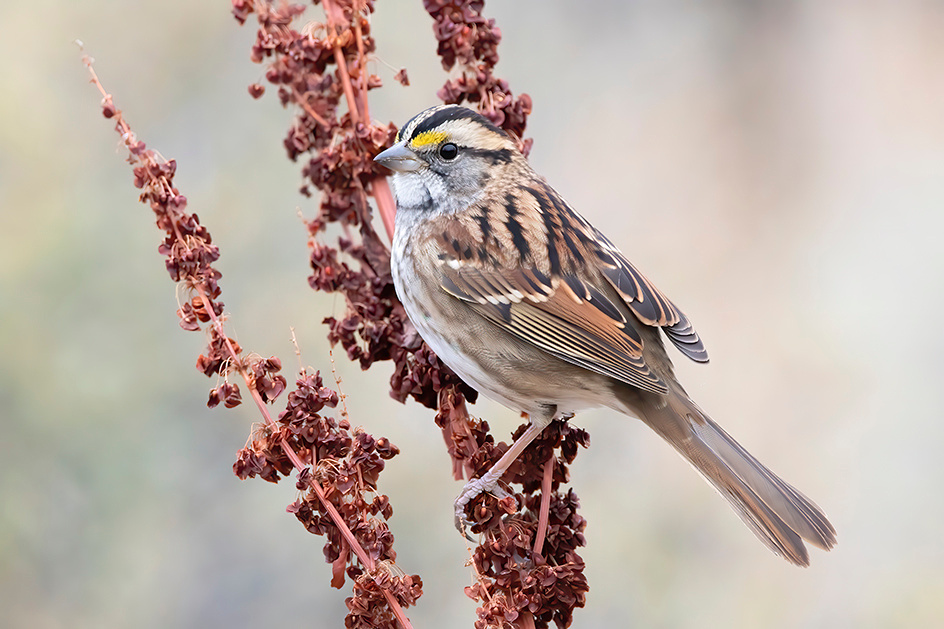
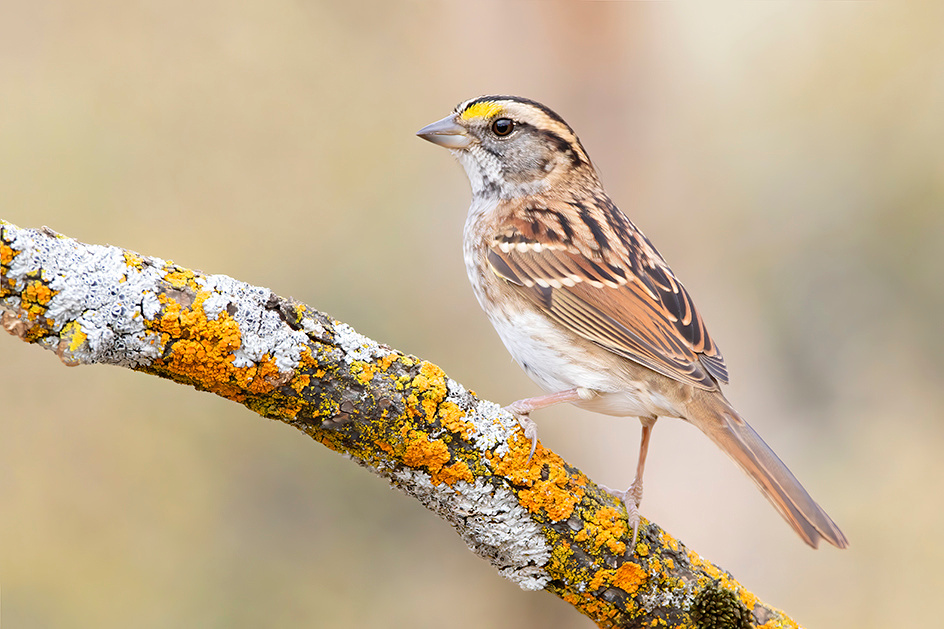
Western Tanager - Irregular. Common but not numerous in most year.
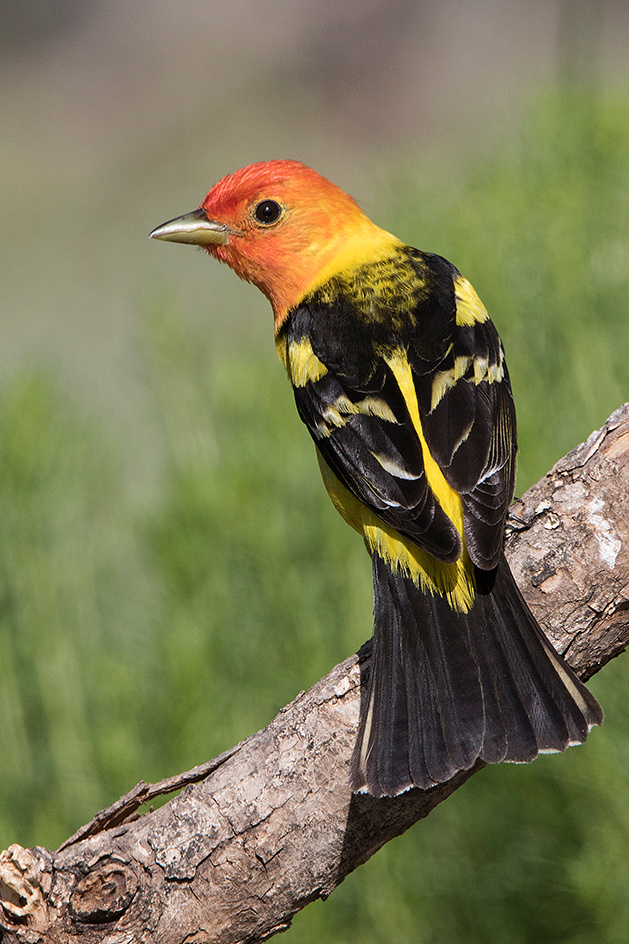
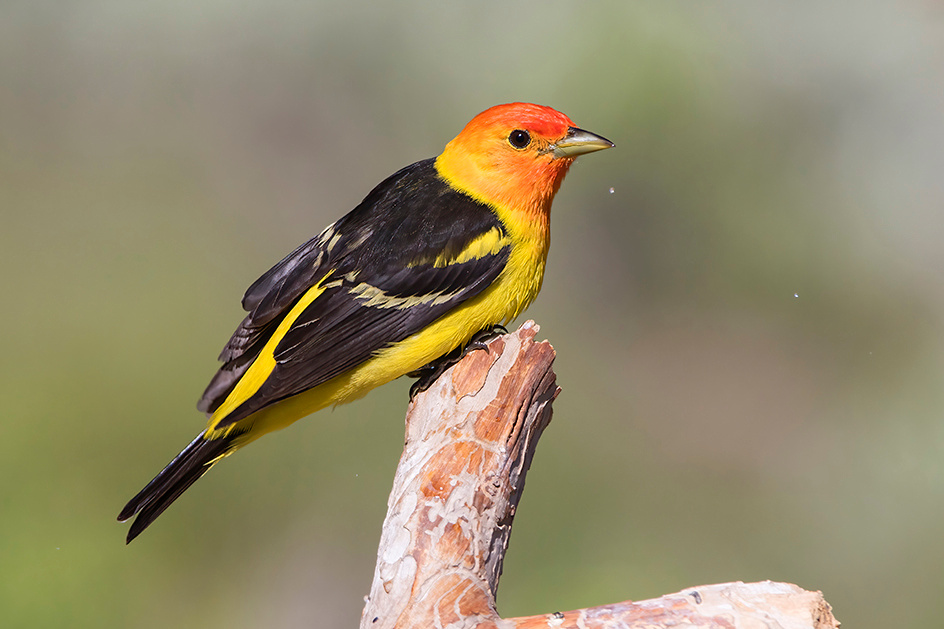
Mountain Chickadee- Fairly common resident breeder. Present during most visits.
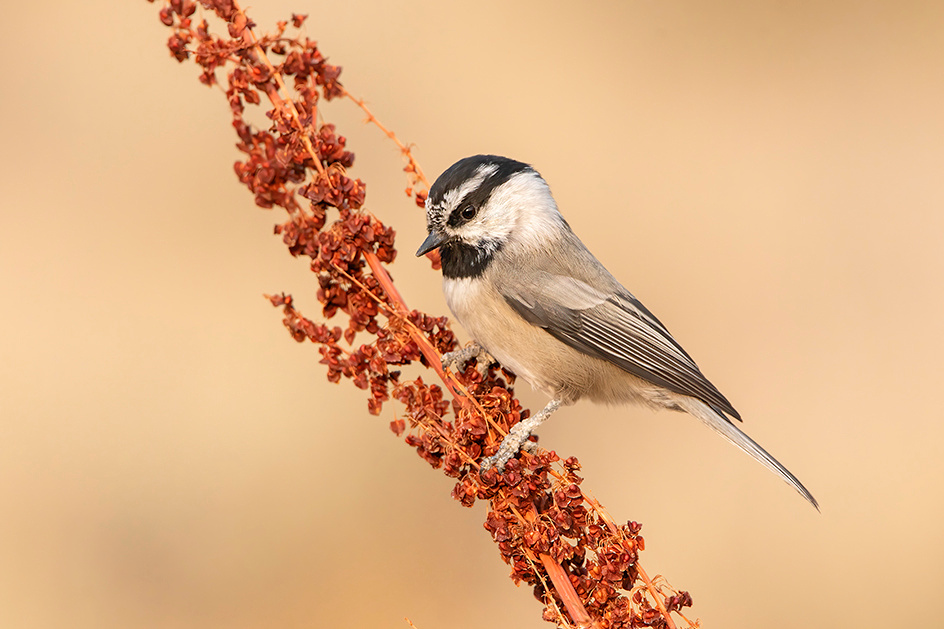
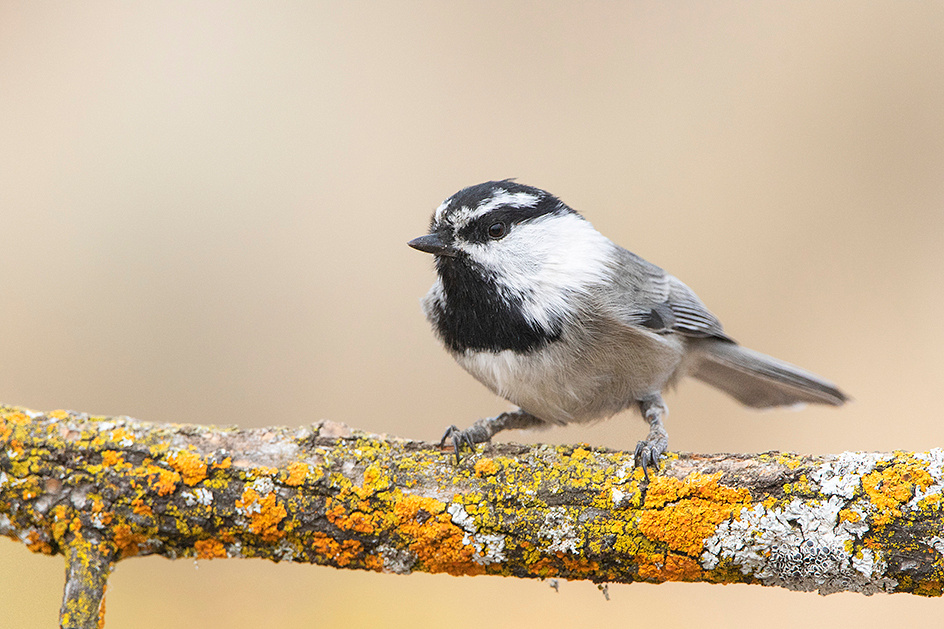
Yellow-Rumped Warbler - Fairly common breeding species. A few individuals observed on most visits.
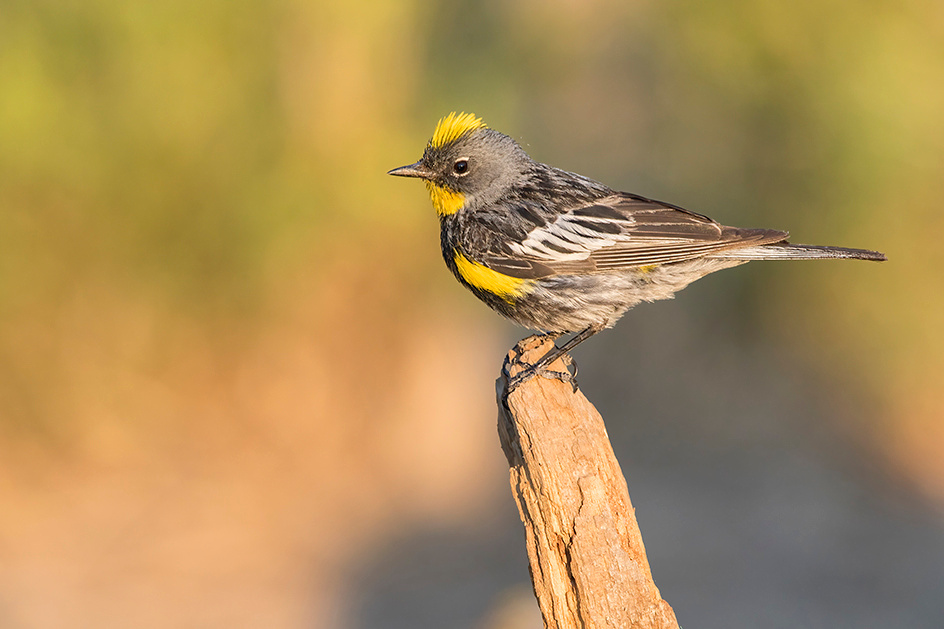
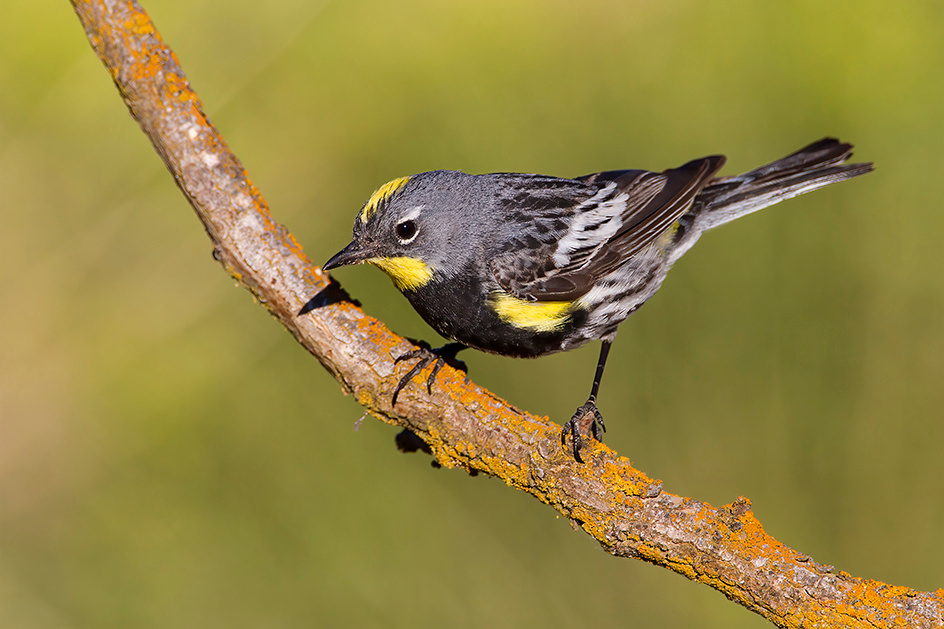
Yellow Warbler - One brief observation during September.
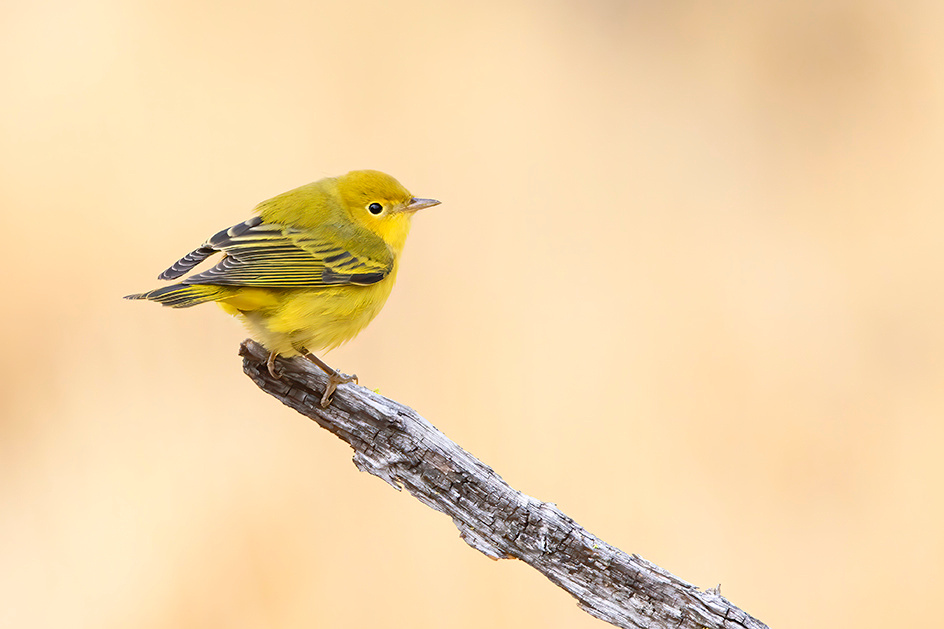
Western Meadowlark - Normally a grassland species. I was surprised to see one at Cabin Lake.
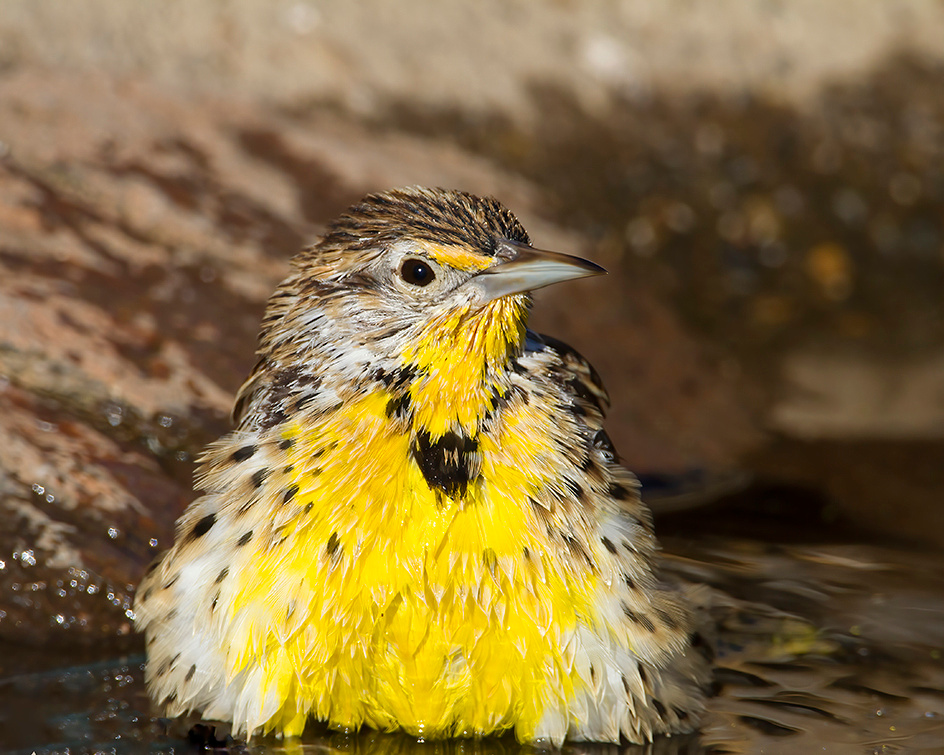
Dark-Eyed Junco - Observed in small numbers only during September.
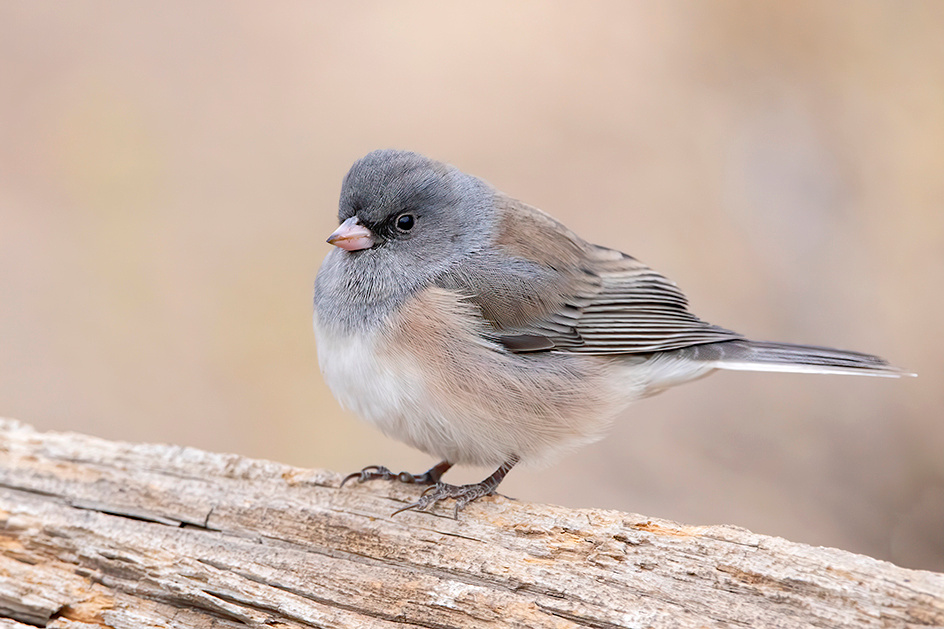
Sage Sparrow - I occasionally see this species in the tall sagebrush along the road north of Fort Rock. This individual was my only observation at the water basins.
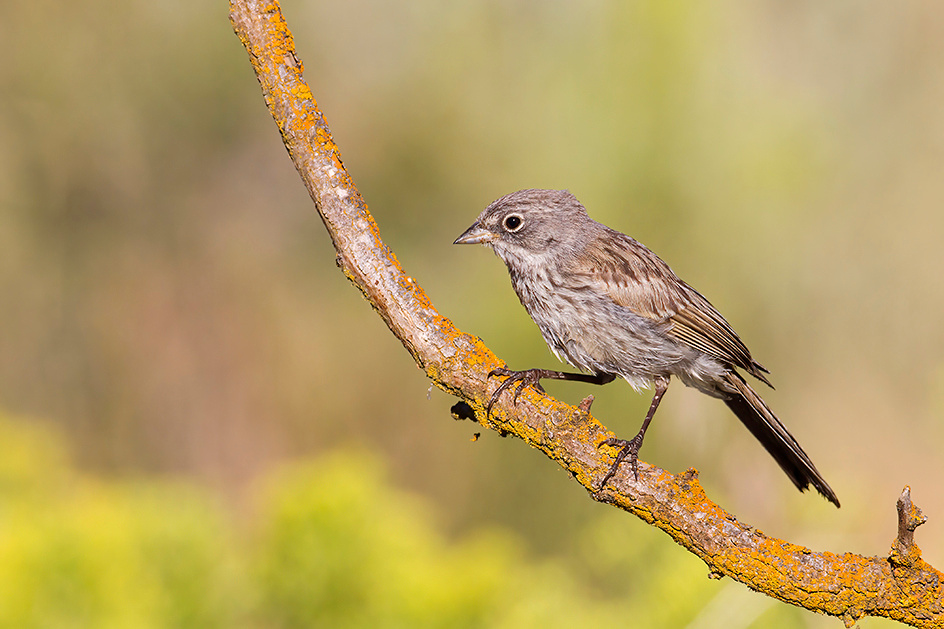
Willow Flycatcher - This flycatcher was photographed at the site in June and was likely a migrating bird as suitable habitat is absent from the local environment.
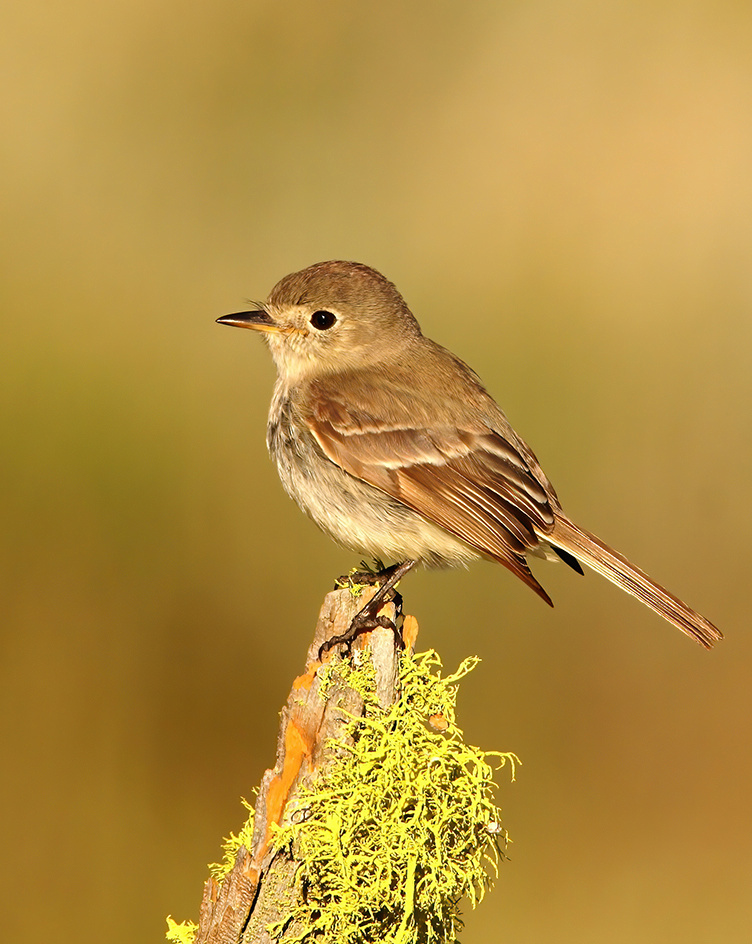
Pine Siskin - Common species in September and October. Uncommon earlier in the year.
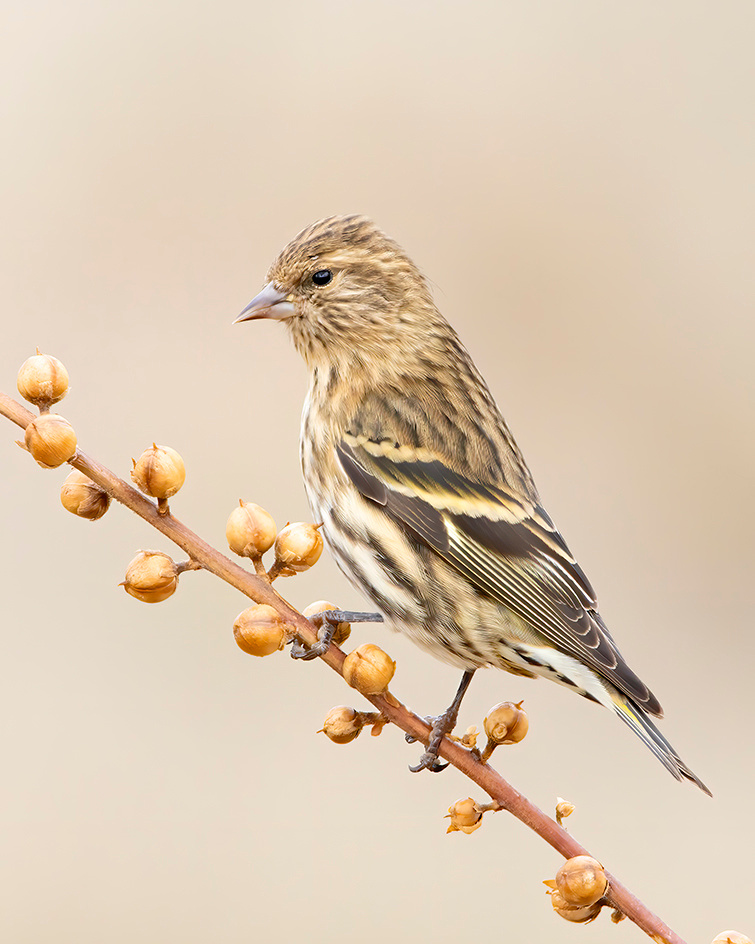
I use a portable "Doghouse" ground blind instead of the wooden blinds. This allows me to set up with the sun at my back mornings and evenings and obtain optimum light. I provide seed, meal worms, and suet to hold birds in the area. I place perches of different sizes and various distances from the blind. However, I generally set them up behind the basins so that the birds are looking towards the basin and the blind. These perches include several woodpecker poles (horizontal logs). My observations indicate that different species show a preference for different basins. The upper basin is more wide open and dominated by grass and low sage. This basin seems to attract more doves, bluebirds, robins, blackbirds, and woodpeckers. The lower basin has more shrub cover and is attractive to towhees, sparrows, and nuthatches. The lower basin also has better photo backgrounds.
I have also photographed a number of Great Basin mammals at this location including badger, long-tailed weasel, mule deer, gray squirrel, black-tailed jackrabbit, least chipmunk, golden-mantled ground squirrel, and cottontail rabbit . A few photos of these species are displayed below.
Badger - On my most recent visit in October 2021, an adult badger came in three times on consecutive mornings. A den was located within 10 feet of the water basin. This was my only sighting of a badger although I have seen their tracks on a few occasions.
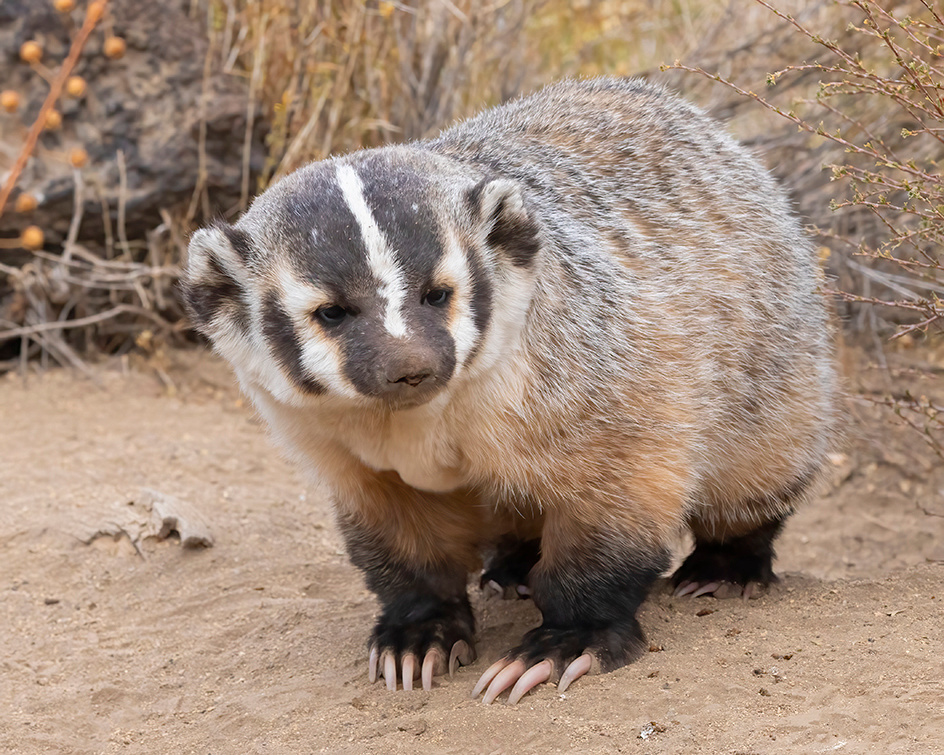
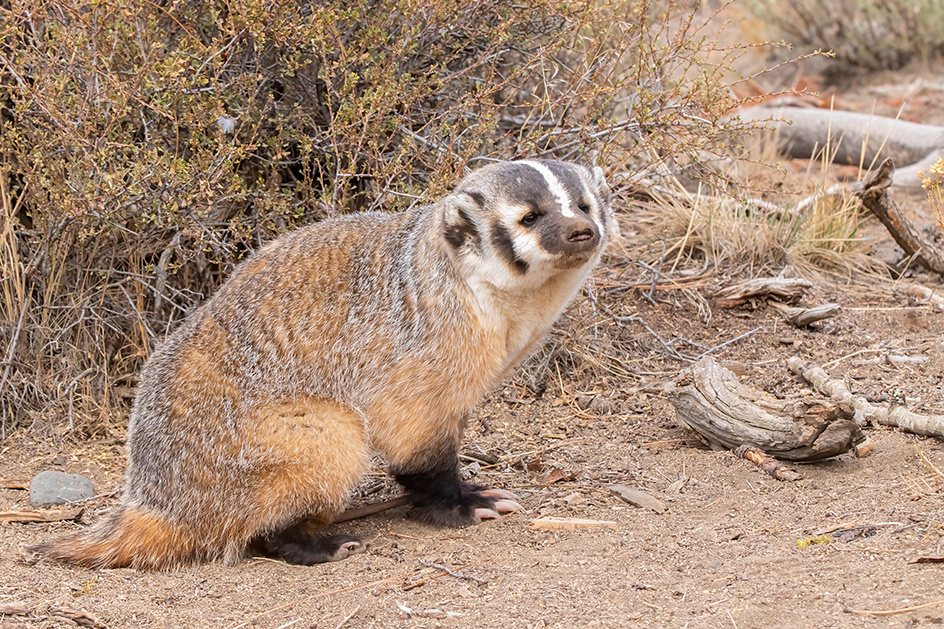 Least Chipmunk - These little guys are abundant with 10-12 working the bird seed on most visits. They have also boldly enter my blind and attempted to help themselves to my lunch.
Least Chipmunk - These little guys are abundant with 10-12 working the bird seed on most visits. They have also boldly enter my blind and attempted to help themselves to my lunch.
 Golden-Mantled Ground Squirrel - I normally have 1 or 2 of these present on most visits. Quite the posers.
Golden-Mantled Ground Squirrel - I normally have 1 or 2 of these present on most visits. Quite the posers.

Long-Tailed Weasel - I have 3 observations of these quick little subjects in 15 years. They hunt the numerous chipmunks. Once they come in they create a chipmunk free zone around the basin for at least one-half an hour.
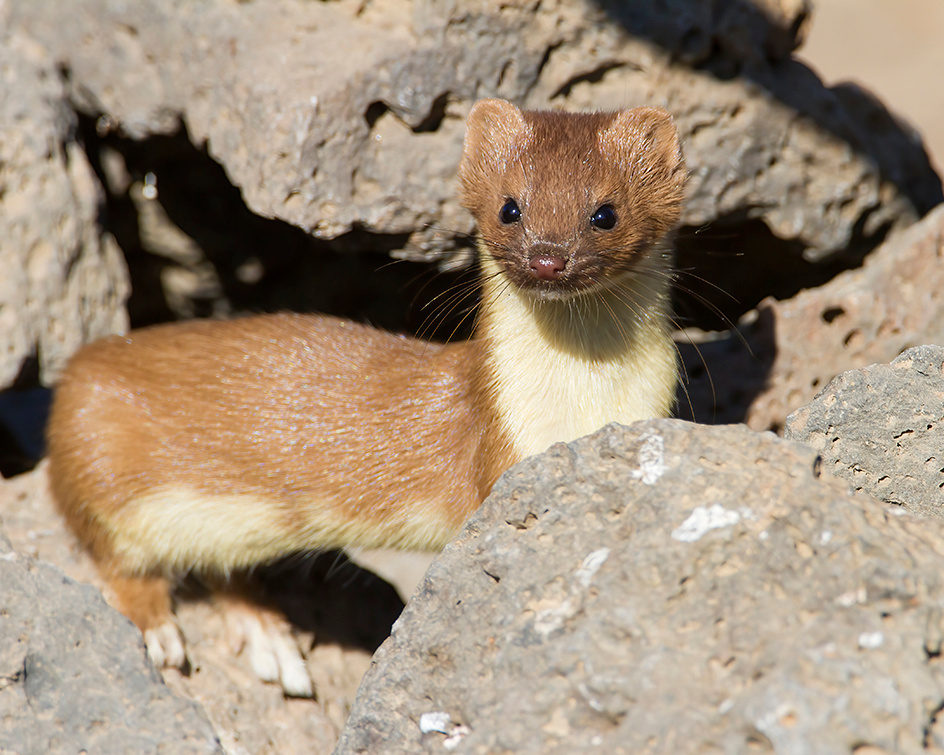
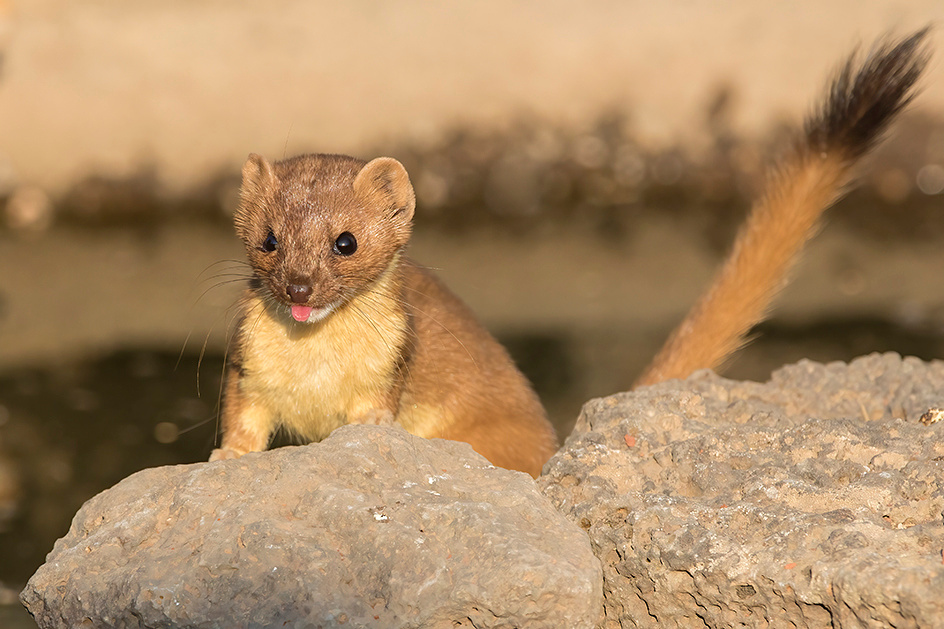
Cottontail Rabbit - Very occasional visitor as are black-tailed jackrabbits.
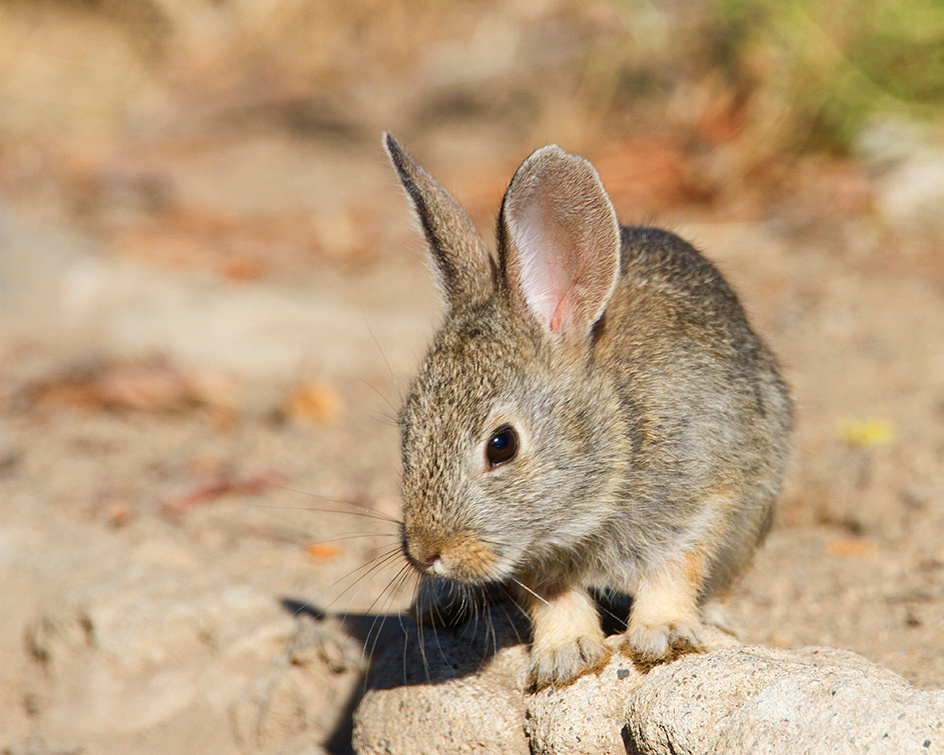
Cabin Lake is an amazing location for bird photography. You never know what you might get. The action can be nearly constant and it is not uncommon to shoot 1,000 images in a morning. If the action suddenly slows, you may want to get out of the blind and check for hawks or falcons nearby. Even during the week other birders or photographers are frequently present. On one weekend morning 7 other photographers were present before daylight. Consider a birdwatching or photography visit to Cabin Lake.
My wife Becky and I visited Silver Salmon Creek Lodge within the Lake Clark National Park during mid-September 2021 for a week. Our goal was to photograph coastal brown bears in a natural environment. Our trip was timed to catch the end of the salmon run on Silver Salmon Creek. Lake Clark National Park is about 4 million acres and is located on the western side of the Cook Inlet in southern Alaska. The park contains 2 active volcanoes (Mount Iliamna and Mount Redoubt) and some incredible wilderness scenery.

The Johnson Creek watershed which forms the northern boundary of the area worked by the lodge. (I-Phone photo from the plane. Courtesy of Becky Bogener)
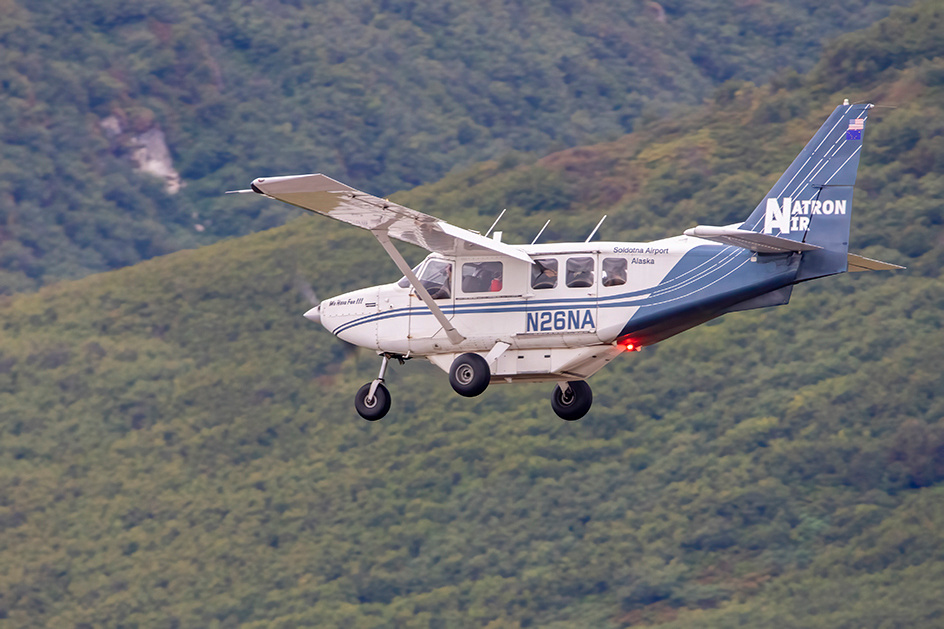
We flew on Alaska Airlines from Redding to Anchorage and rented a car for the scenic 3 hour drive to Soldatna. The next morning we flew on an Australian bush plane from Soldatna to the lodge. Our pilot Tim, brought us in for a very smooth landing on the beach during low tide. We were met on the beach by Oliver Coray, the owner's son. Oliver helped us unload and quickly reloaded outgoing passengers who immediately took off. We were transported to the lodge in custom-made aluminum carts pulled by Honda ATVs. Note the lack of suspension on the carts.

We observed two bears from the plane while landing and were more than ready to get the photo gear unpacked. Wolf and bear tracks were present on the beach.
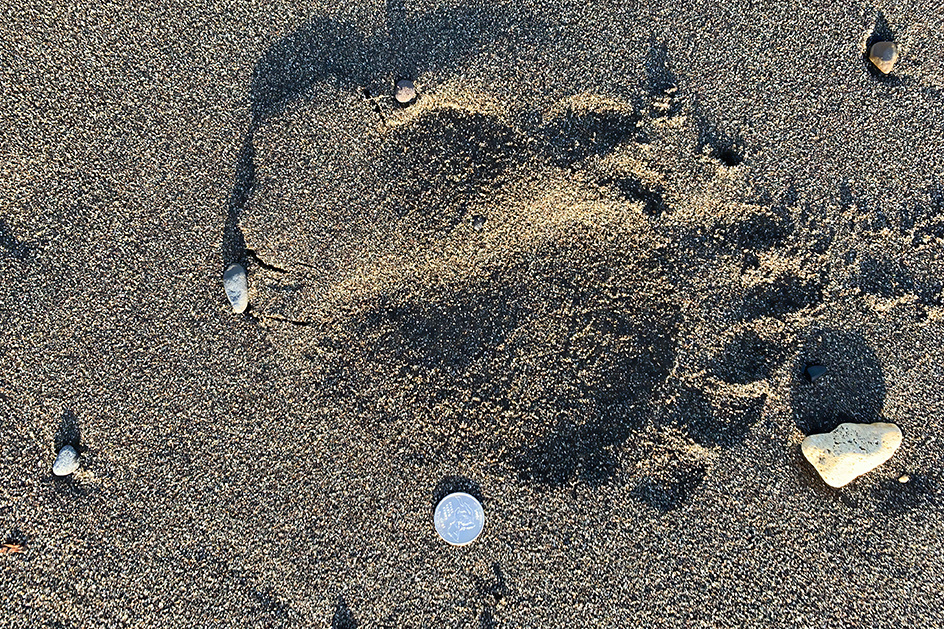
Bear Tracks
We unpacked quickly and were provided with rubber knee boots and a brief safety discussion from our guide Rob. We immediately headed for the bears we had seen from the air which were being closely followed by a group of photographers. We immediately discovered that the bears were very acclimated to close human presence. For most photo opportunities, a 70-200mm lens would have been entirely adequate. Some big prime lenses were in use, but most photographers used some form of telephoto zoom lens. We observed the bears clamming on the exposed mudflats of the inlet. They were very efficient and consumed dozens (shell and all).
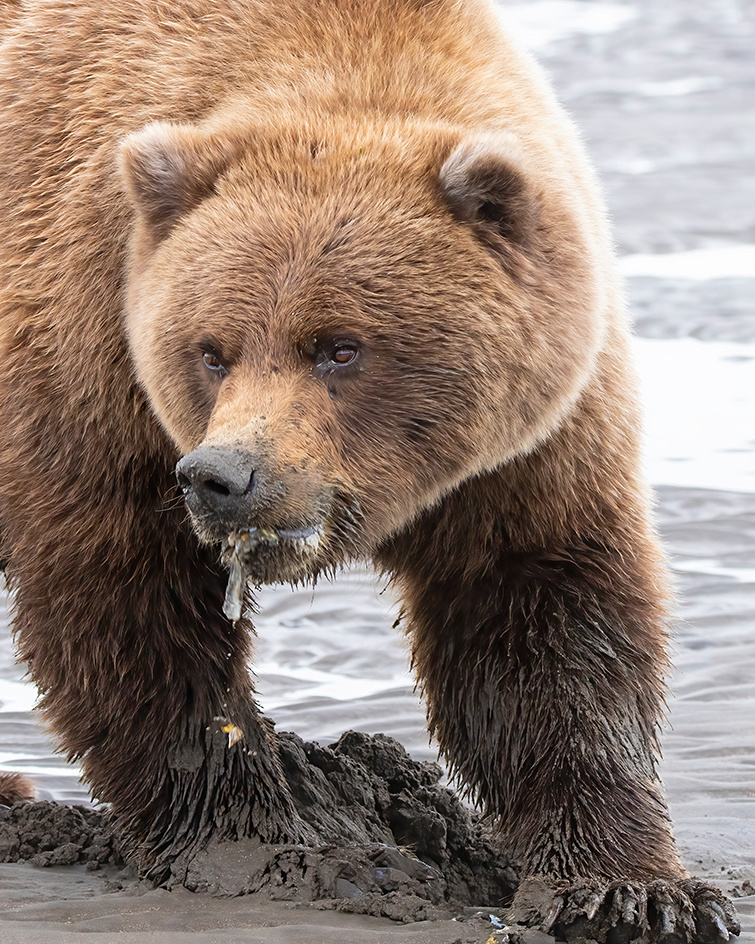
Digging up clams.
After a productive morning photo shoot we headed into the lodge for lunch at 1pm. The lodge employs a small staff including a chef and a baker. Both were excellent. We also met our hosts David and Joanne Coray. Very genuine and welcoming hosts. After lunch we opted to take a scenic coastal boat tour along the coast north of the lodge to Chisik Island and Bird Rock, a cliff nesting site for a variety of seabirds including puffins. We saw several horned puffins and a few common murres, but obtained no decent photos. Apparently we were several weeks behind the peak of nesting activity. I was able to photograph one of the two peregrine falcons perched on Bird Rock from the boat. Beautiful birds.
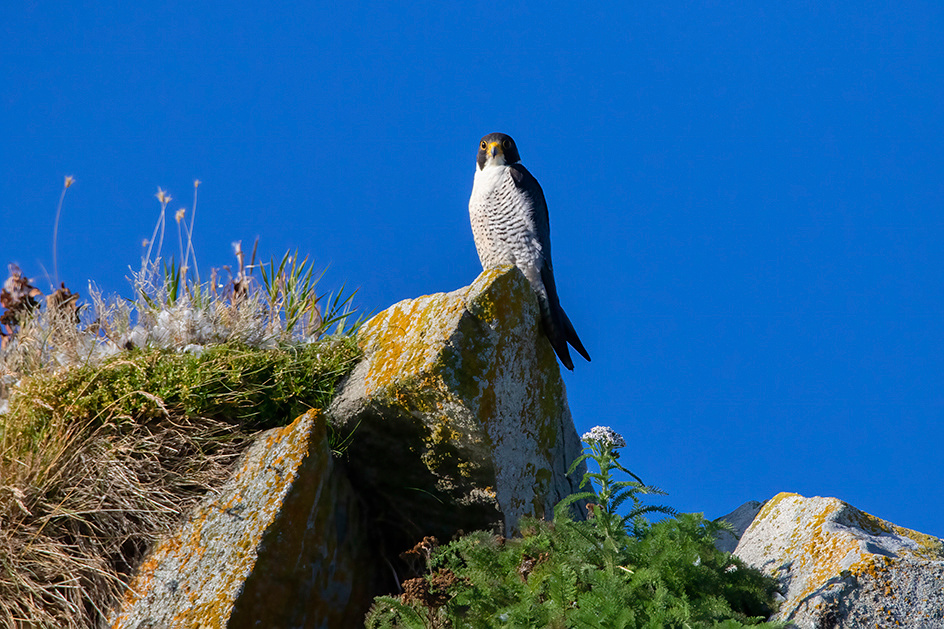
We saw little signs of human activity during the cruise. One rare exception was when we did cruise by an abandoned seafood cannery. We briefly landed on a stony beach to explore some bivalve fossil imprints and stretch our legs.
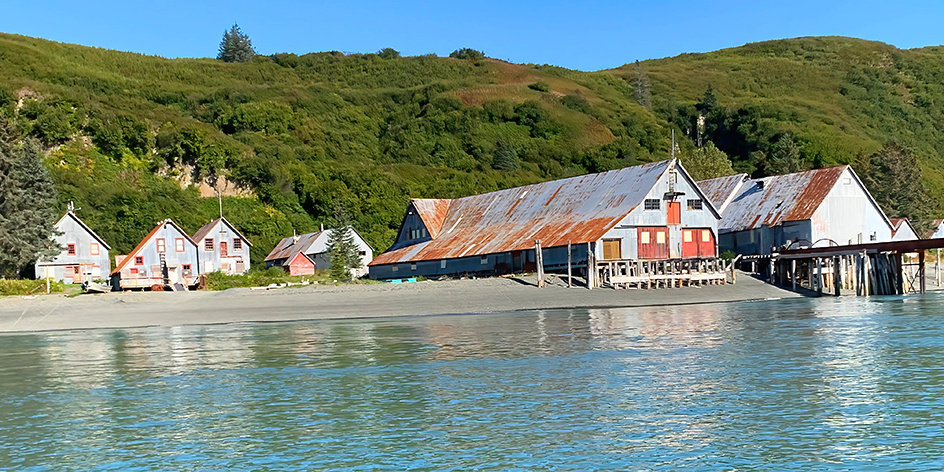
Abandoned seafood cannery.
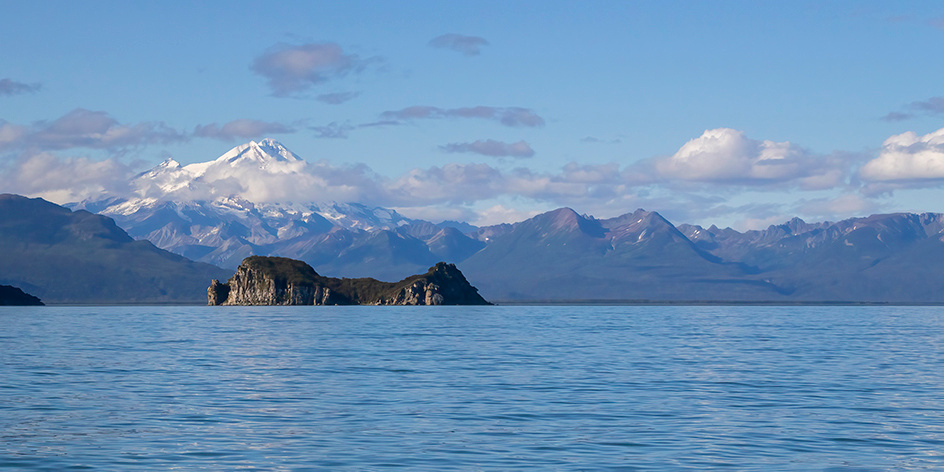 Chigmit Mountains in the background and Chisik Island in the foreground.
Chigmit Mountains in the background and Chisik Island in the foreground.
We returned to the lodge in time for happy hour, a daily communal gathering in the Wheelhouse. We enjoyed Alaskan Amber Ale and wine with a friendly group of photographers. I was somewhat suprised that many within the group were repeat customers. One husband and wife duo were on their seventh or eighth visit.
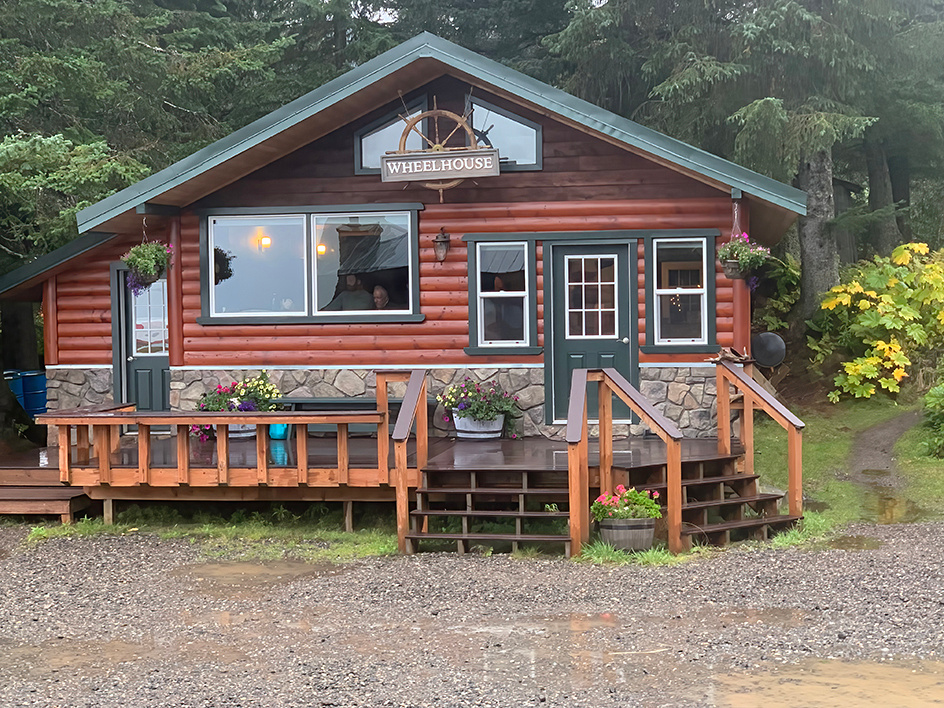
The Wheelhouse. Wifi and happy hour.
Silver Salmon Creek Lodge was originally a remote fishing lodge and still offers quality guided fishing for both salmon locally and within the Cook Inlet for halibut.
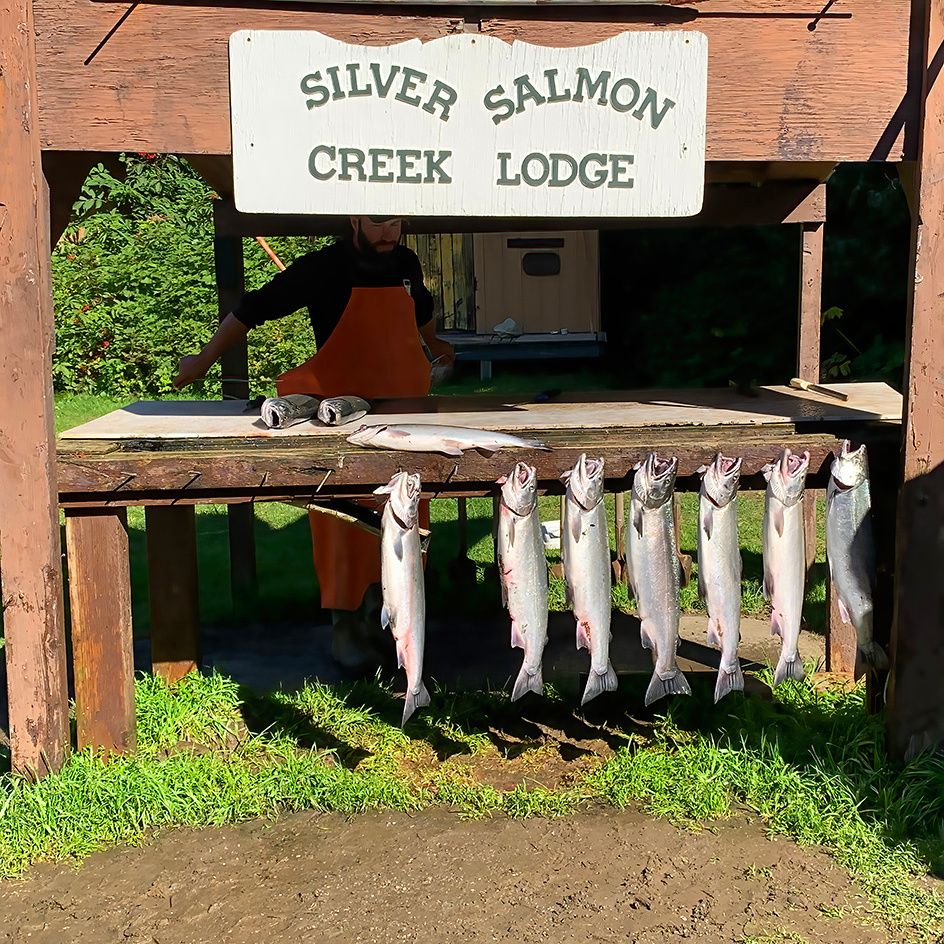
The daily catch.
I was quite excited that first evening to have 3 bears wandering around the lodge grounds during happy hour and dinner. This later proved to be a nightly occurrence. After dinner we retired to the Puffin Perch, our lodging. It was clean, cozy and comfortable.
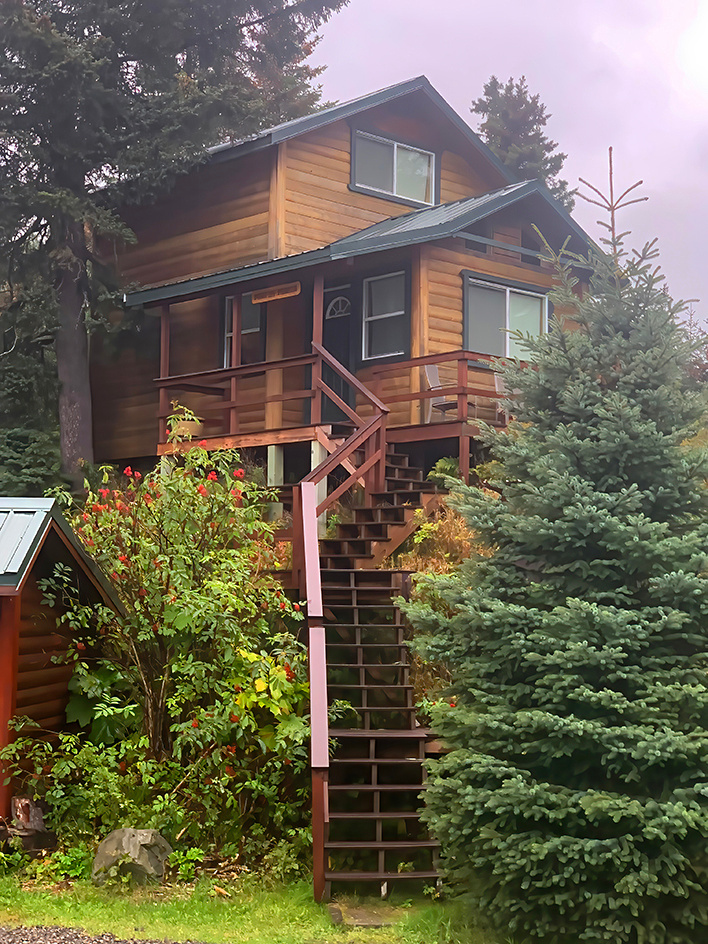
Puffin Perch. Our home for the week.
We headed out again the next morning about one-half hour before daylight to photograph bears with the background of the sunrise over the Kenai Range across the Cook Inlet. Cold traveling in the open carts well before sunrise. It was 36 degrees that morning. It was so worth it!

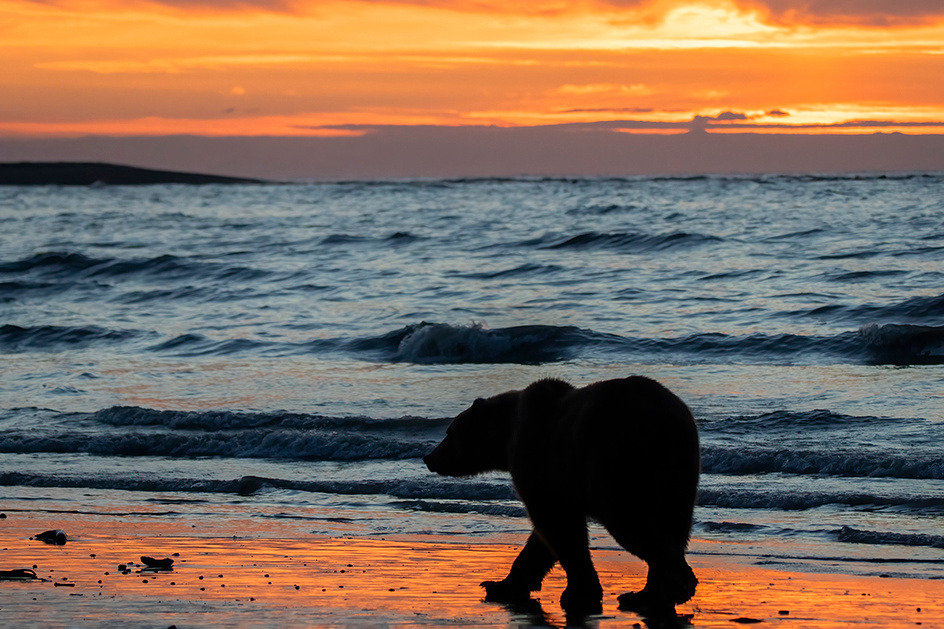
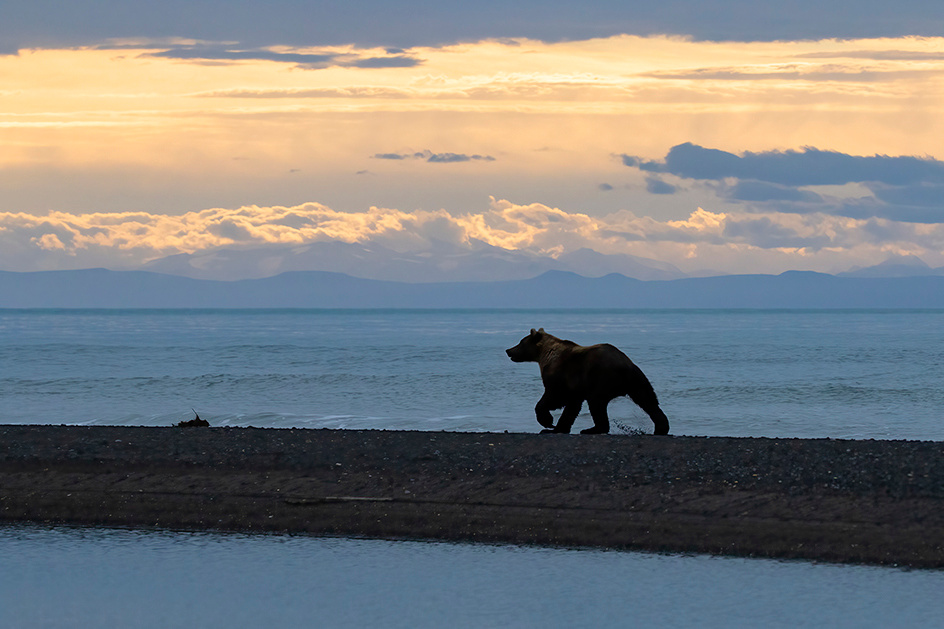
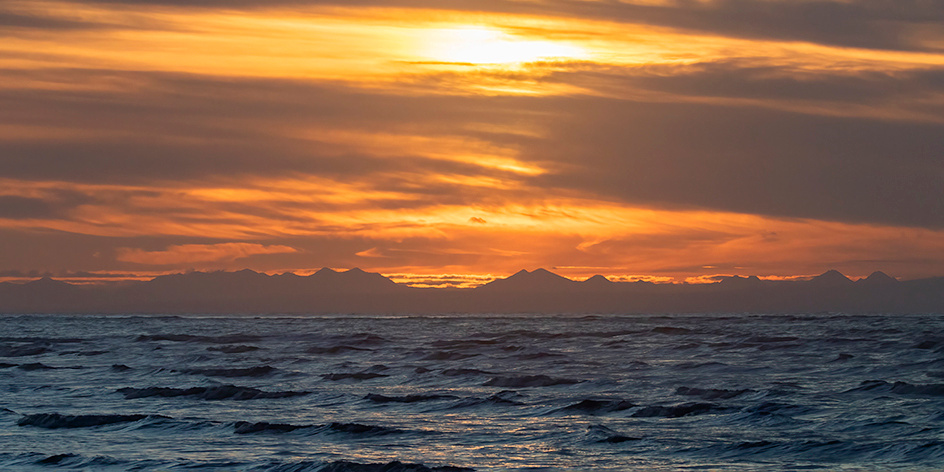
Even without a bear in the shot it was a stunning sunrise.
We headed back for an 8 am breakfast and then back to the bears. At breakfast they always posted the next days menu. Something to look forward to!

As is typical for Alaska, we had a variety of weather. It rained several days and was overcast most of the remainder. We had originally booked 6 days at the lodge hoping to only lose one or two due to weather. Many photographers who chose an overnight visit never saw the sun.

My bride and arctic explorer dressed for the weather. Seven layers on top, three on the bottom and still cold.
The rain and overcast conditions made for some challenging lighting for action photography, especially fishing bears. These guys can go from asleep to 30 mph in seconds if they detect a salmon attempting to push upstream. A camera with a high ISO/low noise capability is very beneficial to capture the action.
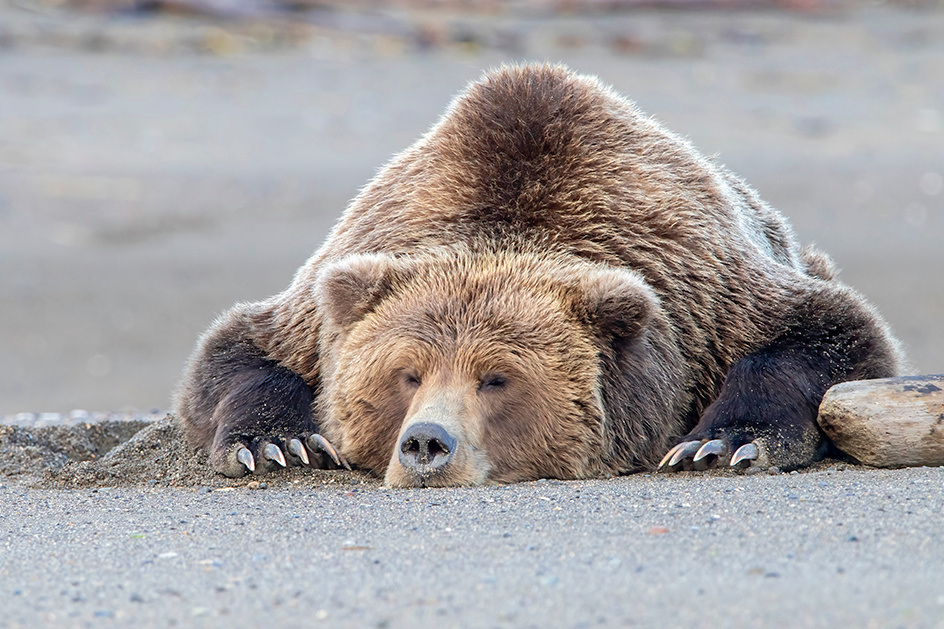
While she appears asleep, any unnatural splashing in the creek could bring her fully awake and focused.
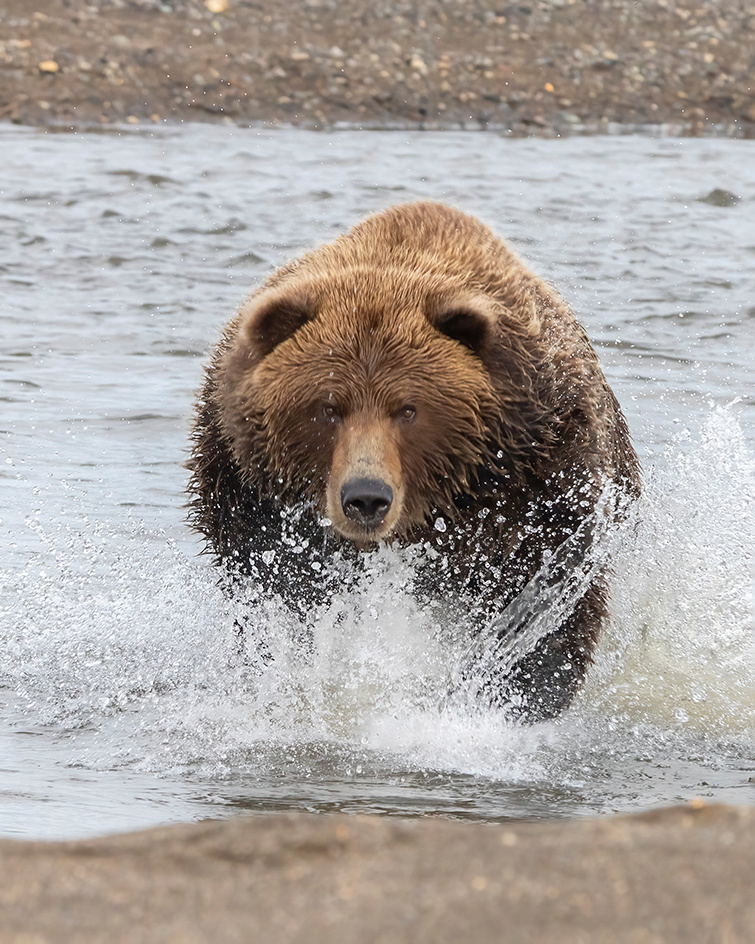
Chasing salmon.
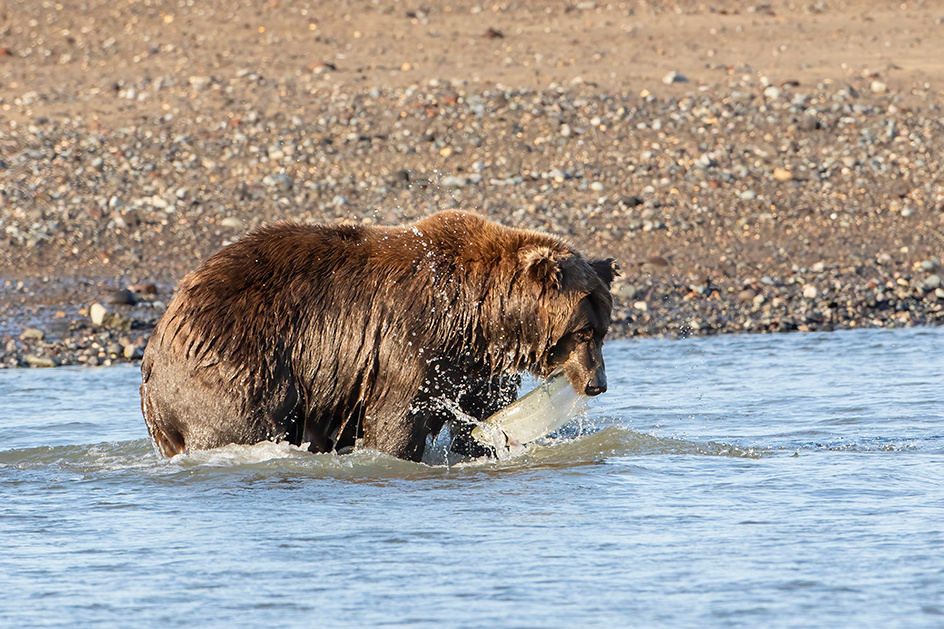
And the capture.
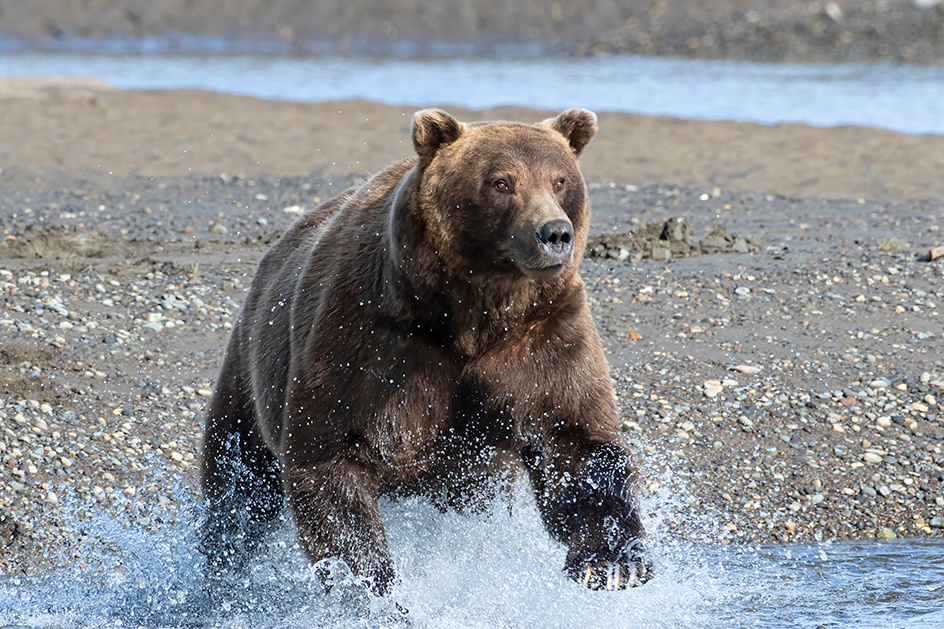
Large male chasing fish.
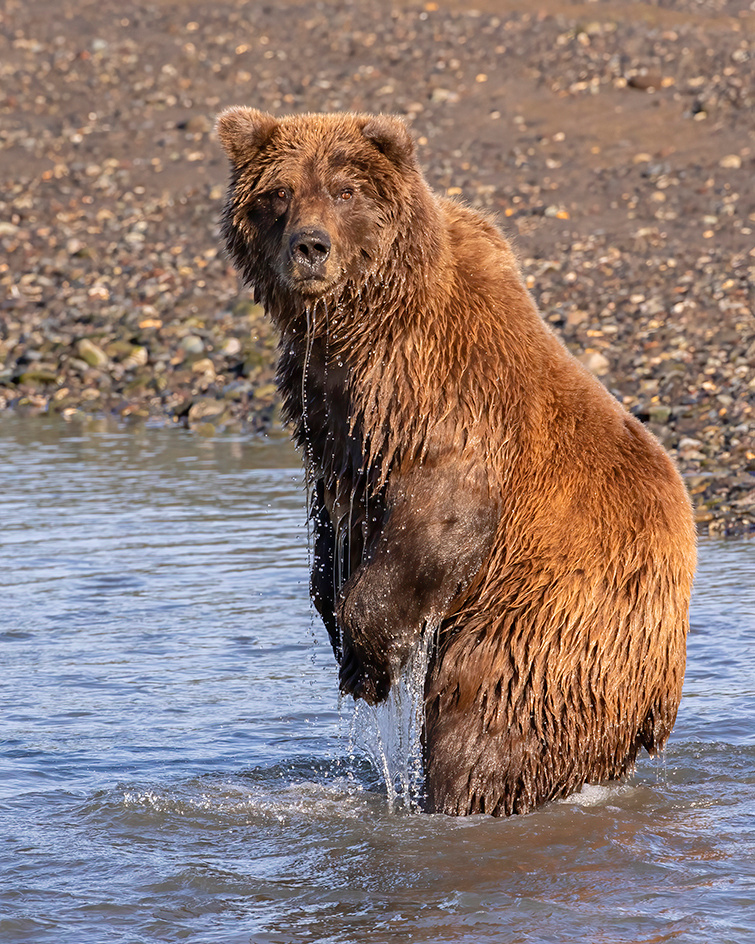
After a miss the bears would occasionally stand to get a better view in an attempt to reacquire the fleeing salmon.
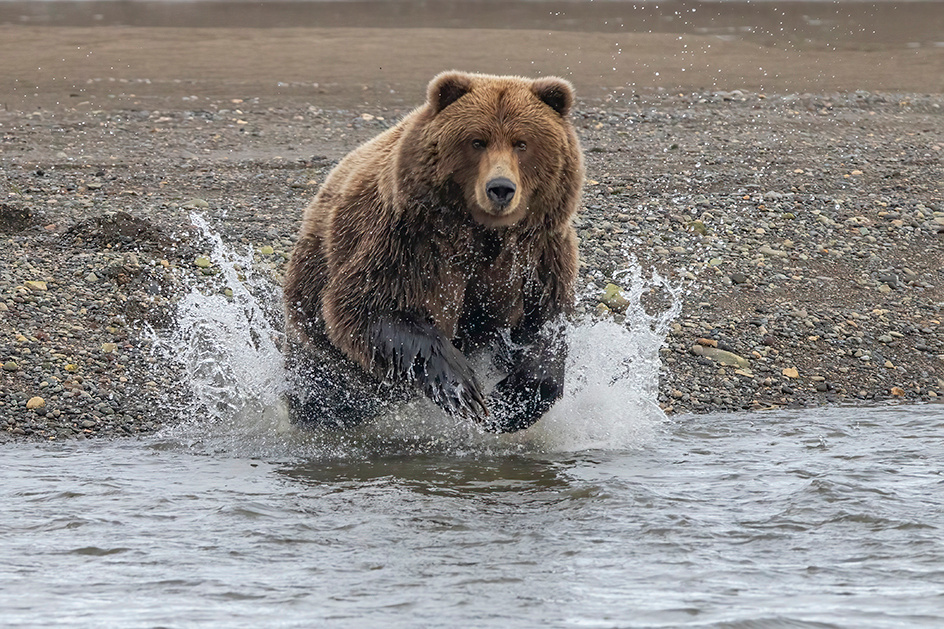
Raw speed and power.
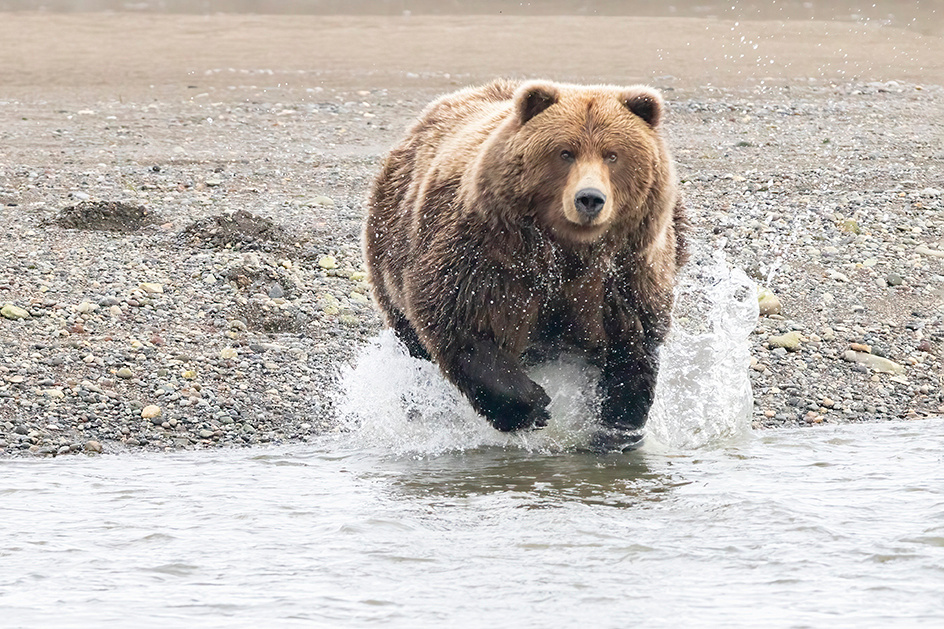
Love the eye contact.
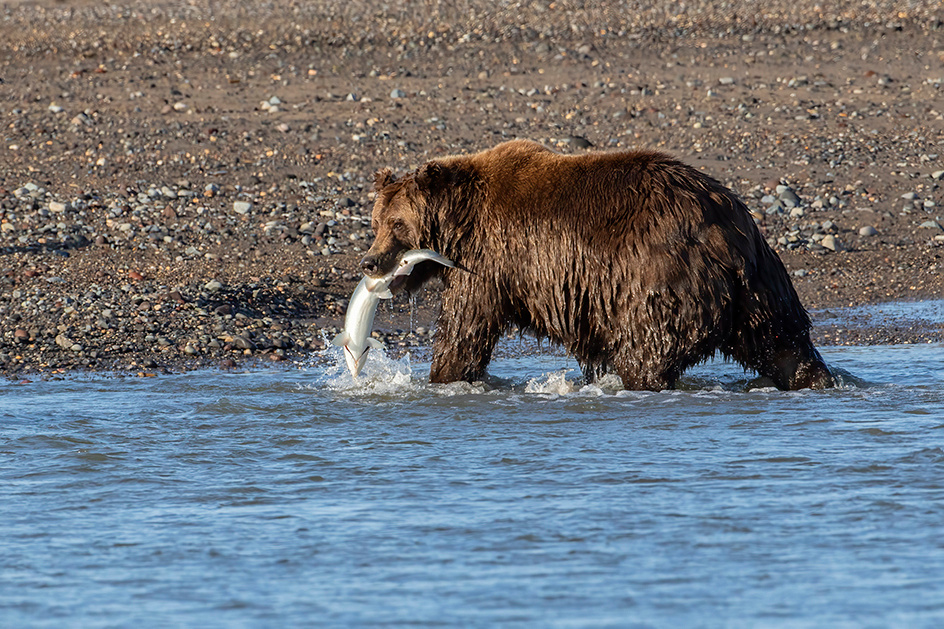
Another capture.
In addition to actively fishing for salmon, the bears were adept at scavenging. They walked the shoreline and frequently encountered dead fish including spiney dogfish (small sharks) and flounder. I suspect that these fish may have been discarded bycatch from offshore commercial fishing operations.
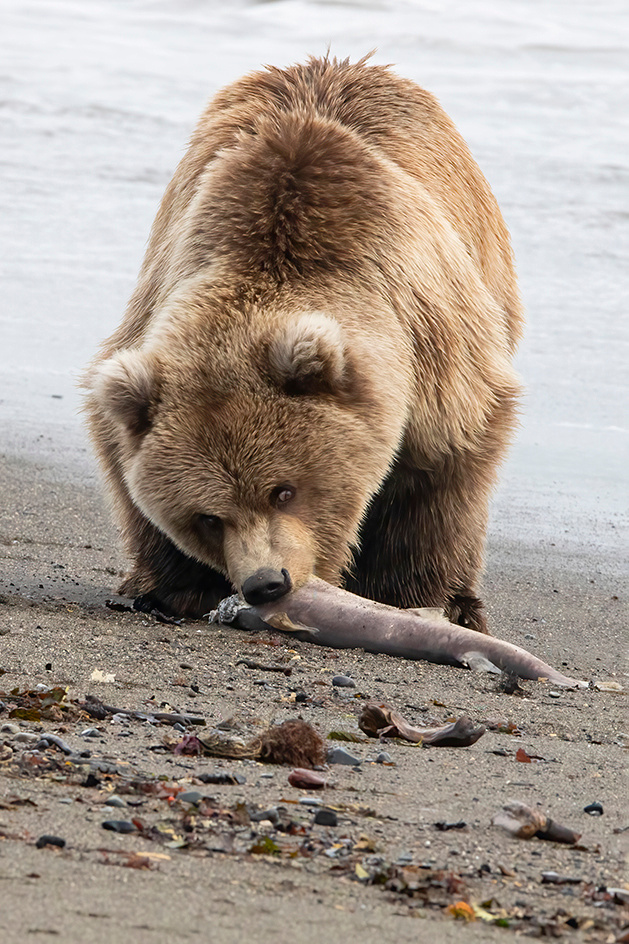
Cub eating a scavenged spiny dogfish.

Young male with a scavenged flounder.
In addition to salmon, clamming, and scavenging, the bears spent many hours a day grazing on grasses and forbs. Beach pea, a legume, seemed to be a favorite at this time of year. They are reported to consume 30 pounds of vegetation per day and it is the mainstay of their diet as they emerge from hibernation.
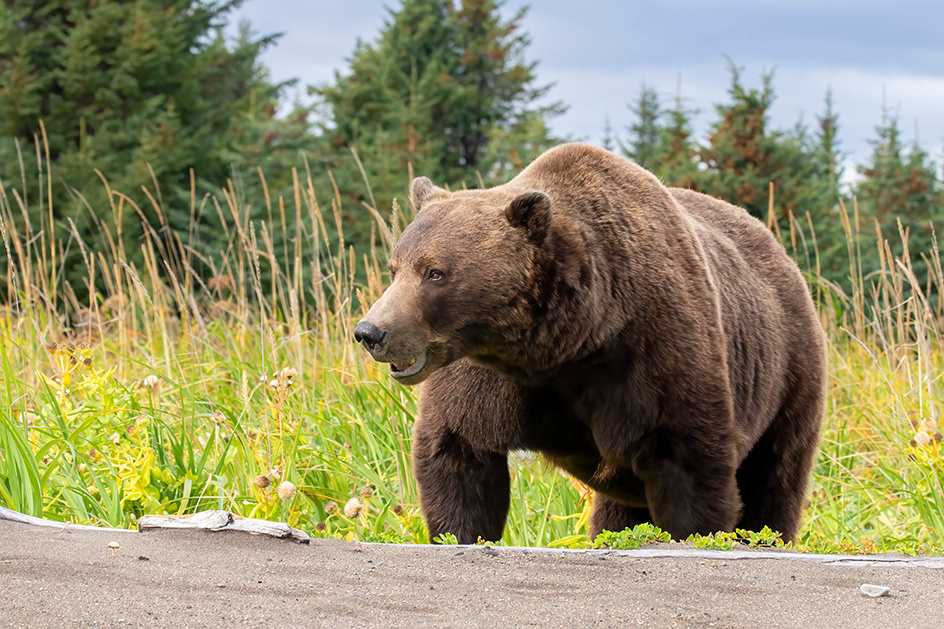
Medium to large adult male emerging from the forest.

Bear at the end of the rainbow.
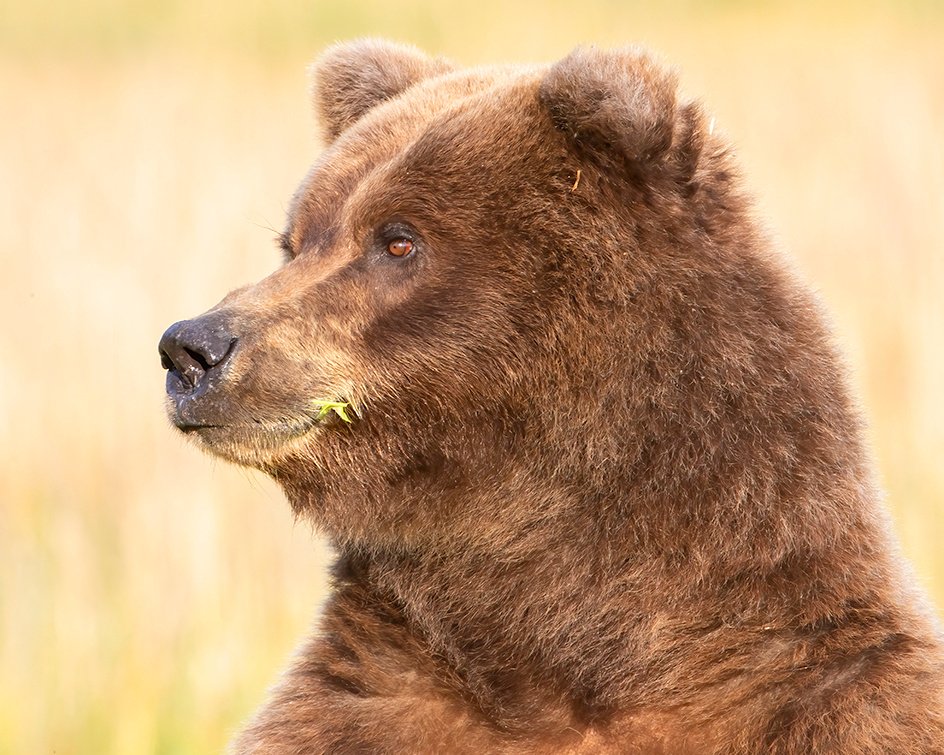
This bear stood and scanned the area in some rare nice light.
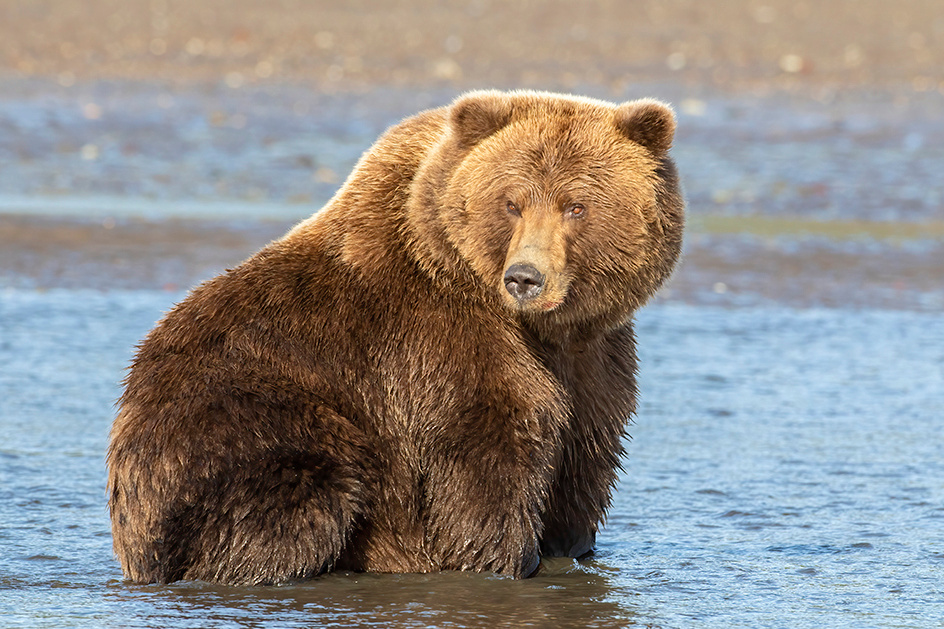 The guides had named the bears. This is Aggro, a very heavy female. She had lost her cubs early in the season and was believed to be pregnant again at the time of this photo. These bears practice delayed implantation where the fertilized egg is not attached at the time of breeding, but rather months later during hibernation. The cubs are born blind, hairless, and softball-sized in the den during hibernation. They emerge from hibernation with their mother in June or July. June/July is probably the best time to photograph very small cubs and or breeding bears.
The guides had named the bears. This is Aggro, a very heavy female. She had lost her cubs early in the season and was believed to be pregnant again at the time of this photo. These bears practice delayed implantation where the fertilized egg is not attached at the time of breeding, but rather months later during hibernation. The cubs are born blind, hairless, and softball-sized in the den during hibernation. They emerge from hibernation with their mother in June or July. June/July is probably the best time to photograph very small cubs and or breeding bears.
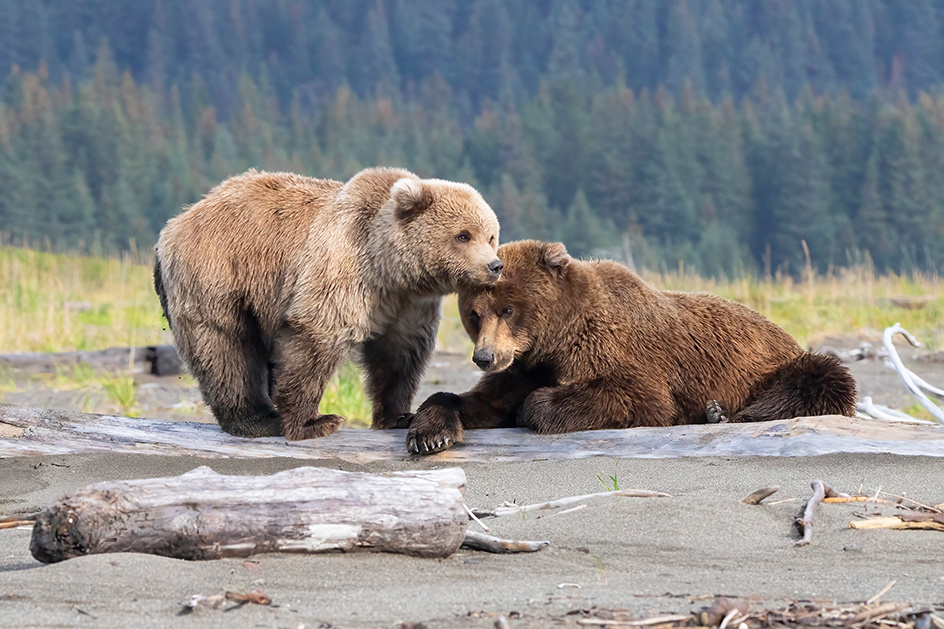
This second-year cub was pestering his mom to nurse.
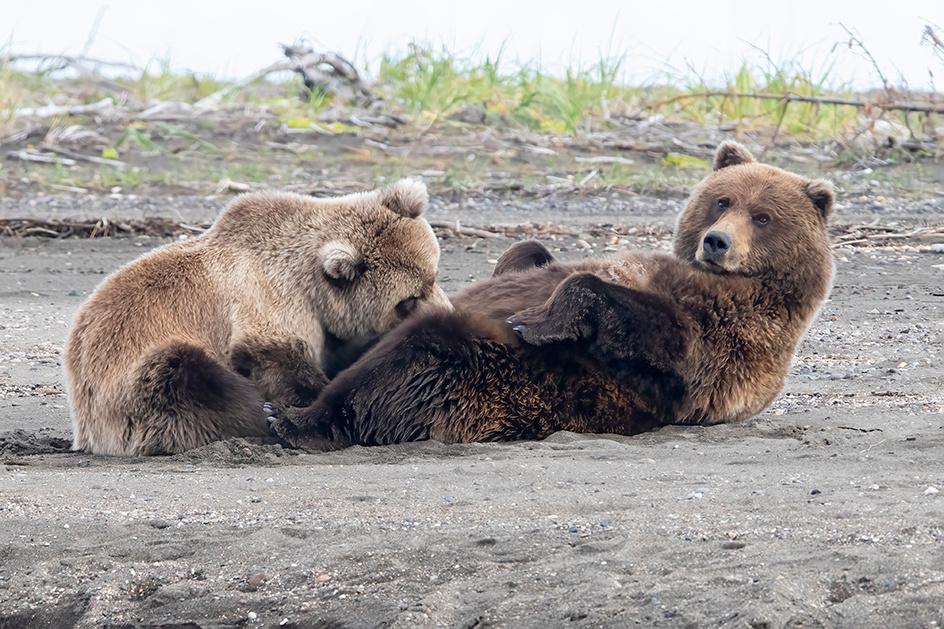
Nursing on the beach.
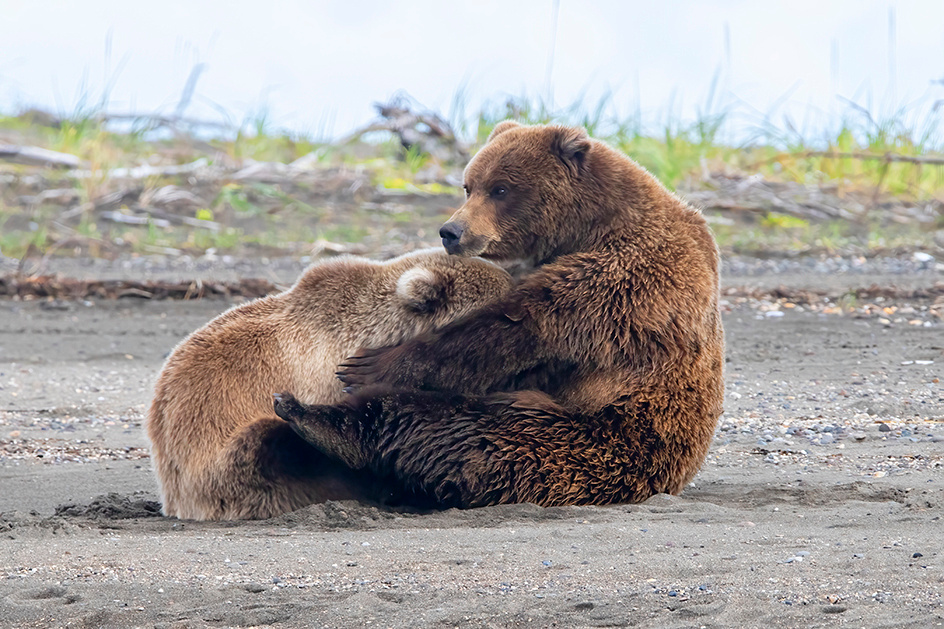
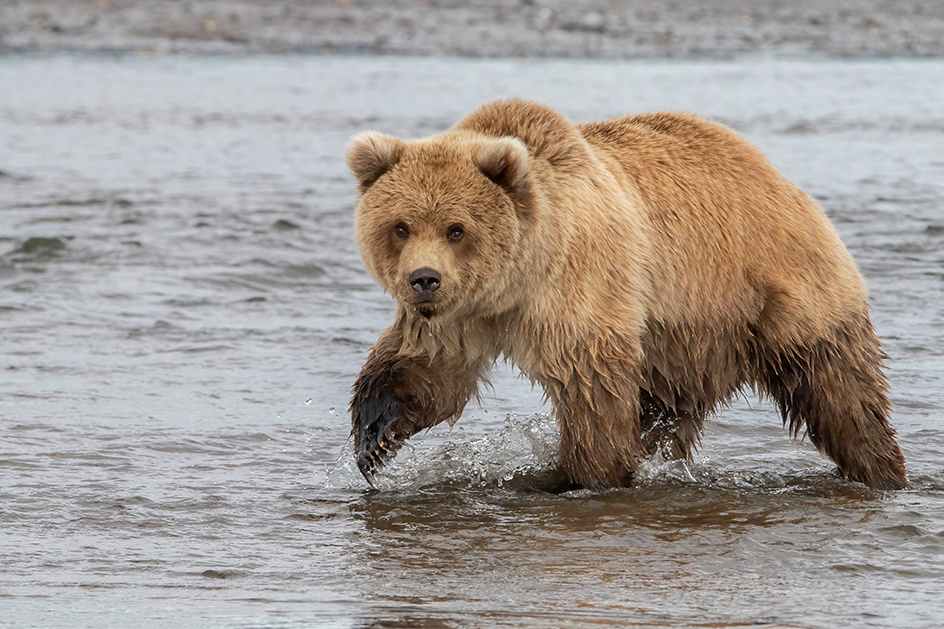
One very photogenic cub.
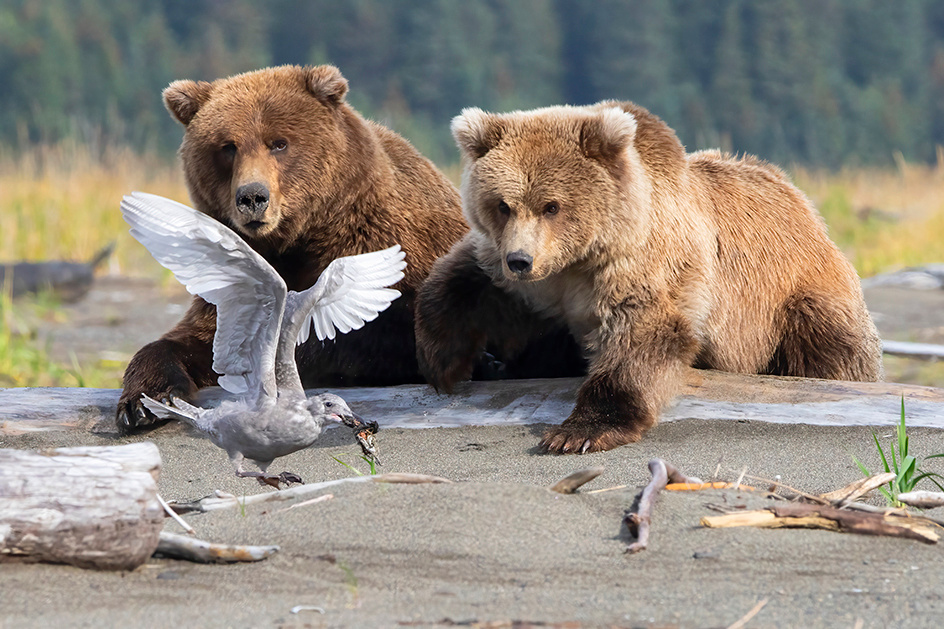
This gull got a little to close to these bears with a food morsel.
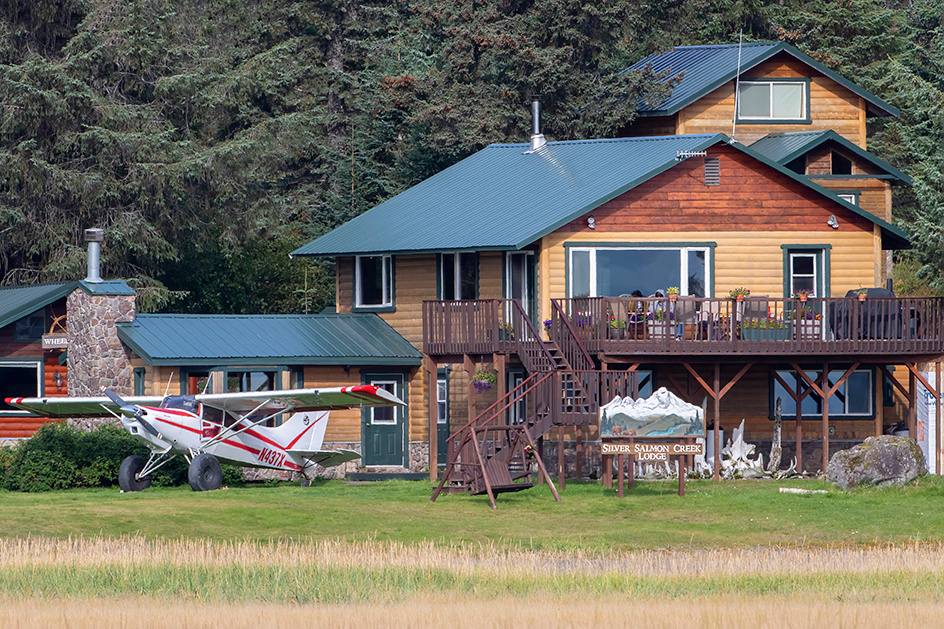 Silver Salmon Creek Lodge can accommodate up to 28 visitors at a time. Several expert lead photo tour groups (6 to 8 individuals) went through the lodge while we were there. It is unclear what is gained by joining a photo group tour as the lodge guides are well versed in photographers wants and needs. In my opinion, little benefit would be provided to experienced photographers by an expert lead tour group at this location. The plane parked out front is owned by Oliver and is modified to allow very short take off distances (200-300 feet).
Silver Salmon Creek Lodge can accommodate up to 28 visitors at a time. Several expert lead photo tour groups (6 to 8 individuals) went through the lodge while we were there. It is unclear what is gained by joining a photo group tour as the lodge guides are well versed in photographers wants and needs. In my opinion, little benefit would be provided to experienced photographers by an expert lead tour group at this location. The plane parked out front is owned by Oliver and is modified to allow very short take off distances (200-300 feet).
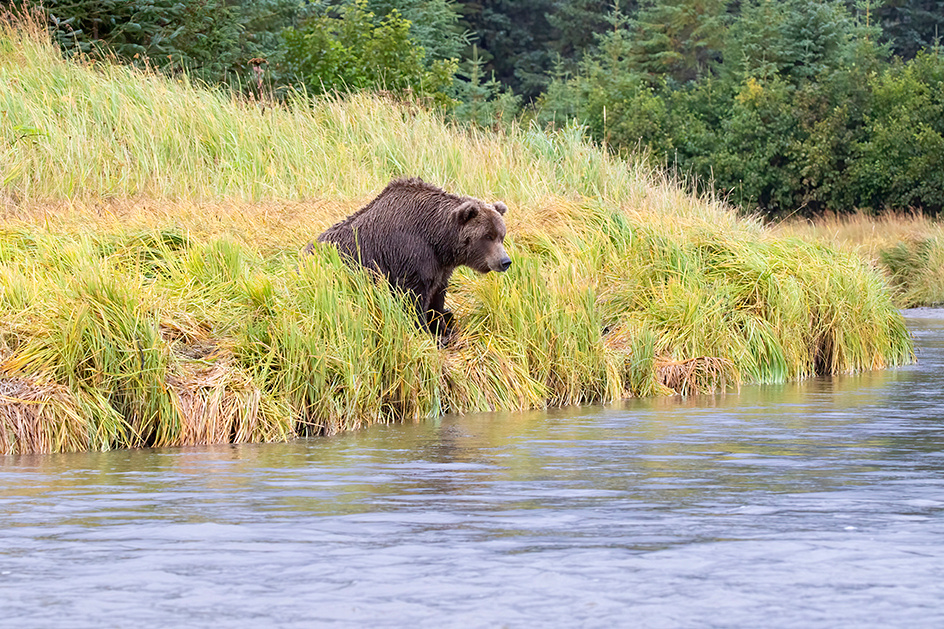
Fishing in the rain.
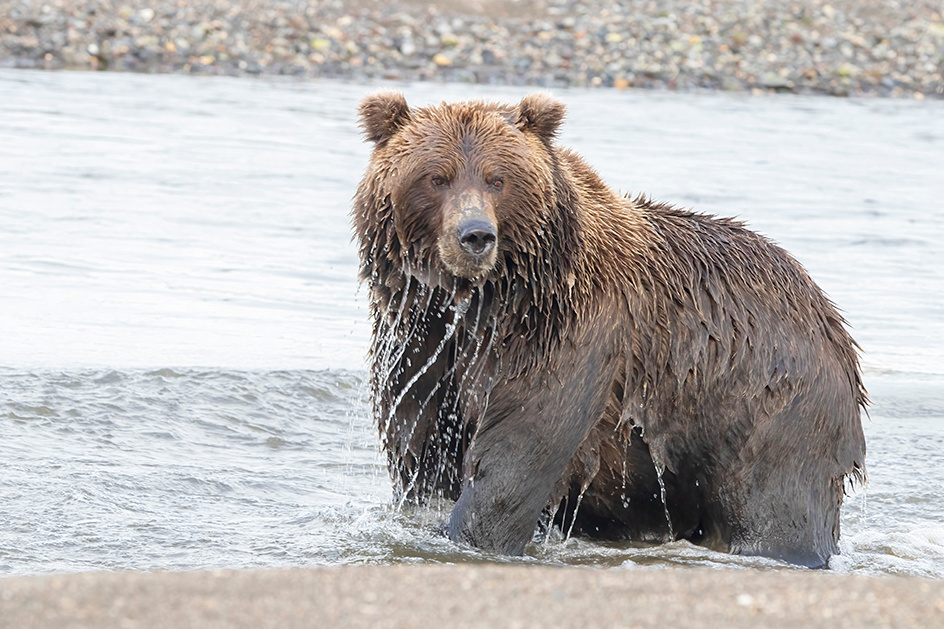 Some bears used a snorkeling fishing technique where they submerge their head and scan for fish visually underwater.
Some bears used a snorkeling fishing technique where they submerge their head and scan for fish visually underwater.
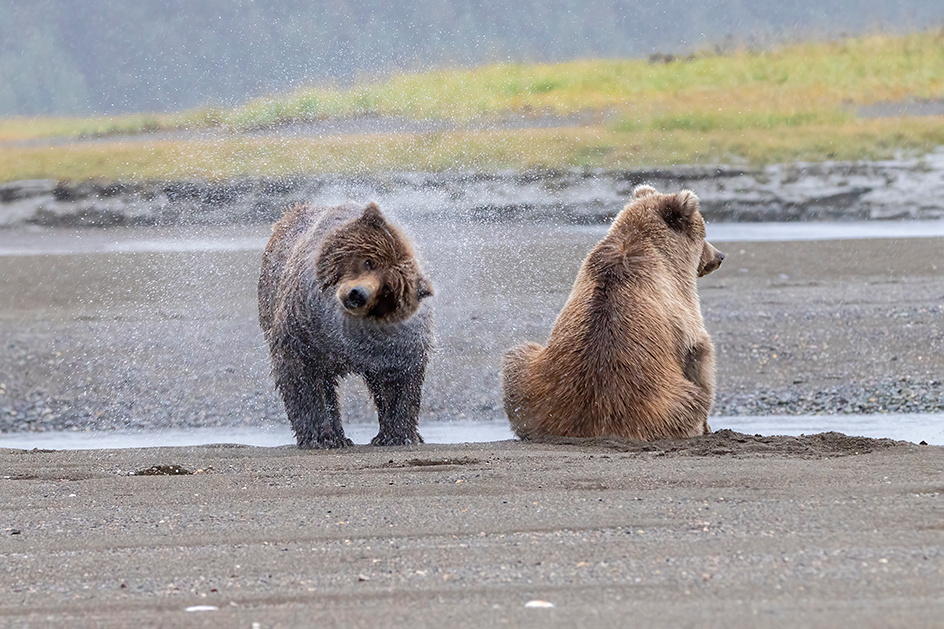 Spin dry.
Spin dry.
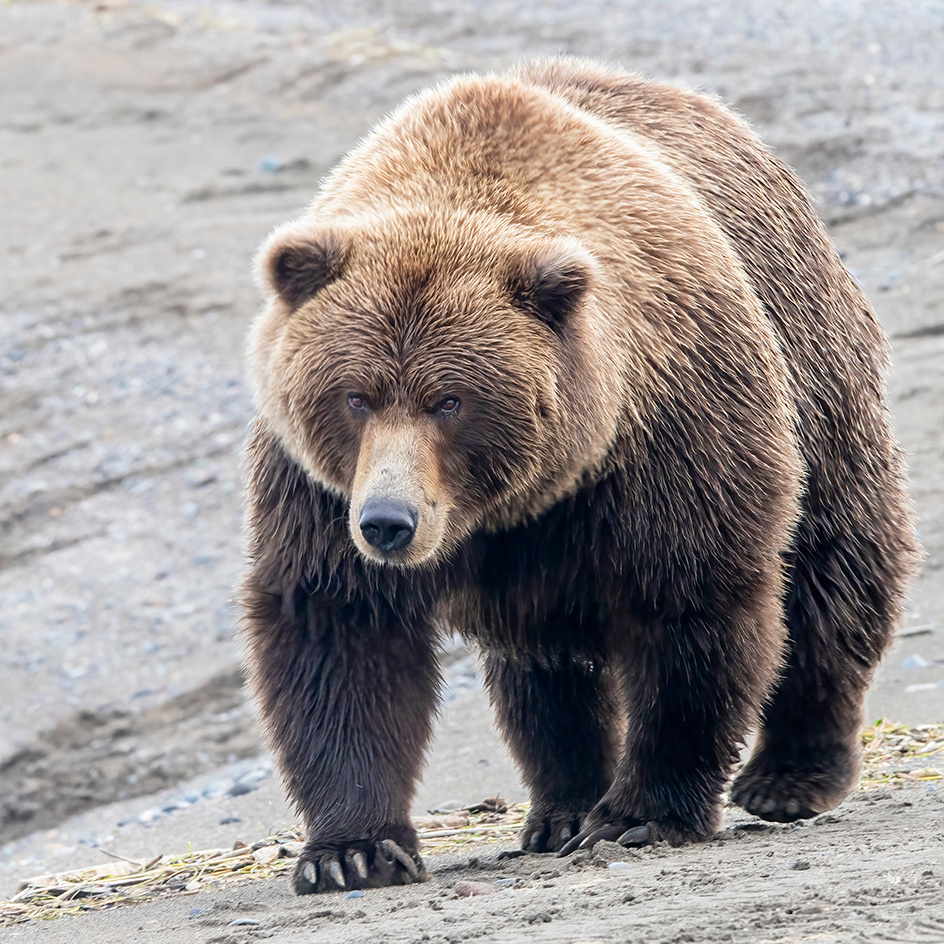
Frame filling shot of a large female.
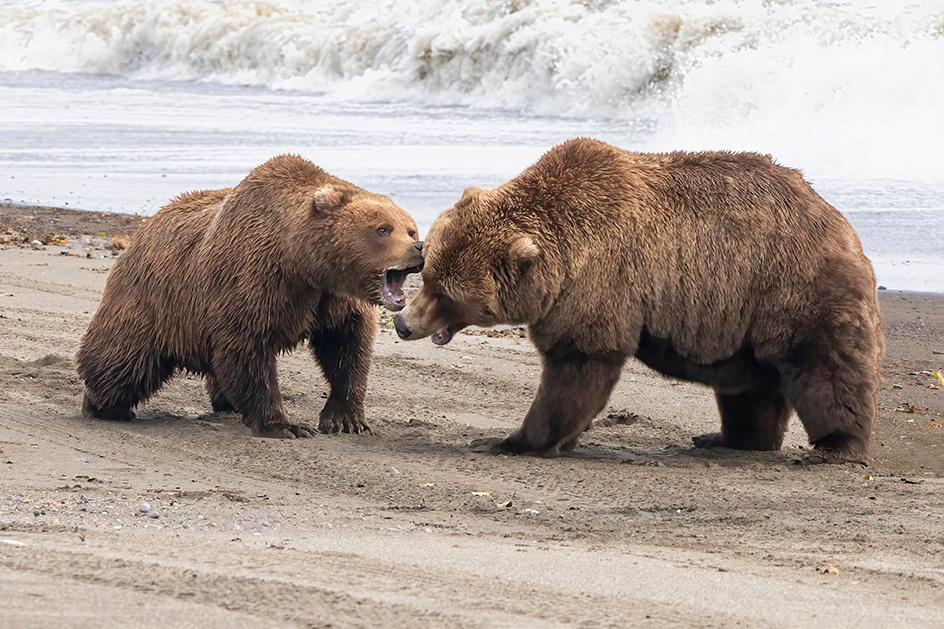 The bears generally spaced themselves out in the environment. Interactions between bears were uncommon at this time of year. In this case, four fish had washed up on the beach and three bears came together at the same time and space. Some mouth to mouth threat displays and then both bears moved away from each other. At one point the next day, a female with cub was grazing within 100 yards of a medium to large male (named Cubkiller). He had apparently earned his name in front of a large group of photographers. She would periodically stand on her hind legs to see him over the grass to insure he was not moving toward the cub. So much interesting behavior.
The bears generally spaced themselves out in the environment. Interactions between bears were uncommon at this time of year. In this case, four fish had washed up on the beach and three bears came together at the same time and space. Some mouth to mouth threat displays and then both bears moved away from each other. At one point the next day, a female with cub was grazing within 100 yards of a medium to large male (named Cubkiller). He had apparently earned his name in front of a large group of photographers. She would periodically stand on her hind legs to see him over the grass to insure he was not moving toward the cub. So much interesting behavior.
Bird life was relatively uncommon. Glaucous-winged gulls, bald eagles and common mergansers were observed every day. Small passerines were almost completely absent. I did get two life birds on the trip (spruce grouse and horned puffin).
 Glaucous-winged gull.
Glaucous-winged gull.
 Adult bald eagle at low tide.
Adult bald eagle at low tide.
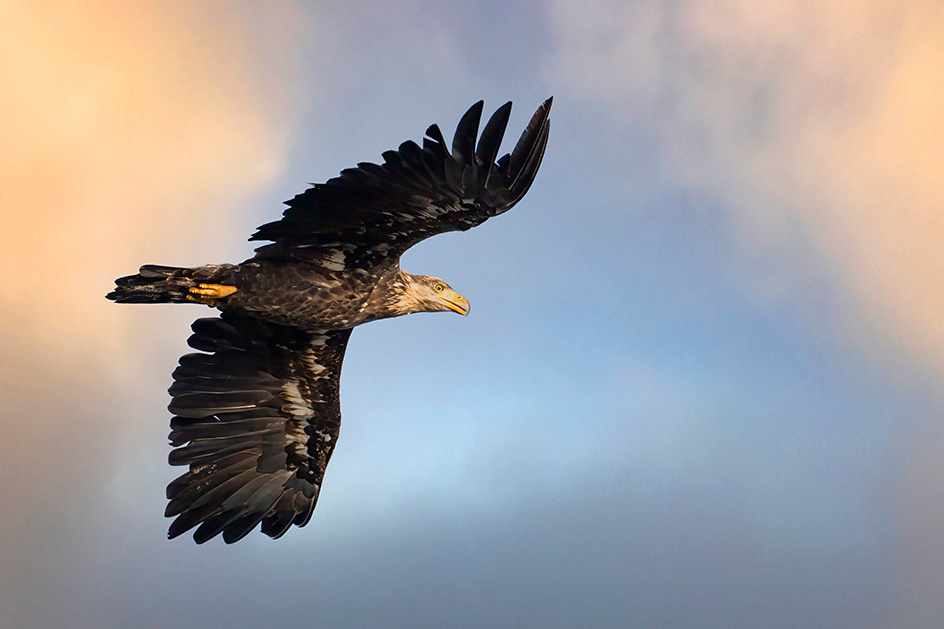 Immature bald eagle. Just acquiring its adult plumage with the white head and tail.
Immature bald eagle. Just acquiring its adult plumage with the white head and tail.
Silver Salmon Creek Lodge is located in an area of incredible vast landscapes.
 Mount Iliamna. Note the volcanic steam plume near the summit on the right side.
Mount Iliamna. Note the volcanic steam plume near the summit on the right side.
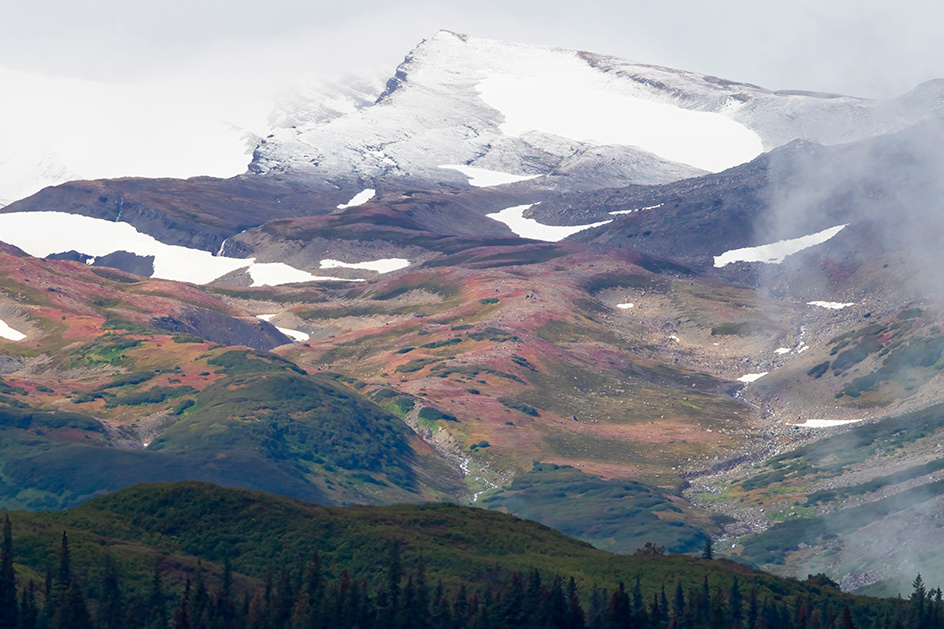 View from the lodge.
View from the lodge.
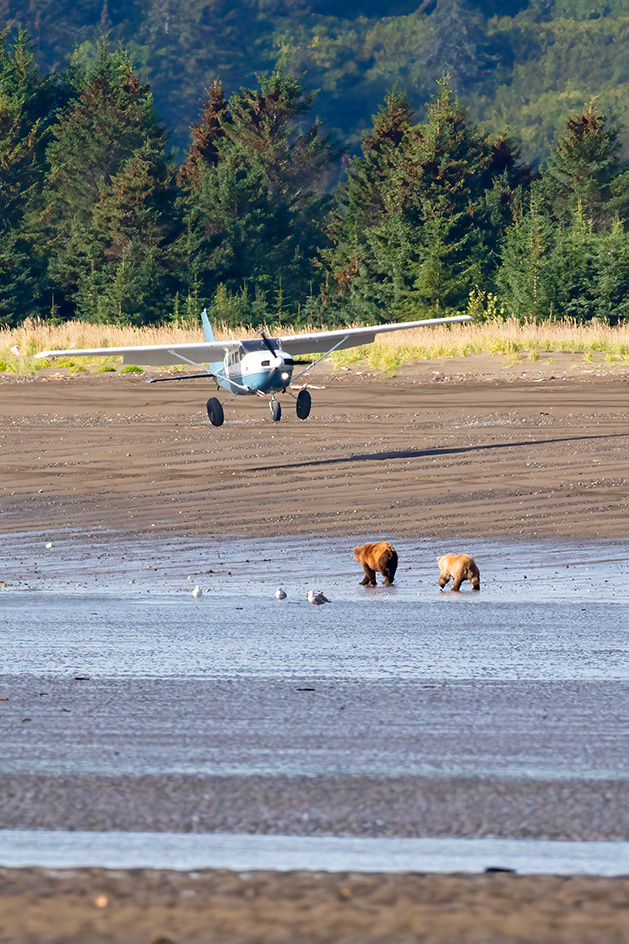
Logs washed up on the beach during storms and were a hazard to planes landing and taking off. Bears themselves could also pose a hazard to landings and take-offs. This pilot had to pull up and hop over these bears in order to land.
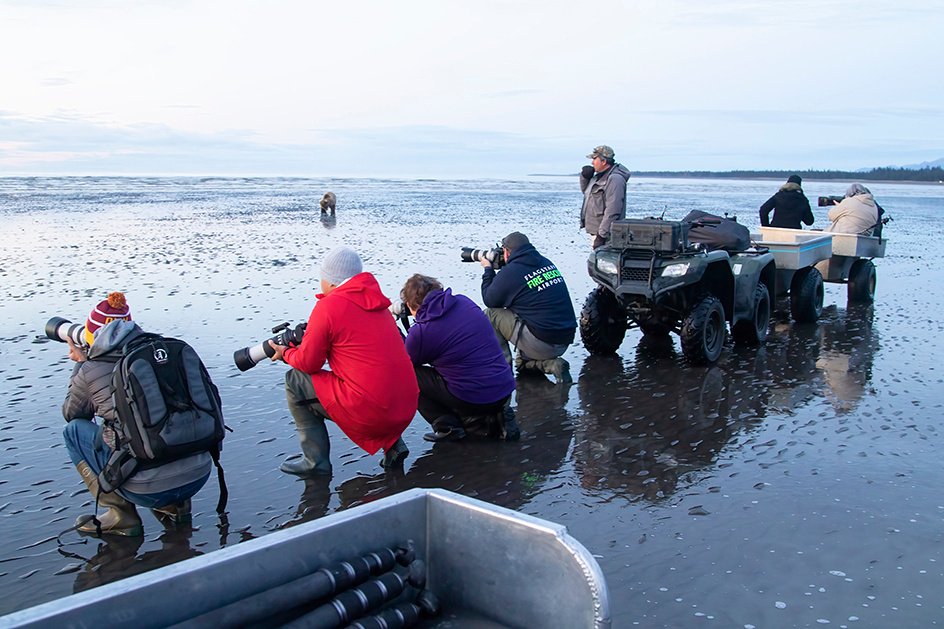 Photographers lined up for the sunrise shoot.
Photographers lined up for the sunrise shoot.
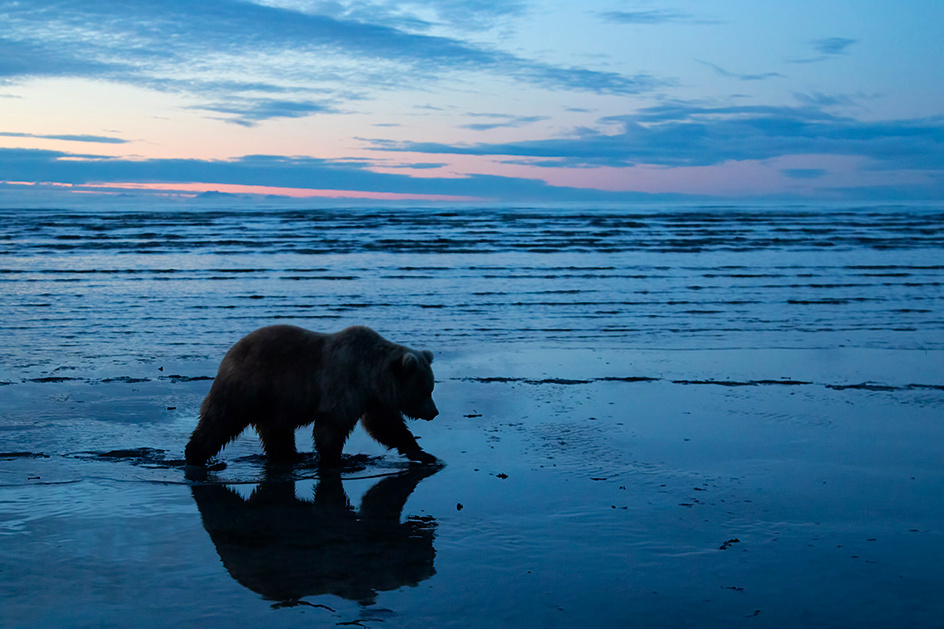 Sunrise silhouette.
Sunrise silhouette.
 Apparently not ONLY in the woods!
Apparently not ONLY in the woods!
Rob, our guide, work very hard to get us the best images possible under existing conditions. Rob always seemed to be able to predict what the bears might do next and position us well for the shot. Even though occasionally bears were at less than minimum focus distance, I never felt unsafe. This proximity did take some getting used to in the beginning. All the staff at the lodge were friendly and accommodating.
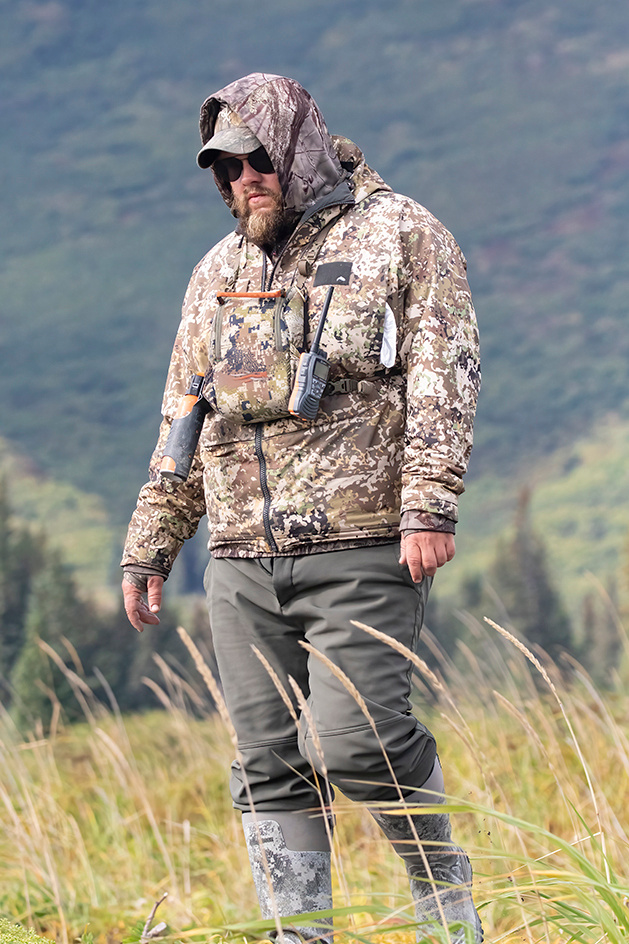
Rob.
I highly recommend Silver Salmon Creek Lodge as a coastal brown bear photo venue. Our flight out was delayed a day due to gusty winds, so planning a transport delay into your schedule might be prudent. Good raingear for yourself and your equipments are necessary. Lots of layers and waterproof gloves should be included when packing. Most photographers did not use a tripod. I did for most of my shots. I normally try not to exceed ISO 800 on my Canon 7D2. On this trip I was frequently at 1600 ISO and even 3200 ISO a few times. I used an aftermarket noise reduction program to reduce image noise. I ended up with over 9500 images.
The End.
The Sacramento National Wildlife Refuge is located just south of the community of Willows, California. It is a truly amazing experience in winter as vast numbers of waterfowl congregate on the flooded ponds. Over 118,000 snow and Ross's geese are present during December of most years. The photos exhibited in this blog were taken during the first week in December 2020. Snow geese were abundant, but duck numbers were far below what I normally observe.
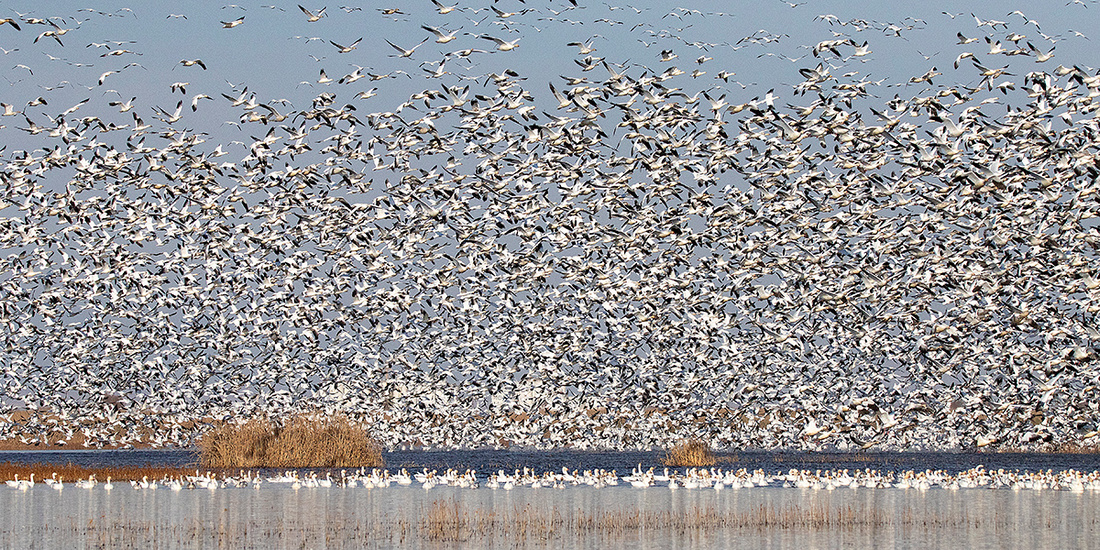 The geese forage on harvested rice fields in the region during the night and return to the refuge during the day. Snow geese are very social birds and vast numbers can be observed in tight groups. The birds frequently occur near the eight mile-long auto tour route which allows close up photography opportunities.
The geese forage on harvested rice fields in the region during the night and return to the refuge during the day. Snow geese are very social birds and vast numbers can be observed in tight groups. The birds frequently occur near the eight mile-long auto tour route which allows close up photography opportunities.
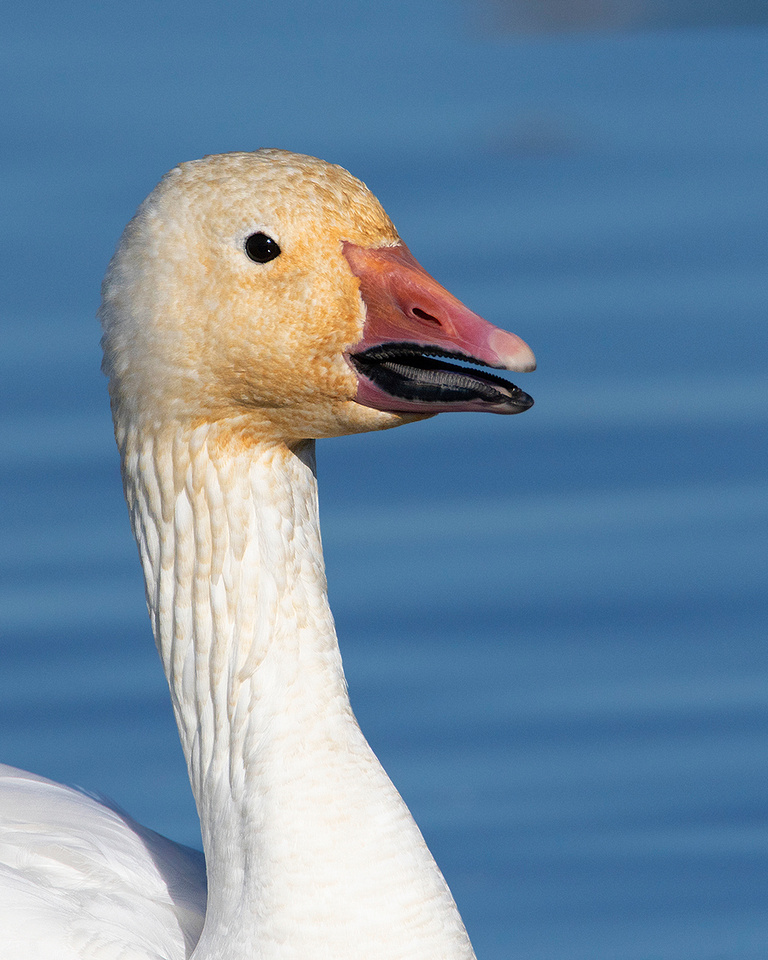
Occasionally a dark morph, or blue goose, can be spotted among the thousands of white morph geese.
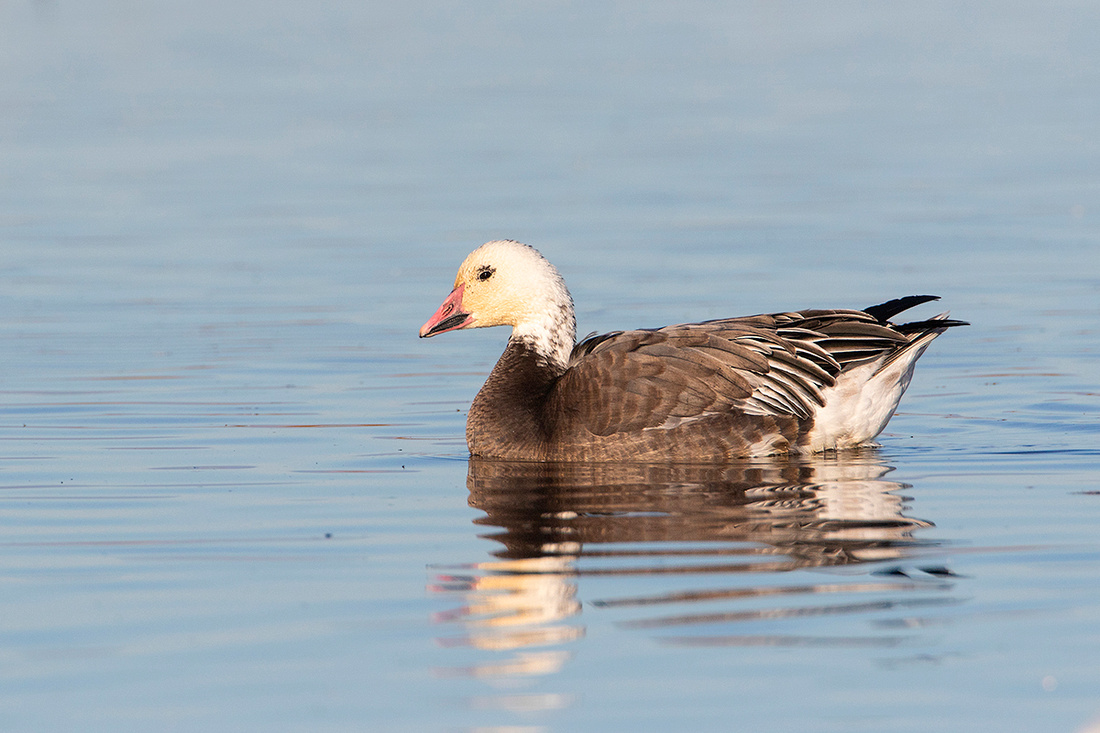
Ross's geese (below) also occur in large numbers. These geese are smaller than snow geese and have a different bill configuration than snow geese.
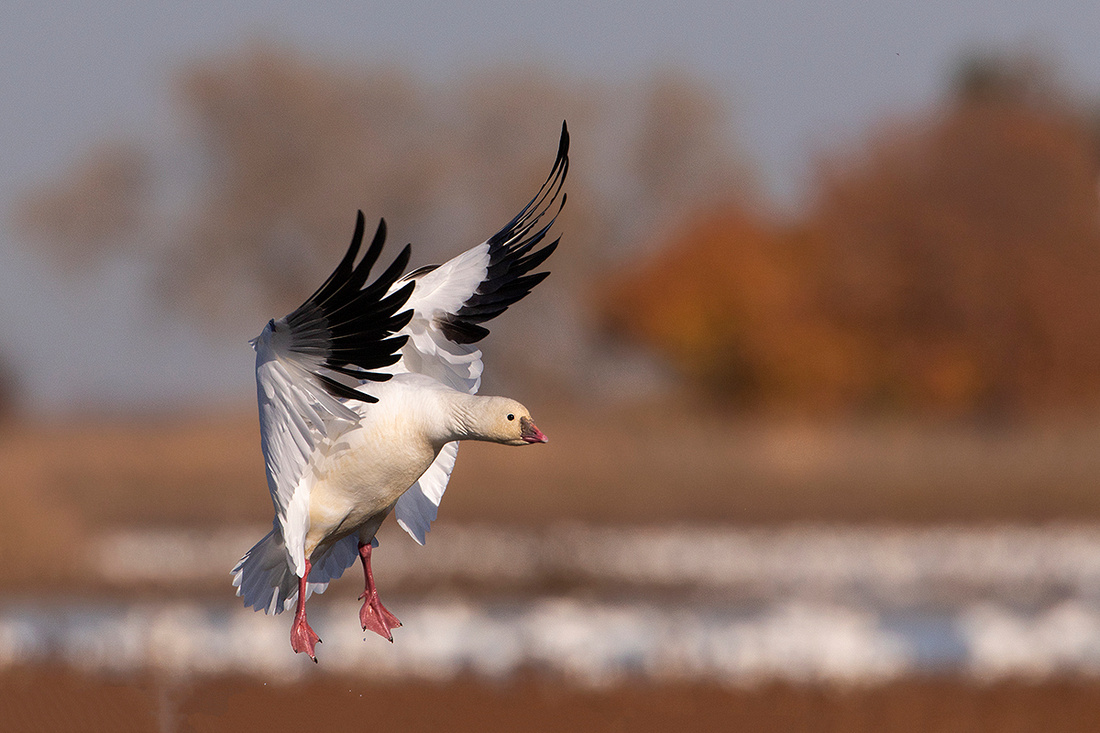
My experience has been that the best photo opportunities occur on days with either no wind or a south wind. This allows the birds to land into the light. Excellent flight photography can occur under these conditions. These conditions occurred on December 4th, 2020. Some snow goose flight images captured on December 4th are displayed below.
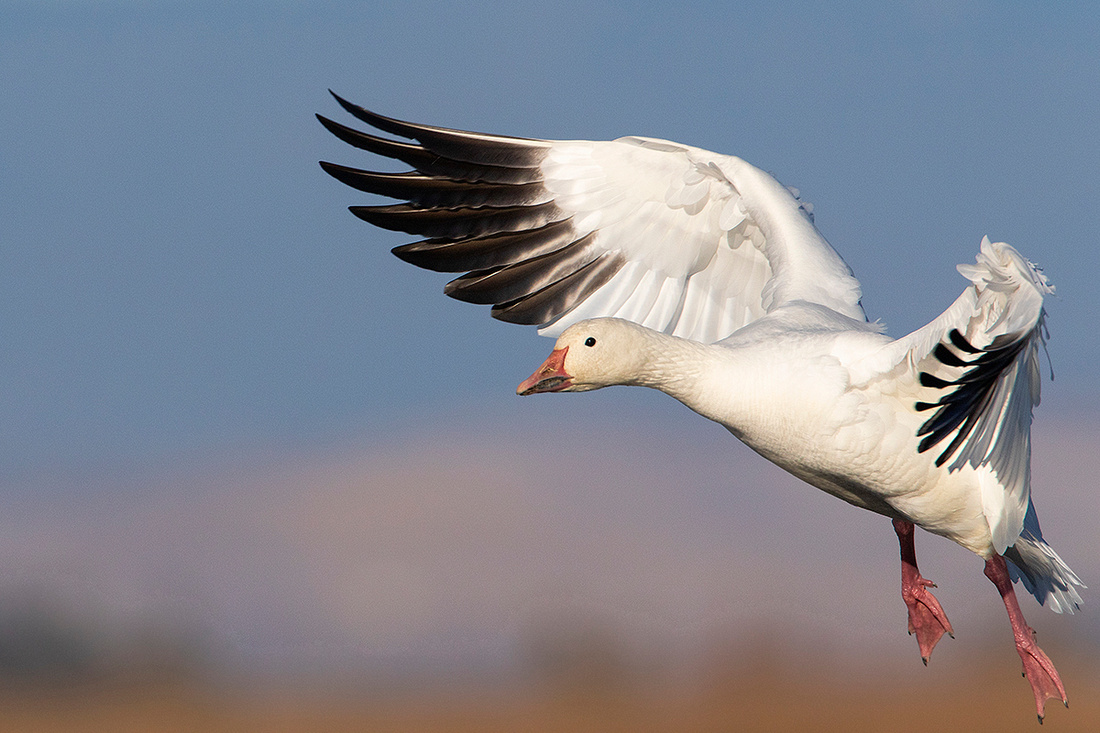
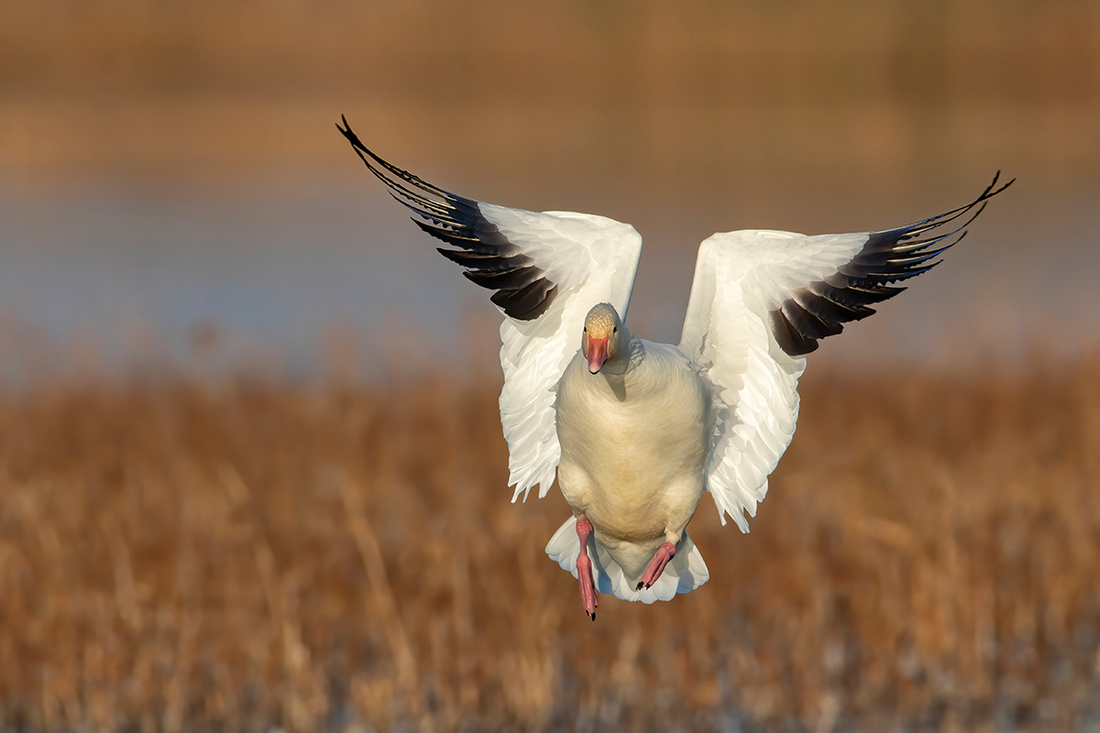
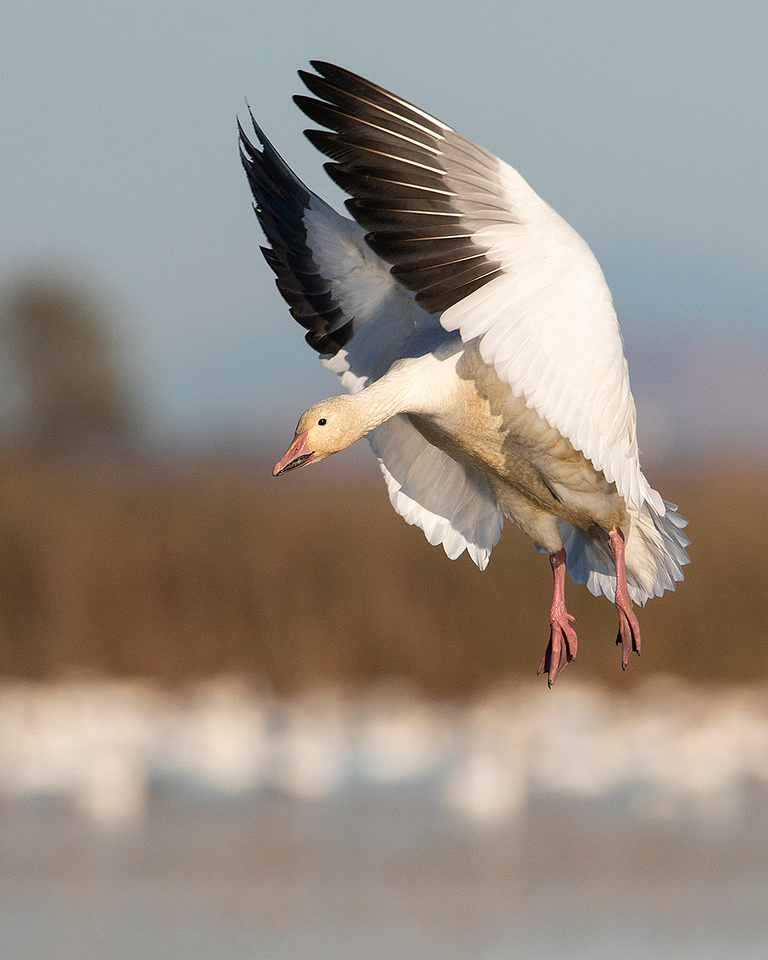
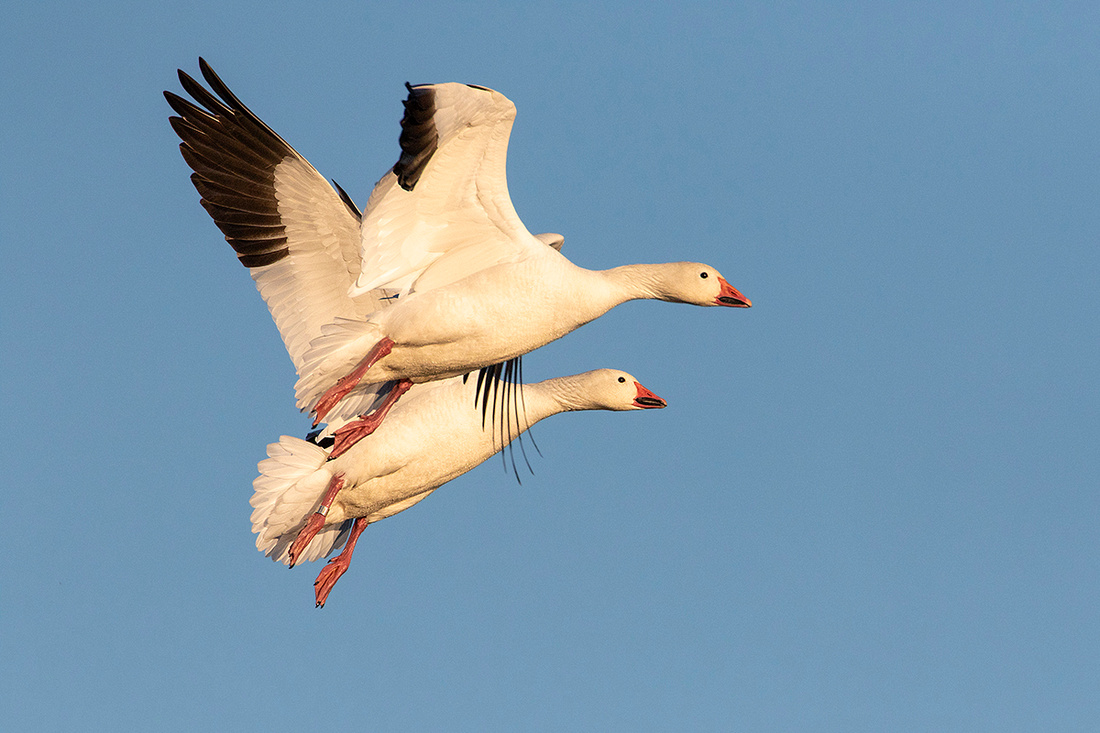
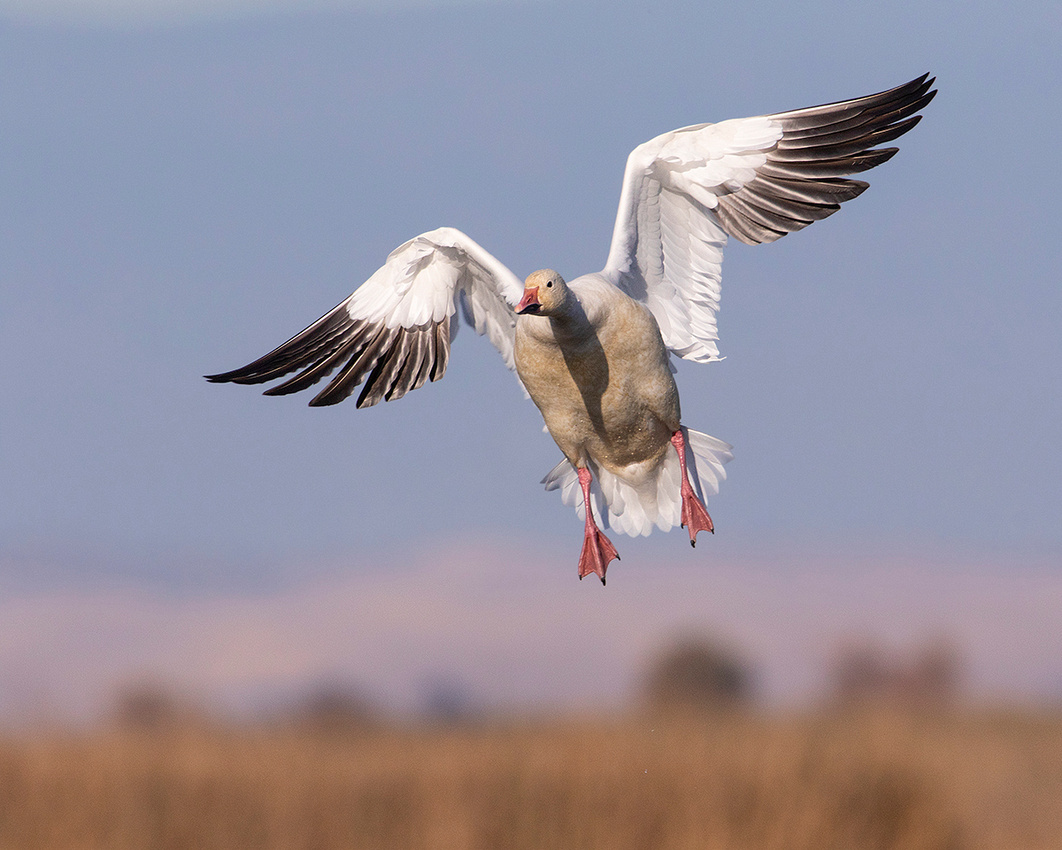

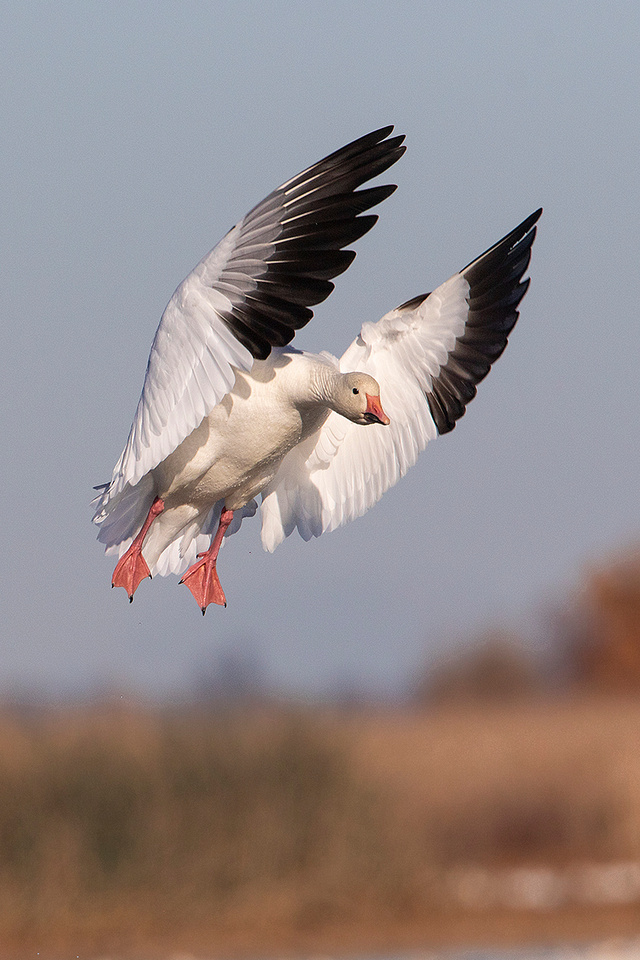
Landing within the tightly packed flock can be tricky.

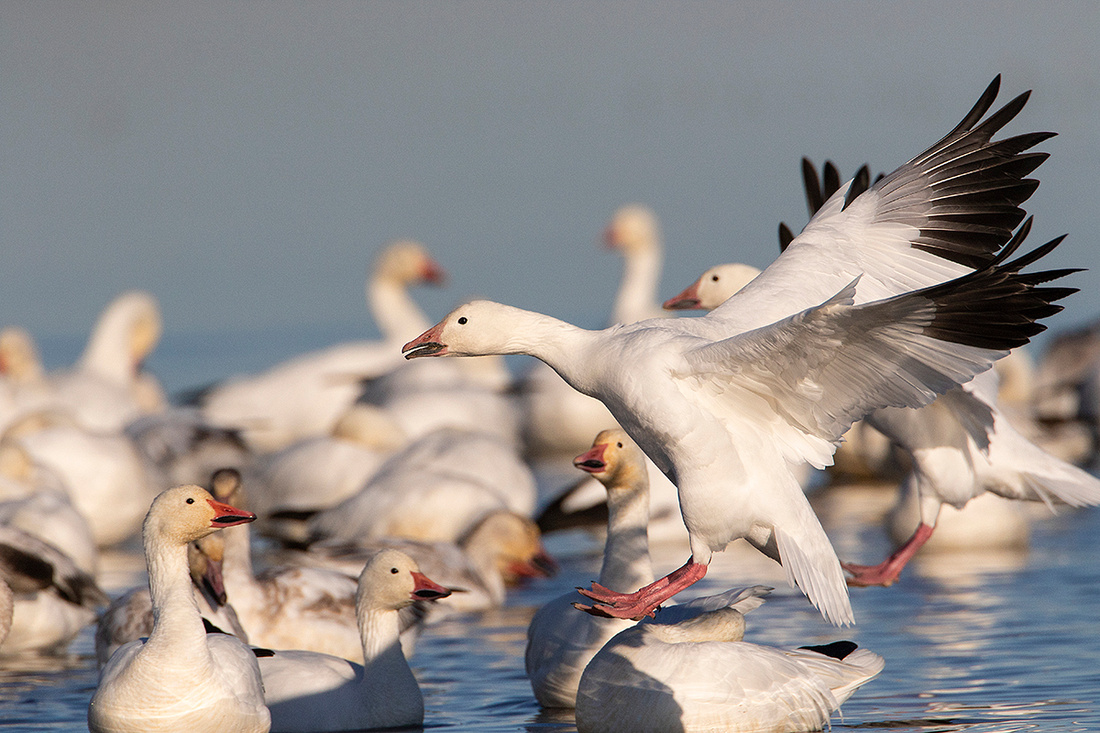
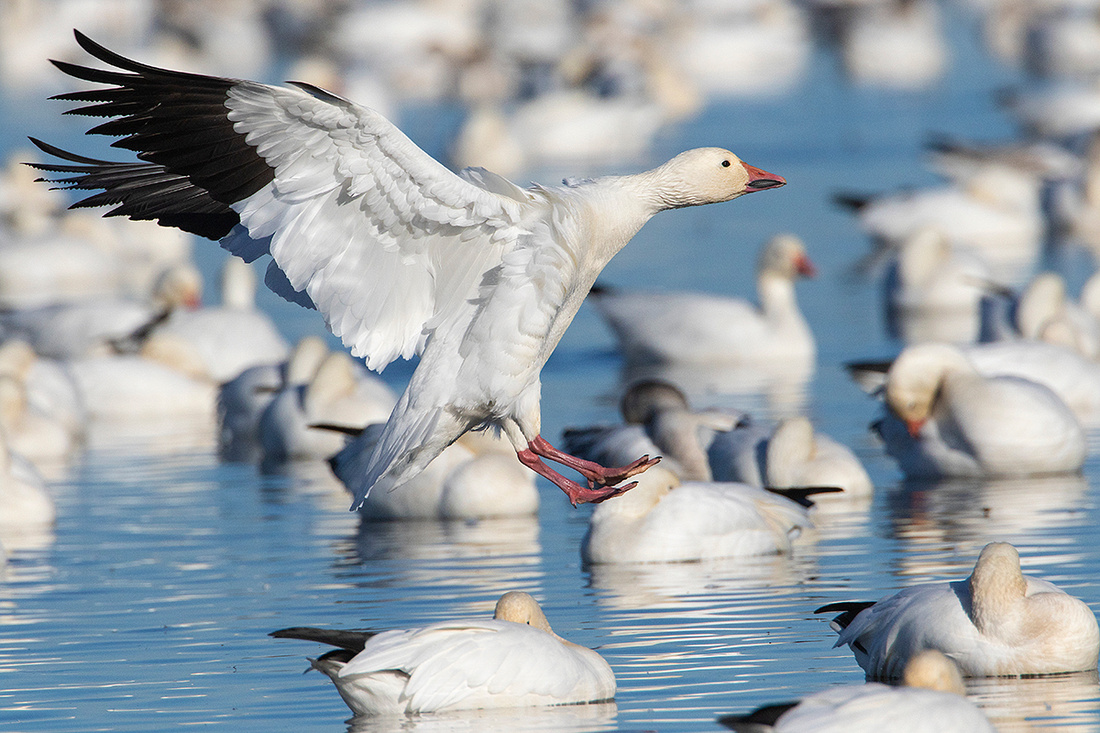 Capture of the landing splash makes for more dynamic images, but the timing can be tricky.
Capture of the landing splash makes for more dynamic images, but the timing can be tricky.
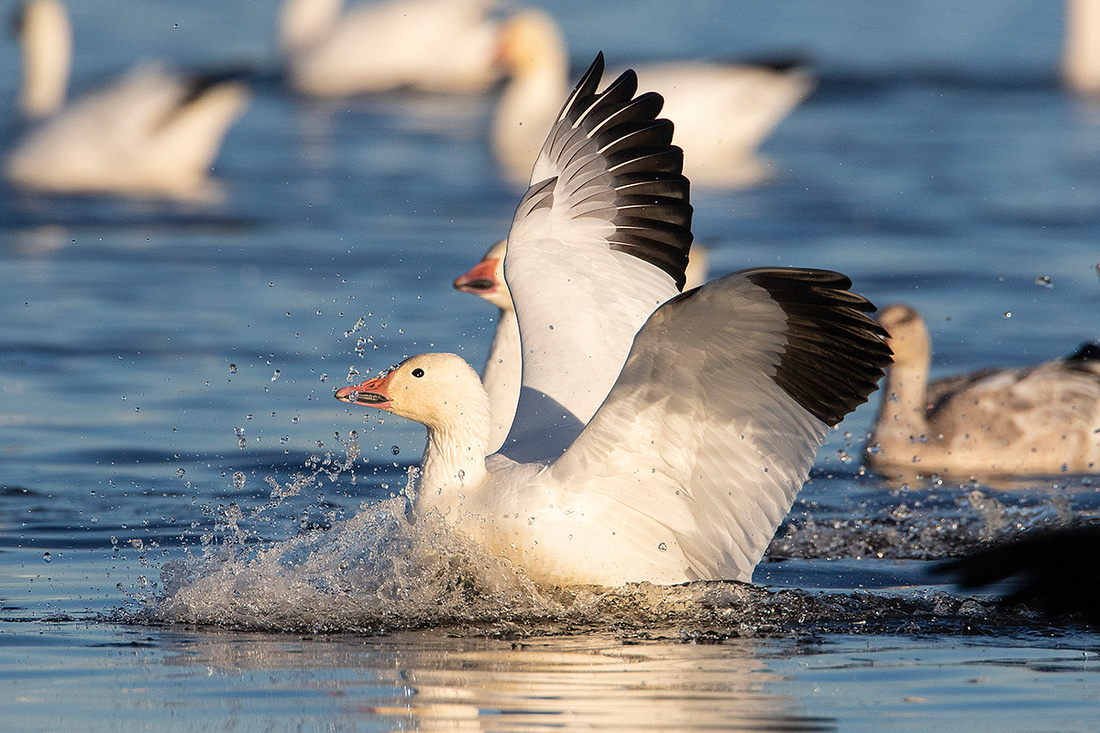
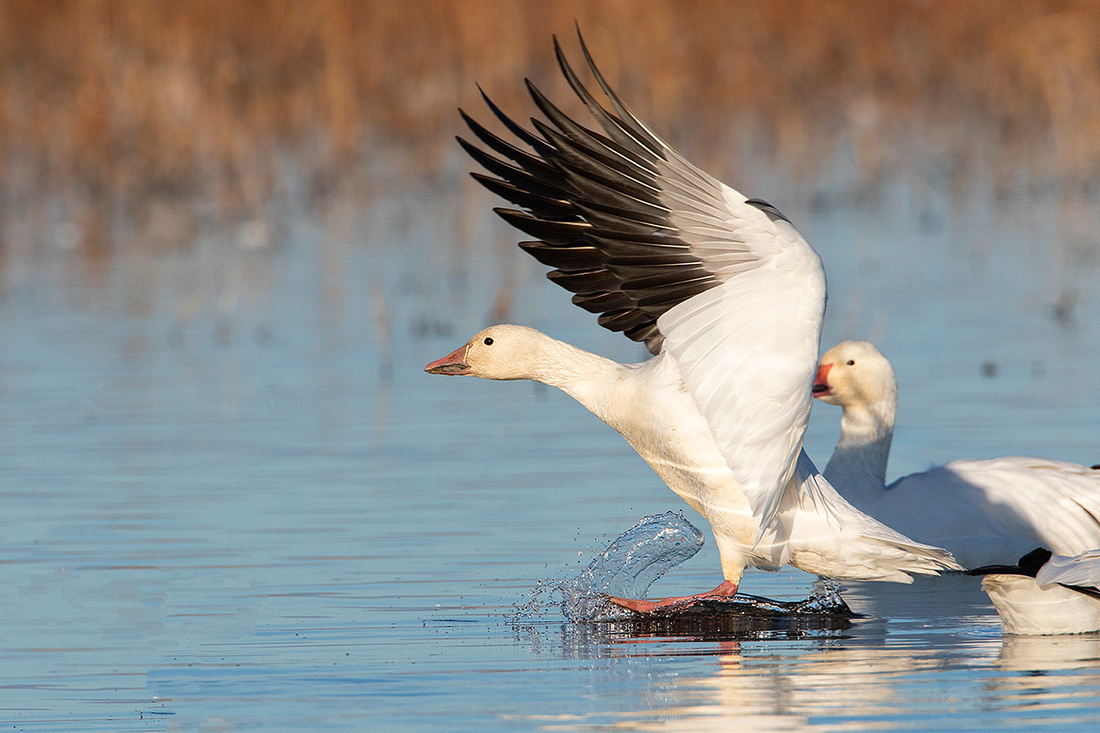

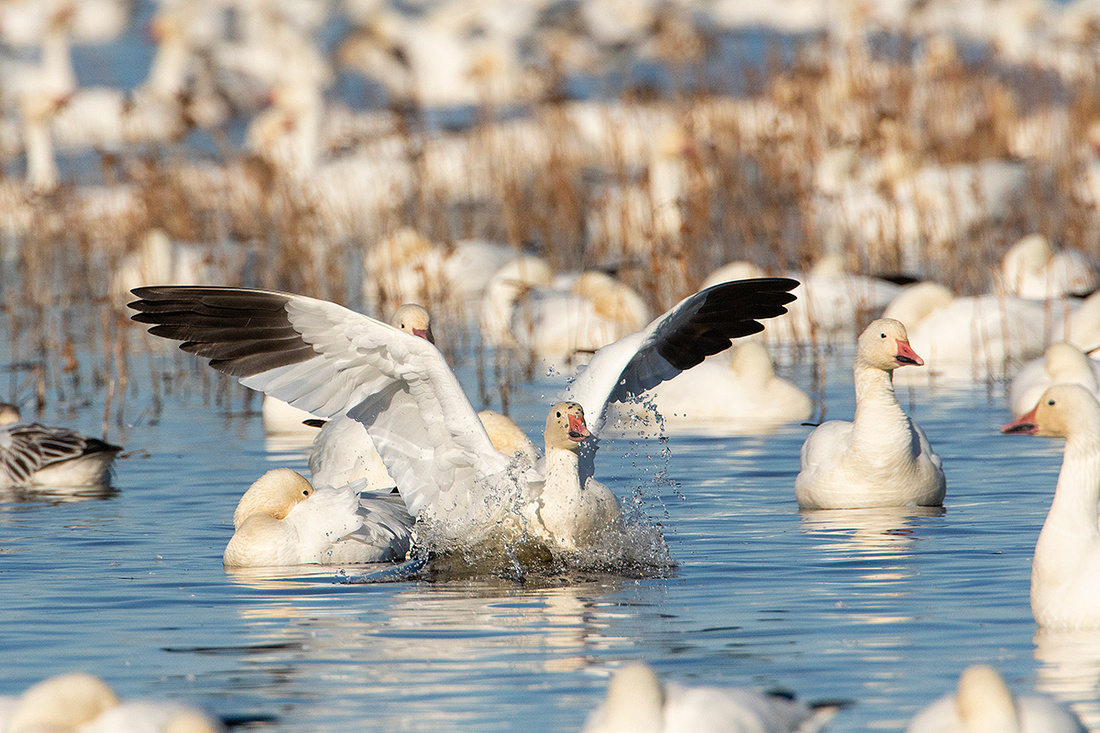
Early morning light can give the snow geese a rosy appearance.
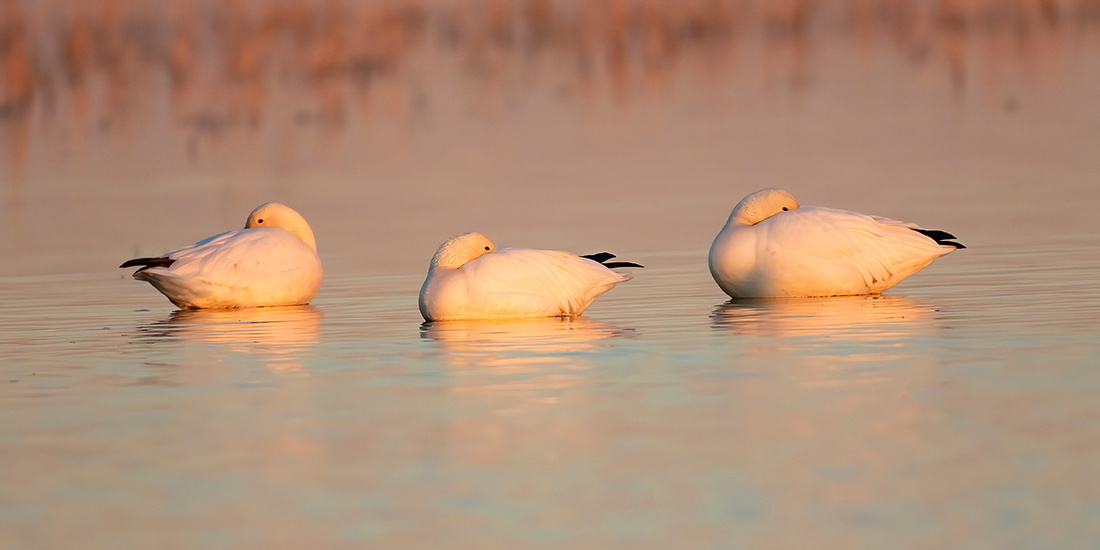
Snow geese spend a good deal of time preening. This preening is frequently followed by a dunking bath and a major wing flap.
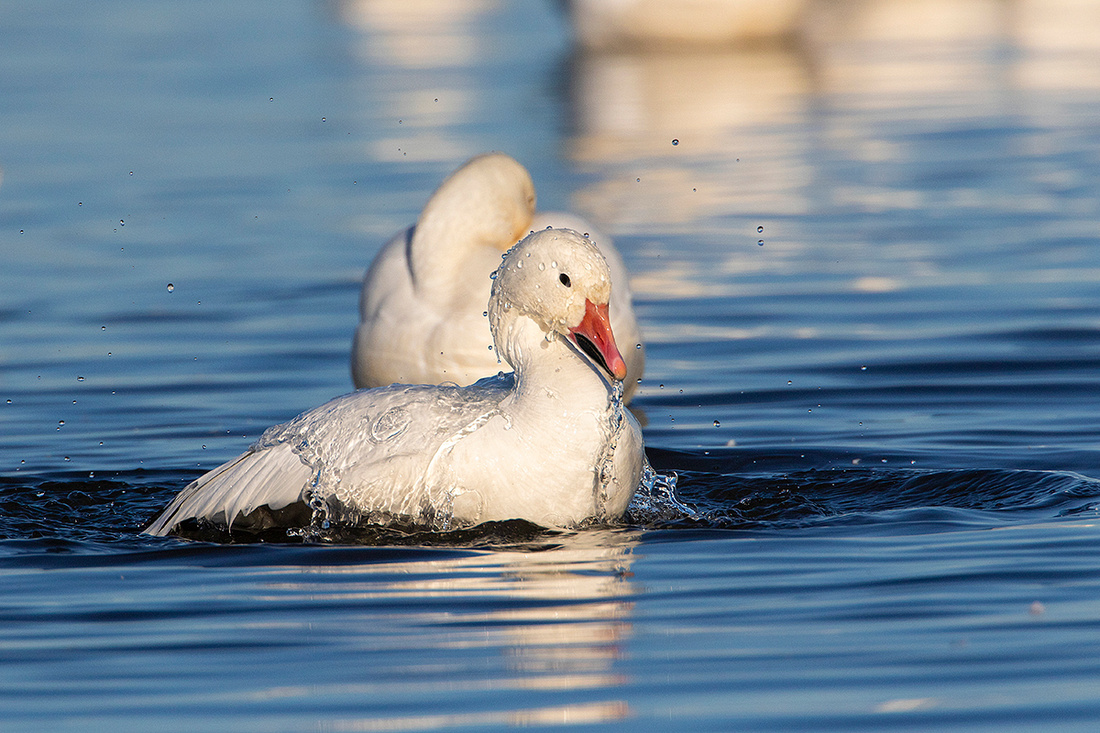
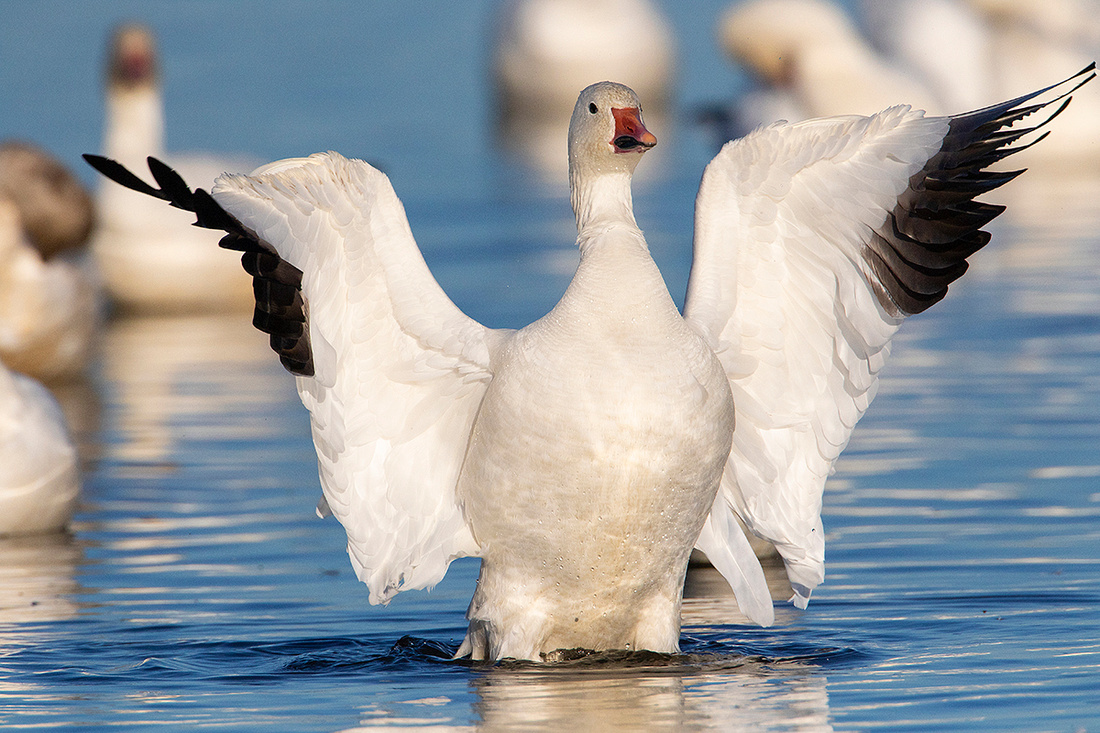 Throughout the day bald eagles will make a pass over the large flocks of geese looking for weak or injured birds. This results in thousands of geese taking wing as one. These mass take offs are visually impressive and quite noisy.
Throughout the day bald eagles will make a pass over the large flocks of geese looking for weak or injured birds. This results in thousands of geese taking wing as one. These mass take offs are visually impressive and quite noisy.
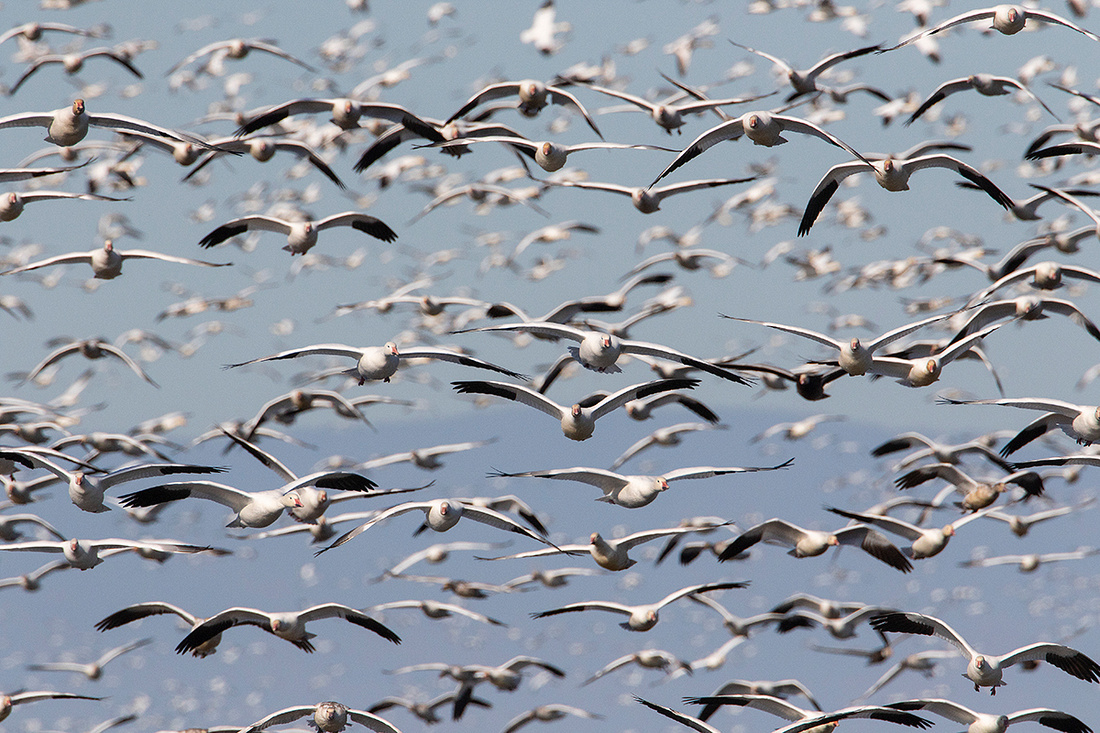
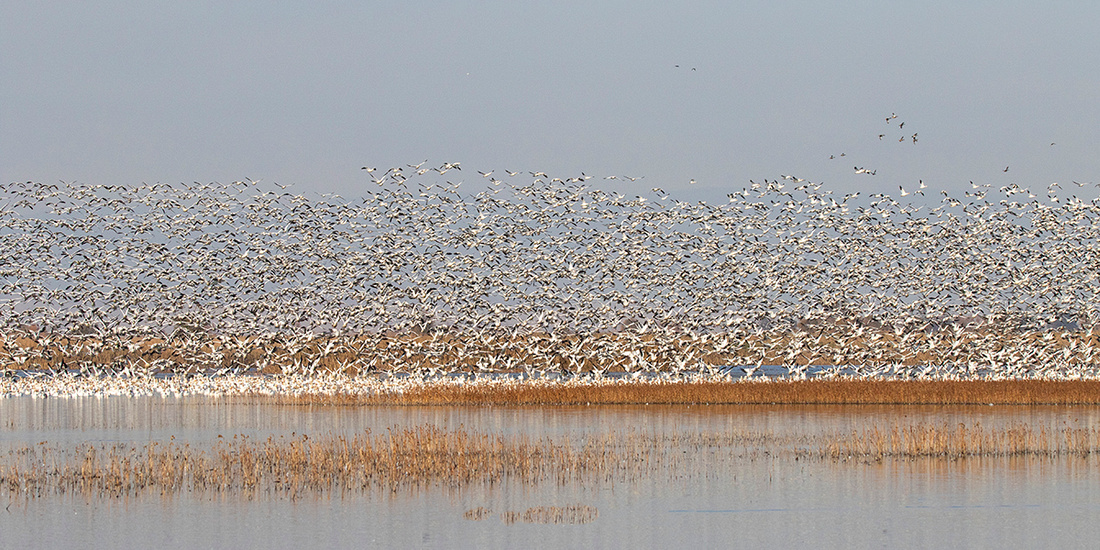 Greater white-fronted geese also occur in large numbers.
Greater white-fronted geese also occur in large numbers.

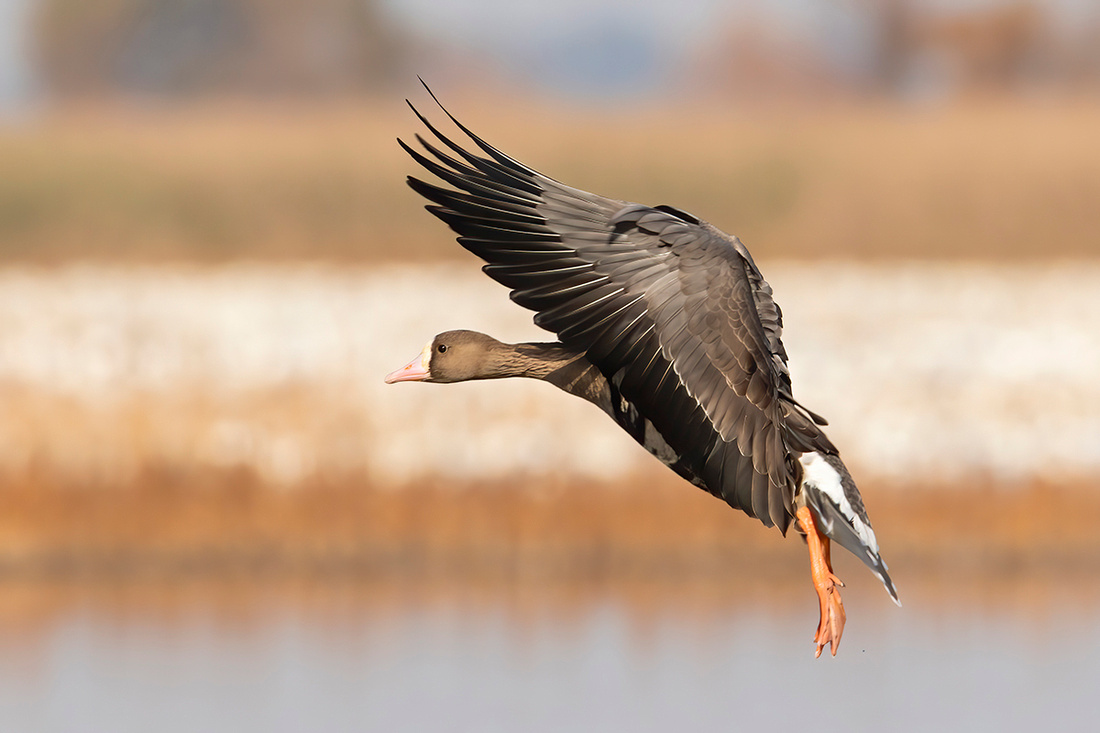
Turkey vulture in flight.
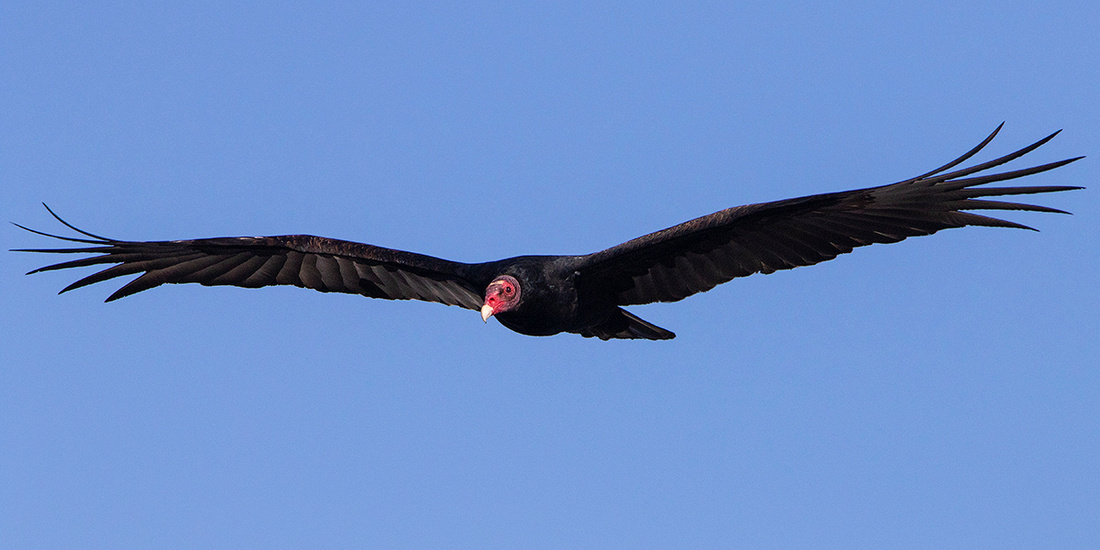
Northern pintail is the most common duck on the refuge during winter. Over 30,000 pintails can be present during December.
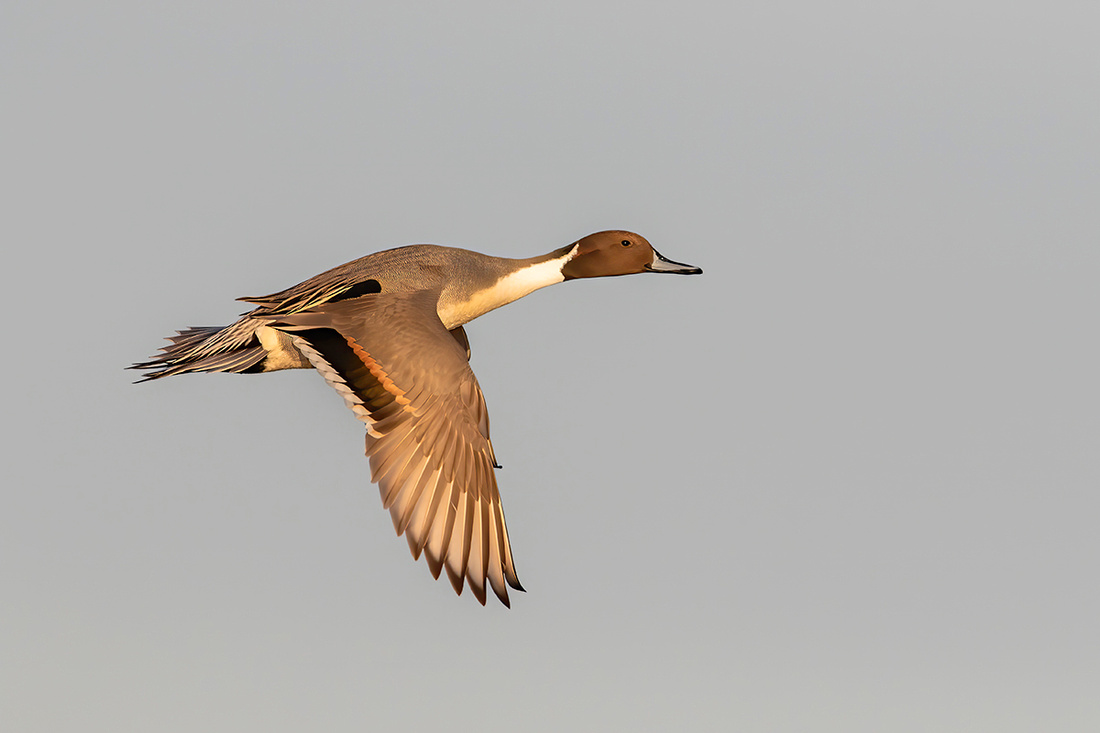


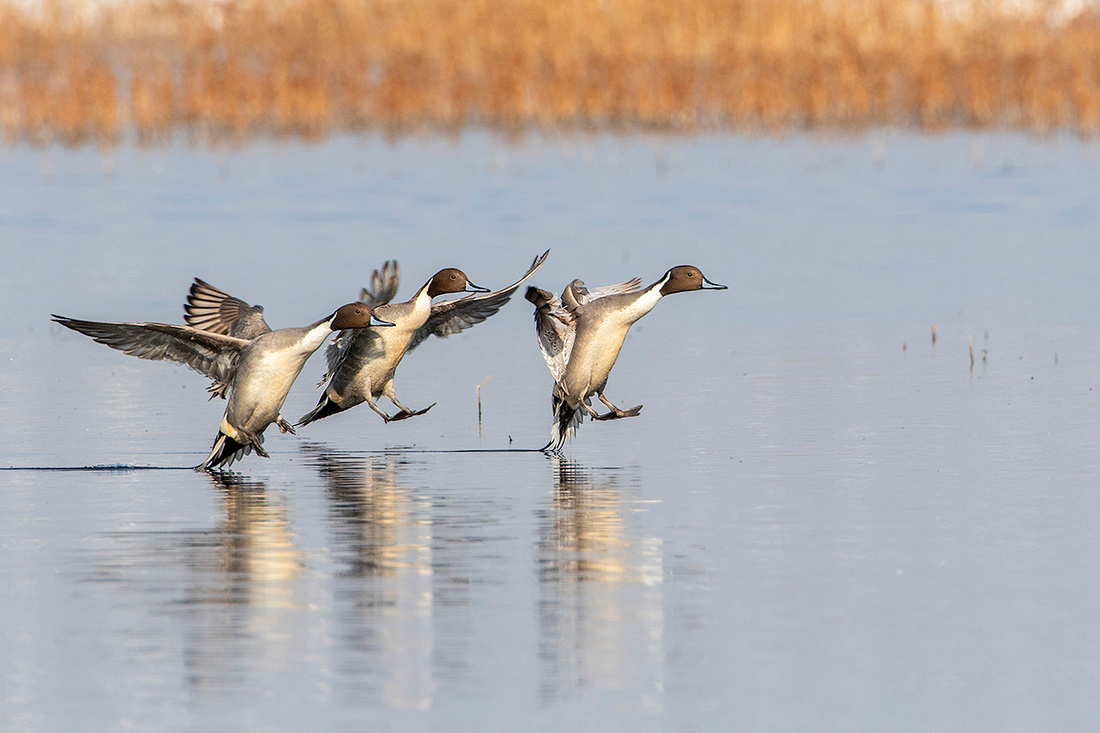
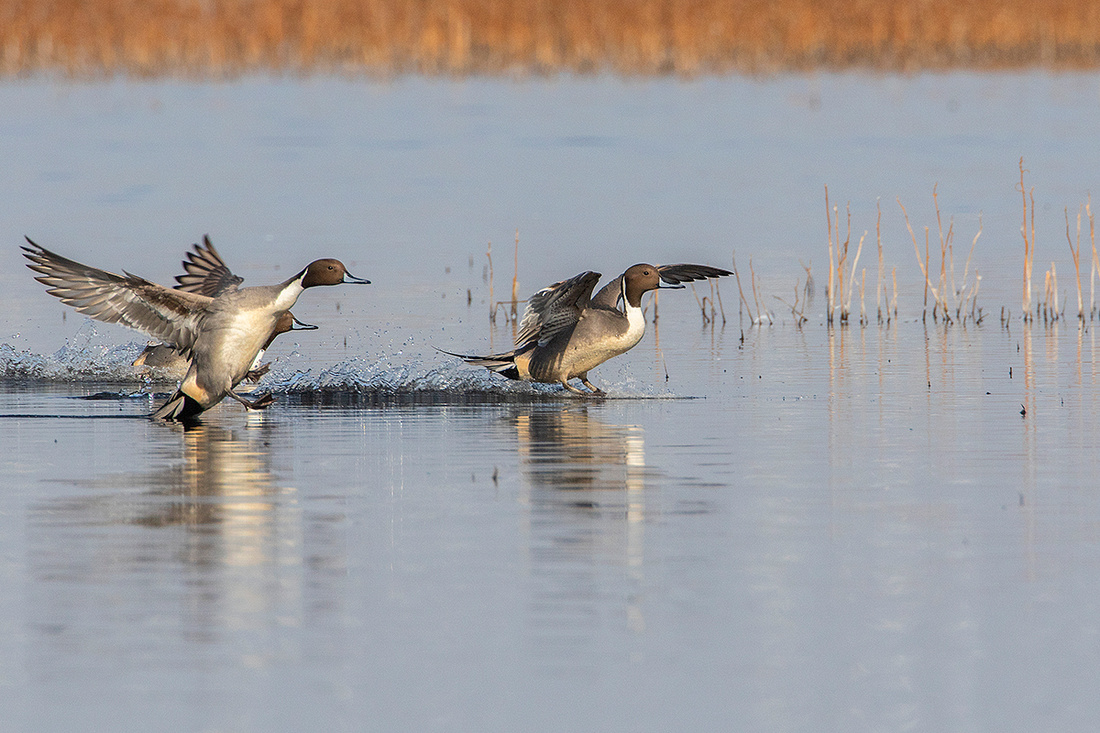 Large numbers of American coot can be present and are easily observed from the auto tour route.
Large numbers of American coot can be present and are easily observed from the auto tour route.
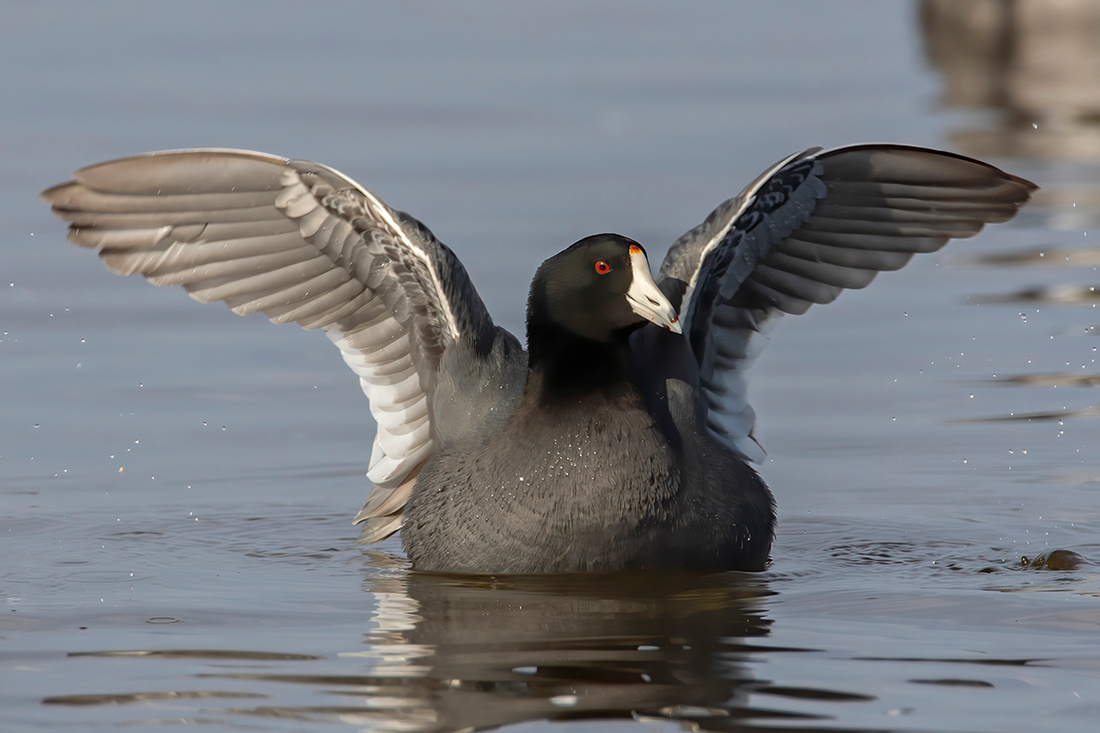
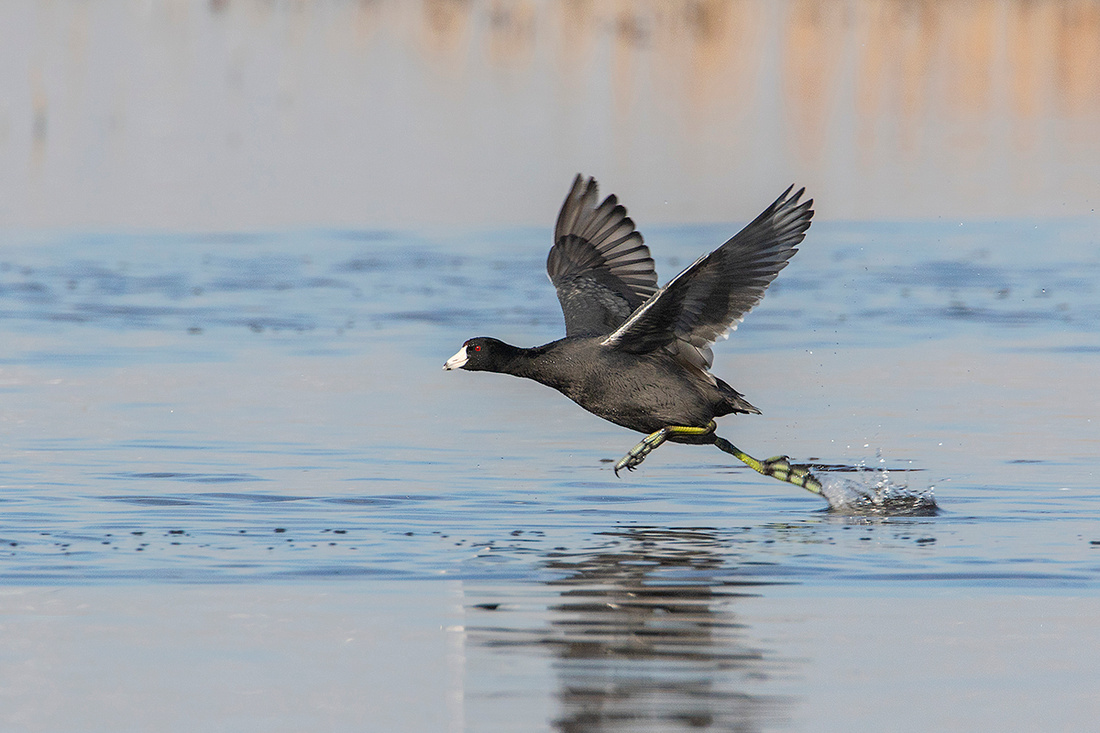
Relatively few ducks were observed or photographed during this most recent visit to the refuge. However, the refuge can be an excellent location to observe and photograph gadwall, mallard, northern shoveler, green-winged teal, ring-necked duck and cinnamon teal. October through March is a great time to visit the refuge (which is just minutes off of I-5) and view the incredible abundance of waterfowl. Thanks for visiting my blog. Consider a winter visit to the refuge.
I have always dreamed of experiencing an African safari. For a biologist and a photographer, an African safari is one of those bucket list life experiences. My wife, Becky, and I had been investigating various options including different African locations, seasons, and tour companies for several years. We decided on the "Ultimate Africa Tour" offered by Overseas Adventure Travel (OAT) which includes camps in Botswana, Zambia, and Zimbabwe. We chose to go in September as it is near the end of the dry season. Benefits of this time period are fewer mosquitos and tsetse flies. Wildlife is more concentrated and dependent on the limited water supply. The deciduous trees and shrubs are leafless which greatly improves the visibility of wildlife. The grasses are grazed or trampled which also makes wildlife more visible to the photographer. This time of year generally has low humidity and few cloudy days, but it can be quite hot. Temperatures above 100 degrees F can, and did, occur. However, these temperatures are comparable to what we experience at home in Northern California during September.
We decided to add on one of the OAT pre-trip extensions to a private "game reserve" in South Africa near Kruger National Park. OAT arranged our air transportation from the U.S. on British Air. We had planned to fly from San Francisco to London (11.5 hour long flight,) have a 4 hour layover, and then catch another 11.5 hour flight to Johannesburg. However, during the course of our London layover we found out that our flight to Johannesburg was delayed about 30 hours. British Air offered us the option to wait for the delayed flight or to fly on South African Air which was scheduled to take off and land about the same time as our original British Air flight. We chose South African Air.
An OAT representative was to meet us at the Johannesburg Airport and arrange transportation to the O.R. Tambo Protea Hotel for an overnight stay. We were not met. Not a good start by OAT. We found transportation and arrived at the hotel early on the morning of September 10. The hotel staff were great and managed to get us in a room by 10AM. We had initially planned to take a bus tour of the city and the the nearby community of Soweto. Soweto is the home of Desmond Tutu and Nelson Mandela. Having little or no sleep on the planes we instead opted for a nap.
After breakfast the next morning, we met our seven fellow OAT travelers and were transported to the airport where we boarded a smallish turboprop plane for a short hop to Hoedspruit, South Africa. Hoedspruit was easily the smallest airport I have ever been in. The parking lot was full of safari trucks and numerous vervet monkey.
Our driver met us and loaded the bags into a large van. OAT provides travel duffle bags and insists that you use them. Each traveler is limited to a total of 44 pounds. Almost half my weight was camera equipment and supplies. We were hardly out of the parking lot and saw the first of many impala and several giraffe grazing along the road. We were transported over good blacktop roads for about two hours to Karongwe River Lodge, close to the Drakesbad Escarpment. In route we passed numerous "game reserves" cattle ranches and citrus farms.
I was a little unclear on the whole premise of a game reserve, but Karongwe was a 20,000 acre former cattle ranch surrounded by 10 foot high electrified fence to keep wildlife in and poachers out. I had been advised that the game reserves almost guaranteed sightings of the Big Five (lion, leopard, buffalo, elephant and rhino) and that the remainder of our camps were unlikely to have rhino. I believe that the reserve may have been initially stocked with some wildlife species and that they actively trade animals with other reserves.
We were met by the staff and manager with cool towels and drinks and ushered to our rooms after a lodge safety briefing. We were also requested to sign a liability waiver. Our room was huge. High ceilings, four beds and air conditioning.
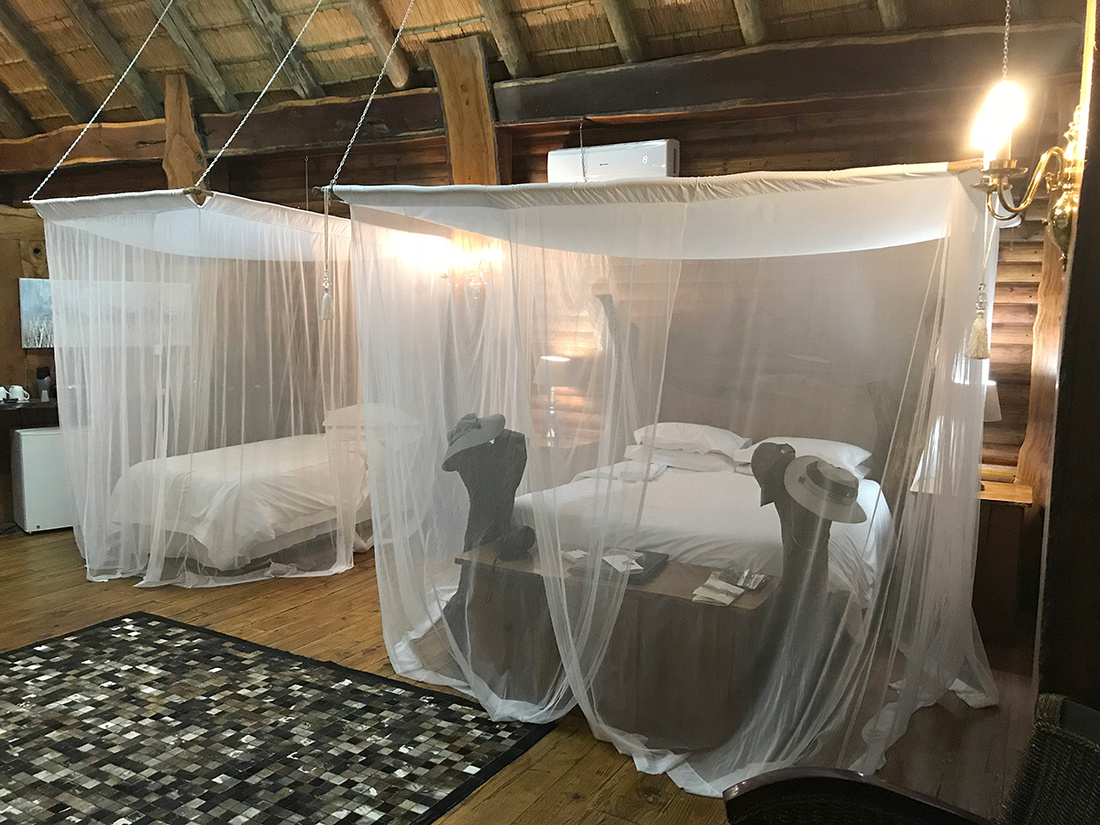
The bathroom was also spacious and contained a large shower and a claw foot tub. We unpacked and got ready for high tea (a British tradition that always included tea and dessert). We met our guide (Mathew) and our tracker (David). The reserve was the only camp where we had both a guide and a tracker on each vehicle. The tracker rode on a special seat attached to the left front fender. After high tea we loaded all nine of us into safari vehicles. The safari vehicles were a little different in each camp. At Karongwe, they were new Toyota 4W drive trucks with an aftermarket set of three tiered bench seats bolted to the bed. Getting into the seats required some agility.
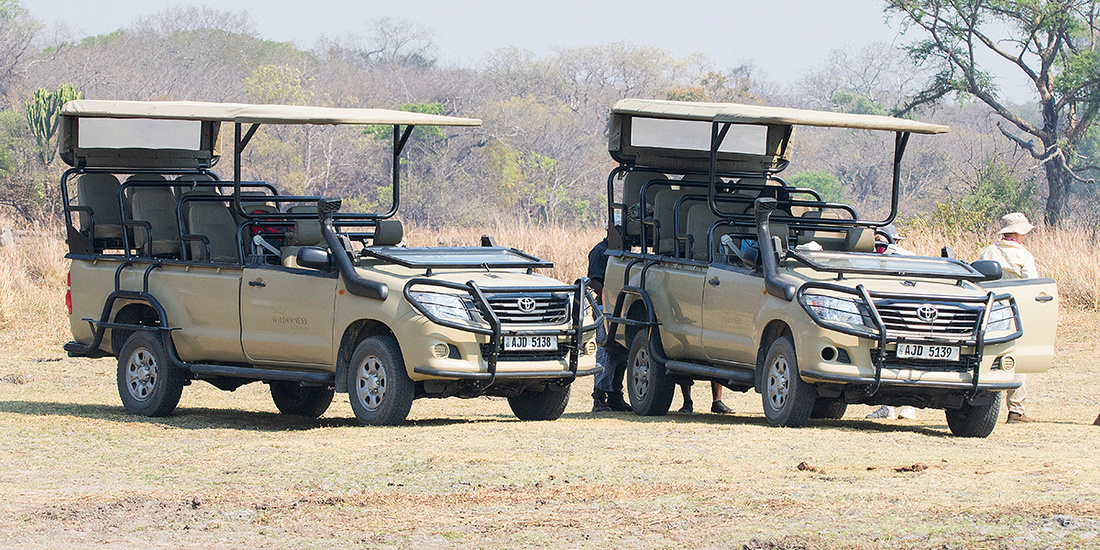
We loaded up and departed on our first game drive. I am not sure what I expected, but I did not expect two mature leopards on a fresh nyala kill within 1/4 mile of camp. A very good start. We soon discovered one of the advantages of a private reserve over the National Parks is the ability to go off-road. We murdered many trees tracking the leopards to a brushy gully where they were enjoying dinner. I was very excited to see my first leopards, but they were in a very difficult location for photography. Over the next four hours or so we saw waterbuck, kudu, impala, white rhino, cheetah, crocodile, nyala, wildebeest, giraffe, dukier, warthog, baboon, vervet monkey, bushbuck and the same two leopards again. The cheetahs were just finishing up an impala kill they had made. The kill was out in the open, but the light was fading. I got a few keeper images of the cheetahs, but many were blurry.
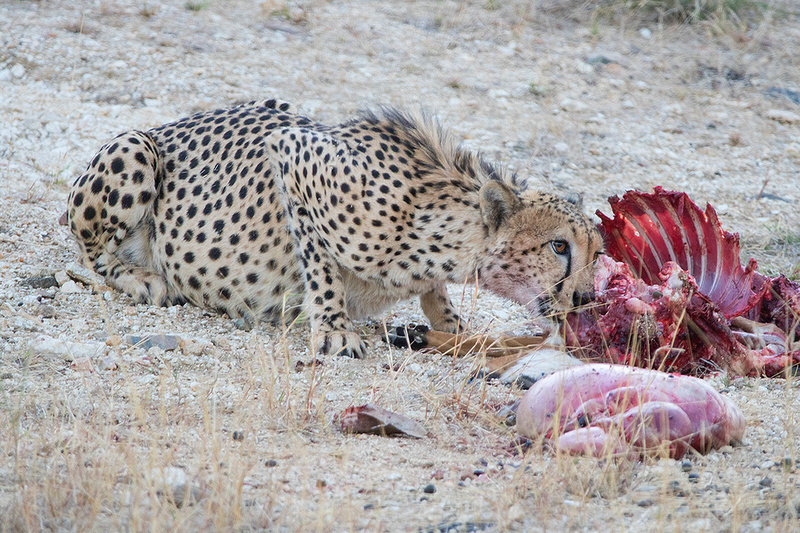 Cheetah on kill
Cheetah on kill
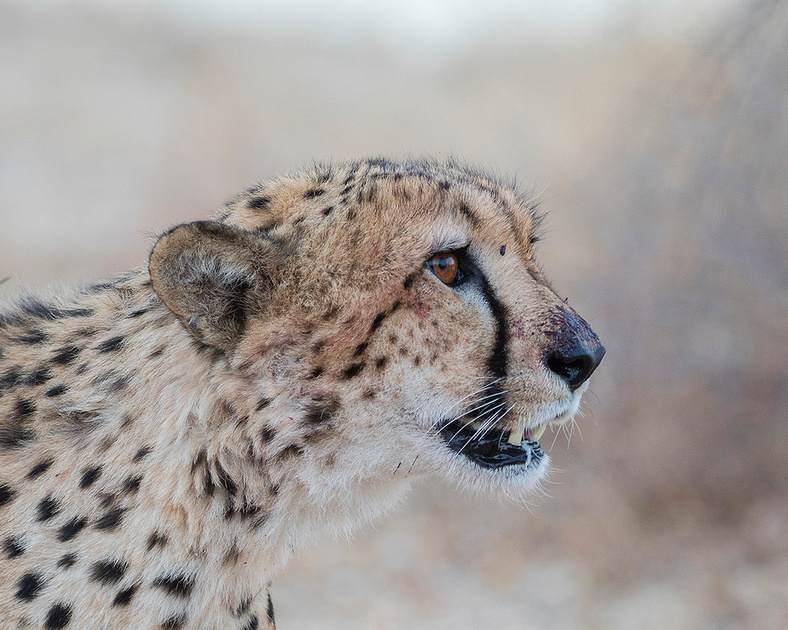 Cheetah
Cheetah
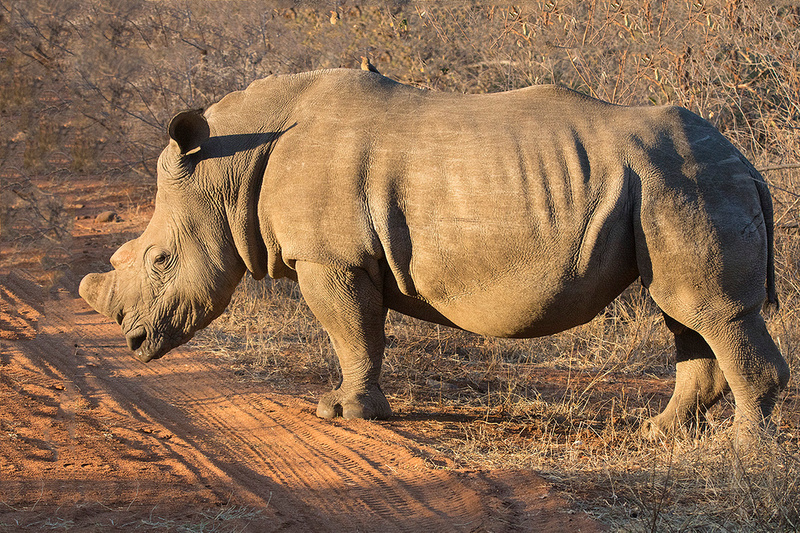
White Rhino (Note the Red-Billed Oxpecker on the Shoulder)
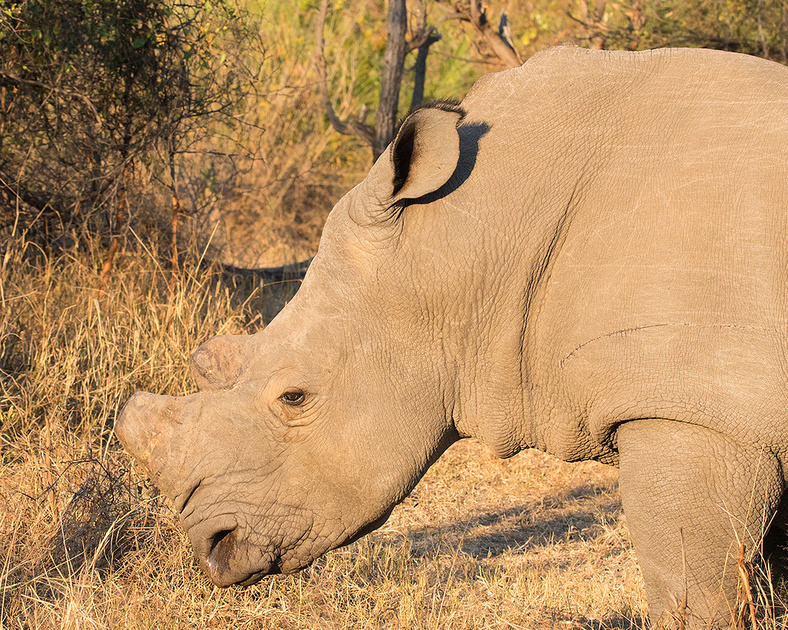 White Rhino (Note the horn has been removed to deter poaching)
White Rhino (Note the horn has been removed to deter poaching)
We stopped just before sunset and experienced another African tradition, the sundowner. The guide parked and set up the bar on the hood. Everyone had a drink as the sun set. A very nice tradition. On the drive back to the lodge the tracker used a spotlight to locate nocturnal wildlife. We did see a civit cat briefly using the light.
We had time for a short happy hour before dinner. The local lagers were Castle and Carlton Black Label. Dinner was quite good and included ostrich kabobs. In fact all the food at the lodge was quite good. At this location we ordered off the menu as opposed to the buffets which were the norm on the remainder of the trip. Dinner was served outside on the patio overlooking the Makutsi River bed. We were escorted to our room after dinner by the guides. We were not allowed to walk at night in any of the camps unescorted.
We were up before daylight for coffee and pastries before heading out on our morning game drive and continuing quest for the Big Five. Temperatures were in the high 40s and low 50s each morning. It was prudent to dress in layers as it was pretty cool traveling in an open vehicle.
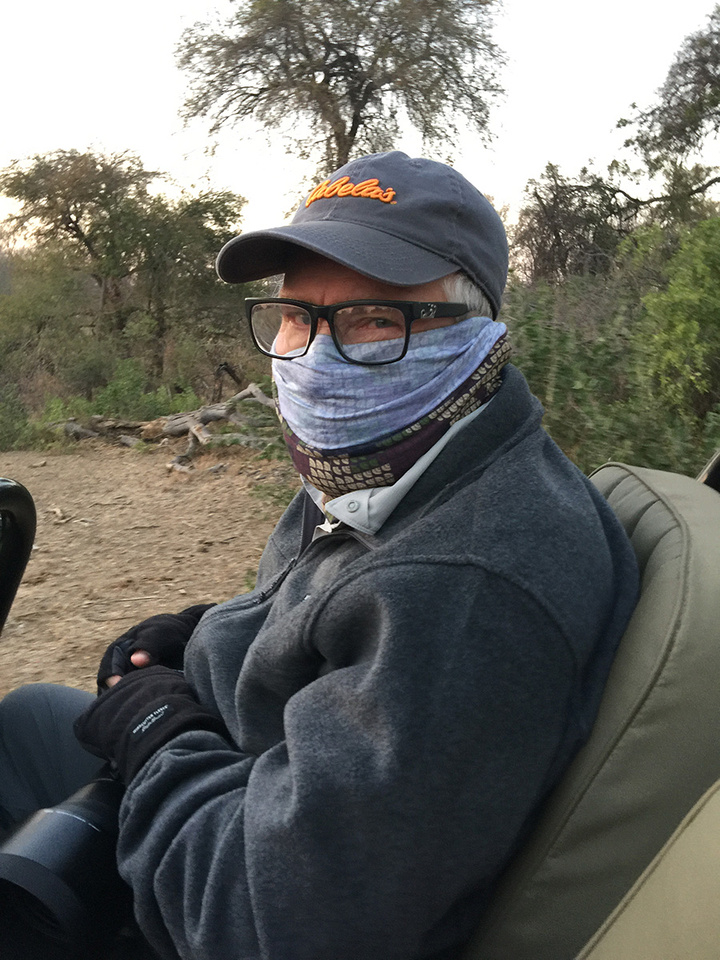
The Author Bundled up for the Arctic
It warmed up most days to the high 70s. I was the only birder in the group. The guide was good about pointing out each new bird species. In addition to the wildlife species we had seen the previous evening we also observed elephants, zebras, jackals, hippo, steinbuck, and dwarf mongoose.
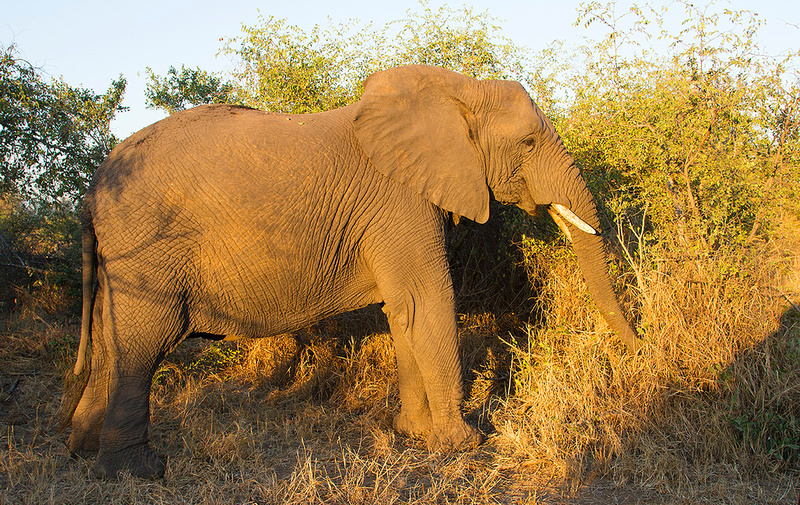 Elephant in Warm Morning Light
Elephant in Warm Morning Light
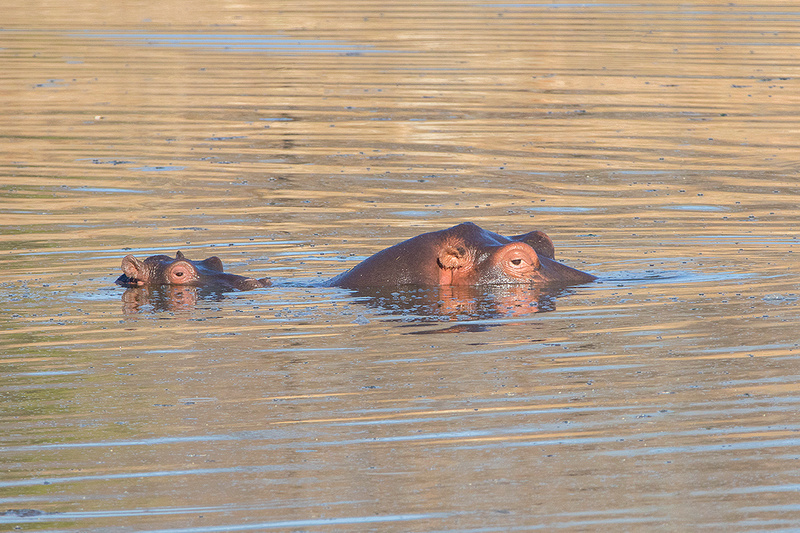 Back Riding Baby Hippo
Back Riding Baby Hippo
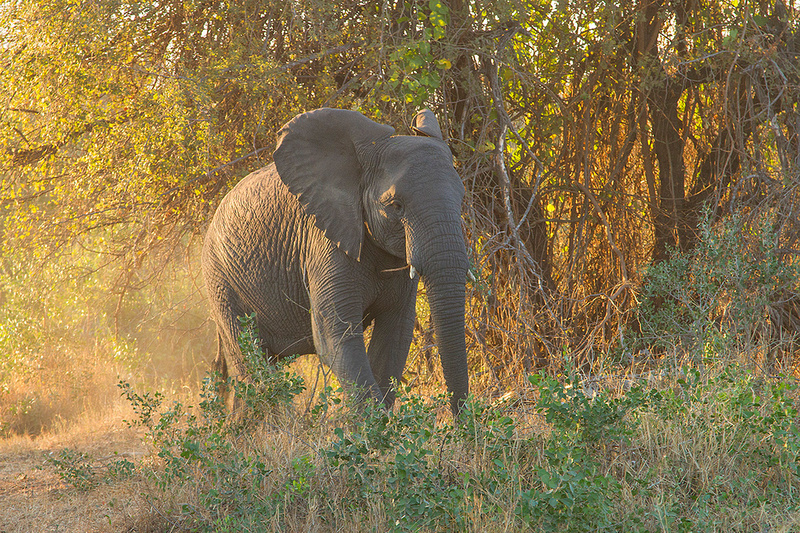 Elephant on the Move
Elephant on the Move
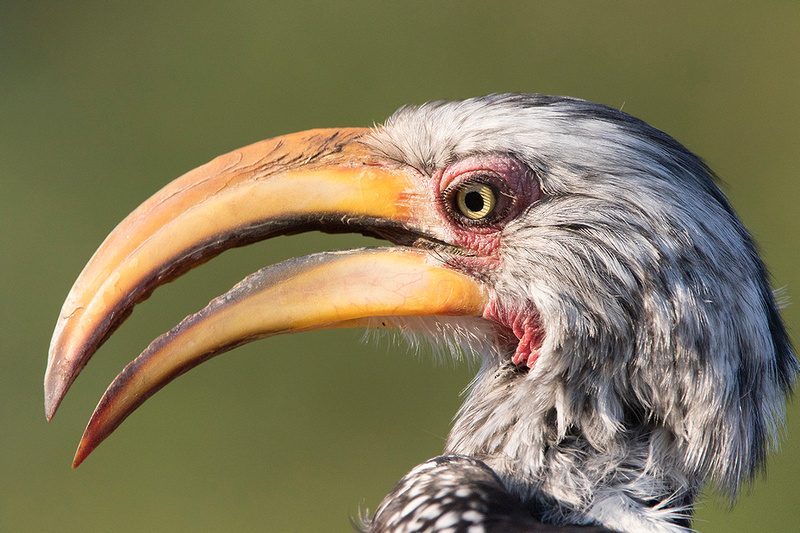 Southern Yellow-Billed Hornbill
Southern Yellow-Billed Hornbill
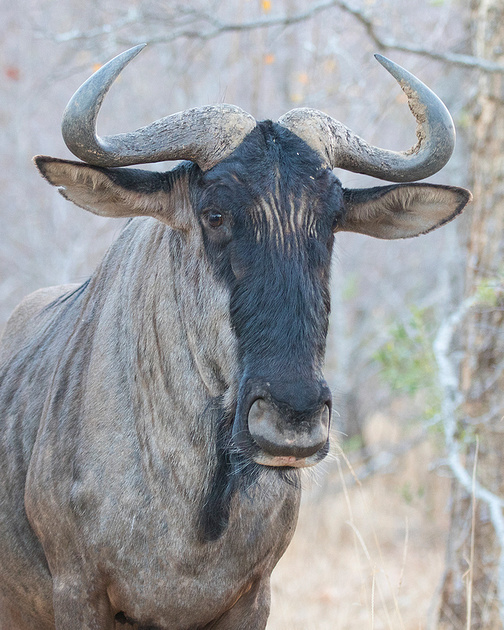
Wildebeest
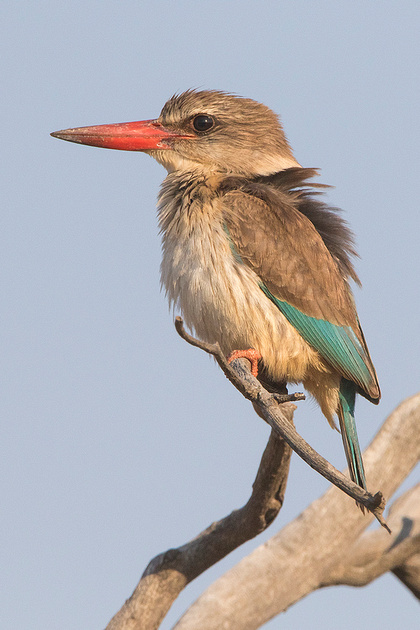
Brown Hooded Kingfisher
We saw two additional white rhino. They have over thirty rhinos on the reserve. Each has a unique ear notch pattern to allow the guides to identify individual animals. The horns on all the rhinos had been removed to prevent poaching. On our evening game drive we found six lions sleeping in some dense brush. We parked within eight feet a of a large sleeping male. Too close! Great mane, but again brush and grass were difficult to shoot through and my first lion images were less than perfect. Unfortunately, these were almost our only lion sightings at the reserve.
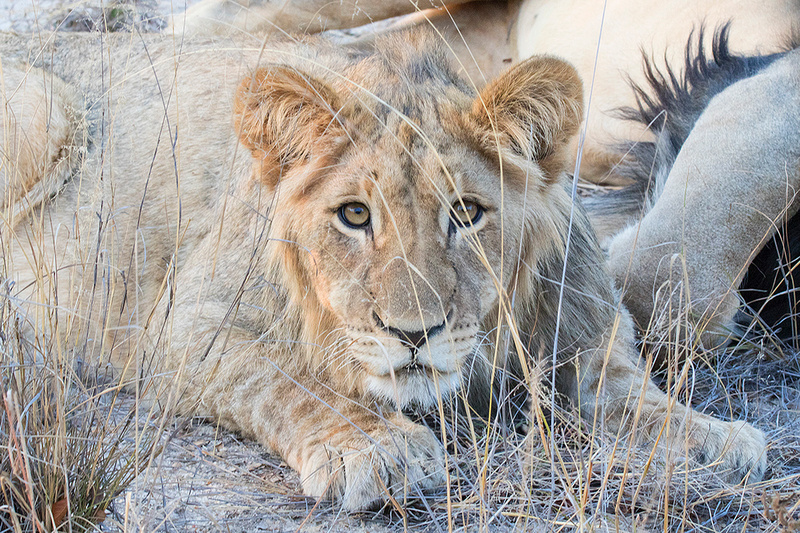 Young Male Lion
Young Male Lion
We had another day of morning and evening game drives on September 13. We found a herd of buffalo to complete our Big Five.
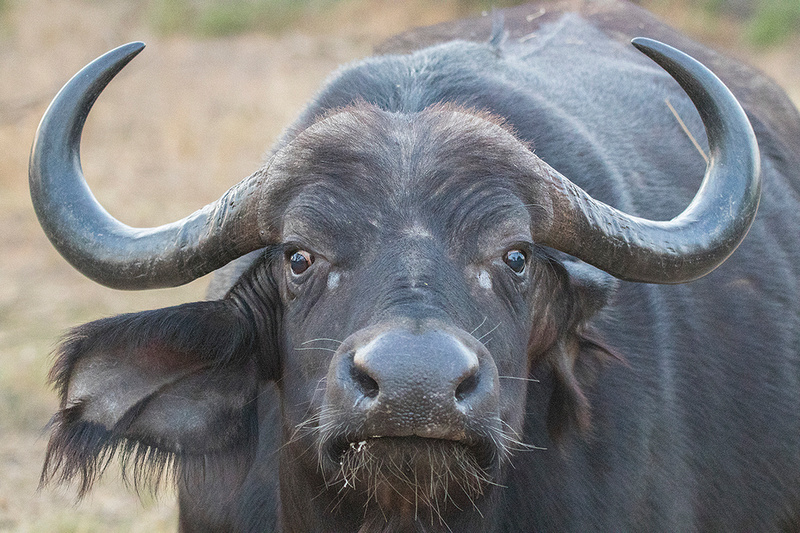 Adult Cow Buffalo
Adult Cow Buffalo
We also observed elephant and several rhinos. The buffalo were mostly cows and calves. We parked the truck and they feed all around us within twenty feet or so, at first light. I discovered that the lodge had a wildlife viewing blind at the waterhole (large shallow pond) adjacent to camp. I spent most of the time in camp working on my bird life list at the waterhole and attempting photography in the harsh mid-day light.
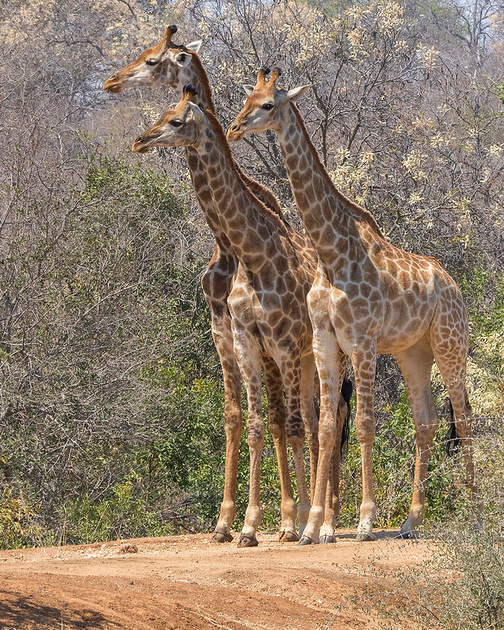
A Tower of Giraffes
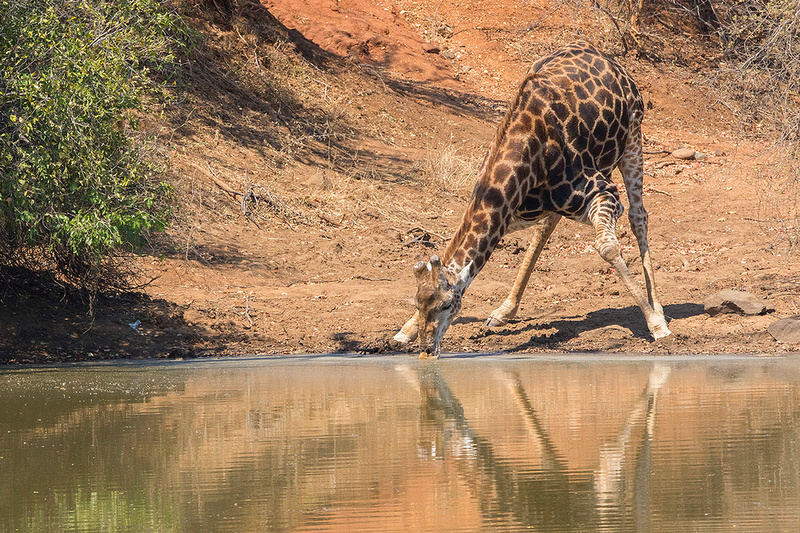
I was able to photograph a pair of amorous crocodiles at the waterhole.
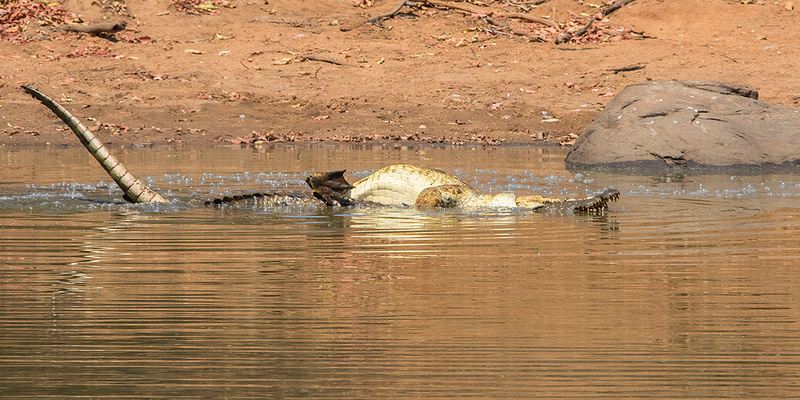 Mating Crocodiles
Mating Crocodiles
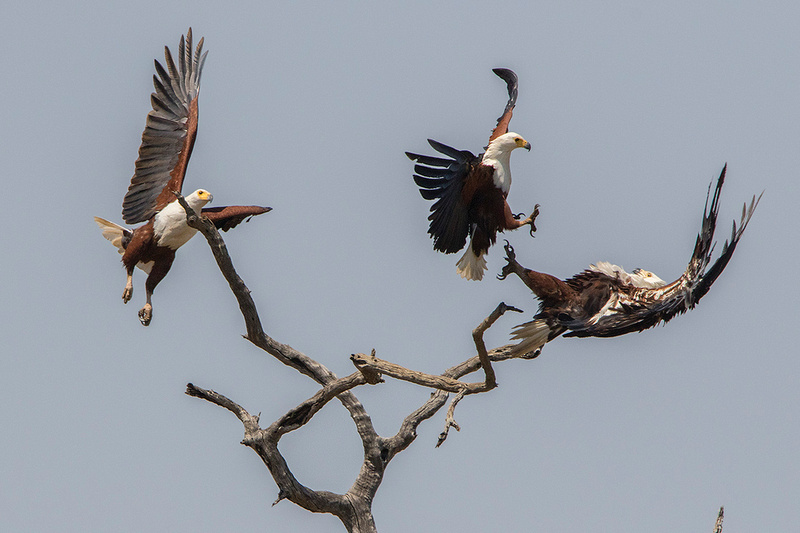 African Fish Eagle Territorial Dispute
African Fish Eagle Territorial Dispute
On our evening game drive the tracker observed two distant giraffe acting oddly. We drove closer and found the source of their behavior; a mature leopard was streched out in the open on the ground in front of an abandoned lodge. I took hundreds of photos at fifty feet. Such a beautiful animal. We discovered that he had made a recent kill and had hid it (impala) under the lodge building. He eventually strolled around under the building and began to feed.
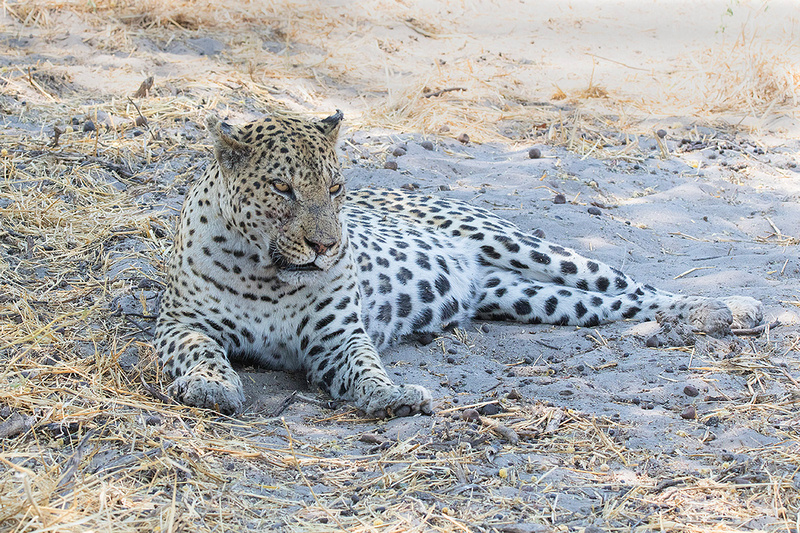 Adult Leopard
Adult Leopard
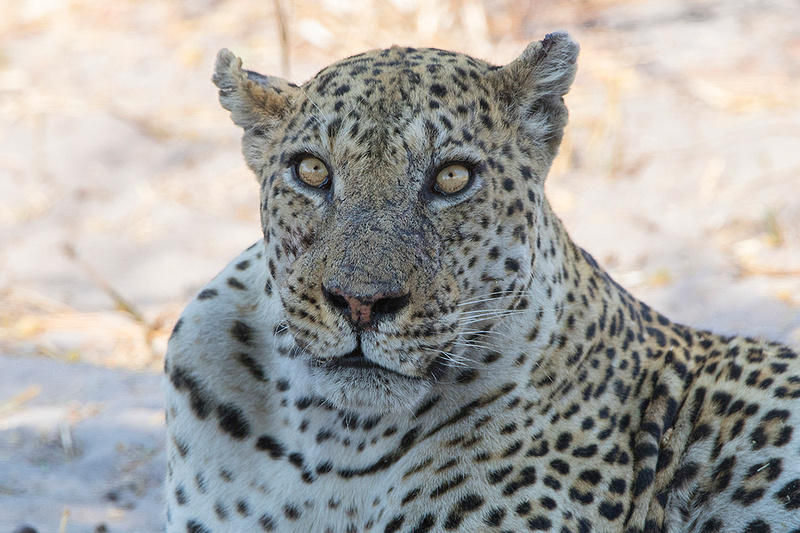 Adult Leopard
Adult Leopard
Another morning and evening game drive on September 14. We saw a black-backed jackal. We had previously seen only the side-striped jackal species. We had a brief sighting of a lioness. We saw the three cheetahs (brothers) asleep in the morning sun. They pretty much ignored us and offered few photo opportunities.
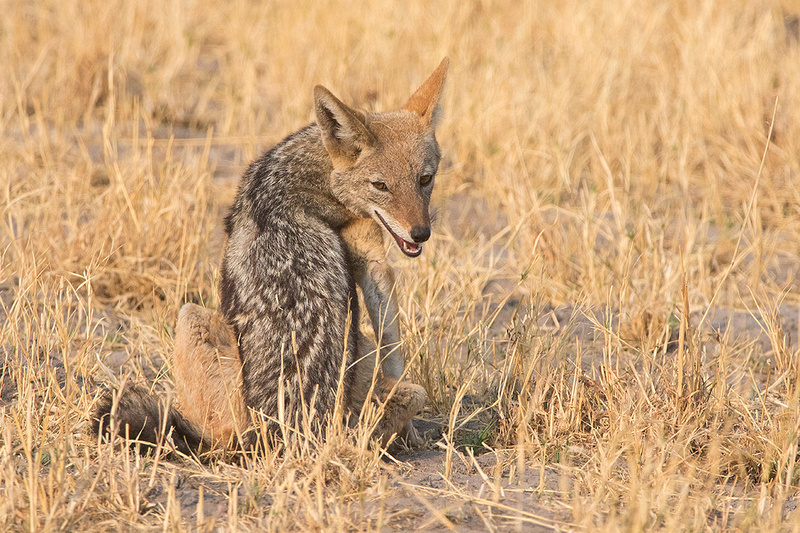 Black-Backed Jackal
Black-Backed Jackal
September 15th was our last morning at the reserve. We spent most of the morning searching for lions, but came up empty. This game drive was the only time we saw one of the perimeter fences. We followed the fence line and parked the truck. The guide unloaded all of us and walked us to within twenty-five feet (yes feet) of three cheetahs on a fresh kill. I got a number of decent images of the brothers grooming each other.
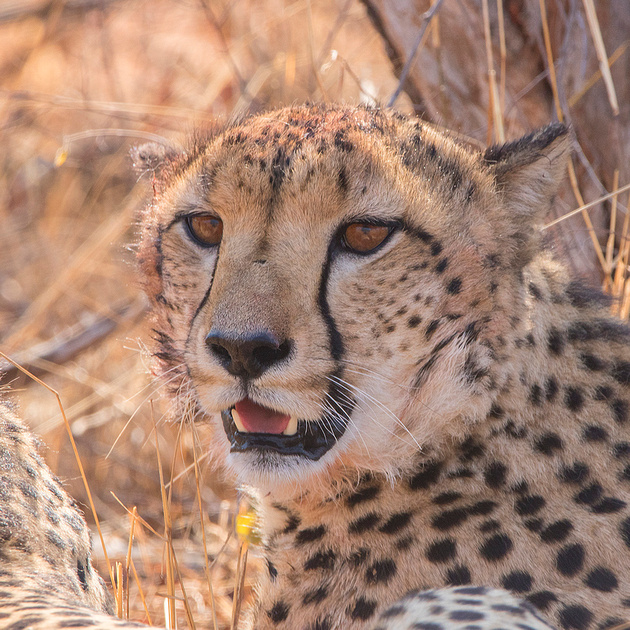 Cheetah
Cheetah
 Cheetahs Grooming
Cheetahs Grooming
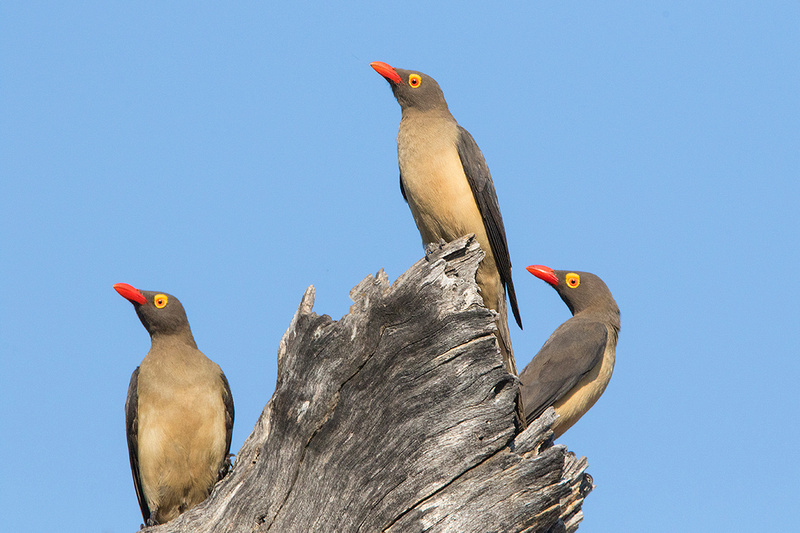 Red-Billed Oxpecker
Red-Billed Oxpecker
After the morning game drive, we retraced our steps back to the Hoedspruit Airport, flight back to Johannesburg and then to the O.R. Tambo Protea Hotel for another overnight stay. The next morning we met the remainder of our tour, which consisted of five additional travelers.
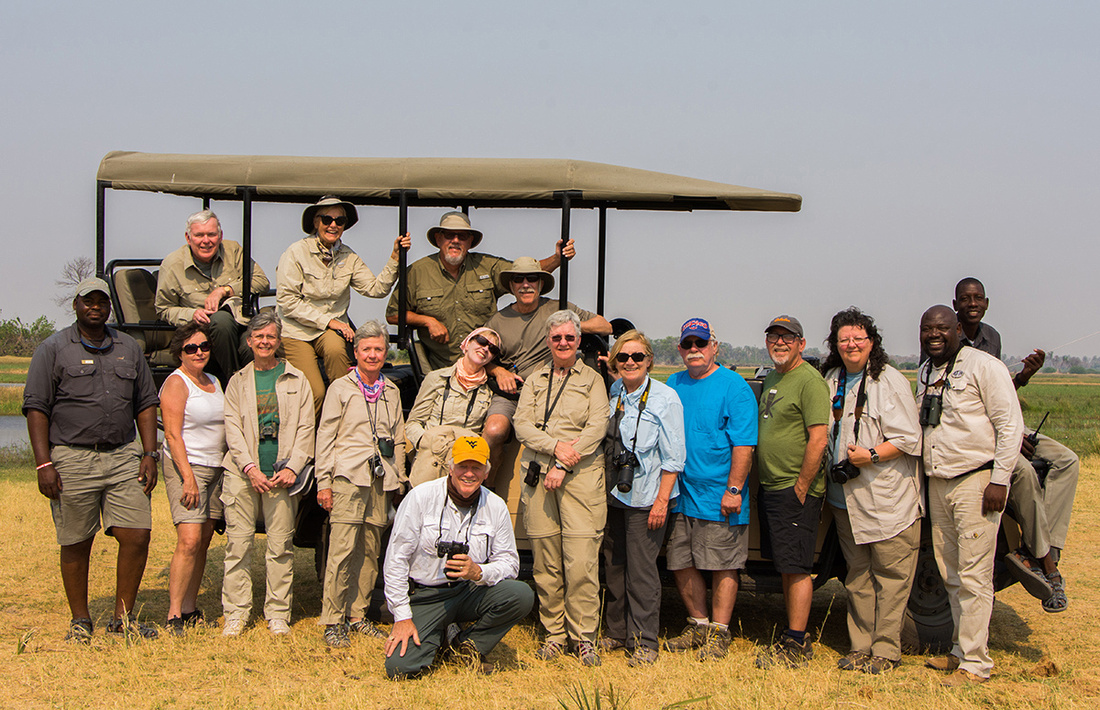
Photo Credit: Stephen Cochran
We caught a commercial British Airways jet for transport to Victoria Falls, Zimbabwe where we were met by our OAT Trip Leader. It took over an hour to get all of us through immigration and to pay our visa fees.
I should mention a few things about OAT. They specialize in small group travel, advertising never more than 16 travelers on a tour. All of the participants on our tour were Americans. Most of the people on our tour were repeat OAT customers. This was the 19th OAT trip for one of our tour members. Most of the group had traveled with OAT several times and one member had previously done this same tour about fifteen years ago. The pre trip extension was all about the game drives. The main tour included lots of game drives, but also several cultural experiences. We visited a school and a homestead within a village while in Zimbabwe. During high tea, staff at each of the camps made presentations each afternoon on subjects varying from making peanut butter to the HIV epidemic.
After clearing immigration we took a bus to the entrance of Hwange National Park (Zimbabwe's largest park). We were met at the park entrance by our safari guides Victor and Abut who transported us through the park to Kashwe Camp, our home for the next several days. This camp and all the others on the tour was operated by Wilderness Unlimited and provided tents of some form for lodging. The tent was roomy, clean, and comfortable with solar water heating and electricity. Each room had a large stand fan for cooling. It was significantly warmer here than in South Africa. This was the only camp where we were escorted to our tents each evening by an armed guard.
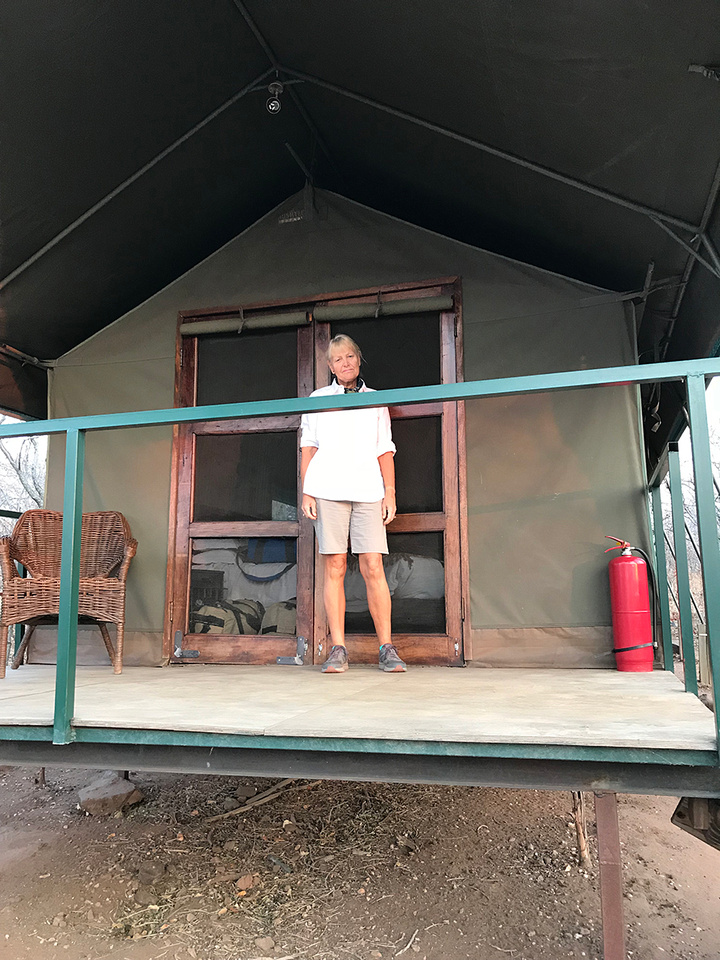
Becky on the Veranda of our Kashawe Camp Tent
All meals were served buffet style and we sampled some local sorghum beer. Definitely an acquired taste.
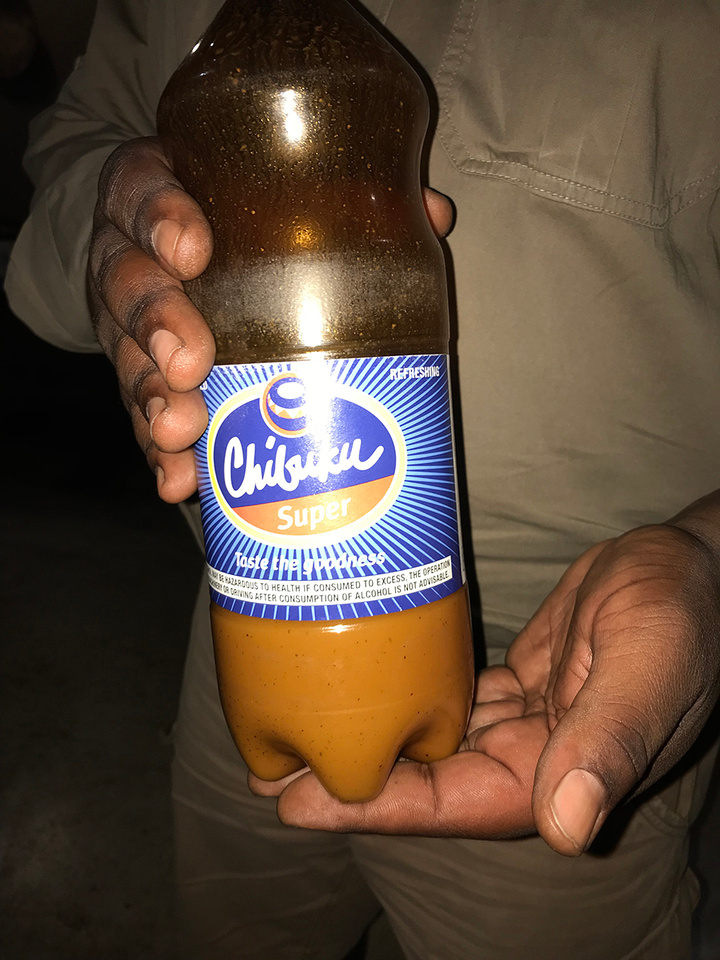
Sorghum Beer
The camps all provided complimentary laundry service which allowed us to pack light on clothes. The park was quite dry with only isolated surface water. The entire park appeared heavily over grazed by elephants Damaged and downed trees were common.
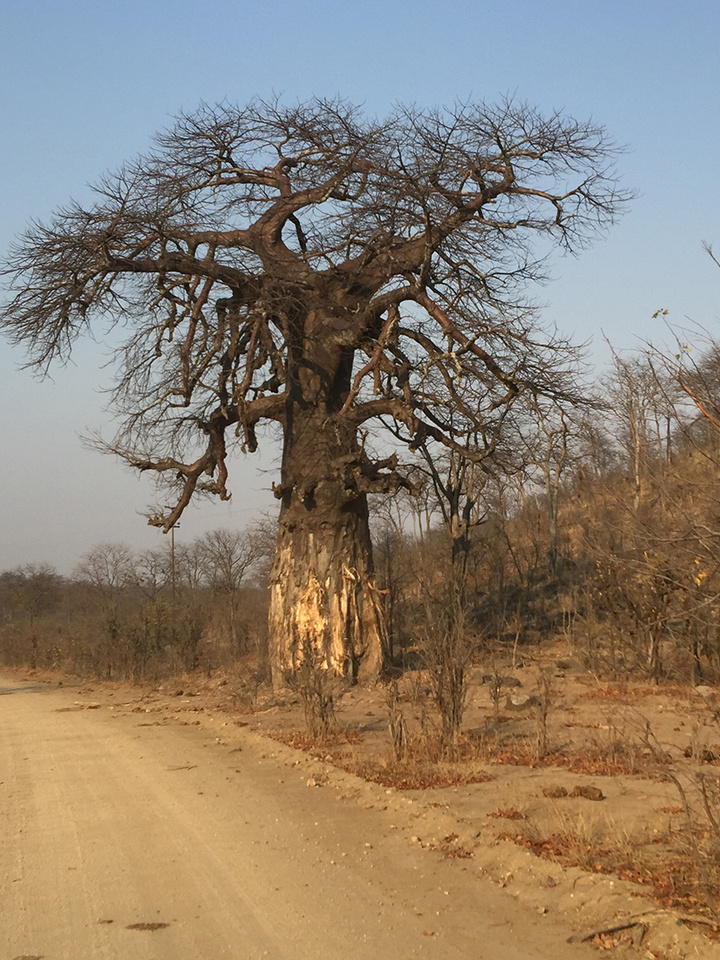
Elephant Damaged Baobob Tree
Wildlife was not as abundant or as diverse as at the game reserve and was difficult to locate away from water. We did observe a very large herd of buffalo at a great distance and many elephants. No cats or rhinos. We also had opportunities to photograph a number of avian species including the stunning lilac-breasted roller.
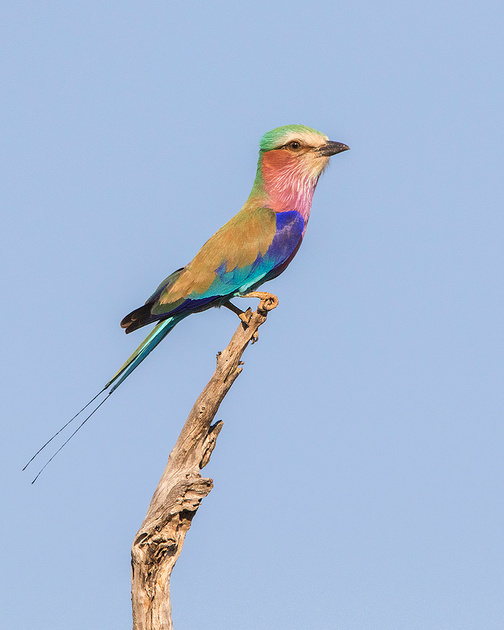
Lilac-Breasted Roller
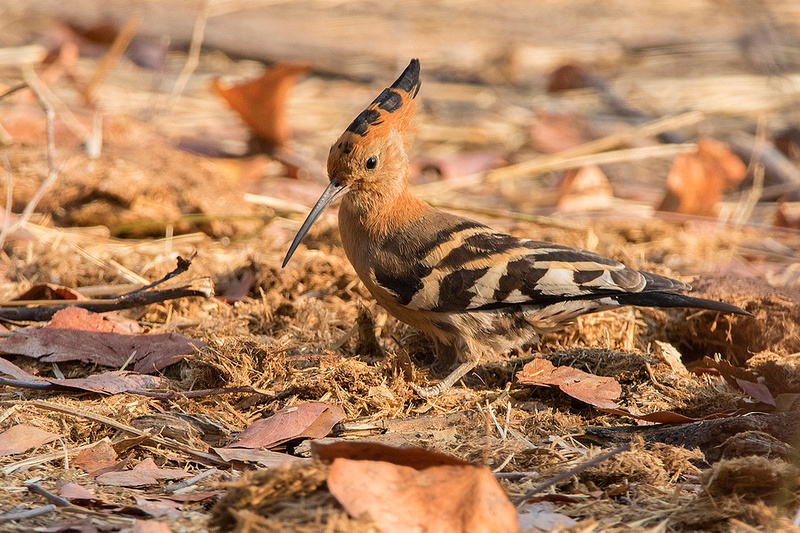 African Hoope
African Hoope
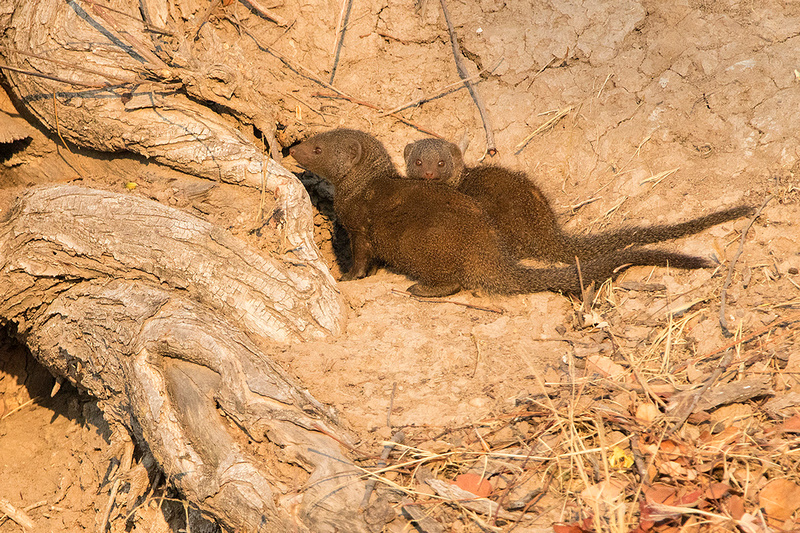 Dwarf Mongoose
Dwarf Mongoose
On our last full day in camp we enjoyed an "all day game viewing drive". Highlights of the drive were a visit to an isolated waterhole with an excellent elevated viewing blind. We spent several hours at the blind and enjoyed the antics of an elephant drinking and cooling off, a hippo territorial dispute, several crocodiles with a recent impala kill, and a large troop of baboons.
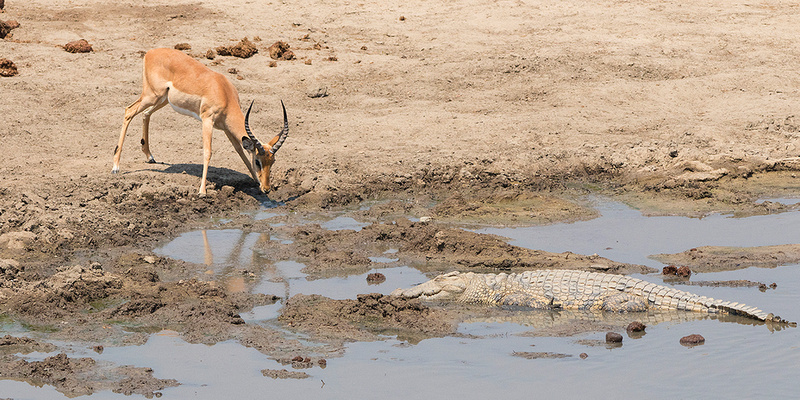 Impala and Crocodile
Impala and Crocodile
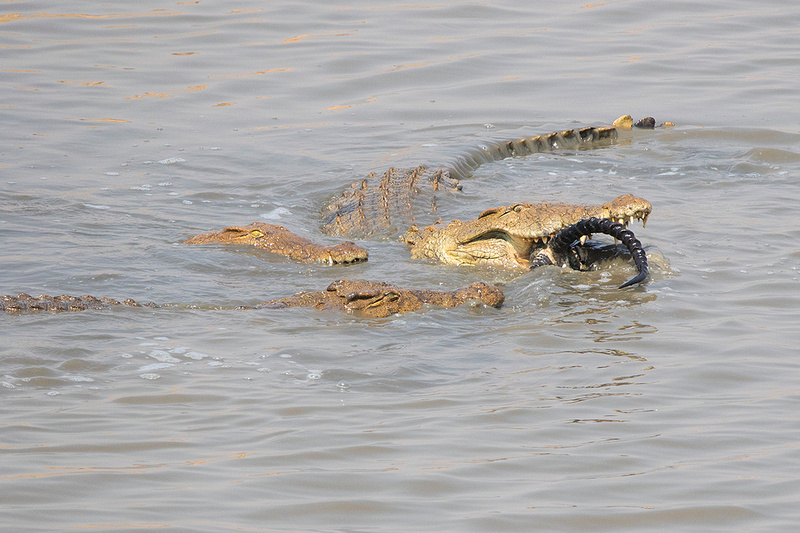 Crocodile and Impala
Crocodile and Impala
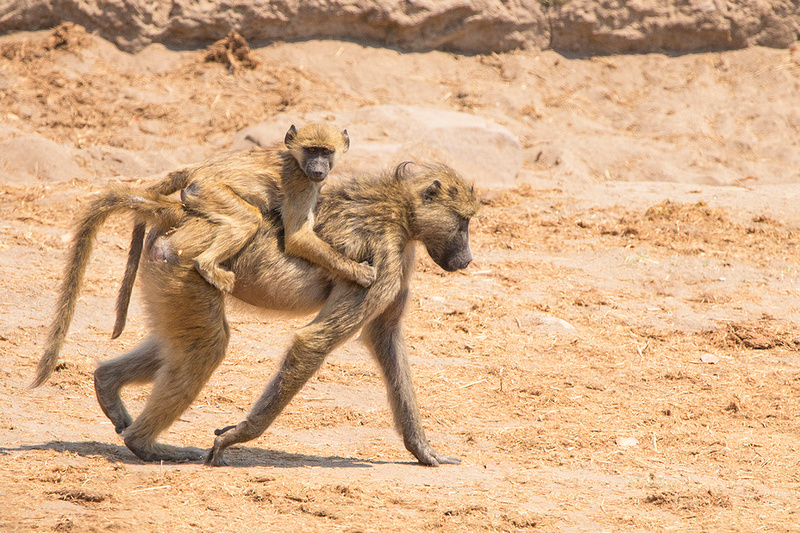 Baboon Female and Young
Baboon Female and Young
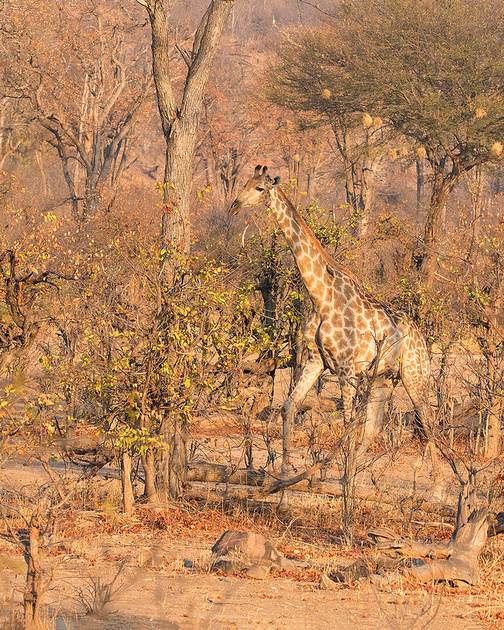
Sunset Giraffe
The next morning we departed Hwange National Park and crossed the border between Zimbabwe and Zambia. The border crossing was quick and smooth. We briefly toured a open air market in Livingstone, Zambia where our trip leader purchased mopane worms, a local delicacy.
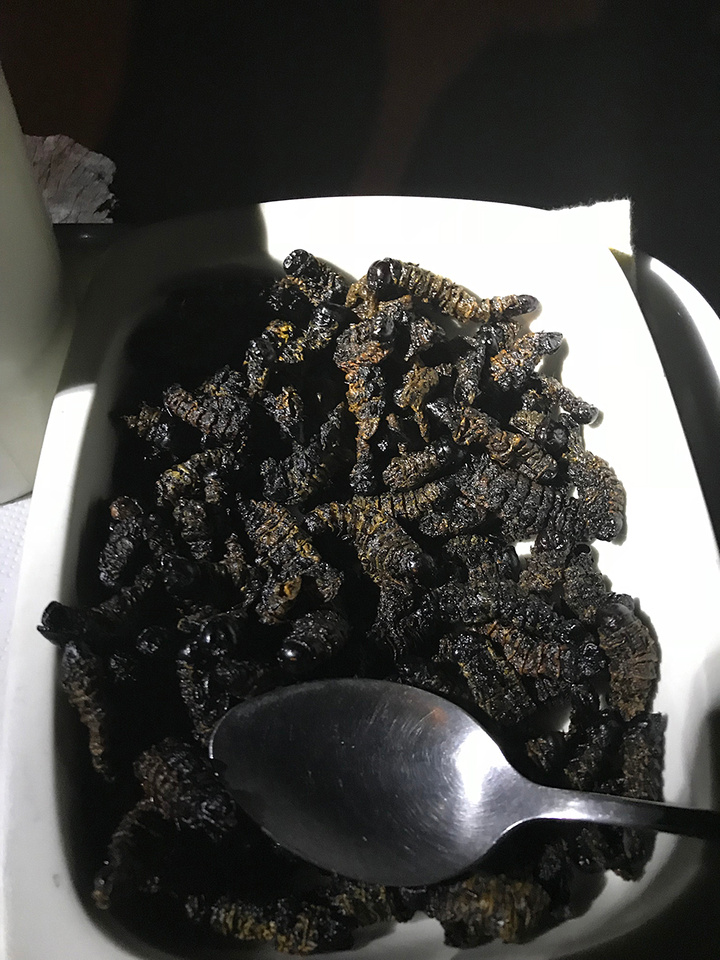
Mopane Worm- A Chewy and Crunchy Local Delicacy
We utilized the Livingstone Airport to catch our next flight to Lufupa River Camp in Kafue National Park in Zambia. This park is about 8,600 square miles in size. We divided up the group and flew in two small planes. Smooth flights and landings.
Lufupa River Lodge is located at the intersection of two large rivers (Kafue and Lufupa). Game drives at this location included both safari trucks and boats. Our tent was clean and comfortable, although afternoon temperatures were getting into the mid 90s. Zambia is the only country we visited where the tetse fly is present. Each vehicle had a large can of dried elephant dung attached to the back bumper. This dung was lit on fire and was reputed to be an effective tetse fly deterrent. We saw few flies, so perhaps it worked. I do know that when ever the vehicle stopped we were engulfed in choking clouds of elephant dung smoke.
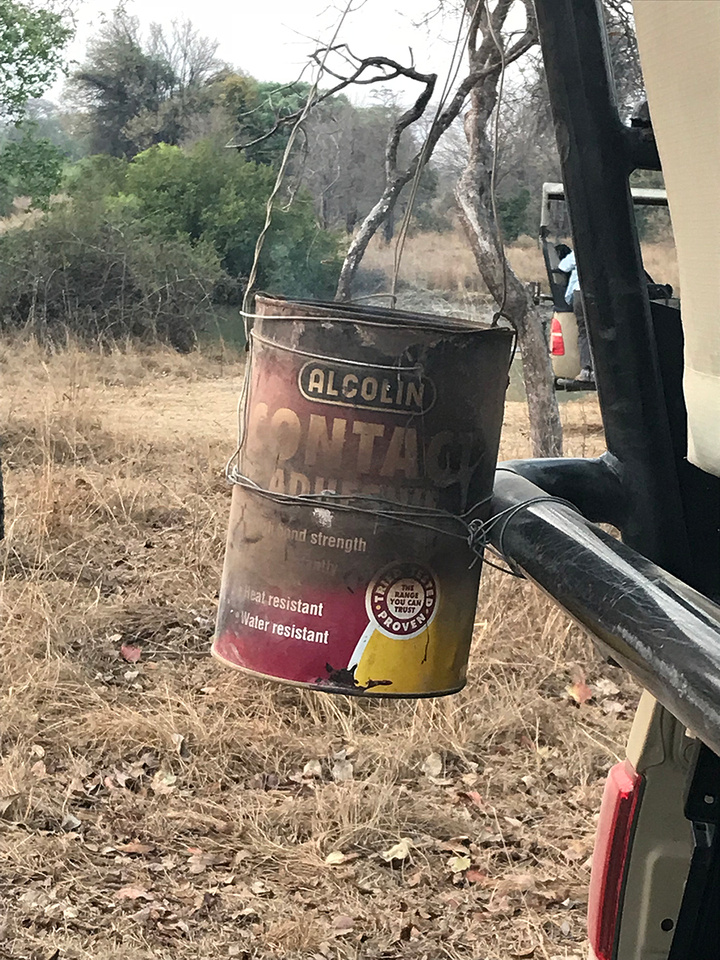
Burning Elephant Dung as a Tetse Fly Repellent
After a quick transfer from the landing strip to the lodge we set out on an evening game drive where we observed puku, an stocky antelope found only in Zambia and the Congo. We also observed a small herd of Lichenstein's hartebeest and a white-tailed mongoose while spotlighting on our way back to camp.
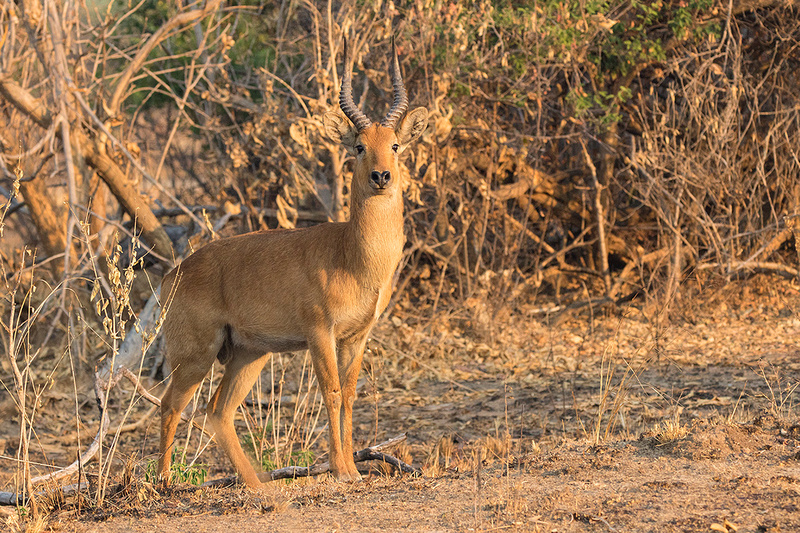 Puku
Puku

Lilac-Breasted Roller
On September 19th we enjoyed morning and evening game drives in the safari trucks. We saw a number of new bird species including the African finfoot, but otherwise the game drives were relatively unproductive with no sightings of the Big Five. On September 20th we explored the Lufupa River via a patio boat. Lots of hippos and crocodiles. We saw our first monitor lizard and several species of kingfisher.
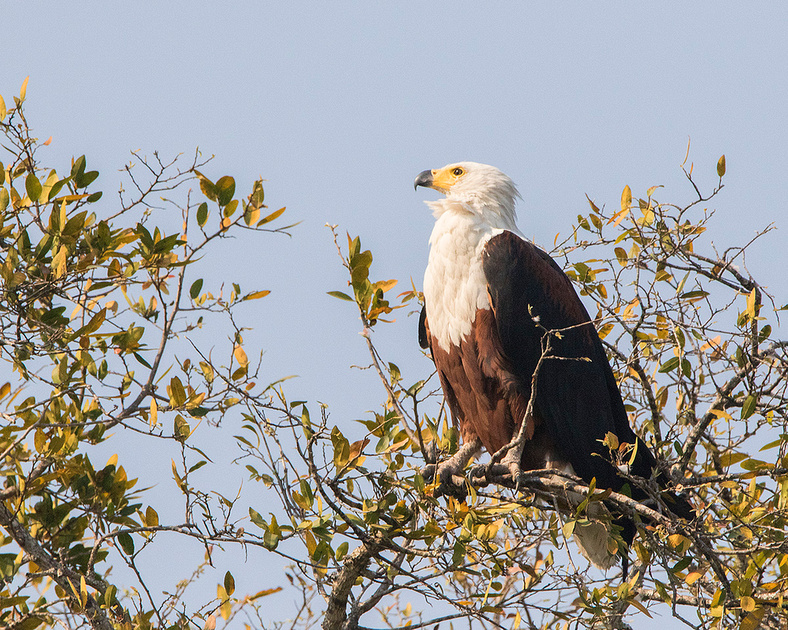 African Fish Eagle
African Fish Eagle
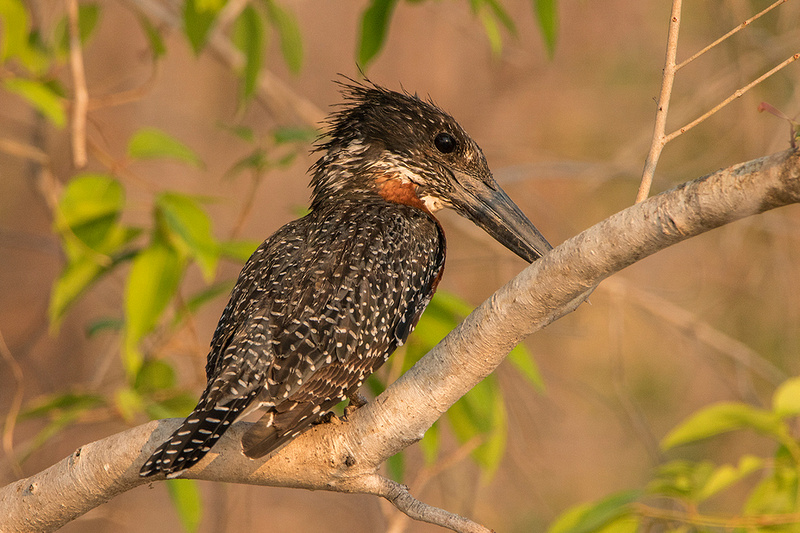 Giant Kingfisher
Giant Kingfisher
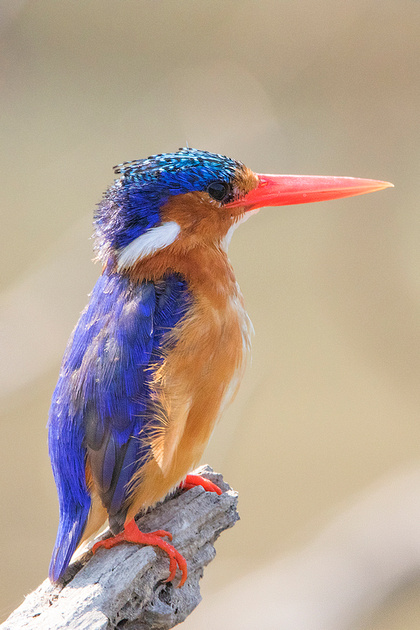
Malachite Kingfisher

Pied Kingfisher
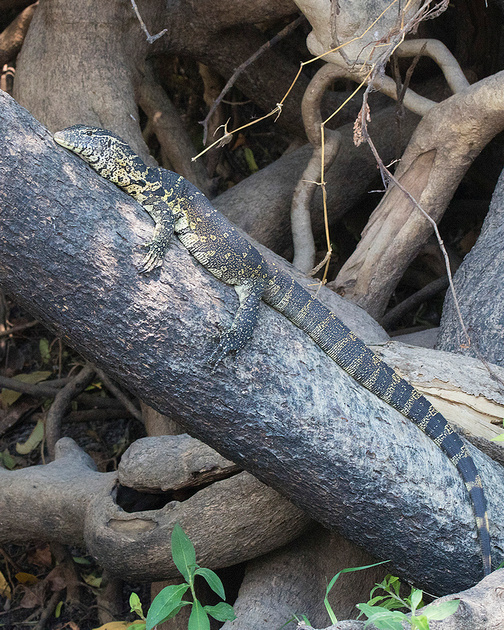
Water Monitor
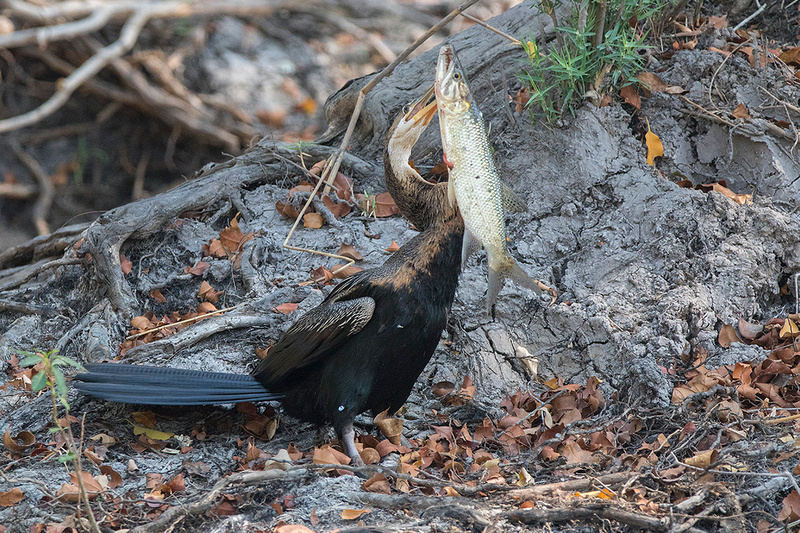 African Darter with Pike
African Darter with Pike
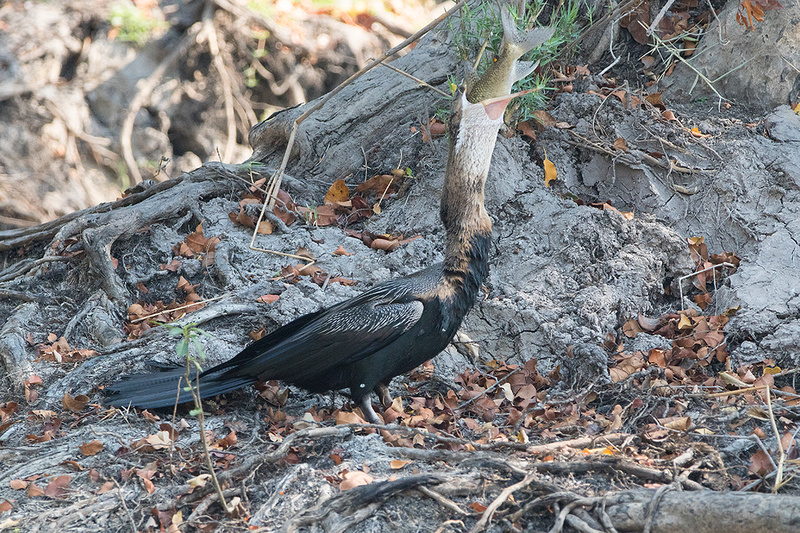 African Darter Swallowing Pike
African Darter Swallowing Pike
Our tents were installed on the banks of the Kafue River and each had excellent views of the river.
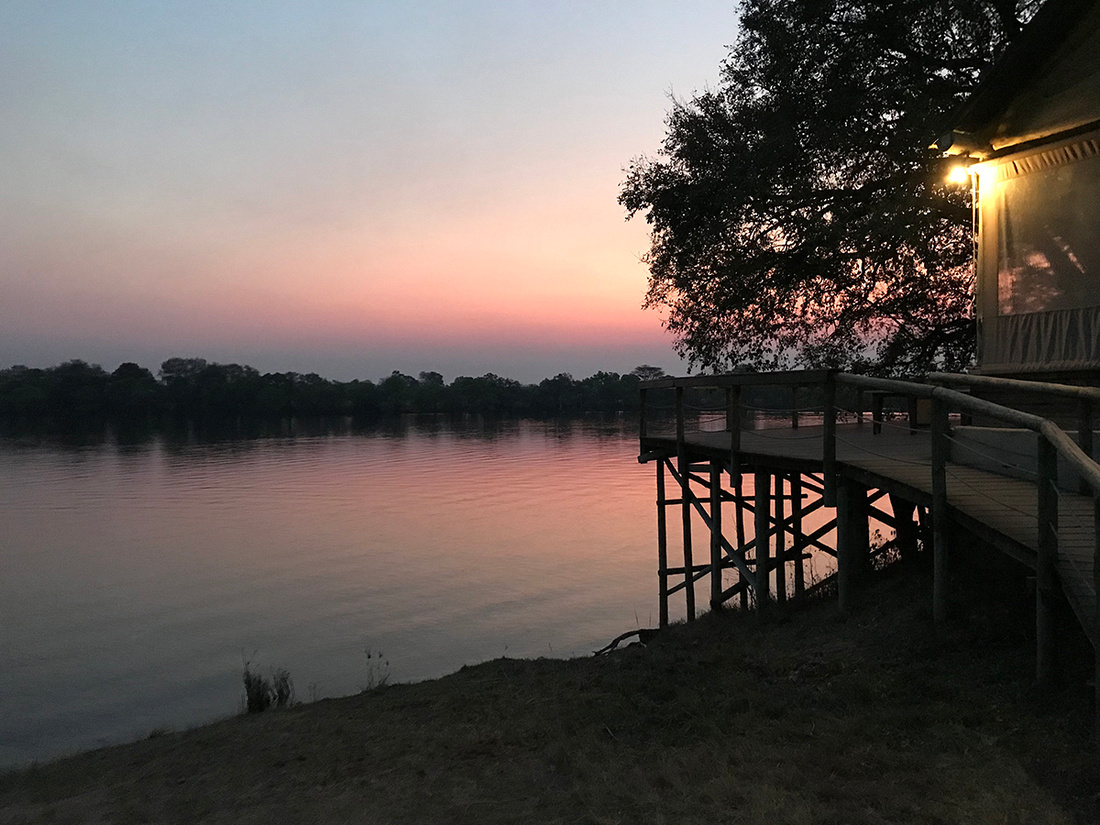
Lufupa River Camp
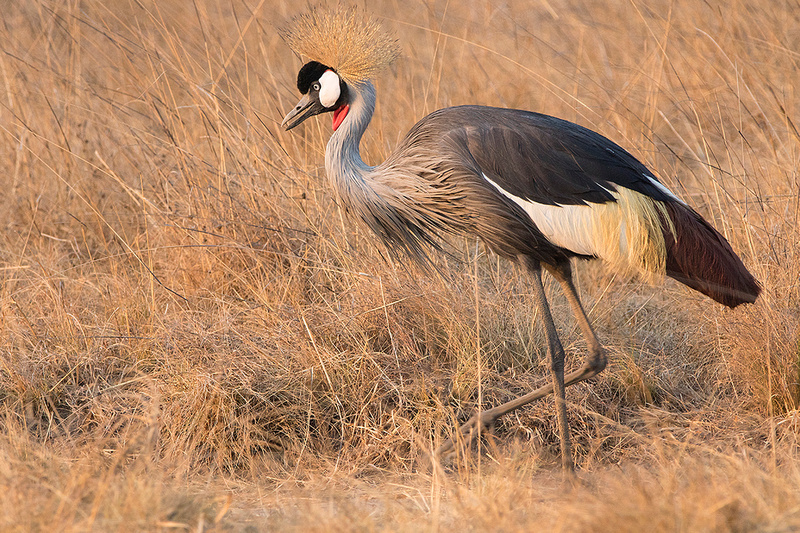 Grey Crowned Crane
Grey Crowned Crane
 Kafue River Crocodile
Kafue River Crocodile
We were visited by a large troop of vervet monkeys each day. They spent a good deal of time using out tent as a trampoline and peering through the screen at us while we showered. The females all seemed to have very young and dependent babies. All the babies appeared to be about the same age.
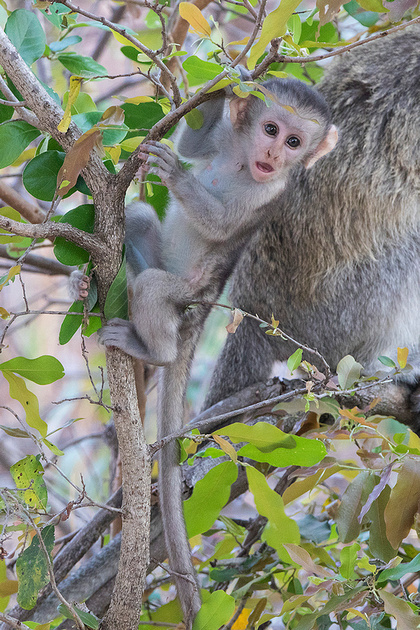
Young Vervet Monkey
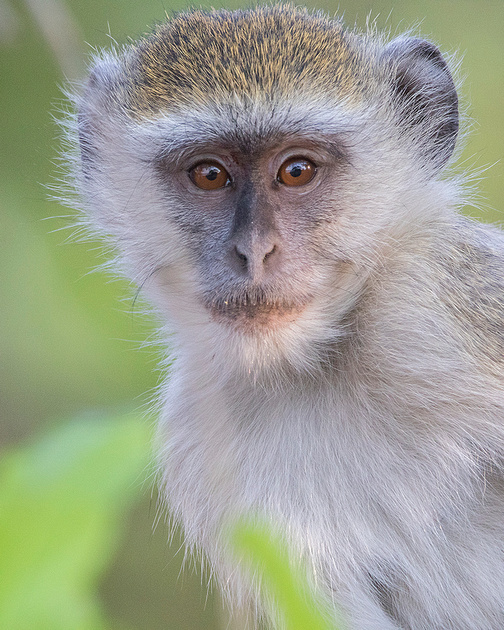
Adult Vervet Monkey
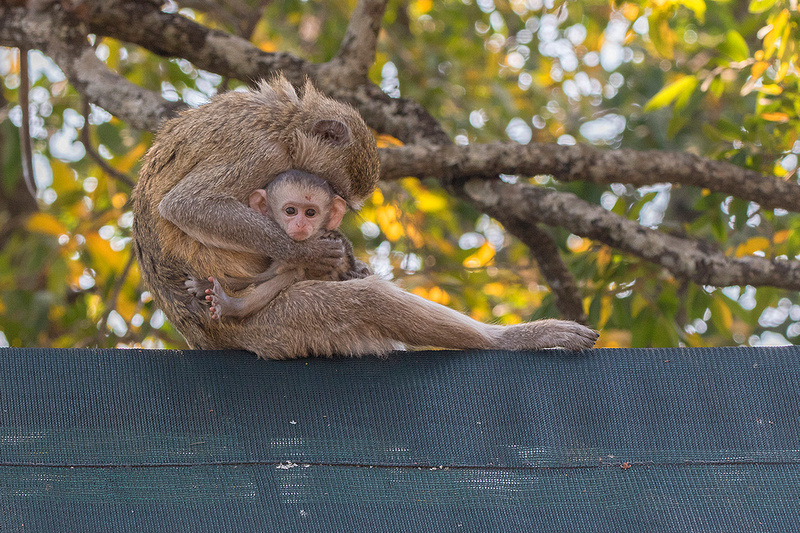 Vervet Monkeys on our Tent
Vervet Monkeys on our Tent
We also had our first elephant in camp experience as two adult bulls visited almost daily. Brian, one of our guides, called them naughty elephants as they have a history of charging slower tourists. We were treated to a picnic lunch on the river several miles from camp. A nice surprise. On September 21st we had another unproductive game drive followed by a very smooth flight back to the Livingstone Airport.
We headed south out of Livingstone towards Botswana with a brief stop to view a small herd of white rhinos. Each rhino had an assigned ranger that guards him or her 24 hours a day and 7 days a week. I am glad we made this stop as it was the only opportunity to view rhino for those travelers who had not been on the South African pretrip and the only opportunity to photograph rhino with intact horns.
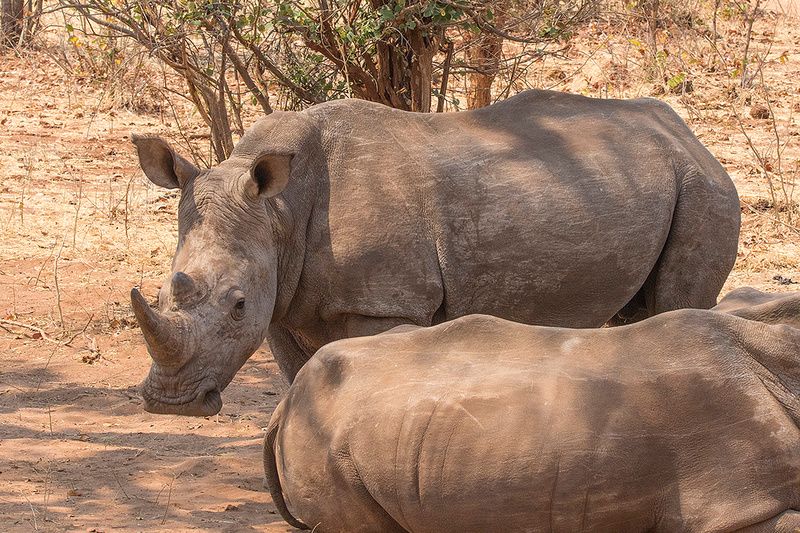 White Rhino Bull
White Rhino Bull
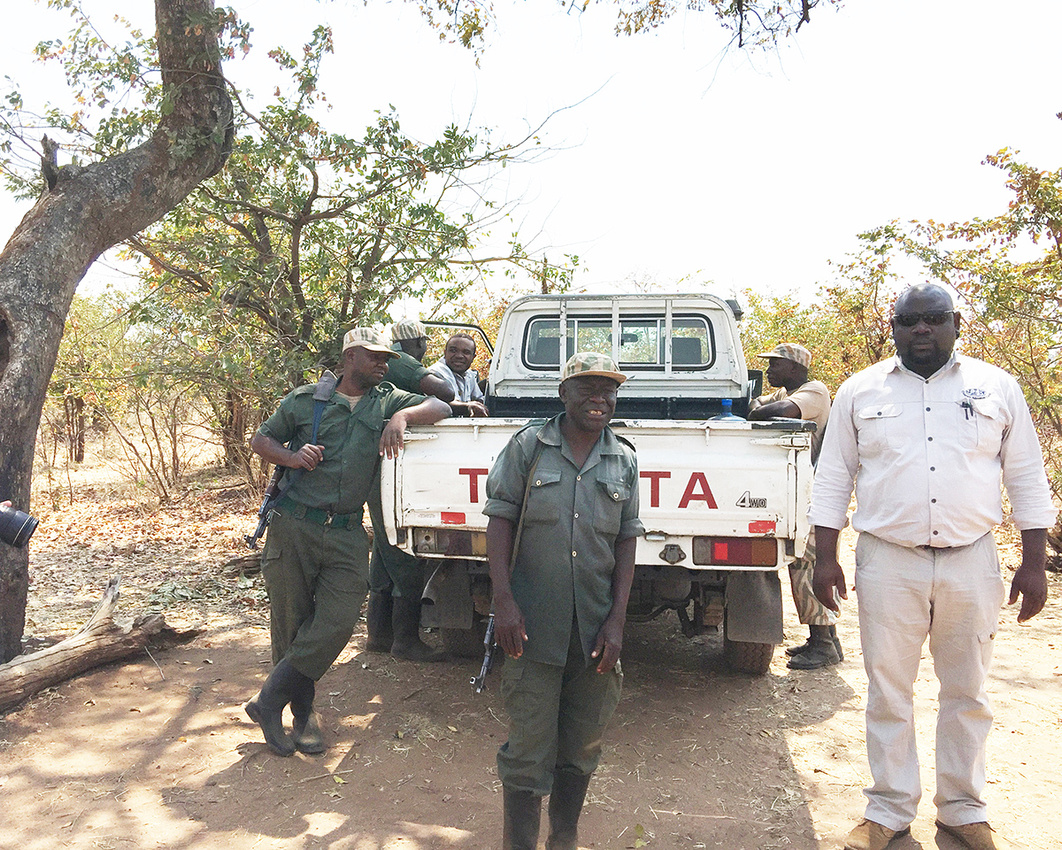 White Rhino Wardens: Note the Automatic Weapons
White Rhino Wardens: Note the Automatic Weapons
We proceeded south and crossed the Chobe River via a large boat into Botswana. We drove through Chobe National Park on the way to Baobob Camp. Chobe National Park contains an estimated elephant population of over 50,000. This camp was situated on a steep hillside overlooking the broad Chobe River floodplain. Excellent views from the elevated dining area with thousands of animals visible across the floodplain.
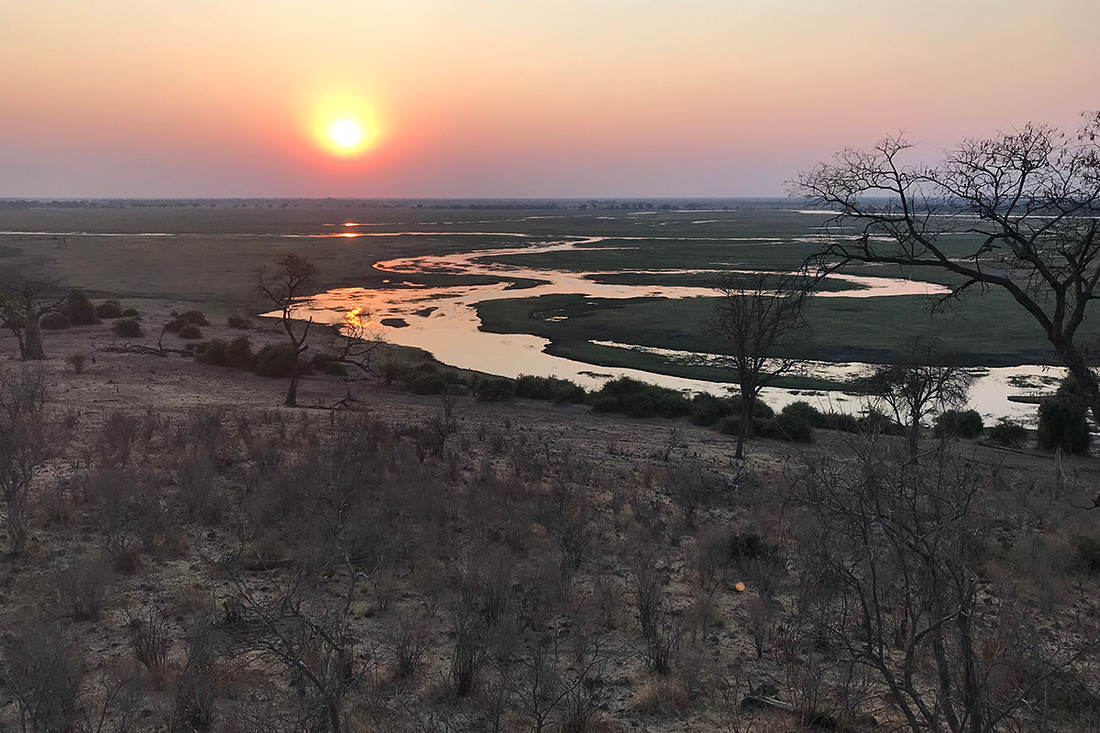 Chobe River Floodplain
Chobe River Floodplain
We checked into our tents. These had stone walls with a tent roof. After high tea, we set out on our first game drive onto the floodplain outside of the park. I was able to photograph a small herd of old male buffalo. The guide indicated that they could no longer keep up with the herd and banded together as protection from predators. Some very impressive heads in the herd. I was surprised to learn that big game hunting is no longer legal in Botswana. Lots of baboon, zebra, waterbuck, and bird life were present. The post game drive welcoming dinner prepared by Chef Oly was quite good as were his magic tricks.
 Bull Buffalo
Bull Buffalo
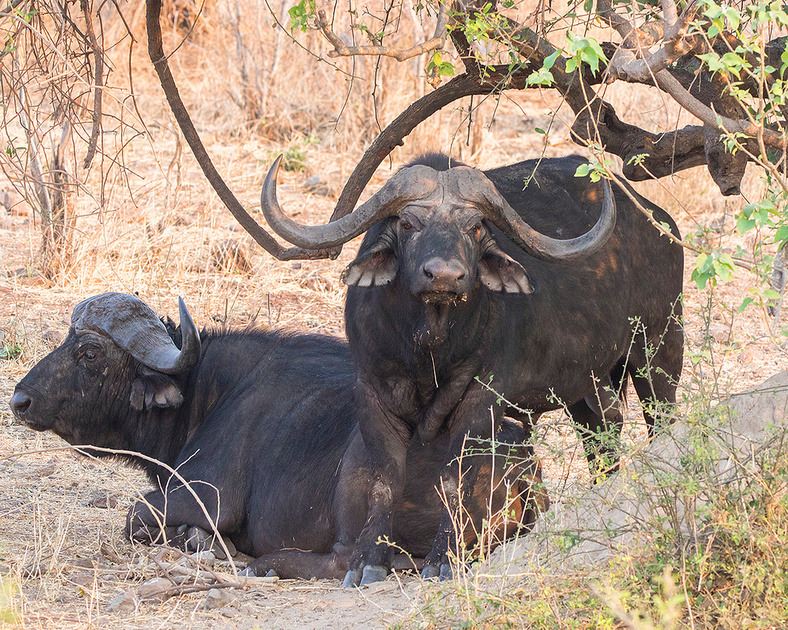 Bull Buffalo
Bull Buffalo
Our morning game drive on September 22 along the floodplain in Chobe National Park encountered thousands of impala and zebra. We saw a large male sable antelope, a first for the trip. Our lodge was about a ten minute drive from the park entrance. We saw a lone spotted hyena crossing the road before sunrise. Difficult light for photography. We also saw an enormous crocodile sunning on the river bank. He was quite wary and slipped into the river while we were still hundreds of yards away. On our afternoon game drive we came across a small herd of elephant and lesser numbers of zebra, impala, baboon, and kudu than we observed on the morning game drive.
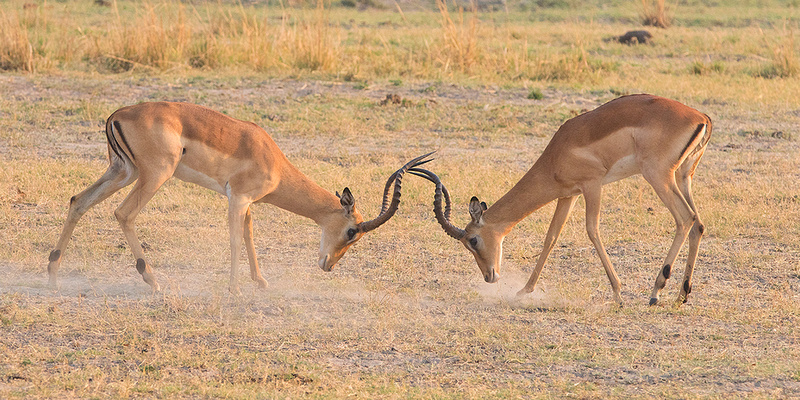 Impala Rams Sparing
Impala Rams Sparing
 Sable Antelope
Sable Antelope
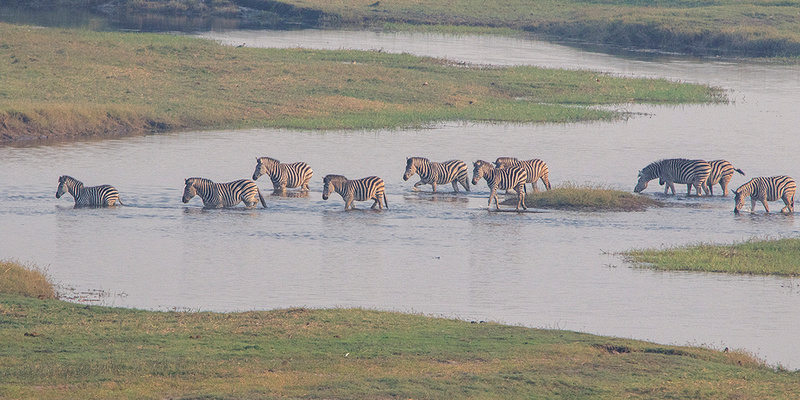 Zebra Herd Crossing the Chobe River
Zebra Herd Crossing the Chobe River
The morning and evening game drives on September 23 did not yield any new mammal species. Towards sundown we photographed a giraffe as he worked his way through the brush and emerged onto the open floodplain to drink in nice warm evening light. We also saw our first southern carmine bee eaters. A beautiful migratory species that has just arrived back in Botswana.
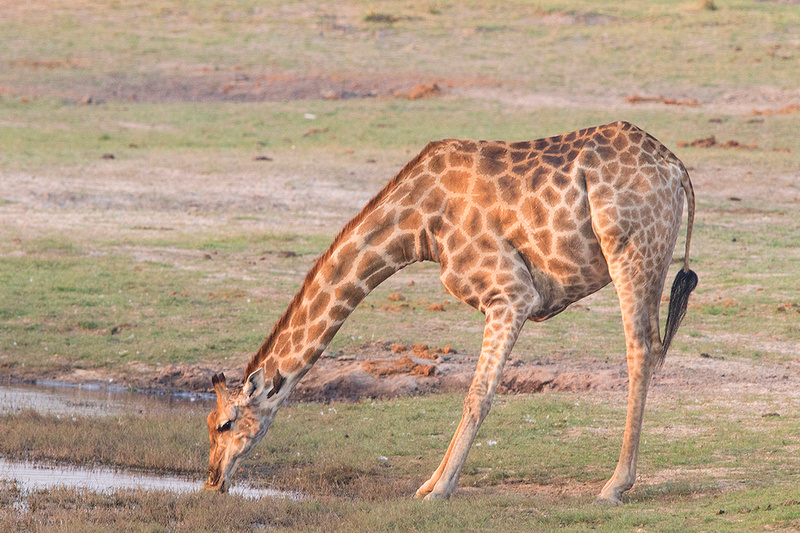 Adult Giraffe
Adult Giraffe

Giraffe (Note the Piles of Elephant Dung)
We further explored the park on an all day game drive on September 24. We had great looks at two adult male lions and then raced to a reported leopard sighting.

Male Lion
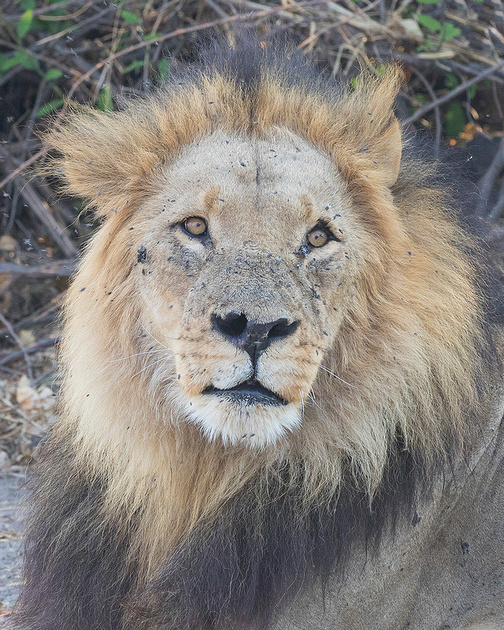
Male Lion
Both sightings were excellent for photography. It turned out that there were three leopards, possibly an adult female and two mostly grown young. They had stashed an impala in a tree next to the road and we were able to observe and view them at extremely close range. This was the only time on the trip where there was a bit of a traffic issue as over a dozen vehicles were crowded together hoping for a clear view.
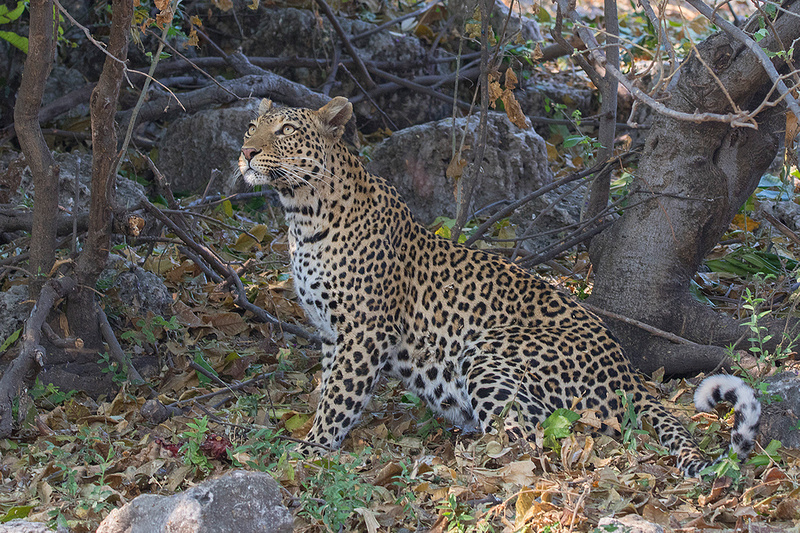 Leopard
Leopard
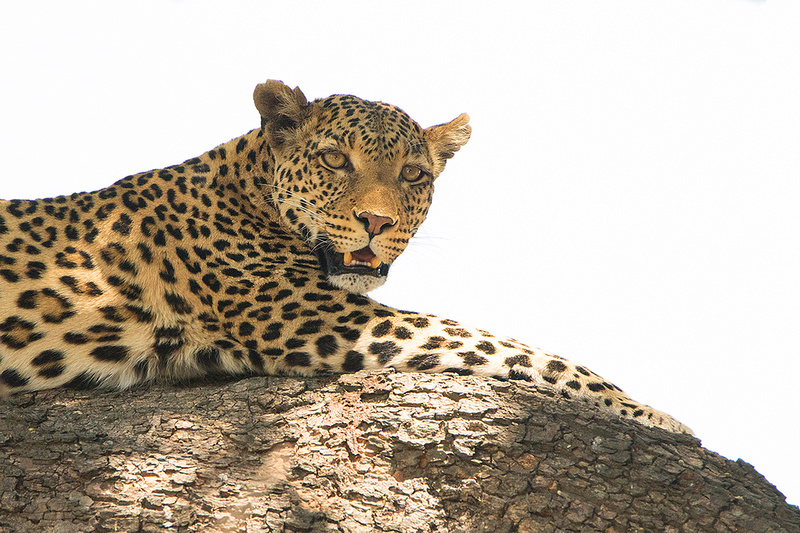 Leopard
Leopard
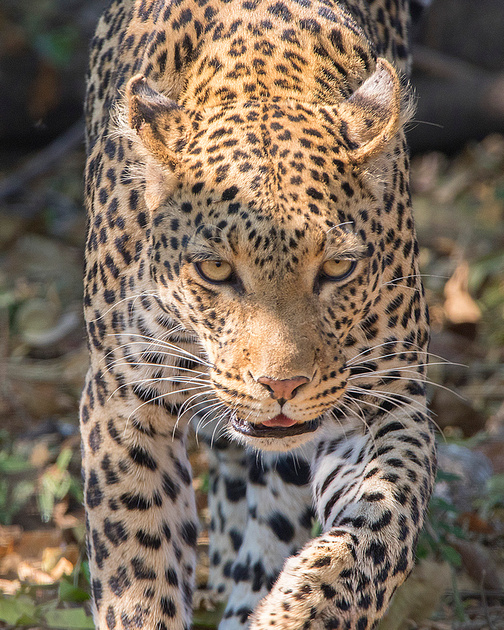
Leopard
We had been cautioned that hippos can be extremely aggressive if you get between them and the safety of water. We found a large male hippo alongside the road and he charged at very close range. Lots of dust, hissing, drooling and open mouth threat gestures. Pretty impressive. Crocodiles kill more humans in Africa than any other predator, but hippos lead the list for herbivores. After lunch we encountered numerous small herds of elephant along the open floodplain which offered some excellent views of their behavior.

Agressive Hippo
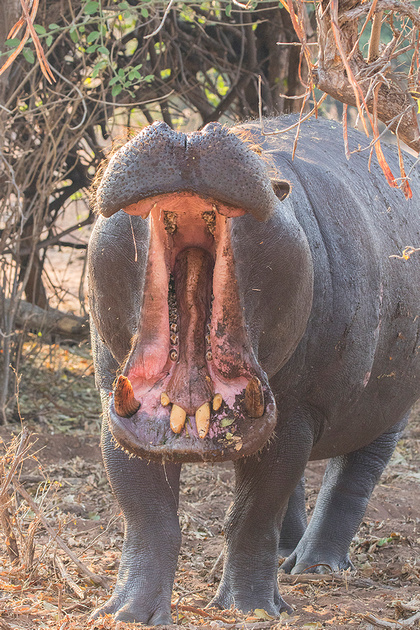
Hippo Threat Display
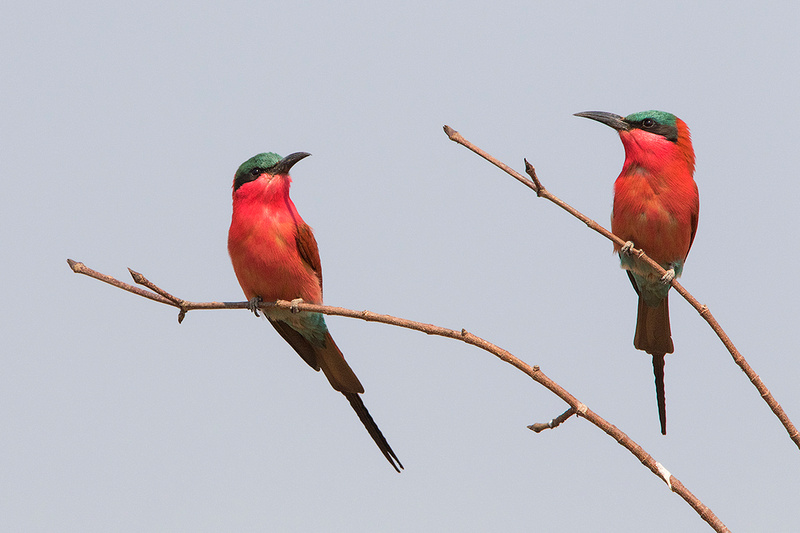 Southern Carmen Bee Eaters
Southern Carmen Bee Eaters
We departed Baobob Camp before daylight on September 25th. I had packed away my camera equipment for the 50 minute drive, so of course we saw two spotted hyena, two adult male lions, and six wild dogs along the road as we drove through the park on our way to Kasane Airport. AGHHH! I did snag a few very grainy wild dog photos out of the bus window using my I-phone.
 African Wild Dog
African Wild Dog
We flew from Kasane Airport to Santawani Camp on a tributary to the Okavango Delta adjacent to Moremi National Park. This camp had access to a private concession which allowed off-road travel. This allows animals to be located by following their tracks cross country. We did a brief late morning game drive and settled into camp. Temperatures here were quite warm with mid day temperatures over 100 degrees. On our first afternoon game drive we tracked a leopard to its kill. The cat had stashed an impala in a tree and gave us some nice photo opportunities. We also tracked and located a pride of six lions. In addition, we encountered kudu, impala, warthog, elephants and baboons. A very good start for Santawani Camp.
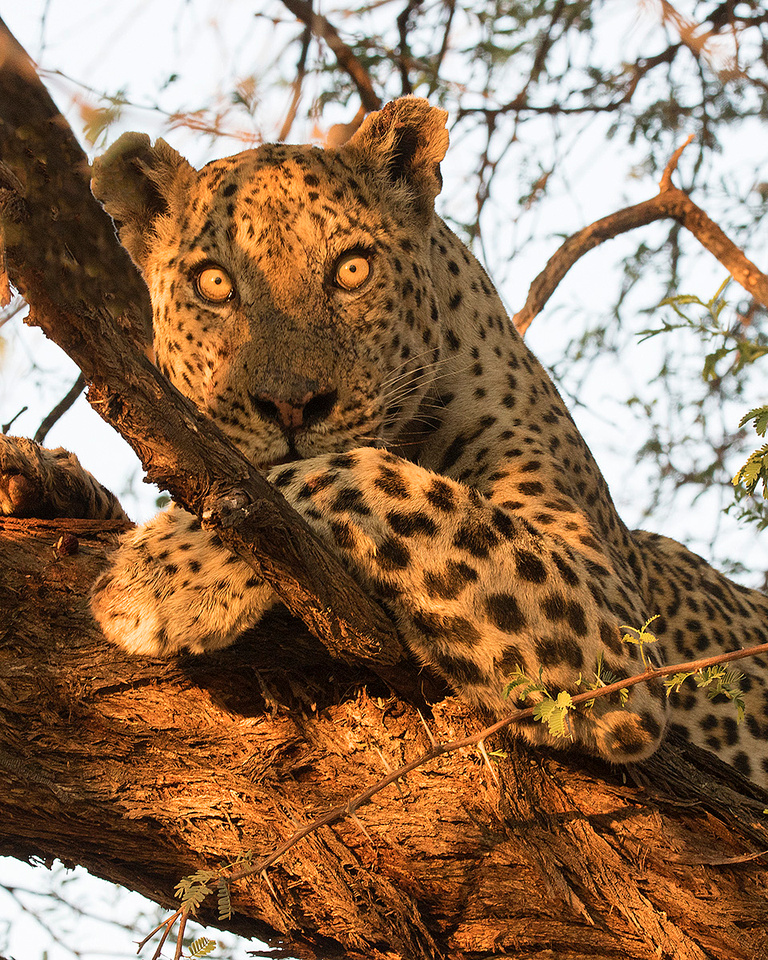
Leopard
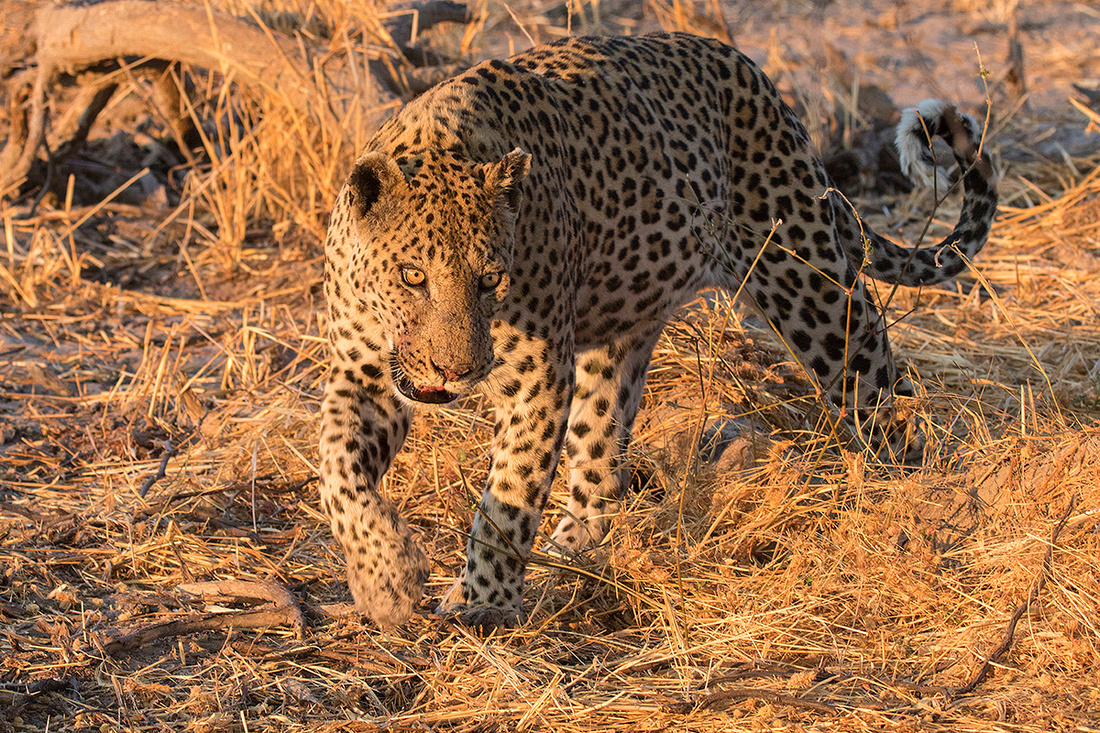 Leopard
Leopard
Santawani Camp had a smallish manmade waterhole about 150 yards from camp. This water source was used by an almost unending stream of wildlife all day long.
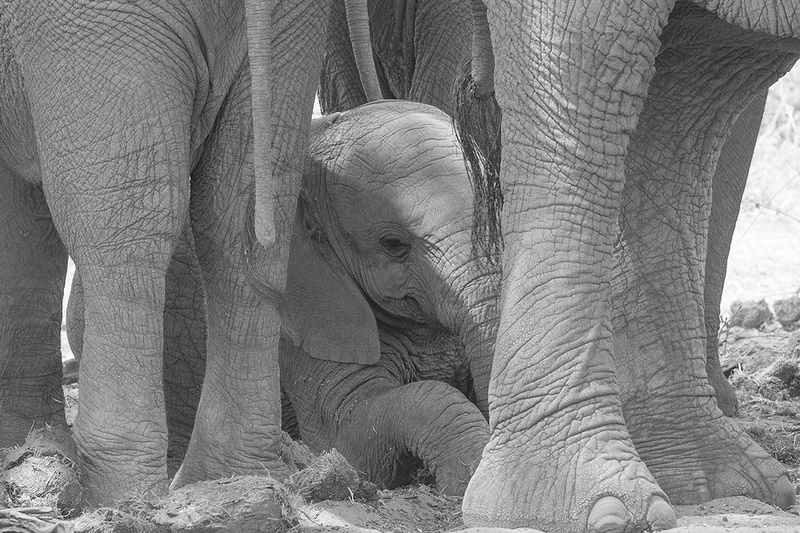 Elephants at Camp Waterhole
Elephants at Camp Waterhole
Shortly after daylight on September 26 we were treated to a sighting of a honey badger digging away near the waterhole. September 26th was one of our most productive game drive days with hundreds of elephants observed along the river.
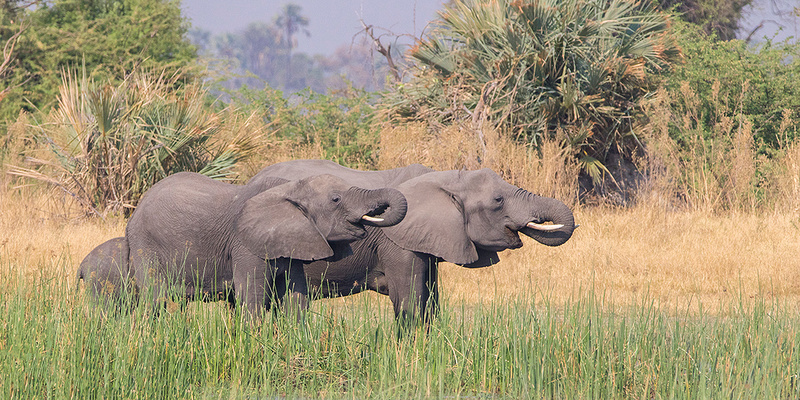 Elephants
Elephants
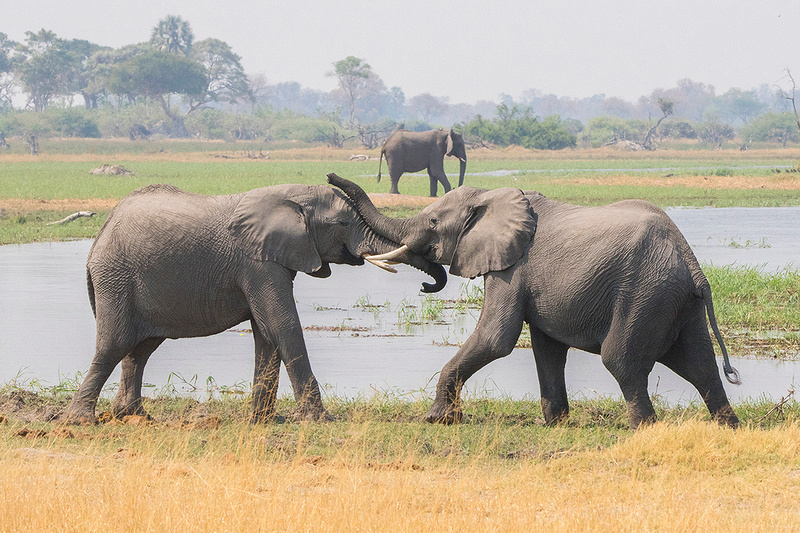 Grudge Match
Grudge Match
In addition, we photographed kudu, warthog, giraffe, buffalo, red lechwe, jackal, steenbuck, slender mongoose, impala, wildebeest, crocodile, hippo, baboon, vervet monkey, lion, leopard, yellow mongoose, and dwarf mongoose. The area near the river was very lush with dense stands of tall grasses and sedges. Red lechwe are an antelope common in the delta and strongly associated with the wet areas near the river.
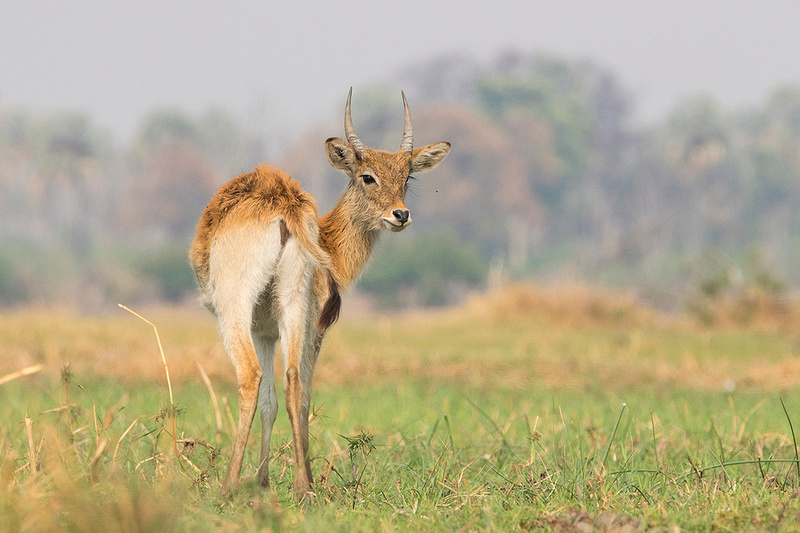 Red Lechwe
Red Lechwe
On September 27th we encountered many of the same species as on the previous day. However, we also observed and photographed ostrich, zebra and a pride of eight lions. We had the excitement of elephants in camp and at the waterhole all day, which made it difficult to walk through camp. We made several attempts to skirt around all the elephants and get to afternoon high tea.
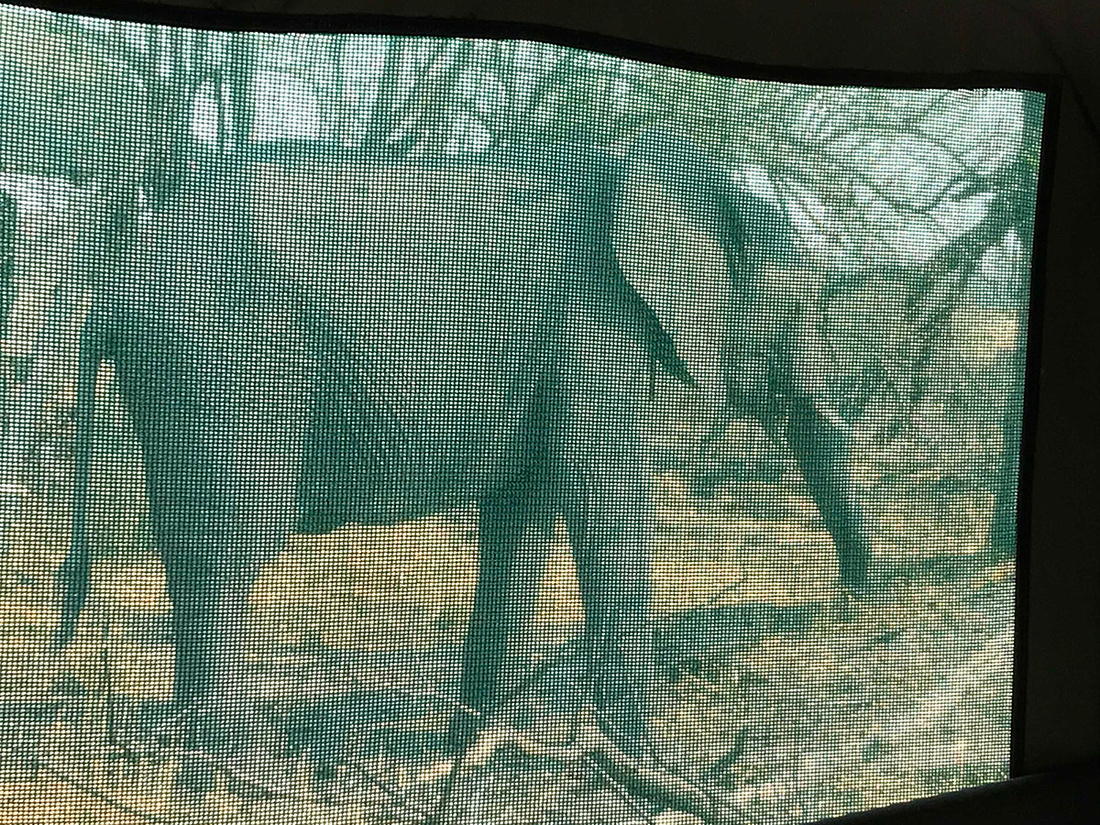 Elephant Through the Screen Window of our Tent
Elephant Through the Screen Window of our Tent
 Adult Male Ostrich
Adult Male Ostrich
September 28th was our last morning game drive as we worked the area near camp and the airstrip. We had some nice looks at black-backed jackals, elephants, impala, warthog, and waterbuck. We also tracked a lioness to her napping location. She was out in the open and allowed a close approach in nice morning light. At some point she tired of us disturbing her nap and gathered her legs under her and starting lashing her tail. She charged, covering half the distance to the truck in her first bound. Fortunately, she decided not to continue her charge and walked away into the brush. Way to close. The guide commented that he had never seen a lion react that way before.
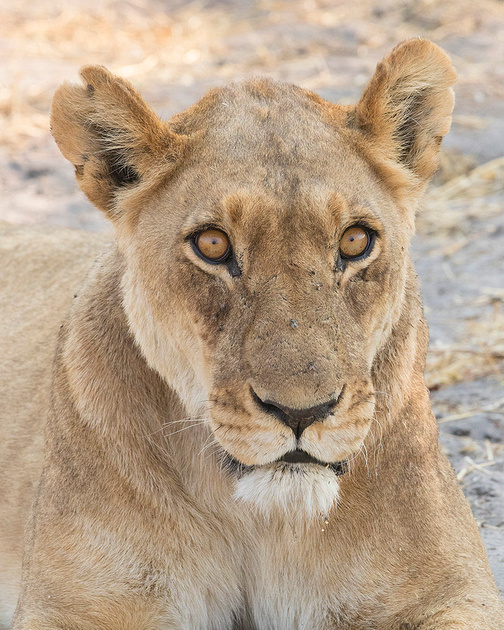
Sleepy Lioness
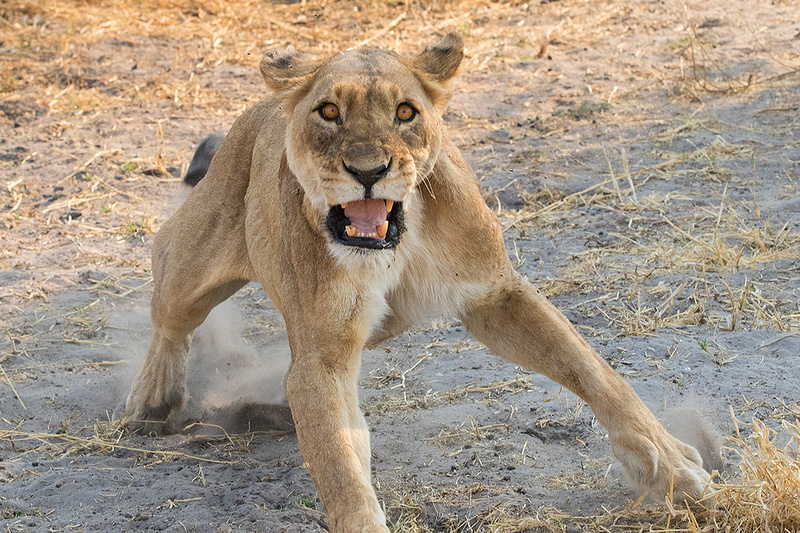
Charging Lioness at 150mm

Warthog
We flew back to Kasane Airport on September 28th and transferred by bus to Victoria Falls, Zimbabwe. We stayed the next two nights at Shearwater Explorers Village. The air conditioning was most welcome. We visited Victoria Falls that afternoon. Victoria Falls is considered the largest curtain of water in the world and one of the seven wonders of the world. Peak flow exceeds 1.4 billion gallons of water per minute. September 28th turned out to be World Tourism Day and Victoria Falls Park offered free admission. It was extremely crowded. Even late in the dry season the falls are still impressive with a maximum drop of over 110 meters. During the wet season the falls are nearly a mile wide. Photography may be easier during the dry season as the mist from the falls at full flow is reported to be quite dense.
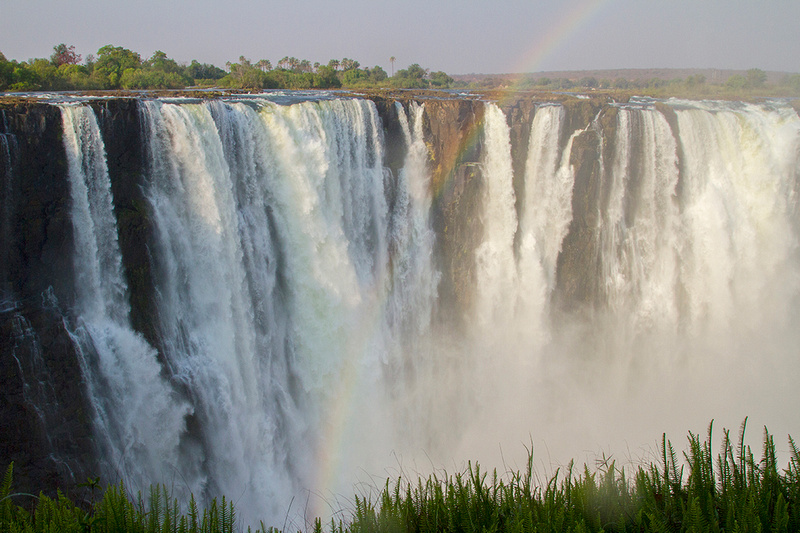 Victoria Falls
Victoria Falls
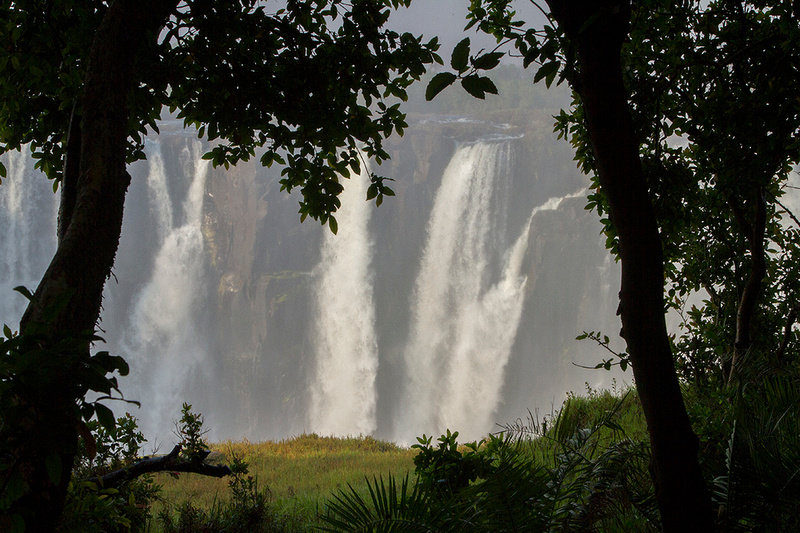 Victoria Falls
Victoria Falls
On September 29th we opted for a private morning birding tour on the Zambezi River. We added a few additional species to the life bird list. Wildlife sightings were relatively sparse. We did find a elephant laying down asleep on the riverbank and many hippos.
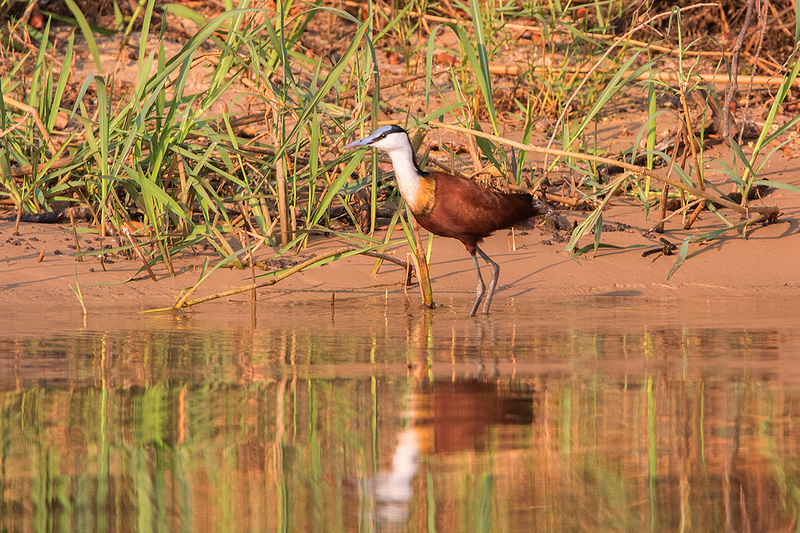 African Jacana
African Jacana
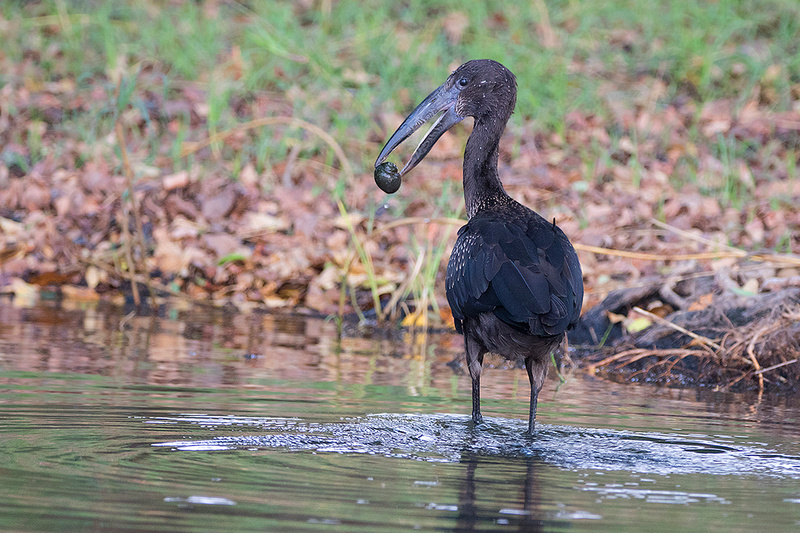 African Openbill Stork
African Openbill Stork
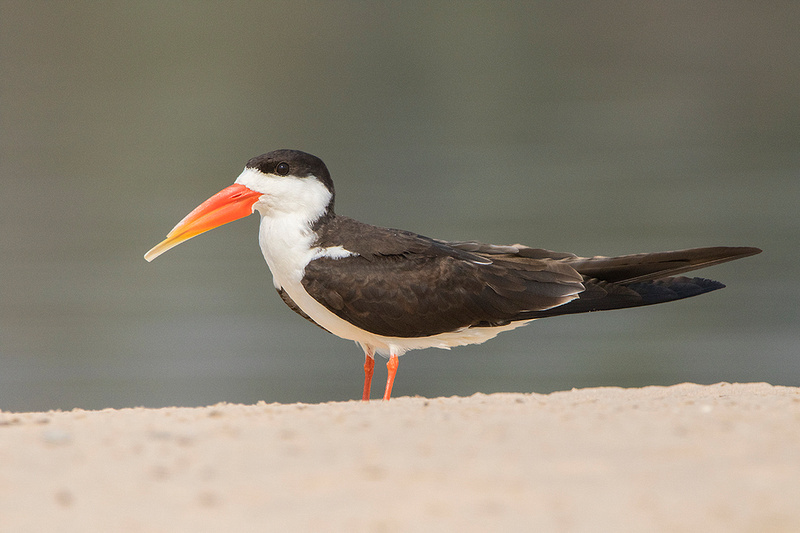 African Skimmer
African Skimmer
 Sleepy Elephant
Sleepy Elephant
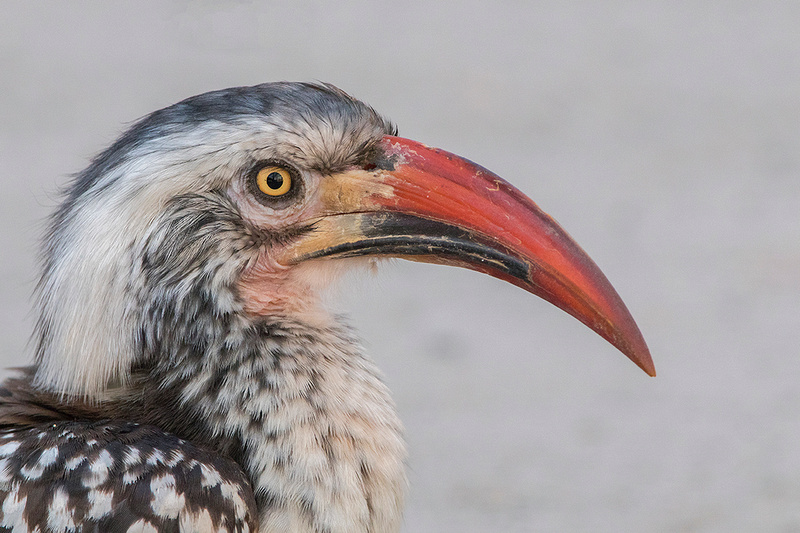
Southern Red-Billed Hornbill
We did some shopping at the local open air market and purchased some Shona stone statuary and wood carvings. Bartering and trade were expected and welcomed. American t-shirts, hats and shoes were readily accepted as currency. Our farewell sunset dinner was served onboard a large boat while cruising the Zambezi River. The next morning we began our 40 hours of travel to return home.
The OAT Ultimate Africa trip greatly exceeded my expectations. I would also highly recommend the pretrip to the game reserve in South Africa.
I purchased two apps for my phone before the trip which proved useful. These apps were "Stuart's Complete Guide to the Mammals of Africa" and "Sasol E-Birds of Southern Africa". The hardcover field guides would be preferable, but the 44 pound weight limit mitigated against packing several large field guides. I ended up with 140 life birds from the trip and have at least two additional bird photos which I have yet to identify.
I came home with a little over 16,000 photos. Almost all of the wildlife photos included here were captured using a Canon 7D2 crop-frame camera and a Sigma 150-600mm telephoto zoom lens. The zoom lens proved entirely adequate. A camera with better low light capabilities would have been useful under a few situations.
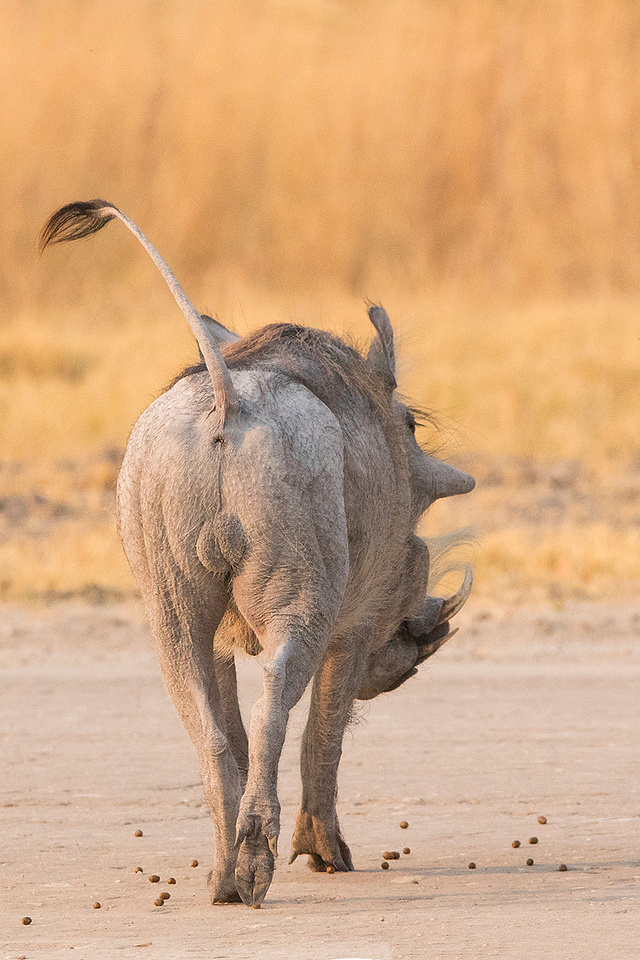
The End
We decided to visit Yellowstone National Park fairly early in May to avoid the crowds of summer. We arrived the afternoon after the official park opening. We also felt that we were more likely to find wildlife, especially grizzly bears, close to the roads before traffic pushed them further away. On this trip we were accompanied by my parents (Ted and Mildred Bogener). We stayed in Gardiner Montana and enjoyed near perfect weather. All the park roads had opened by the time we left except the road over Mount Washburn. However, there was a substantial amount of snow along the roads at the higher elevations.
We entered the park in early afternoon from the west gate at West Yellowstone. On the drive between the entrance and Gardiner we saw and photographed four grizzly bears including a female with two cubs and a boar at a separate location. Both groups of bears had attracted good sized crowds but offered at least decent photo opportunities Pretty amazing as we had seen few grizzlies on previous trips to Yellowstone and always at great distances. Definitely, a highlight of the trip.
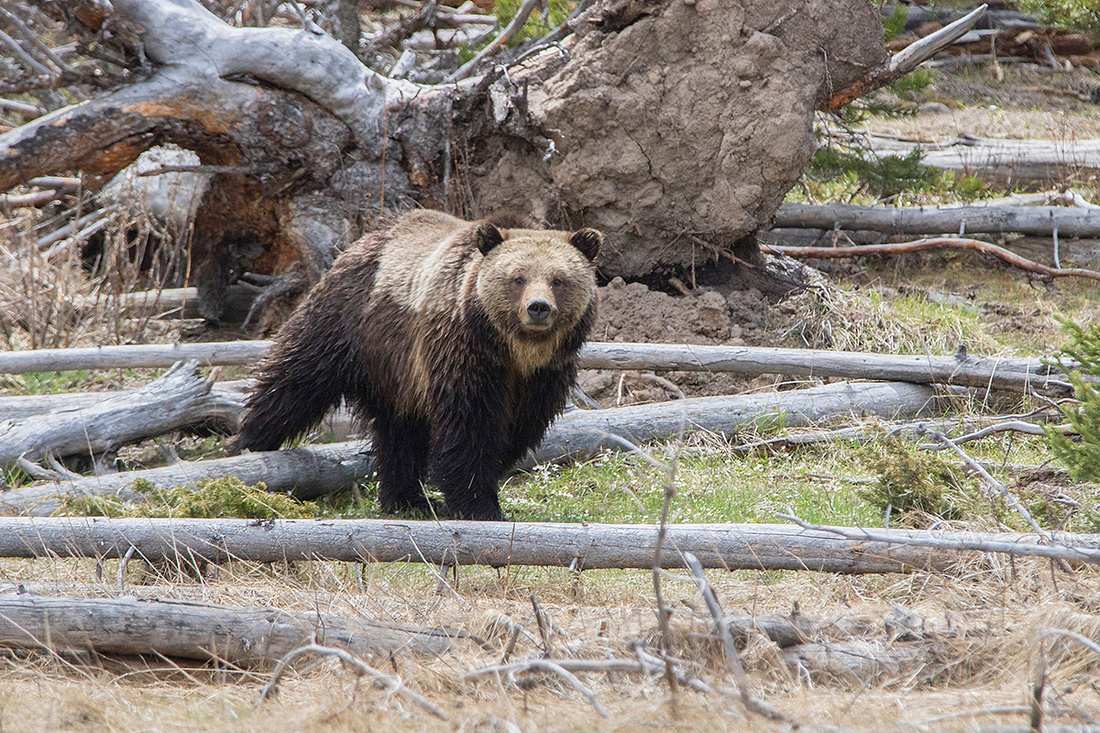 Female Grizzly
Female Grizzly
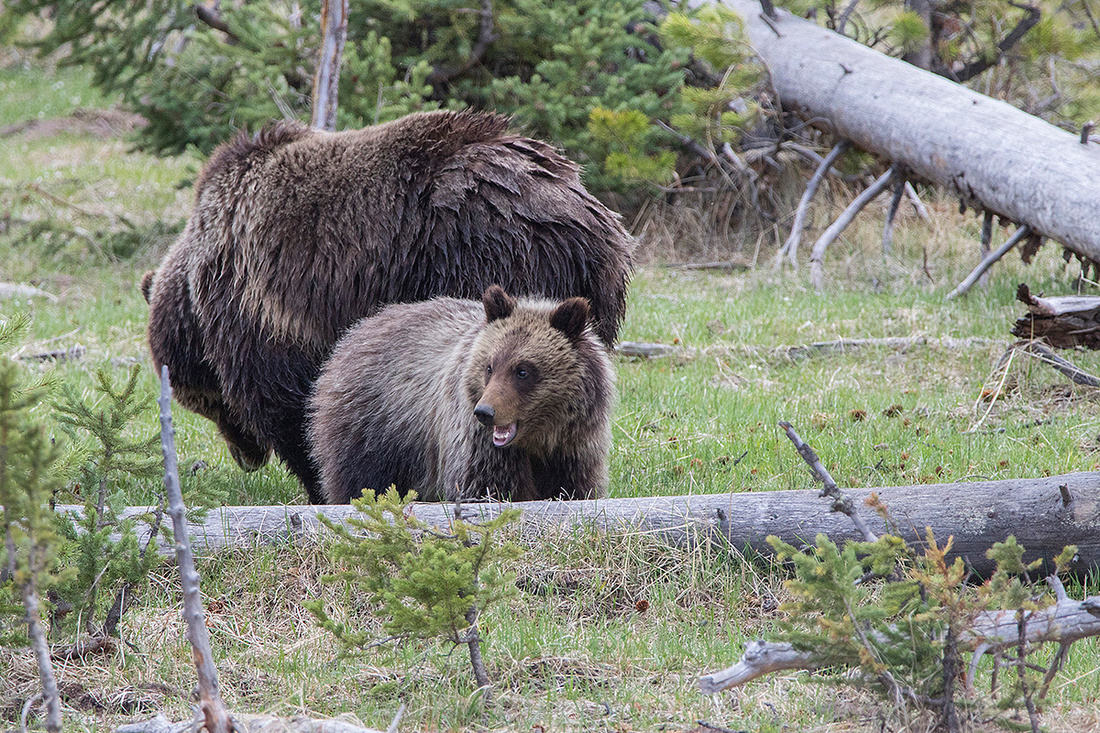 Female Grizzly with Cub
Female Grizzly with Cub
 Male Grizzly
Male Grizzly
 Male Grizzly
Male Grizzly
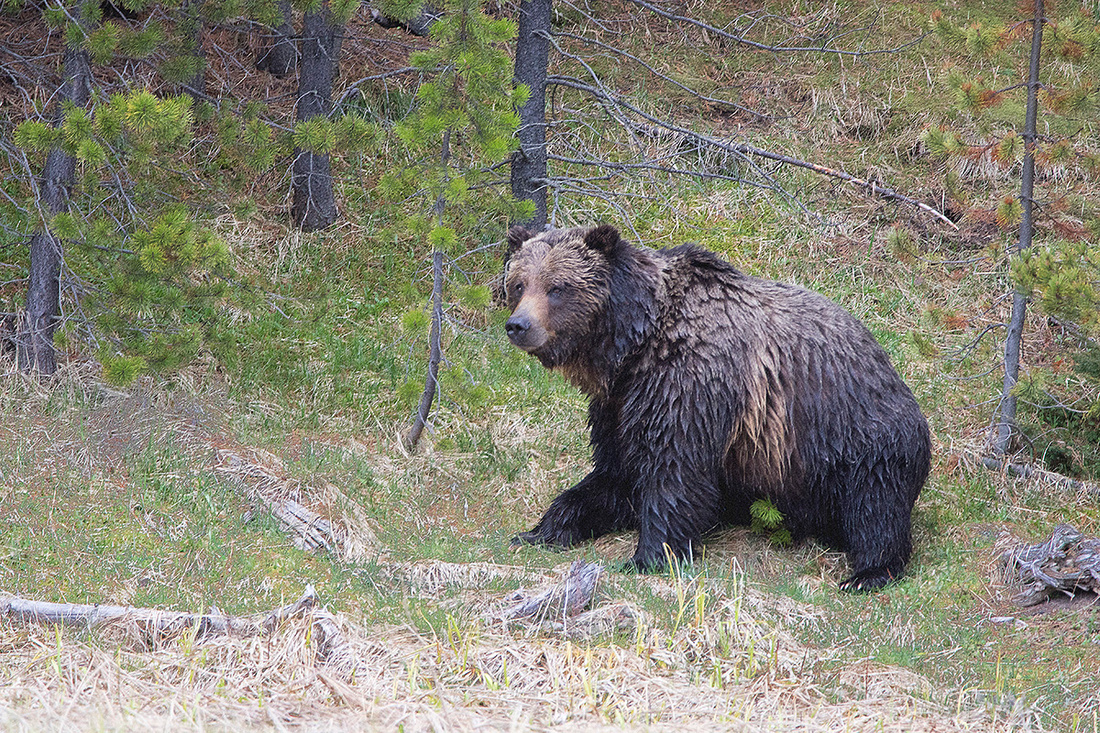 Male Grizzly
Male Grizzly
The next day we decided to check out the road between Gardnier and Cook City. We ran into a female grizzly with a yearling cub grazing very near the road. We managed to get a few images before the rangers moved everyone along.
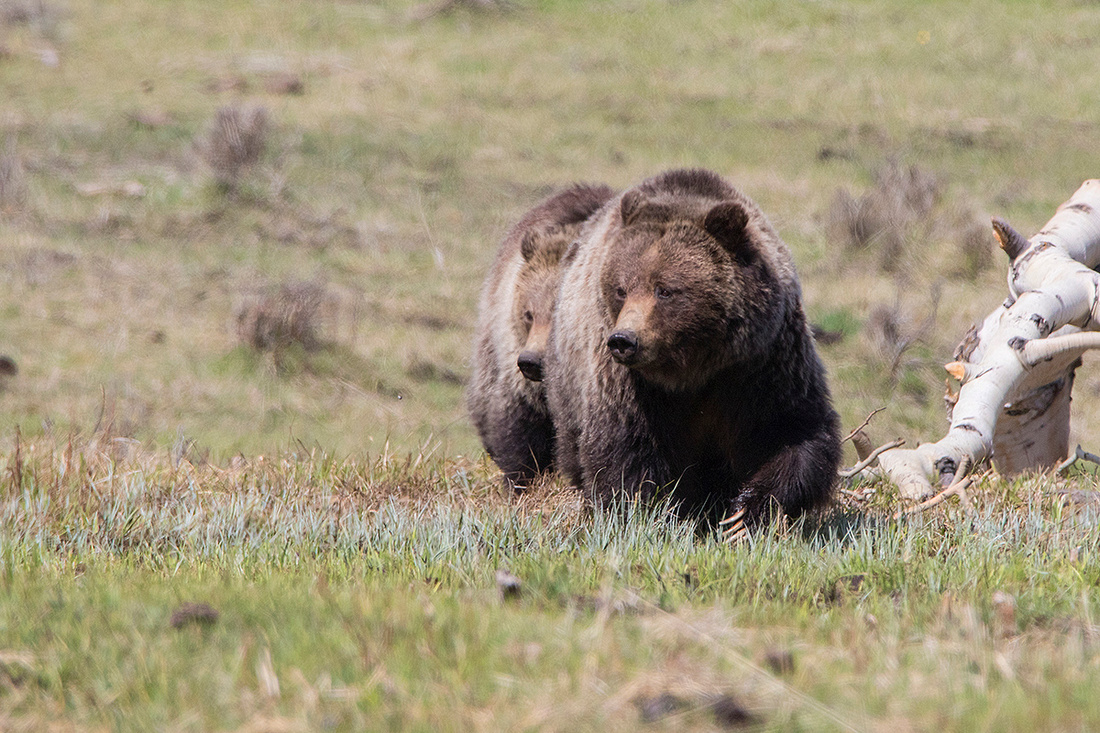 Female Grizzly with Juvenile
Female Grizzly with Juvenile
We observed a few pronghorns near Slough Creek. None were exceptional bucks, but I did get some good poses along ridge tops with a clean background. A very good day.
 Pronghorn Buck
Pronghorn Buck
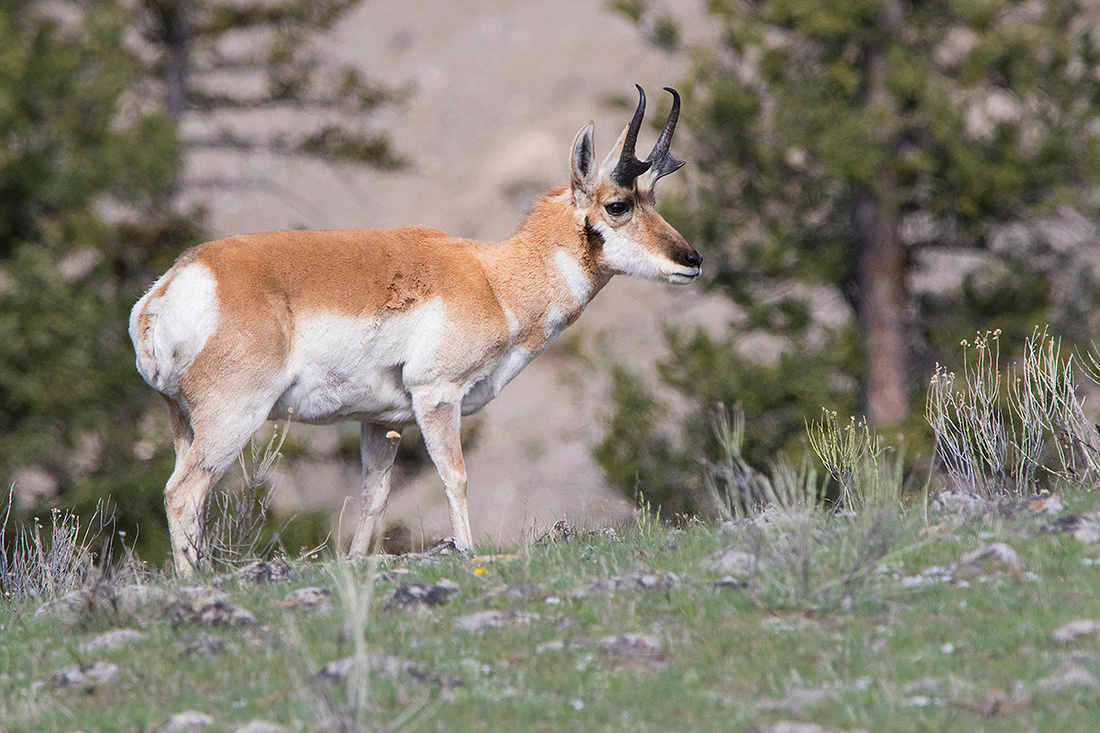 Another Young Pronghorn Buck
Another Young Pronghorn Buck
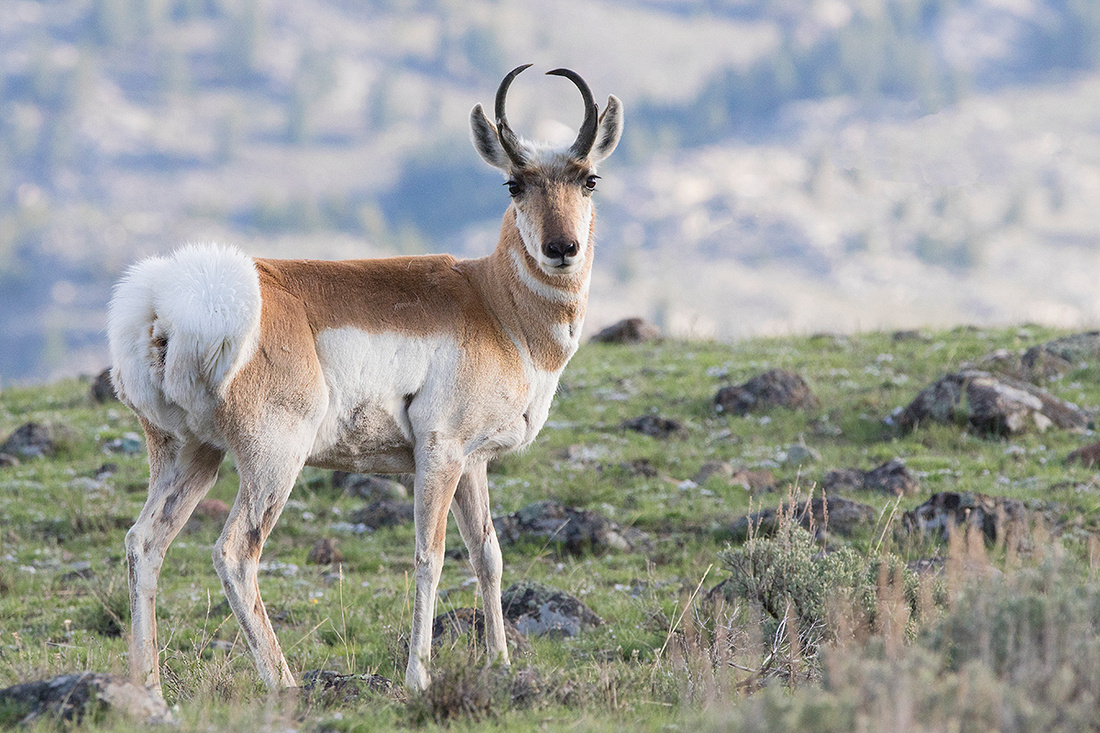 Young Pronghorn Buck
Young Pronghorn Buck
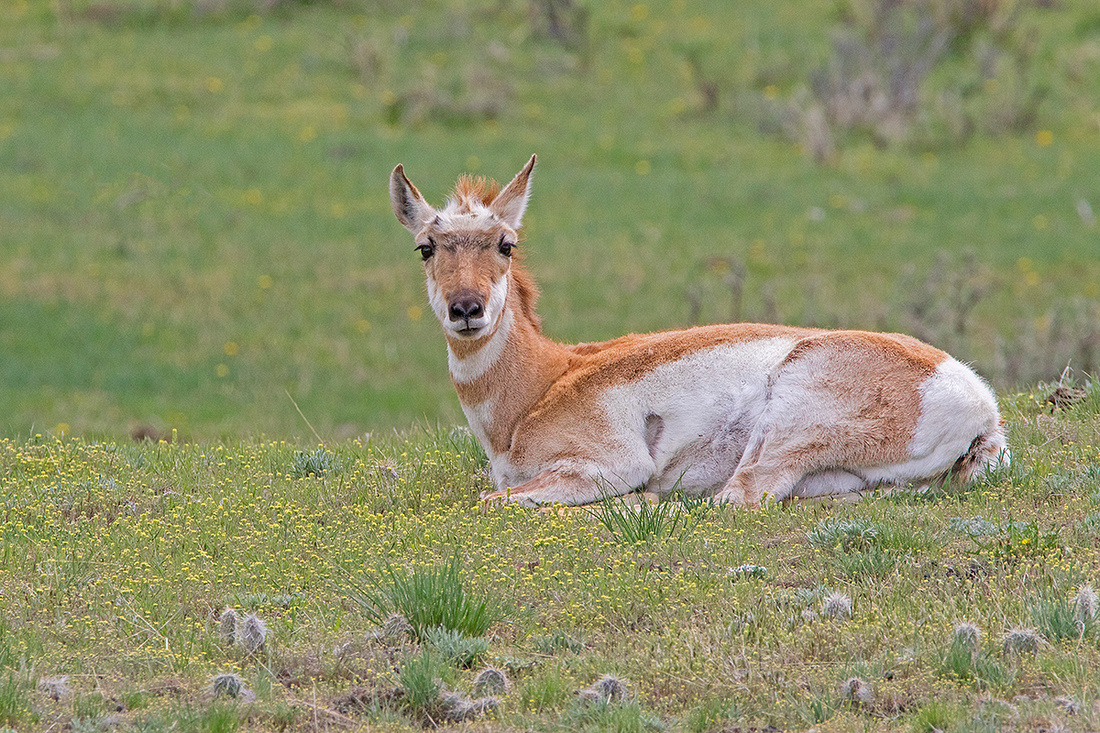 Pronghorn Doe in Wildflowers
Pronghorn Doe in Wildflowers
The next day we explored Canyon, the Lamar Valley and Silven Pass areas. Lots of snow. We saw relatively little wildlife. We did find a porcupine feeding next to the road near the east entrance.
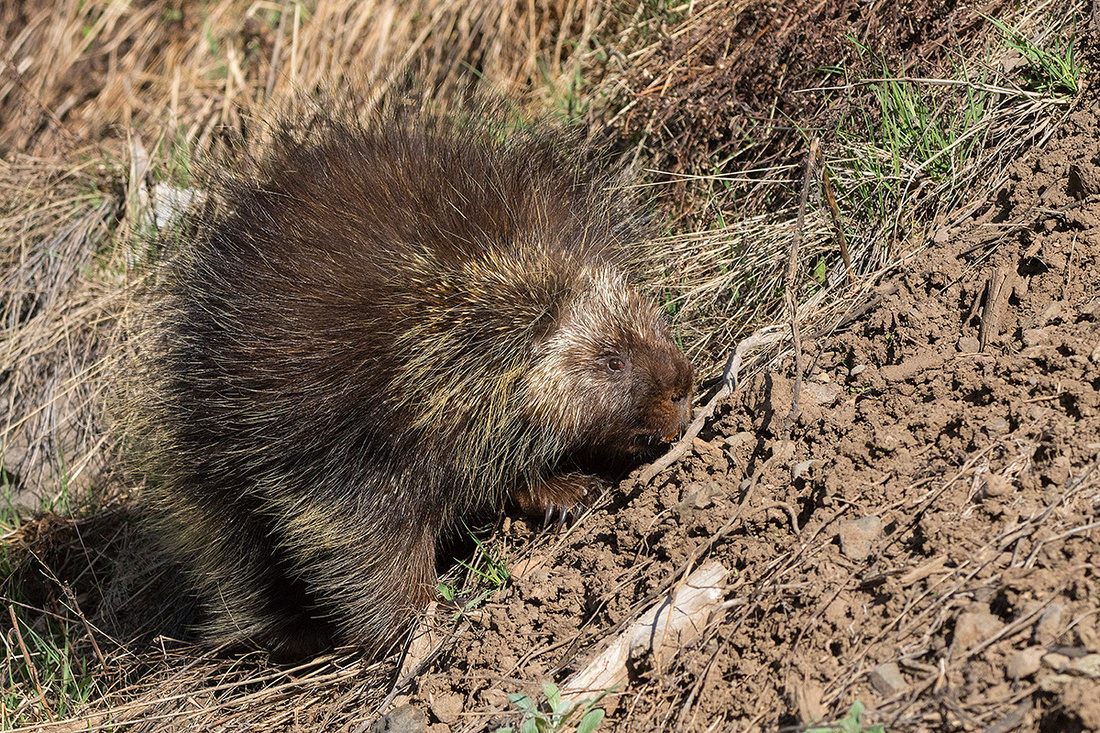 Porcupine
Porcupine
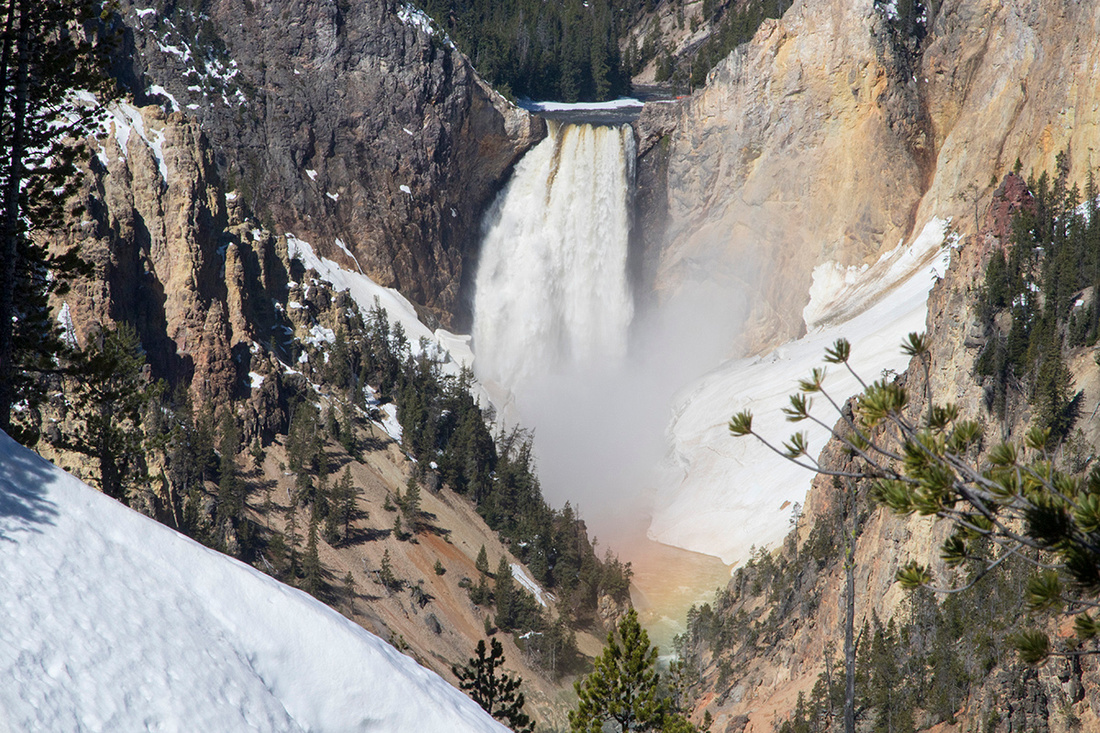 Yellowstone Falls from Artists Point
Yellowstone Falls from Artists Point
The next day we again headed towards Lamar Valley. Lots of bison (over 700 by actual count). We saw 4 wolves, three near Buffalo Ranch in Lamar Valley and another nearer Slough Creek. Lots of howling, but no hunting behavior from the group in Lamar Valley. These wolves were some distance off the road, so I really got no decent images. However, the Slough Creek wolf spooked a large herd of bison with many calves which crossed the road on the run in front of us for at least 15 minutes. I finally got a few bison action shots in good light. A little later the wolf made a brief, but distant appearance. He was wearing a large and unattractive radio collar. I did manage a few images where the collar was not evident.
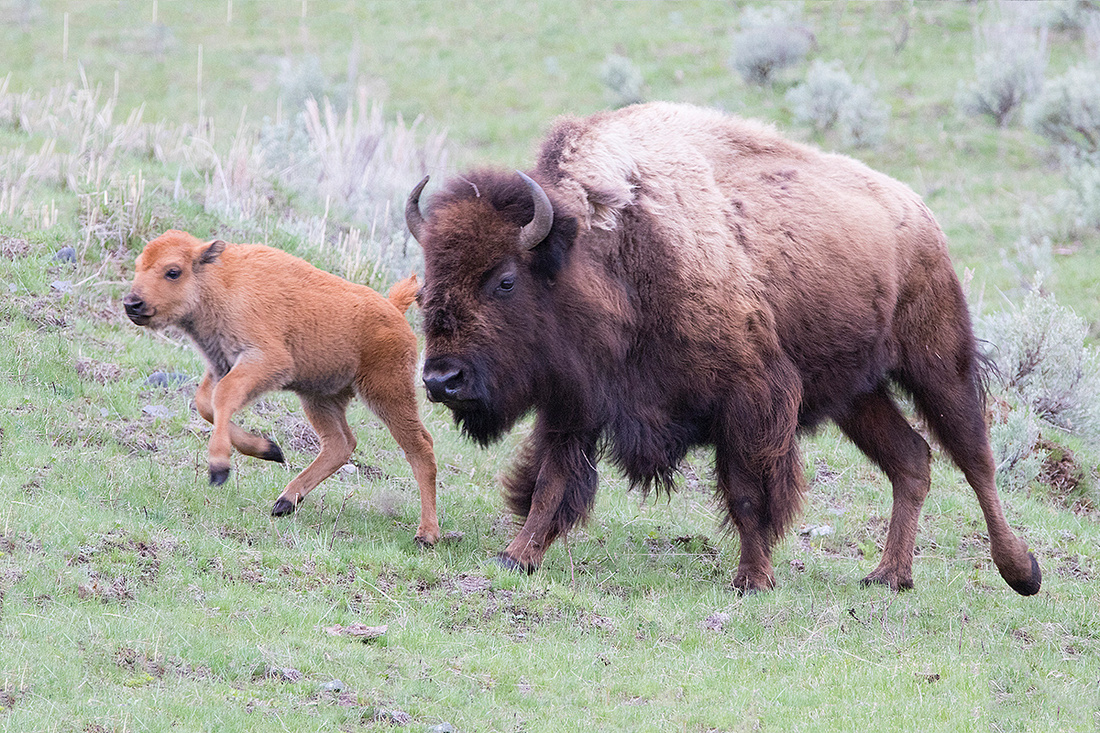 Bison on the Run
Bison on the Run
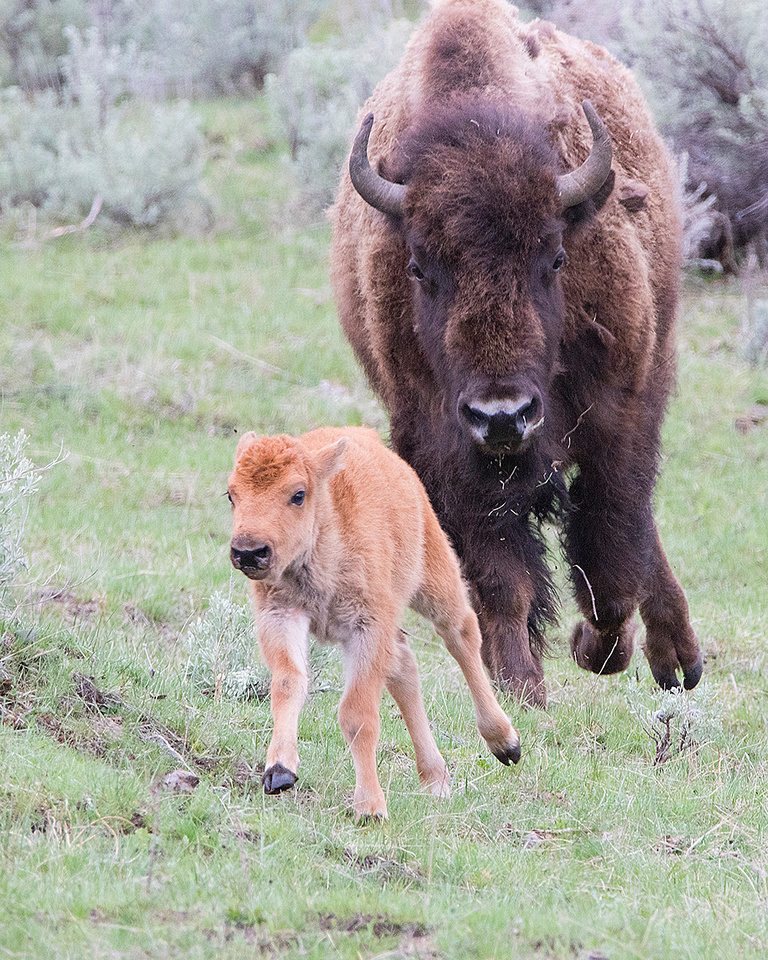
Bison Cow and Calf
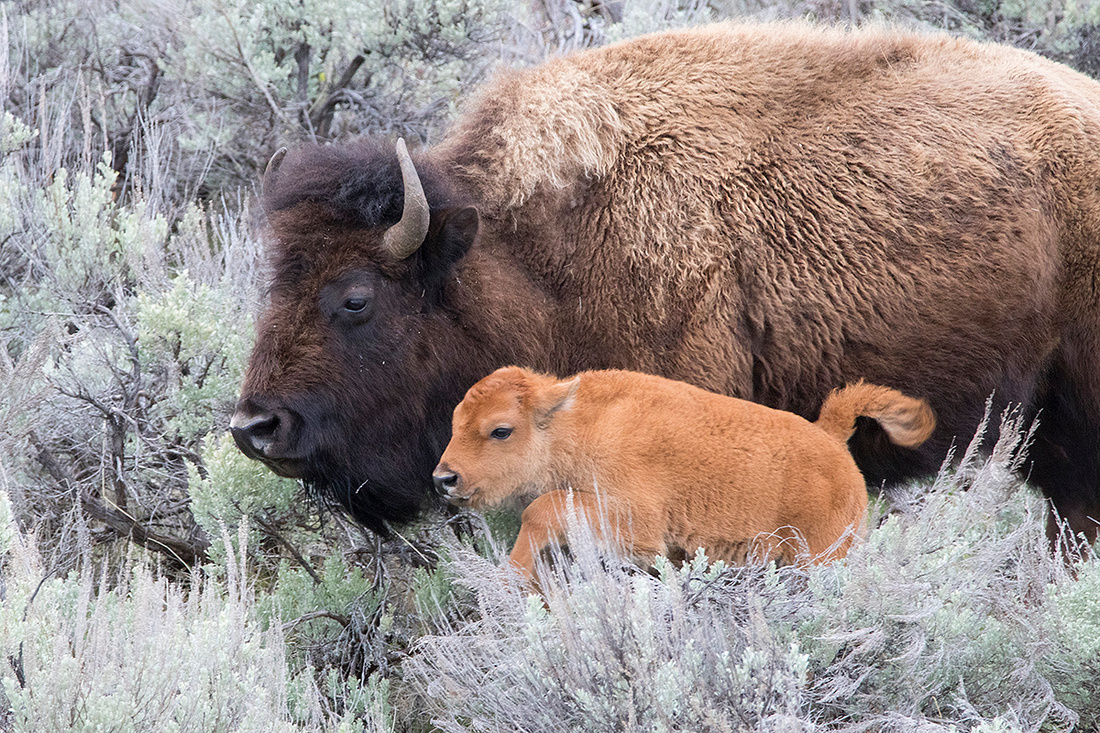 Bison in Tall Sage
Bison in Tall Sage
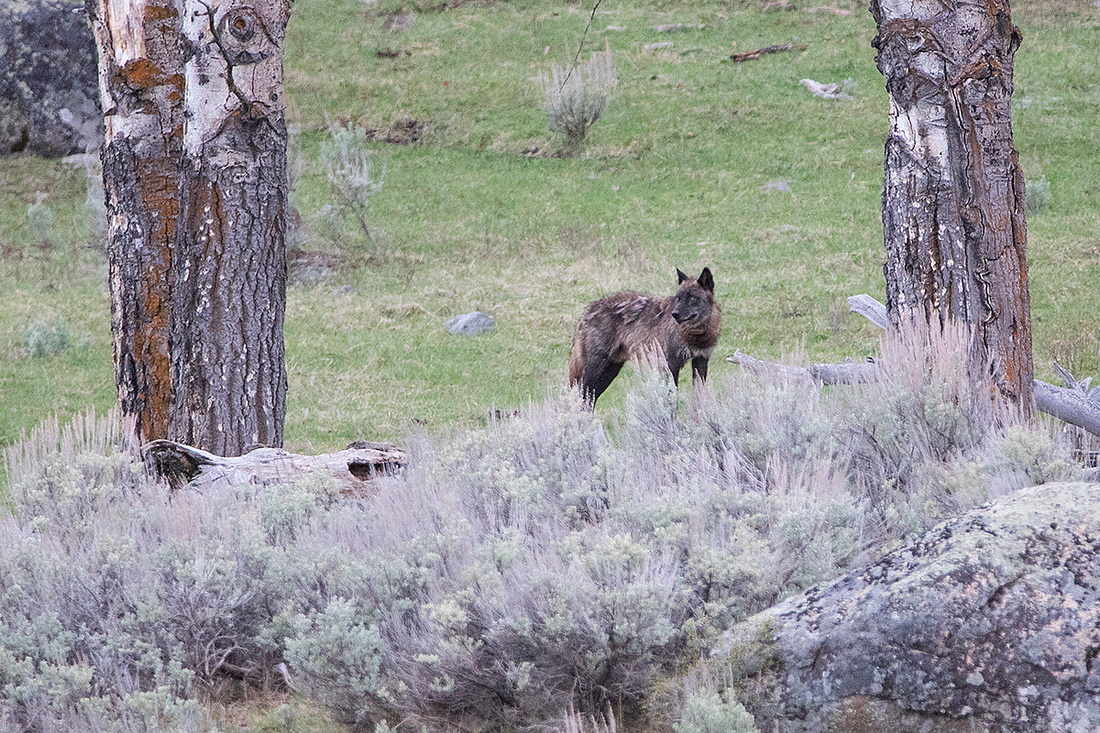 Wolf
Wolf
The following day we explored the Geyser Basins and Old Faithful area. Limited wildlife and lots and lots of tourists. I took a few scenics, but most were unimpressive.
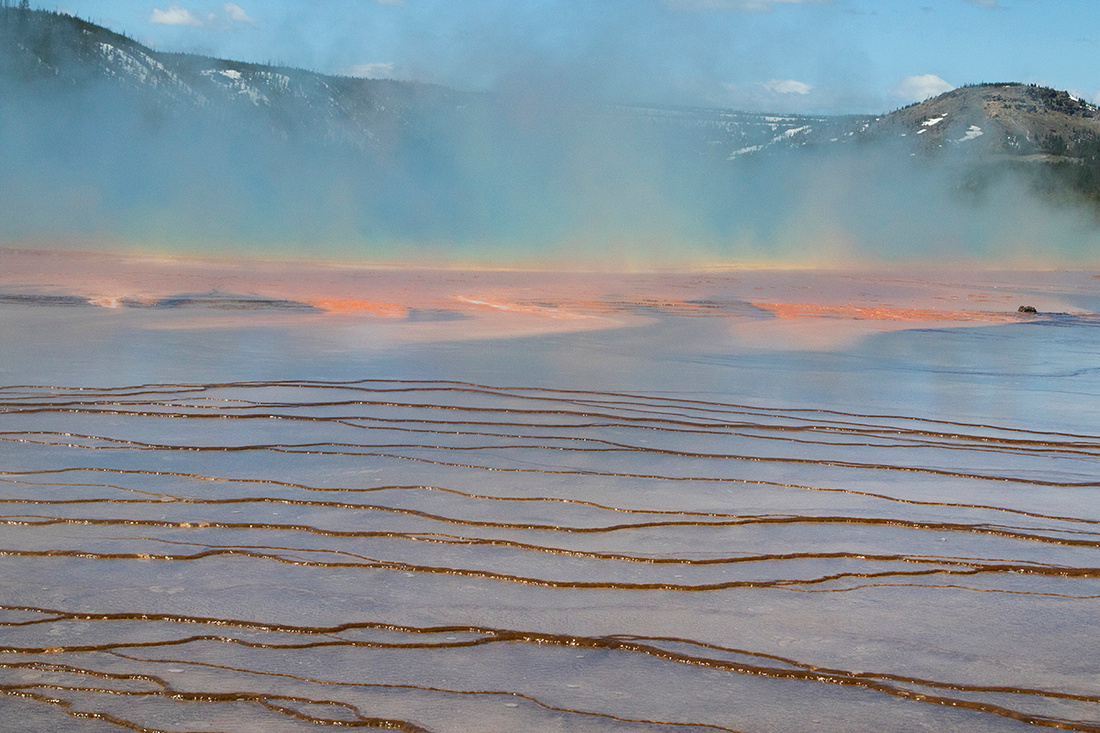 Prismatic Pool
Prismatic Pool
I managed a few frames of a federally endangered trumpeter swan along the Firehole River.
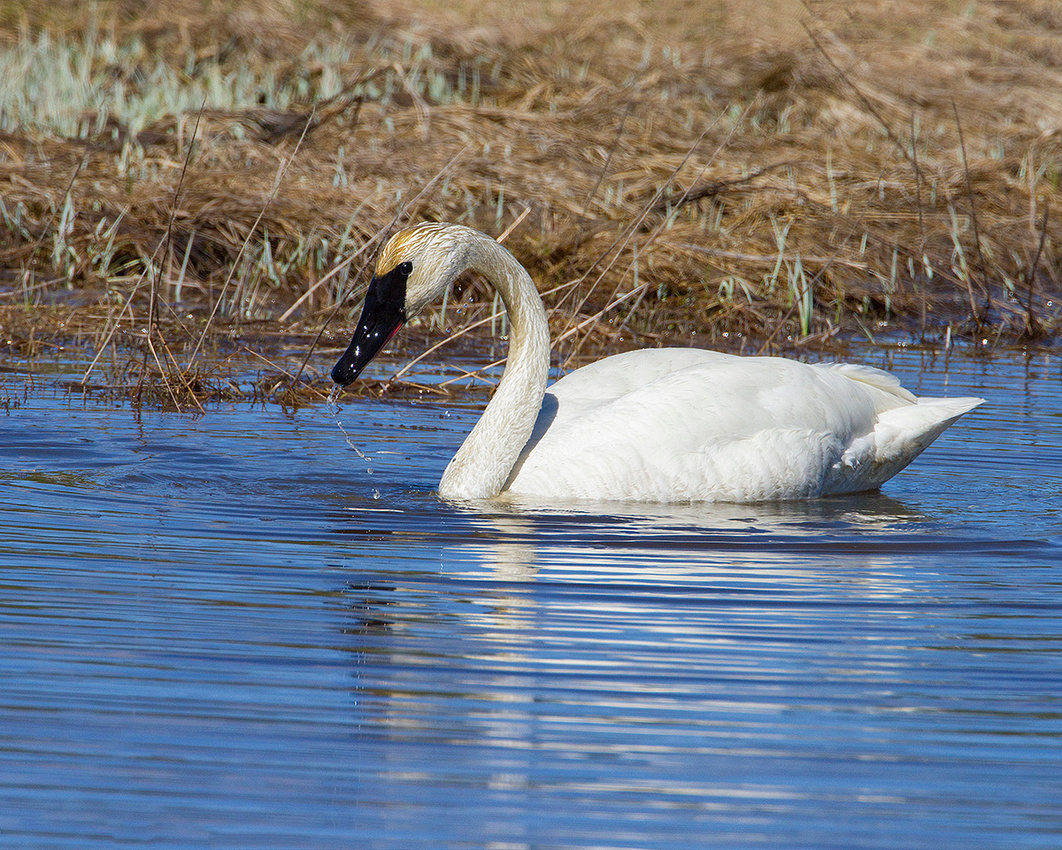 Trumpeter Swan
Trumpeter Swan
Rain was predicted the next day, so we opted to explore Bozeman and Big Sky Montana. Rain and clouds obscured many of the views, so we visited the Museum of the Rockies. Excellent dinosaur exhibit.
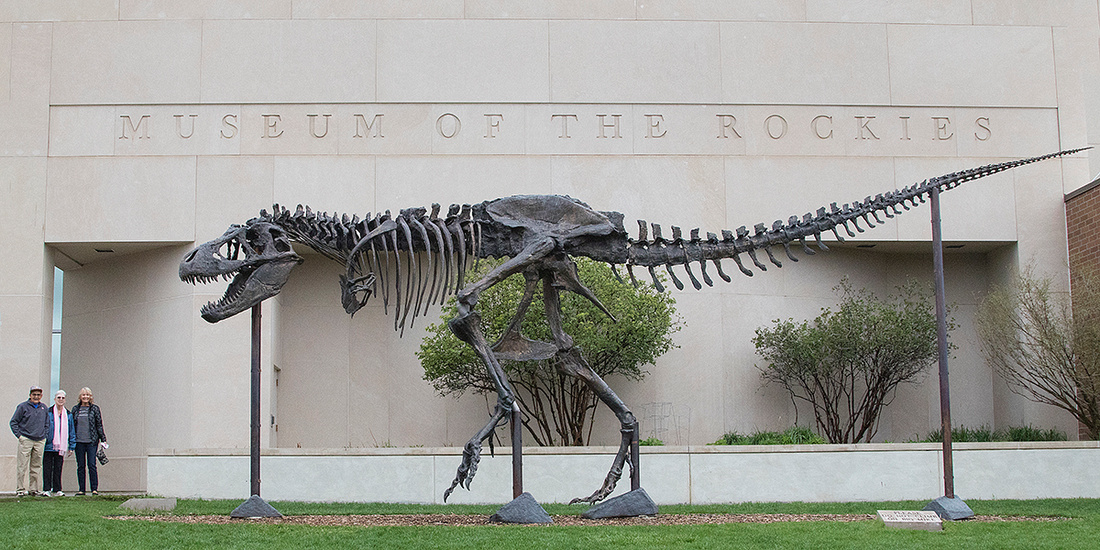 Museum of the Rockies in Bozeman
Museum of the Rockies in Bozeman
On our last day we again toured the Lamar Valley. We found a red fox actively hunting next to the road. I followed her and grabbed a few images as she hunted all around me. A beautiful and very active photo subject.
 Red Fox
Red Fox
We also observed a few female bison engaged in some form of head butting behavior.
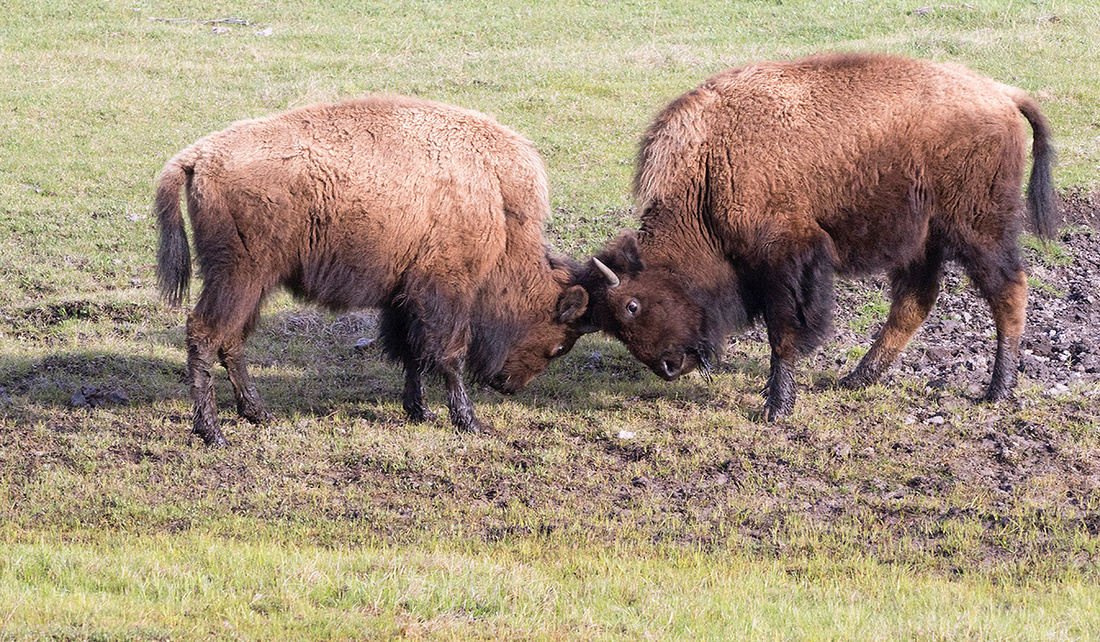 Cow Bison
Cow Bison
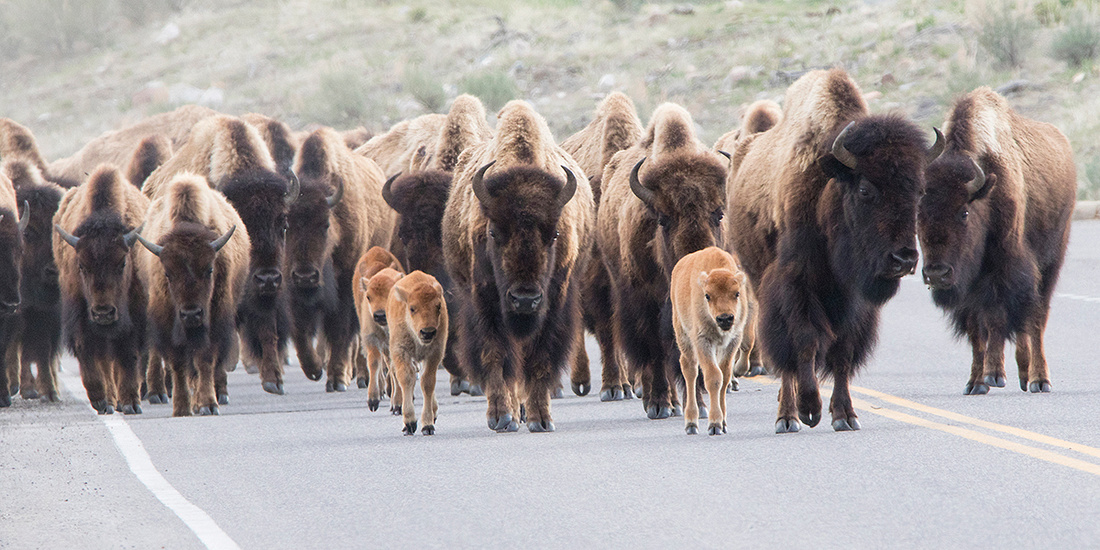 Road Hogs
Road Hogs
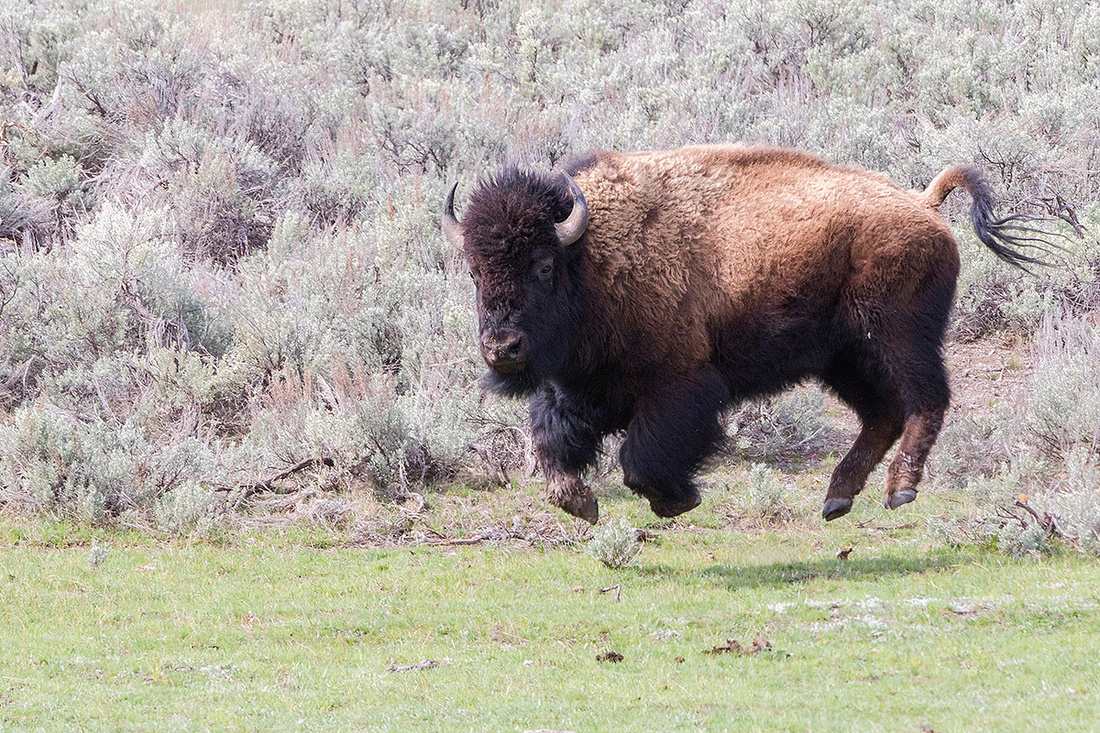 Airbourne
Airbourne
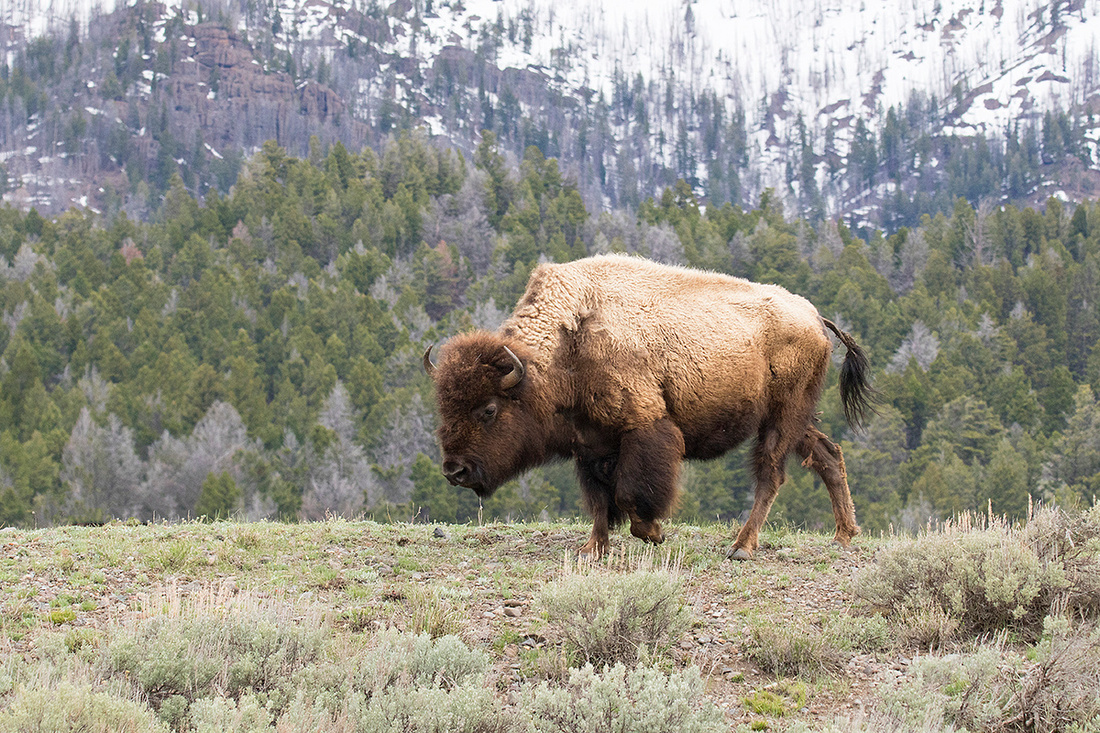 Lone Bull
Lone Bull
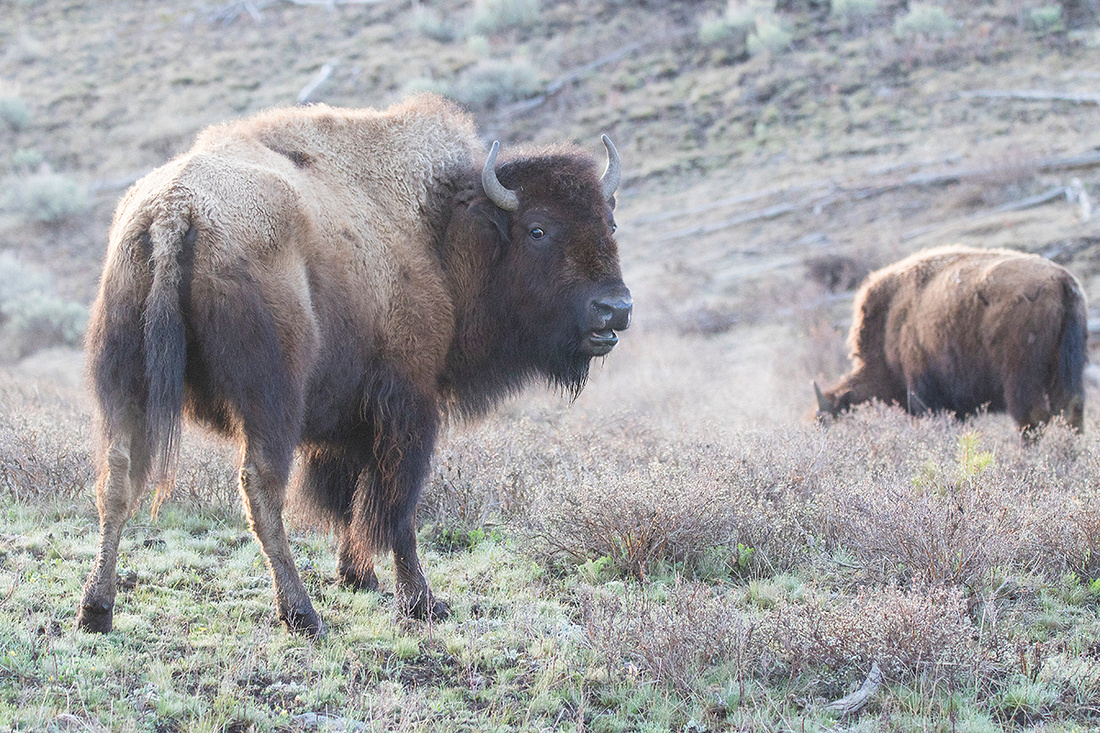 Frosty Cow
Frosty Cow
We saw several introduced mountain goats between Pebble Creek and Cook City. All were quite distant. We watched as they appeared to easily negotiate near vertical cliffs.
Elk were not at all plentiful near the road. We saw hundreds daily, frequently at less than desirable photo distances. We were a little early for elk calving and saw no calves this trip. We saw a lone mature bull in velvet, but were unable to obtain any decent images.
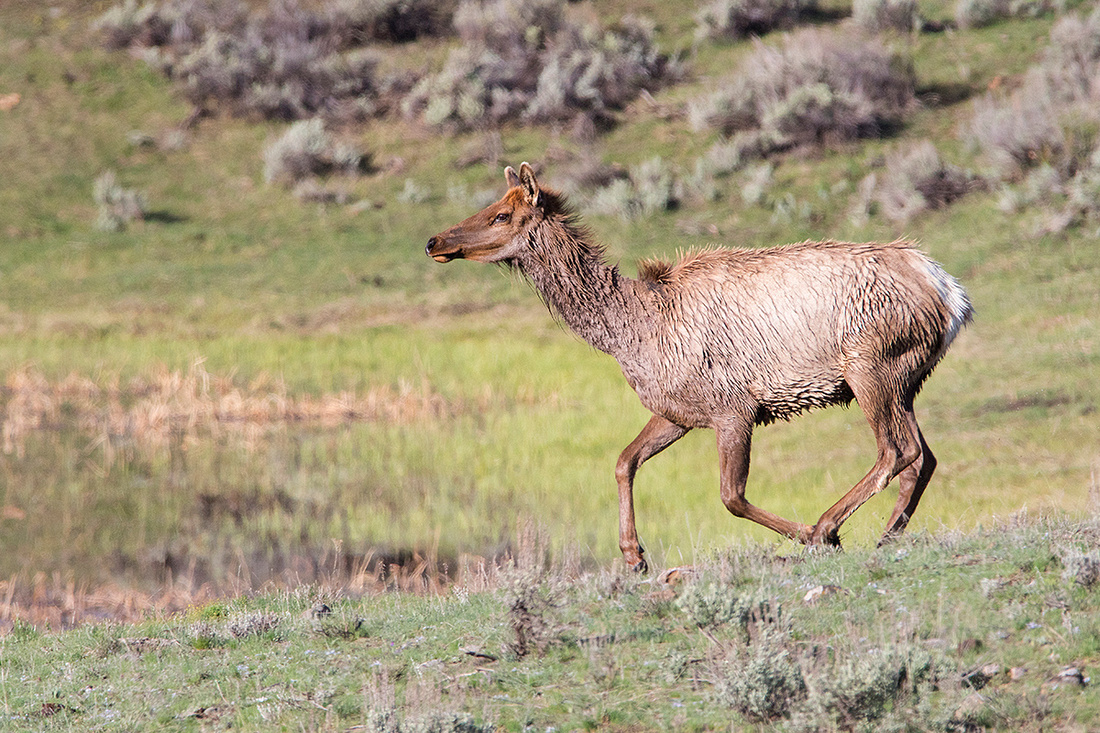 Cow elk wet from crossing the Yellowstone River
Cow elk wet from crossing the Yellowstone River
We saw a few black bears. On previous trips in May we had seen several sows with cubs. They were hard to find on this recent trip. All that were close were collared and offered no decent photo opportunities. No cubs were observed.
We saw small groups of female big horn sheep near Yellowstone Picnic Area frequently. On our last morning we photographed a group of 14 mature big horn rams on the slope above Soda Creek. Nice light and some exceptional animals.
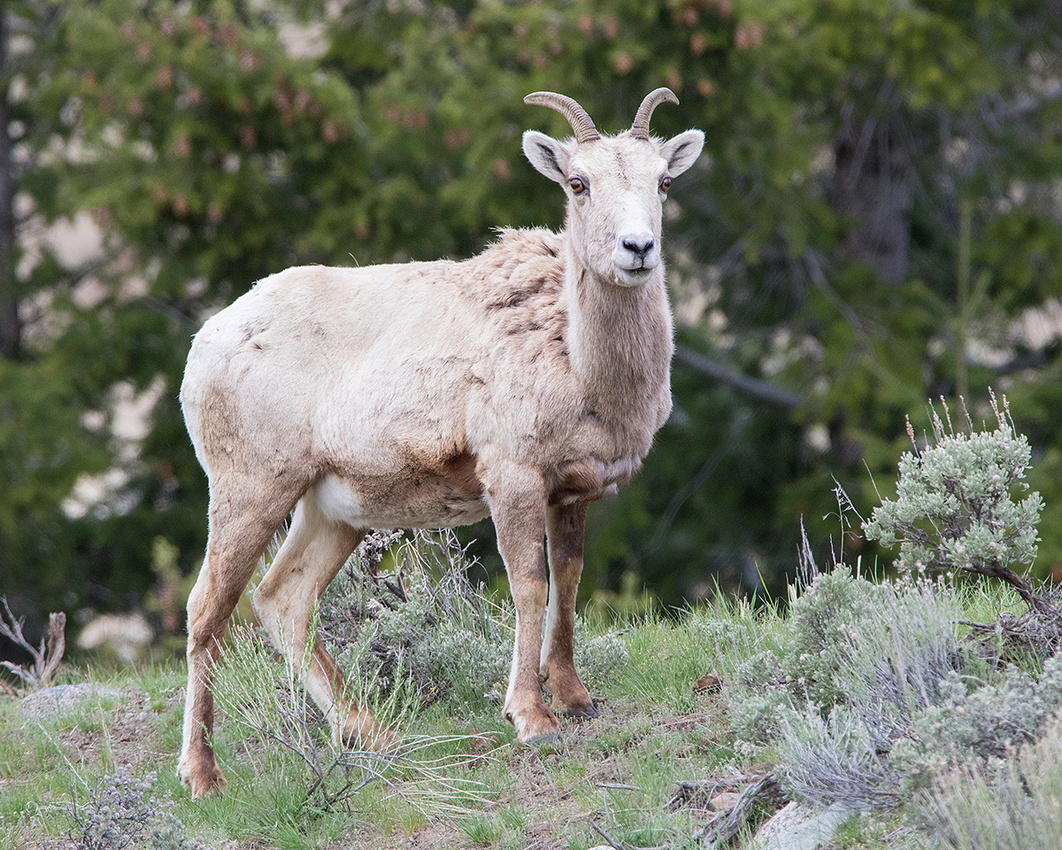 Big Horn Ewe
Big Horn Ewe
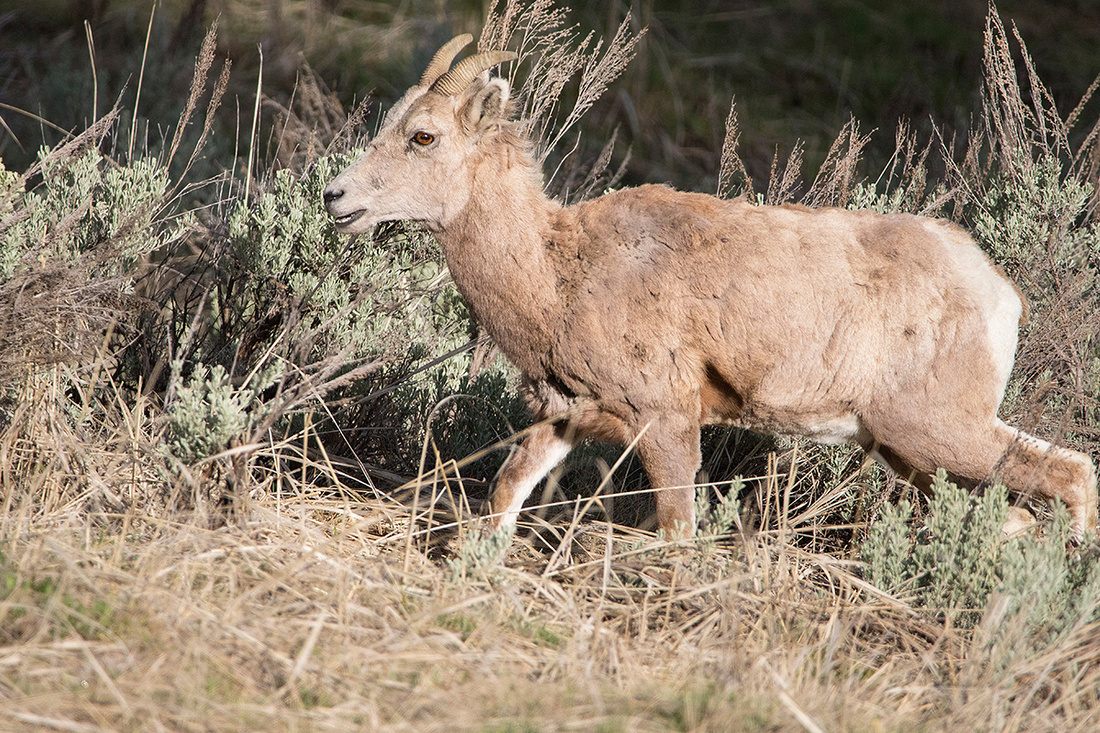 Big Horn Ewe
Big Horn Ewe
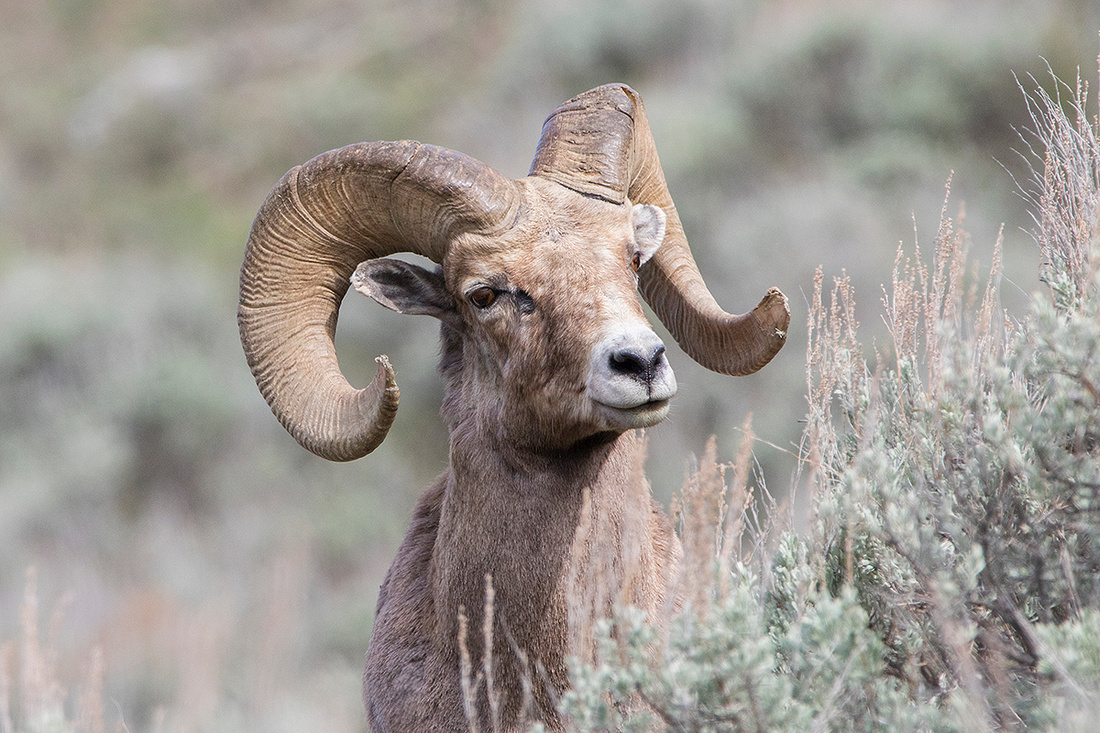 Big Horn Ram
Big Horn Ram
 Big Horn Ram
Big Horn Ram
 Big Horn Ram
Big Horn Ram
My parents were keen to see a moose and and we finally found a scraggly cow near sunset on the last evening. Always a difficult species to find in the park. We managed in seven days to get good looks at all the major wildlife species in the park including mule and white-tailed deer.
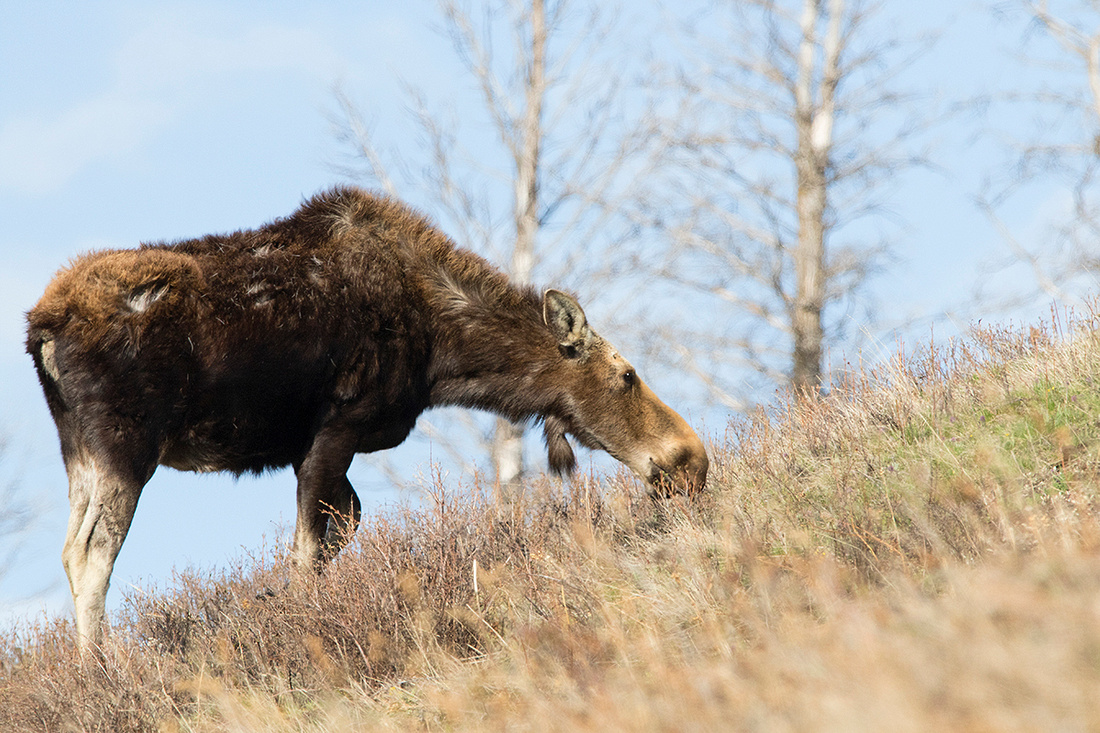
I recommend visiting in early May, right at or before the official park opening. Crowds (except at bear jams) were relatively light, but definitely increased daily. We were lucky with the weather. It can be quite twitchy in May.
We visited the Playa Del Carmen area of Mexico and Belize in mid-March. For the Playa Del Carmen portion of the trip we went through Apple Vacations and stayed at an enormous all-inclusive beachside resort. I believe the resort had something like 1500 rooms with numerous pools, restaurants, and bars. Visitors were primarily European. The weather was excellent and we spent the majority of the week relaxing at the resort. We took a day trip to the Mayan archeological site at Chichen Itsa, visited a cenote, and spent an afternoon in Playa Del Carmen. Wildlife photography options at the resort were limited to a very narrow portion of intact habitat between our resort and the neighboring resort. However, this area had decent morning light and some interesting species.
The photo stars of the resort were a huge troop of white-nosed coati. We saw up to 35 at one time foraging on the lawns of the resorts. They were extremely tame and were accomplished dumpster divers.
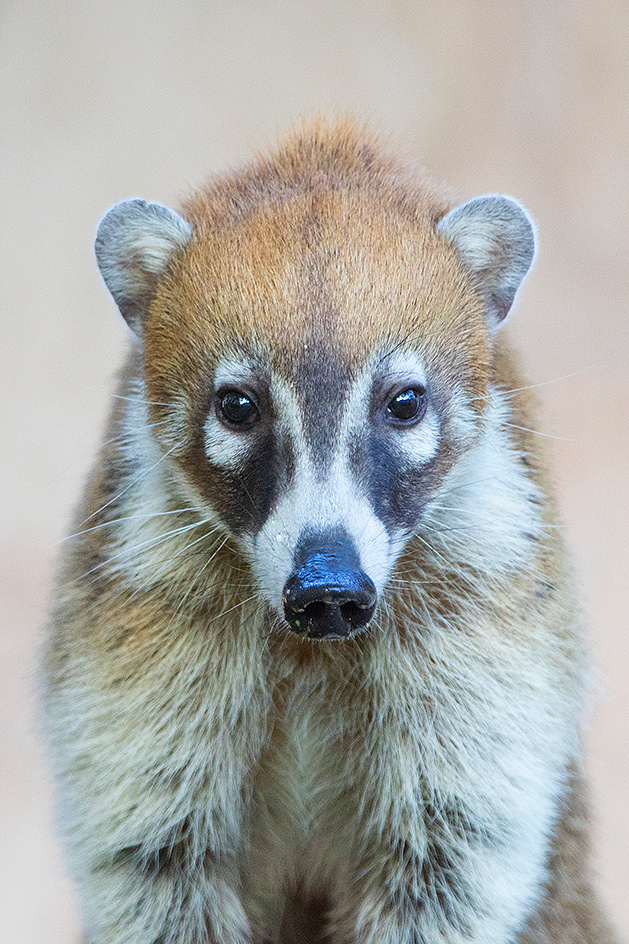
White-Nosed Coati Mug Shot
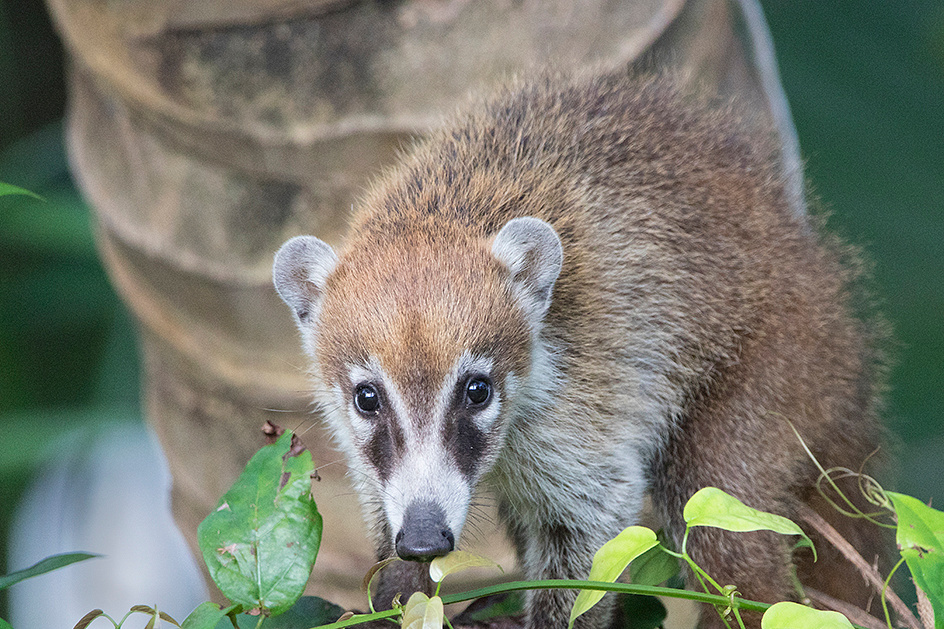 Young White-Nosed Coati
Young White-Nosed Coati
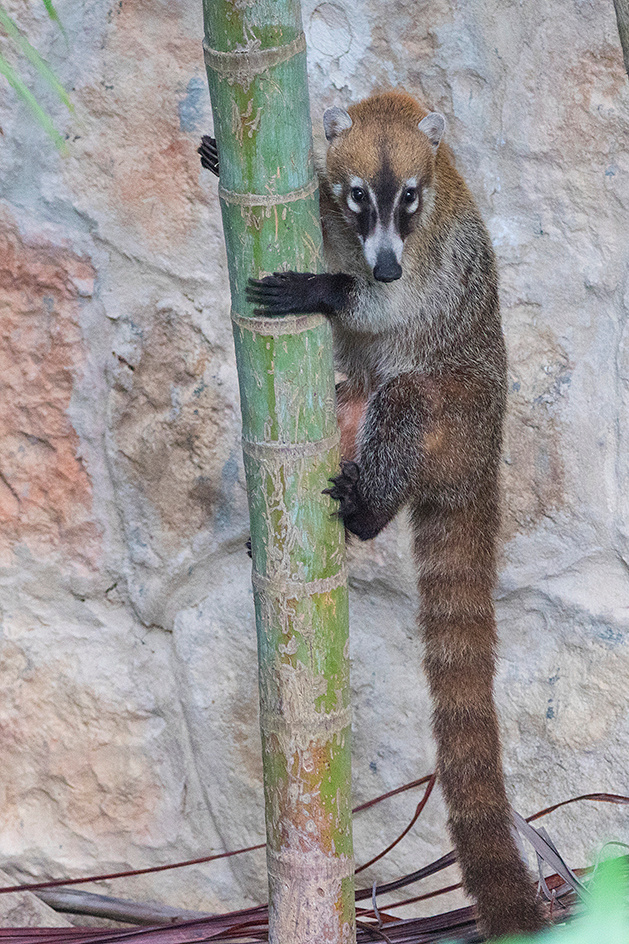
Tree Hugger
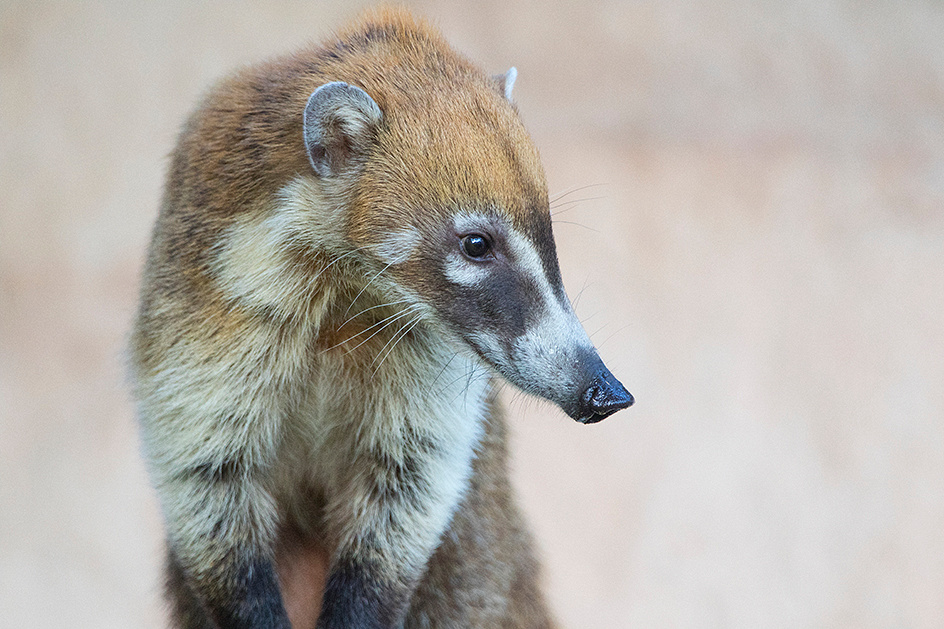 White-Nosed Coati
White-Nosed Coati
I was fortunate to photograph a golden-fronted woodpecker in warm morning light.

Golden-Fronted Woodpecker
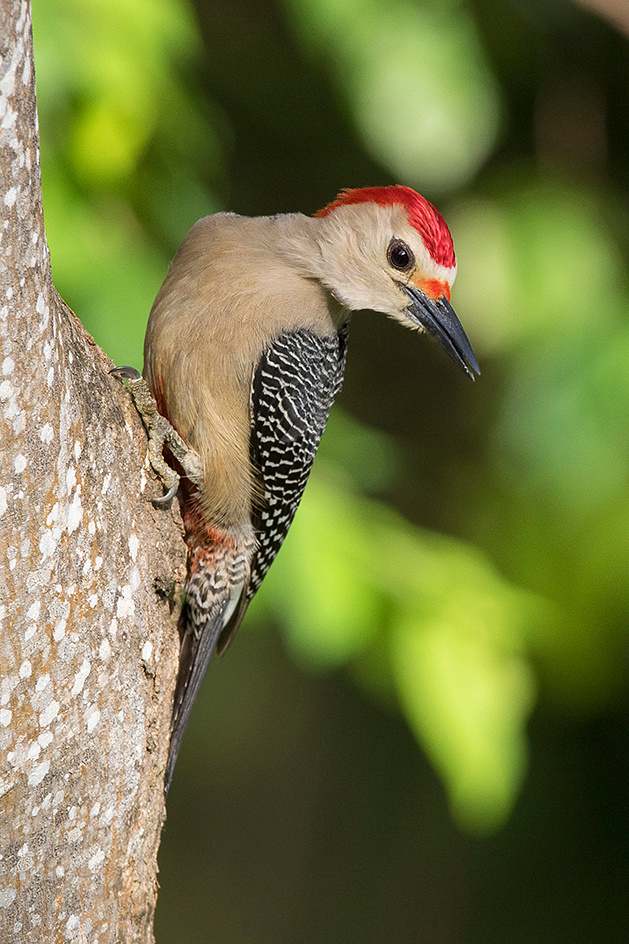
Golden-Fronted Woodpecker
I also encountered a "life bird" on the resort grounds. A life bird is one that I have never seen before and was added to my life list. This lifer was the Rufous-Naped Woodrail.
 Rufous-Naped Woodrail
Rufous-Naped Woodrail
A group of three adult spider monkeys was observed on almost every morning. I was able to capture a few decent images with relatively unobstructed views in good light. A better photographer would not have cut off the tail.
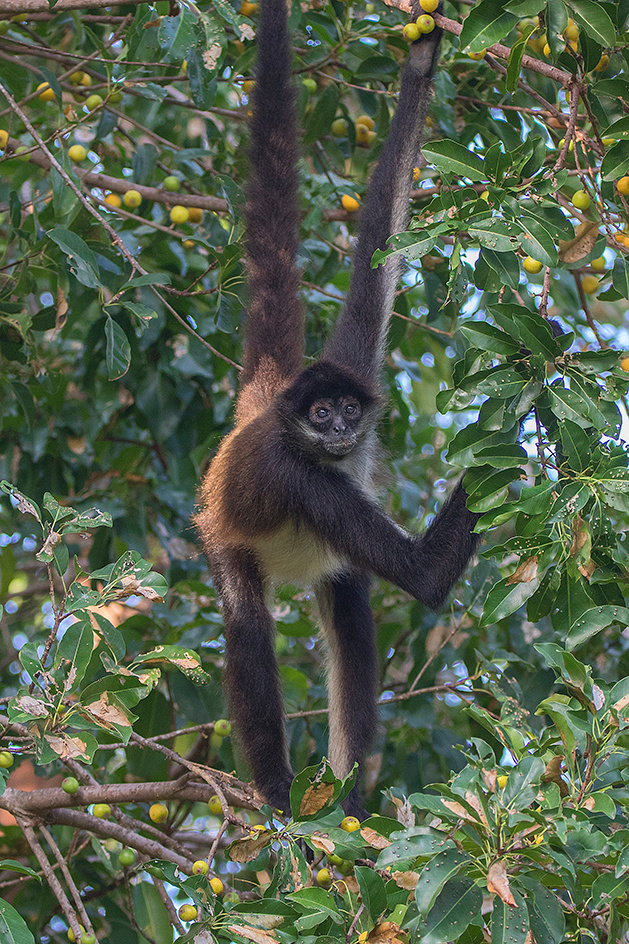
Spider Monkey
I had some excellent opportunities on ferruginous pygmy owls. These owls are tiny (approximately 6-7 inches in length) and have some of the best eye contact in the avian world.

Ferruginous Pygmy Owl
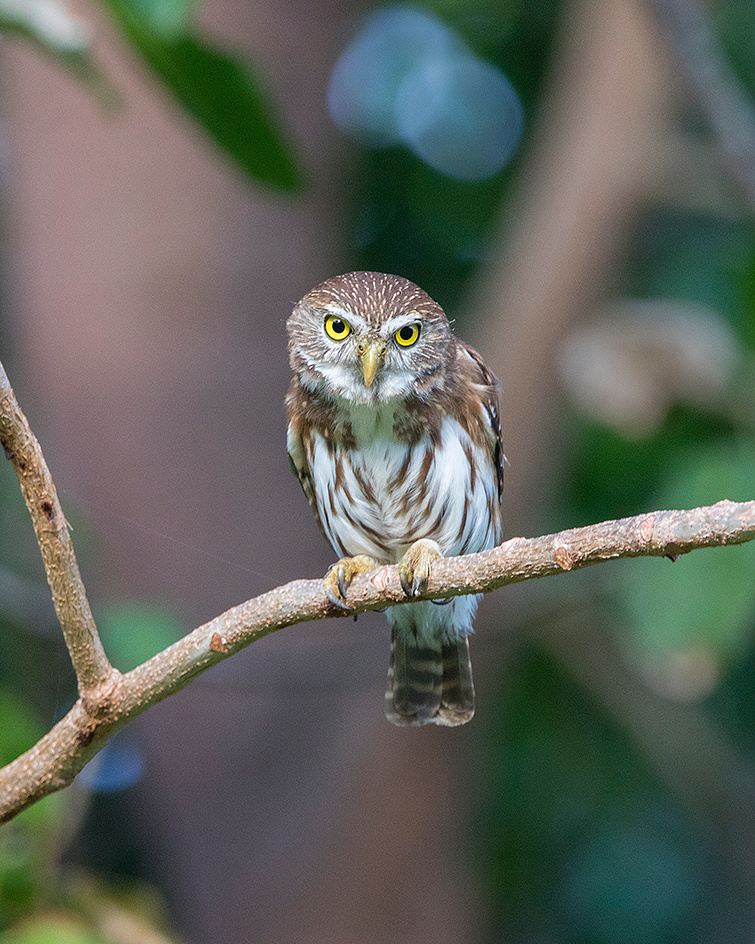
Ferruginous Pygmy Owl
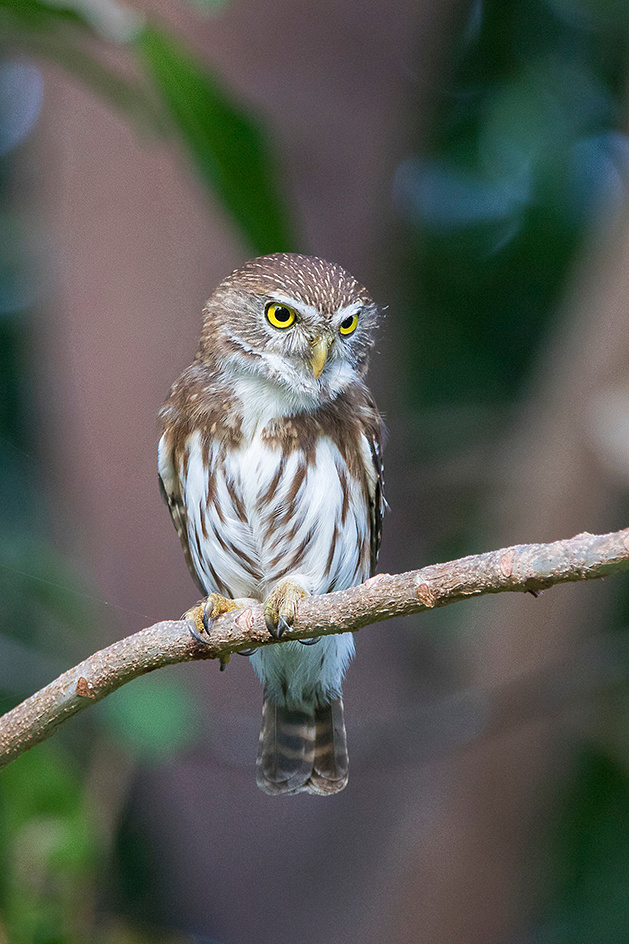
Ferruginous Pygmy Owl
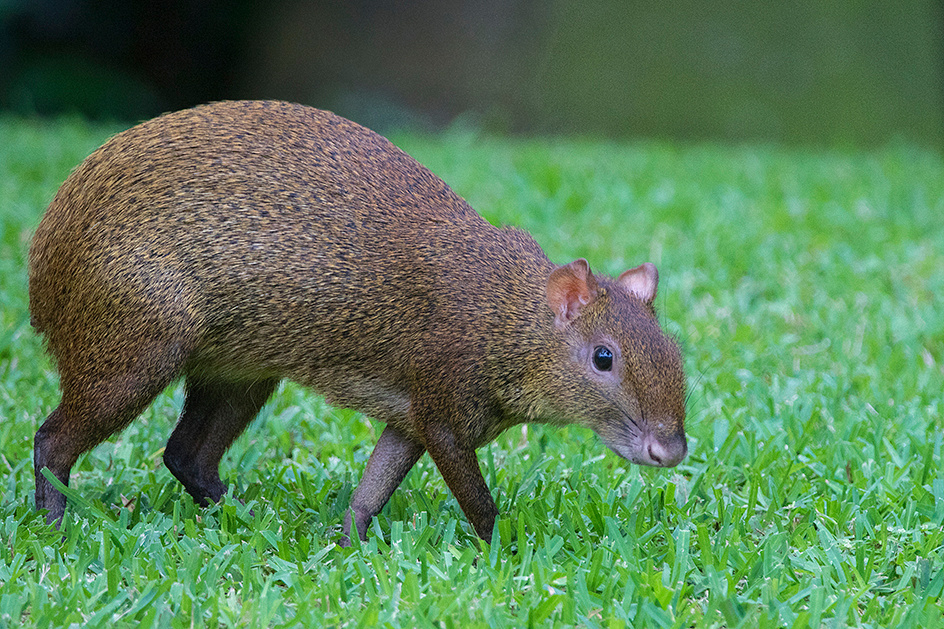 Agouti
Agouti
Agouti are large rabbit sized rodents. They were common in the edge habitats very early in the morning.
After a very relaxing week, we traveled from Playa Del Carmen to Belize City on the ADO express bus. ADO is a comfortable and economical way to see the country if you are not in a hurry. Our Belize birding guide (Robert) met us at the Belize City bus station and transported us back to Crooked Tree Lodge for the 2nd week of our trip. Be aware that the bus station is not located in the best part of Belize City and I would avoid night time arrivals or departures. Robert made stops on the way to the lodge to pick up a few species, including my first great black hawk. During our hour and a half drive we picked up 30 or more species.
Crooked Tree Lodge, located on the lake, is just outside Crooked Tree Village. The entire area is an Audubon Sanctuary. Apparently, Audubon is not overly popular with the villagers as their building in Crooked Tree Village was recently burned to the ground.
Mick and Angie, the owners of Crooked Tree Lodge, were wonderful hosts. The food was simply amazing. Much better than standard eco-lodge fare. Meals are served communally, so we were able to get to know the other guests. Becky even participated in an impromptu yoga session one afternoon with a group of wonderful women also visiting the lodge. Mick maintains a stocked bar and we enjoyed a few of the local beers (Belikin) each evening. The cabanas are basic, clean, and cozy. Be aware that the cabanas lack air conditioning and window screens. Mosquitos were not much of a problem, and we had a cooling breeze off the lake day and night. We ventured out with Robert and two evening guided bird walks and one morning boat birding trip. These excursions helped my species list, but I was unable to get very many good photos. Fortunately, the lodge grounds and surrounding areas offered excellent photo opportunities.
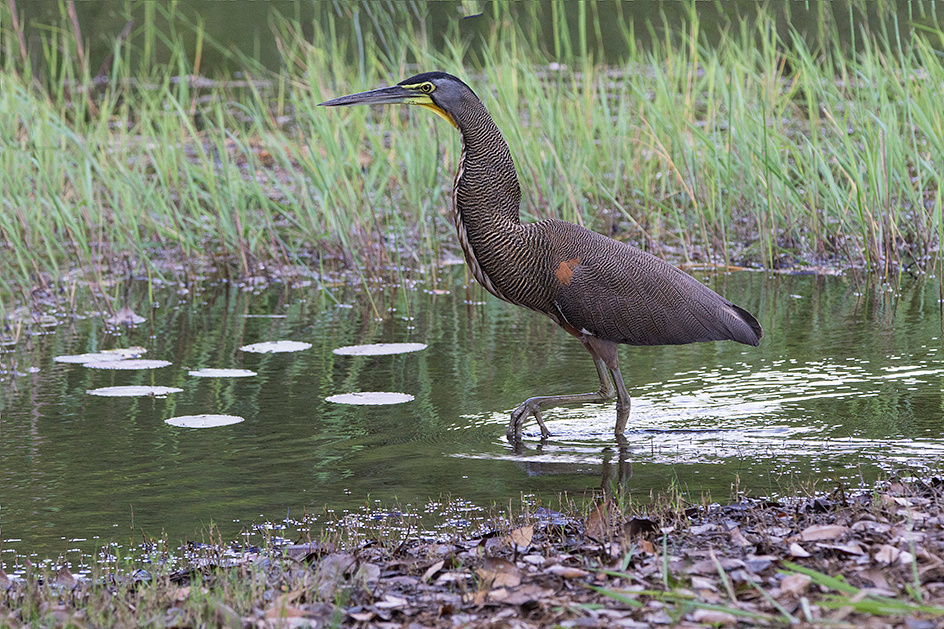 Bare-Throated Tiger Heron
Bare-Throated Tiger Heron
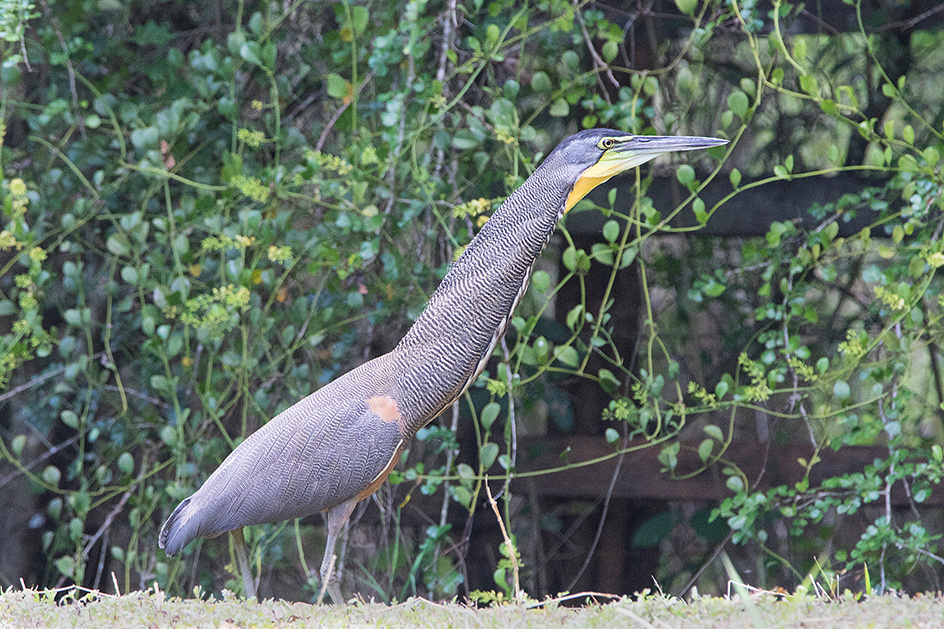 Bare-Throated Tiger Heron
Bare-Throated Tiger Heron
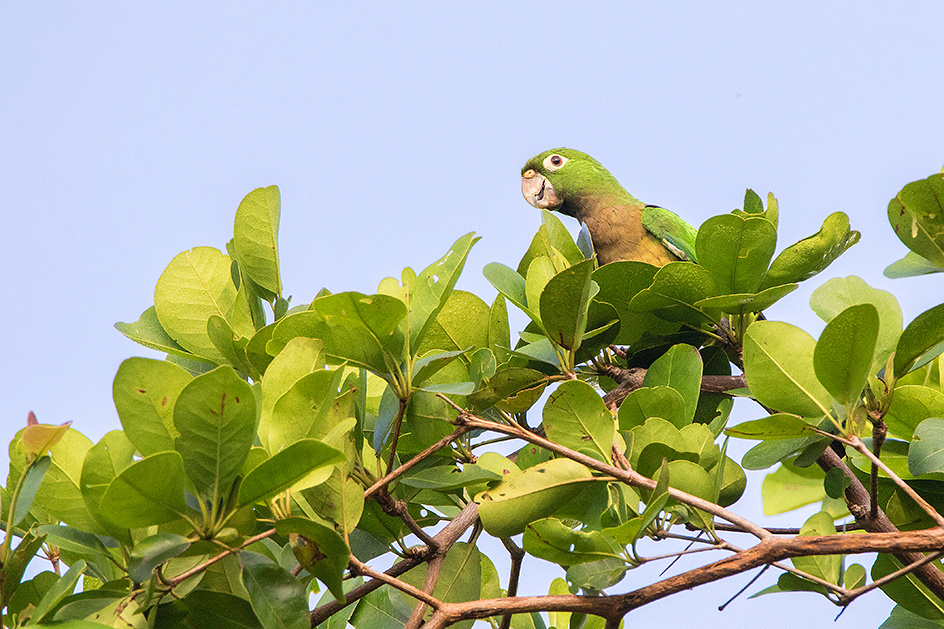 Aztec Parakeet
Aztec Parakeet
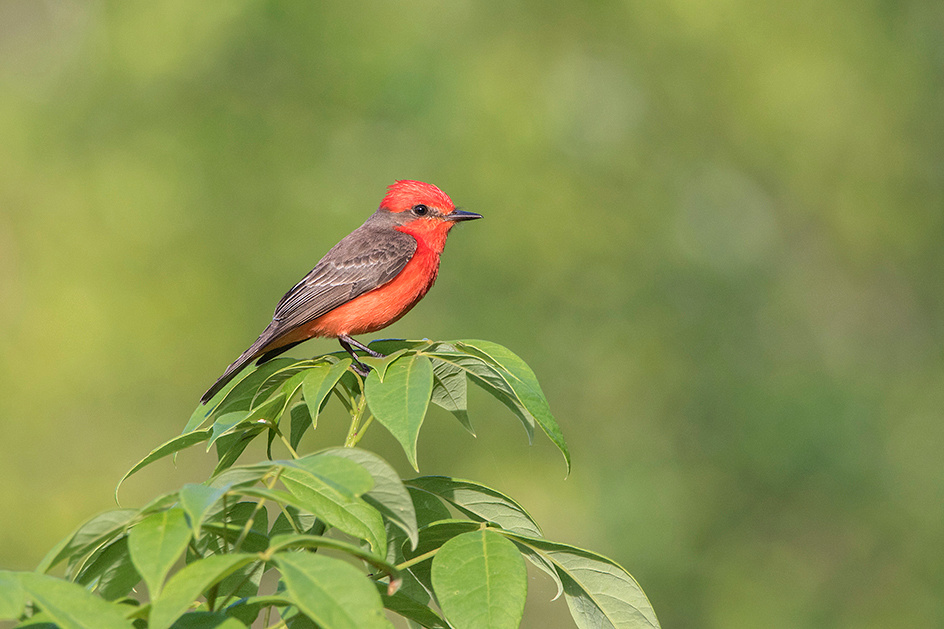 Vermillion Flycatcher
Vermillion Flycatcher
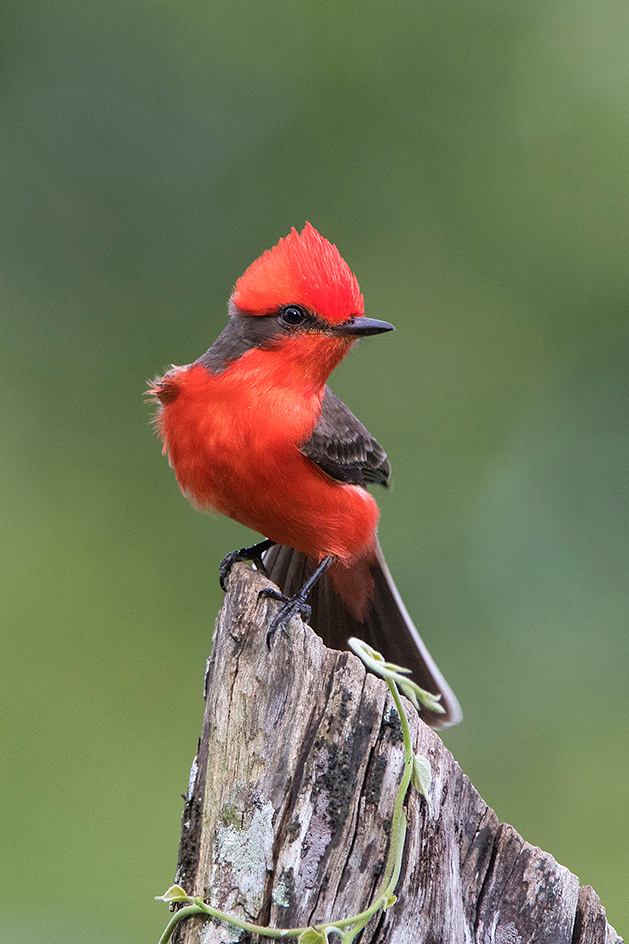
Vermillion Flycatcher
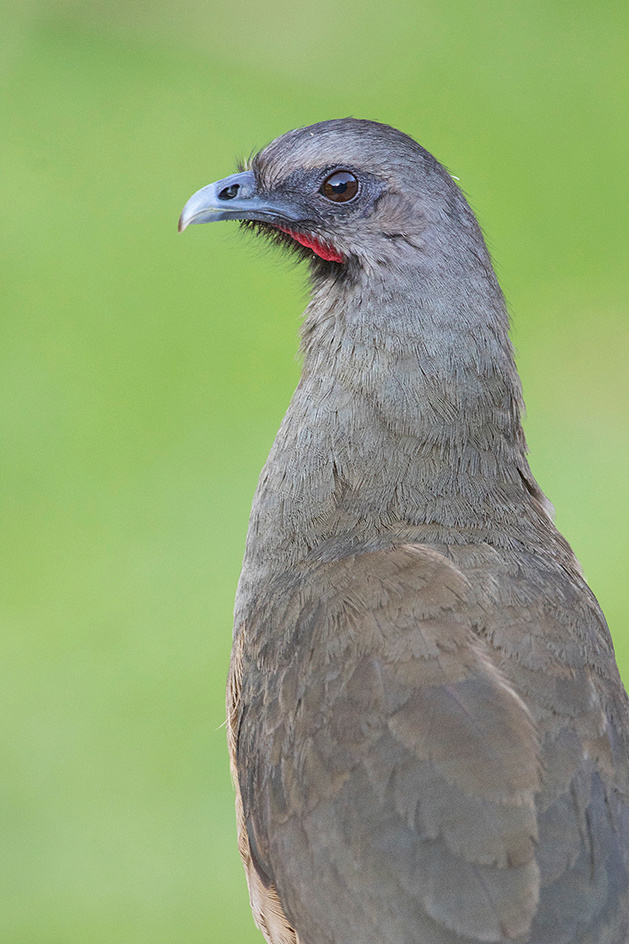
Plain Chachalaca
 Common Ground Dove
Common Ground Dove
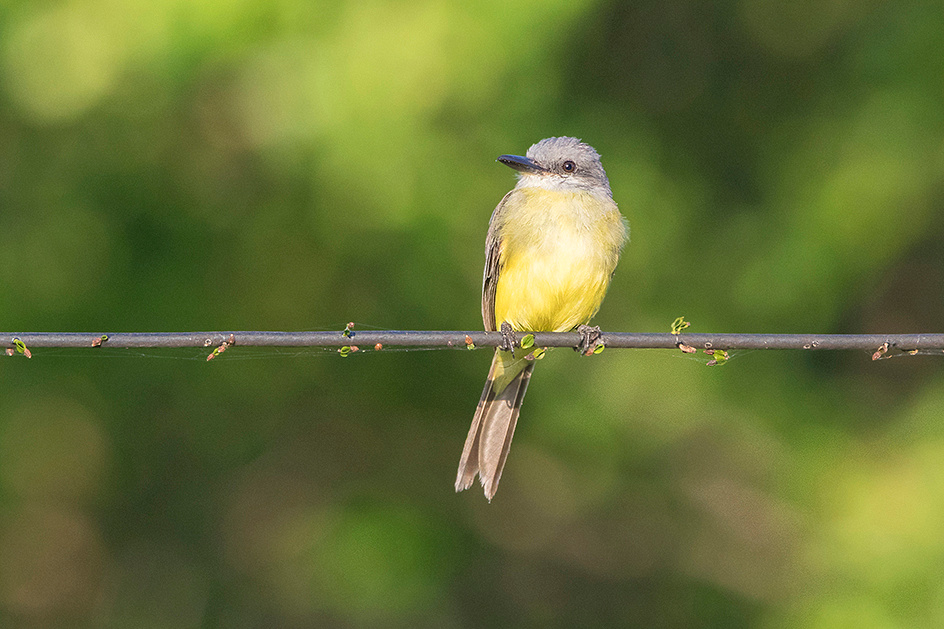 Tropical Kingbird
Tropical Kingbird
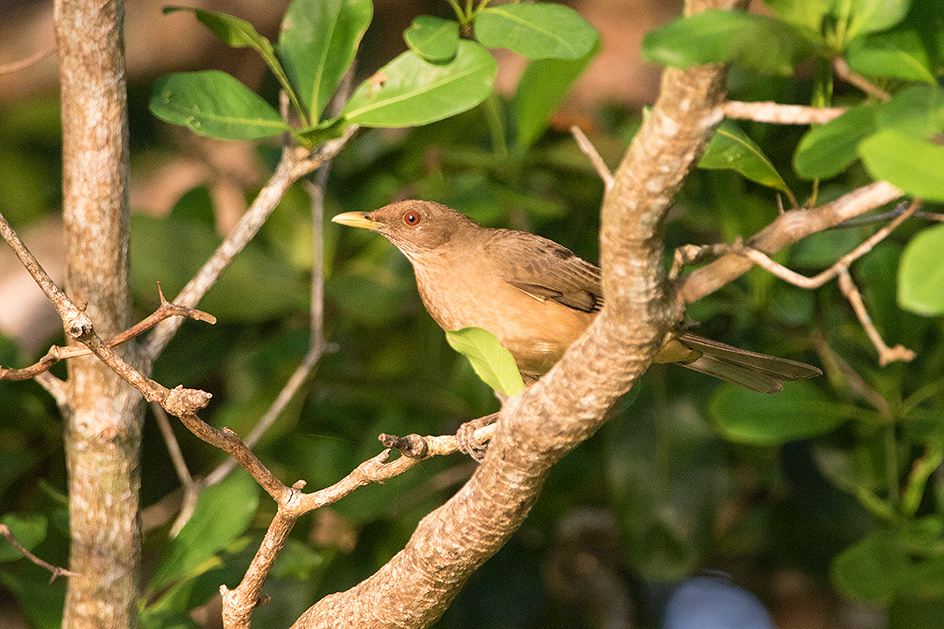 Clay-Colored Thrush
Clay-Colored Thrush
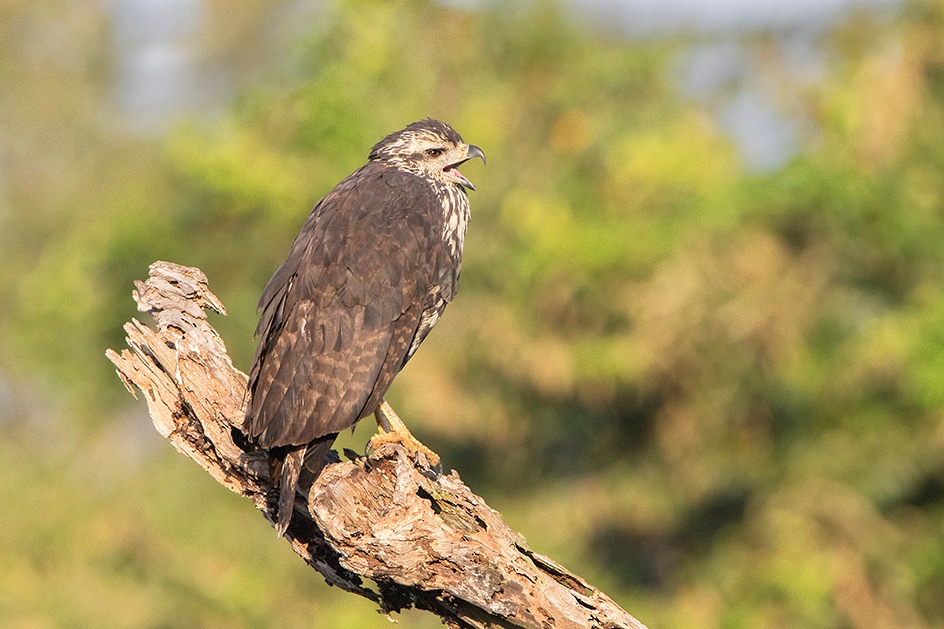 Roadside Hawk
Roadside Hawk
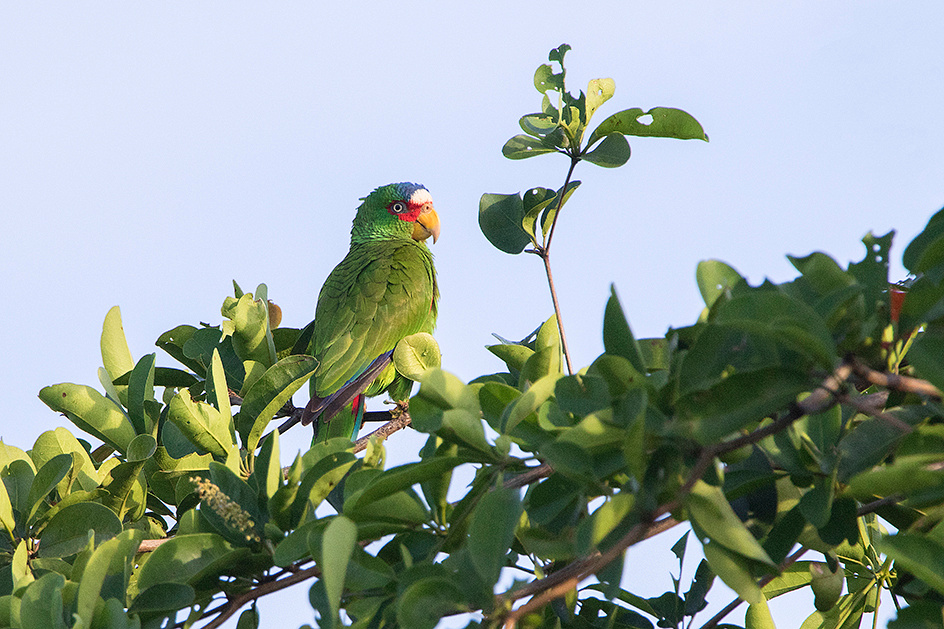 White-Fronted Parrot
White-Fronted Parrot
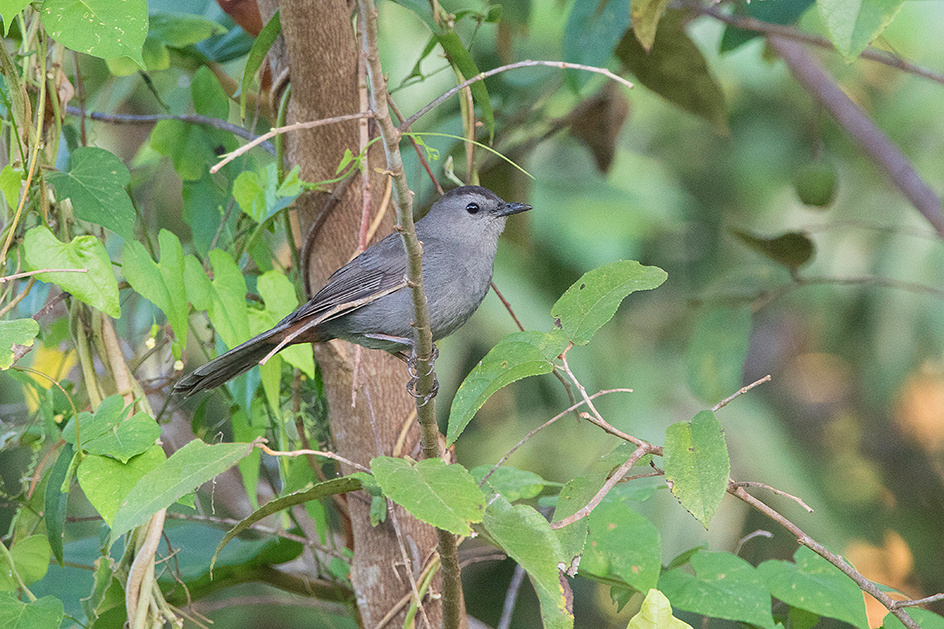 Gray Catbird
Gray Catbird
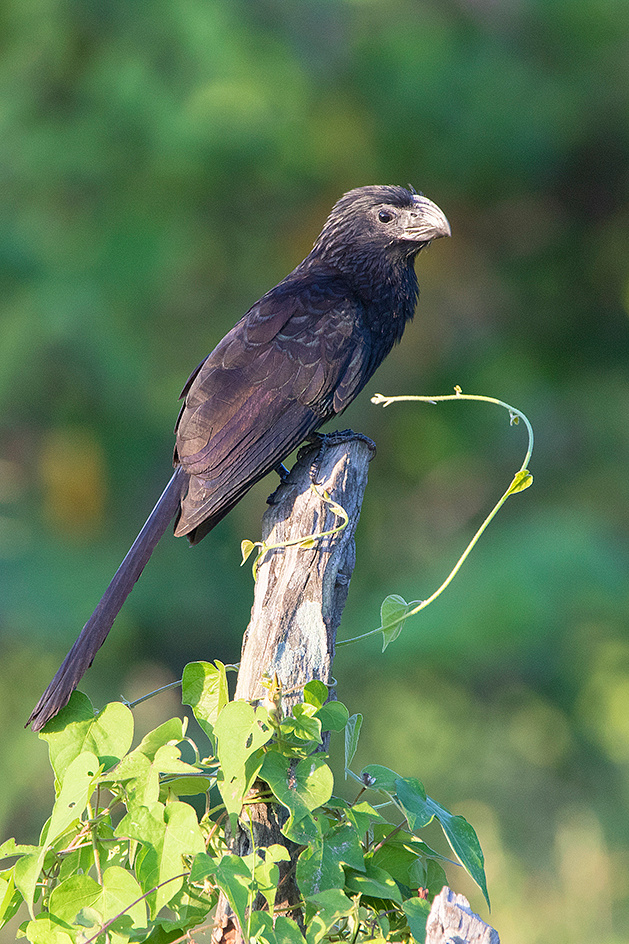
Groove-Billed Ani
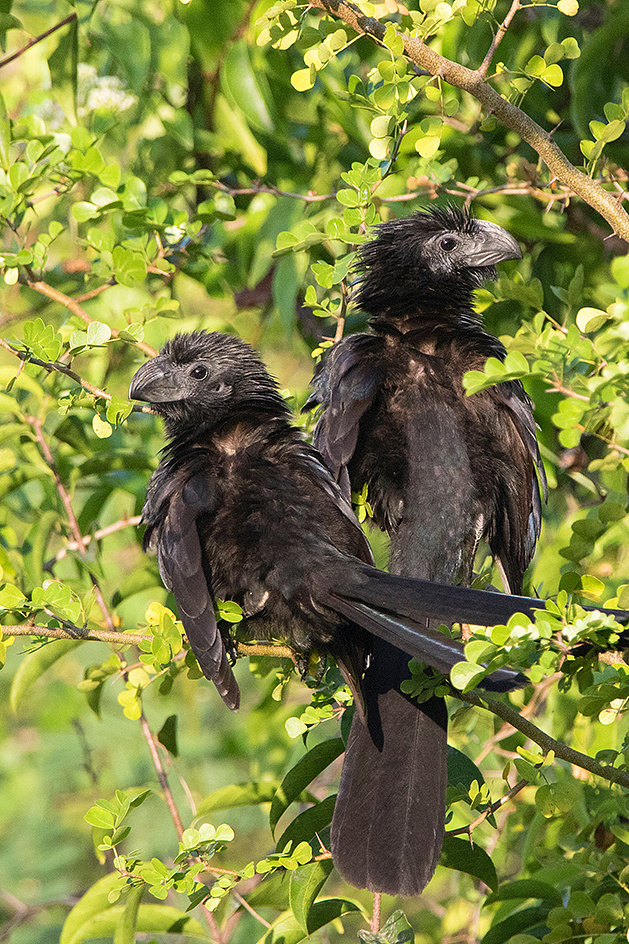
Groove-Billed Ani
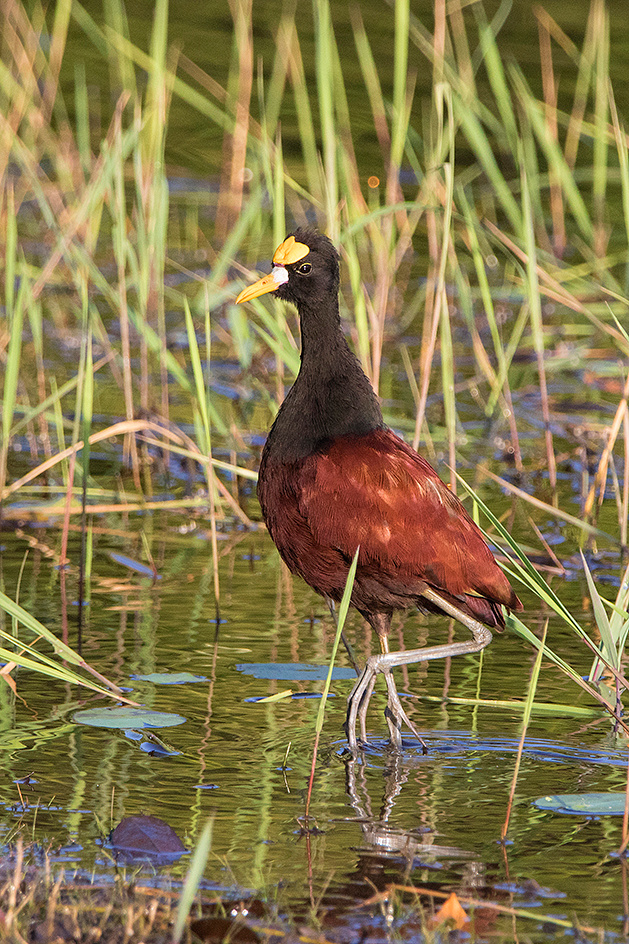
Northern Jacana
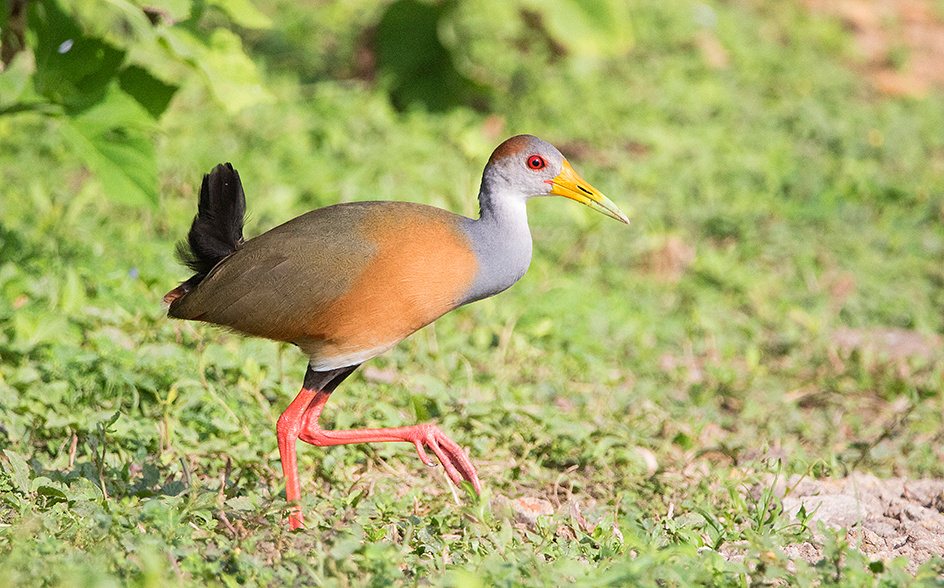 Gray-Necked Woodrail
Gray-Necked Woodrail
 Tropical Mockingbird
Tropical Mockingbird
One of my goals was to capture a few warblers, especially those not found on the west coast. Warblers are difficult to photograph. They are small and quick. I had a very low keeper rate, but captured a few useable images.
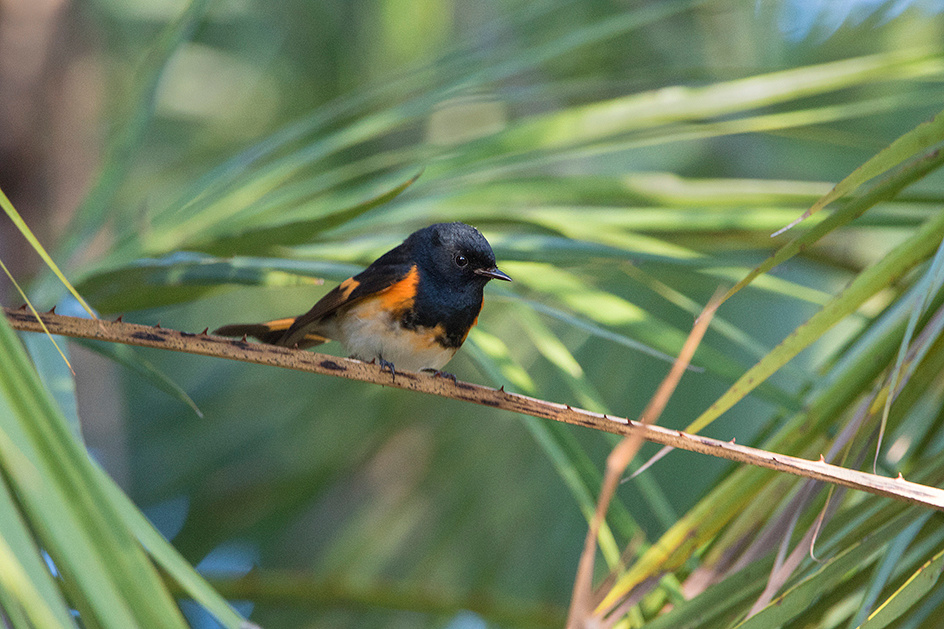 American Redstart
American Redstart
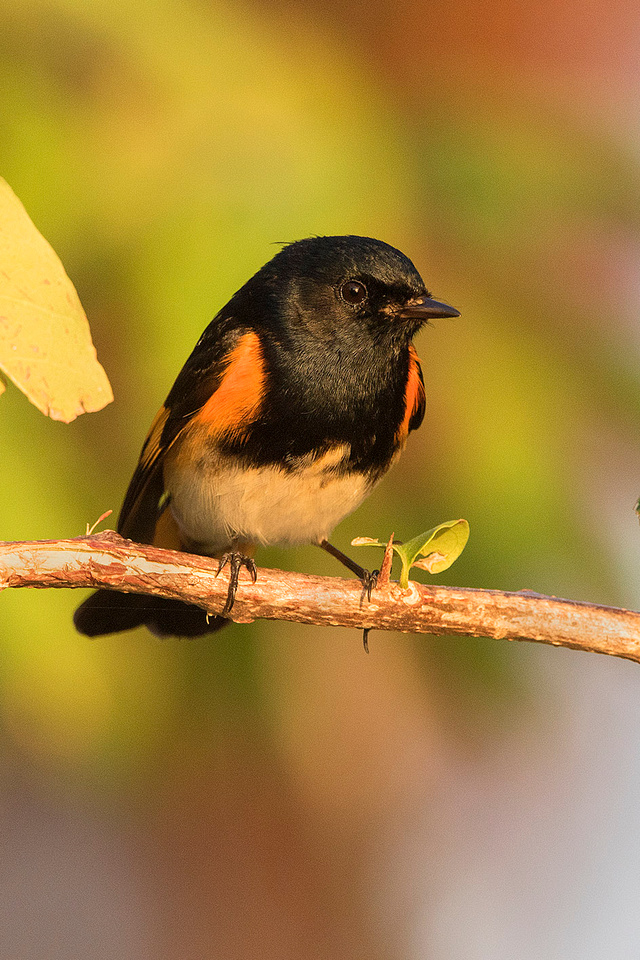
American Redstart
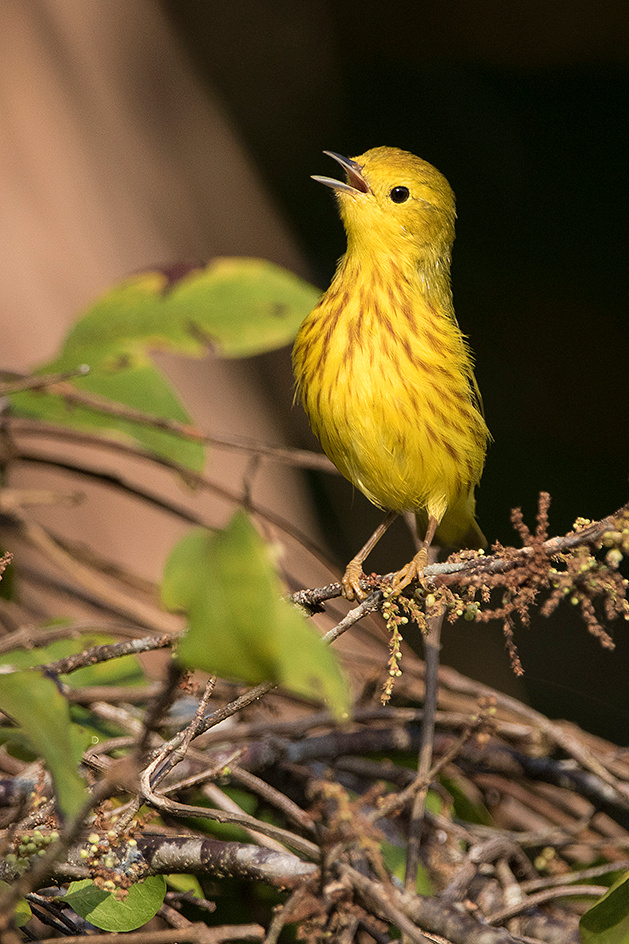
Yellow Warbler
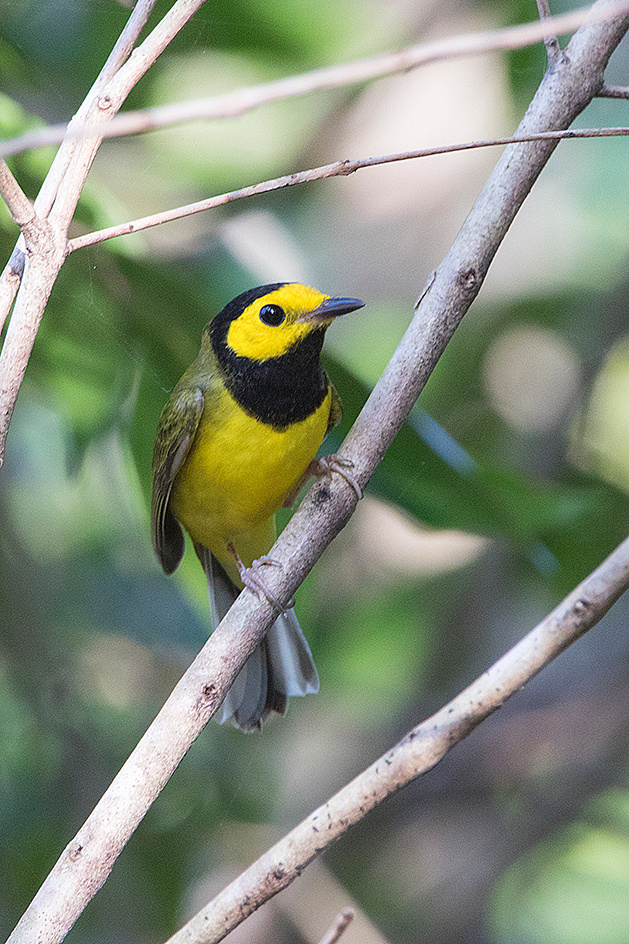
Hooded Warbler
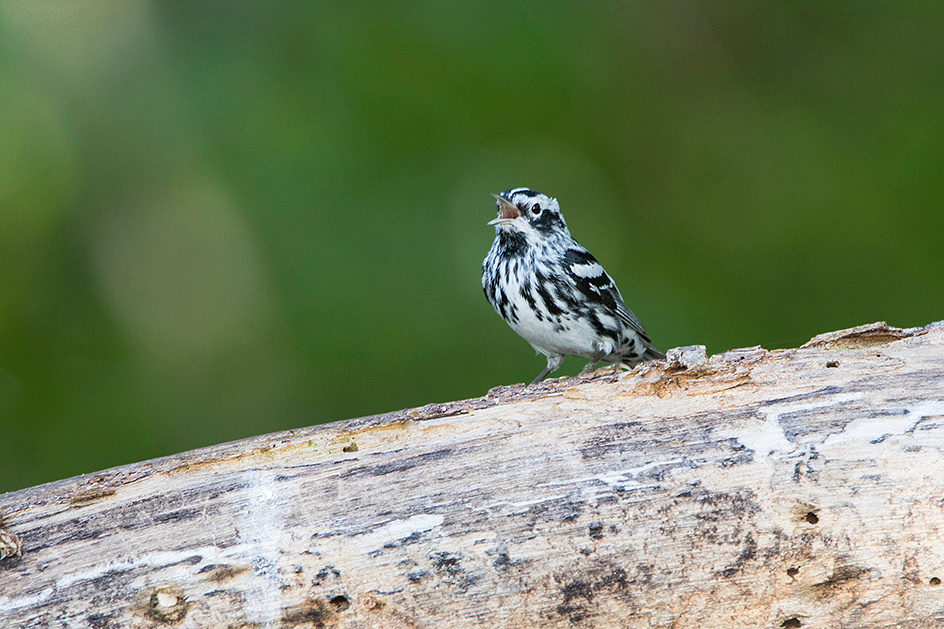 Black and White Warbler
Black and White Warbler
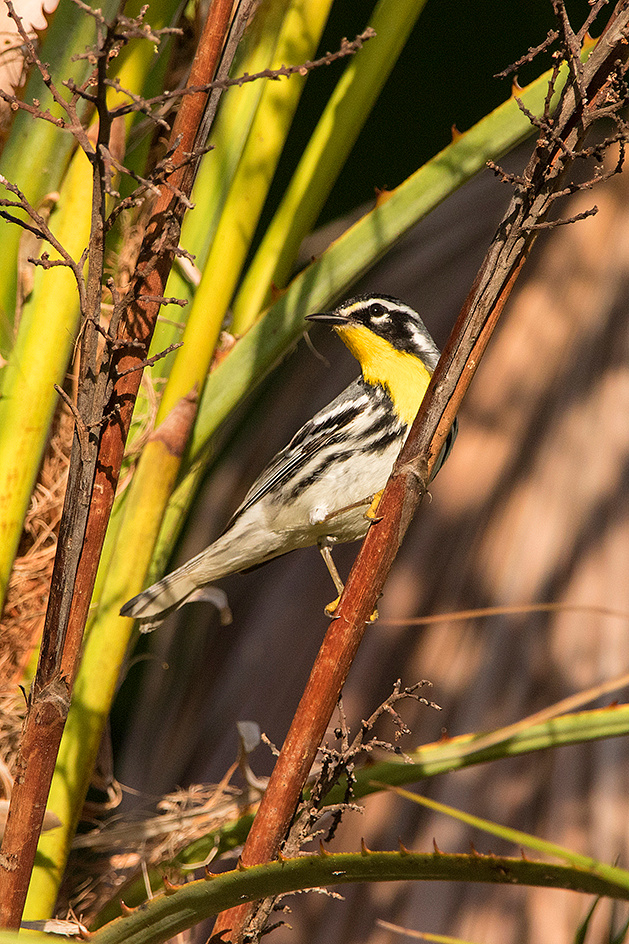
Yellow-Throated Warbler
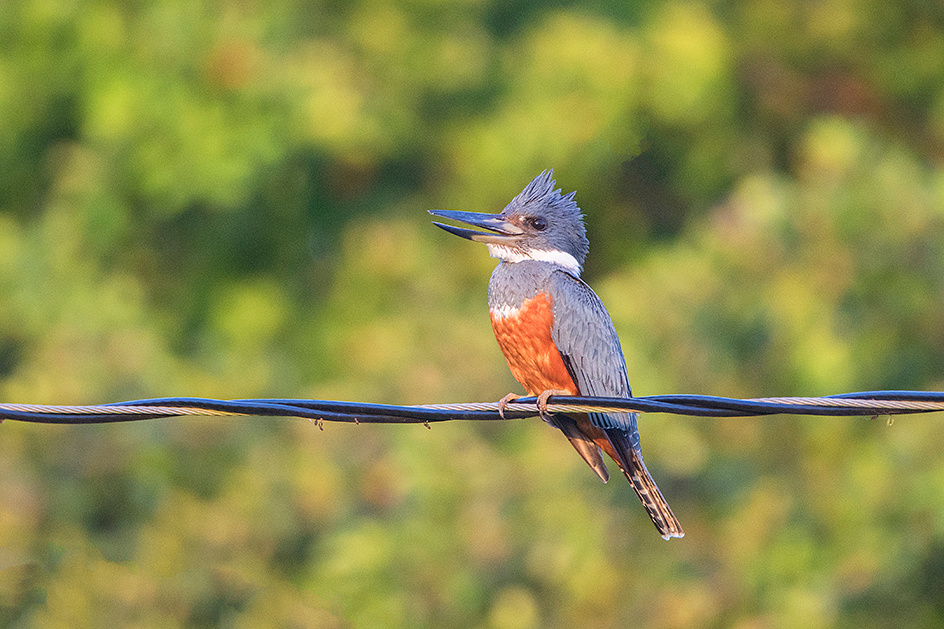 Ringed Kingfisher
Ringed Kingfisher
I normally avoid images which include obviously man-made items. However, the light and pose were so good on this ringed kingfisher that I decided to keep this one.
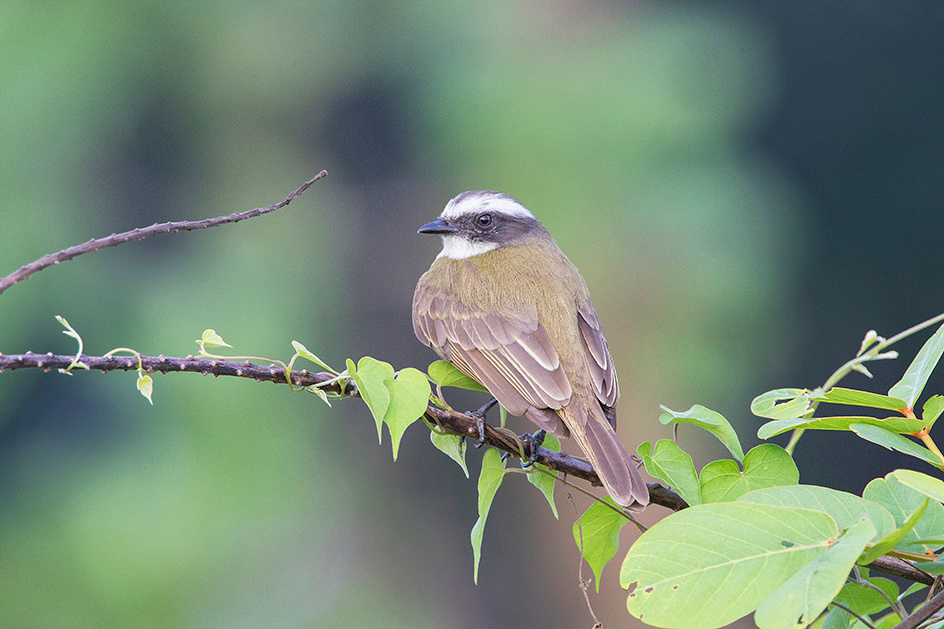 Social Flycatcher
Social Flycatcher
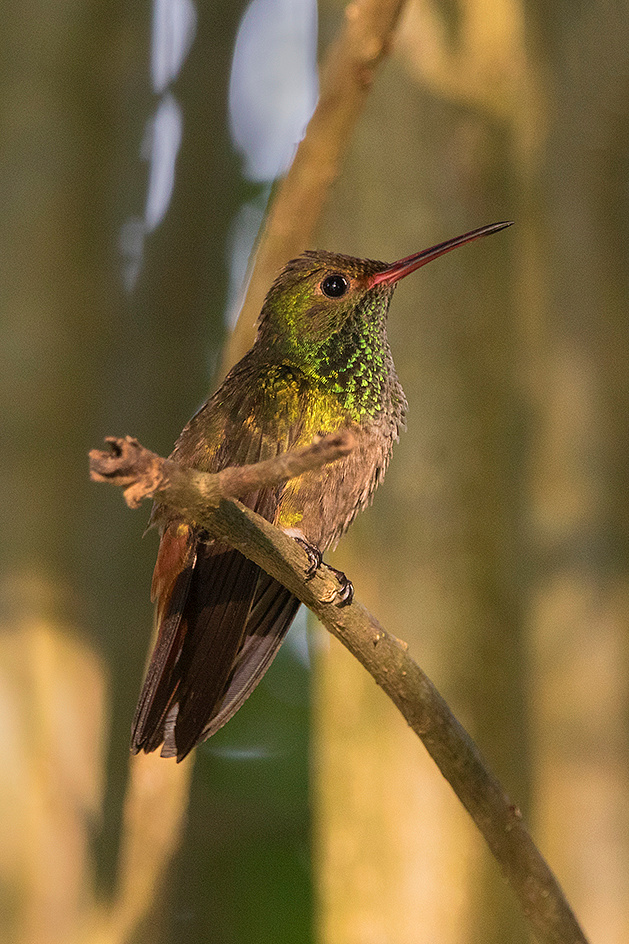
Rufous-Tailed Hummingbird
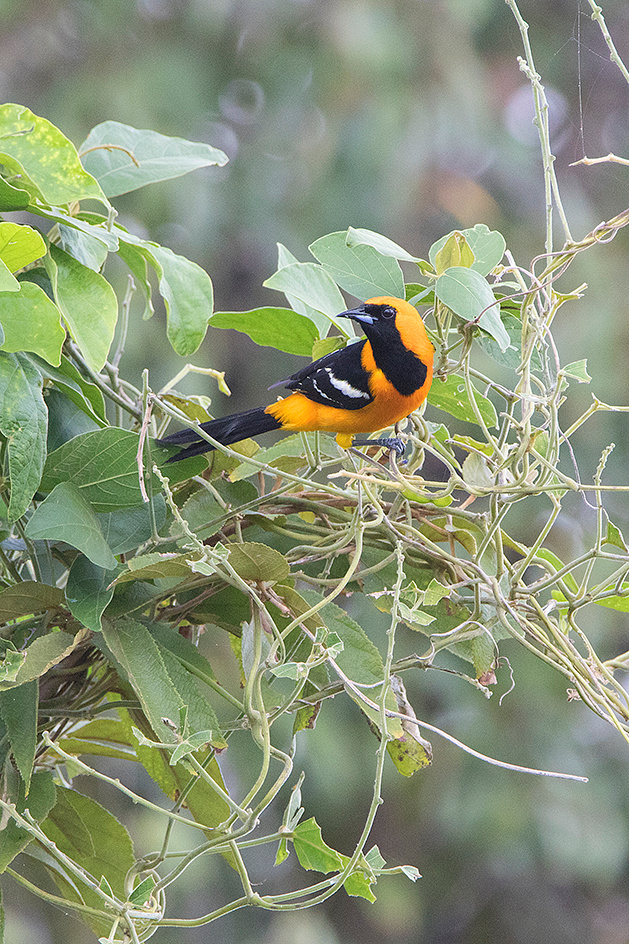
Hooded Oriole (male)
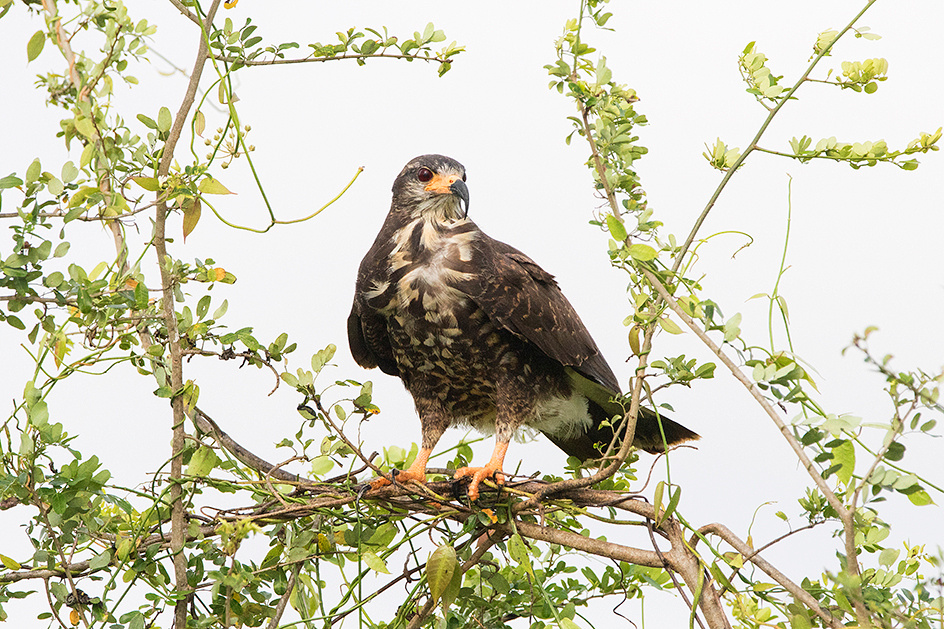 Snail Kite (Female)
Snail Kite (Female)
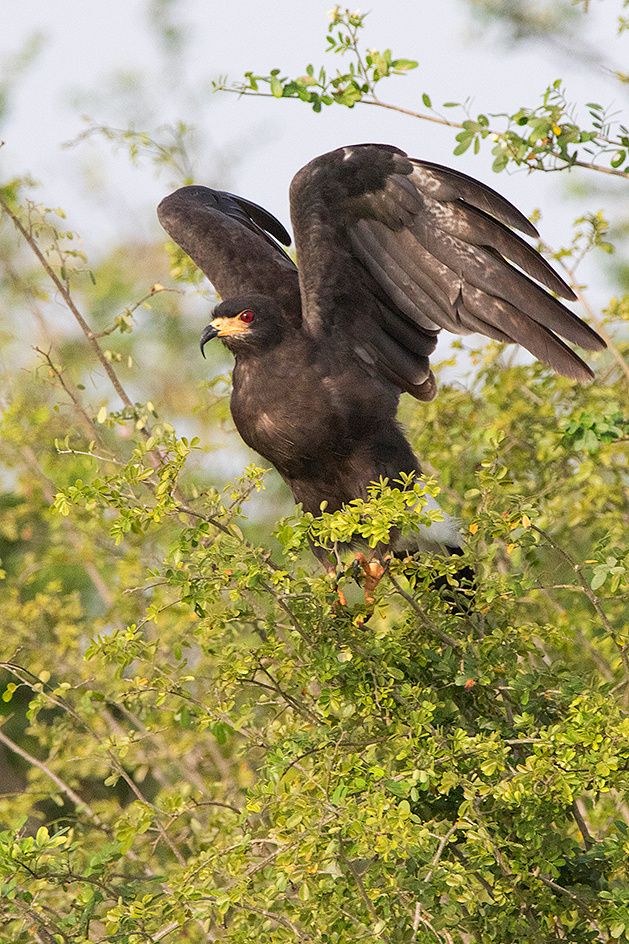
Snail Kite (Male)
I highly recommend Cooked Tree Lodge as a photo venue. Robert is an excellent guide and Angie and Mick could not be more welcoming and accommodating hosts.
We took the ADO bus back to the Cancun Airport. I am not sure how they are able to operate this express bus as we never had more than 11 people on the bus, and frequently less than six. Be aware that the published bus schedule is based in some alternate reality. We were over 3 hours late arriving at the airport. Fortunately, we still had plenty of time to catch our flight.
Another enjoyable trip.
We had the pleasure of visiting south Florida between March 13 and March 24, 2017. We enjoyed beautiful clear and relatively warm days with only minor precipitation. This was our 5th trip to Florida and certainly one of the best. We visited many of the same venues as on previous trips, but also explored a few new ones. We flew into Fort Lauderdale on the evening of March 13th. After we picked up our rental car, we drove across the state to Fort Meyers on the gulf coast. We visited several locations on the gulf side over the next five days.
After a short night, we were up early and headed for Corkscrew Swamp Preserve (375 Sanctuary Road, Naples , Florida). This Audubon site boasts a 2 mile-long boardwalk through the largest remaining old growth bald cypress stand in the U.S. This is a popular venue and an introduction to attempting boardwalk photography. Walkers induce vibration into the boardwalk and the images. A tripod on a narrow boardwalk is also a tripping hazard for the unwary, so I might have been better off with a monopod. They have at least two feeding stations which attract a number of species including painted bunting, northern cardinal, brown thrasher, ovenbird, and gray catbird. Like our previous trip to this location, very little water was present. However, these few gator holes were crowded with waders including roseate spoonbill, snowy egret, great egret, black-crowned night heron, wood stork, tricolored heron, white ibis, and little blue heron. A good sized alligator was actively feeding at one of the small holes and gave the crowd a few ah-ha moments when the gator emerged with a large crunchy turtle in his jaws. We observed a pair of barred owls perched together and had several swallow-tailed kites overhead. One of the owls gave us a nice flight show when he soared down from the nest tree and passed three feet over our heads in full light. That was the missed photo opportunity of the trip. We also picked up our first purple gallinule, one of my favorite southern species.
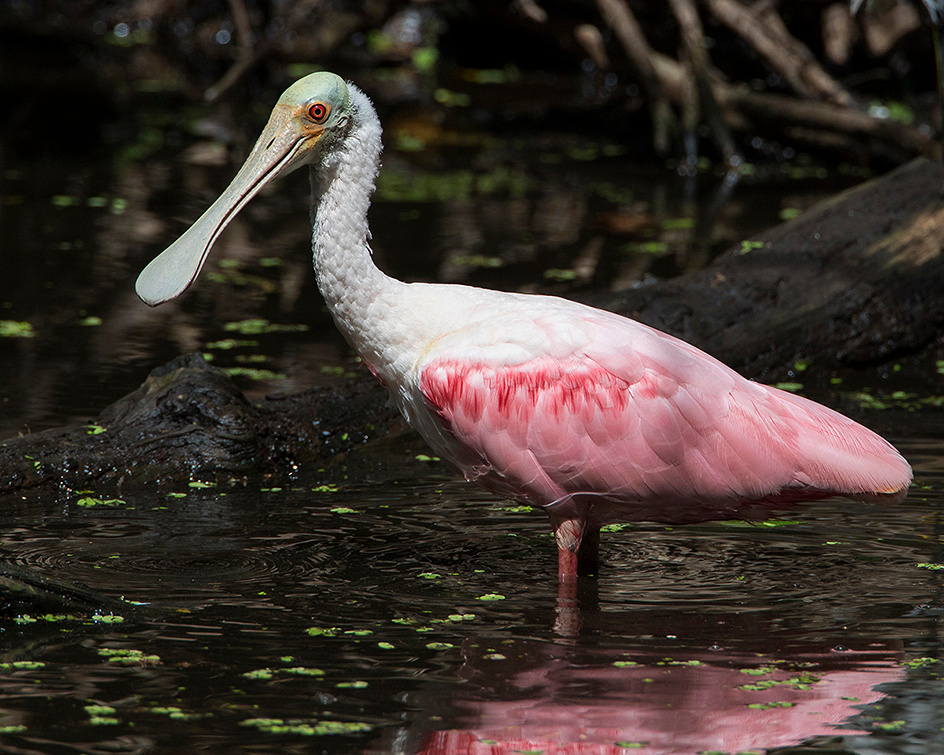
Roseate Spoonbill
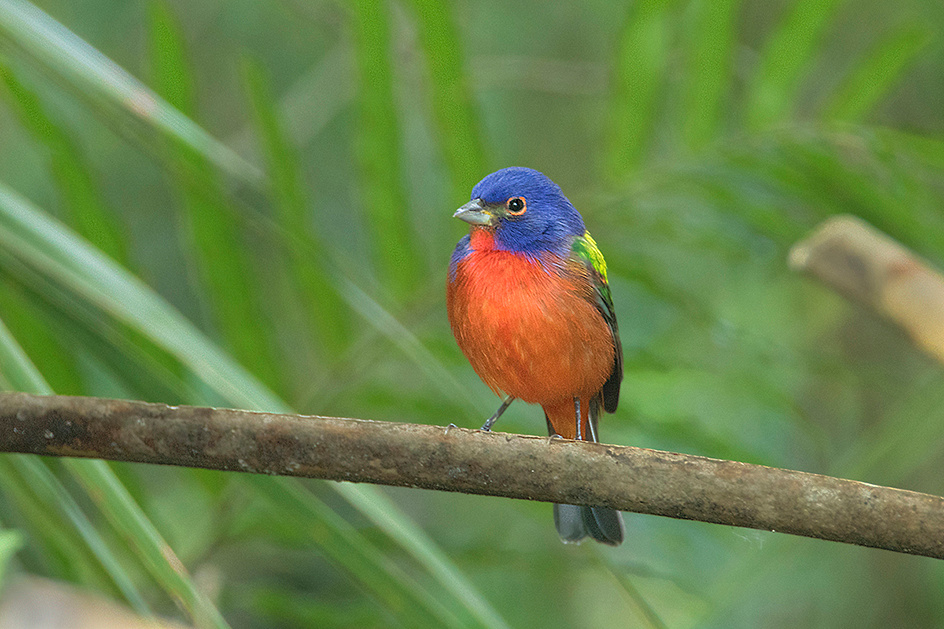
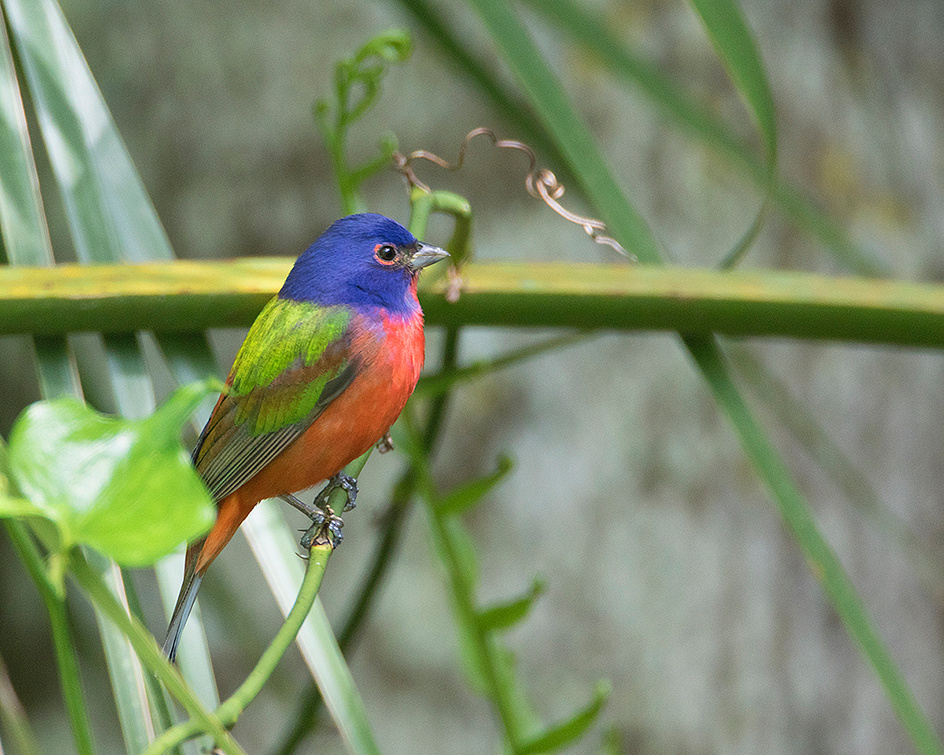 Painted Bunting (Male)
Painted Bunting (Male)
Little Estero Lagoon was our next venue. This mangrove lined lagoon is located off Flamingo Road in Fort Meyers Beach. Fort Meyers Beach is a very popular venue for college-aged spring breakers. Fortunately, the breakers were largely still asleep in the early morning when we were concentrating on our photography. Even so, Fort Meyers Beach has a well documented traffic issue and after our morning shoot we crept back very slowly along the main road to the bridge. Little Estero Lagoon is a very popular venue for wildlife photographers and is frequently included in photo tours. On previous trips to this location in winter, we have had good luck photographing a wide variety of shorebirds, including piping plover, semi-palmated plover, willit, Wilson's plover, American avocet, black-bellied plover. Shorebirds were largely absent on this trip, so we concentrated on photographing cormorants, pelicans, ibis, herons, and egrets. Birds in south Florida are amazingly tame and full frame head shots on most species are possible at this location. I had my best opportunity on northern cardinal at this location. I recently purchased a Canon 7D2 camera and was able to use its improved autofocus to capture a few action and flight images. This location works as either a morning or evening photo venue. While the number and diversity of species was less than on previous trips, it is still a favorite photo location.
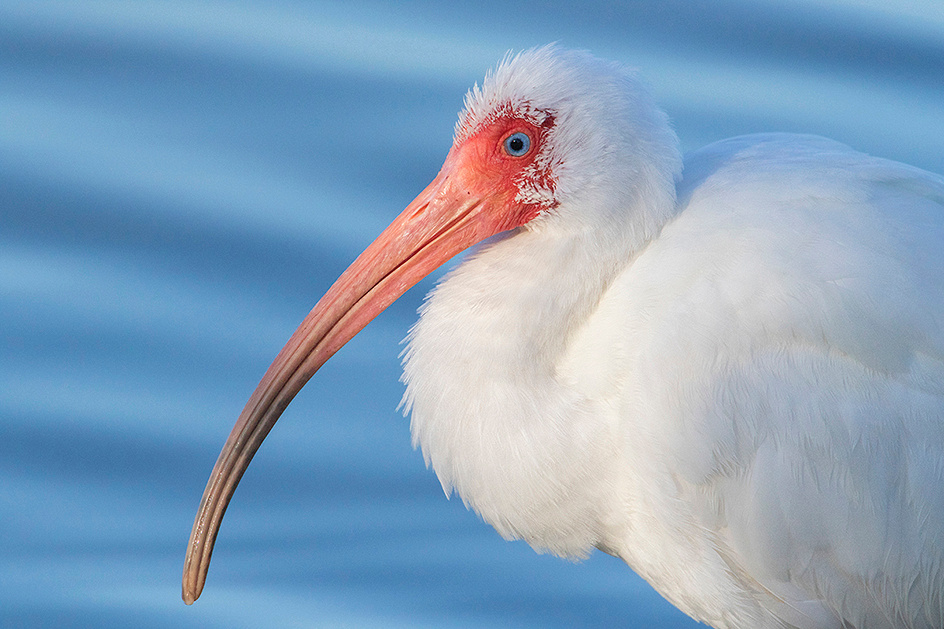
 White Ibis
White Ibis
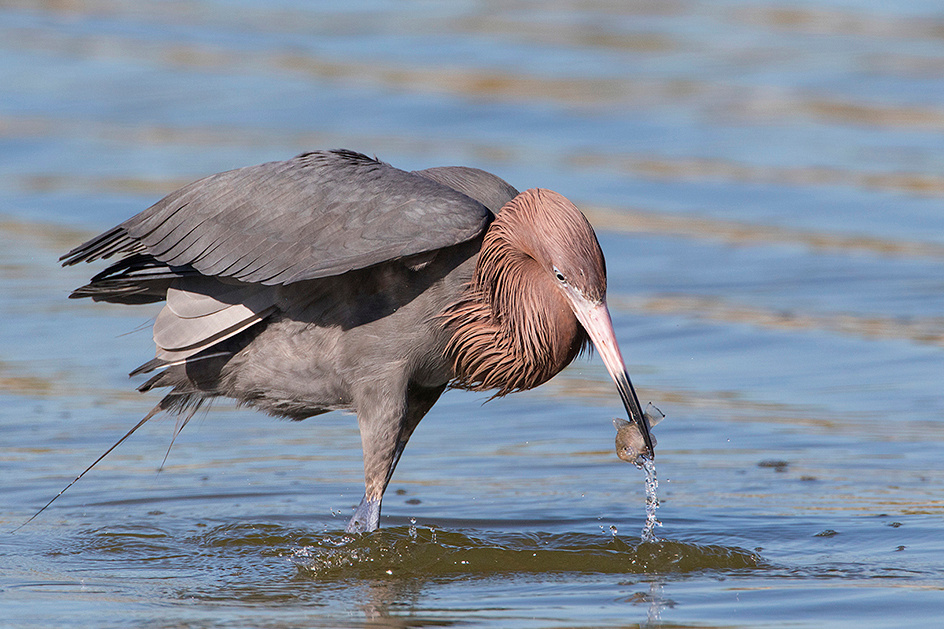
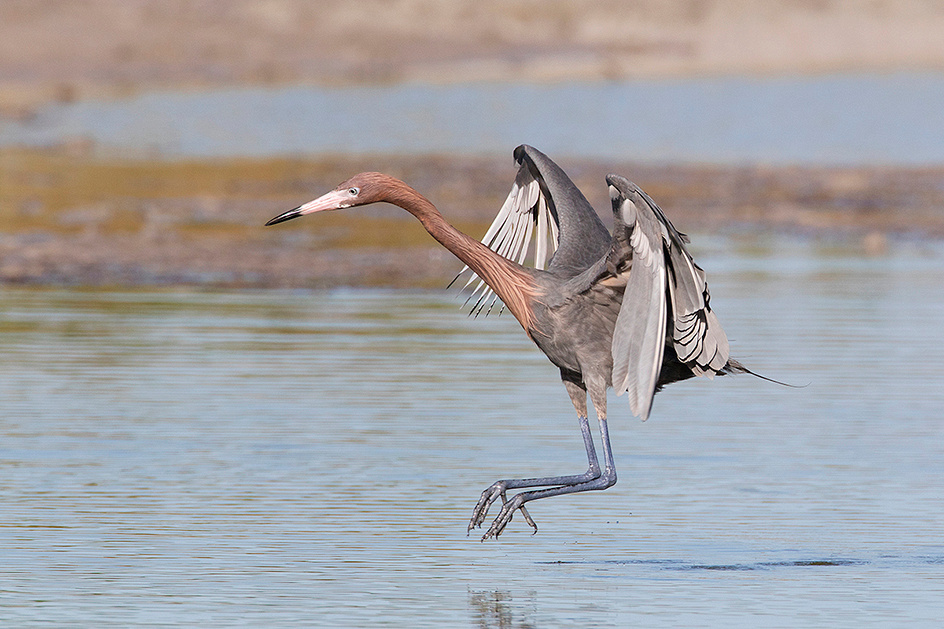 Reddish Egret
Reddish Egret
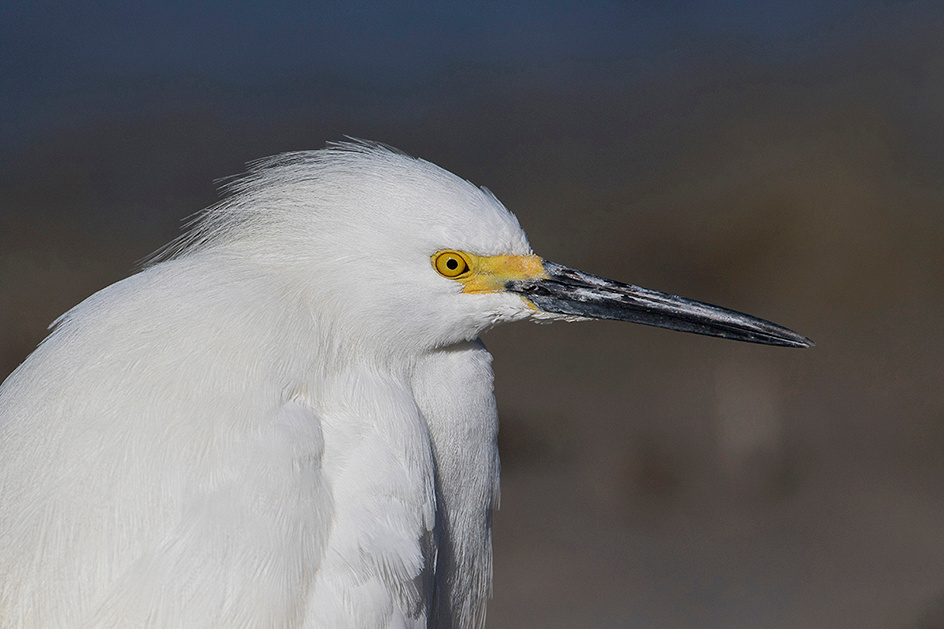 Snowy Egret
Snowy Egret
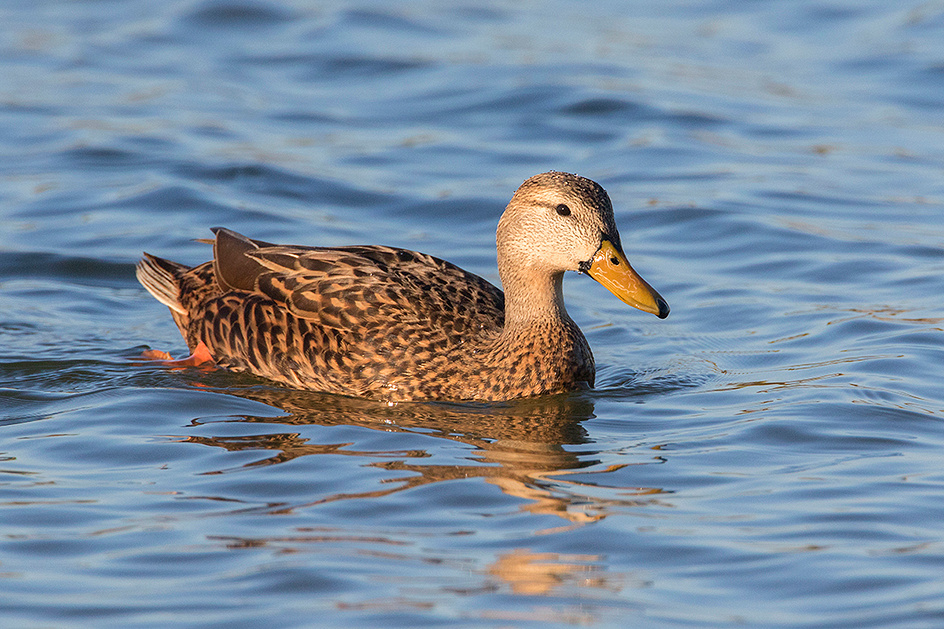 Mottled Duck
Mottled Duck
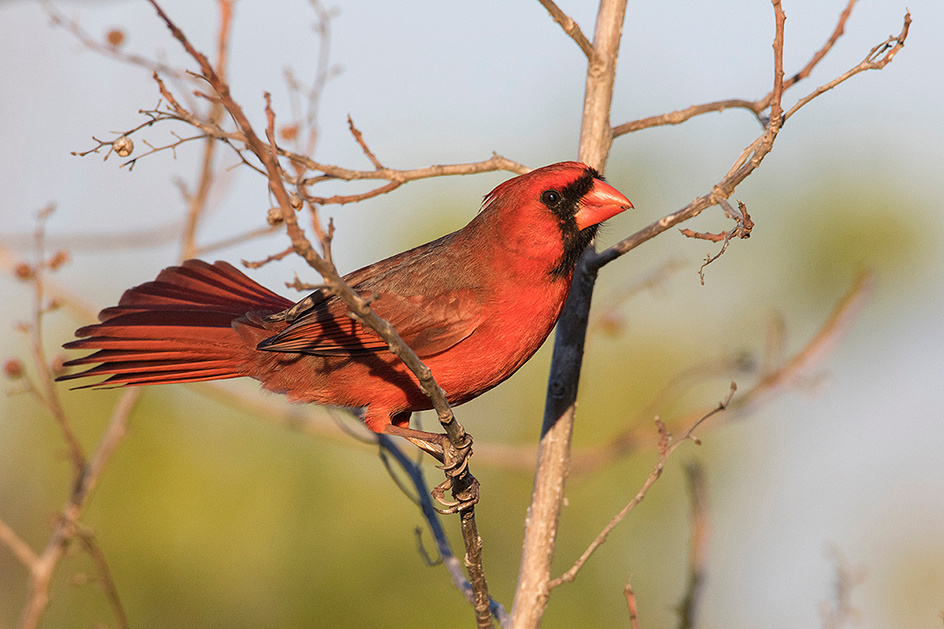 Northern Cardinal
Northern Cardinal
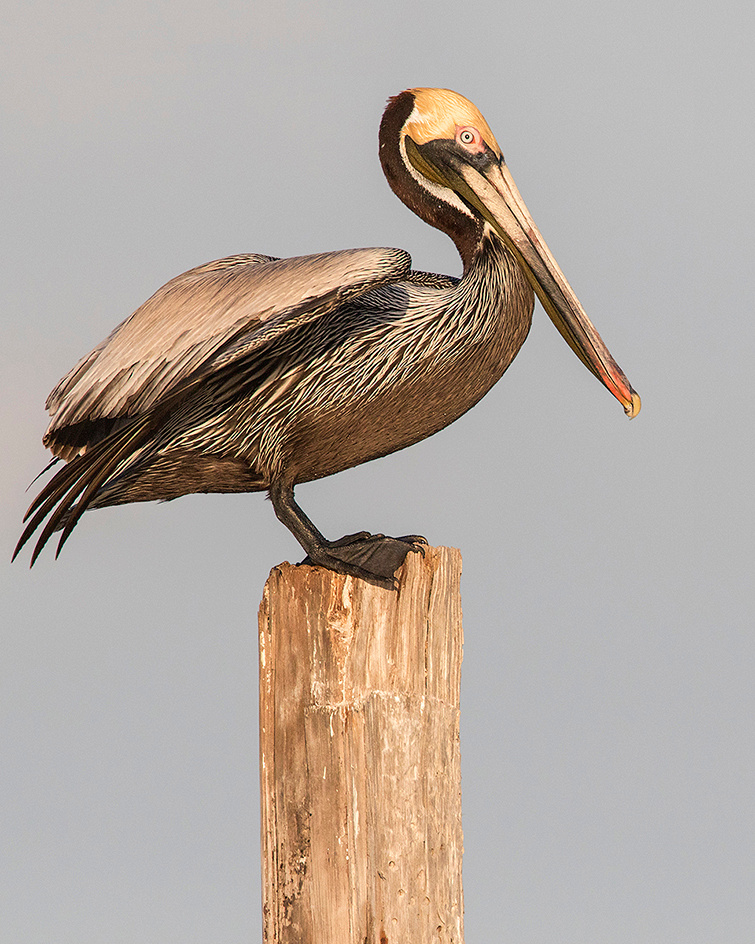
Brown Pelican
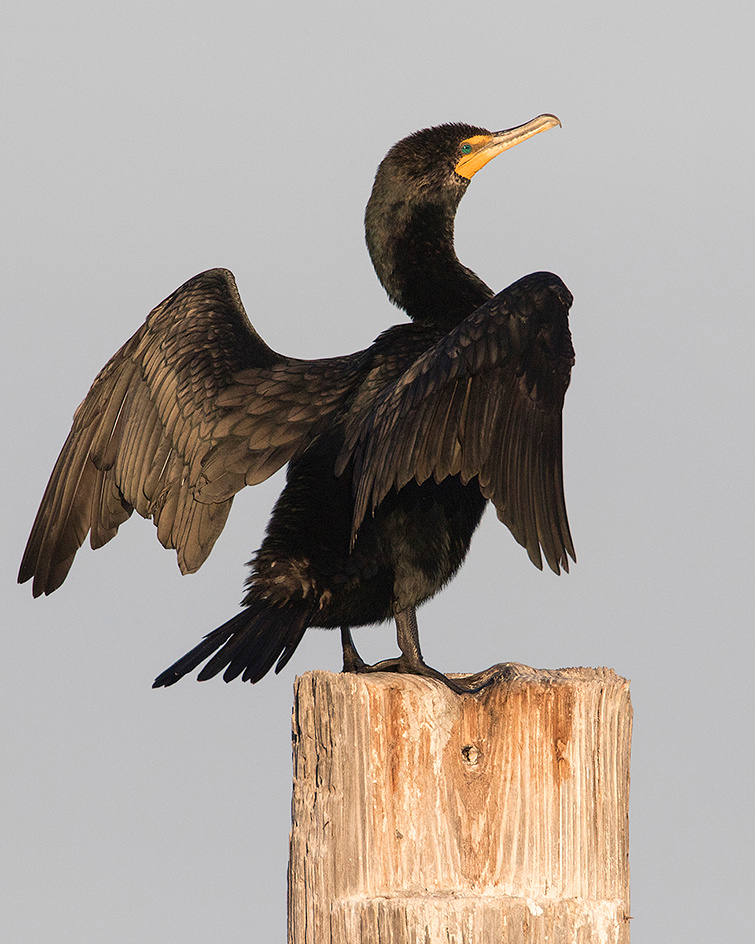
Double-Creasted Cormorant
After Little Estero Lagoon we headed to a new venue east of Naples. Shady Hollow Rookery (also called Corkscrew Marsh Ecosystem Watershed or CREW) has over 10 miles of excellent trails through a cypress stand, freshwater marsh and around a large lake. We were able to photograph a number of waders in the small pockets of water under a fairly closed canopy. This lighting produces some interesting images with the birds in the light against a very dark background.
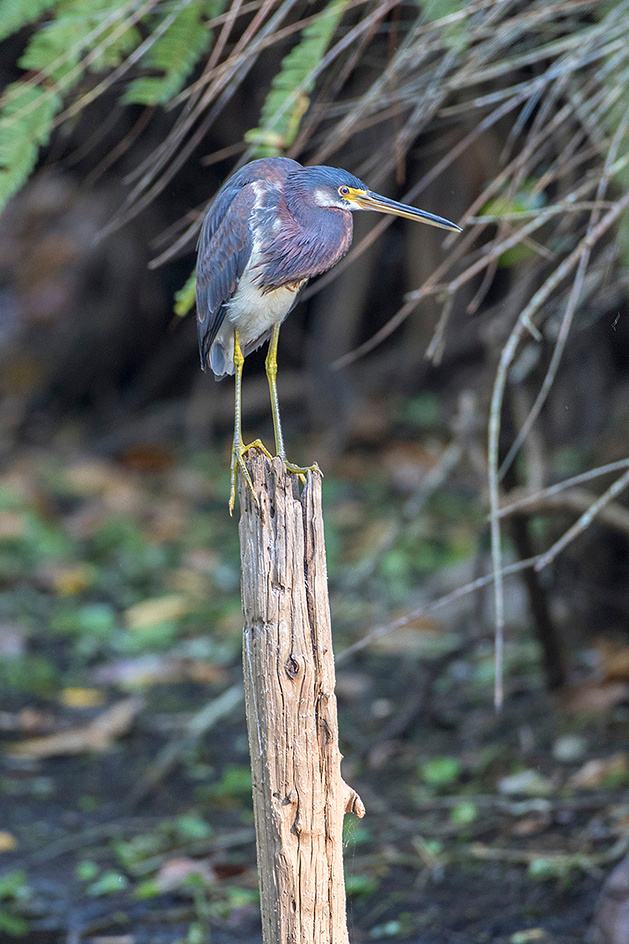
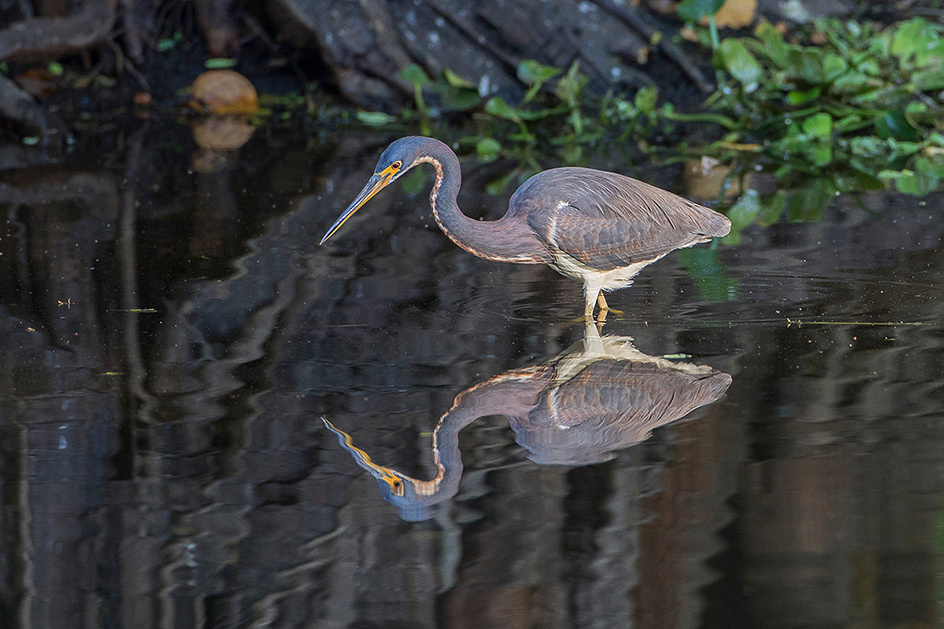
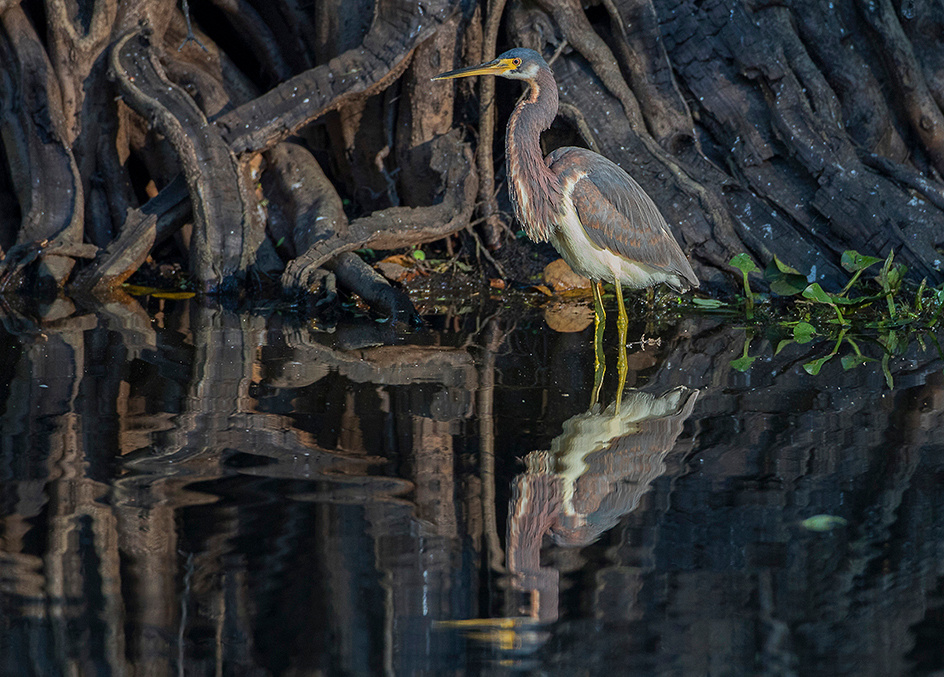 Tricolored Heron
Tricolored Heron
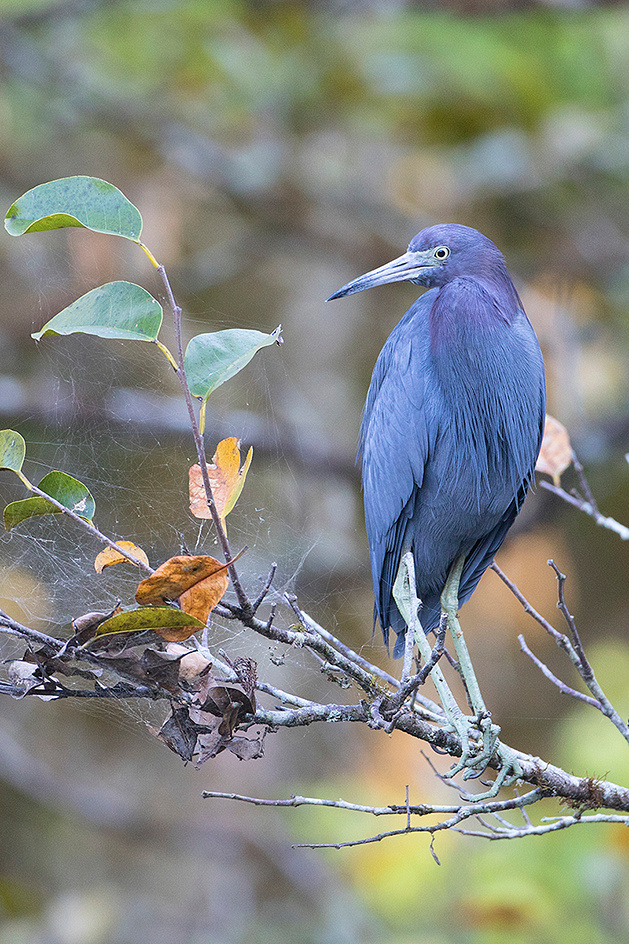
Little Blue Heron
At the end of Shady Hollow Road we found a pair of swallow-tailed kites actively involved in courtship, including nest construction, prey exchange and copulation. These were life birds for me and I attempted several hundred flight shots. Apparently, giving your mate a lizard makes her receptive? Who knew?

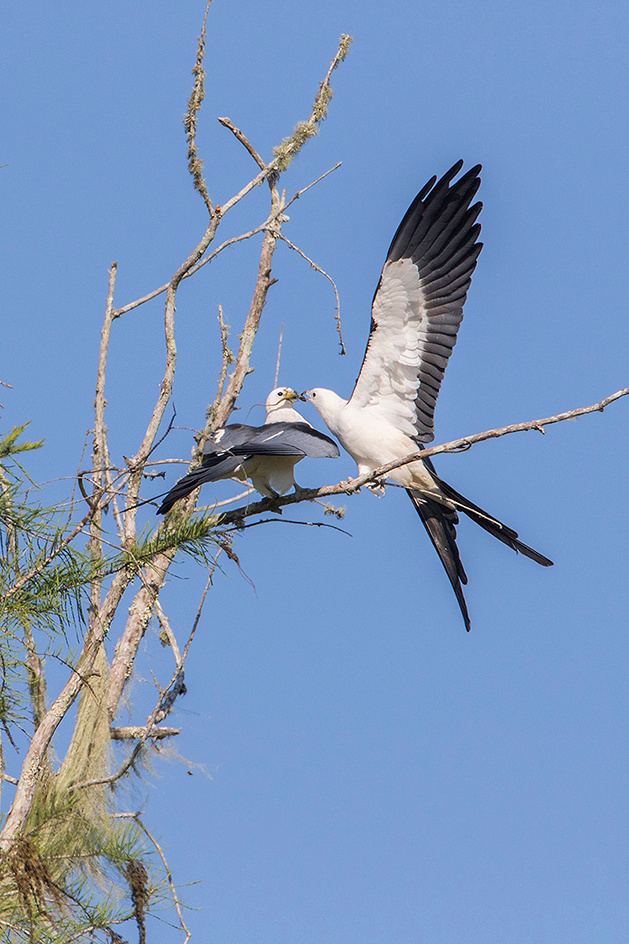
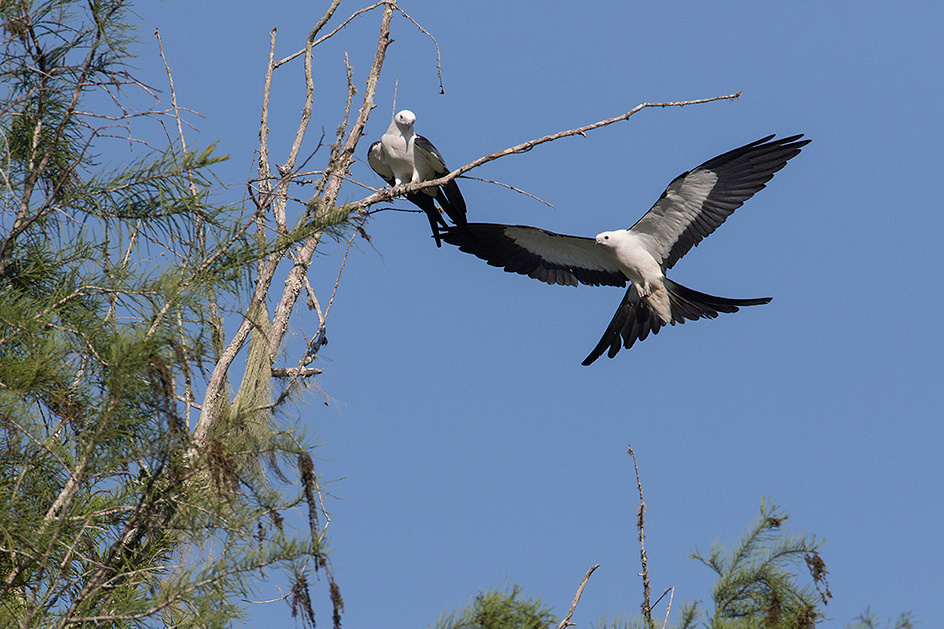
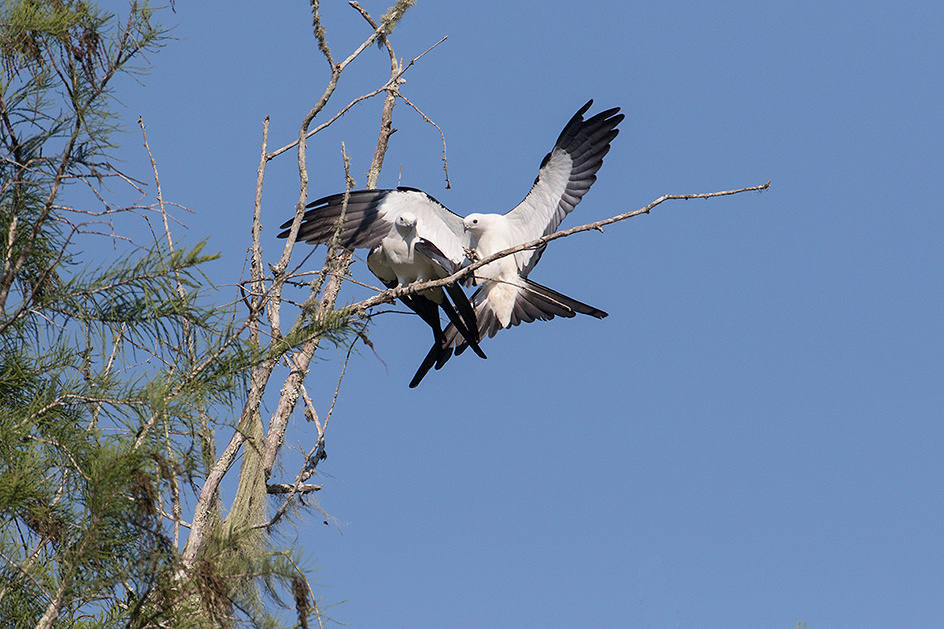
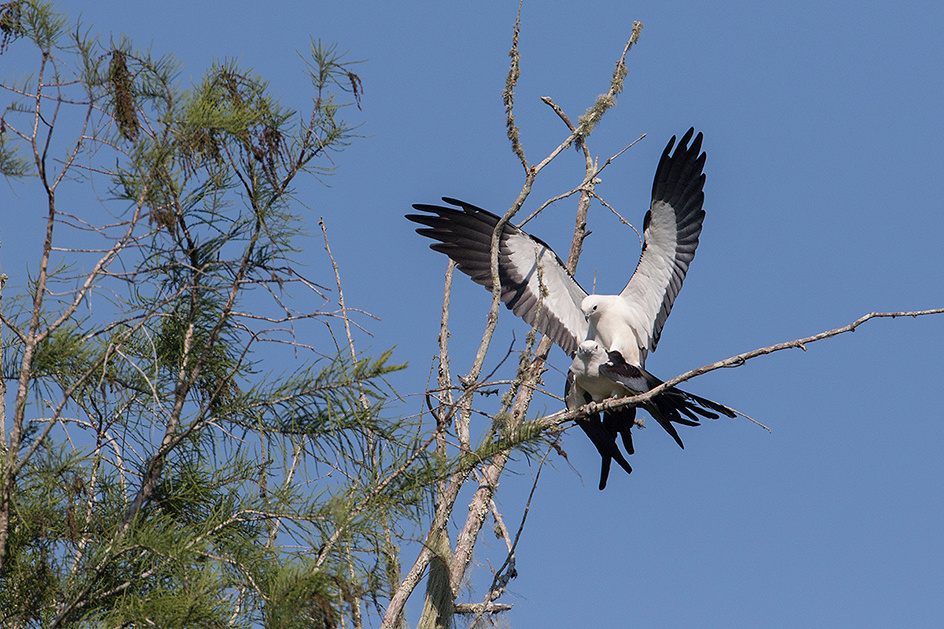
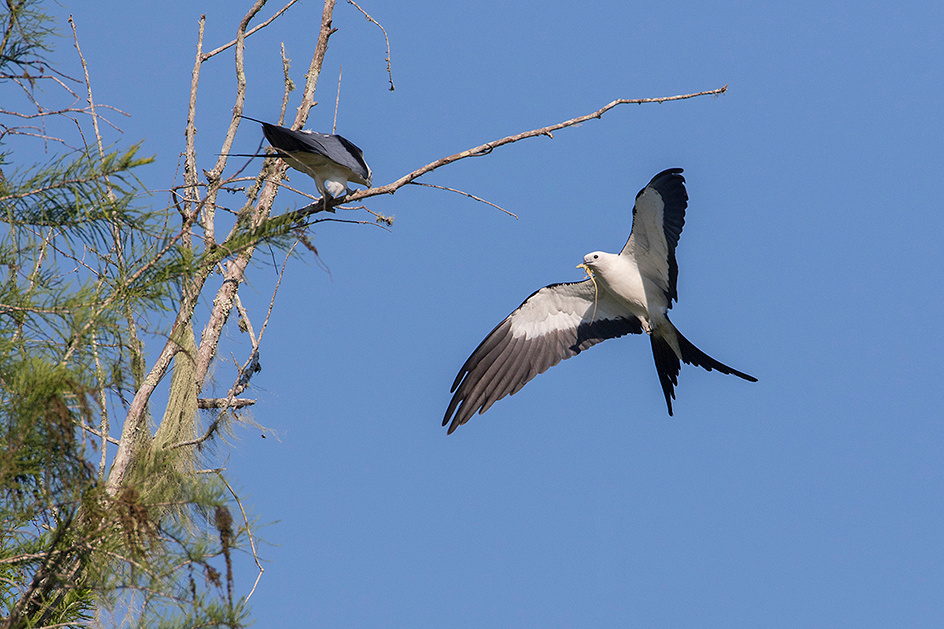
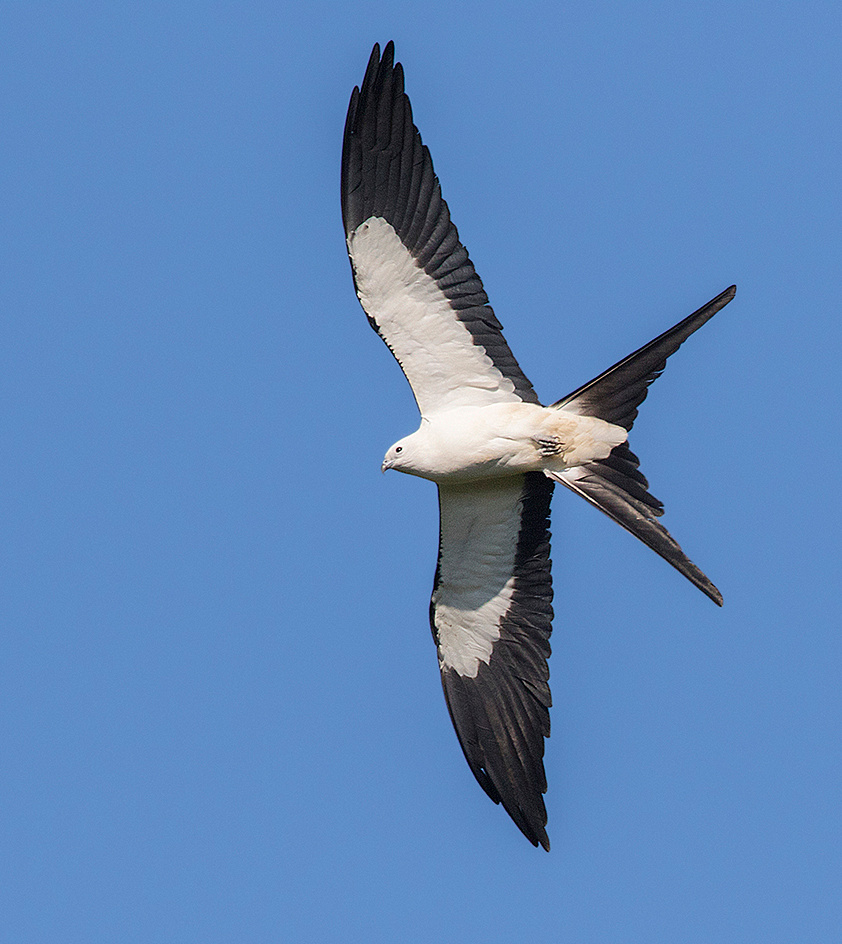
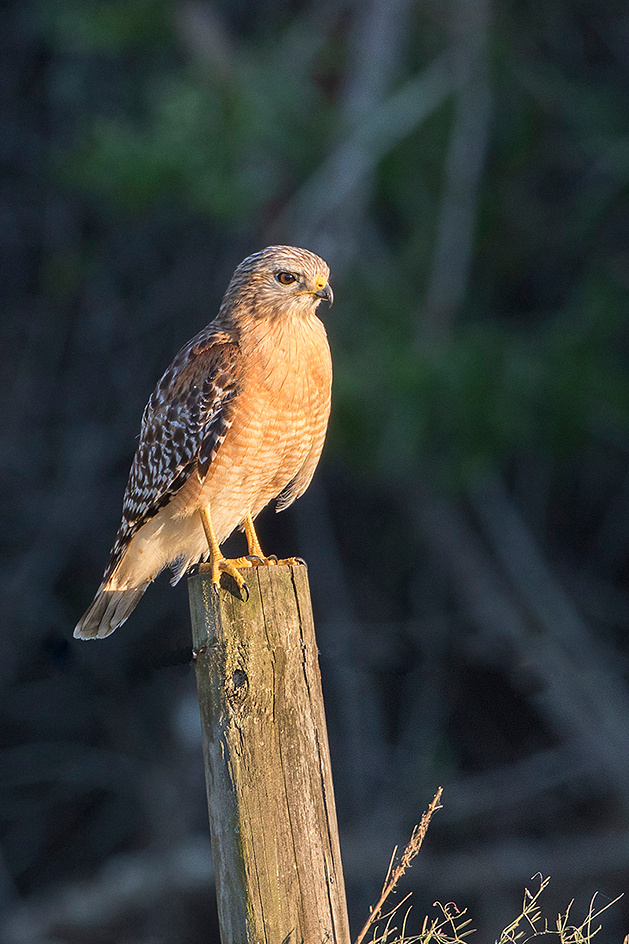
Red-Shouldered Hawk
The next morning we visited Ding Darling NWR (1 Wildlife Drive) on Sanibel Island. This refuge boasts a four-mile long auto tour route through the largest undeveloped mangrove ecosystem in the U.S. In addition to the auto tour route, several well maintained trails bisect the 6,400 acre refuge. Biking and fishing were quite popular activities, but large numbers of wildlife photographers were also present at every break in the mangroves. The very first pond upon entry was covered in birds actively feeding. Species included most of the waders and a pair of very active foraging osprey.
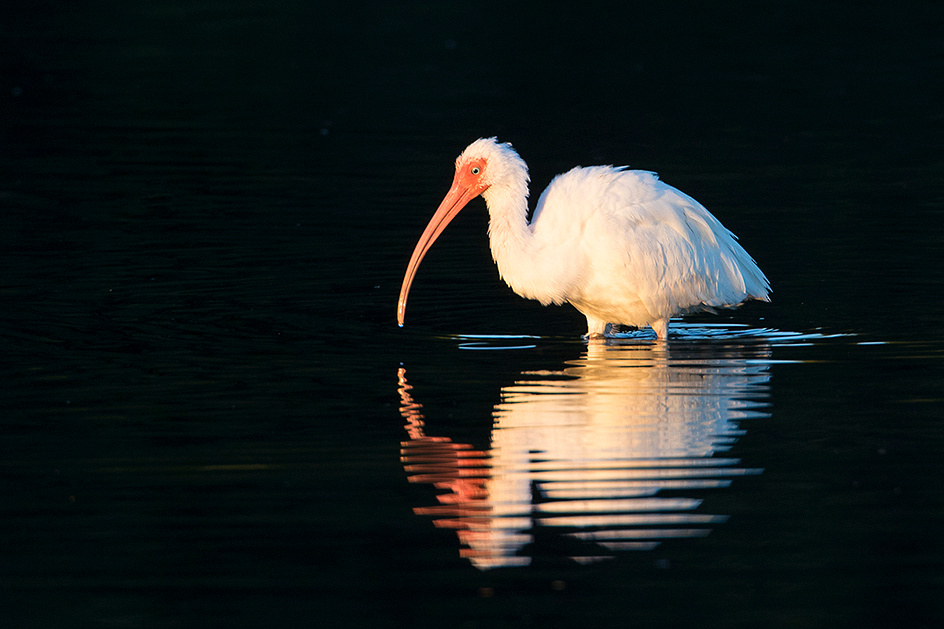
White Ibis
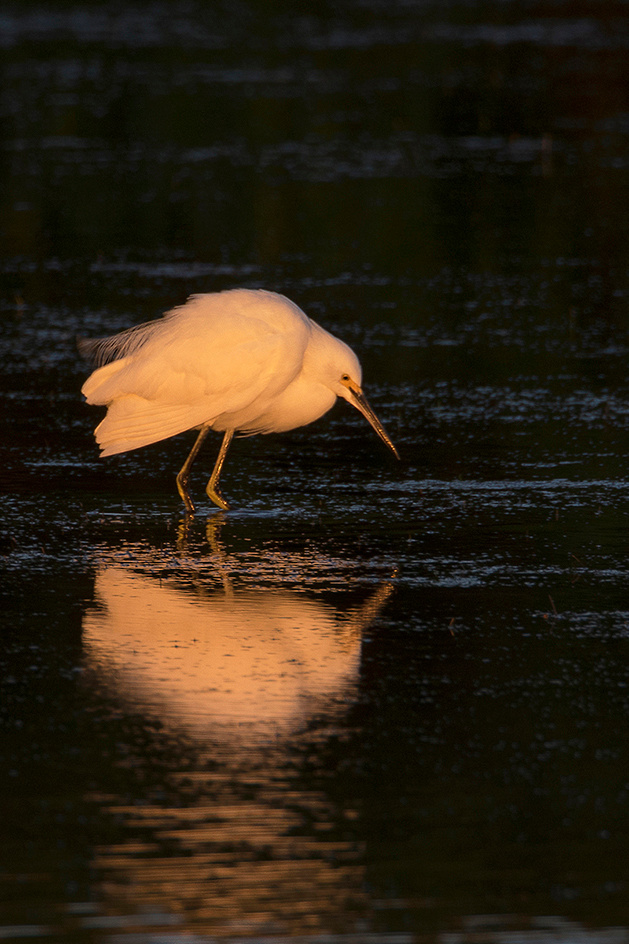
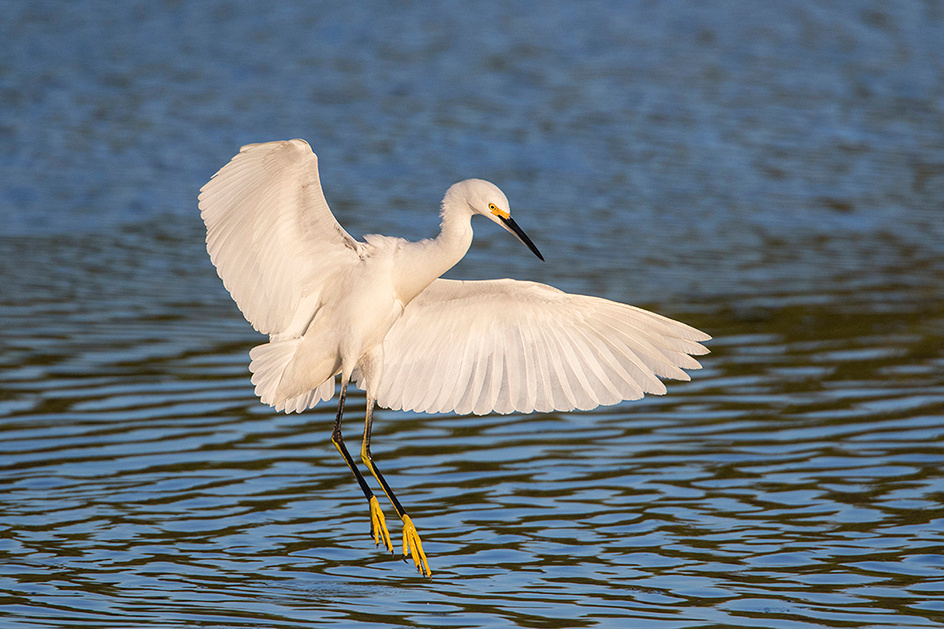
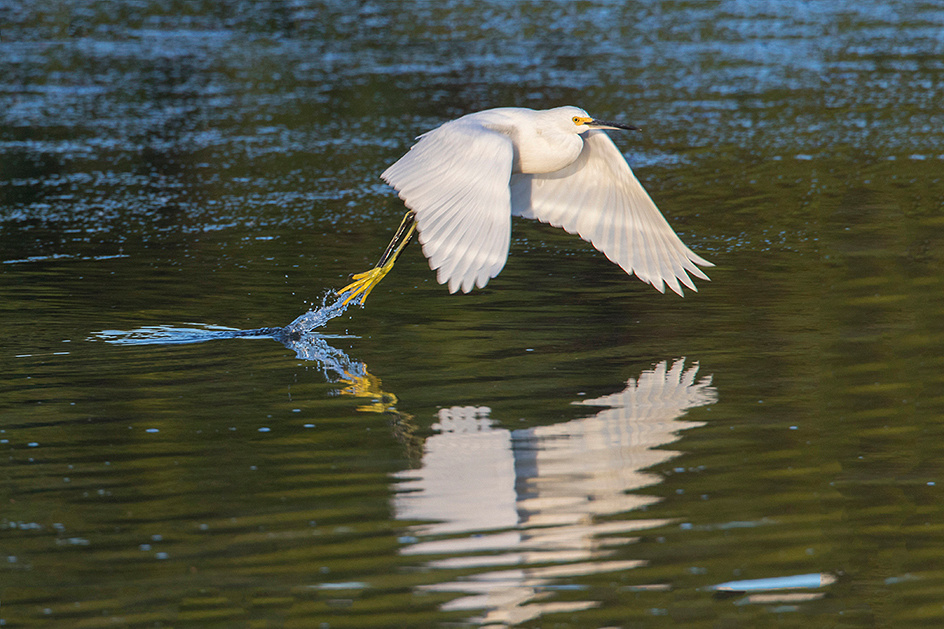 Snowy Egret
Snowy Egret
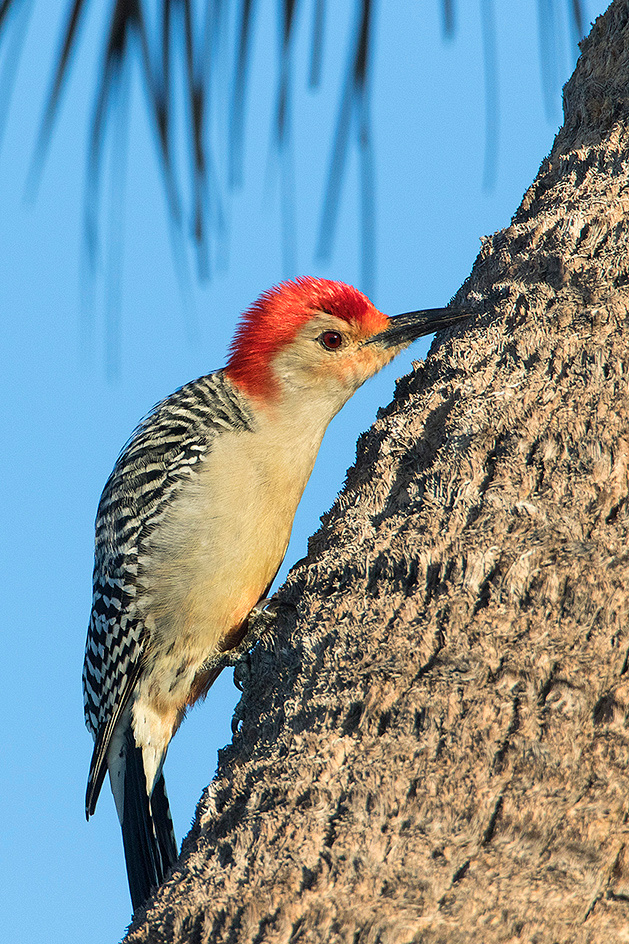

Red-Bellied Woodpecker

Roseate Spoonbill
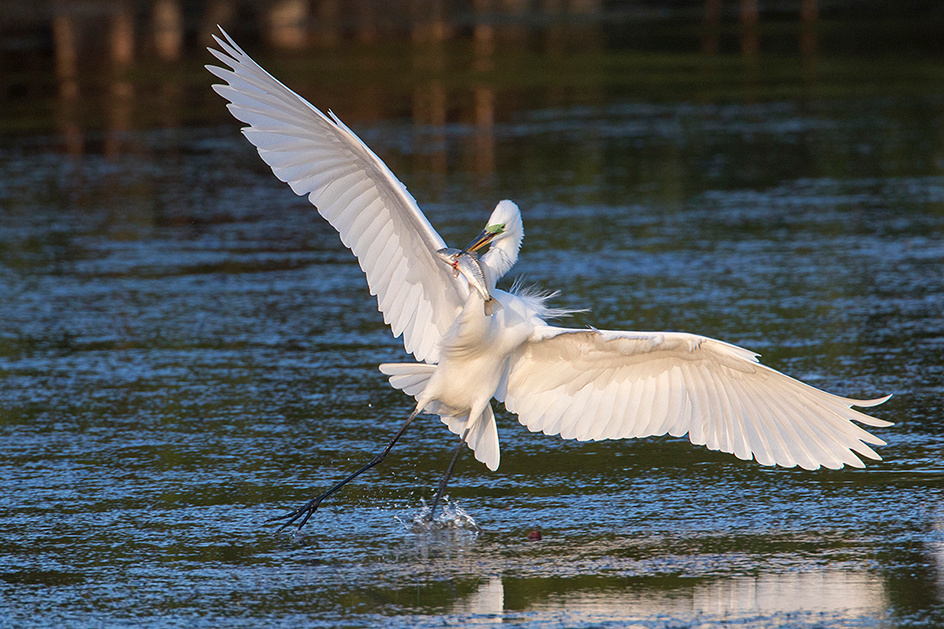
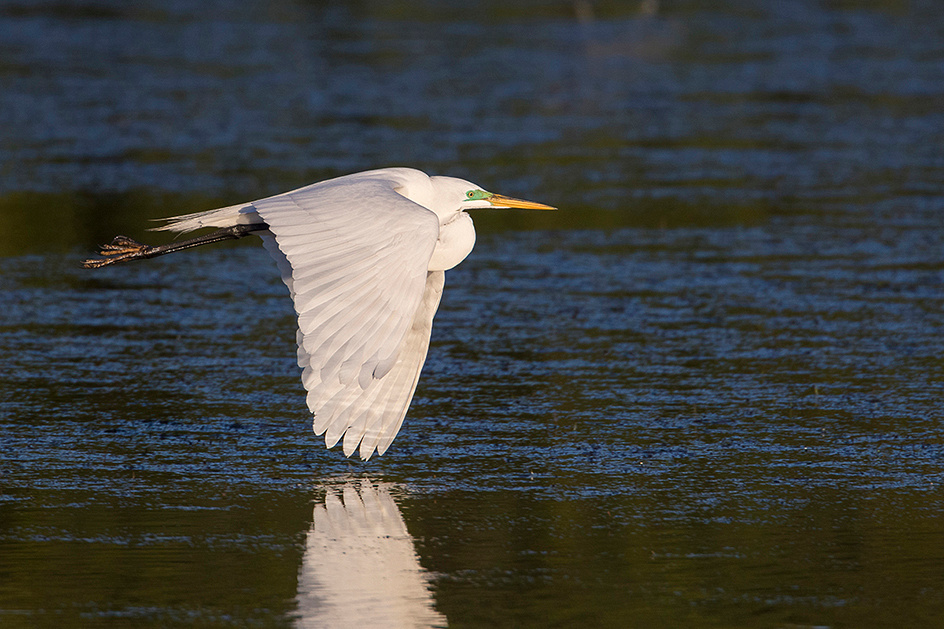
Great Egret
 American White Pelican
American White Pelican
We stopped at Bunchee Beach on the way back from Sanibel Island. Reports are that this area can be quite good for gulls, terns, shorebirds, and waders. Other than a few laughing gulls, it was almost bird free at the time of our visit.
After a very productive morning at Ding Darling we were ready to go back the next morning but, Ding Darling auto tour route is closed Fridays so we decided to visit the Bailey Tract of Ding Darling NWR. This separate parcel off Tarpon Bay Road contains a network of sloughs and ponds with some open grasslands and dense mangroves. I was able to photograph a few species including northern cardinal, anhinga, blue-winged teal, tricolored heron and common ground dove. Relatively few species were observed and they were spooky as compared to other Florida locations.
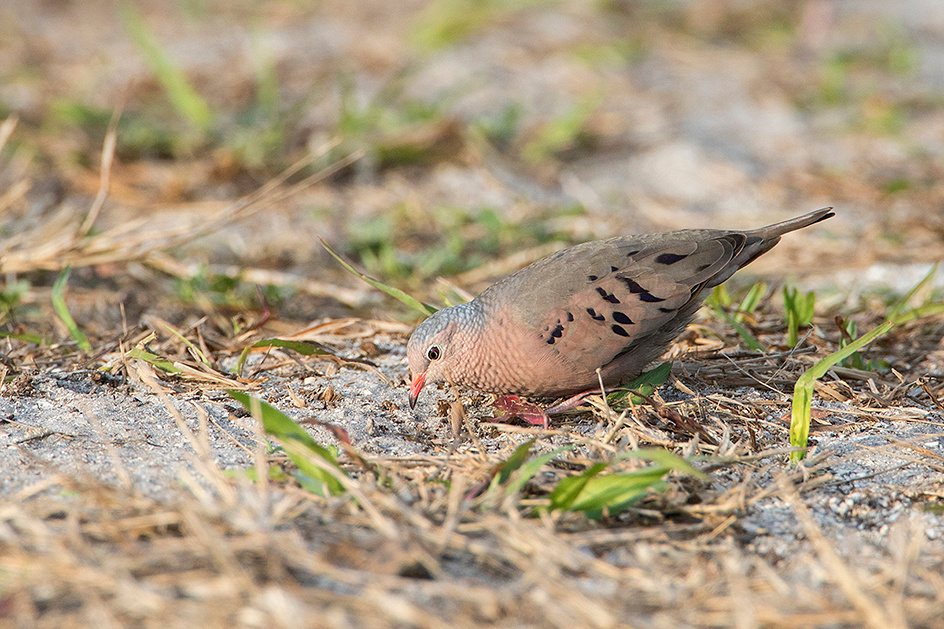 Common Ground Dove
Common Ground Dove
That afternoon we decided to explore a new photo location a few blocks from our lodging in Fort Meyers called Six-Mile Cypress Slough Preserve. This 3,400 acre preserve has a 1.2 mile long boardwalk through a cypress swamp with some portions bordering a large freshwater lake. I was specifically attempting to capture images of pileated woodpeckers. I have had difficulty acquiring decent photographs of the species elsewhere. We did find several of these crow-sized woodpeckers, but decent images were hard to come by.
Several small ponds with nice afternoon light did allow some interesting images including our first image of the trip of a limpkin. A boardwalk favorite was a small band of feral pigs foraging directly adjacent to the boardwalk near dark.
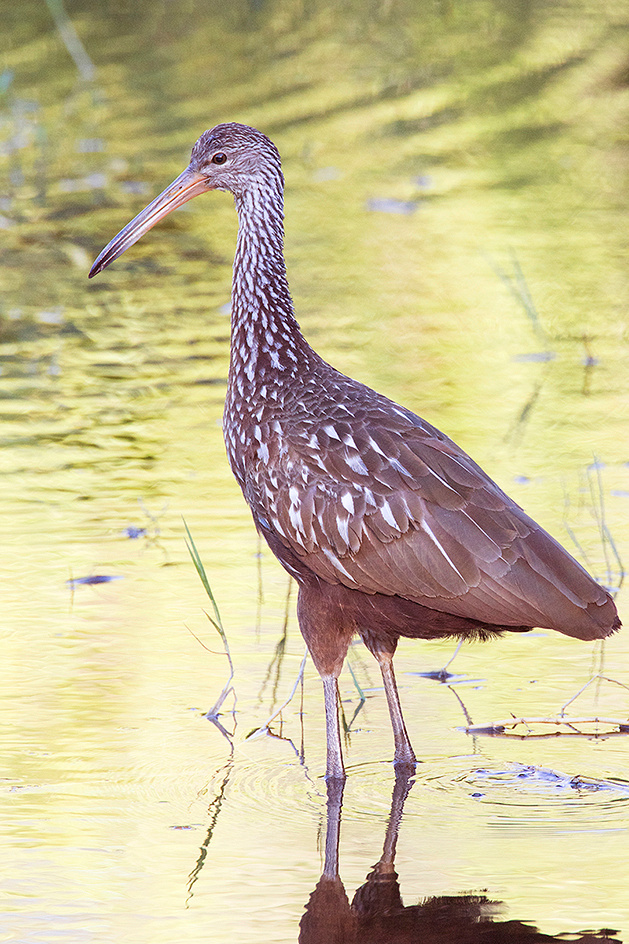
Limpkin

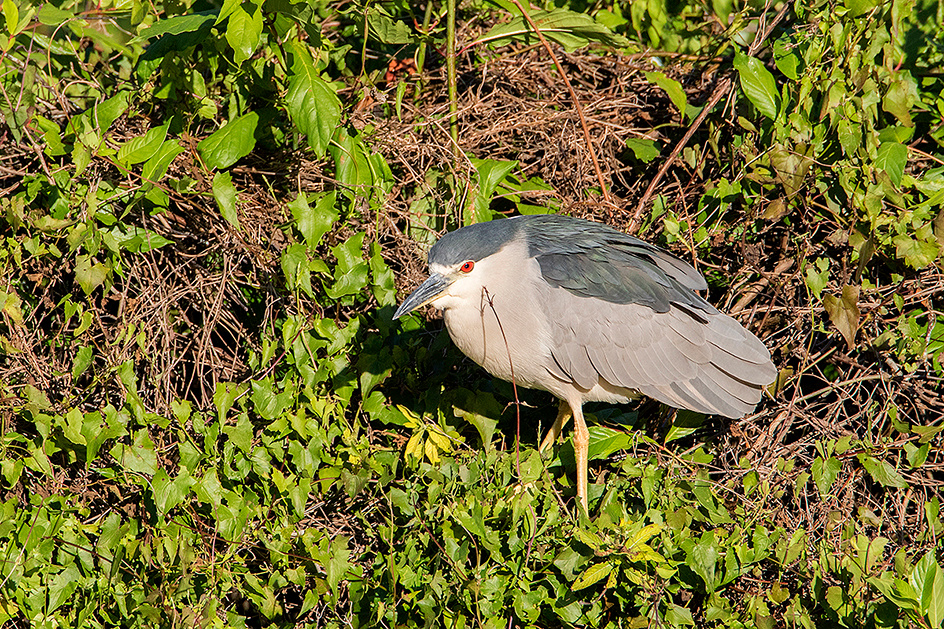 Immature and Adult Black-Crowned Night Heron
Immature and Adult Black-Crowned Night Heron
Our last morning on the Gulf we once again headed back to Ding Darling NWR. We concentrated on photographing osprey on a nest platform. The nest had good morning light and 3 half-grown chicks.
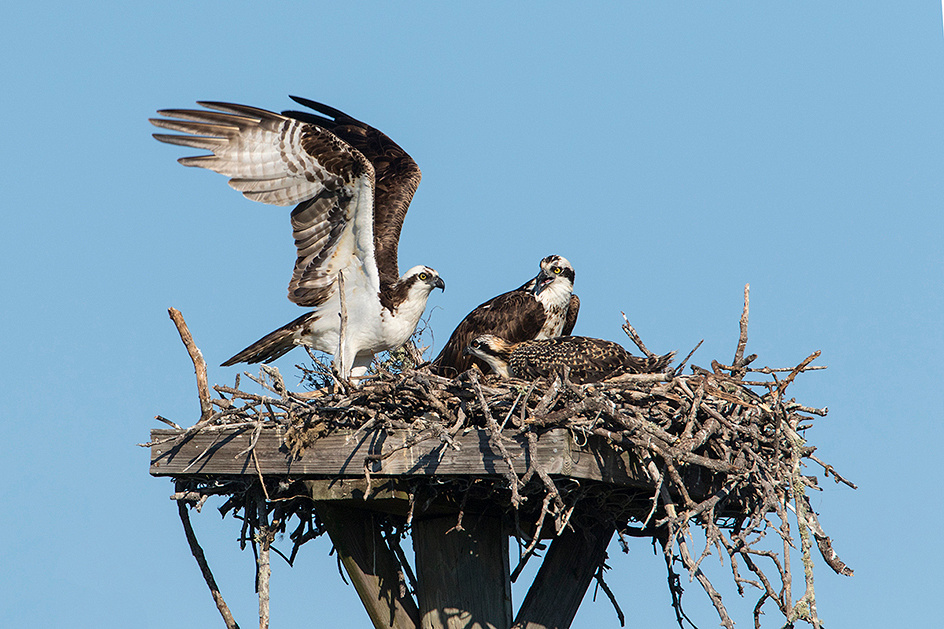
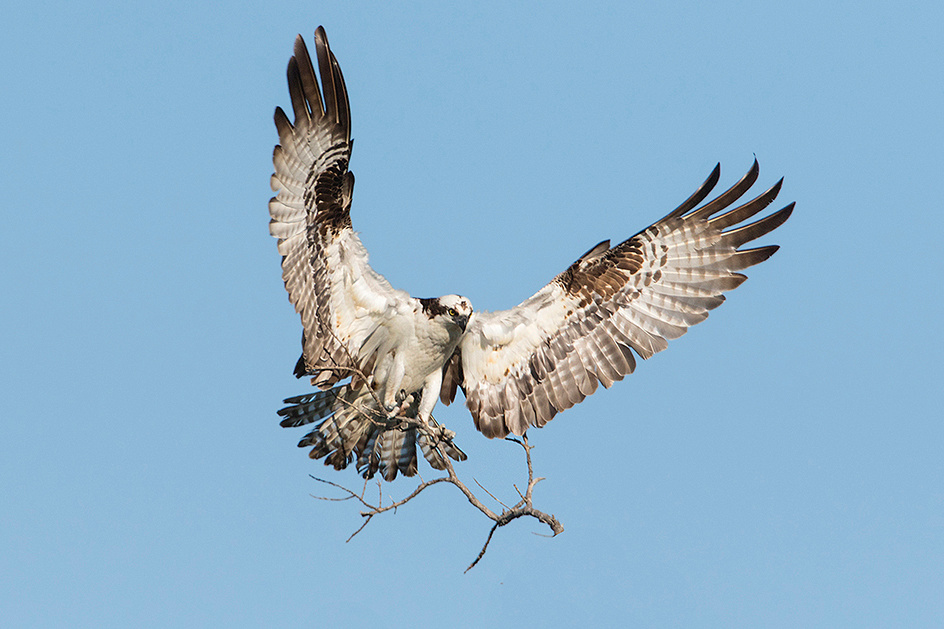
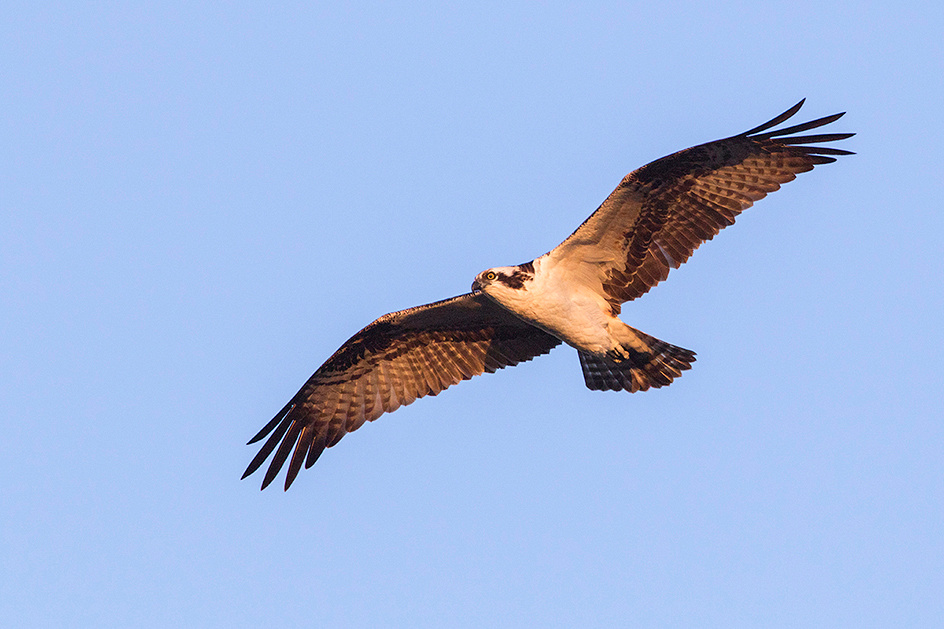

Osprey Nestling
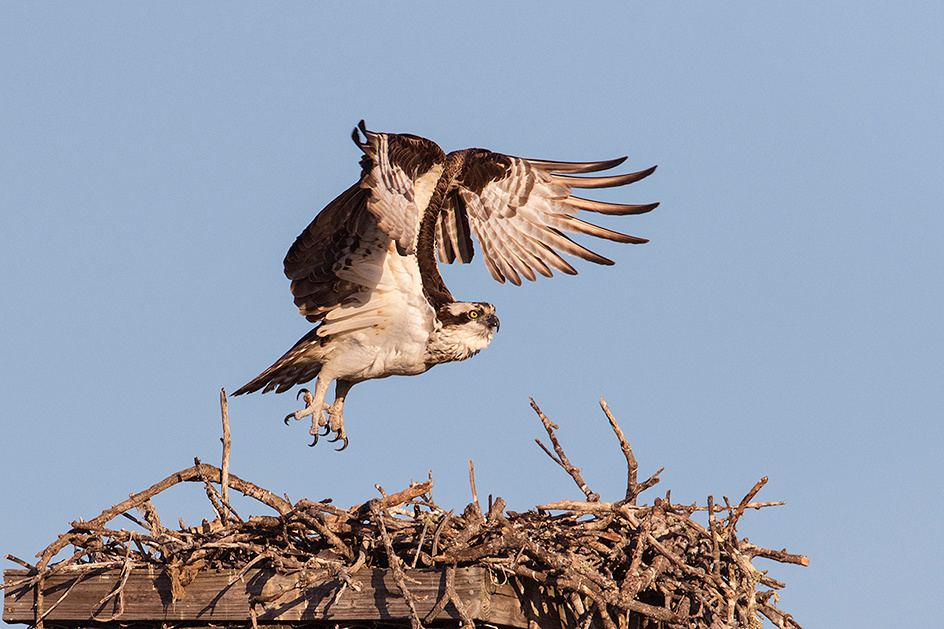
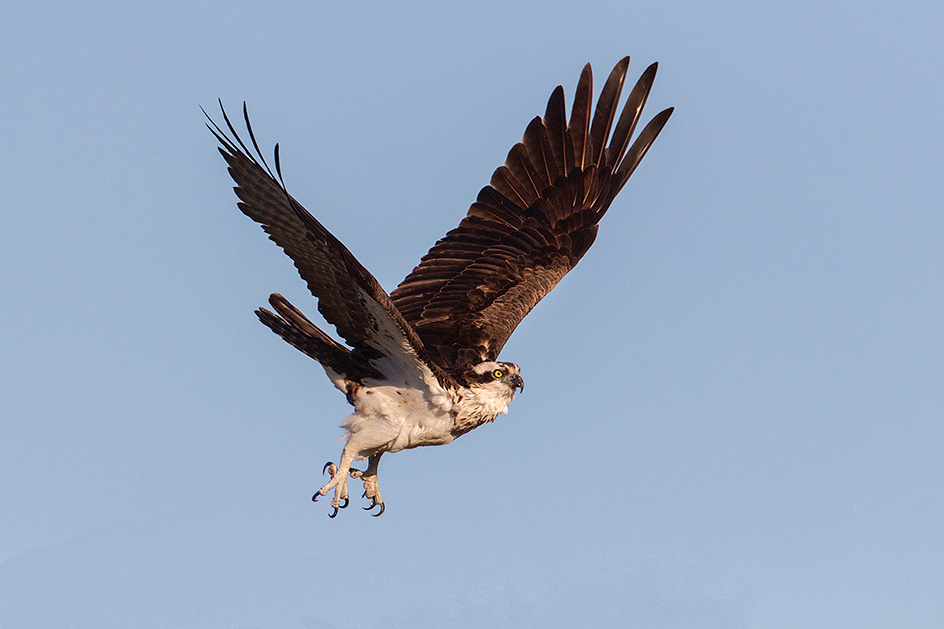
After our morning shoot at Ding Darling we headed back across Florida to Pompano Beach, near Fort Lauderdale. We spent the next seven days at a studio condo on the beach. Photography was concentrated on primarily three locations, with visits to two or all three on most days. The first location was Green Cay Wetlands and Nature Center (12800 Hagan Ranch Road, Boyton Beach). This is a remarkable wetlands enhancement with several south Florida habitats included. We had not even gotten out of the car when a friendly native asked if we had seen the owl? She escorted us over the boardwalk to a well shaded palm tree trunk where an Eastern Screech Owl was roosting. Photo were difficult and he rarely opened his eyes, but we managed at least a few images of this life bird shooting at high ISO and a wide open aperture.
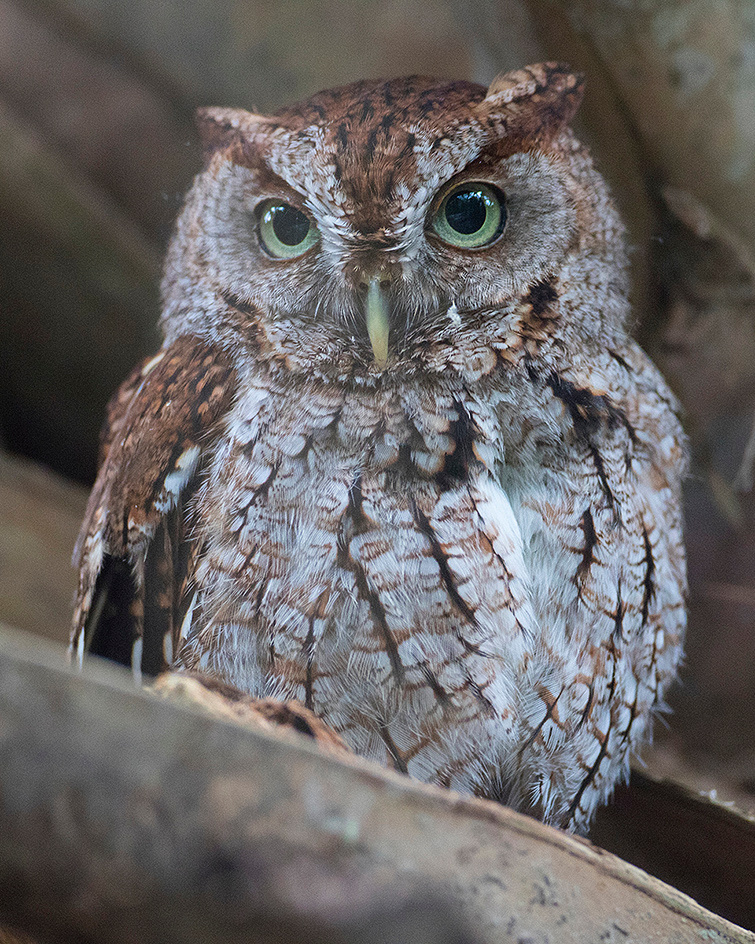
Some nesting was observed and we had an opportunity to follow several foraging anhinga.
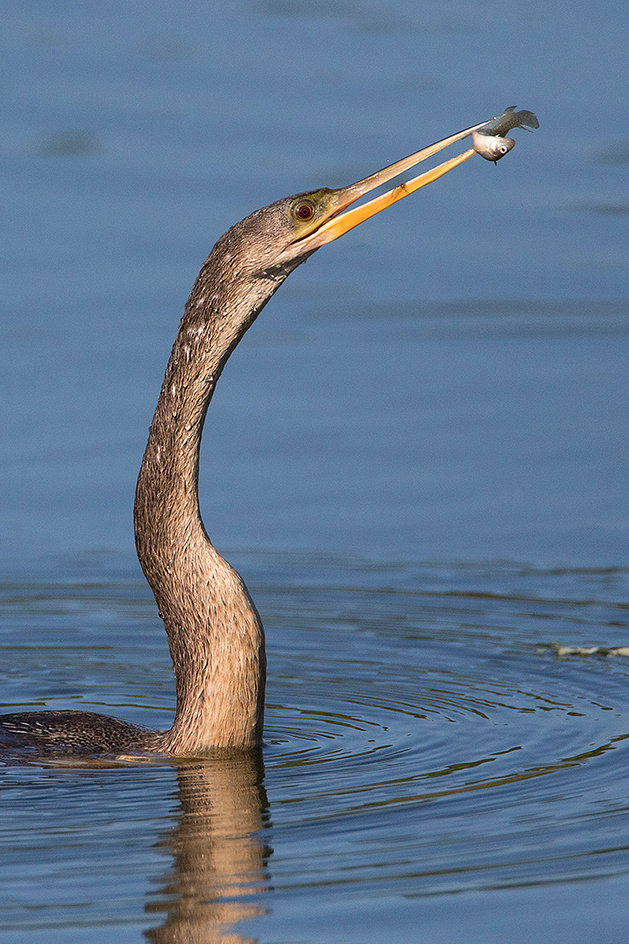
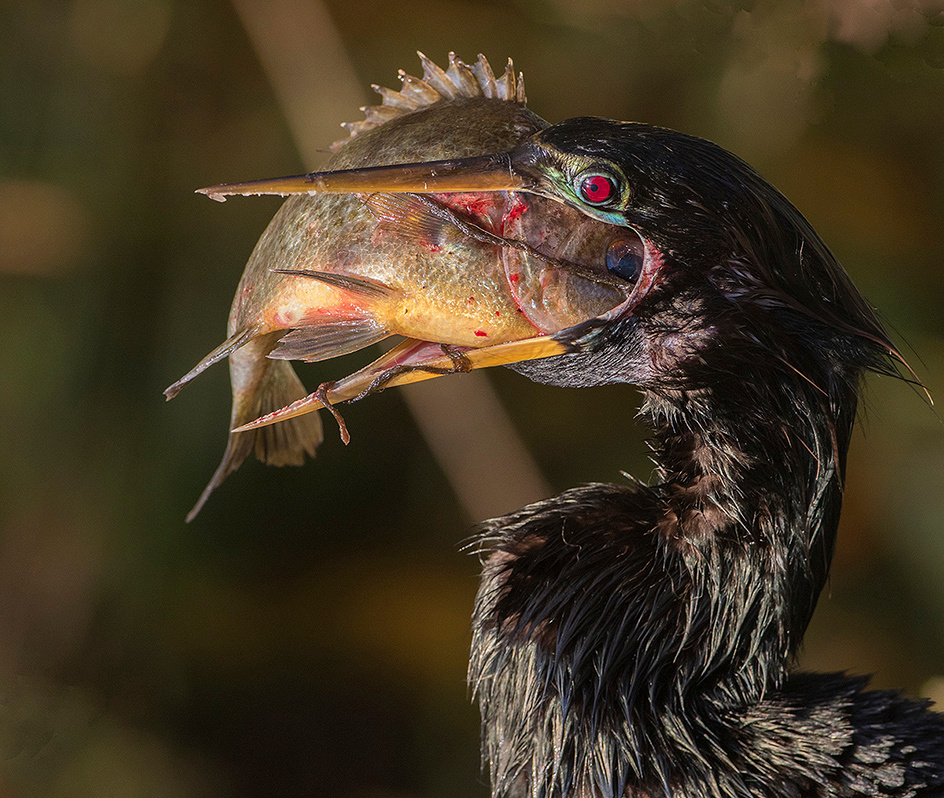 These remarkable predators capture fish underwater and can swallow fish that appear far larger in diameter than their narrow necks would allow.
These remarkable predators capture fish underwater and can swallow fish that appear far larger in diameter than their narrow necks would allow.
Green Cay also appeared to have a fair number of least bitterns. These are quite small and lurk in dense emergent vegetation. I was unable to coax one out of the dense vegetation for an open image.
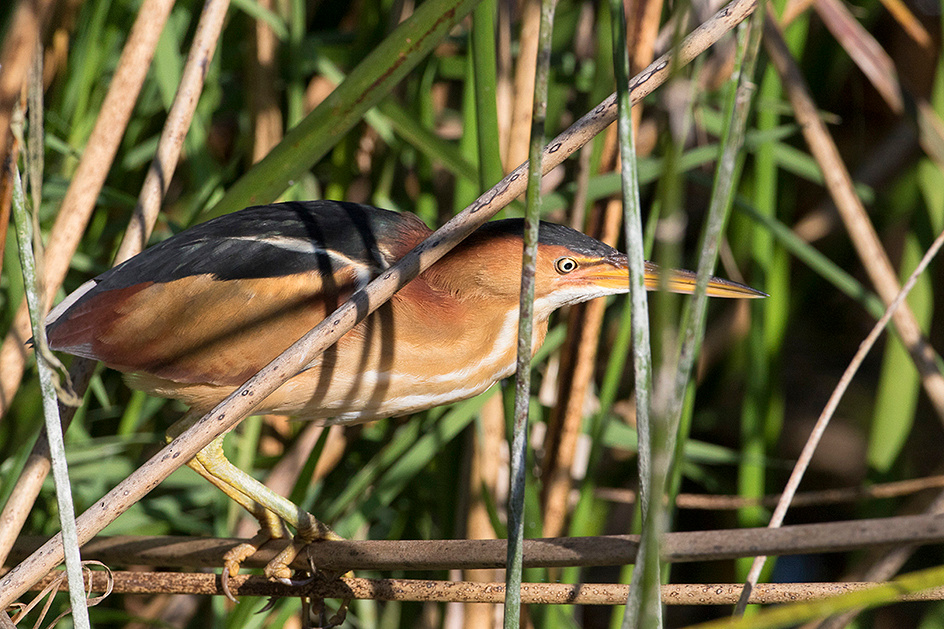 Male Least Bittern
Male Least Bittern
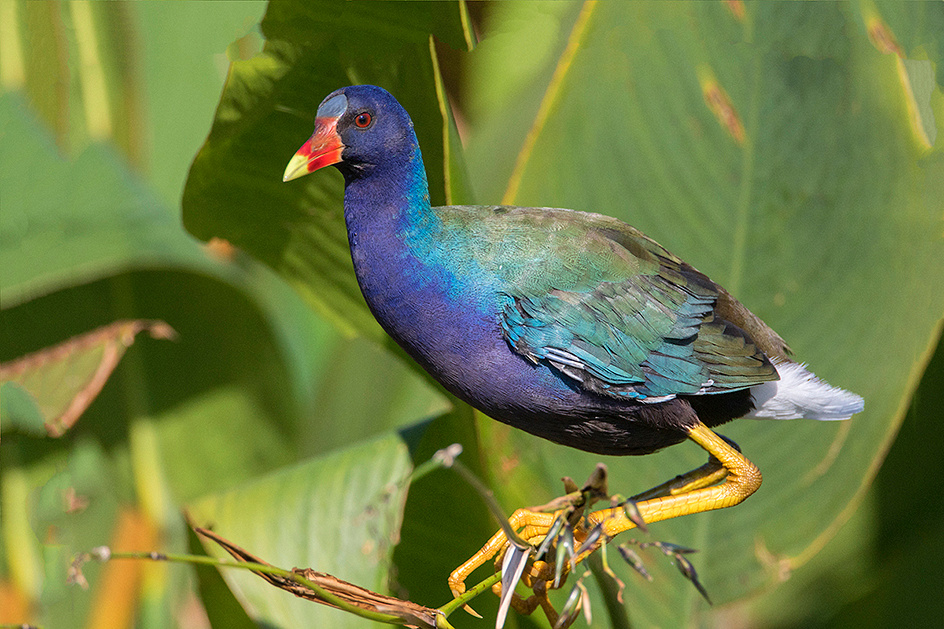
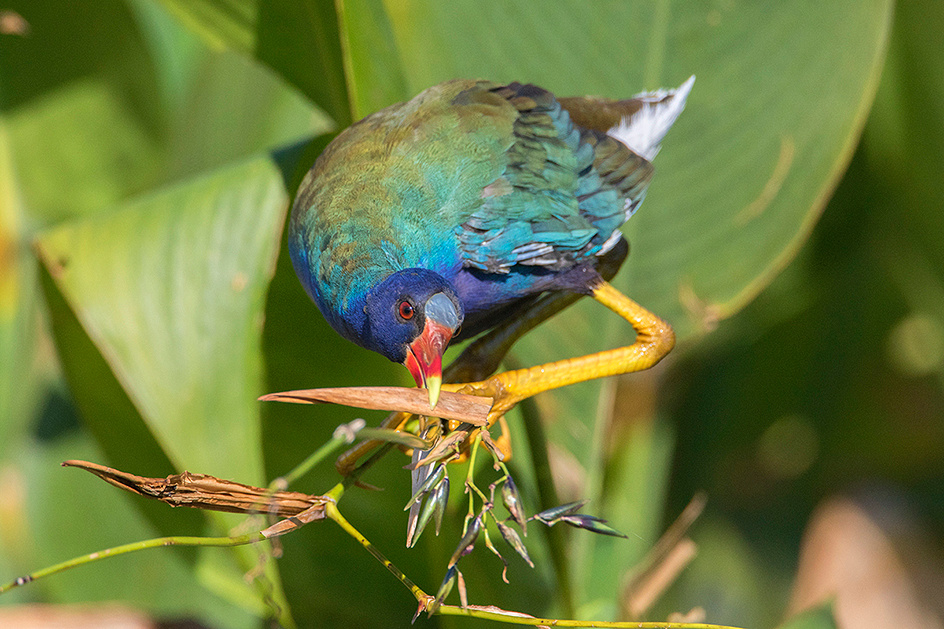 Purple Gallinule
Purple Gallinule
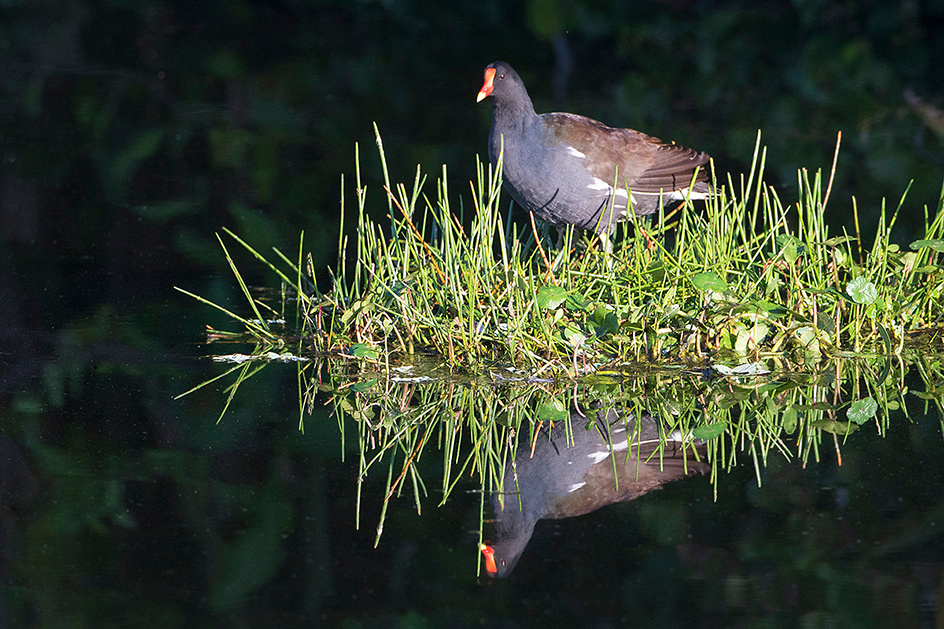 Common Gallinule
Common Gallinule
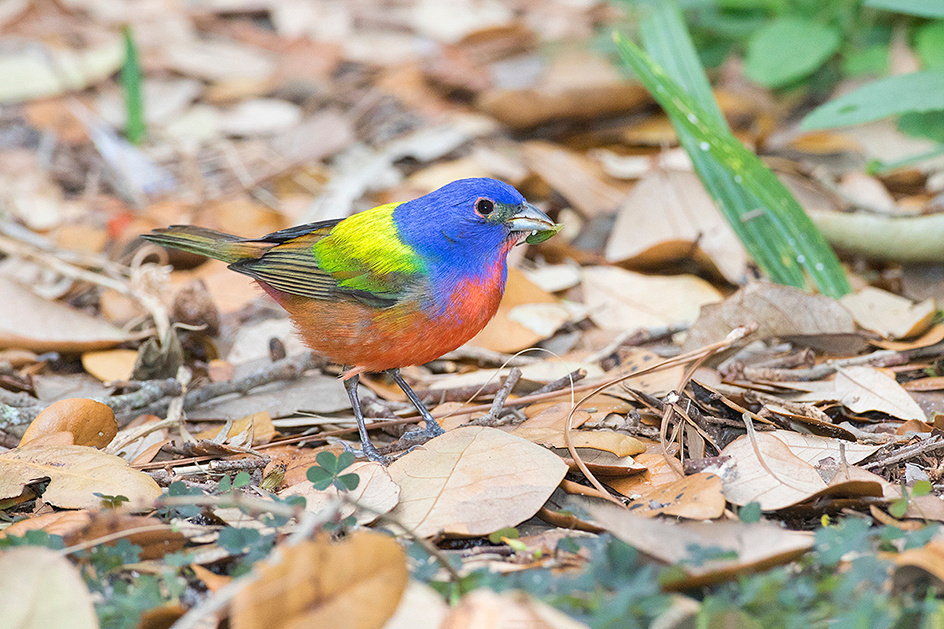 Painted Bunting
Painted Bunting
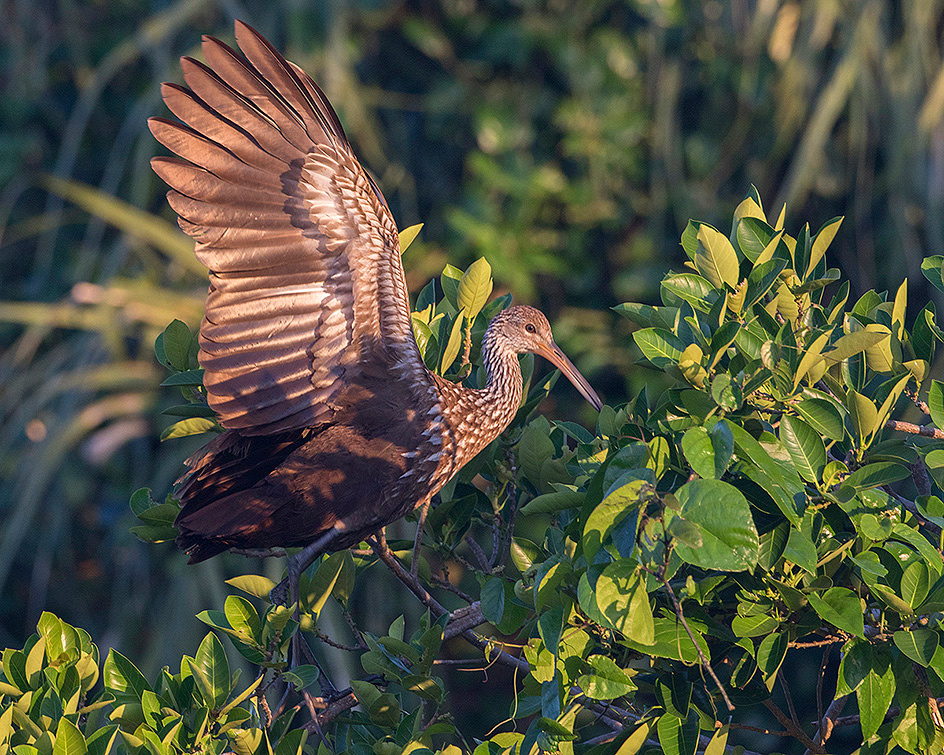 Limpkin
Limpkin
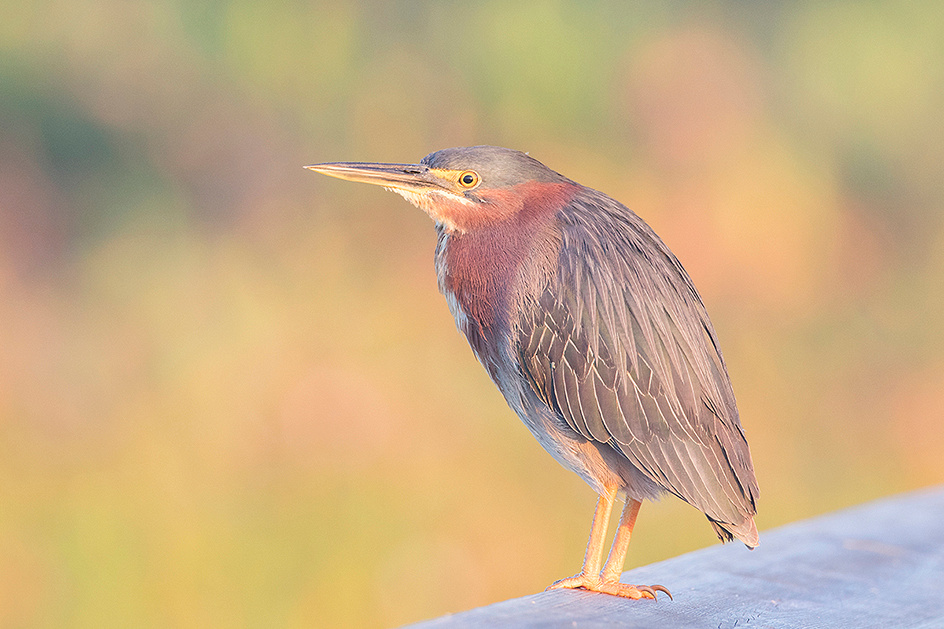 Green Heron
Green Heron
We also visited Arthur R. Marshall Loxahatchee NWR (10216 Lee Road, Boyton Beach). At this location we were most interested in photographing barred owl, pileated woodpecker, and snail kite. No luck on the kite, but we found a barred owl in difficult light on nearly every visit.
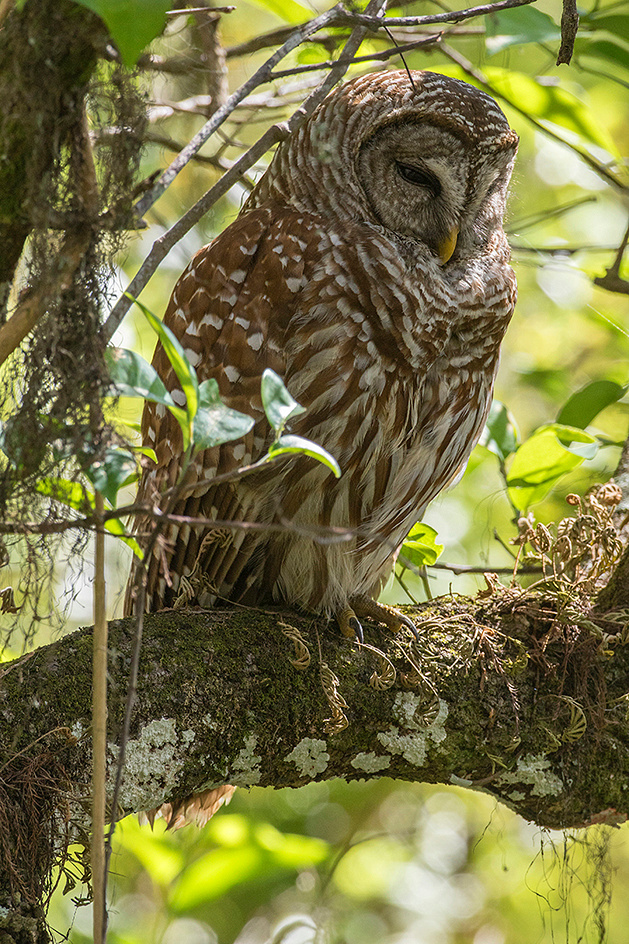
We finally got an eye level image of a pileated woodpecker in decent light. He was to close to get his entire body in the frame.
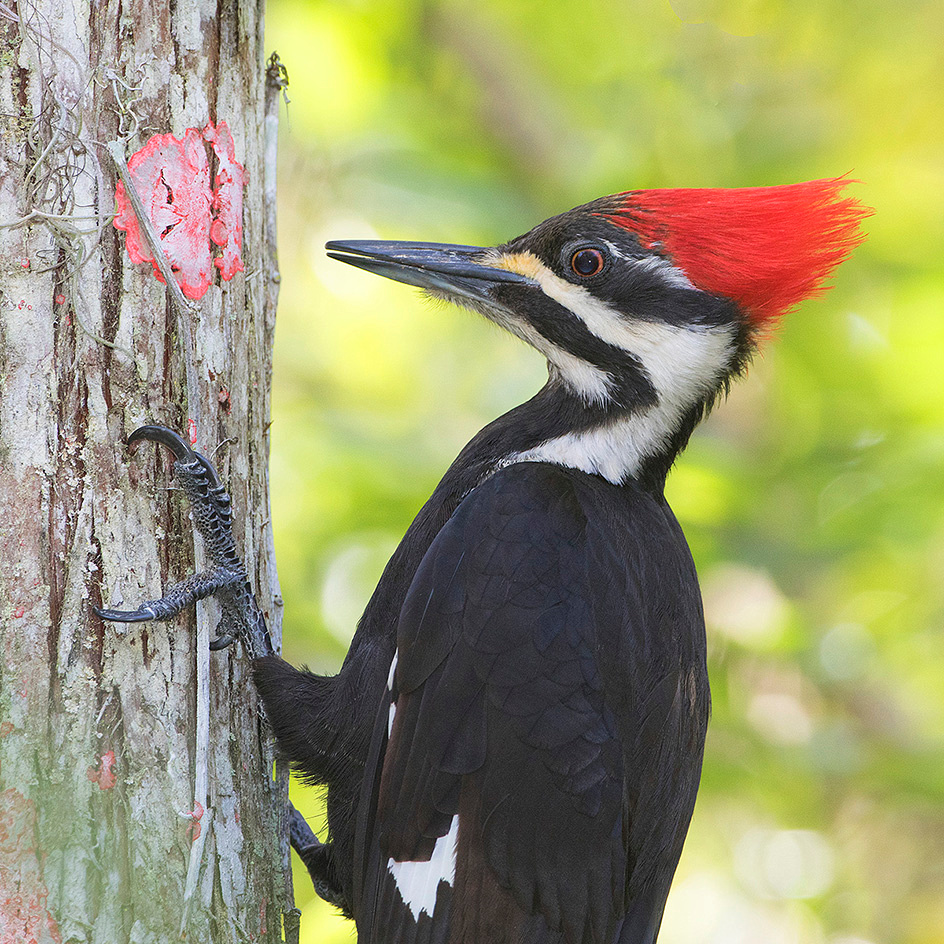
This 144,000 acre wildlife refuge is relatively uncrowded and includes north everglades type habitats. The short 1/2 mile long boardwalk through a cypress stand is where I found the owl and woodpecker, but the refuge also has an extensive trail network around the many ponds.
Our last photo location of the trip was Wakodahatchee Wetlands (13026 Jog Road, Delray Beach) which was the most productive. This site is extremely popular and has limited parking. The wetland is accessed via a .75 mile-long boardwalk through a series of pond apple trees. These trees make ideal nesting areas as they surrounded by waters patrolled by very large alligators. Gators prevent nest predation by mammalian carnivores. Large numbers of species were packed into the small stands of pond apple including anhinga, cattle egret, great egret, tricolored heron, black-crowned night heron, double-creasted cormorant, and wood stork.



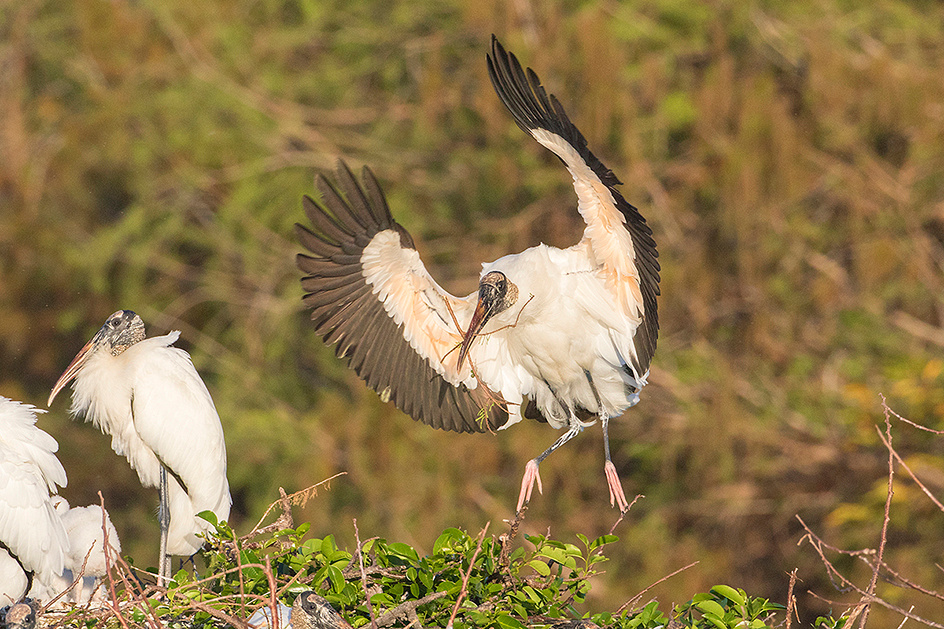
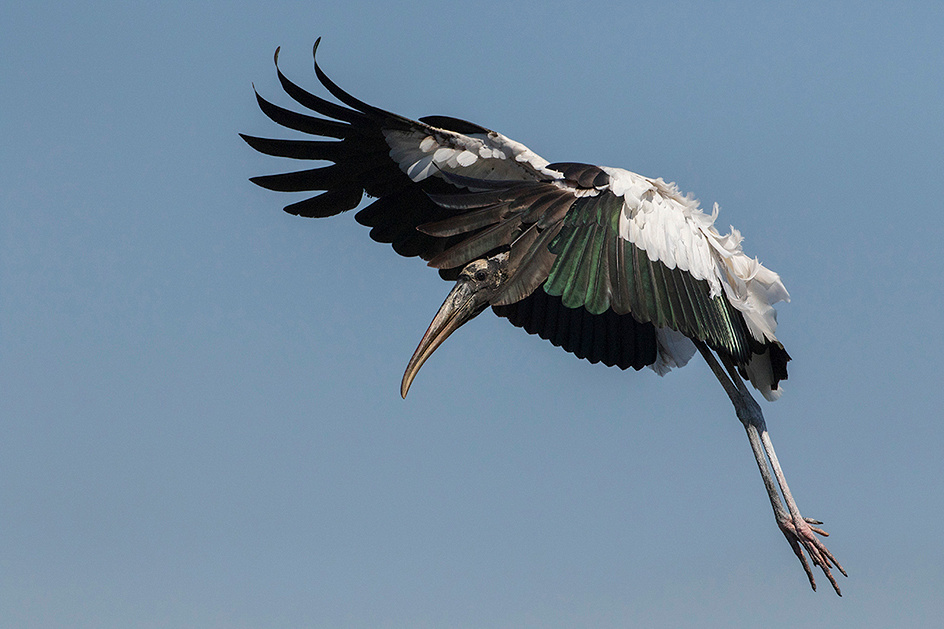 Wood Stork
Wood Stork
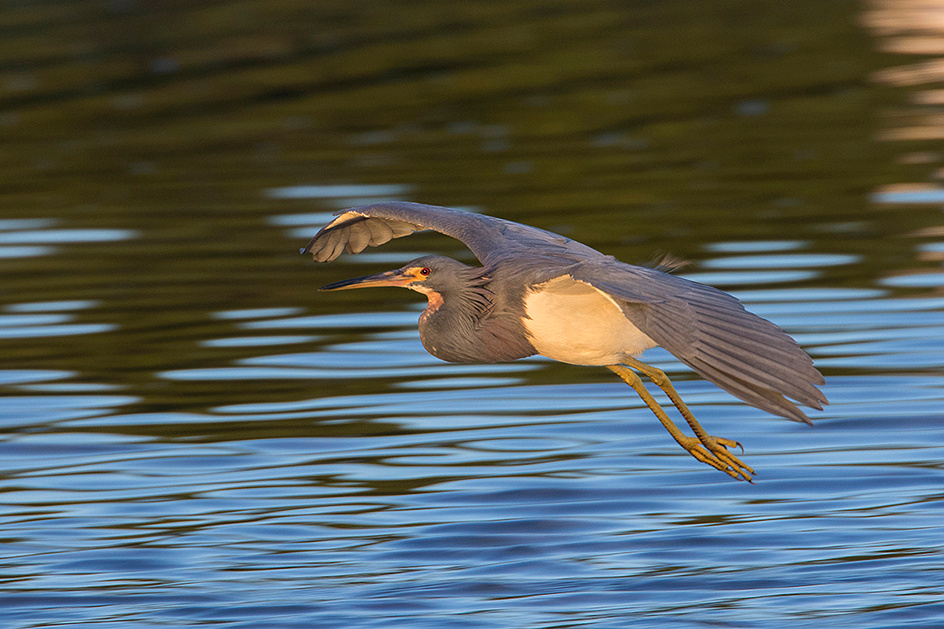
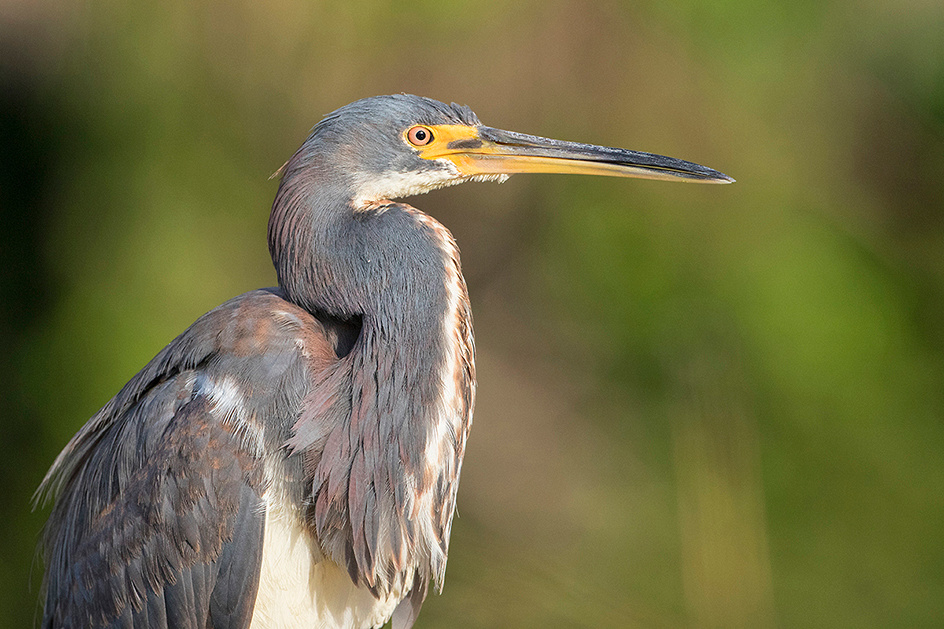

Tricolored Heron
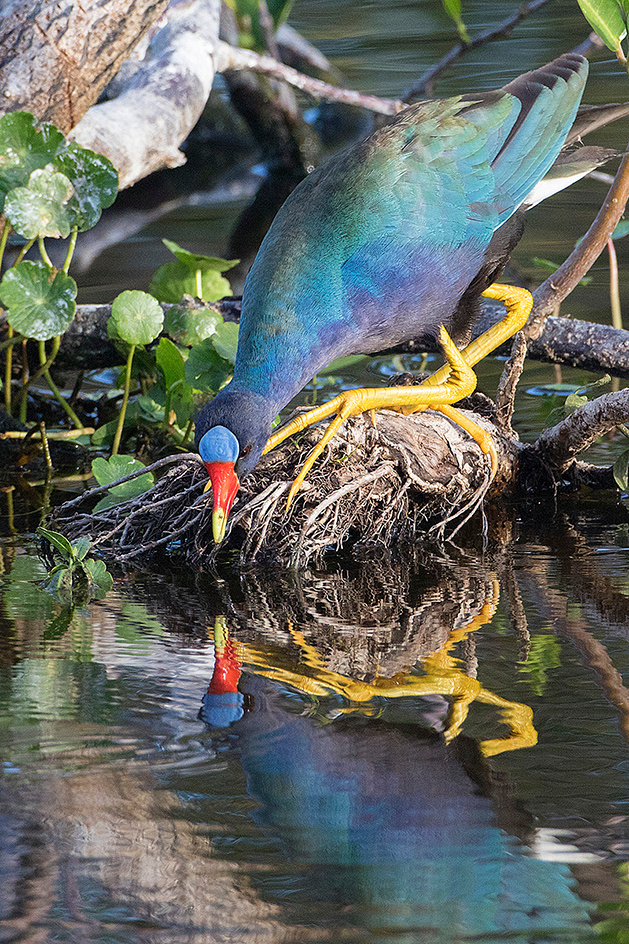
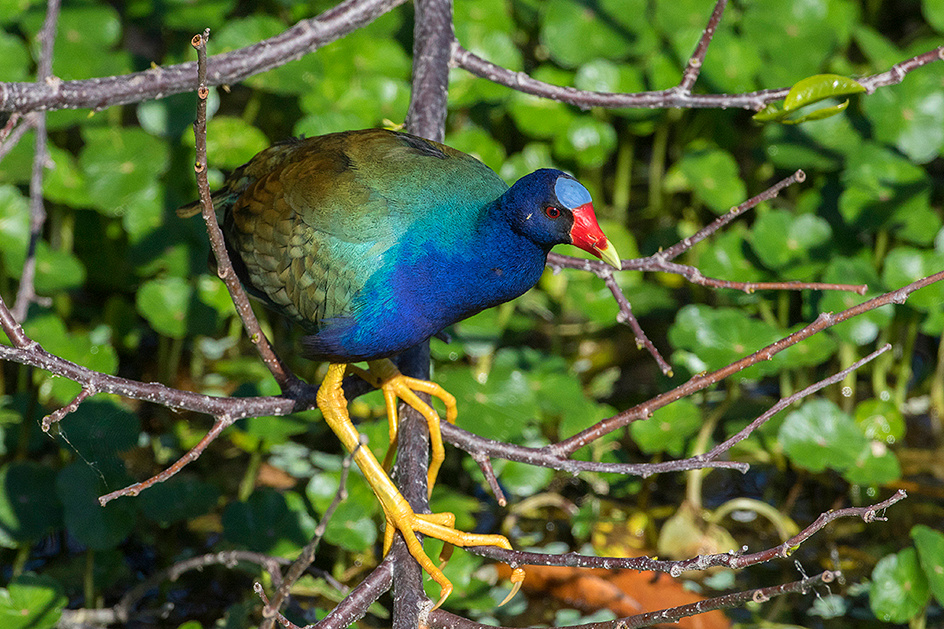 Purple Gallinule
Purple Gallinule
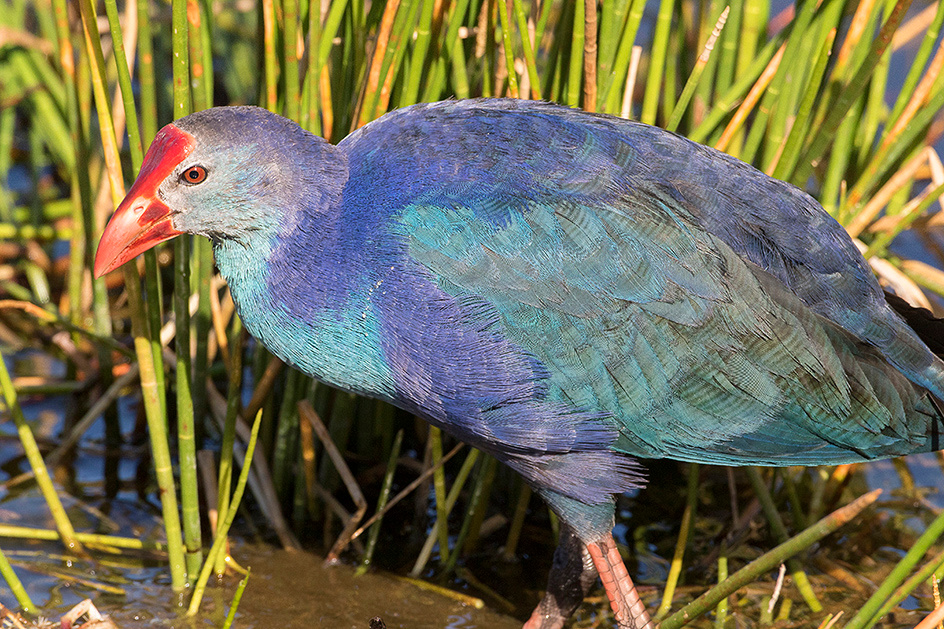 Gray-Headed Swamp Hen (non-native species)
Gray-Headed Swamp Hen (non-native species)
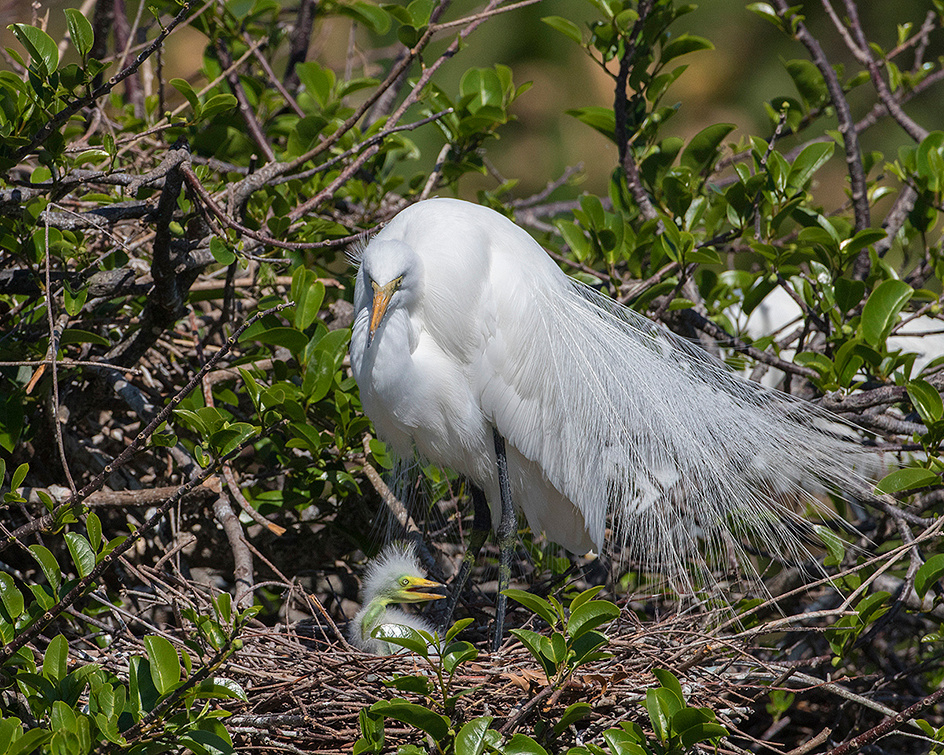

Nesting Great Egret

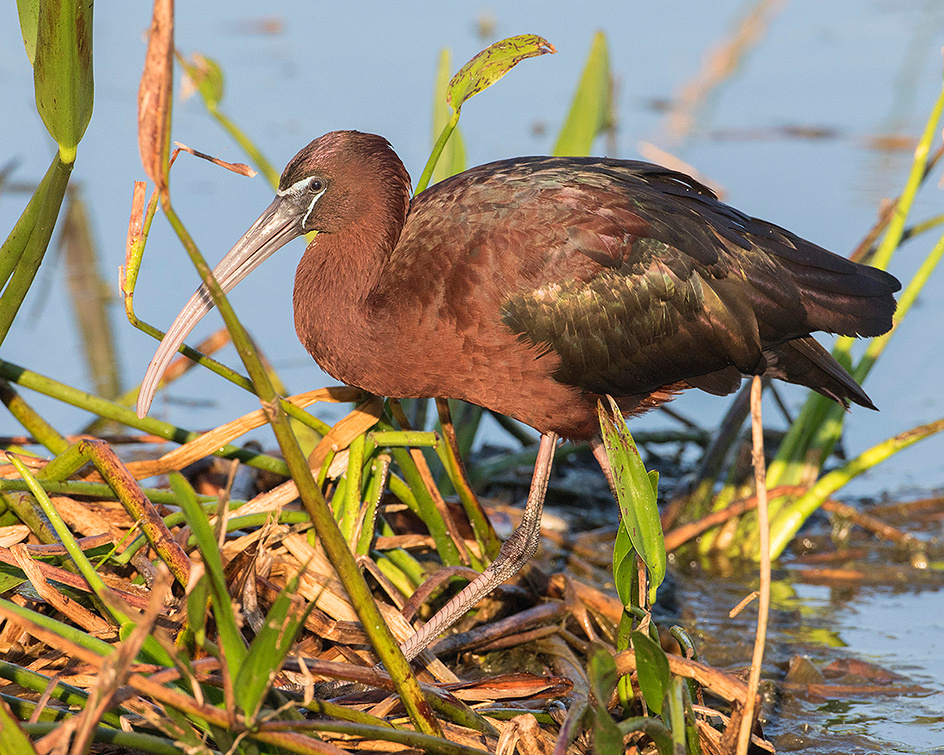 Glossy Ibis
Glossy Ibis
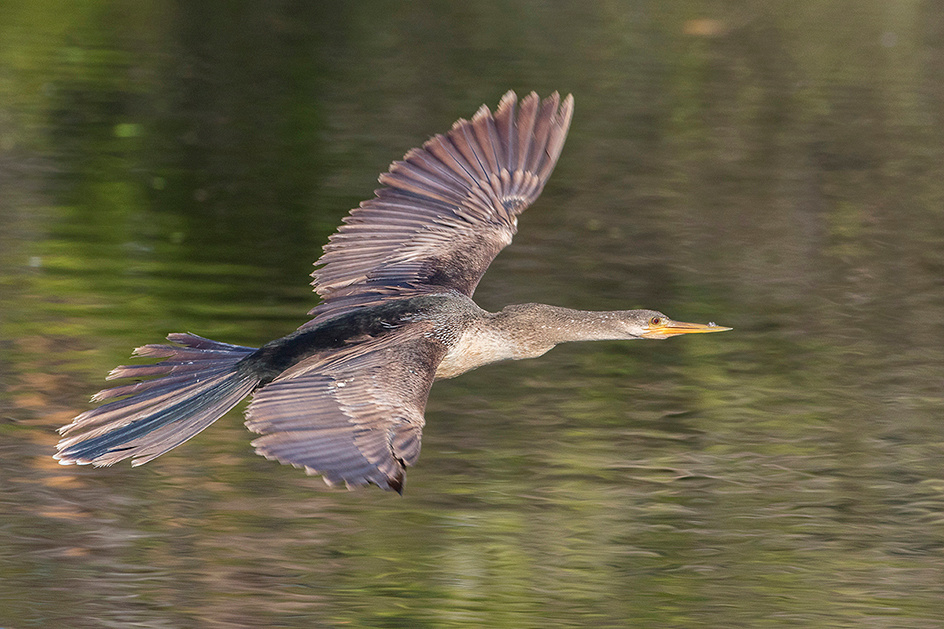 Anhinga
Anhinga
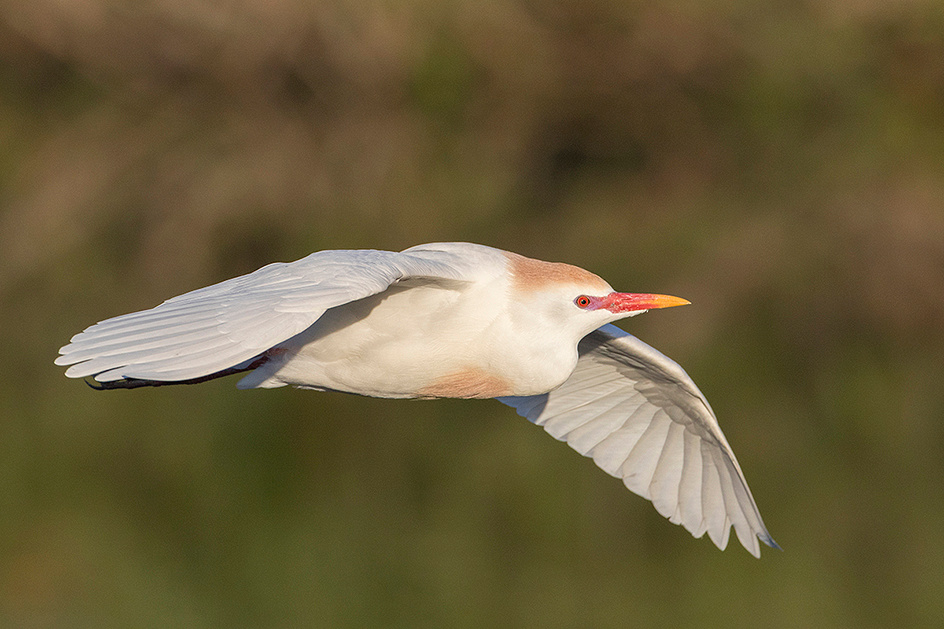
 Cattle Egret in Breeding Plumage
Cattle Egret in Breeding Plumage
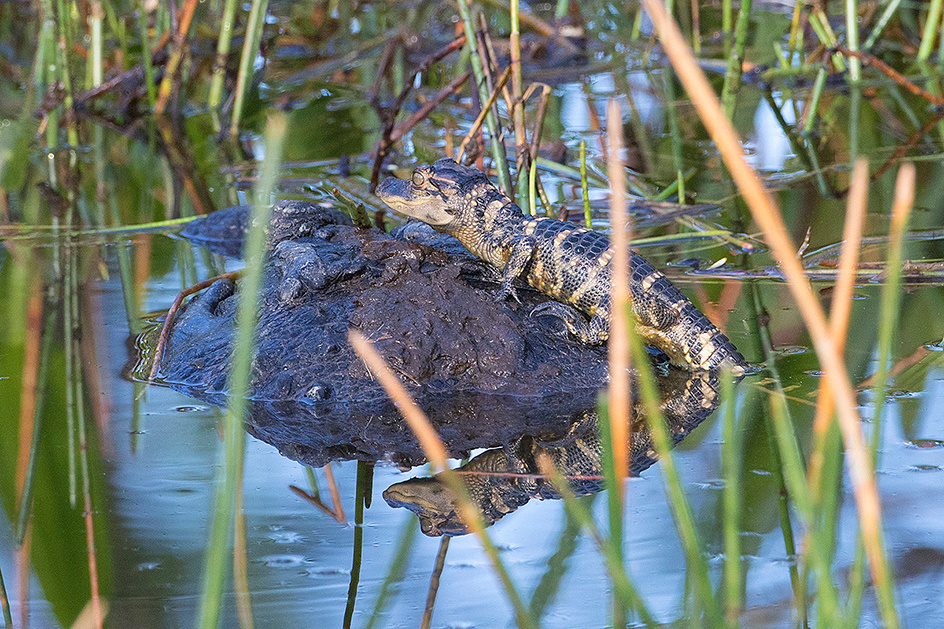
Unfortunate that I was unable to get a clean shot of the recent hatchling basking on his mothers head.
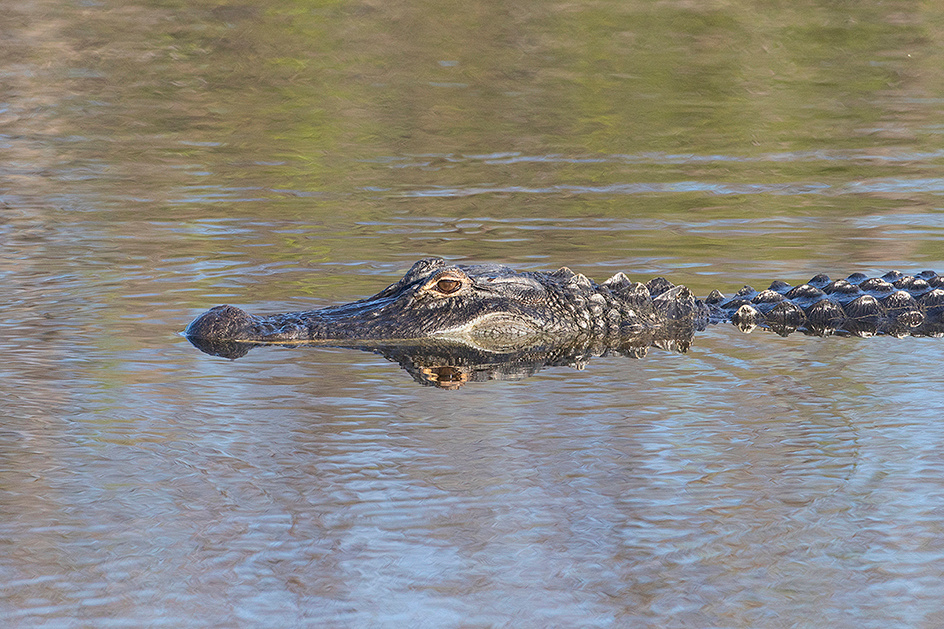 Alligator
Alligator
We primarily shot in the mornings and spent the remainder of the day enjoying the warm weather at beach and pool. We found an excellent seafood restaurant and finally a decent Mexican food restaurant in Florida. Roads and signage are excellent compared to California. Florida has a well earned reputation as an East Coast retirement mecca. Many drivers are older and defensive driving is a must.
Our visit was to early to pick up the songbird migration and possibly to late to capture the bulk of the shorebird activity. However, it was great to escape the cold, rainy weather patterns of Northern California for a few days.
Becky and I took our annual November road trip through selected mule deer winter ranges last week. Our goal was to photograph mule deer bucks in the rut. We normally make this trip during Thanksgiving week, but went a week early to avoid predicted snowfall. We may have been slightly early based on discussion with Malheur refuge staff. They indicated that they had seen little rutting activity until last week when they had their first cold weather of the season.
We toured several winter range locations in Northeastern California and Eastern Oregon including, Big Valley, Devil's Garden, Warner Mountains, Timber Mountain, Lava Beds NP, Tulelake NWR, Lower Klamath NWR, Hart Mountain Antelope Refuge and Malheur NWR over several days.
We observed well over 300 mule deer and two herds of antelope which each contained over 100 individuals. One of the highlights of the trip for me was the opportunity to photograph full frame sage grouse. I finally added a few images of this iconic western species to my files. These grouse blend very well with their sagebrush environment and were extremely difficult to see if they were not in motion.
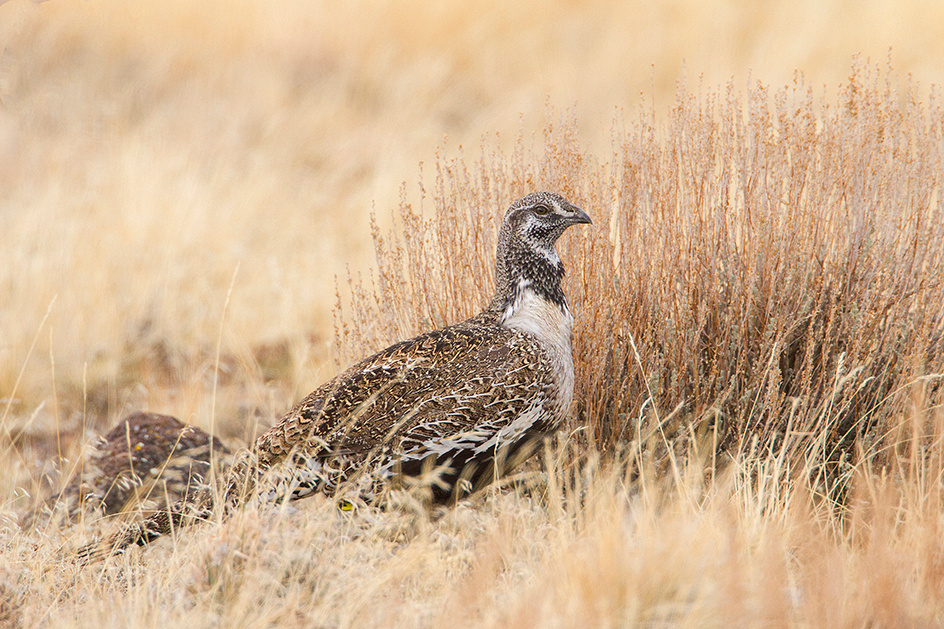
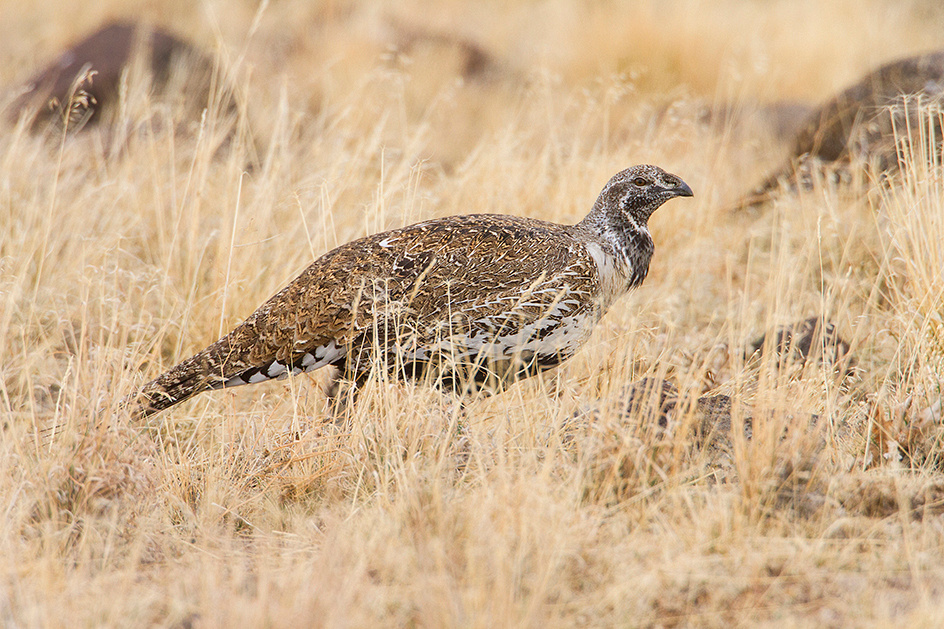
Several raptor species have begun their winter migration and were beginning to concentrate on Lower Klamath NWR. Red-tailed hawks were present in large numbers. The hawk below had spotted a mouse and was just about to drop.

As this red-tailed hawk demonstrates, timing can be important in wildlife photography. Mere seconds can be the difference between a good image and a crappy one.
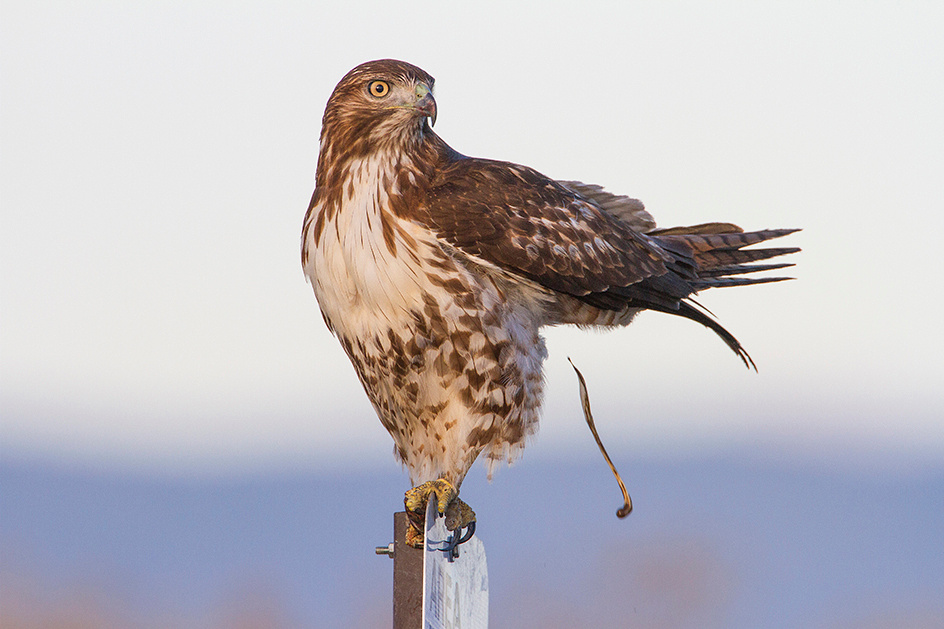
Many of the immature hawks were quite tame, allowing full frame head shots at near minimum focus distance.
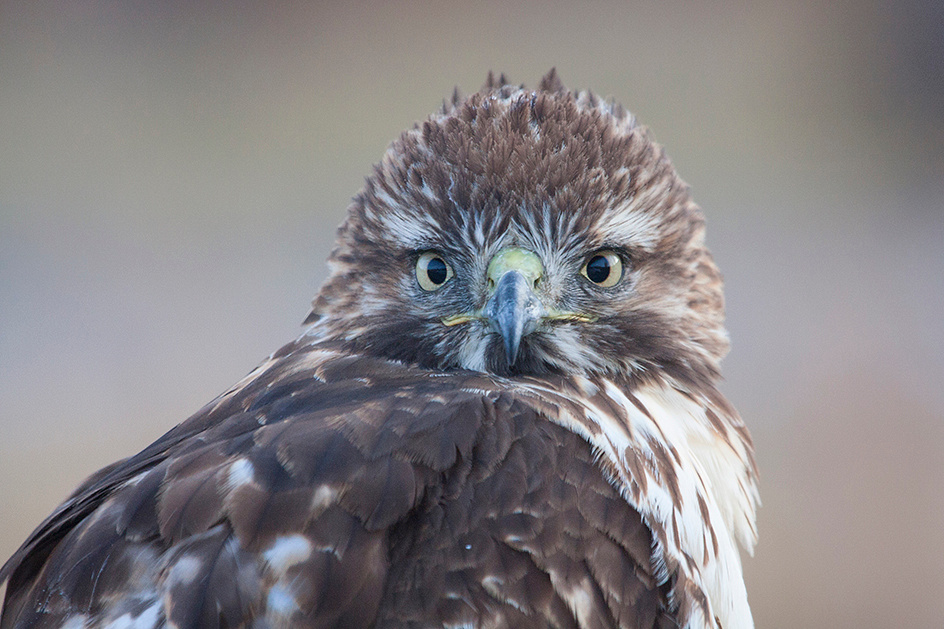
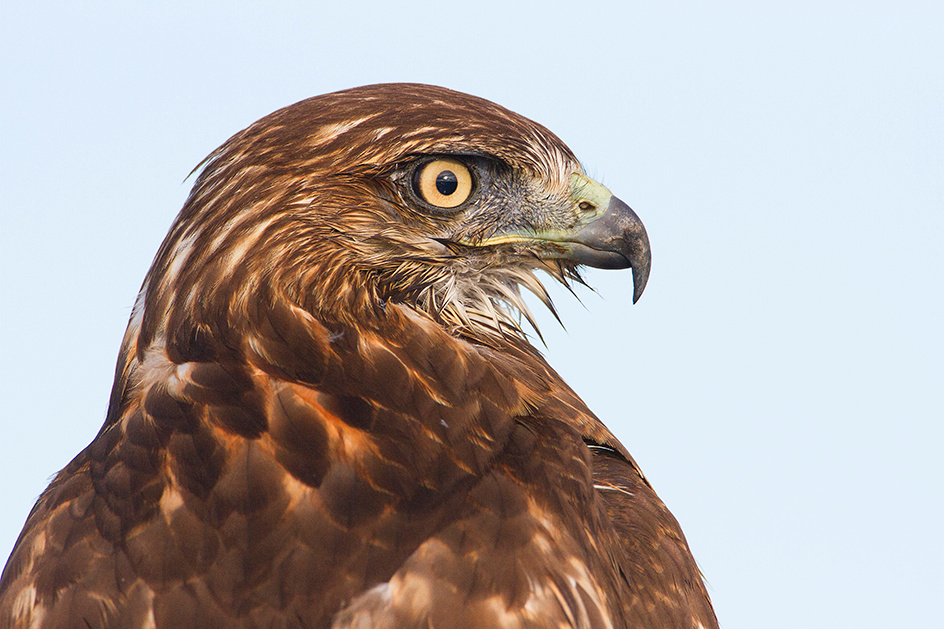 The Klamath basin supports about 900 wintering bald eagles. Although, few birds were observed daily, but relatively few were present in early November. I was fortunate to catch this adult on a nest in some nice early morning light.
The Klamath basin supports about 900 wintering bald eagles. Although, few birds were observed daily, but relatively few were present in early November. I was fortunate to catch this adult on a nest in some nice early morning light.
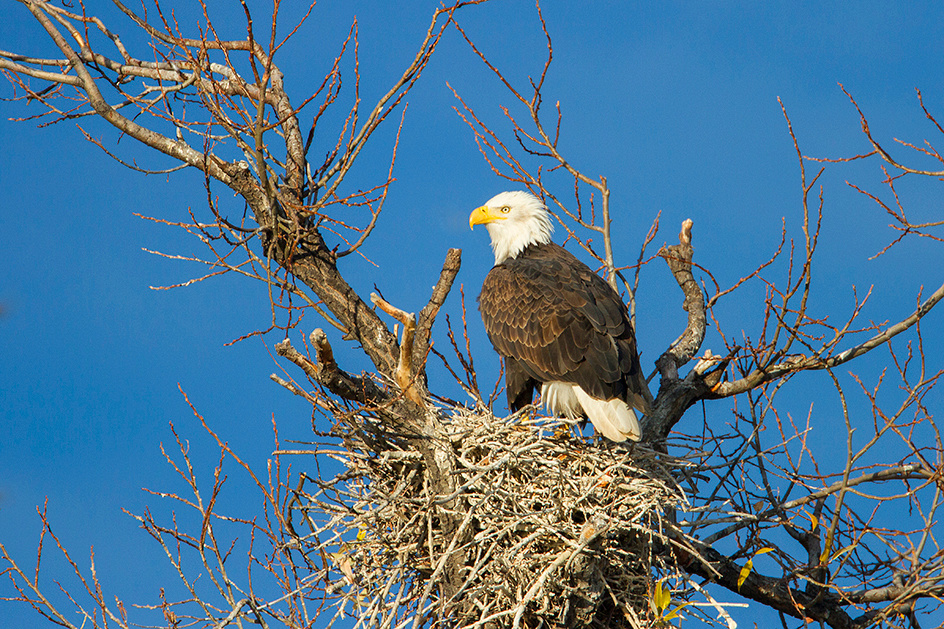 A few merlin, ferruginous hawks, rough-legged hawks, prairie falcons and golden eagles were observed. The immature golden eagle below was photographed in some really nice warm light, but on a very unattractive perch.
A few merlin, ferruginous hawks, rough-legged hawks, prairie falcons and golden eagles were observed. The immature golden eagle below was photographed in some really nice warm light, but on a very unattractive perch.
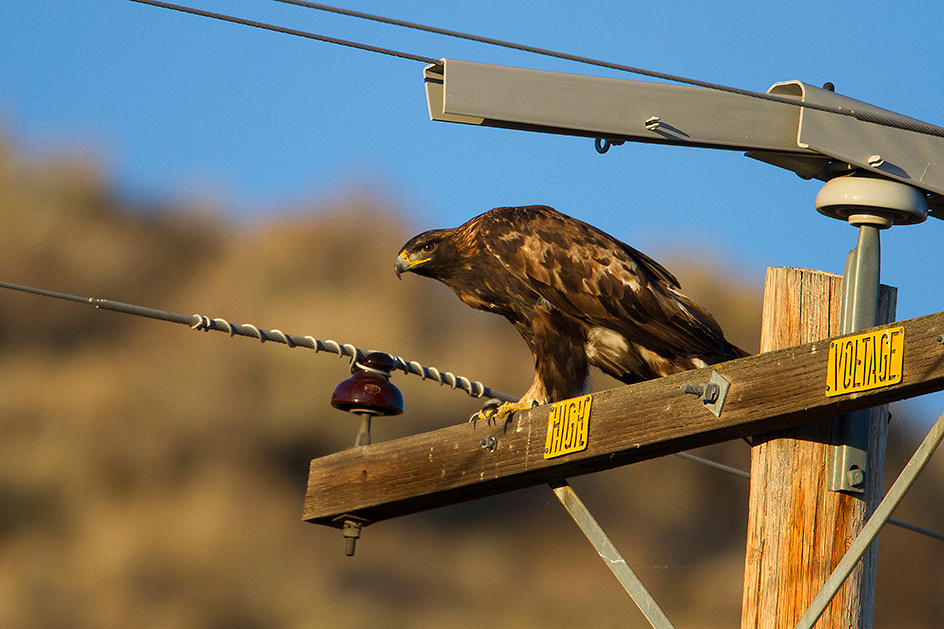
I have also had difficulty capturing decent images of American kestrel on natural perches, as they are small and difficult to approach. They also seem to prefer manmade perches. The male kestrel below chose a juniper perch and allowed a somewhat close approach.
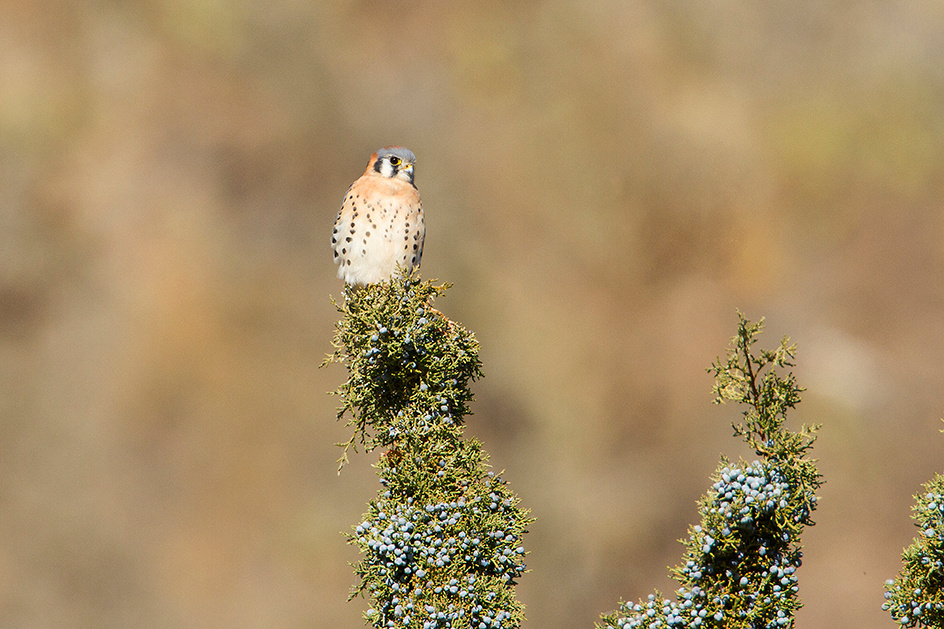 Several great blue herons were present along the shoreline of Tulelake sump. They offered some opportunities for flight shots. I like the image below as they rarely provide a topside view while in flight.
Several great blue herons were present along the shoreline of Tulelake sump. They offered some opportunities for flight shots. I like the image below as they rarely provide a topside view while in flight.
 Good numbers of Bonaparte's gulls were also present foraging at Tulelake sump. Winter plumage is not as striking as their breeding plumage, but it was nice to capture a few representative images.
Good numbers of Bonaparte's gulls were also present foraging at Tulelake sump. Winter plumage is not as striking as their breeding plumage, but it was nice to capture a few representative images.
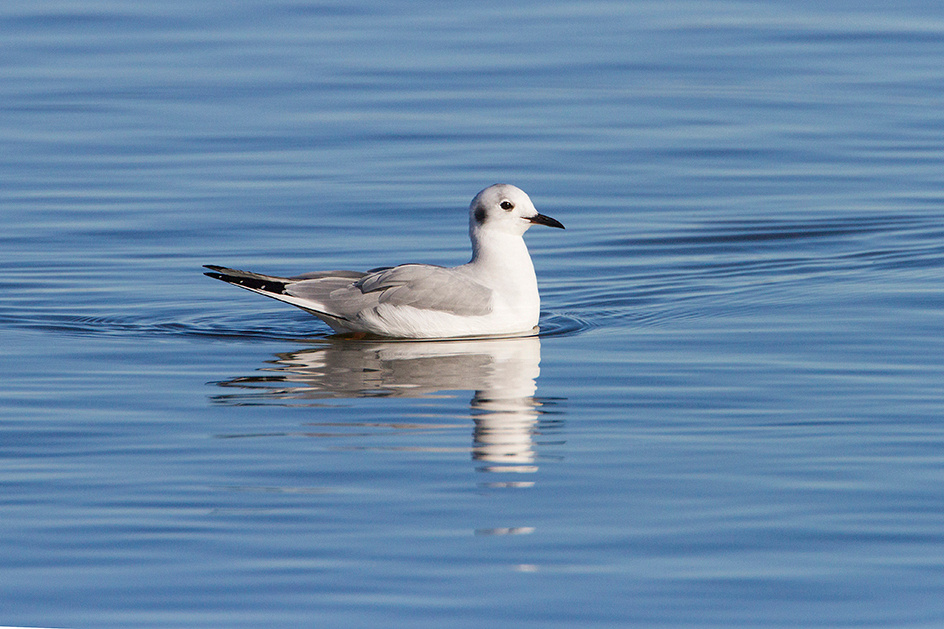 We observed mule deer in almost every location we toured. Tulelake NWR and Malheur NWR offered the best photo opportunities. The buck below was actively courting a relatively uncooperative doe.
We observed mule deer in almost every location we toured. Tulelake NWR and Malheur NWR offered the best photo opportunities. The buck below was actively courting a relatively uncooperative doe.
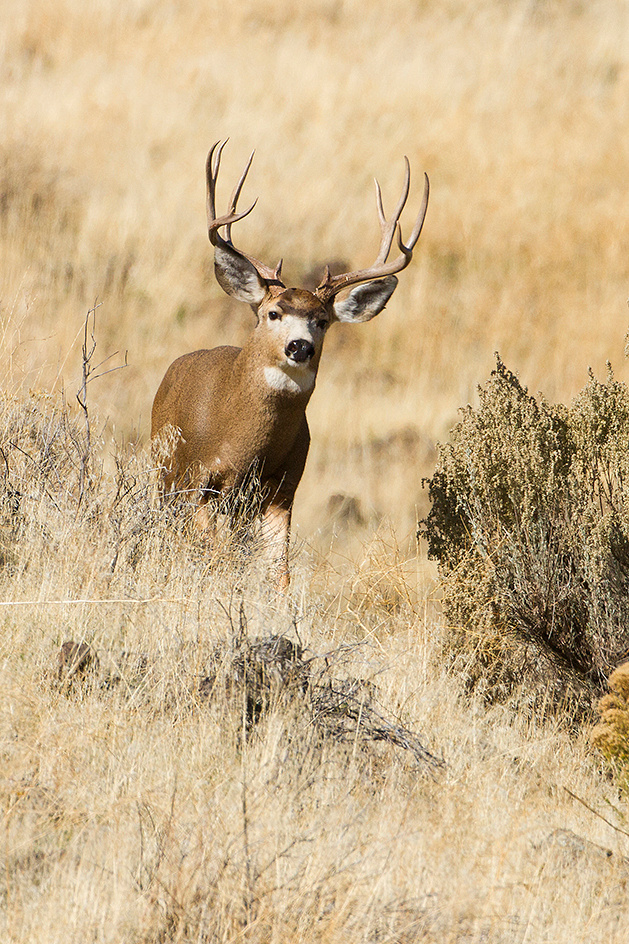
 The largest buck of the trip was also photographed at Tulelake NWR.
The largest buck of the trip was also photographed at Tulelake NWR.
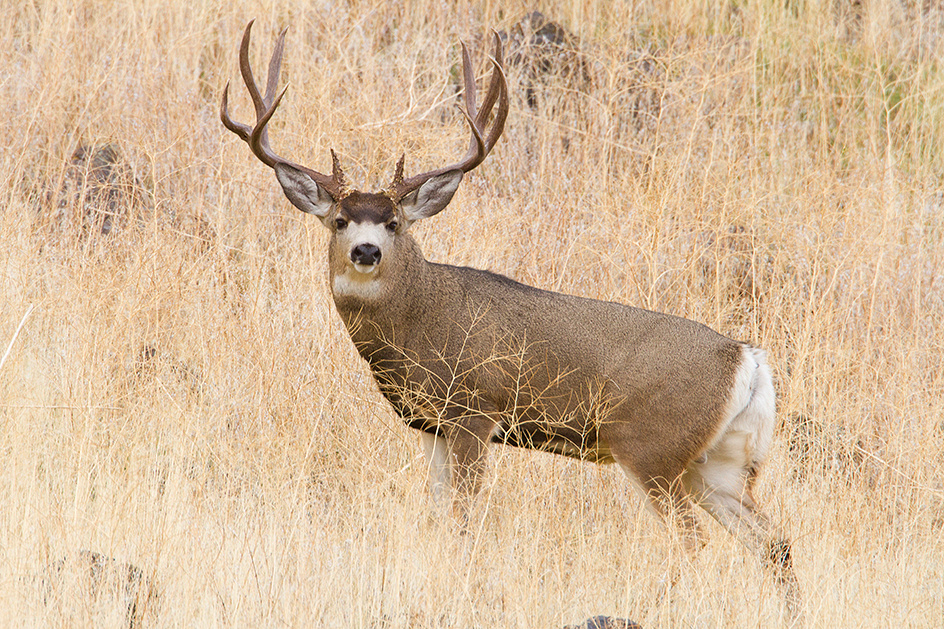
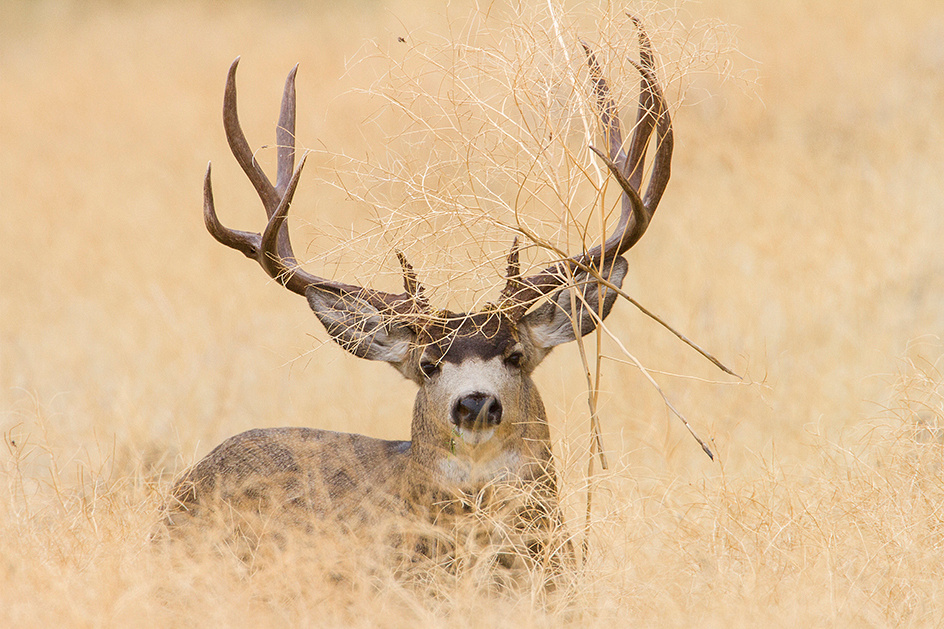 Smaller bucks were also present at Tulelake NWR, but showed little rutting activity.
Smaller bucks were also present at Tulelake NWR, but showed little rutting activity.

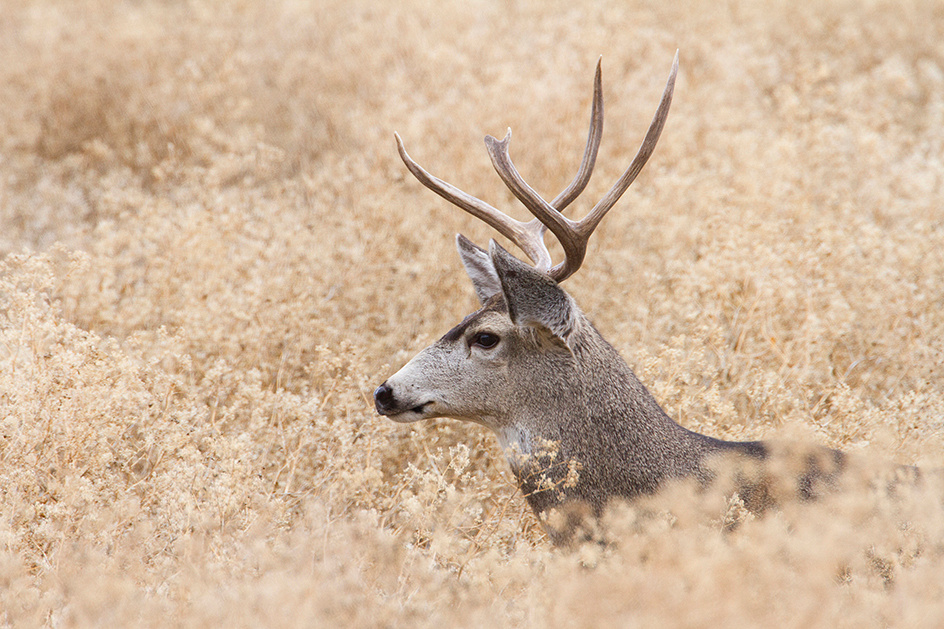 A mature mule deer buck had gathered a small harem in one of the adjacent alfalfa fields. I was losing the light, but managed a few representative images of this big-bodied buck.
A mature mule deer buck had gathered a small harem in one of the adjacent alfalfa fields. I was losing the light, but managed a few representative images of this big-bodied buck.
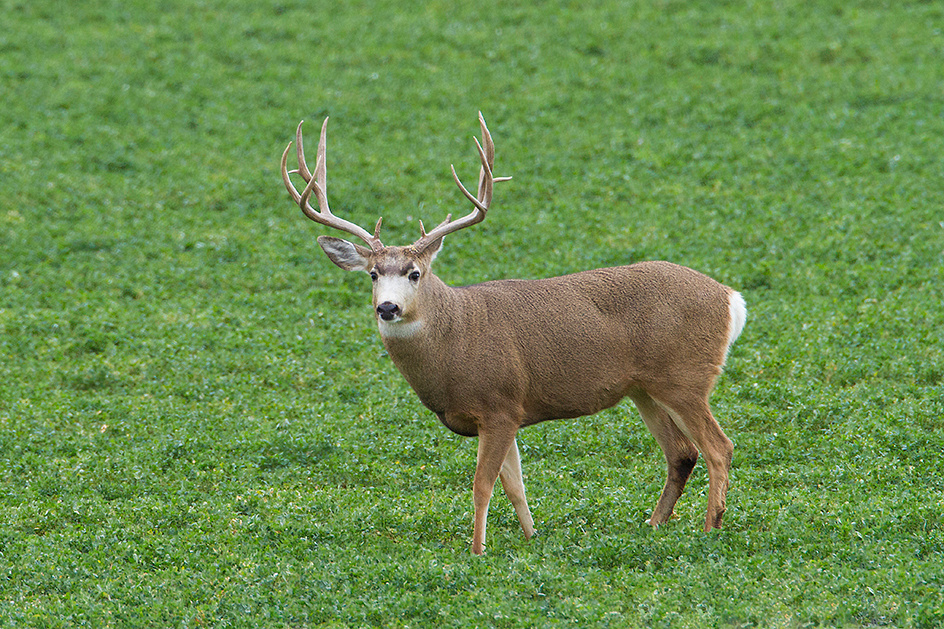
Malheur NWR also provided some photo opportunities on mature bucks including the non-typical buck pictured below.
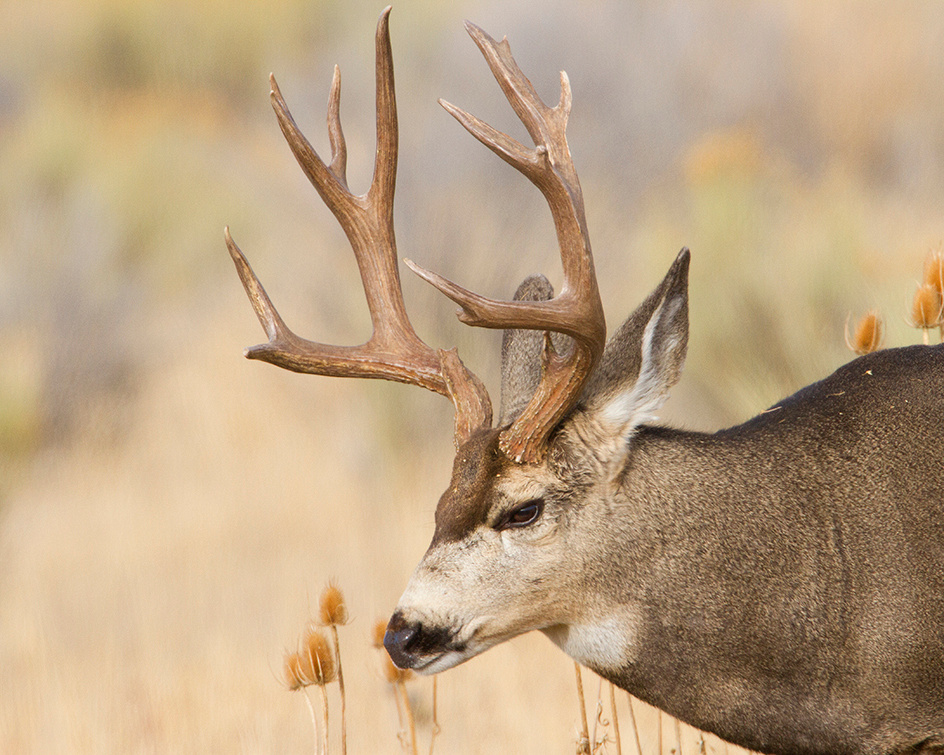

I found the buck pictured below in some wonderful warm evening light which provided the best photo of the trip.
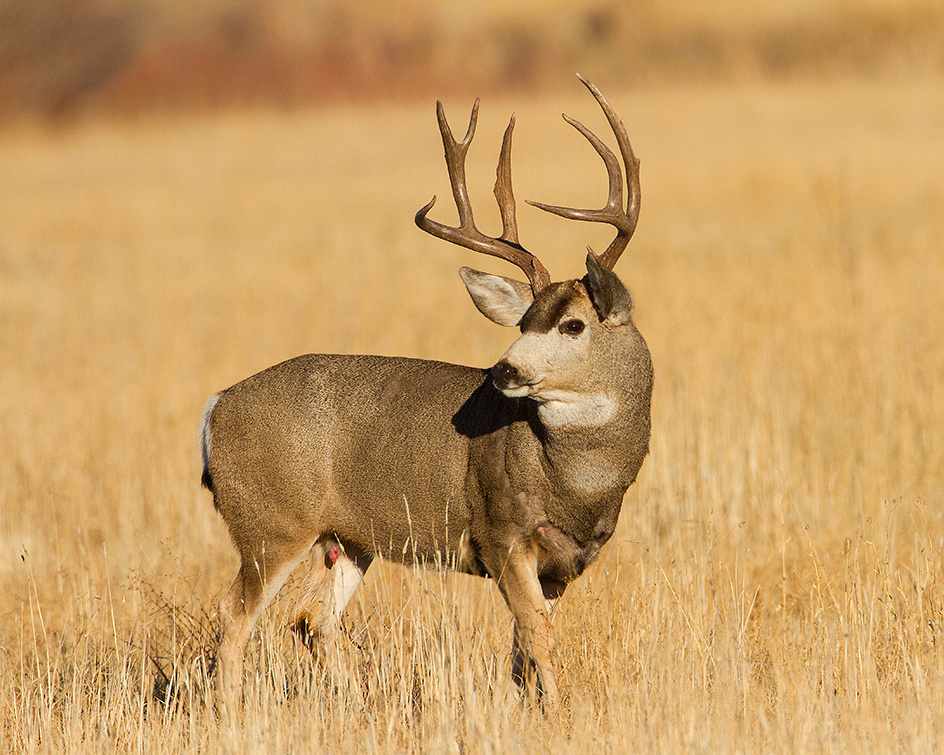
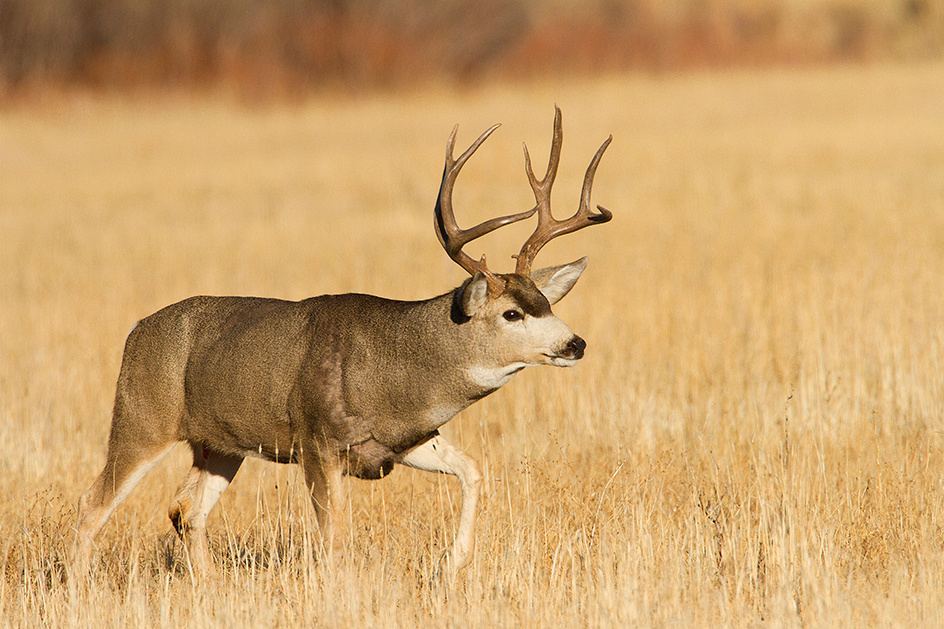 Smaller bucks were present, but again did not appear to be exhibiting rutting behavior.
Smaller bucks were present, but again did not appear to be exhibiting rutting behavior.

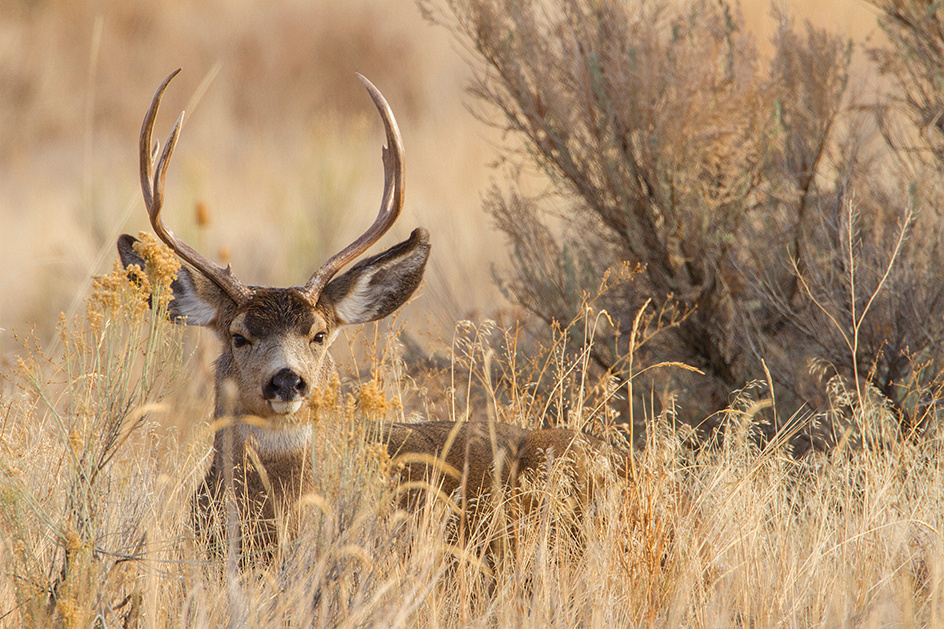 The buck pictured below was still in velvet.
The buck pictured below was still in velvet.
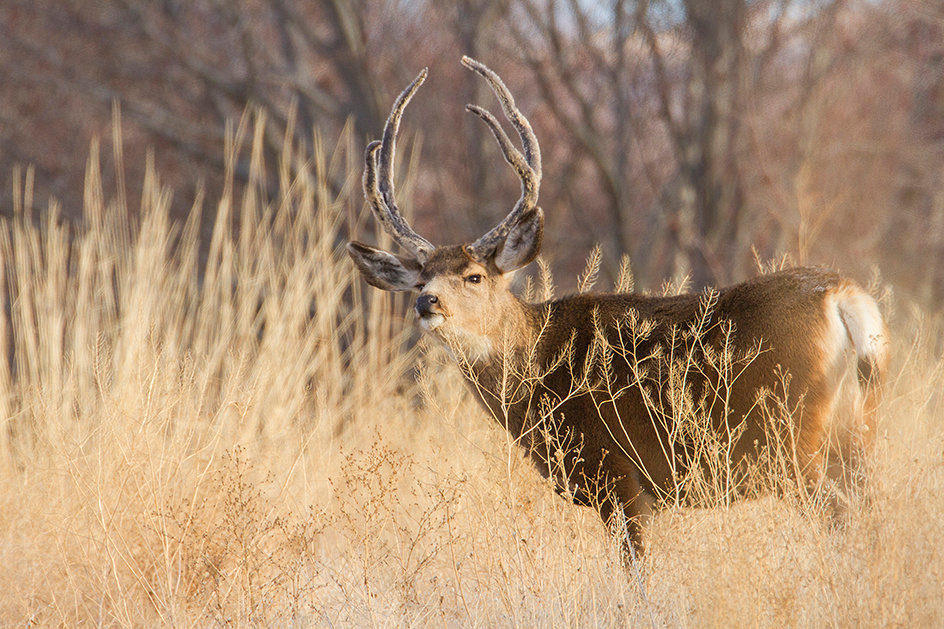

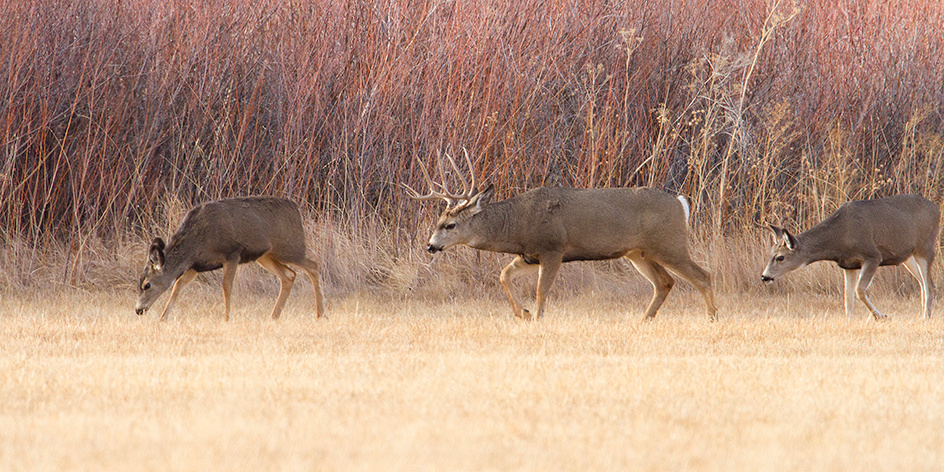 We also saw several coyotes each day. They were either extremely wild, running at 300 yards, or quite tame.
We also saw several coyotes each day. They were either extremely wild, running at 300 yards, or quite tame.

We had several consecutive days of decent photography weather, which is not all that common in November. An enjoyable trip. If you plan to go, be aware that Malheur NWR HQ has not reopened following the occupation by domestic terrorists. At this point USF&WS has restricted access to the HQ for far longer than the terrorists.
We recently returned from five days in Yellowstone National Park and two additional days in Grand Teton National Park. We timed our visit to correspond with the height of the elk rut and the peak of the fall colors. The late September period also overlaps the pronghorn and moose rut periods. Both parks were crowded, but nothing like the crowds of this summer where two hour waits to enter the park at West Yellowstone were reported.
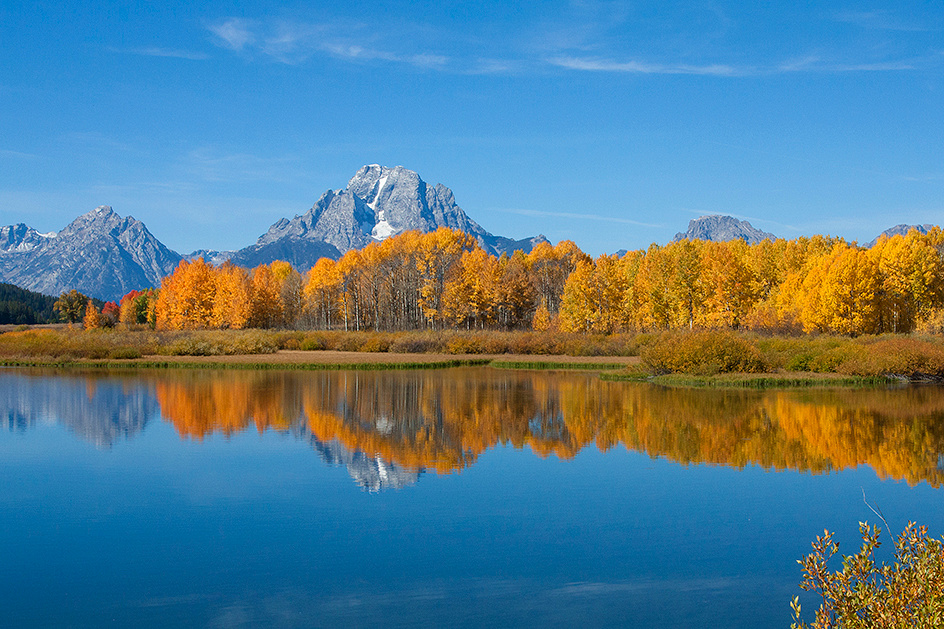 We were able to capture some decent landscape images at some of the iconic locations at Grand Teton National Park, including Oxbow Bend. Not much snow left on the Tetons, but we had a windless morning which allowed decent reflections.
We were able to capture some decent landscape images at some of the iconic locations at Grand Teton National Park, including Oxbow Bend. Not much snow left on the Tetons, but we had a windless morning which allowed decent reflections.
 Mormon Barn is another popular photo subject in Grand Teton National Park. We had some residual ground fog apparent in the image, but otherwise I was pleased with my images from this location.
Mormon Barn is another popular photo subject in Grand Teton National Park. We had some residual ground fog apparent in the image, but otherwise I was pleased with my images from this location.
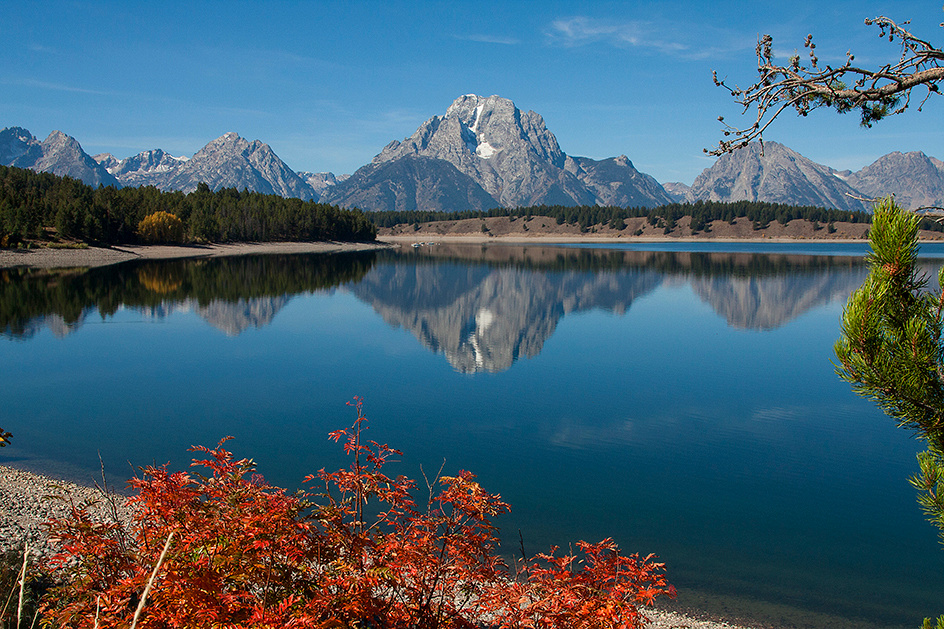 Another popular photo location in Grand Teton National Park is Lake Jackson where reflection shots of the distant Tetons are possible on a calm morning.
Another popular photo location in Grand Teton National Park is Lake Jackson where reflection shots of the distant Tetons are possible on a calm morning.
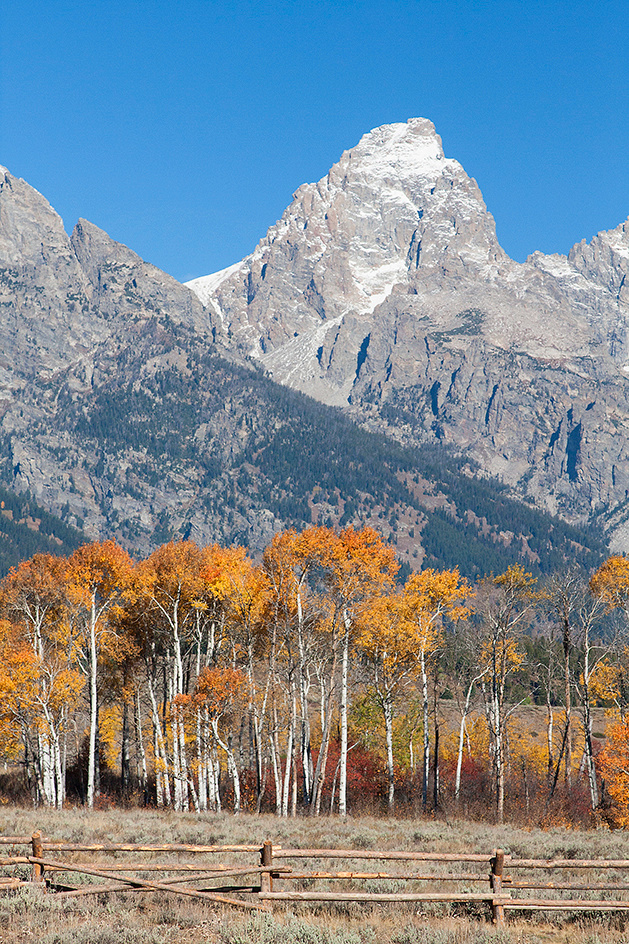
A fall drive through the park provides opportunities for scenic landscape images at every turn. The image above was captured near Moose Junction. We were able to view pronghorn, moose, coyotes, and a few elk in the Grand Teton National Park, but few decent wildlife photo opportunities occurred.
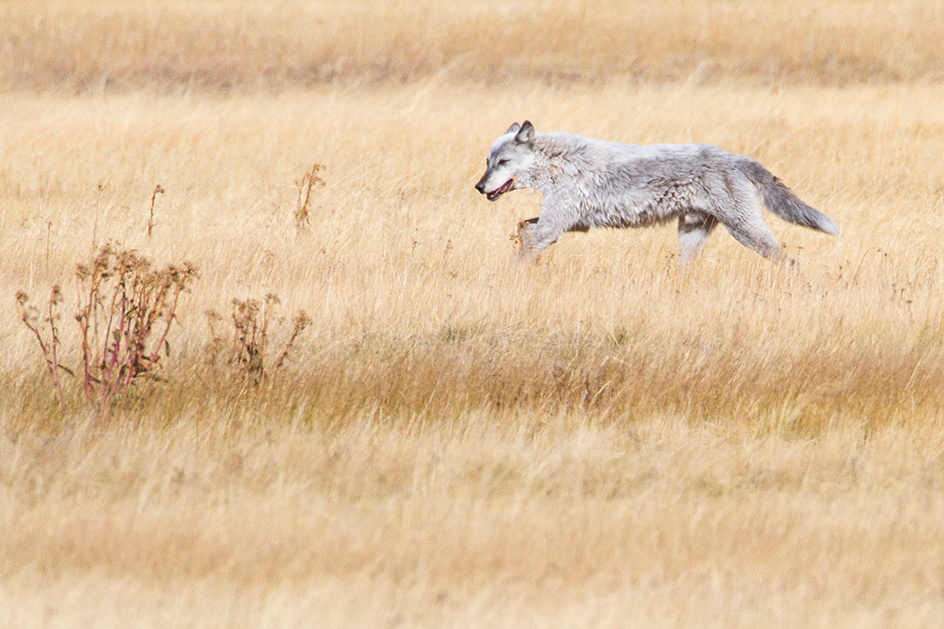 During our trip to Yellowstone in late May, we were able to observe several very distant wolf hunts. Within 90 minutes of entering the park on this trip we watched an adult male wolf chase a cow and calf elk the length of Gibbon Meadows in mid day light at about 125 yards distance. Unfortunately, the wolf was wearing an ugly radio collar which I removed in Photoshop.
During our trip to Yellowstone in late May, we were able to observe several very distant wolf hunts. Within 90 minutes of entering the park on this trip we watched an adult male wolf chase a cow and calf elk the length of Gibbon Meadows in mid day light at about 125 yards distance. Unfortunately, the wolf was wearing an ugly radio collar which I removed in Photoshop.
Wolf hunts are very exciting and I can understand why many visitors spend their entire vacation behind spotting scopes attempting to observe hunting behaviors. On the first day of our recent trip, a cow bison was killed in Lamar Valley by a speeding SUV. The rangers drug the carcass off the road about 150 yards. Large crowds of photographers and wolf watchers lined the road from dawn till dark every day. We drove by everyday, but during the five days we were in the park, no one reported any wolves or bears on the carcass during daylight hours.

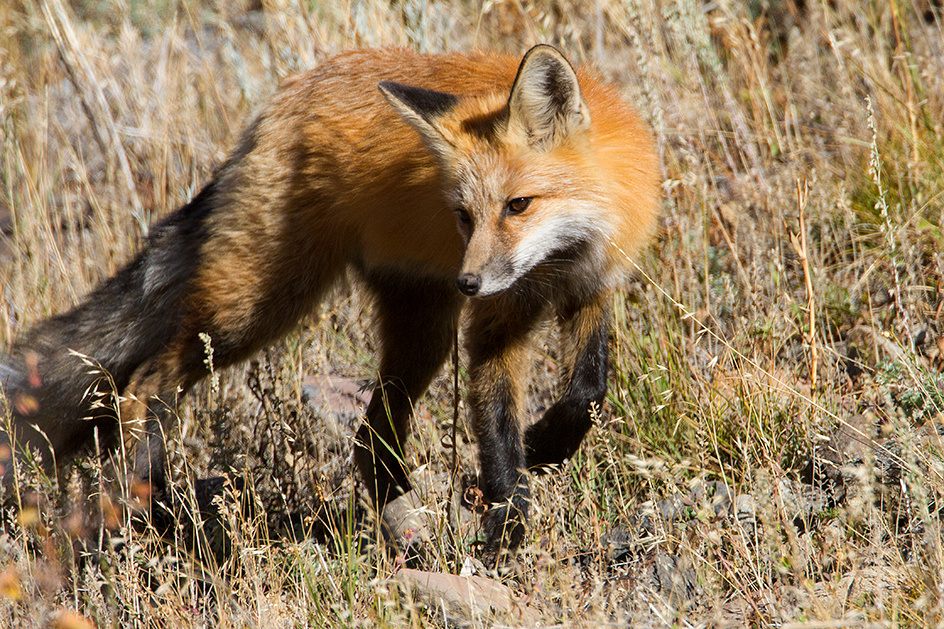
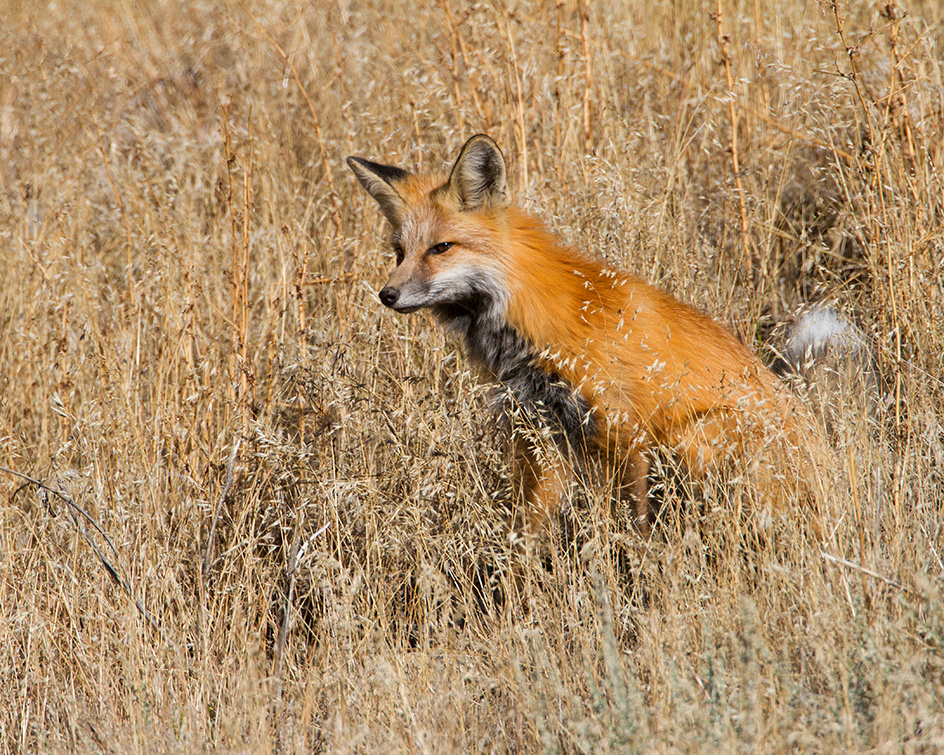
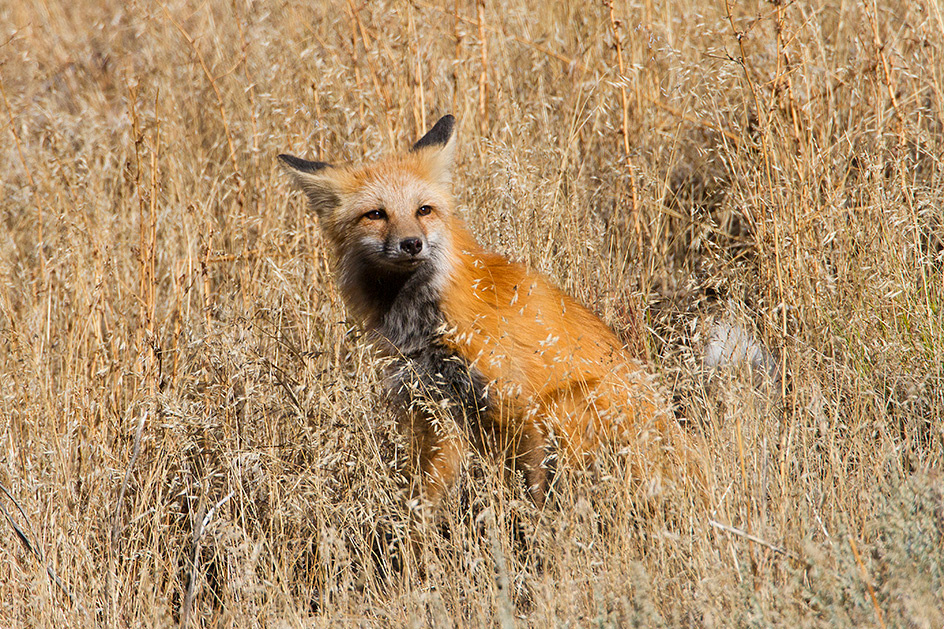 On our last morning in Yellowstone we happened upon a red fox asleep in tall grass with only the tips of his ears visible. After a very lengthy wait, I finally gave up on getting any images. As I was putting the camera and tripod back in the vehicle, he decided to wake up and gave me some nice poses at near minimum focus distance. These little guys are quite photogenic and very tame in Yellowstone. One of my favorite wildlife photo subjects.
On our last morning in Yellowstone we happened upon a red fox asleep in tall grass with only the tips of his ears visible. After a very lengthy wait, I finally gave up on getting any images. As I was putting the camera and tripod back in the vehicle, he decided to wake up and gave me some nice poses at near minimum focus distance. These little guys are quite photogenic and very tame in Yellowstone. One of my favorite wildlife photo subjects.
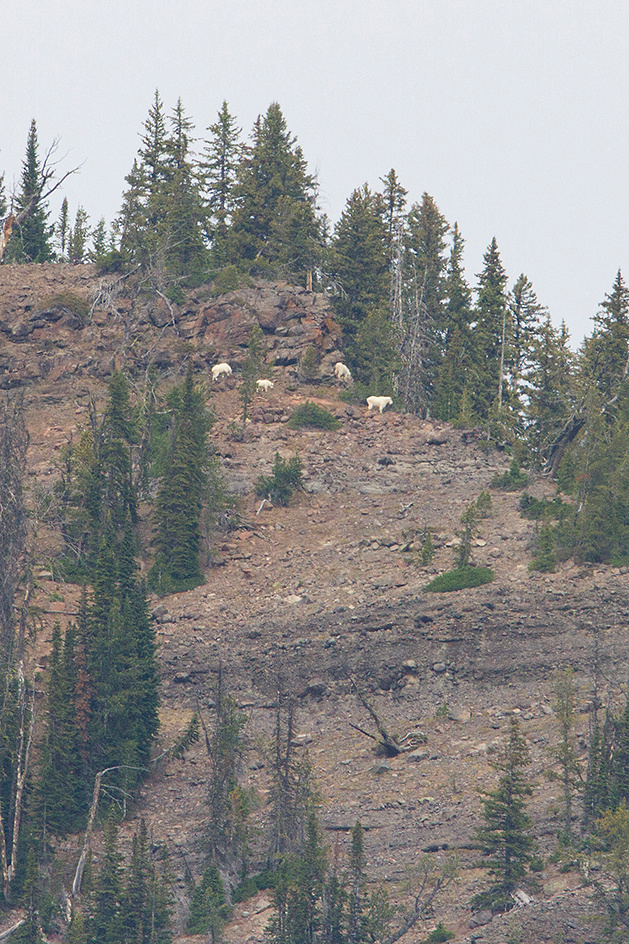
The documentation shot above was our first sighting of mountain goats in Yellowstone. This image was taken from about 3/4 of a mile away near Pebble Creek campground. Not a great image, but so cool to finally see these introduced animals in the park.
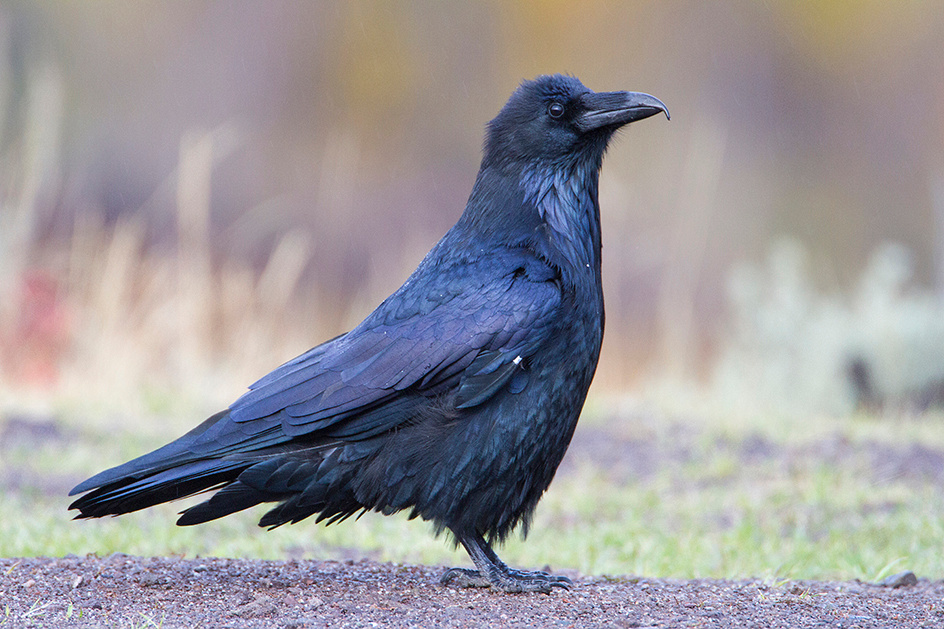 We saw and photographed very few birds in either park. I had hoped to photograph a great gray owl and a pine grosbeak, but saw neither. I photographed this common raven along the roadside near Petrified Tree.
We saw and photographed very few birds in either park. I had hoped to photograph a great gray owl and a pine grosbeak, but saw neither. I photographed this common raven along the roadside near Petrified Tree.
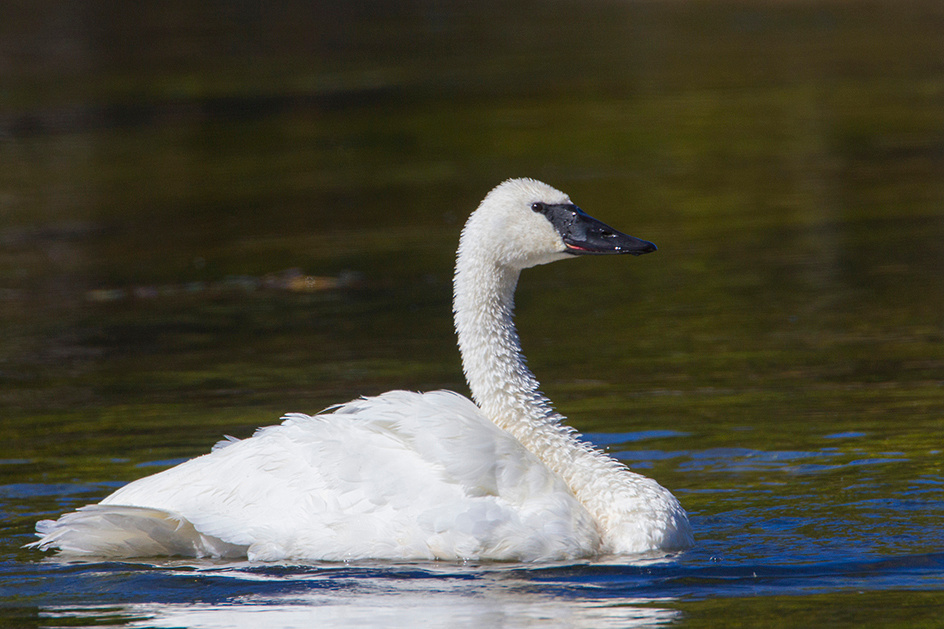 We saw several trumpeter swans in Yellowstone and I was able to improve on my May images of this federal endangered species. I captured this image at mid day on the Firehole River.
We saw several trumpeter swans in Yellowstone and I was able to improve on my May images of this federal endangered species. I captured this image at mid day on the Firehole River.
 We saw and photographed big-horned sheep every day including several nice rams. This ram was sunning along the roadside on Sylvan Pass in mid day light. It is my opinion that most park visitors drive way to fast to locate wildlife. This ram was 20 feet off the main road and hundreds of cars drove by without spotting him.
We saw and photographed big-horned sheep every day including several nice rams. This ram was sunning along the roadside on Sylvan Pass in mid day light. It is my opinion that most park visitors drive way to fast to locate wildlife. This ram was 20 feet off the main road and hundreds of cars drove by without spotting him.
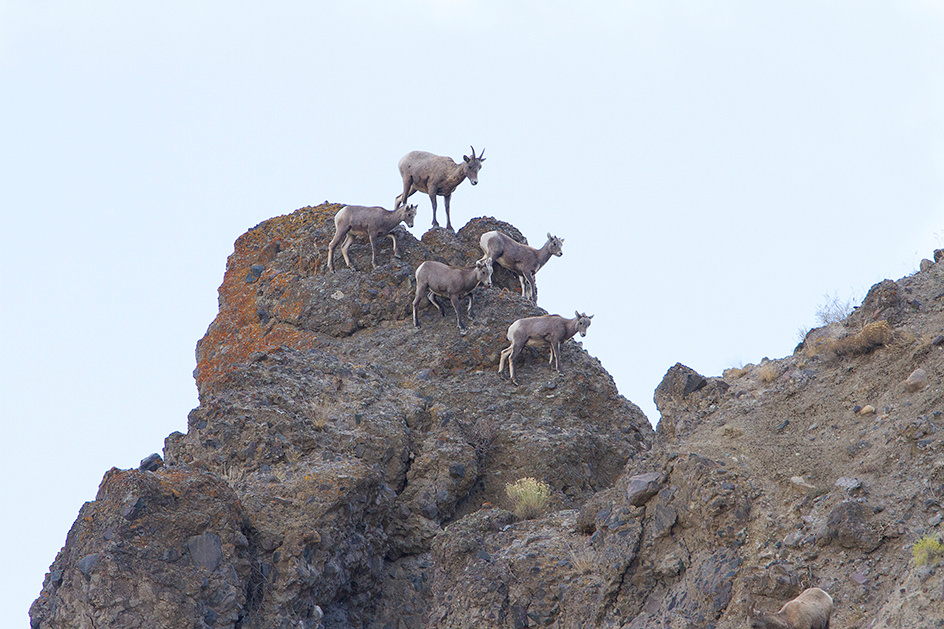 This nicely posed group of big-horned sheep ewes and lambs were on one of the outcrops along the Gardiner River Gorge near sunset.
This nicely posed group of big-horned sheep ewes and lambs were on one of the outcrops along the Gardiner River Gorge near sunset.
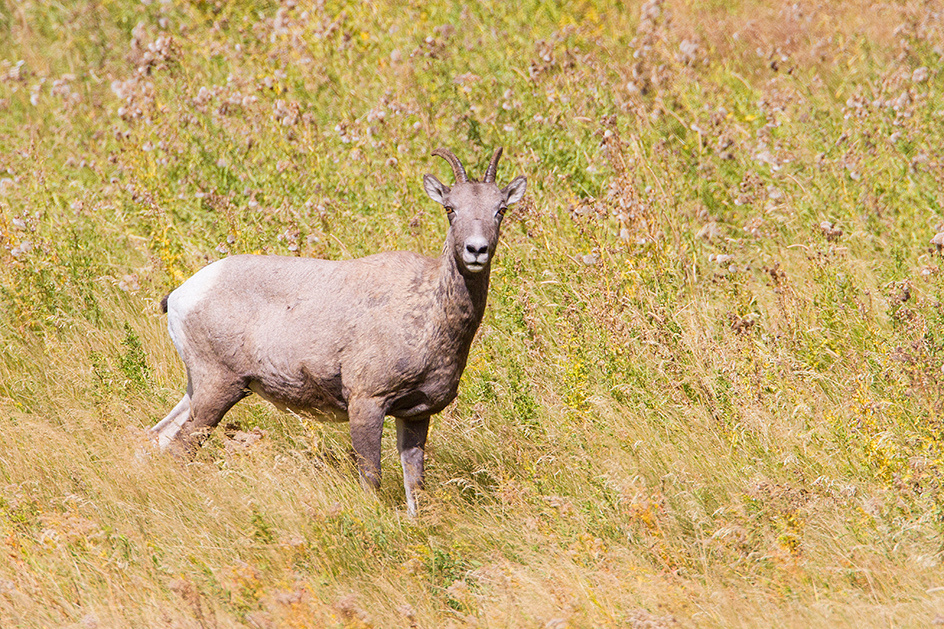
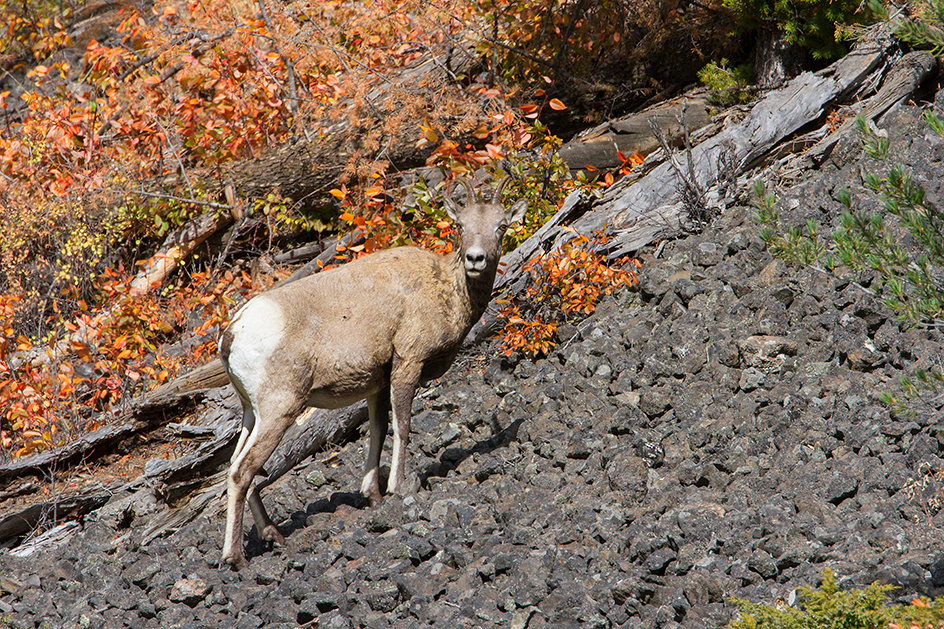 We found herds of big-horned sheep along the roadside near Tower almost every day. I am constantly amazed at the ignorance of some park visitors related to wildlife identification. I regularly heard both pronghorn and big-horned sheep misidentified as deer.
We found herds of big-horned sheep along the roadside near Tower almost every day. I am constantly amazed at the ignorance of some park visitors related to wildlife identification. I regularly heard both pronghorn and big-horned sheep misidentified as deer.
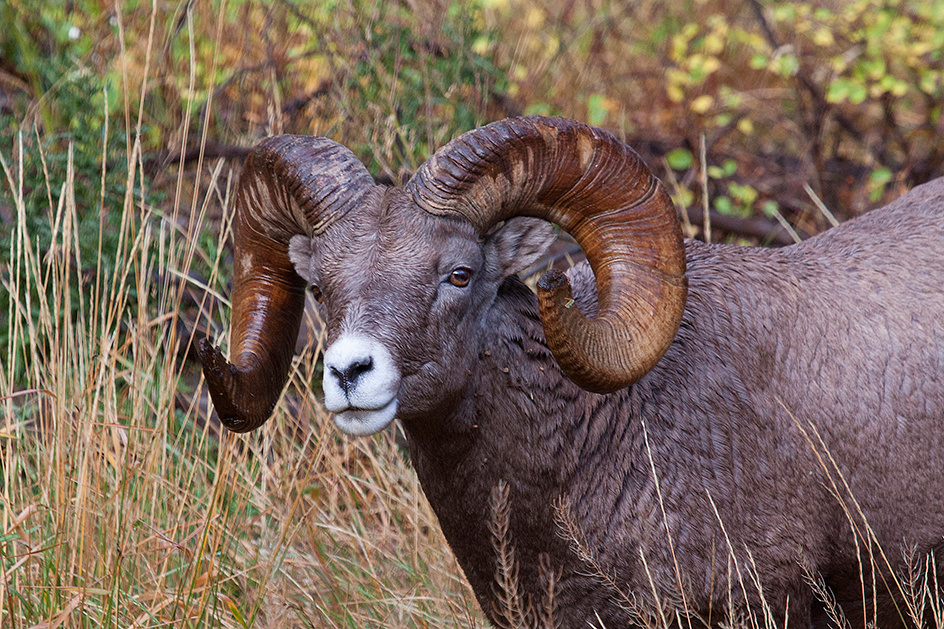 Two large, mature, big-horned rams were hanging out near Tower every day and were very popular photo subjects.
Two large, mature, big-horned rams were hanging out near Tower every day and were very popular photo subjects.
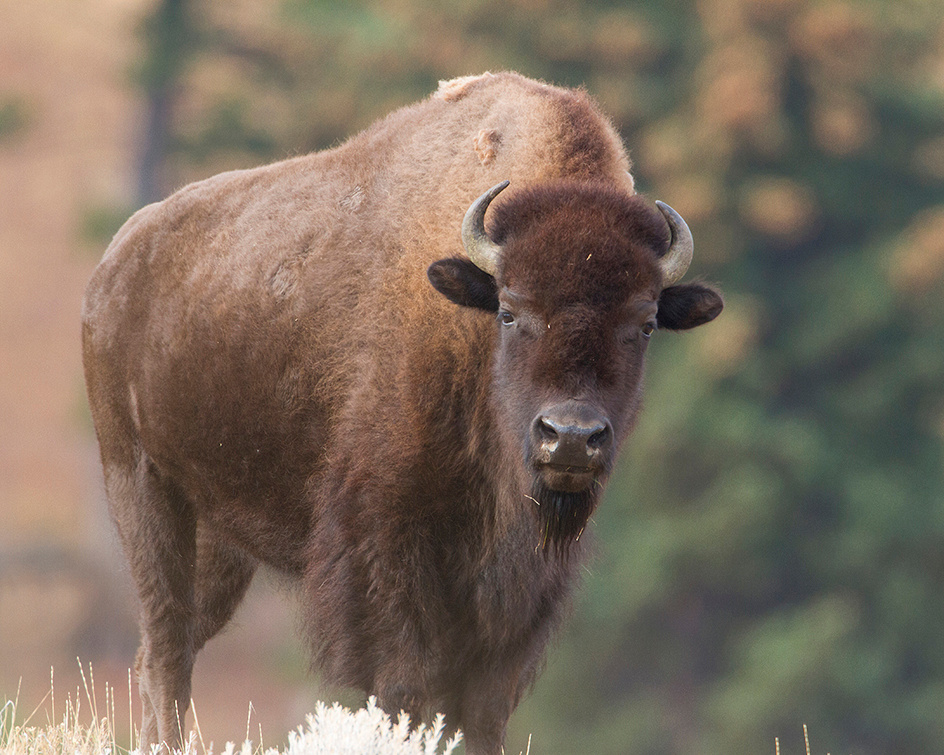
Bison were common although not as widely distributed as when we visited in May. They were also more photogenic in September than in the spring when they were shedding their winter coats.
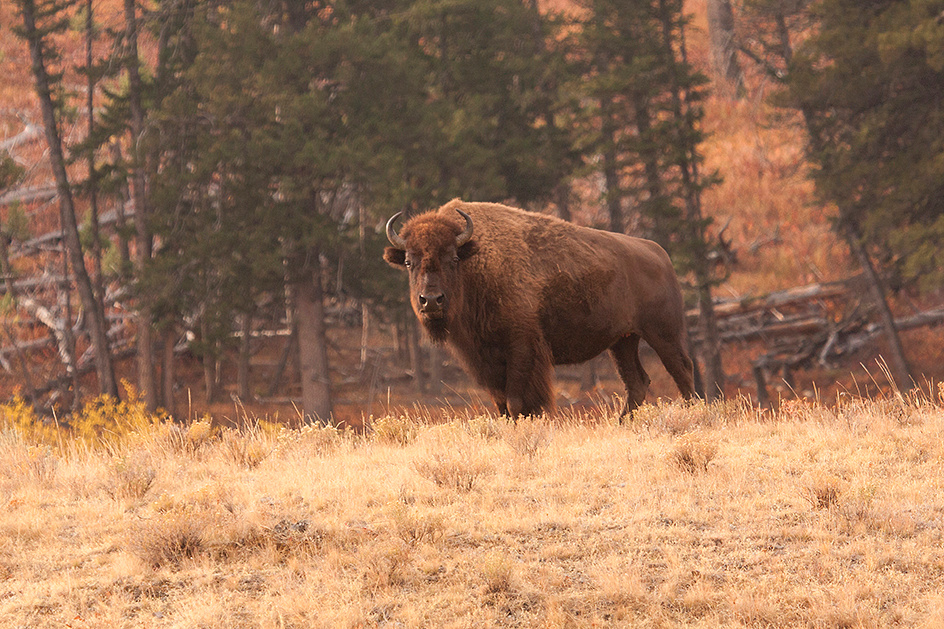 Whenever possible I tried to capture wildlife with a background including some fall color. With bison, I was unsuccessful. In fact I have captured few good bison images in my two most recent trips. They are incredibly common, widespread and tame, but still no images that I feel are better than just average.
Whenever possible I tried to capture wildlife with a background including some fall color. With bison, I was unsuccessful. In fact I have captured few good bison images in my two most recent trips. They are incredibly common, widespread and tame, but still no images that I feel are better than just average.
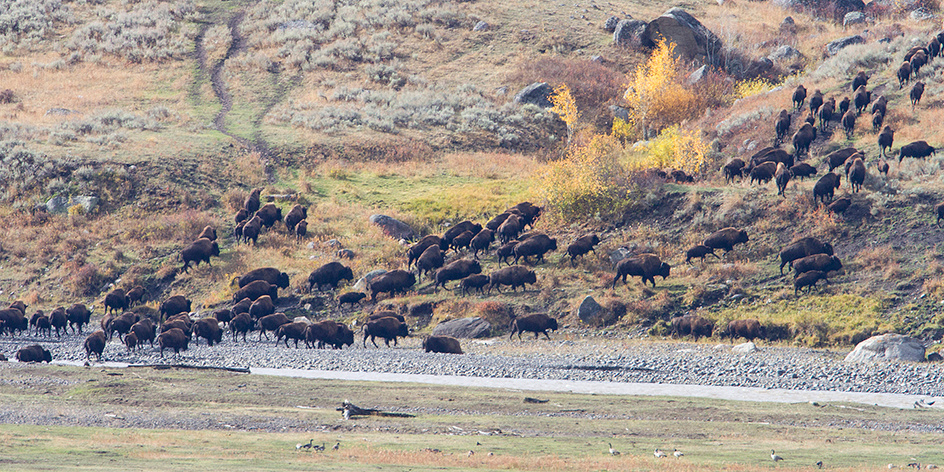 The above photo was captured in Lamar Valley as a large and distant bison herd crossed the Lamar River. The entire herd ran from the hills north of the valley, across the road, across the valley and across the river for no apparent reason. As they stampeded they picked up more and more bison until several hundred animals crossed the river and milled around the far bank. I was unable to detect any predator or other factor responsible for the mass movement.
The above photo was captured in Lamar Valley as a large and distant bison herd crossed the Lamar River. The entire herd ran from the hills north of the valley, across the road, across the valley and across the river for no apparent reason. As they stampeded they picked up more and more bison until several hundred animals crossed the river and milled around the far bank. I was unable to detect any predator or other factor responsible for the mass movement.
 These were the last of the herd to cross Lamar Valley on the run in their odd rolling gait.
These were the last of the herd to cross Lamar Valley on the run in their odd rolling gait.
We observed a single black bear several times, but never captured any keeper images. No grizzly bears were observed.
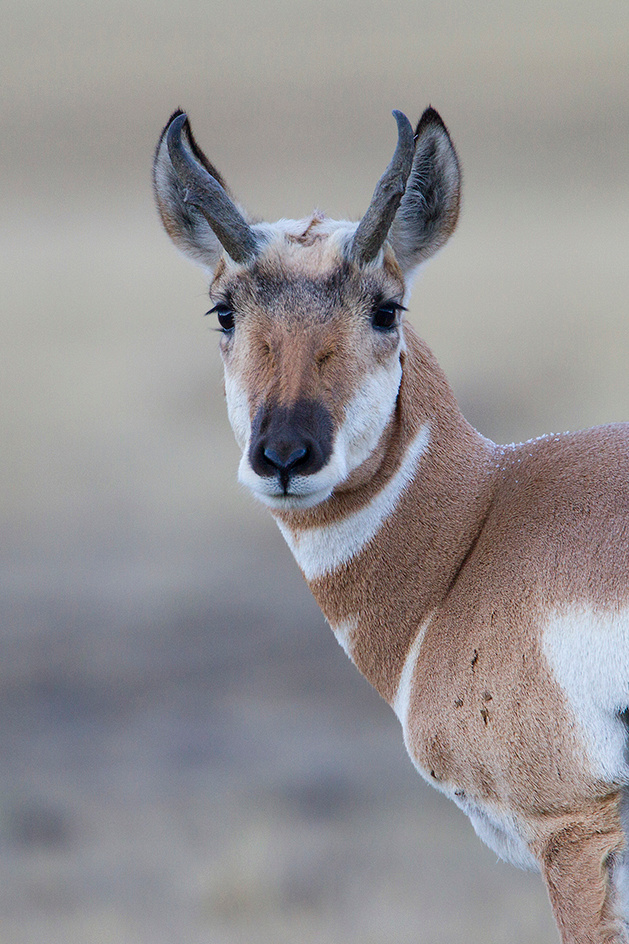
Pronghorn were widespread and definitely in the rut. We were able to watch a lot of pronghorn breeding related behavior including some on the Gardiner High School athletic field.
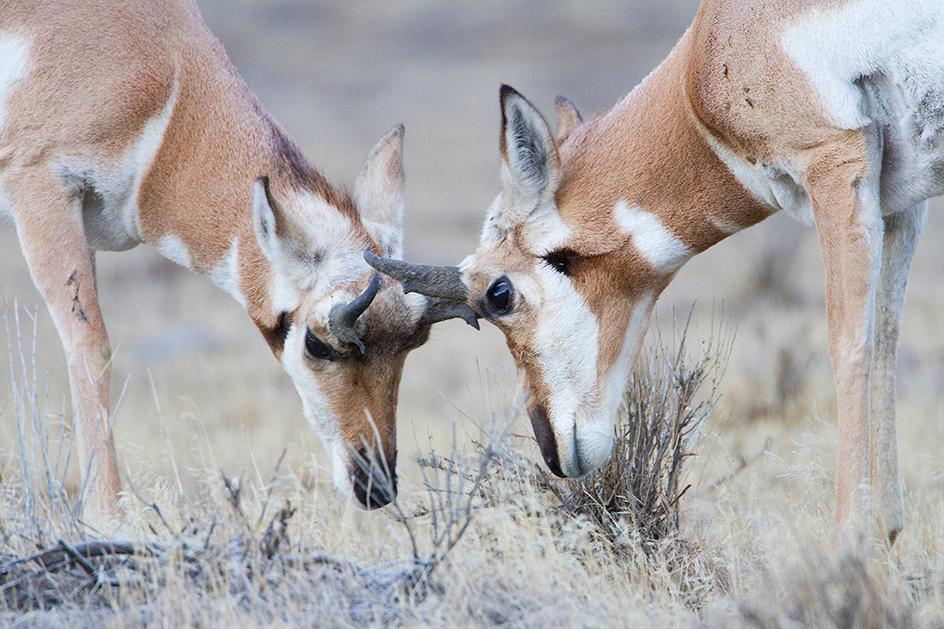 These young pronghorn bucks were doing some light sparring.
These young pronghorn bucks were doing some light sparring.
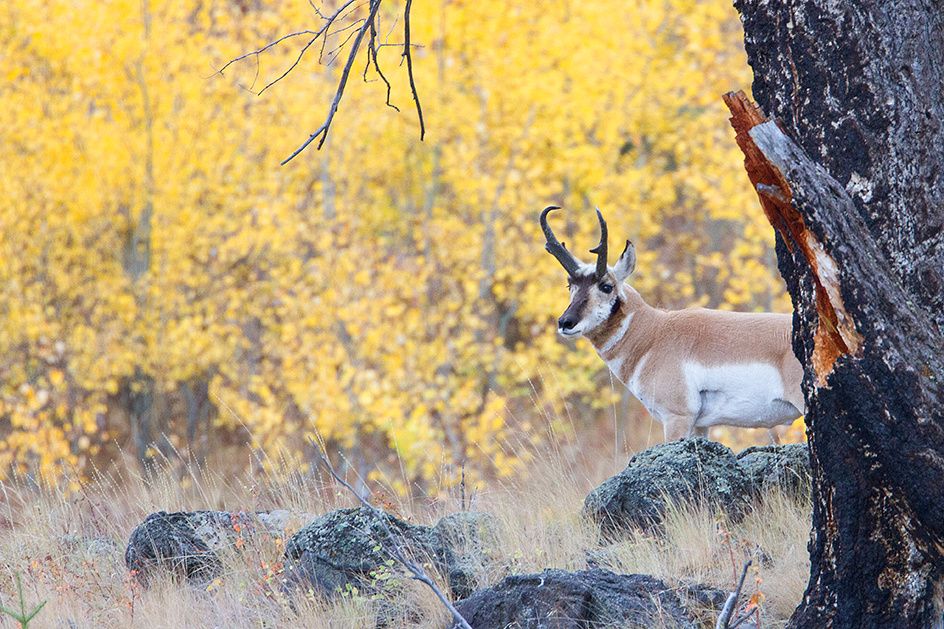
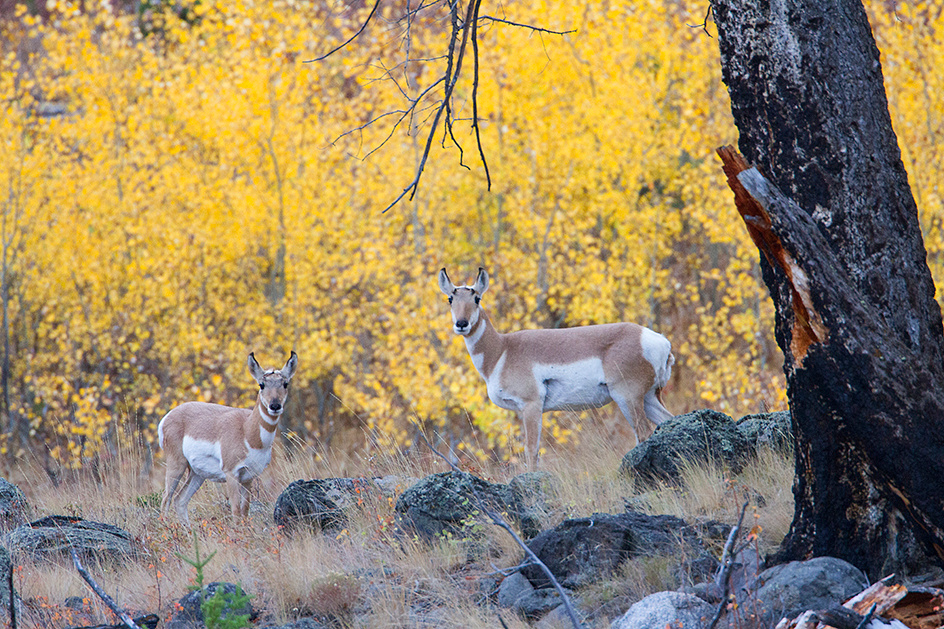 I was able to capture a few images of pronghorn with some nice fall colors.
I was able to capture a few images of pronghorn with some nice fall colors.
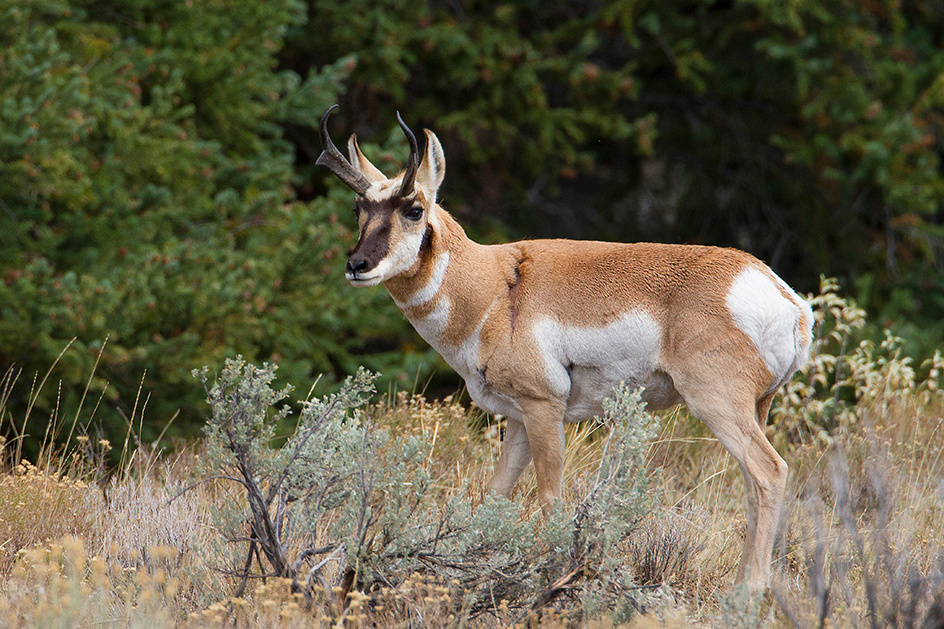
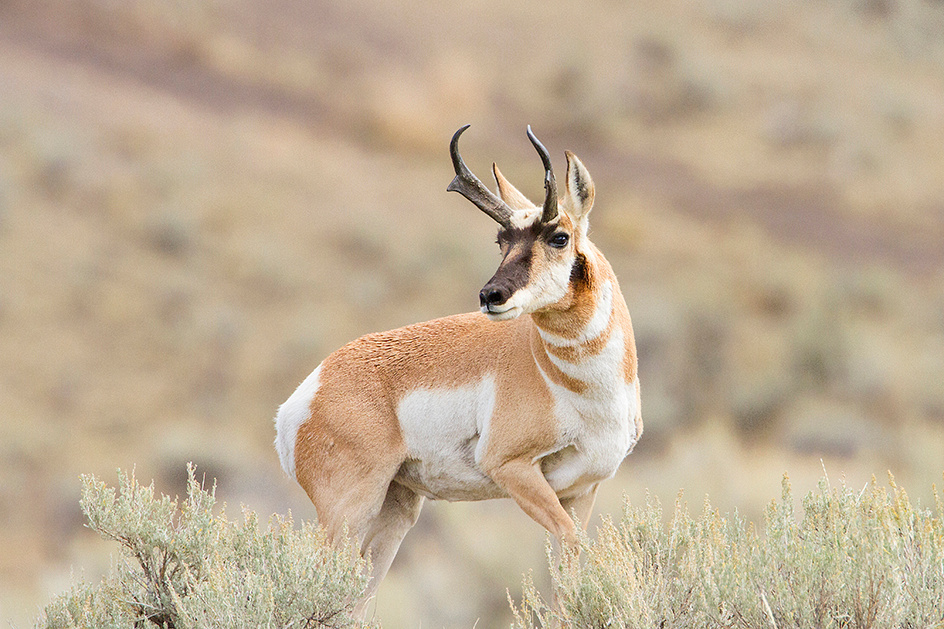 Mature bucks were constantly on the move herding their harems and chasing off rivals.
Mature bucks were constantly on the move herding their harems and chasing off rivals.
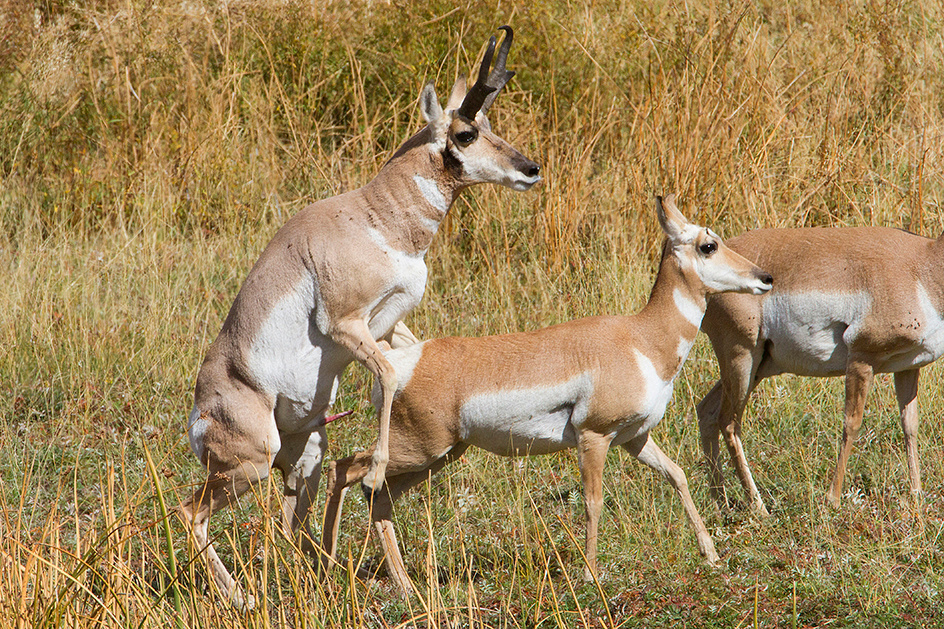 We were fortunate to capture a few images of pronghorn breeding behavior. It was interesting in that the male approached the female standing erect on his hind legs and walked into her while placing very little of his body weight on her. I thought that it was pretty obvious that we were viewing copulation, but many visitors asked me what they were doing.
We were fortunate to capture a few images of pronghorn breeding behavior. It was interesting in that the male approached the female standing erect on his hind legs and walked into her while placing very little of his body weight on her. I thought that it was pretty obvious that we were viewing copulation, but many visitors asked me what they were doing.
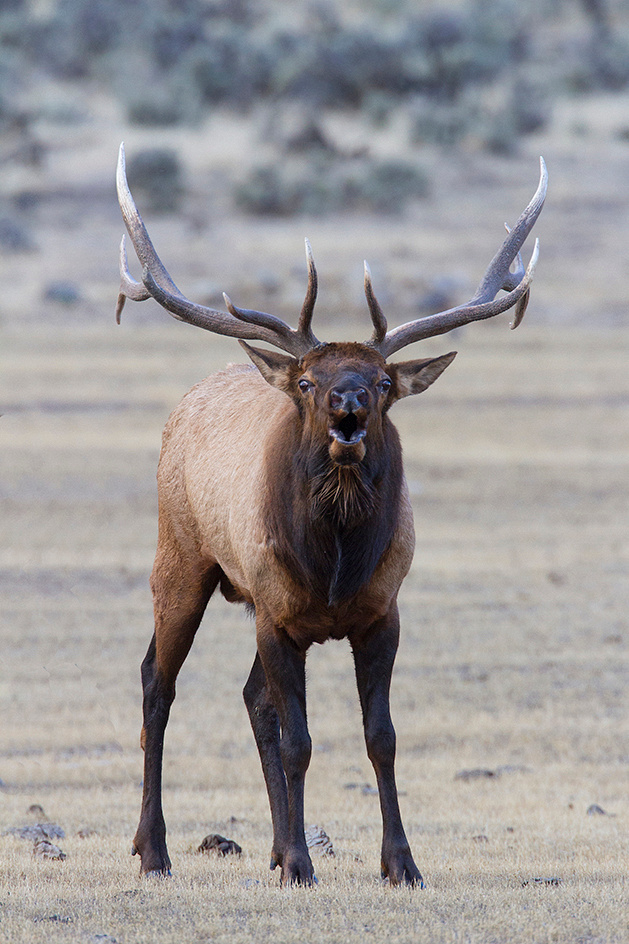
The principal purpose of our trip was to observe and record bull elk breeding activities including bugling, brush beating, wallowing, harem keeping, and fighting, We were successful in that we were able to photograph 4-6 bulls per day frequently involved in these activities. The bull above came out of the foothills on private property north of Gardiner near dusk with at least 80 cows and calves. Lots of bugling activity captured, including this down the pipe image.
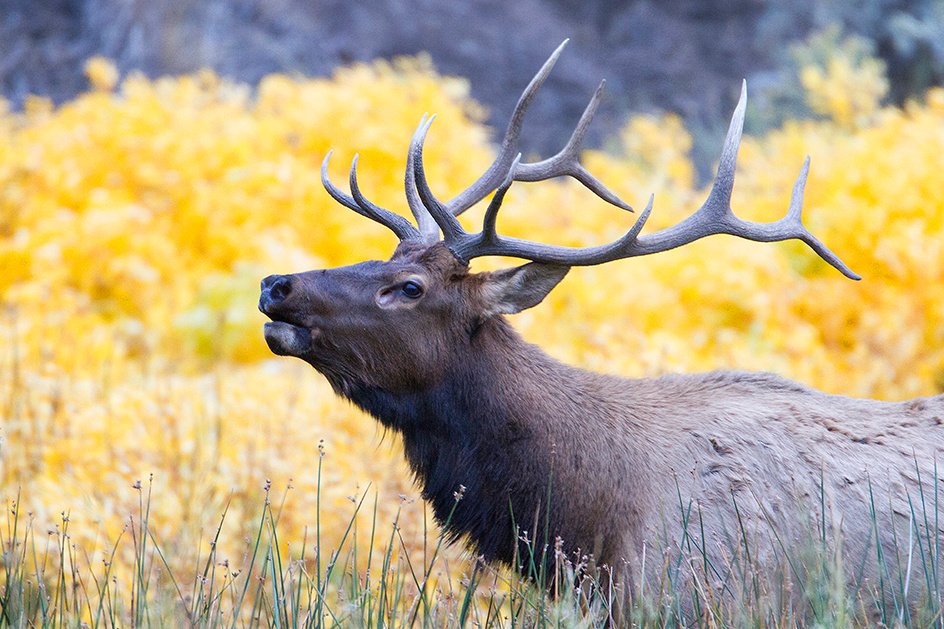 My camera, a Canon 7D, is less than ideal under low light conditions, I was forced to use ISO 800 to gain enough shutter speed to create sharp images, but at ISO 800, I frequently get very noisy images, especially in the darker areas as shown above.
My camera, a Canon 7D, is less than ideal under low light conditions, I was forced to use ISO 800 to gain enough shutter speed to create sharp images, but at ISO 800, I frequently get very noisy images, especially in the darker areas as shown above.
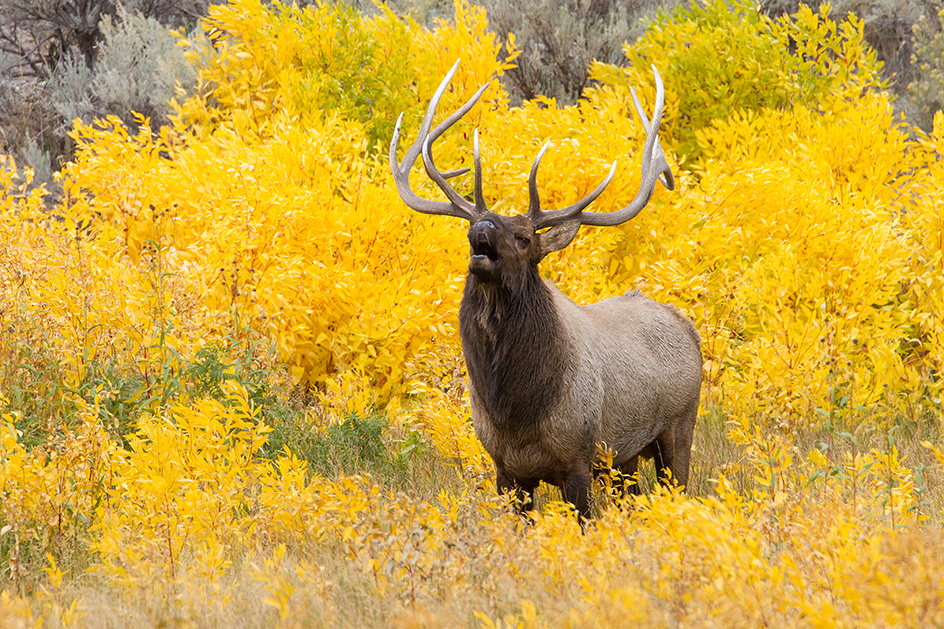 Elk were not very widespread in the park during our visit. Most of the bulls we saw were within 5-7 miles of Mammoth or Gardiner.
Elk were not very widespread in the park during our visit. Most of the bulls we saw were within 5-7 miles of Mammoth or Gardiner.
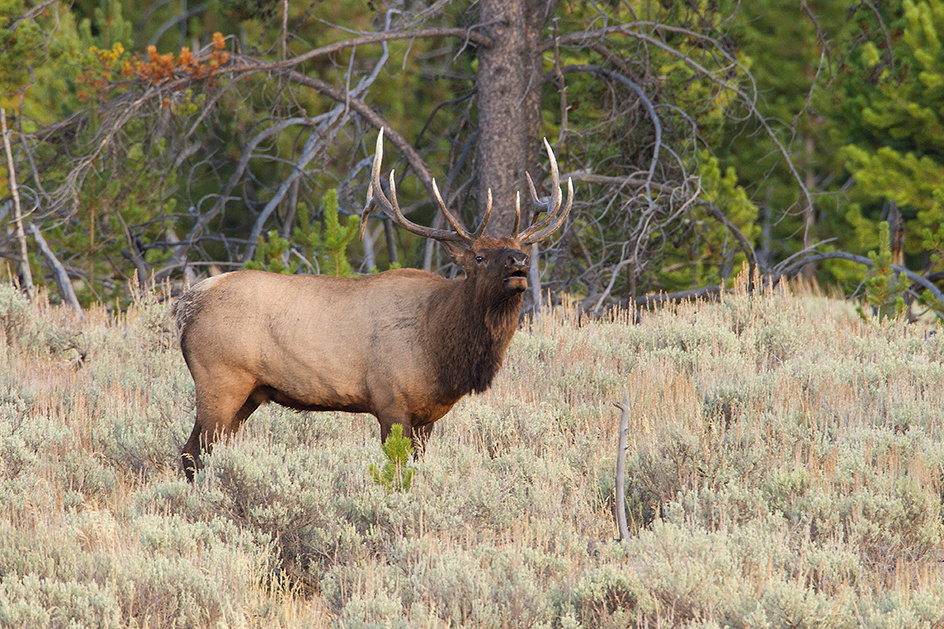 Herd bull on Swan Lake Flat near dusk
Herd bull on Swan Lake Flat near dusk
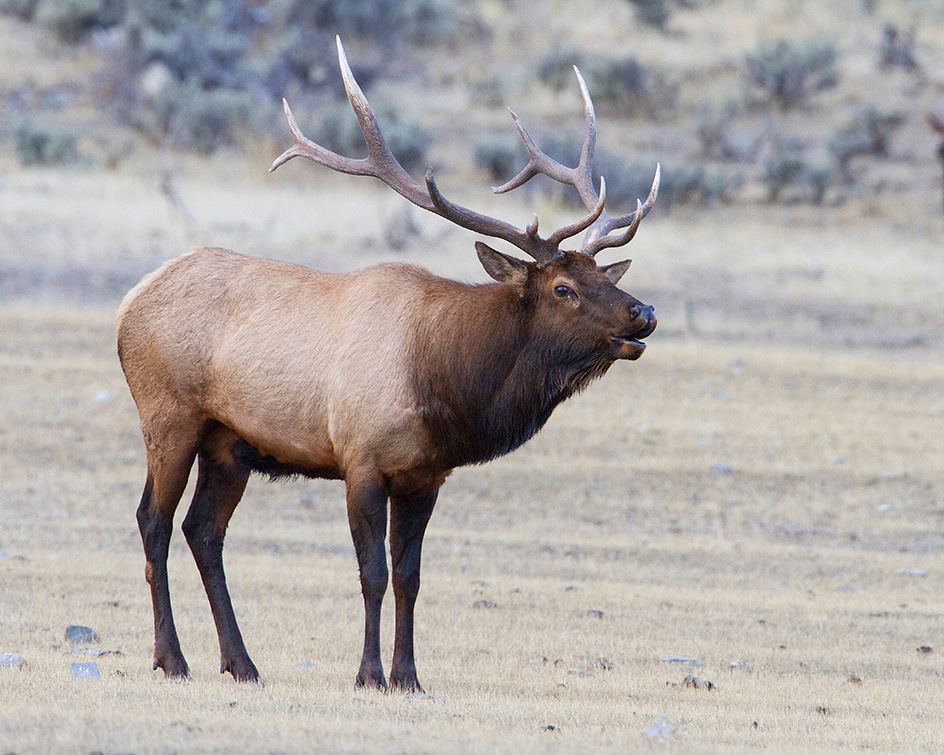
 Lots of bugling was heard, which is not unlike a shrill whistle. An odd vocalization to eminate from so large an animal. Truly a sound of the fall in the Rocky Mountains. One evening were parked near the southern end of Swan Lake Flat and had 3 bulls bugling within 1/2 mile of each other.
Lots of bugling was heard, which is not unlike a shrill whistle. An odd vocalization to eminate from so large an animal. Truly a sound of the fall in the Rocky Mountains. One evening were parked near the southern end of Swan Lake Flat and had 3 bulls bugling within 1/2 mile of each other.
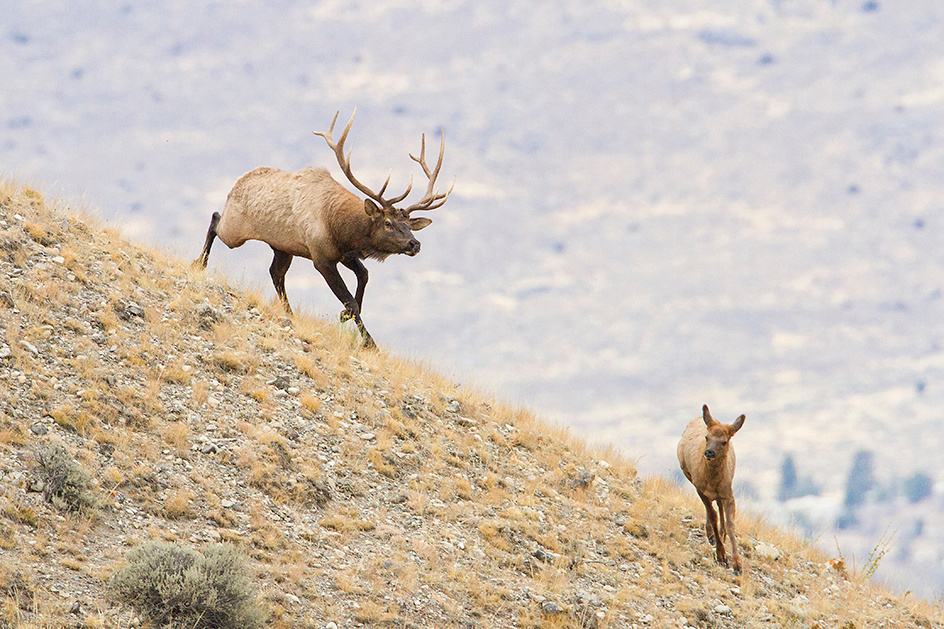 The bulls spent a great deal of time and energy attempting to keep their harem together. They exhibit great speed and herding skill on steep and unstable terrain.
The bulls spent a great deal of time and energy attempting to keep their harem together. They exhibit great speed and herding skill on steep and unstable terrain.
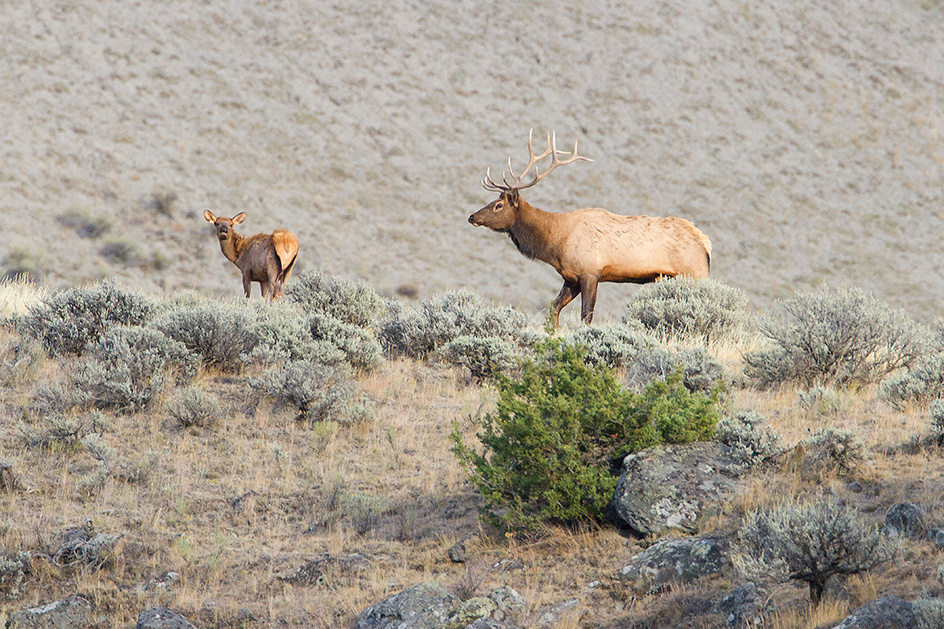 This bull above had kept a good sized harem together all day until a much larger rival appeared and the smaller bull relinquished his cows without a fight.
This bull above had kept a good sized harem together all day until a much larger rival appeared and the smaller bull relinquished his cows without a fight.
The bull below was the resident herd bull in downtown Gardiner. Some odd palmation on his short antlers.
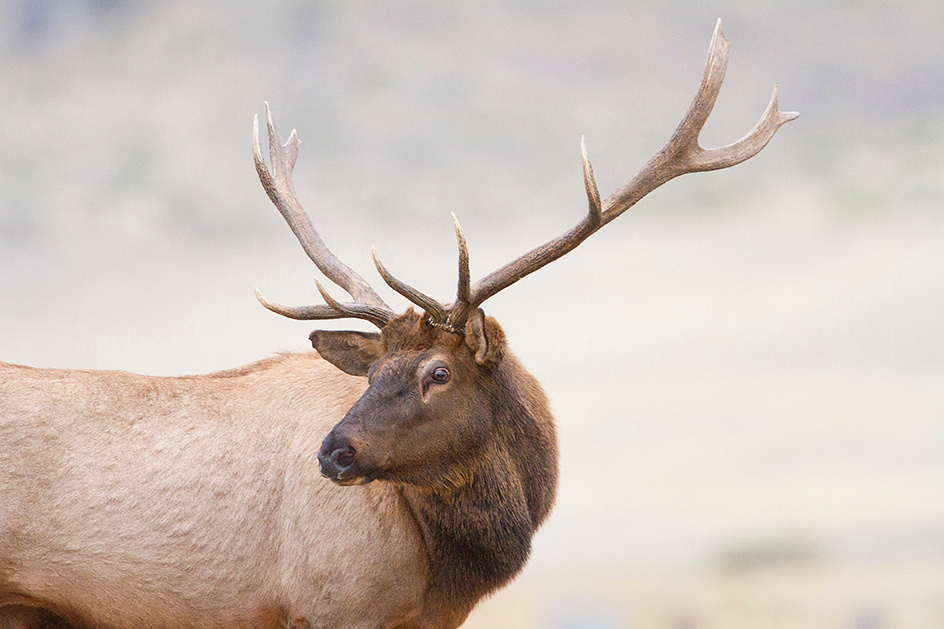
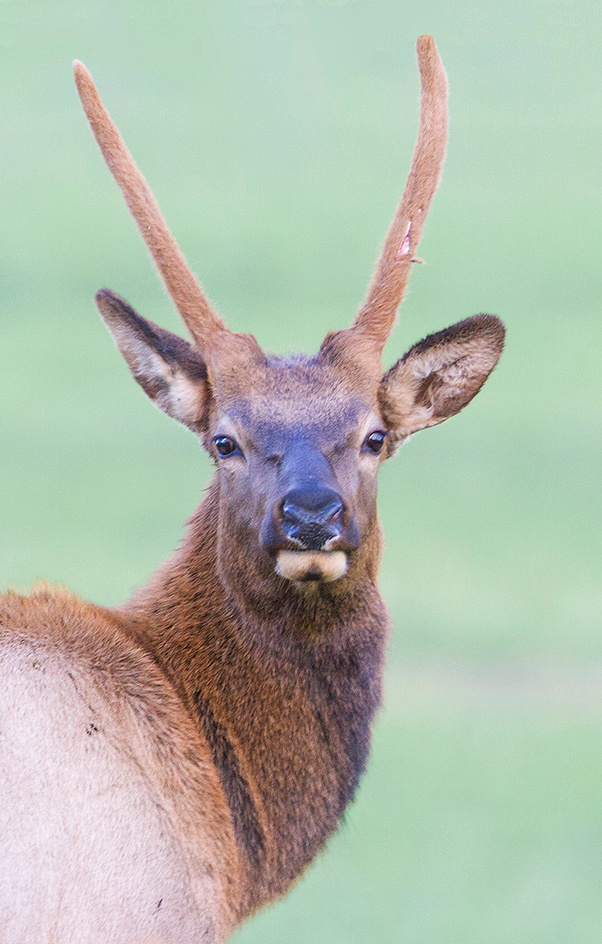
Spike bull head shot captured near Gardiner
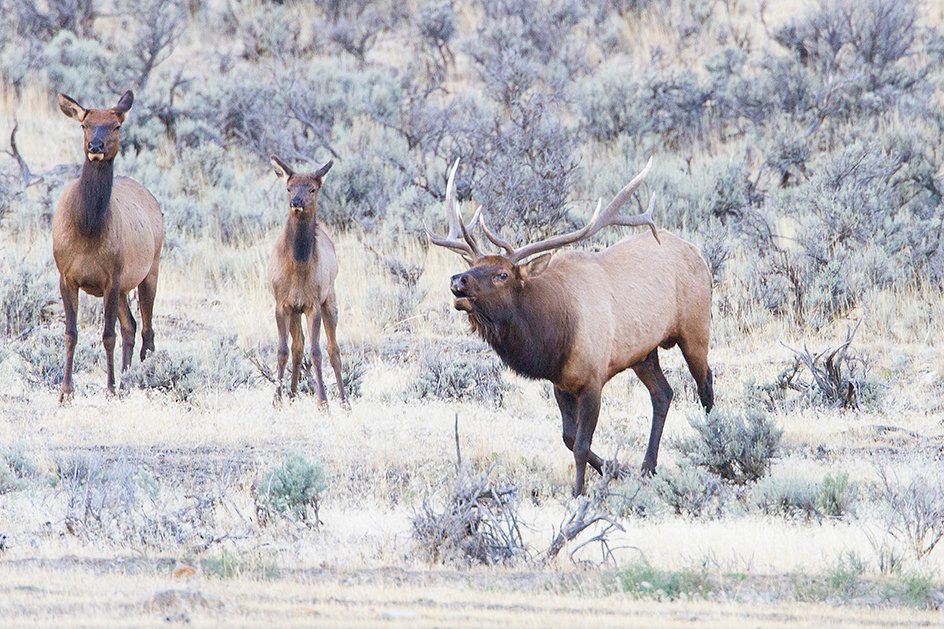
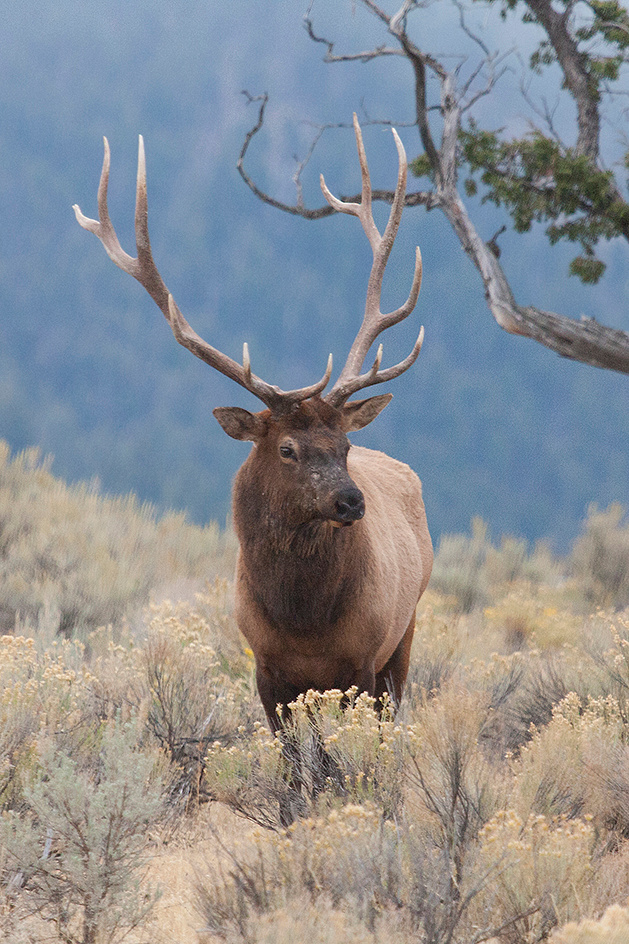
Pictured above is "Touchdown" the resident herd bull in downtown Mammoth. He was easy to find, but difficult to photograph without a car, house, or an I-pad wielding tourist in the background. Easily the most photographed single animal in Yellowstone during our visit. He had two rangers in attendance constantly to keep the selfie crowd at a safe distance.
I had some perfect morning light on the cow elk below along the Moose-Wilson Road in the Grand Teton National Park. One of the few cow elk images I kept from the trip.
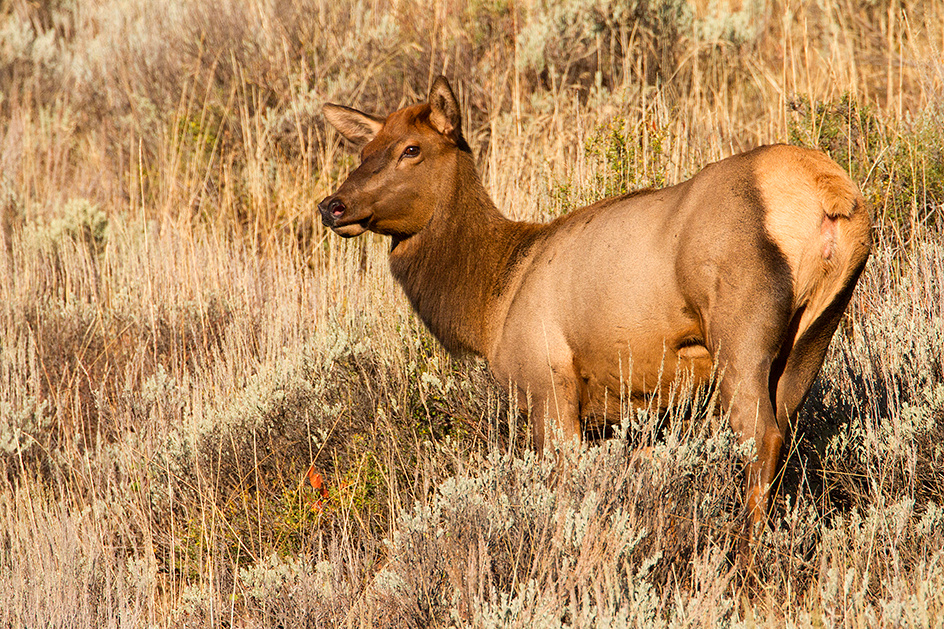
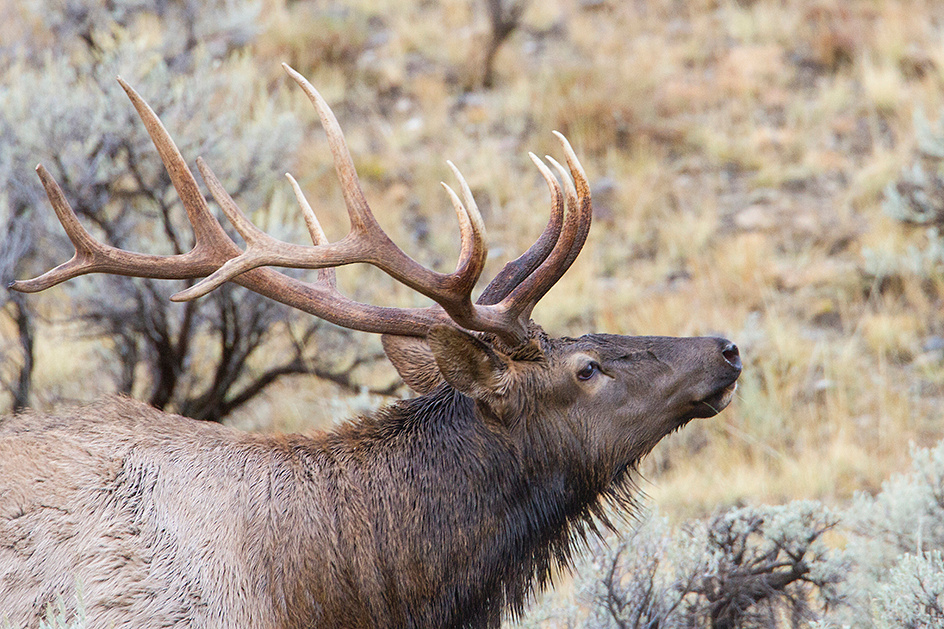
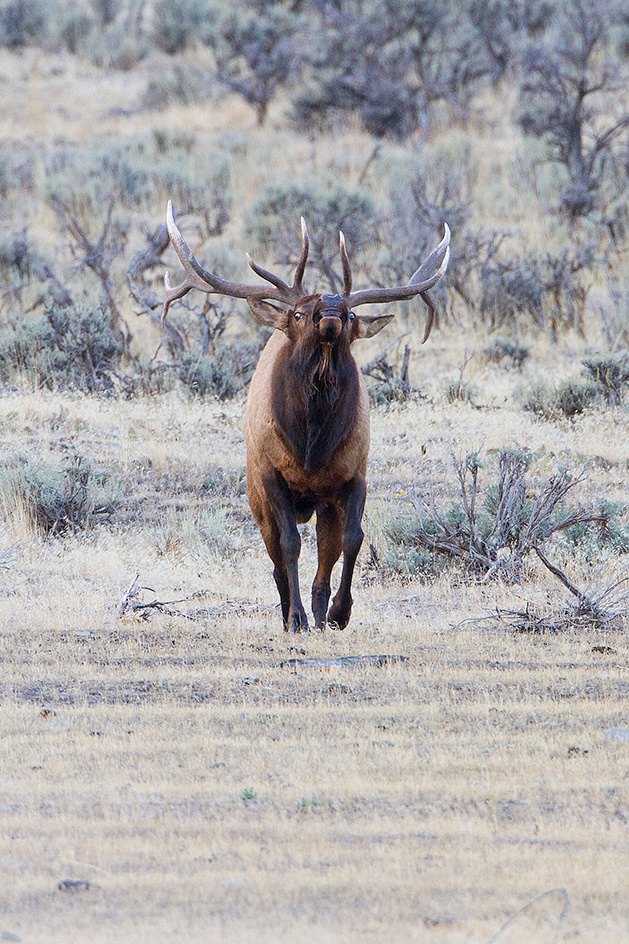
Can you hear me now?
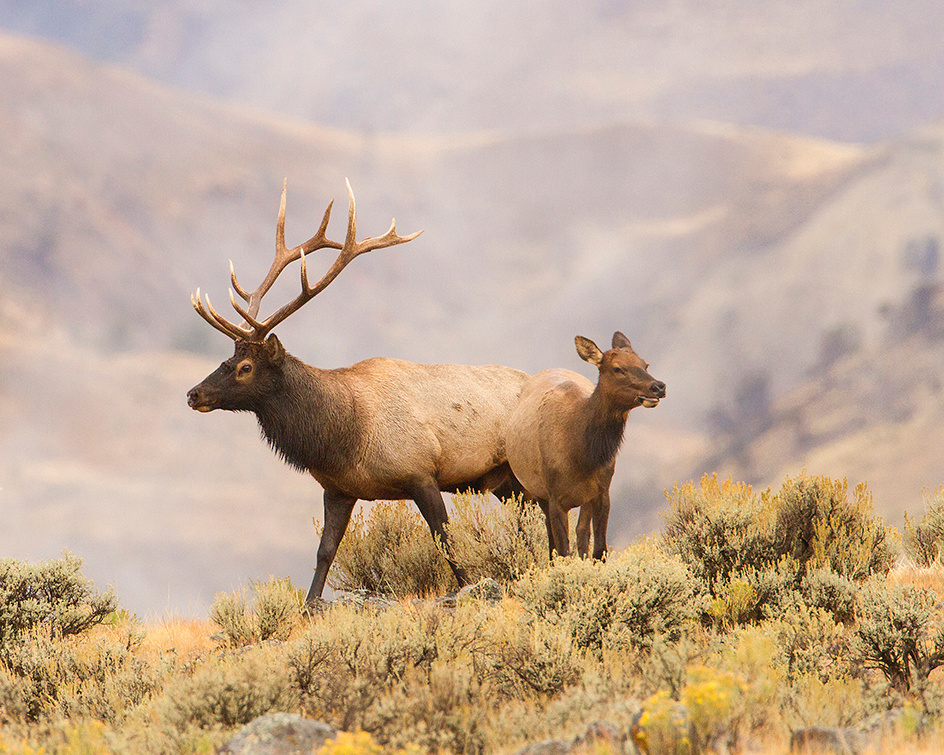

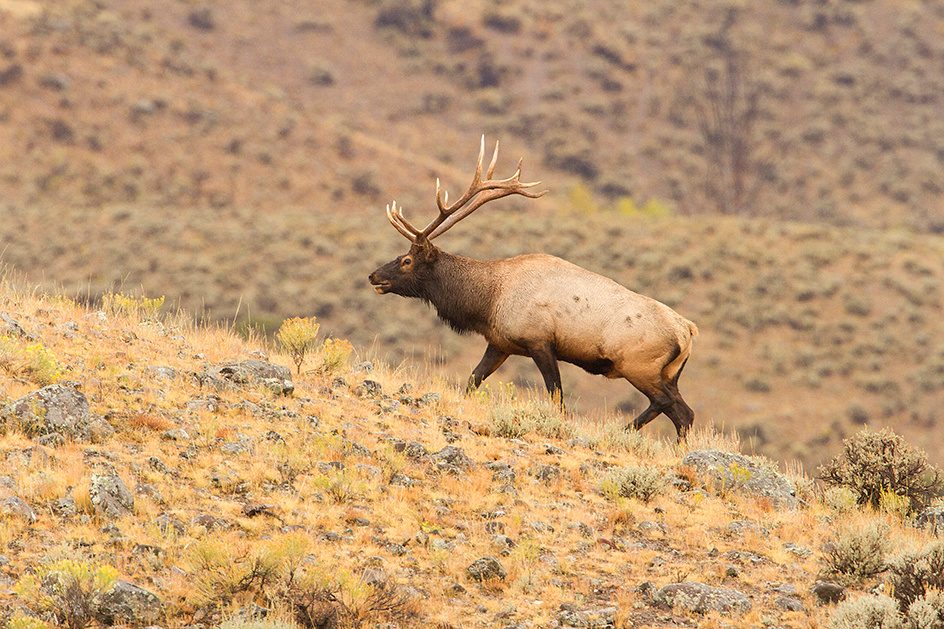
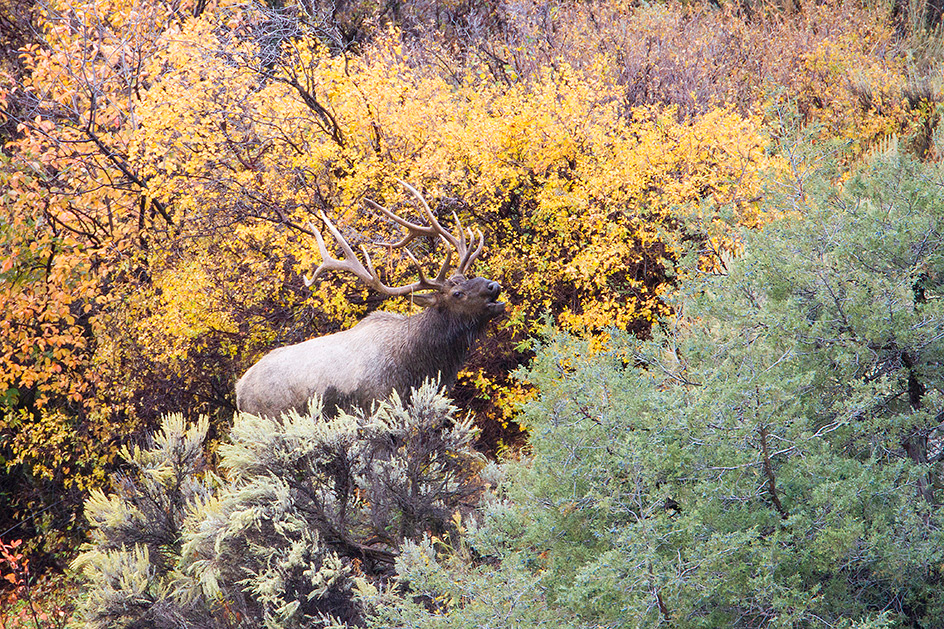 Nothing like a good roll in the mud before a stroll with the girls.
Nothing like a good roll in the mud before a stroll with the girls.

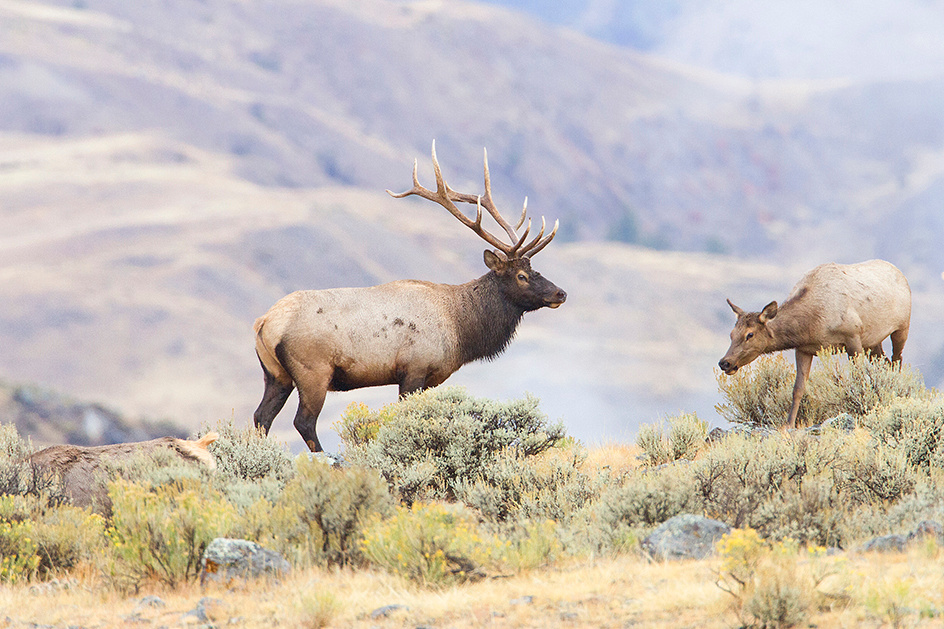 I had several opportunities to get away from the roads and capture bulls on ridge lines with impressive backdrops.
I had several opportunities to get away from the roads and capture bulls on ridge lines with impressive backdrops.
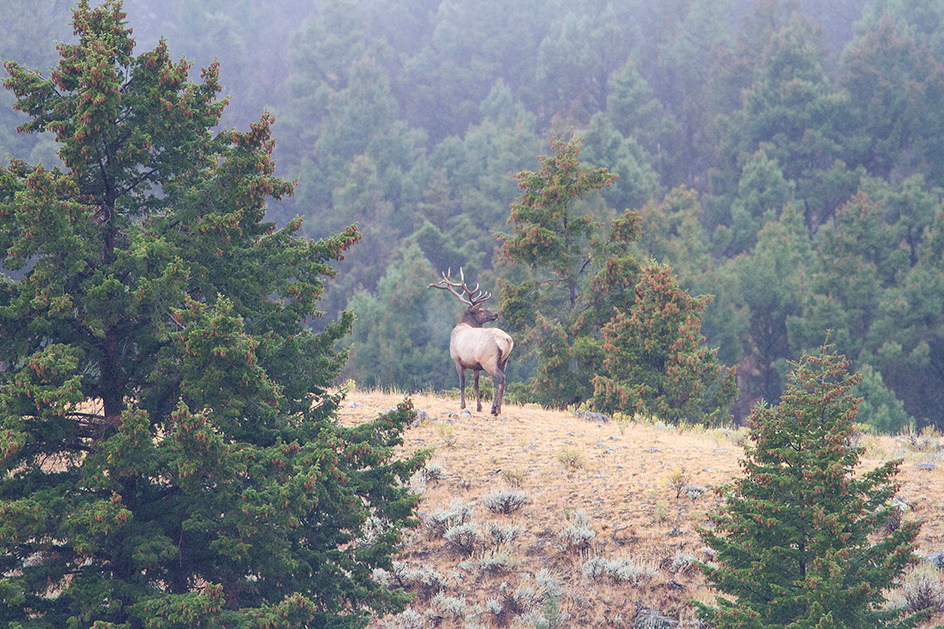 I have a tendency to attempt to capture frame filling wildlife images. Lately, I have tried some captures where the subject is relatively small in the frame. The image above turned out better than I had hoped. It was taken under somewhat foggy, low light conditions at a distance. The bull had just herded his cows over the ridge and stopped to listen to a nearby bull bugle.
I have a tendency to attempt to capture frame filling wildlife images. Lately, I have tried some captures where the subject is relatively small in the frame. The image above turned out better than I had hoped. It was taken under somewhat foggy, low light conditions at a distance. The bull had just herded his cows over the ridge and stopped to listen to a nearby bull bugle.
 Probably my favorite elk image of the trip. A mature roman nosed bull showing of his rack to a rival in a patch of wonderful golden color.
Probably my favorite elk image of the trip. A mature roman nosed bull showing of his rack to a rival in a patch of wonderful golden color.
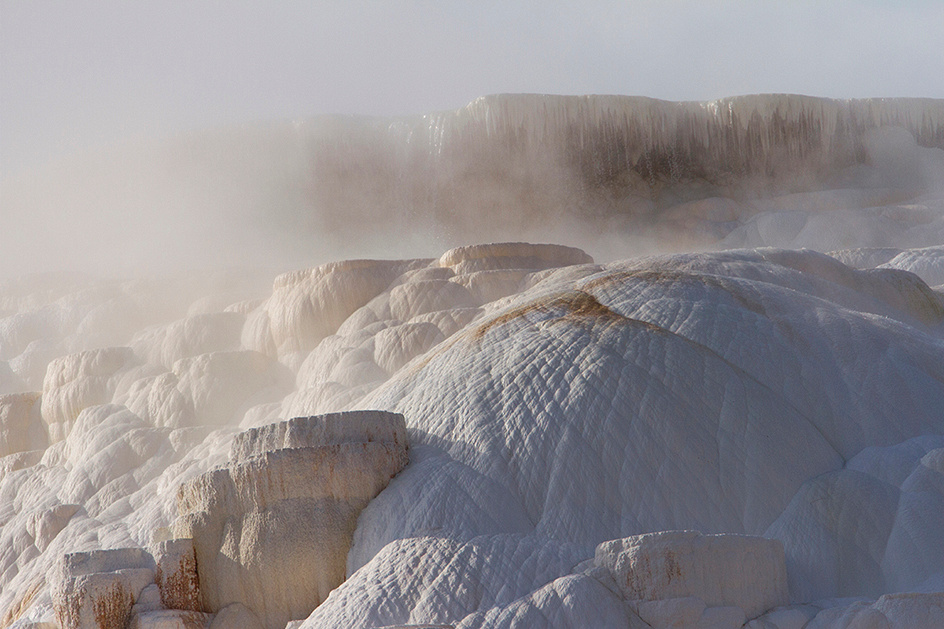 Mammoth Hot Springs on a 28 degree morning.
Mammoth Hot Springs on a 28 degree morning.
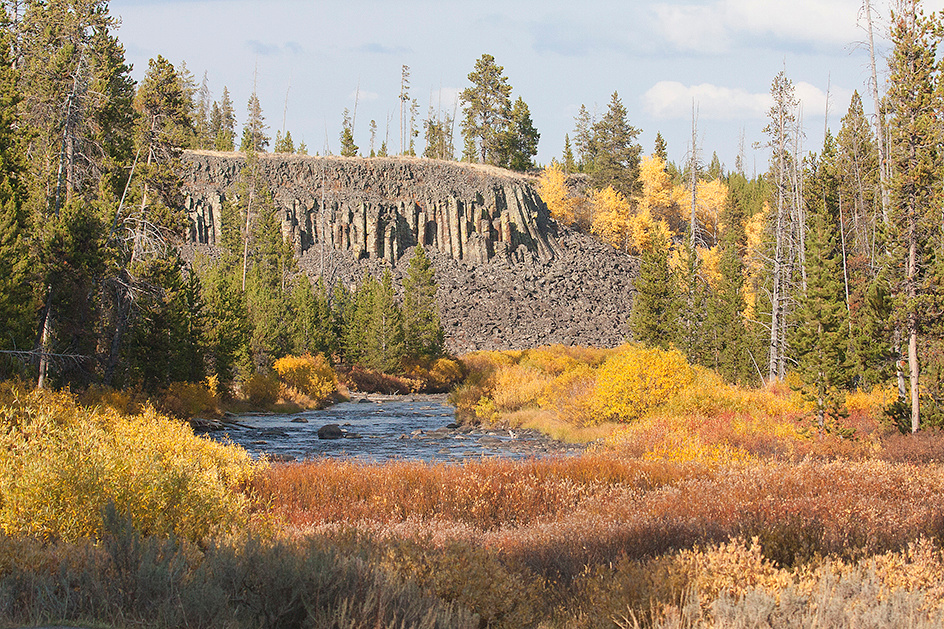
The Tetons certainly had superior fall color photo opportunities, but Yellowstone also offered some stunning landscape photo opportunities including this image from Sheepeater Cliffs.
I would highly recommend a visit to Yellowstone in either mid May or late September. Photo opportunities are quite different during each time period and the crowds are certainly less than during the main visitor season.
I feel that in at least 2016, the very best time to visit Grand Teton National Park is during mid-September. Fall colors are at their peak and early snows provide a dusting on the mountains without adversely affecting travel.
We visited Yellowstone in mid-May in attempt to photograph wildlife without the crowds of summer. We were successful on both counts. We spent five full days in the park, covering virtually all of the open roads. Weather was not great for photography. We rarely saw the sun in the mornings or evenings. We had snow, hail, fog, and torrential thunderstorms part of every day. We chose to stay in Gardiner Montana on the banks of the Yellowstone River. We had an amazing view of Electric Peak from our front door.
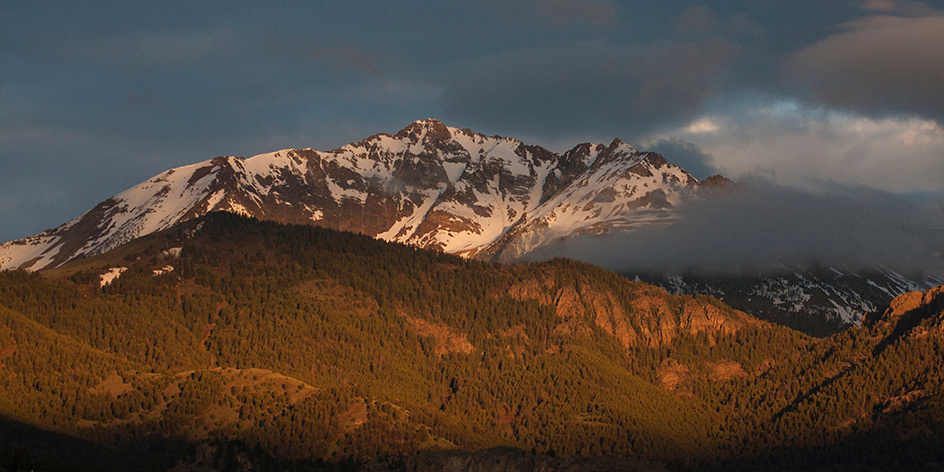
Three of the five mornings we were treated to elk on our front porch, pruning the landscaping. The image below is of the recently restored Roosevelt Arch with one of the many Gardiner resident elk. The image was captured handheld with a 100mm lens and a shutter speed of 1/30 of a second. I am quite amazed that it turned out as well as it did under those conditions. I cloned out a yield sign mounted on the arch.
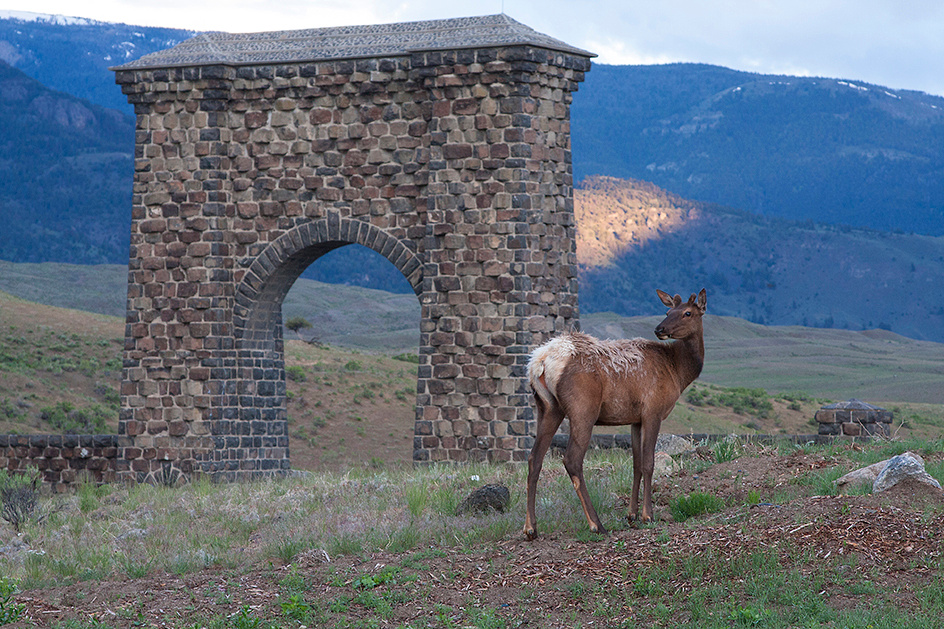
Spring is a time of much activity with bison and elk dropping calves. Bison calves were abundant and we observed thousands of bison with large herds in Lamar Valley.
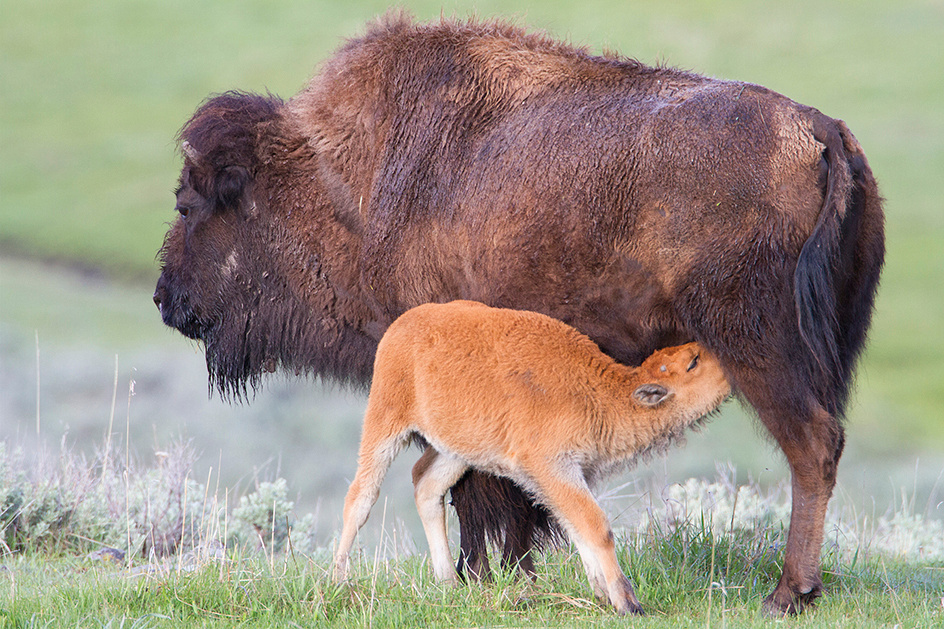

Young bison are quite playful. The calf below is kicking up his heels and preparing to head butt his mom. Note the remains of the umbilical cord.
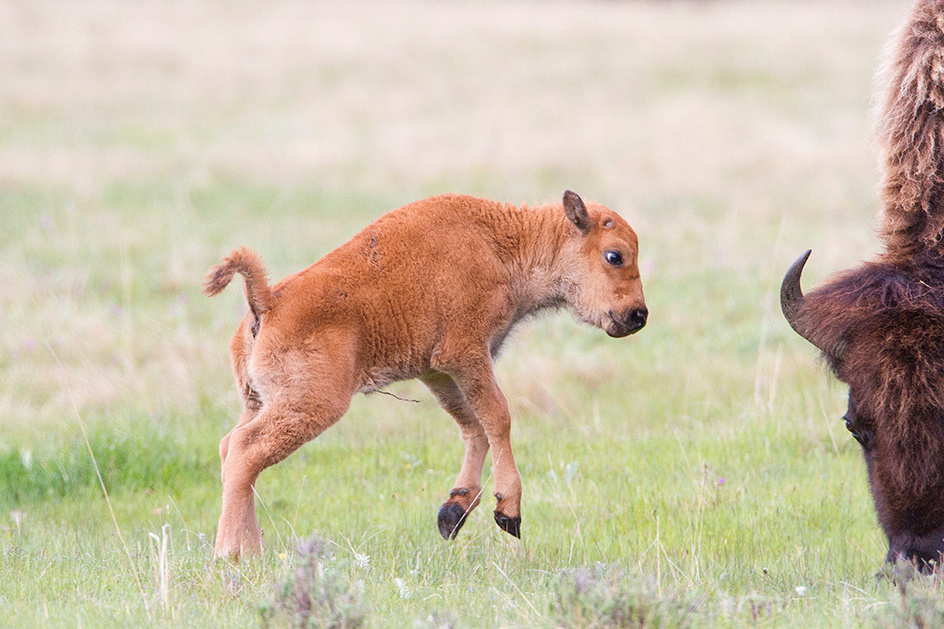
Bison nursing calves were a common sight. The locals call the calves "red dogs".
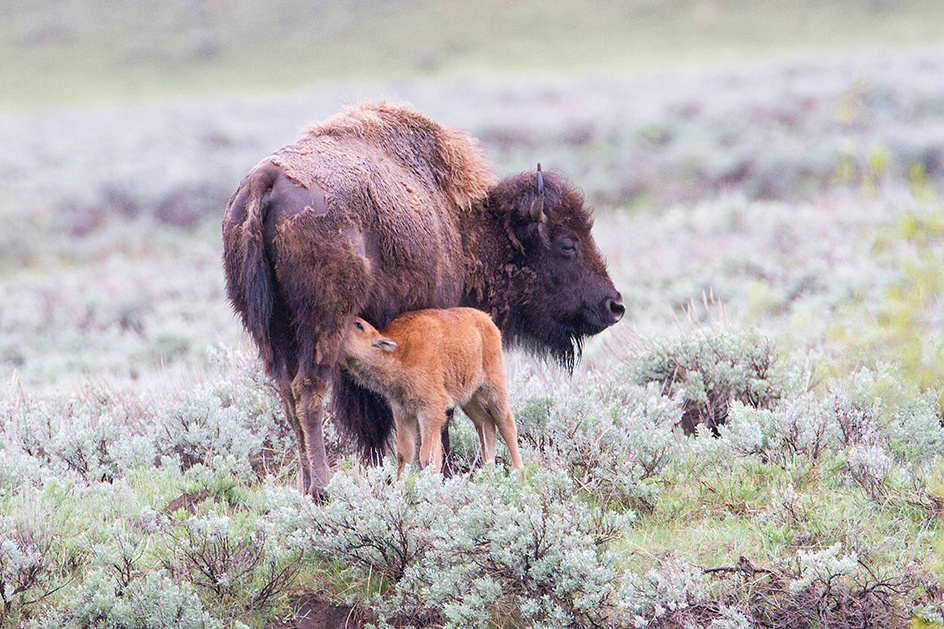 One of the classic Yellowstone images I had hoped to capture was a bison herd river crossing. I got my chance on the 3rd morning. Unfortunately, they chose to cross on the Lamar River bridge. They even had a crossing guard!
One of the classic Yellowstone images I had hoped to capture was a bison herd river crossing. I got my chance on the 3rd morning. Unfortunately, they chose to cross on the Lamar River bridge. They even had a crossing guard!
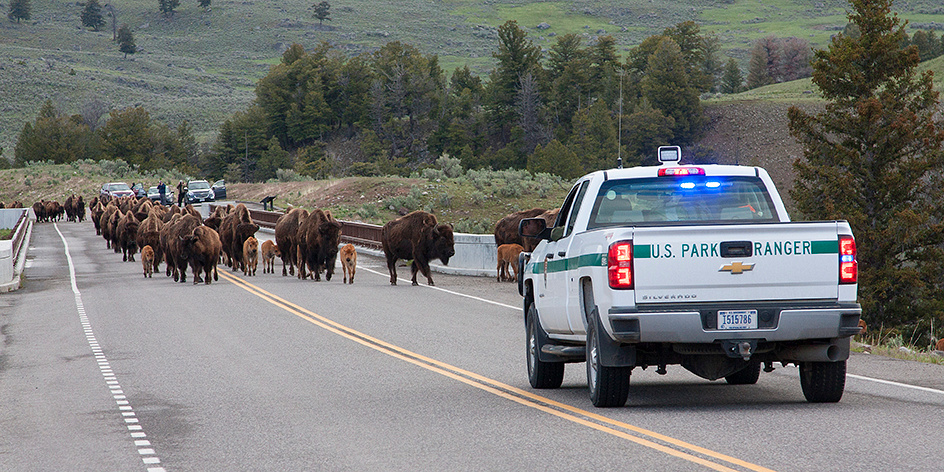
Black bears were also quite common, especially in the area near Tower. We ended up observing and photographing six sows with cubs and a single boar. The boar is pictured below.
 A lot of my black bear photos were captured under low light conditions, so I was forced to use higher ISO speeds than I prefer.
A lot of my black bear photos were captured under low light conditions, so I was forced to use higher ISO speeds than I prefer.
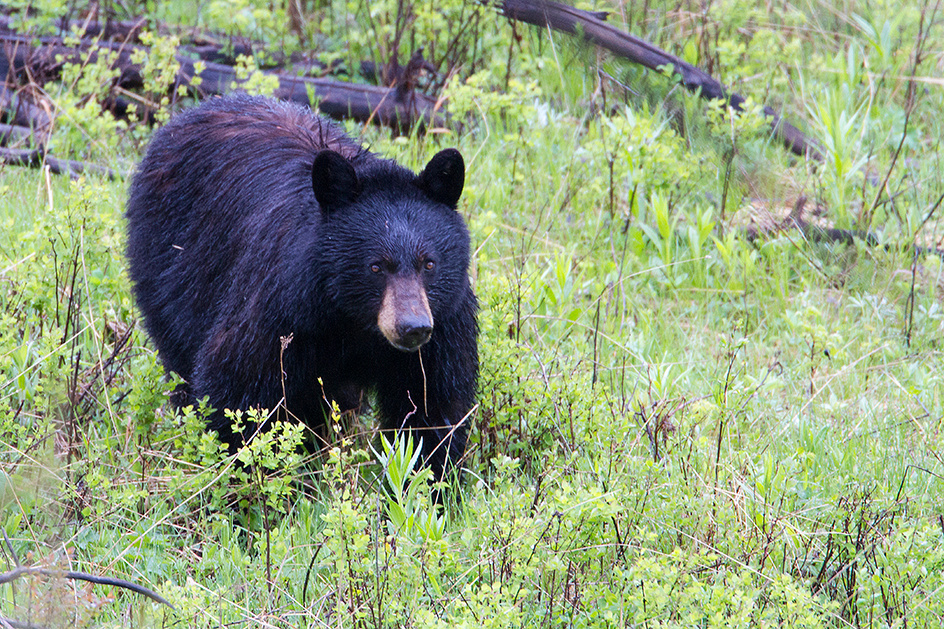
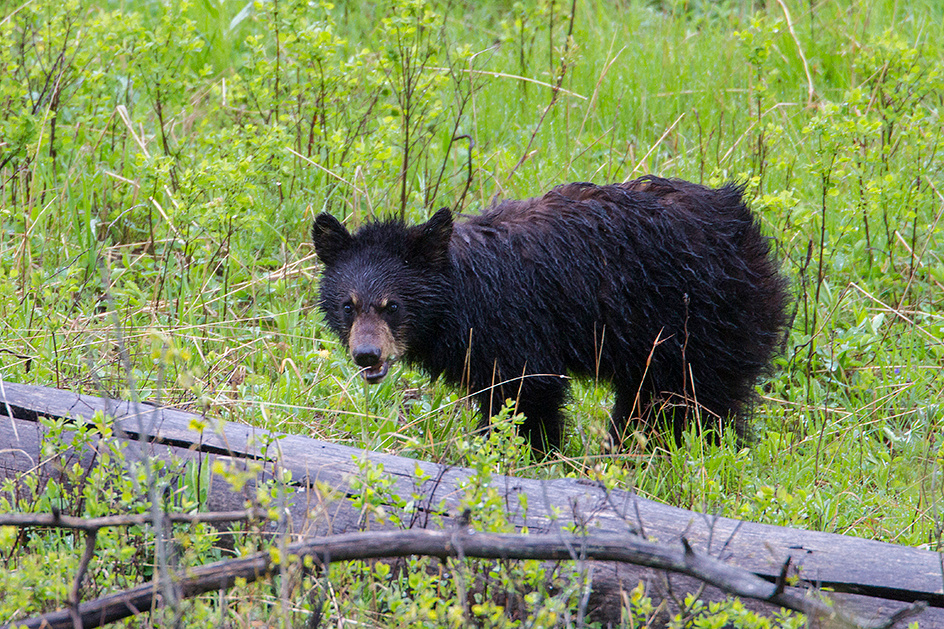 All the black bears we saw were busy foraging and only rarely gave any direct eye contact. I finally got the cub above to look at me for a frame or two.
All the black bears we saw were busy foraging and only rarely gave any direct eye contact. I finally got the cub above to look at me for a frame or two.
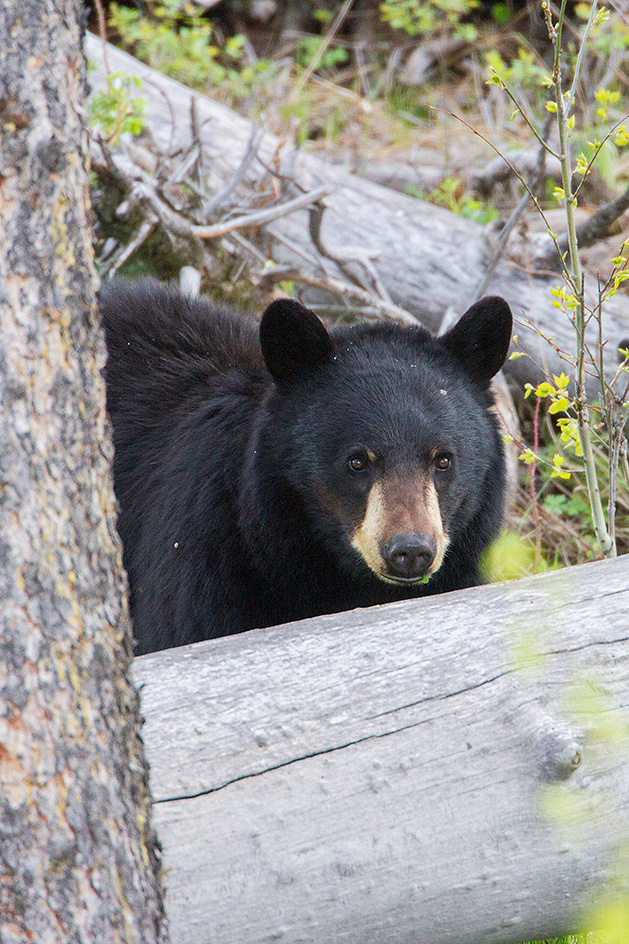
Census data indicate that only about 60 moose reside in Yellowstone, so we were fortunate to find both a young bull and a cow in separate ends of the park. Pictured below is an image of the cow foraging in Willow Park.
 We saw several coyotes every day. They are incredibly tame in the park and hunted within feet of our vehicle. The coyote below has just captured a vole at minimum focus distance.
We saw several coyotes every day. They are incredibly tame in the park and hunted within feet of our vehicle. The coyote below has just captured a vole at minimum focus distance.
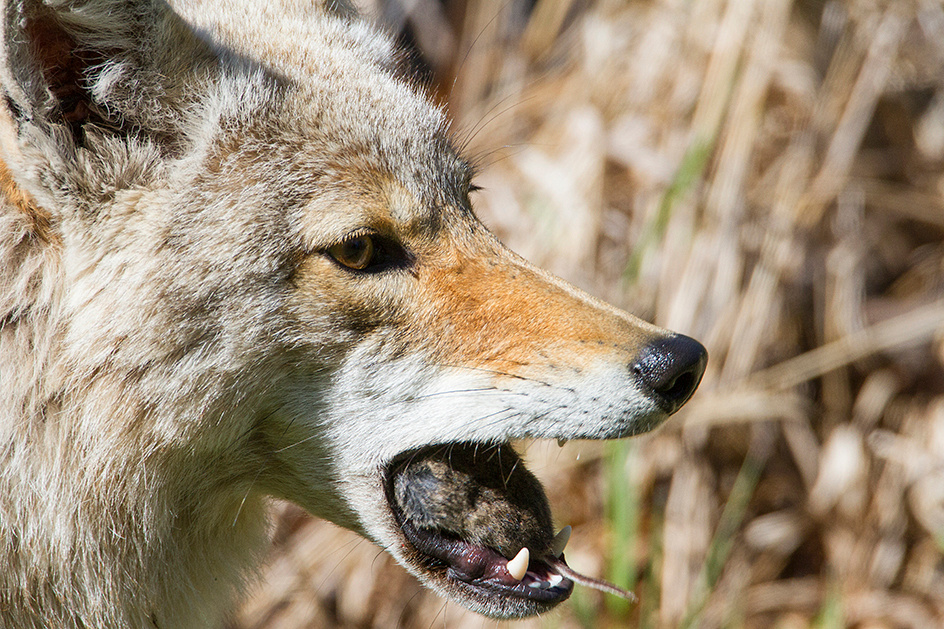 The coyote below was photographed with another mousing in Lamar Valley in decent morning light.
The coyote below was photographed with another mousing in Lamar Valley in decent morning light.
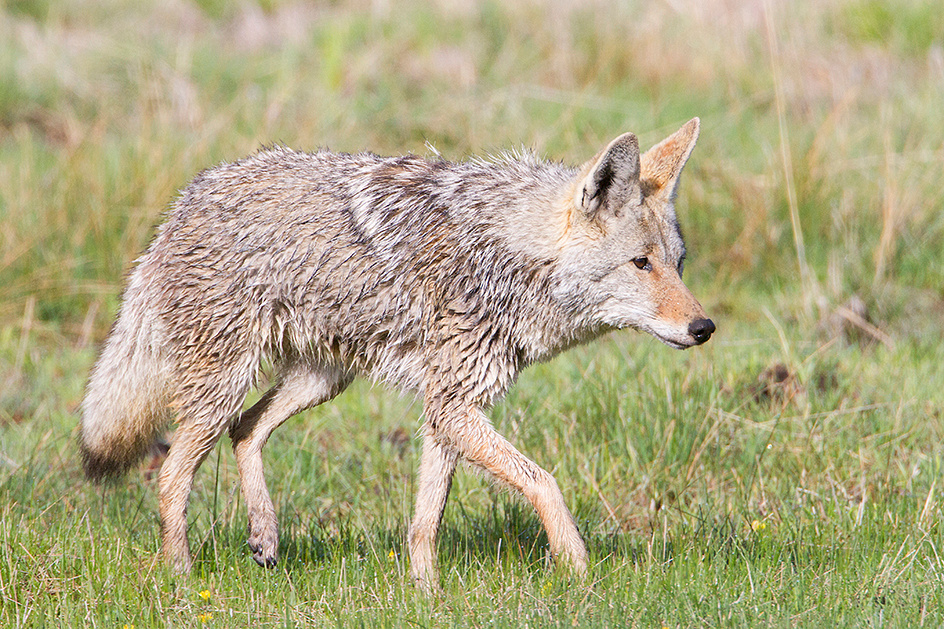 Elk were extremely common, although we only saw six mature bulls. The bull pictured below posed in the only spot of light on the hillside. Dramatic lighting and a regal pose make this one of my favorite images from the trip.
Elk were extremely common, although we only saw six mature bulls. The bull pictured below posed in the only spot of light on the hillside. Dramatic lighting and a regal pose make this one of my favorite images from the trip.
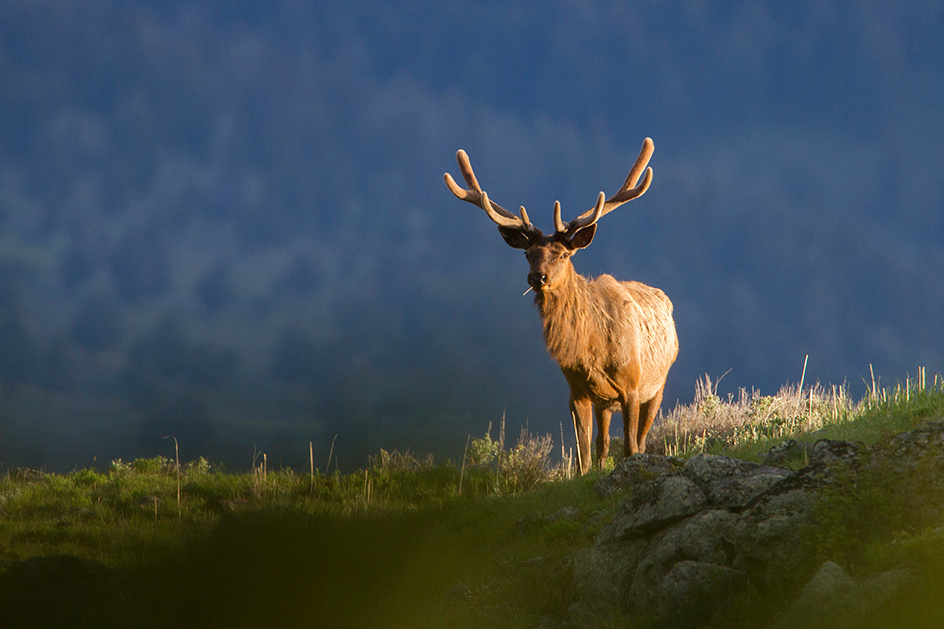
The bull pictured below was in Hayden Valley and seems to have a fairly serious plumbing issue.
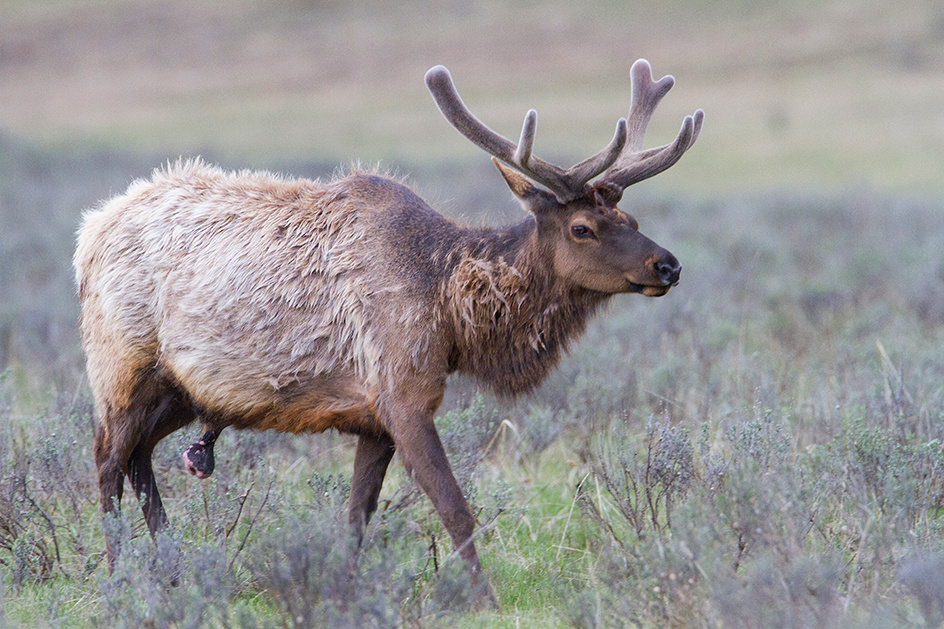 The elk were just beginning to calve. We only saw two calves and both were very wobbly walkers indicating that they had been born only recently. The image below was captured in Gardiner near sunset.
The elk were just beginning to calve. We only saw two calves and both were very wobbly walkers indicating that they had been born only recently. The image below was captured in Gardiner near sunset.
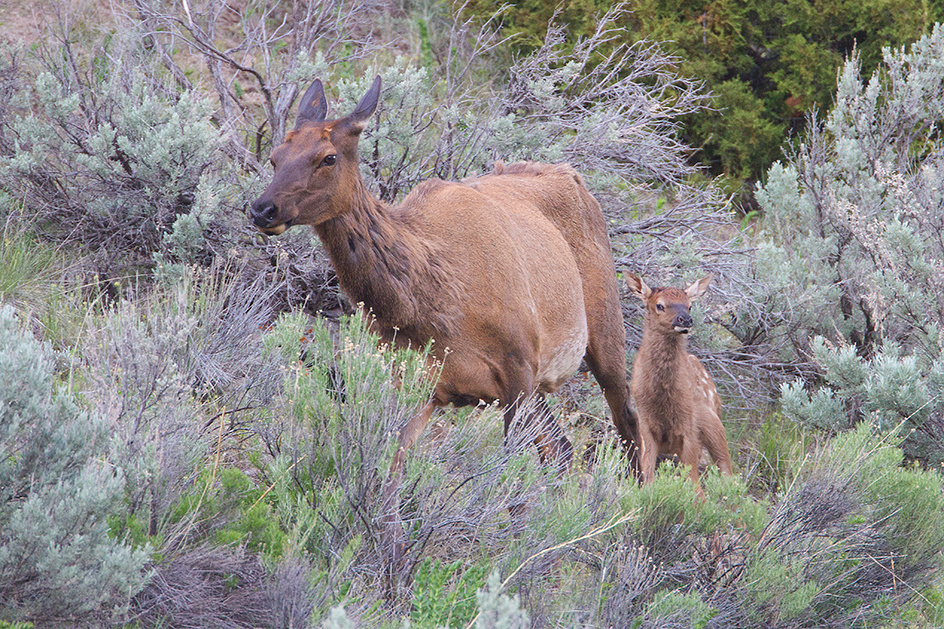 Another species that I had hoped to photograph was red fox. Becky found this little vixen hanging out at the Petrified Tree trailhead. She posed for several hundred closeups.
Another species that I had hoped to photograph was red fox. Becky found this little vixen hanging out at the Petrified Tree trailhead. She posed for several hundred closeups.
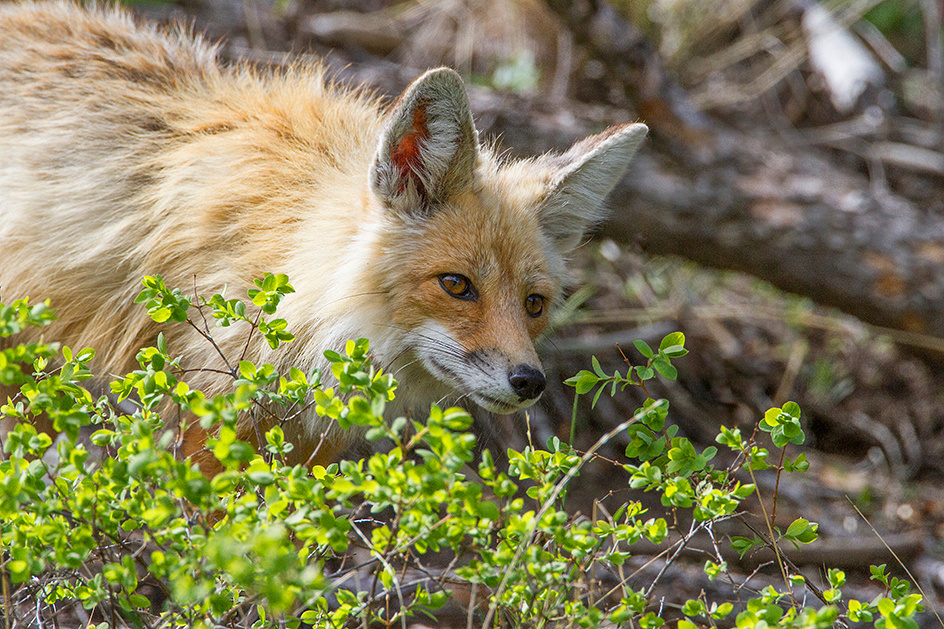
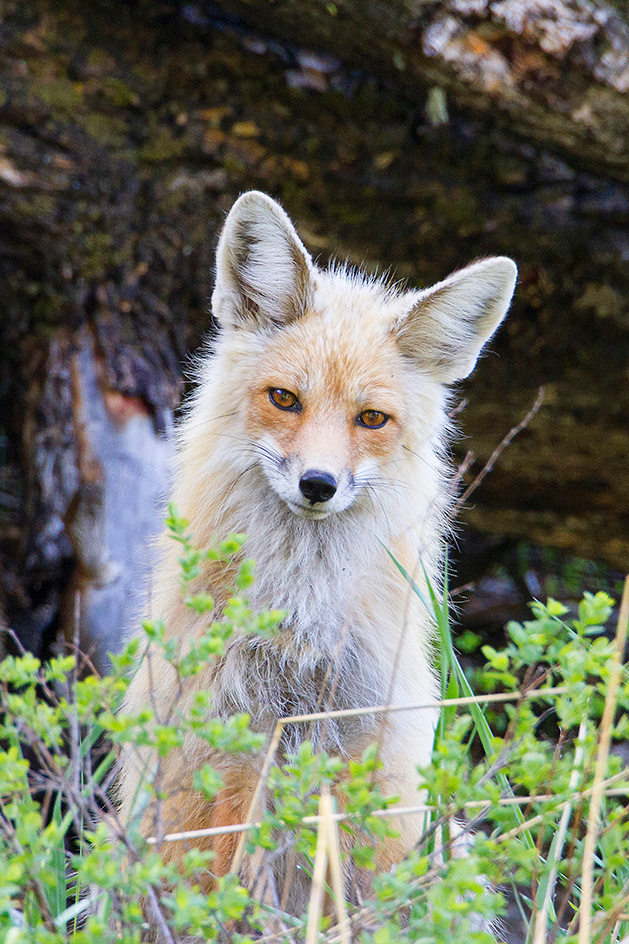
Pronghorn were common near Gardiner and in Lamar Valley. We saw some incredible bucks daily between Tower Junction and Slough Creek.
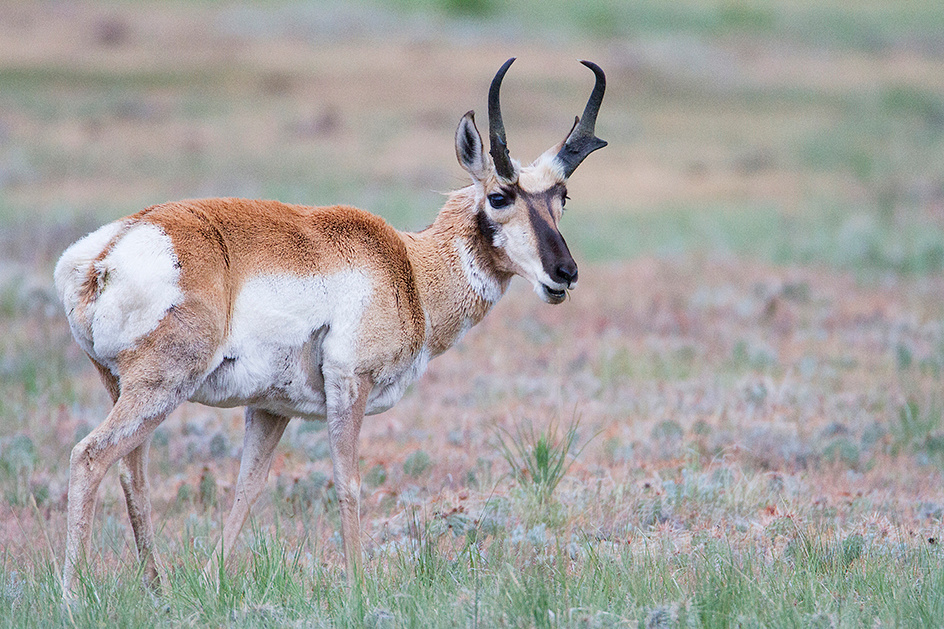
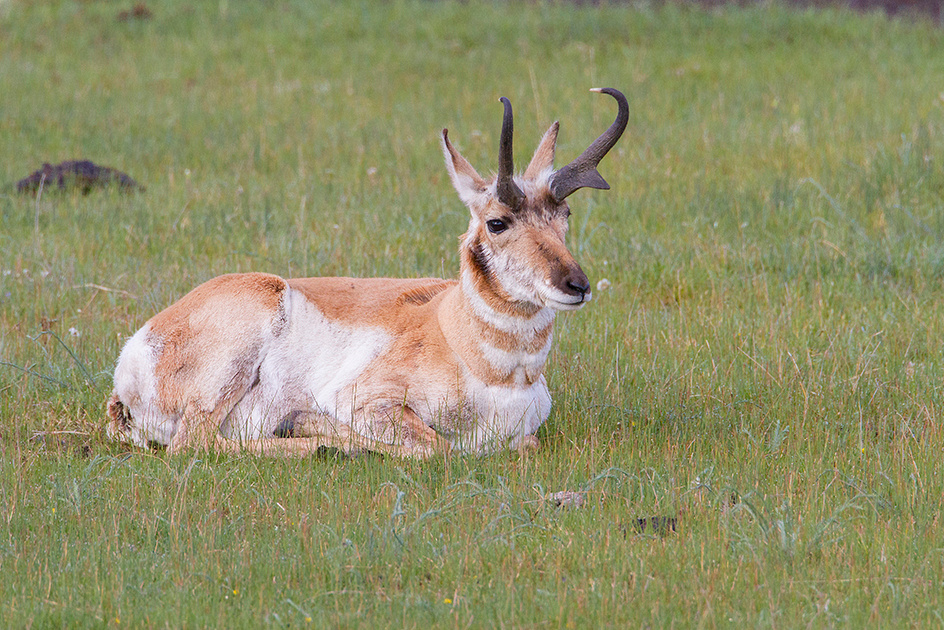
In addition to the many herds of wildlife we also observed large aggregations of human "wolf watchers" at Slough Creek and Lamar Valley. On several days, over 100 watchers with spotting scopes, cameras, or binoculars were present at Slough Creek where a very distant wolf den with pups was visible. An interesting way to spend your day in the park.
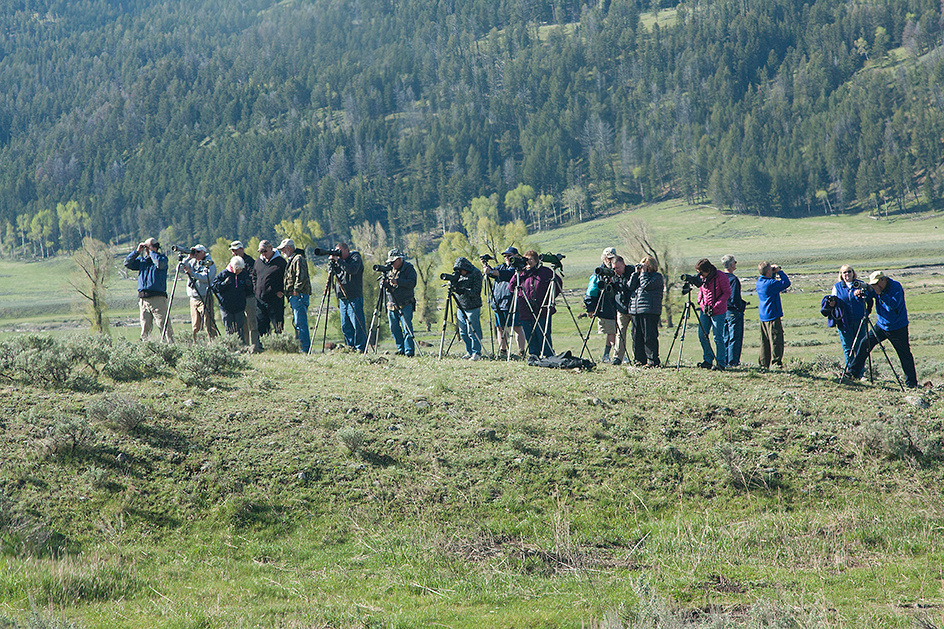 We attempted to locate pika in the park at several locations where we had observed them on our last visit. No luck, but we did see any number of yellow-bellied marmot in those same locations.
We attempted to locate pika in the park at several locations where we had observed them on our last visit. No luck, but we did see any number of yellow-bellied marmot in those same locations.
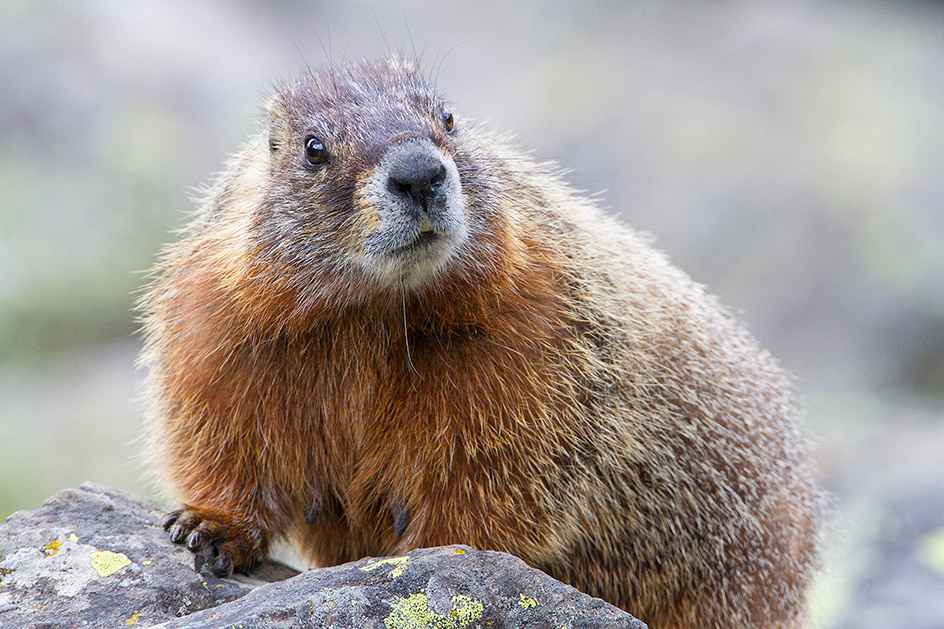 One afternoon we decided to take a drive out to the southeastern entrance over Sylvan Pass. Near the top of the pass we encountered 6 mature big horned sheep rams. They were on the edge of a cliff along the road and it was only with great difficulty that I could back up far enough to get the majority of a ram's head in the frame while remaining on the top of the cliff ledge. A very lucky find and a challenging photo opp.
One afternoon we decided to take a drive out to the southeastern entrance over Sylvan Pass. Near the top of the pass we encountered 6 mature big horned sheep rams. They were on the edge of a cliff along the road and it was only with great difficulty that I could back up far enough to get the majority of a ram's head in the frame while remaining on the top of the cliff ledge. A very lucky find and a challenging photo opp.
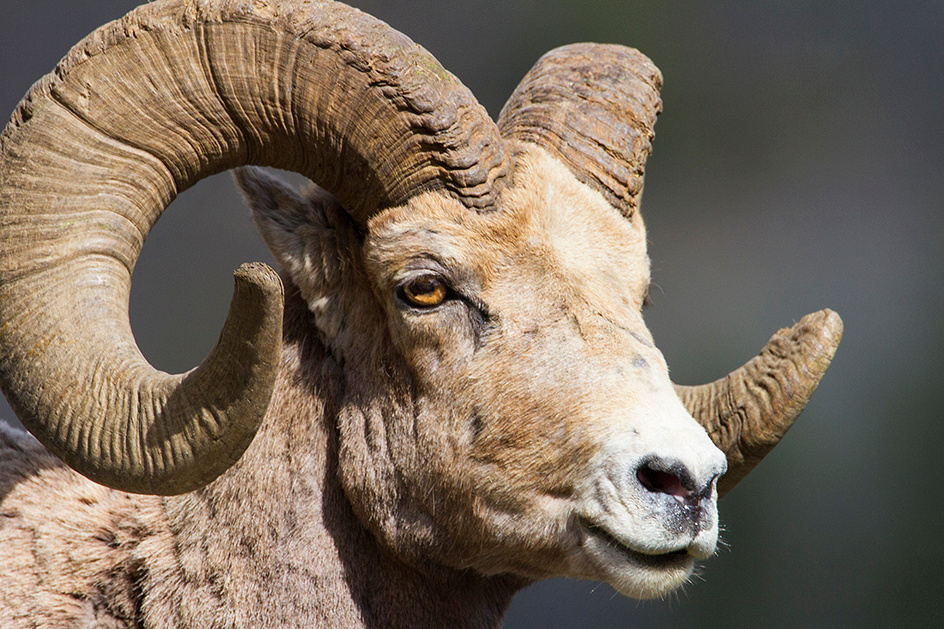
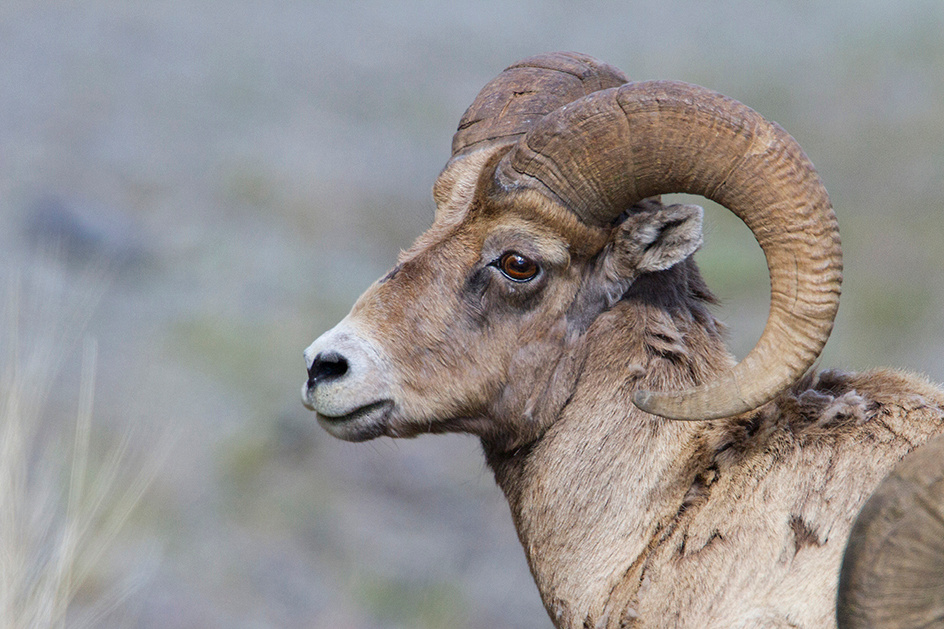 While we had at least some snow every day we were in the park, relatively little snow was present even at higher elevations, like shown in this image captured at Craig Pass.
While we had at least some snow every day we were in the park, relatively little snow was present even at higher elevations, like shown in this image captured at Craig Pass.
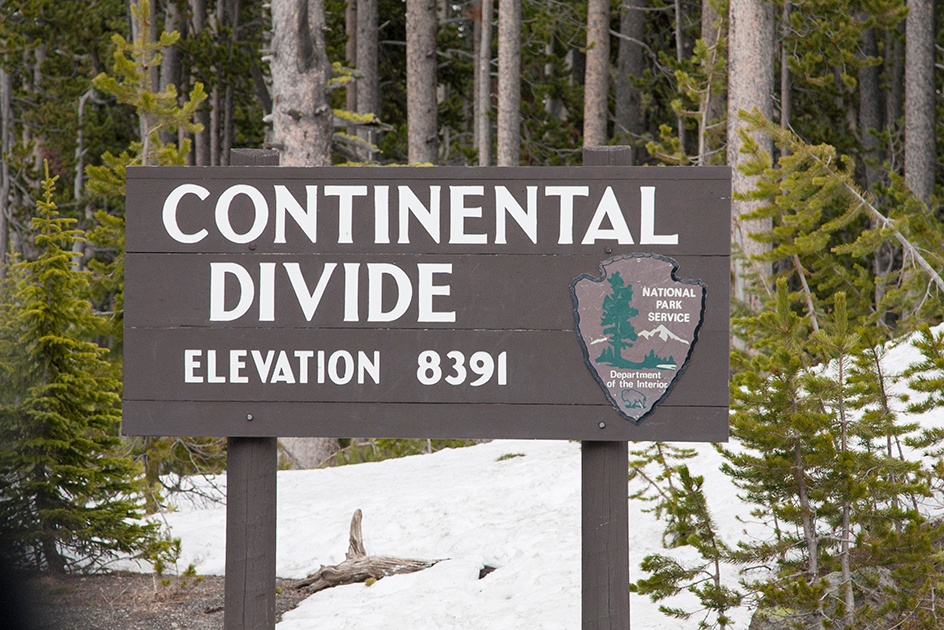 One of the species that all photographers hope to encounter is grizzly bear. At one location in Lamar Valley we could see (via spotting scope) three separate and very distant grizzly. The image below is a very large crop and the best image of a wild grizzly I was able to obtain on this trip.
One of the species that all photographers hope to encounter is grizzly bear. At one location in Lamar Valley we could see (via spotting scope) three separate and very distant grizzly. The image below is a very large crop and the best image of a wild grizzly I was able to obtain on this trip.
 I did have somewhat better photo opportunities on grizzly bears at the Wolf and Grizzly Bear Discovery Center at West Yellowstone. This non-profit is a small, but very well done museum/zoo dedicated to bear and wolf biology. The facility houses "problem bears" and has several small wolf packs in somewhat natural looking enclosures. It was very overcast on the morning we visited this facility so direction of light was not an issue. This location is probably best as an afternoon venue to obtain the best light.
I did have somewhat better photo opportunities on grizzly bears at the Wolf and Grizzly Bear Discovery Center at West Yellowstone. This non-profit is a small, but very well done museum/zoo dedicated to bear and wolf biology. The facility houses "problem bears" and has several small wolf packs in somewhat natural looking enclosures. It was very overcast on the morning we visited this facility so direction of light was not an issue. This location is probably best as an afternoon venue to obtain the best light.
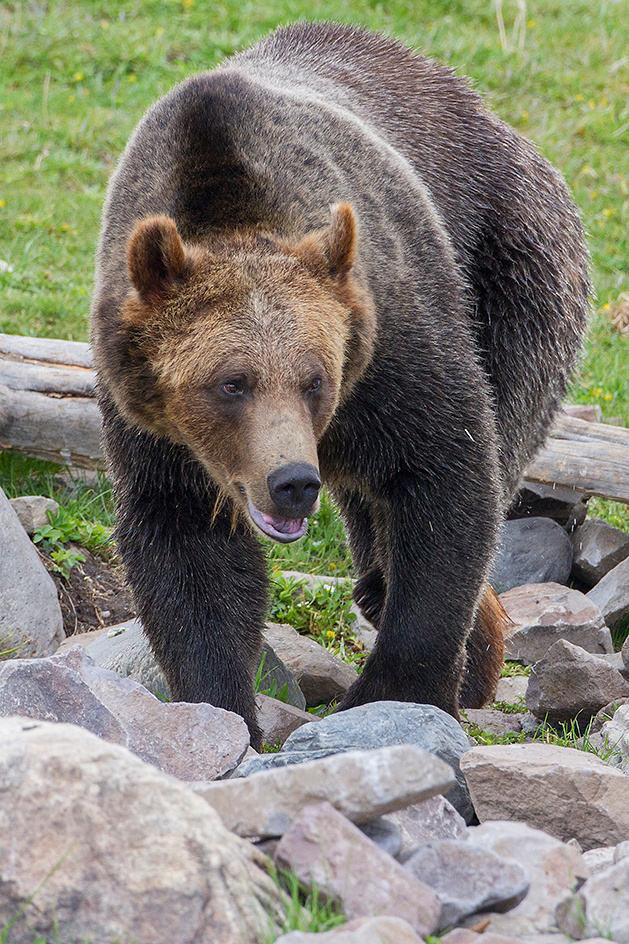
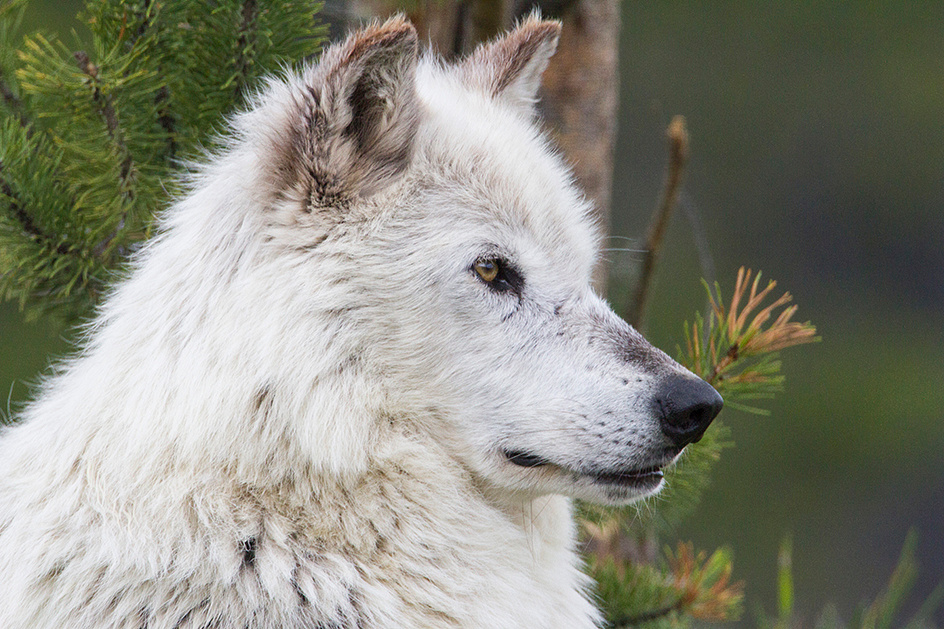 Yellowstone remains my favorite National Park and one of my favorite photo destinations. May is a great time to visit the park and I highly recommend it. My wife Becky served as my driver and spotter and rarely got to see our Gardiner lodging in the daylight. I ended up taking about 2,600 images over the five days. A fantastic trip.
Yellowstone remains my favorite National Park and one of my favorite photo destinations. May is a great time to visit the park and I highly recommend it. My wife Becky served as my driver and spotter and rarely got to see our Gardiner lodging in the daylight. I ended up taking about 2,600 images over the five days. A fantastic trip.
Fall is a great season to visit the high desert of eastern California and Oregon. Juniper and sage habitat can be interesting at any time of the year, but November is my favorite month to visit as it encompasses much of the mule deer rut. Large bucks are much more visible and approachable during the rut and occasionally an exceptional buck can be photographed.

This buck was photographed in the Tulelake NWR, of northern California. He was actively courting a doe was was very reluctant to leave her. I had his attention in this photo, but he rather quickly lost interest in me and returned to his courtship. Rather a busy background in this image.
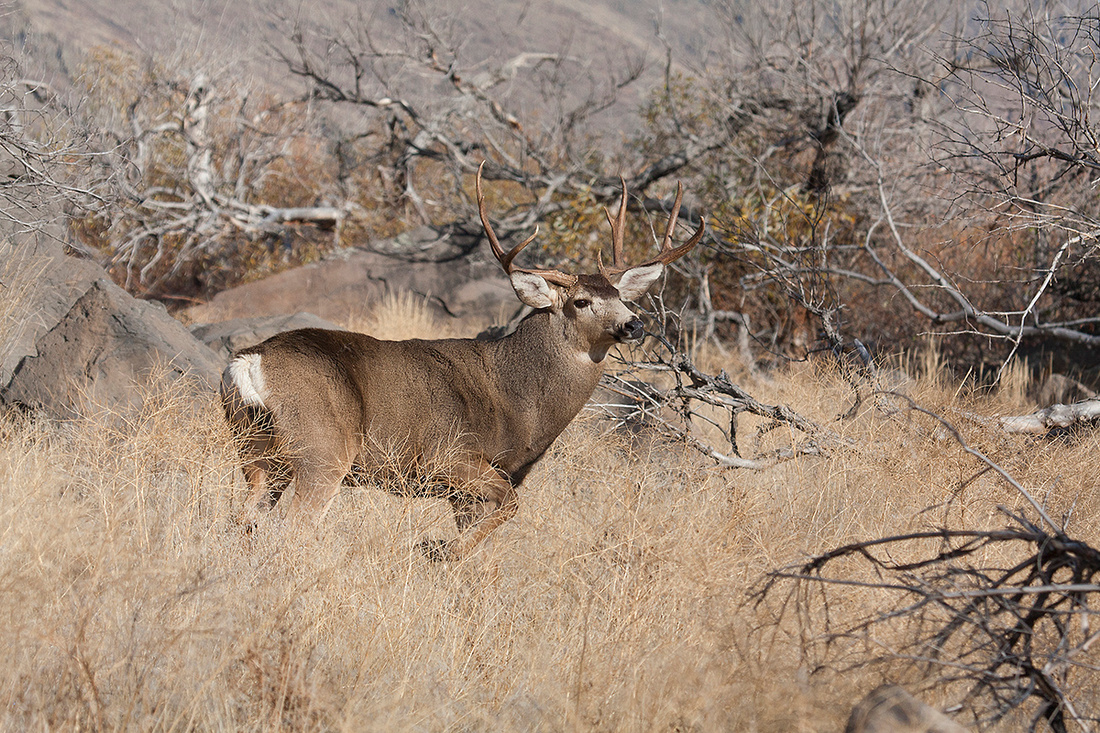 I normally make a trip each November through selected winter ranges in northern California, including Day Bench, Fall River Valley, Big Valley, Devil's Garden, Timber Mountain, Lava Beds, and Tulelake NWR. This year I extended the trip to include the Hart Mountain Antelope Refuge and Malheur NWR. The Antelope Refuge was disappointing, but bucks were abundant at Malheur. I was fortunate to locate and photograph the buck below in rapidly fading daylight.
I normally make a trip each November through selected winter ranges in northern California, including Day Bench, Fall River Valley, Big Valley, Devil's Garden, Timber Mountain, Lava Beds, and Tulelake NWR. This year I extended the trip to include the Hart Mountain Antelope Refuge and Malheur NWR. The Antelope Refuge was disappointing, but bucks were abundant at Malheur. I was fortunate to locate and photograph the buck below in rapidly fading daylight.
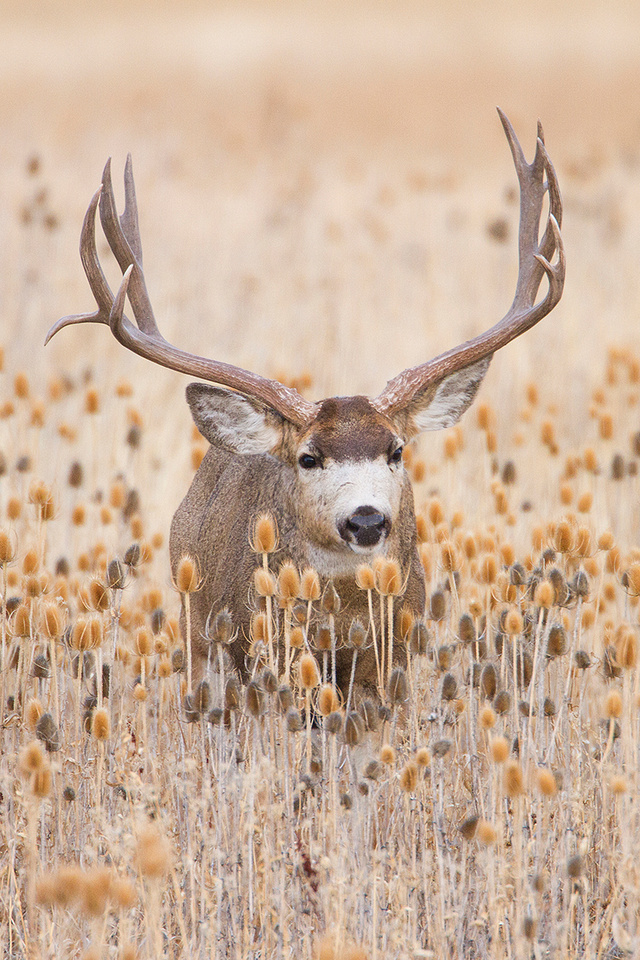
Truly an exceptional animal. Like the previous buck, this one was not about to leave his prospective mate, and allowed me a few images. I had to shoot wide open at relatively slow shutter speeds. He laid down in the teasel and disappeared about the time it was to dark to shoot. His antlers show nicely against the clean complimentary background.
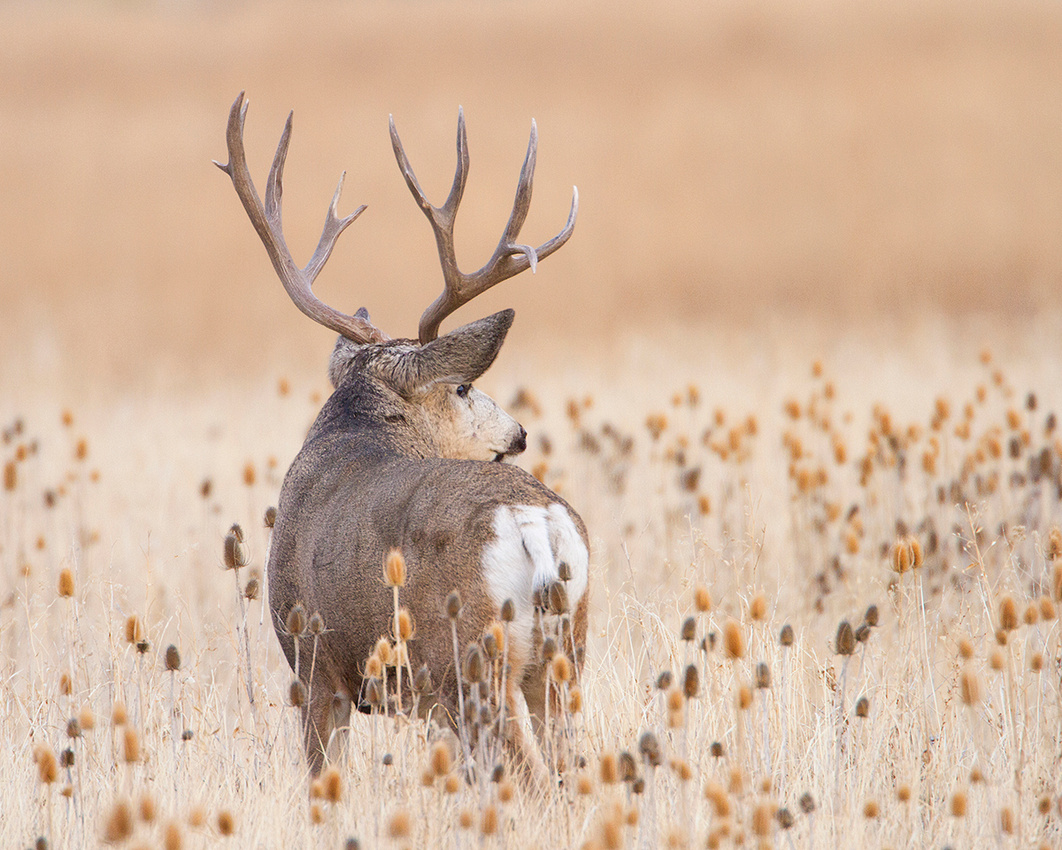


Shortly after losing the light we pulled the truck over and enjoyed a high desert sunset (cranes added in Photoshop). Pretty nice way to spend the day.
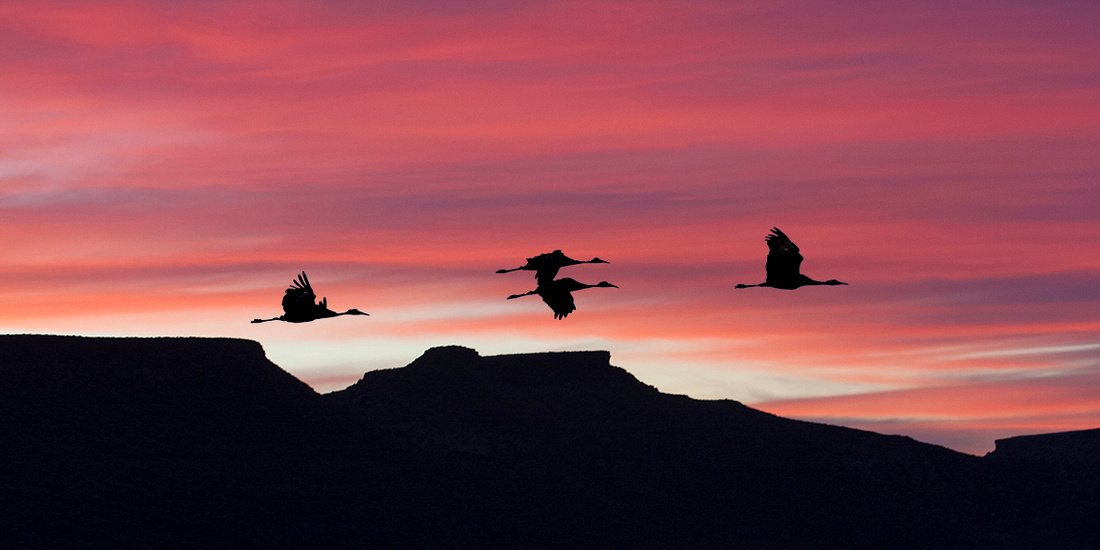
I normally try and visit Nuevo Vallarta on the west coast of Mexico annually. These are family vacations where I try and squeeze in a little time with the camera. We try and visit November through January to avoid the worst of the heat and humidity. This most recent trip was scheduled in late July early August to accommodate everyone's work schedule. I spent a few hours each morning photographing wildlife on the resort grounds, the beach, or the adjacent golf course. At this time of year the grounds yield fair numbers of streaked-backed oriole, tropical kingbird, great kiskadee, green iguanas, and mourning dove
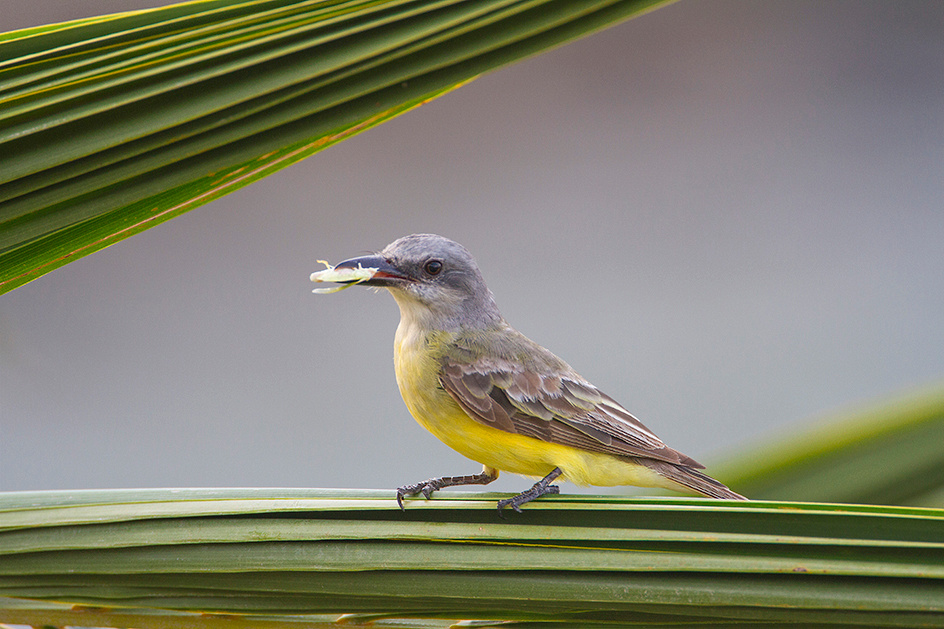
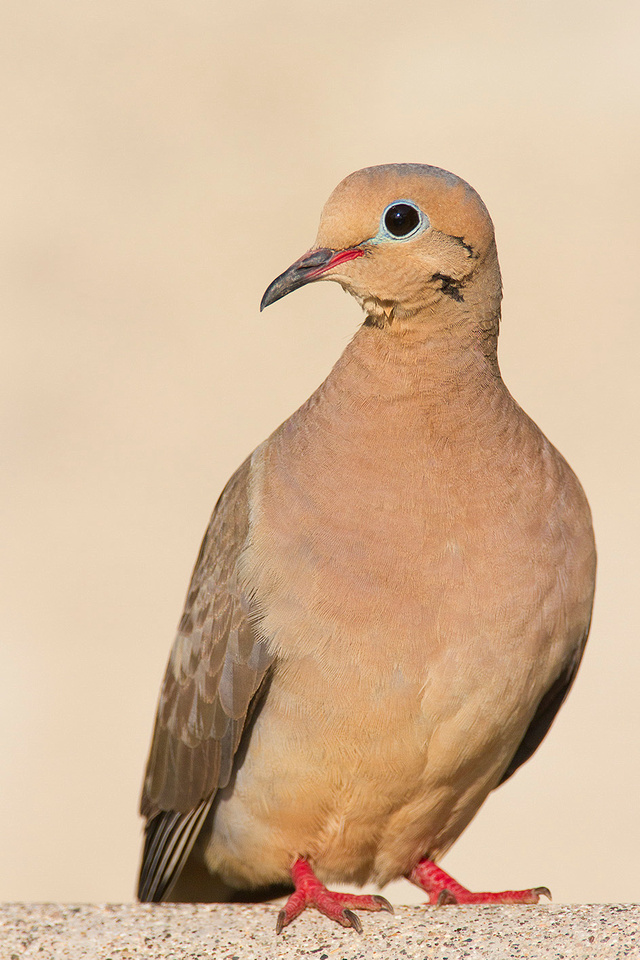
The resort is located on the harbor and the rock lined channel protecting the harbor entrance is always good for green heron, snowy egret, tricolored heron, and brown pelican. I spent some time practicing flight and landing shots on the brown pelicans as they are tame and fly low and slow.

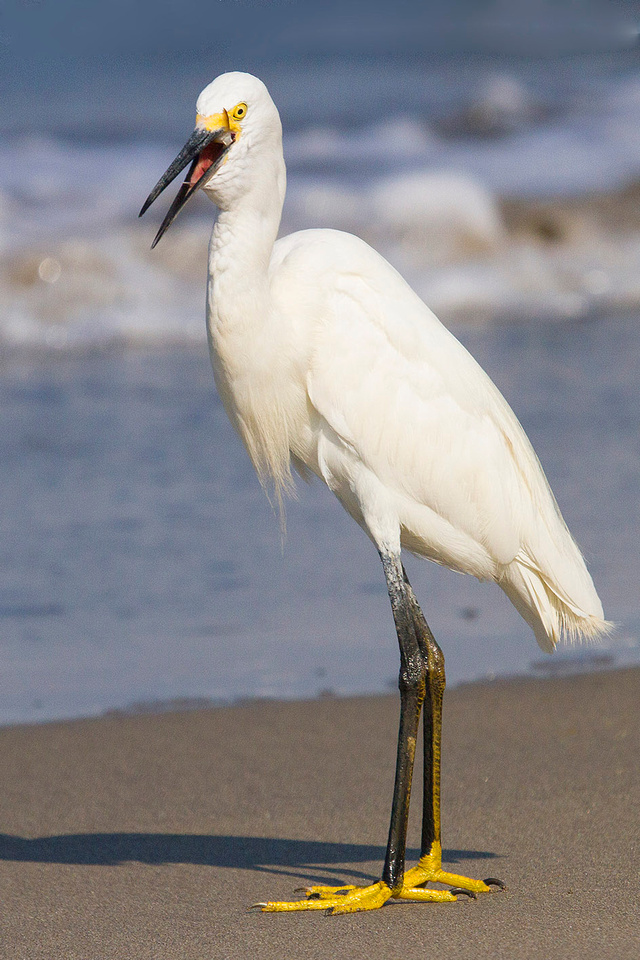
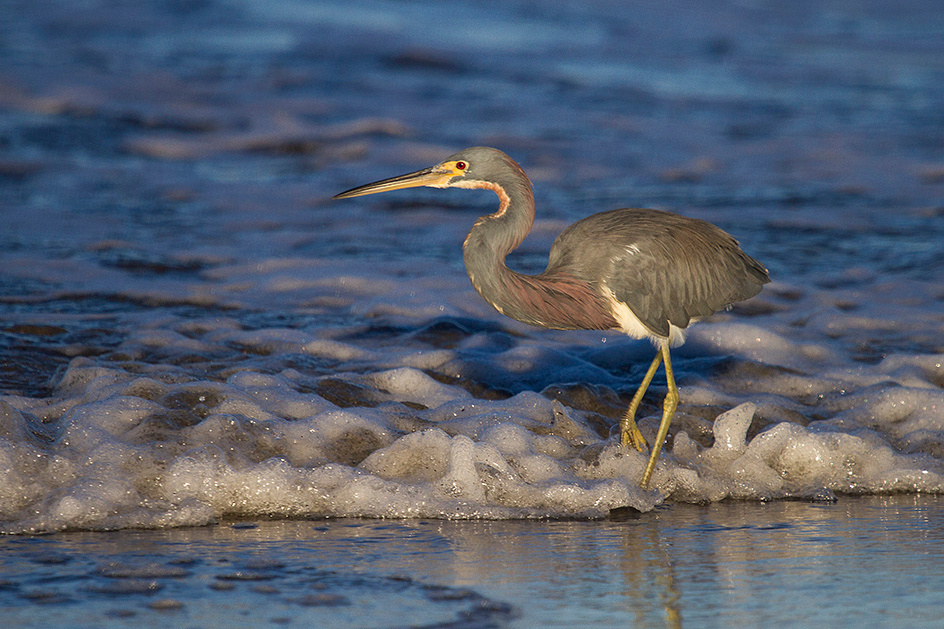
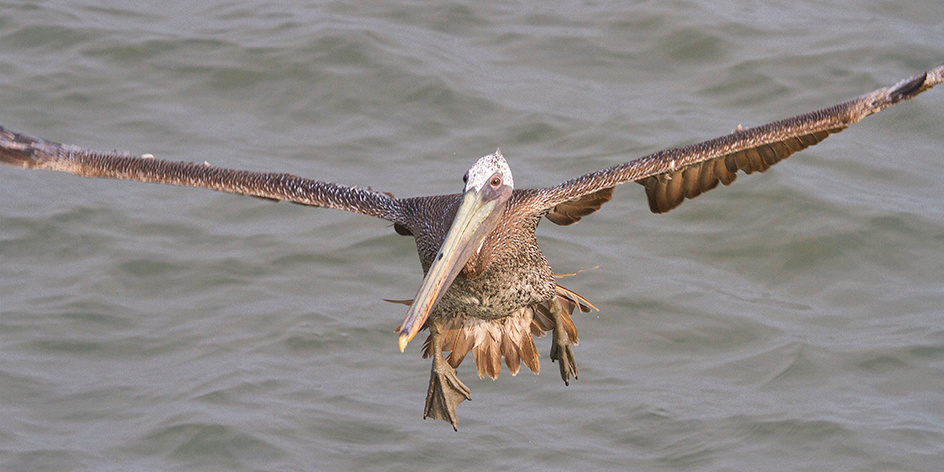
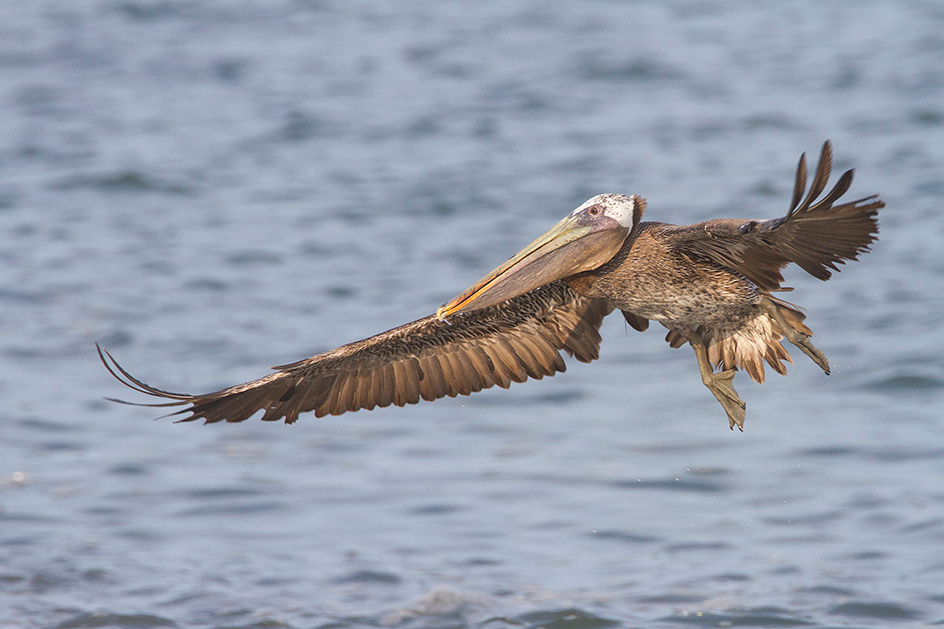
Later in the year the pelicans adopt their breeding plumage and become somewhat more photogenic as the image below captured in November shows.
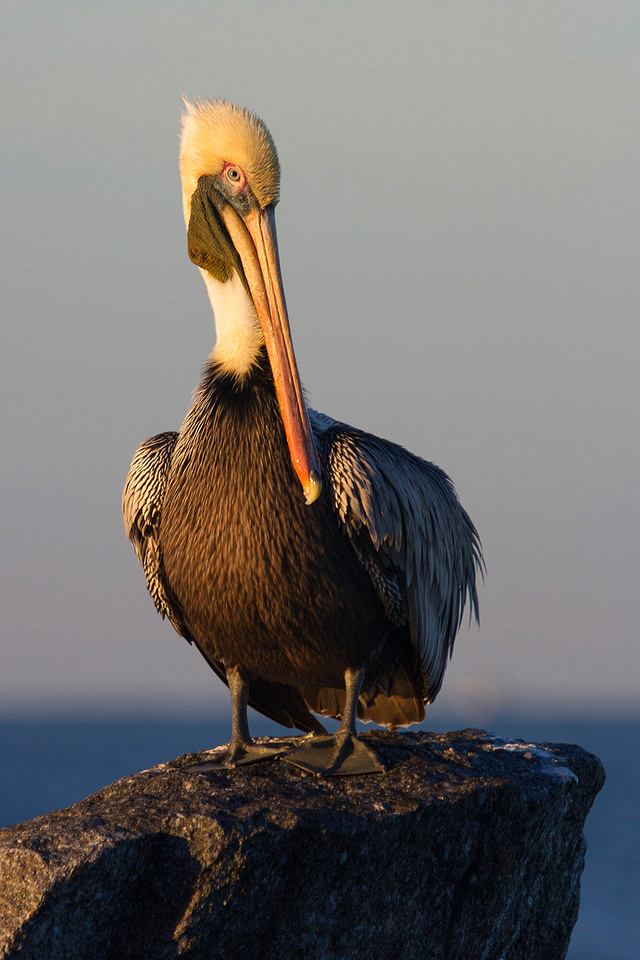
I see relatively few species on the beach as it receives heavy recreational use from daylight to dark. I occasionally see neotropical cormorants in the surf zone and a few species of shorebirds on the beach, including willit and whimbrel.
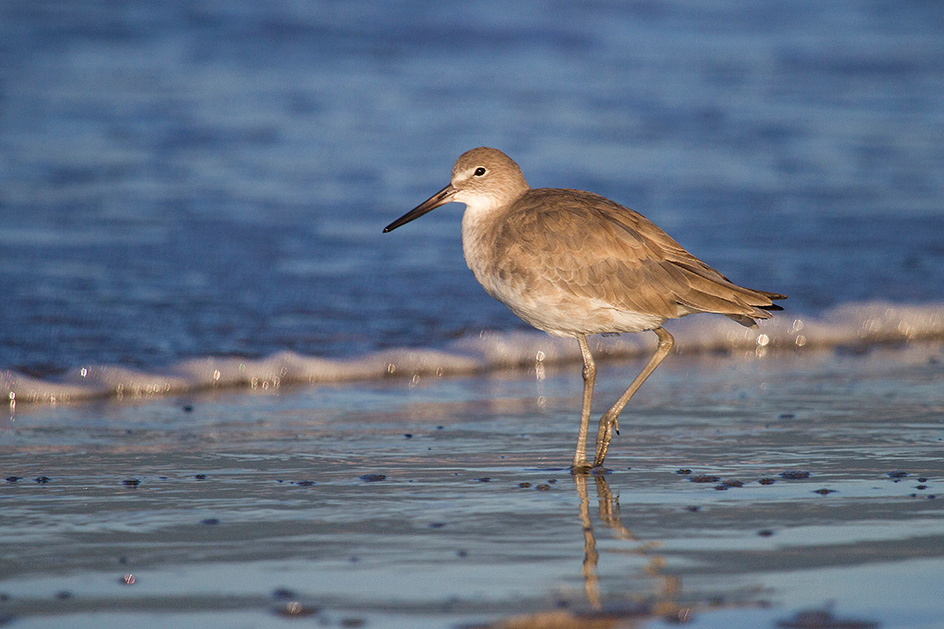
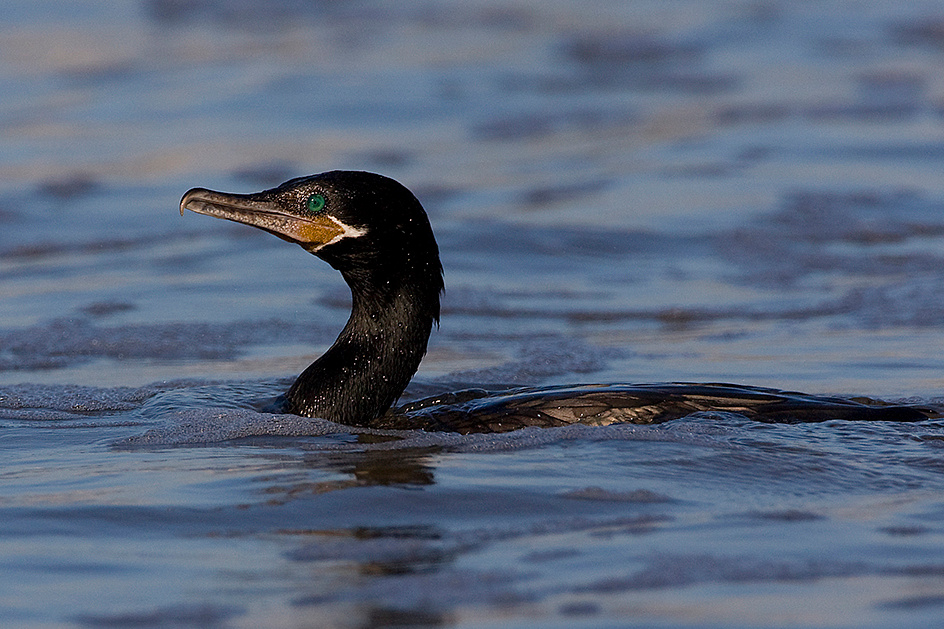
One of the more interesting species encountered off the beach are magnificent frigatebirds. They occasionally land on the structures on the harbor entrance and can be photographed at close range. Pictured below is an adult frigatebird.
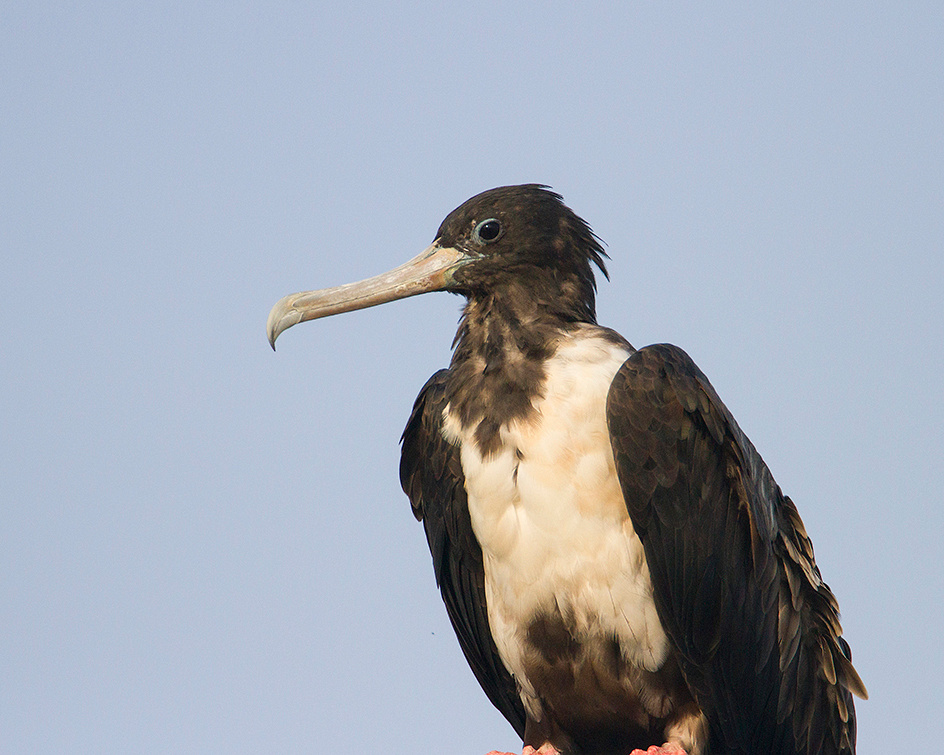
The portrait below is a juvenile bird.
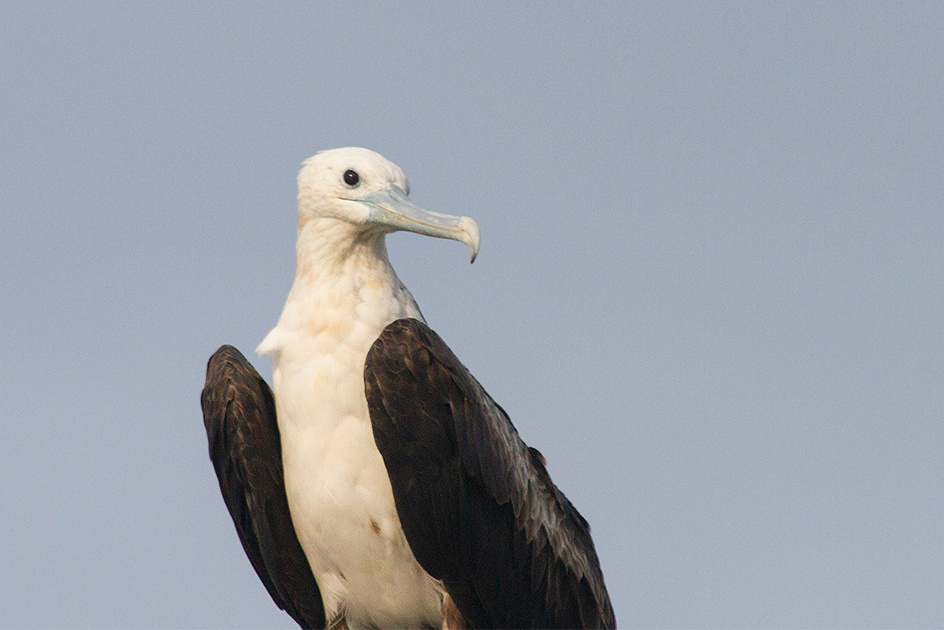
Frigate birds prey primarily on fish which they pluck from the ocean on the wing. They do not land on the water.
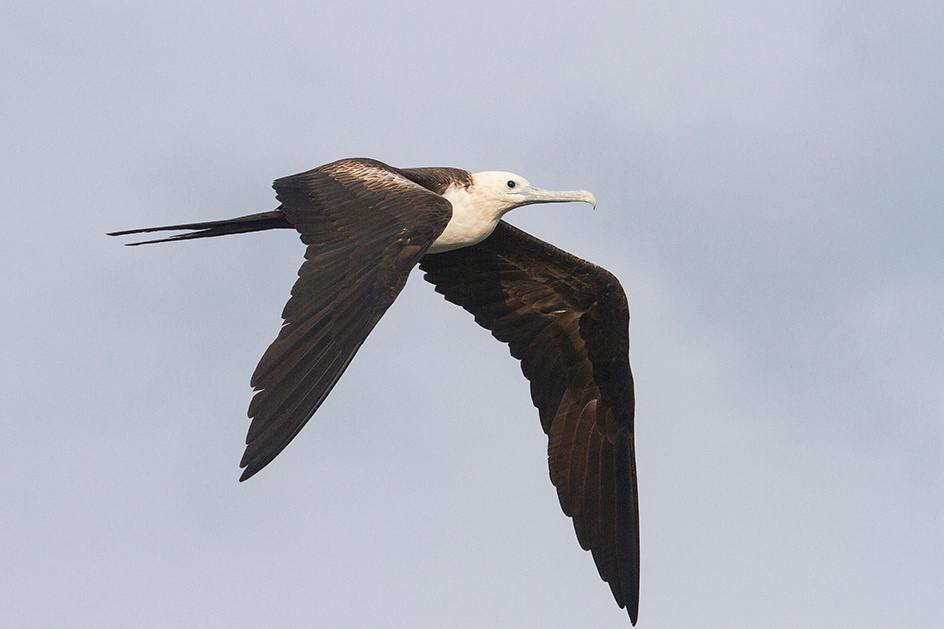 This species practices kleptoparisitism, where they steal fish from gulls, terns and other species. The images below show frigatebirds in the process of making off with stolen fish.
This species practices kleptoparisitism, where they steal fish from gulls, terns and other species. The images below show frigatebirds in the process of making off with stolen fish.
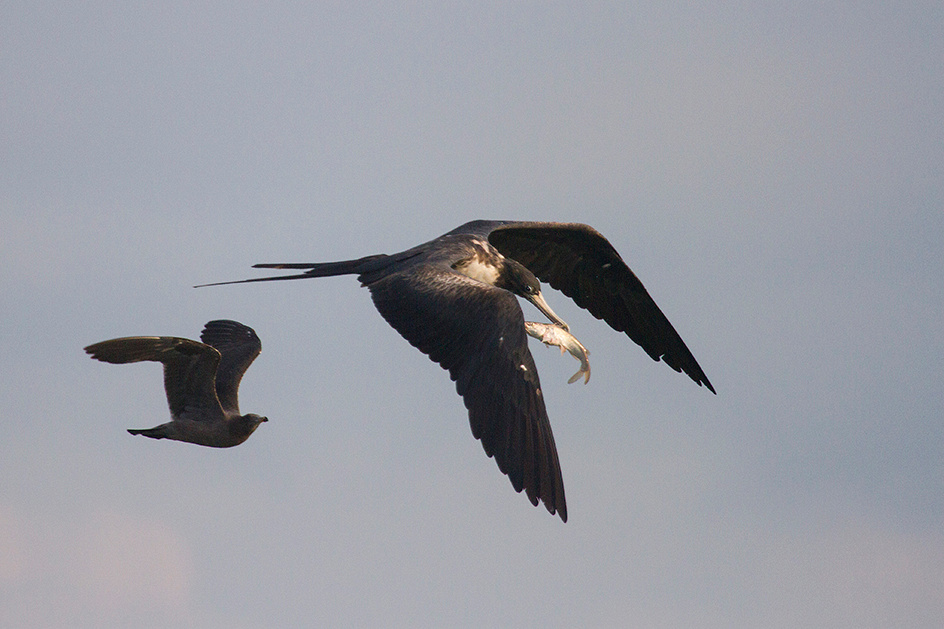

We also participated on a half day birding tour lead by Alejandro Martinez into the mountains south and east of Puerto Vallarta. We have birded with Alejandro several times in the past and he is an excellent birder and guide. Check out his webpage at birdinginmexico.com
With Alejando's help, I was able to capture decent images of a number of species including green kingfisher, boat-billed flycatcher, groove-billed ani, ferruginous pygmy owl, military macaw, and double toothed kite. The double-toothed kite was special as my photo was later used to document the 4th recorded occurrence in Jalisco and the only one in oak/pine habitat.
The macaw images are also interesting as the birds appeared to be nesting. Normally nesting does not begin until October

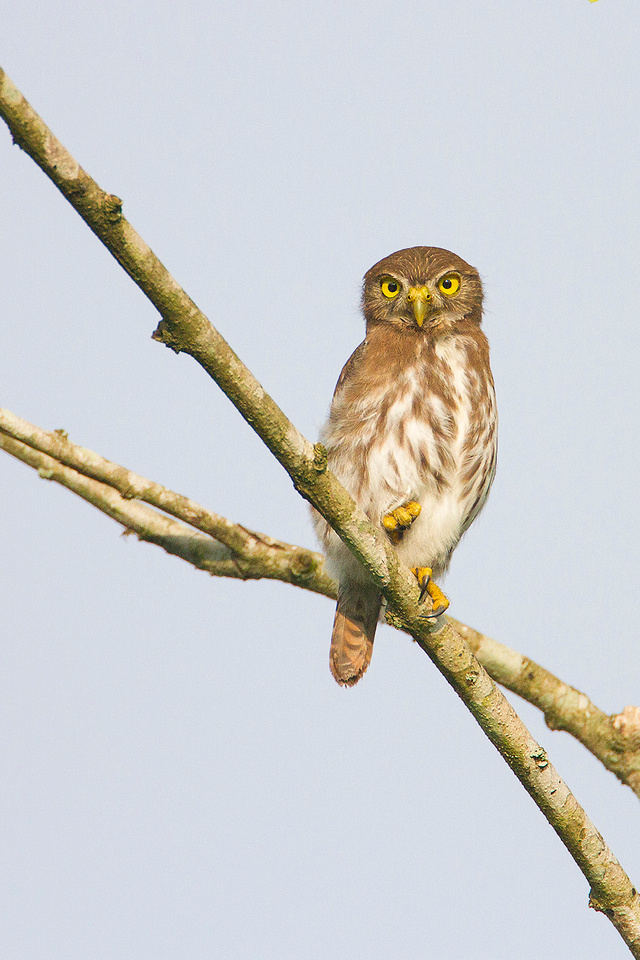
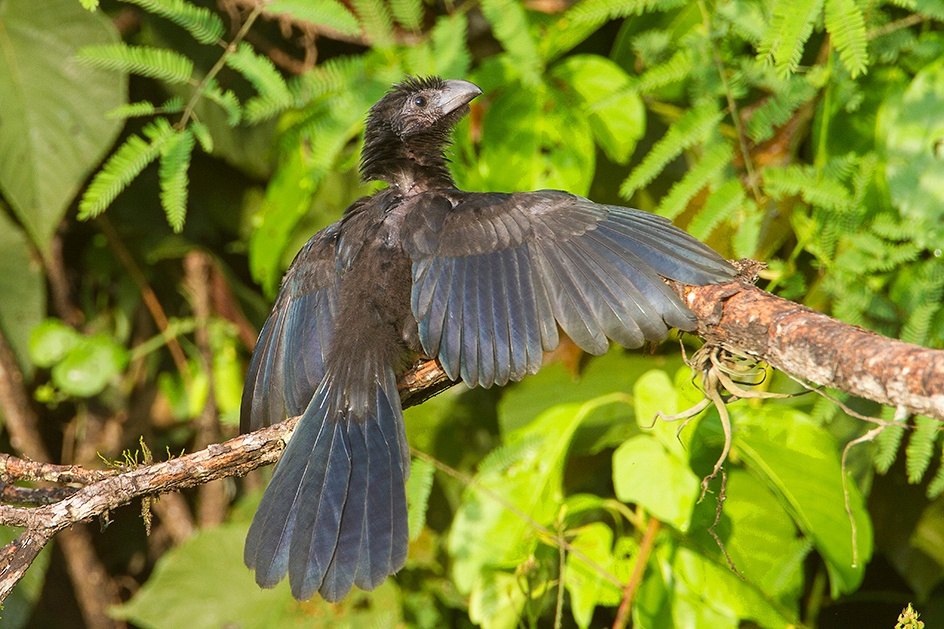

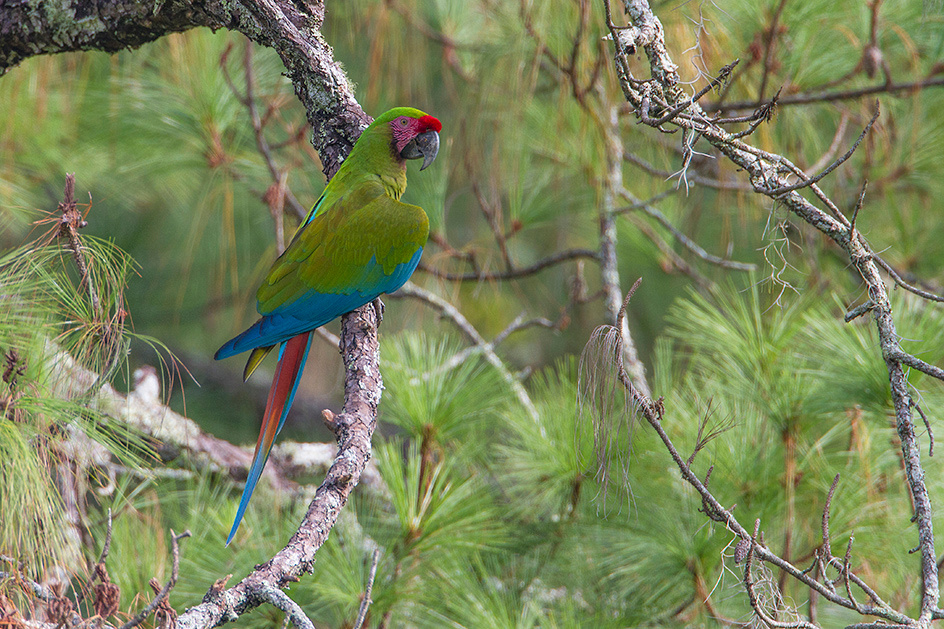
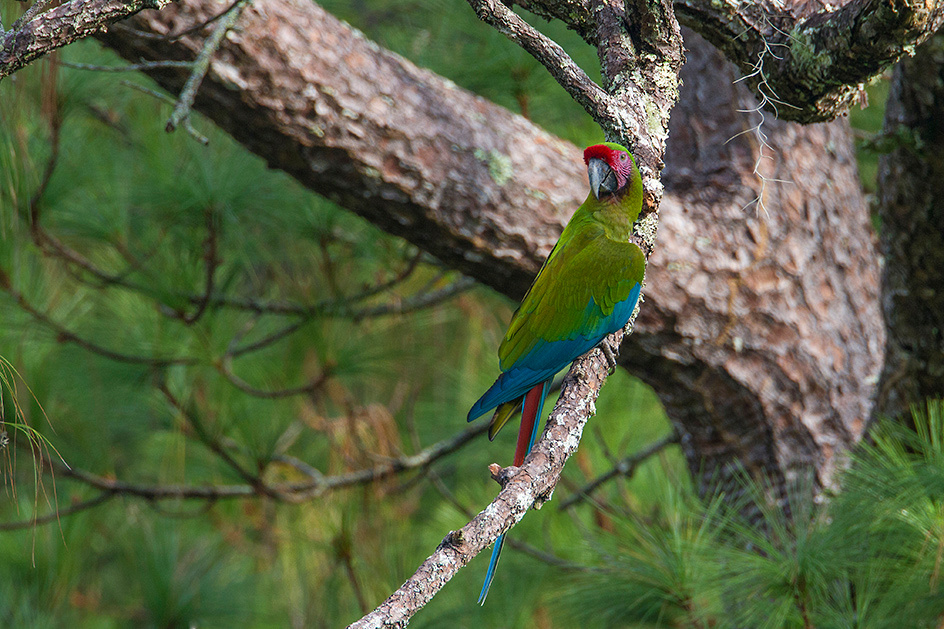
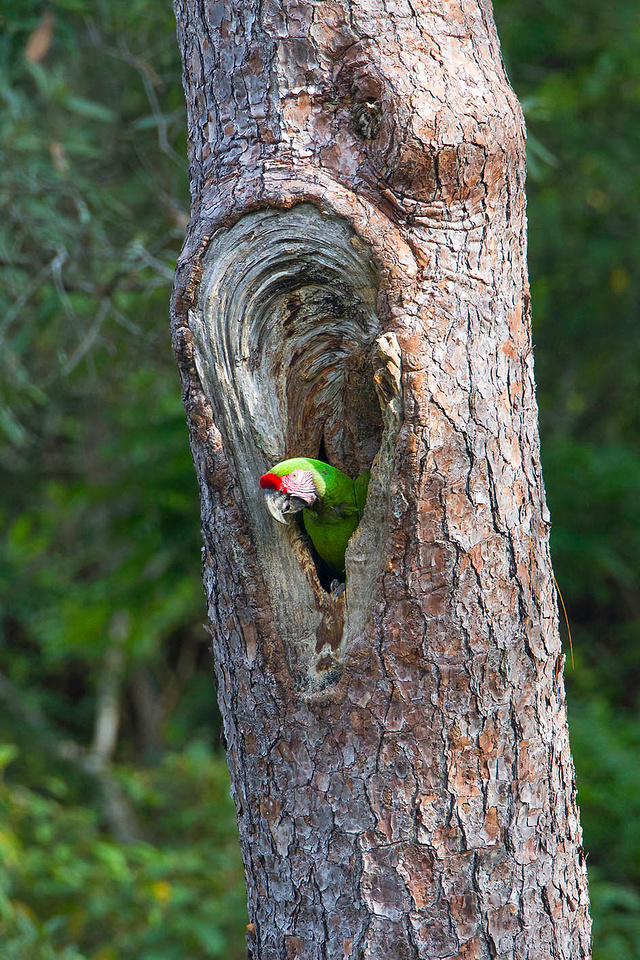
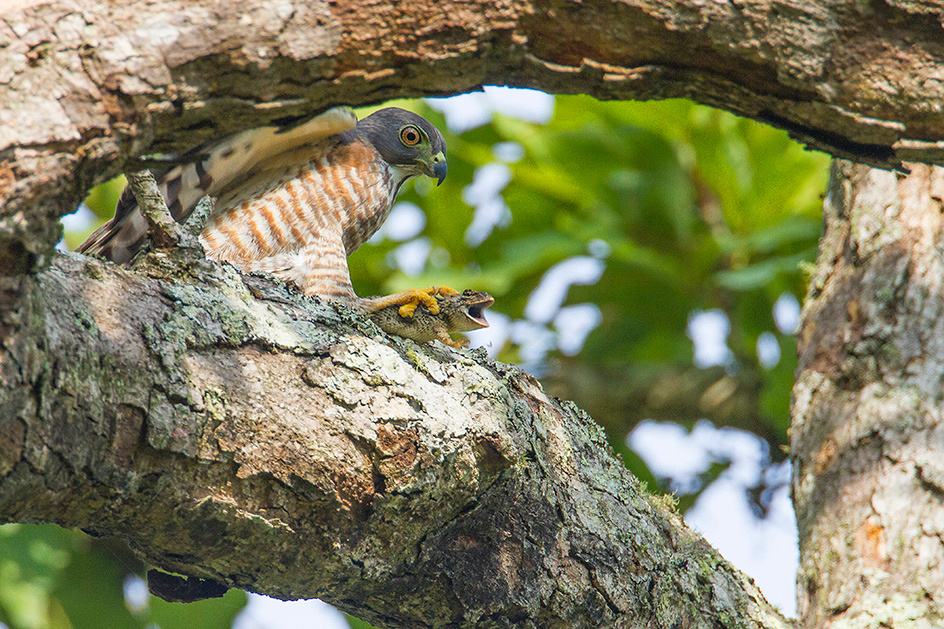

It was very hot and humid while we were vacationing. We had some spectacular thunder and lightning events. I managed to capture images of a few of the lightening strikes. The image below is a composite of two of the better images I captured.
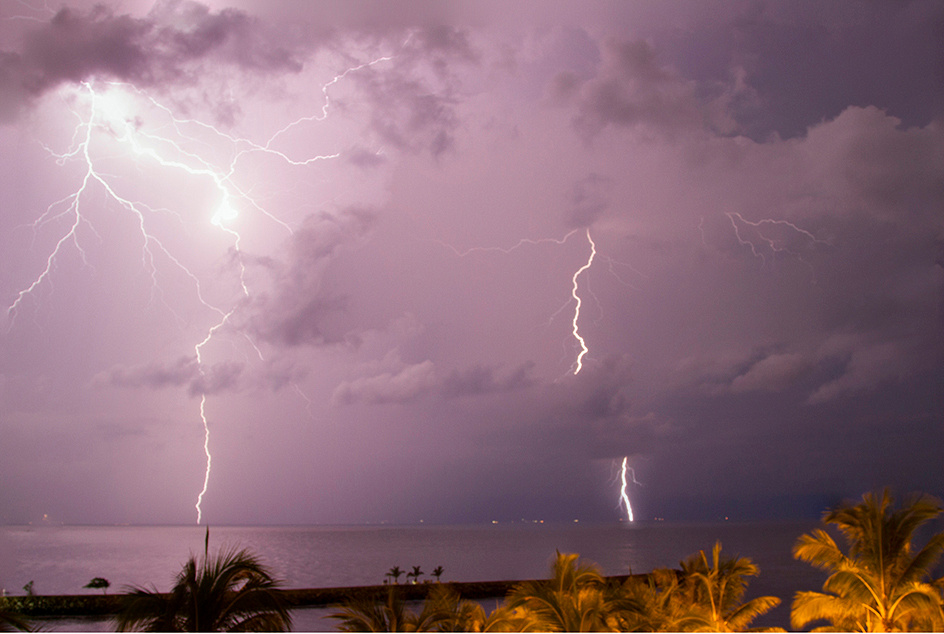
I infrequently observe coyotes actively hunting rodents in agricultural fields or grasslands. It seems these observations almost always occur under conditions or distances where photography is difficult or impossible. Yesterday I happened upon a coyote hunting King's Creek meadow in Lassen Park at midday.

He quartered the meadow searching for rodents and gradually worked his way ever closer to me. Whenever he detected prey he would freeze and concentrate. He appeared to be locating prey at least partially by hearing as he would cock his head from side to side. He would hold a pose not unlike a bird dog on point.

When he had the prey located, he would pounce.
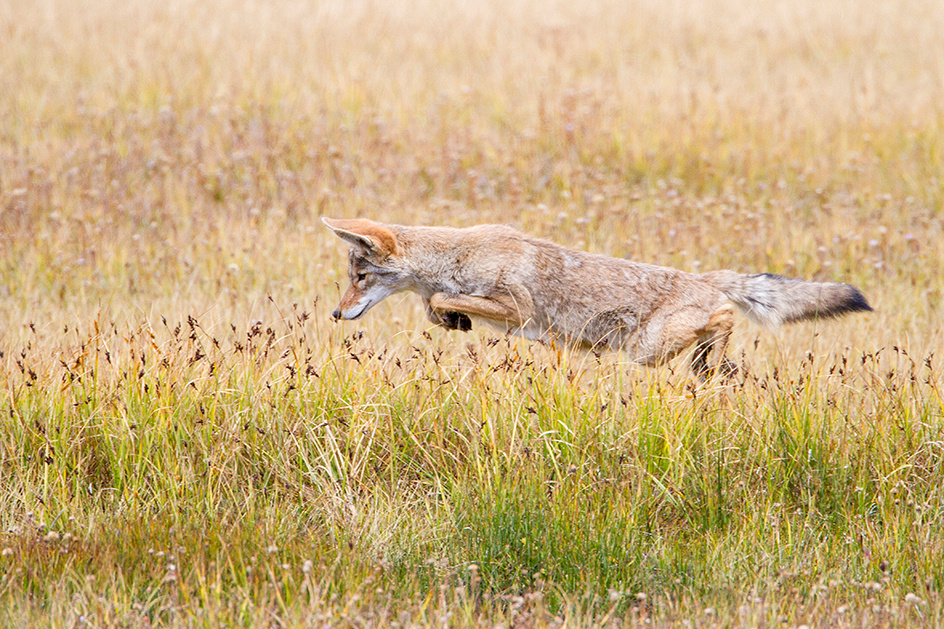
He made several attempts without success, getting some nice air on a couple of attempts.
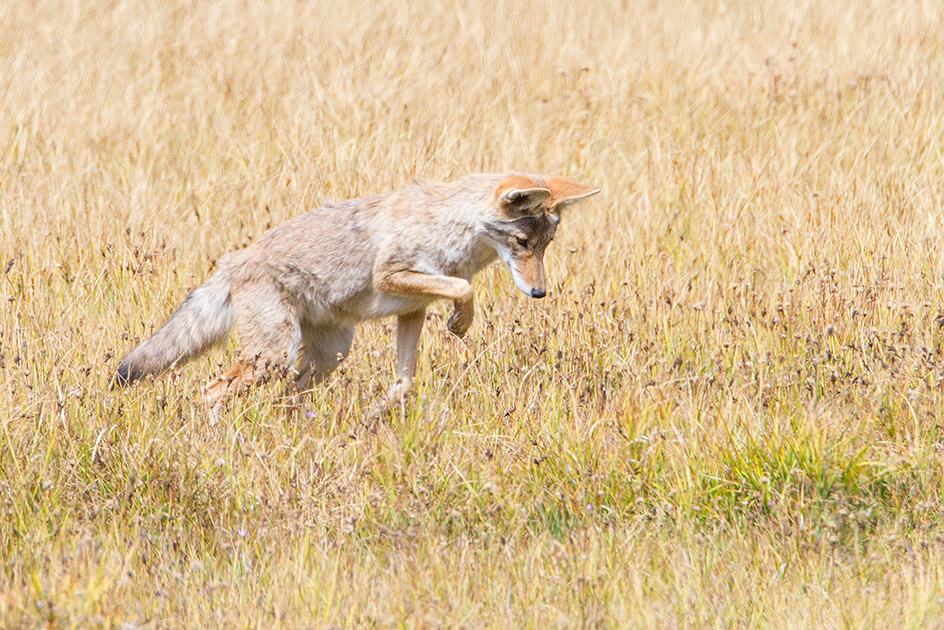
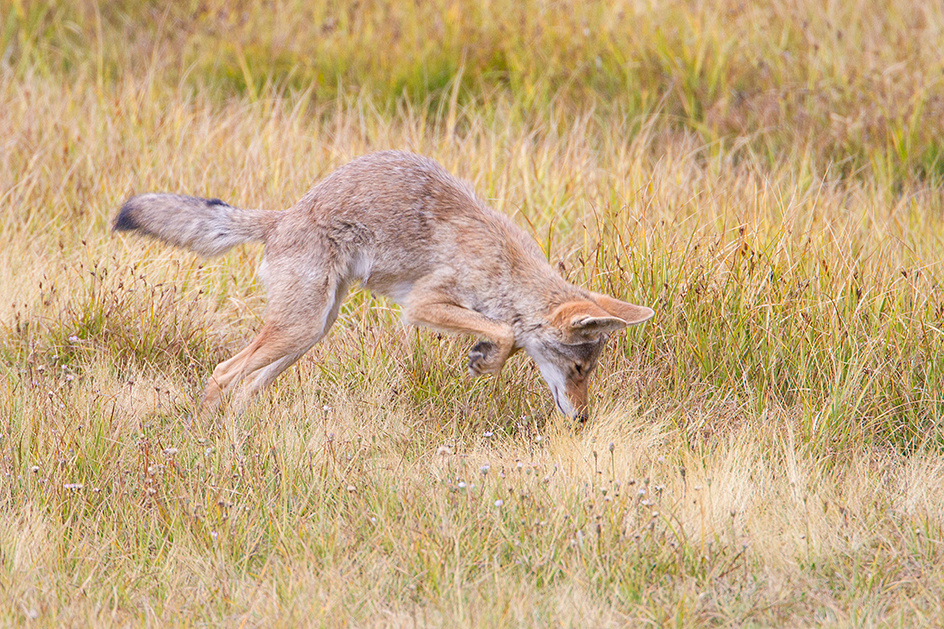
Finally, he pounced and pinned the prey to the ground using his forelegs.
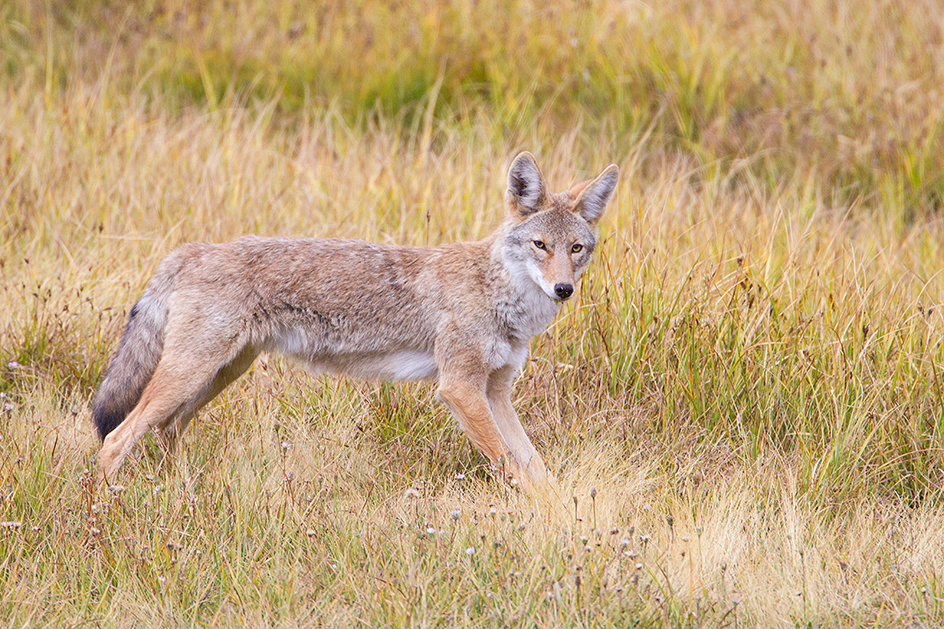
He transferred the prey from his paws to his mouth and rapidly consumed the vole. I have observed other coyotes toss the prey in the air and catch it before swallowing. This guy was taking no chances on losing lunch.
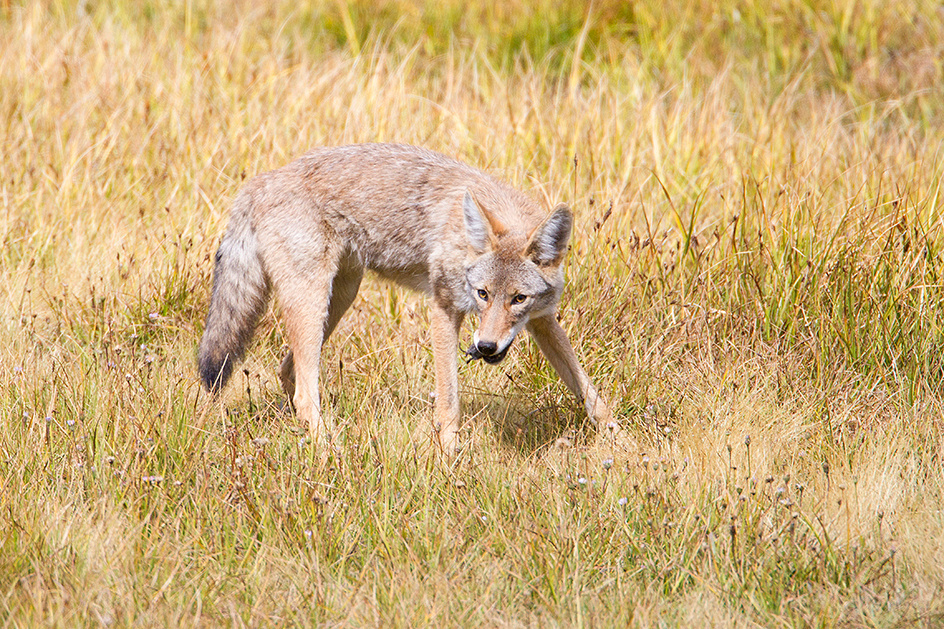
A very pleasant midday photo opportunity.
